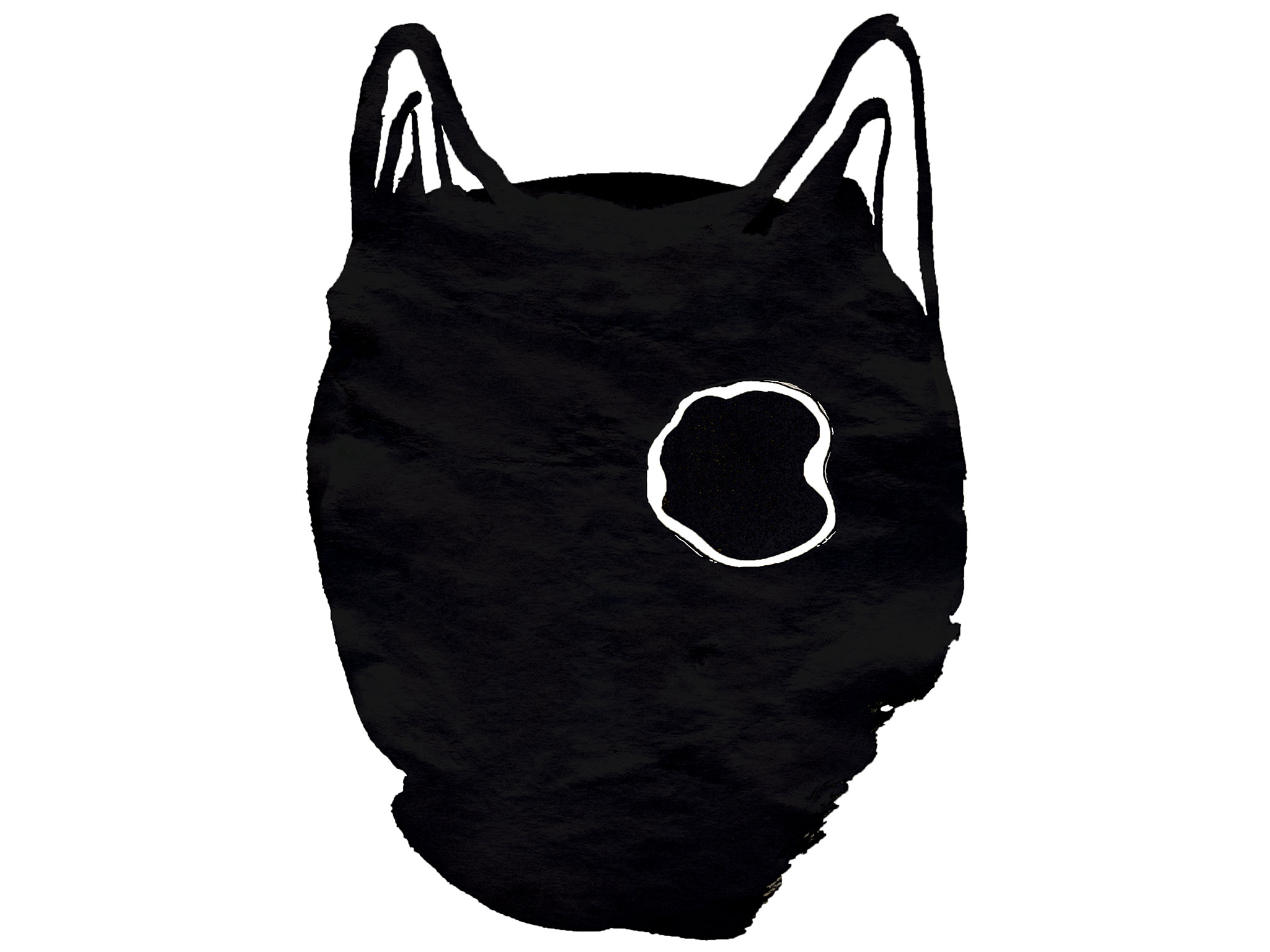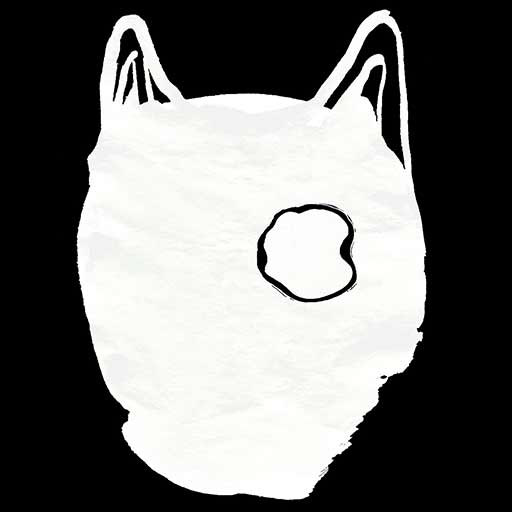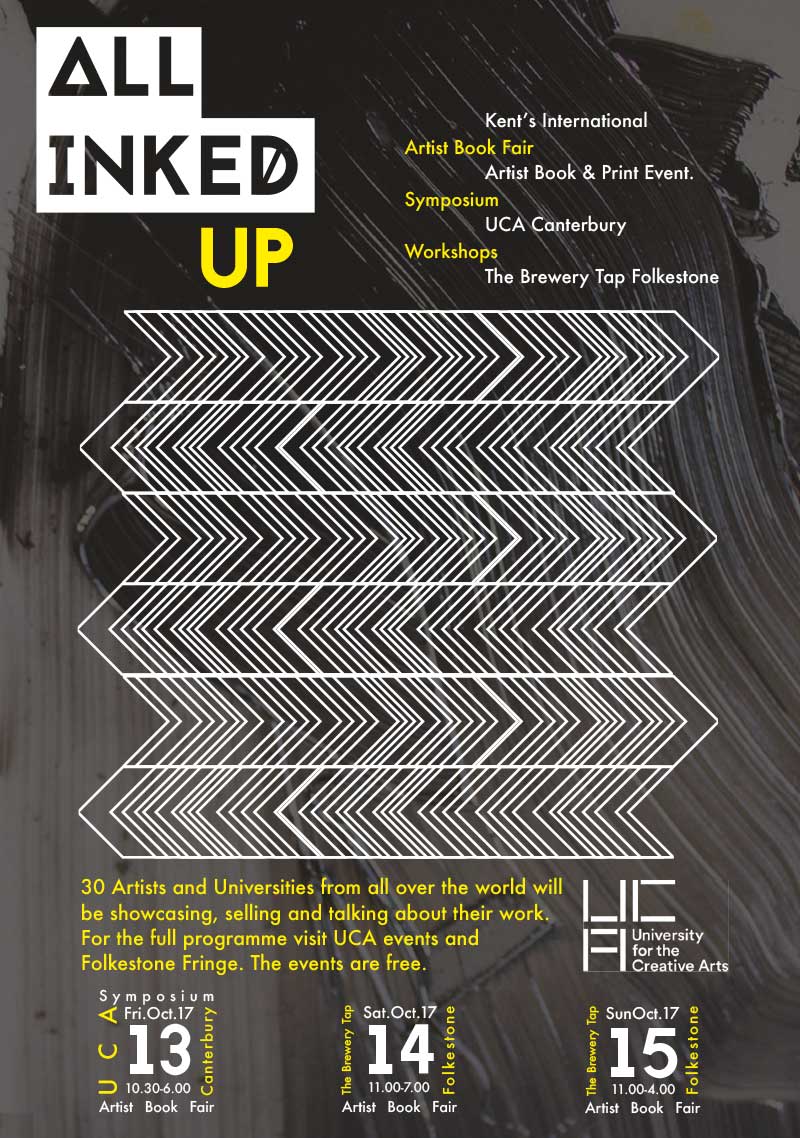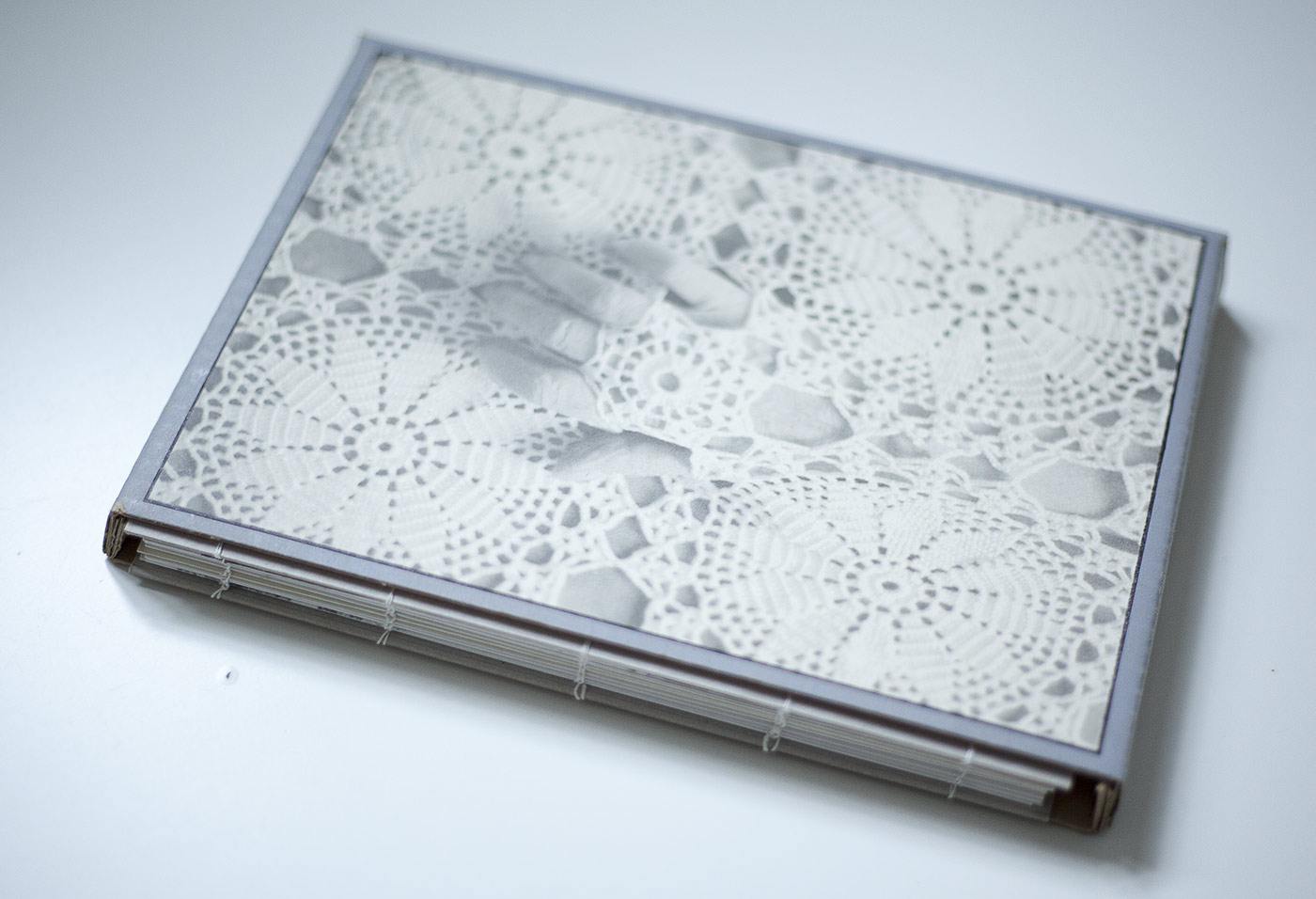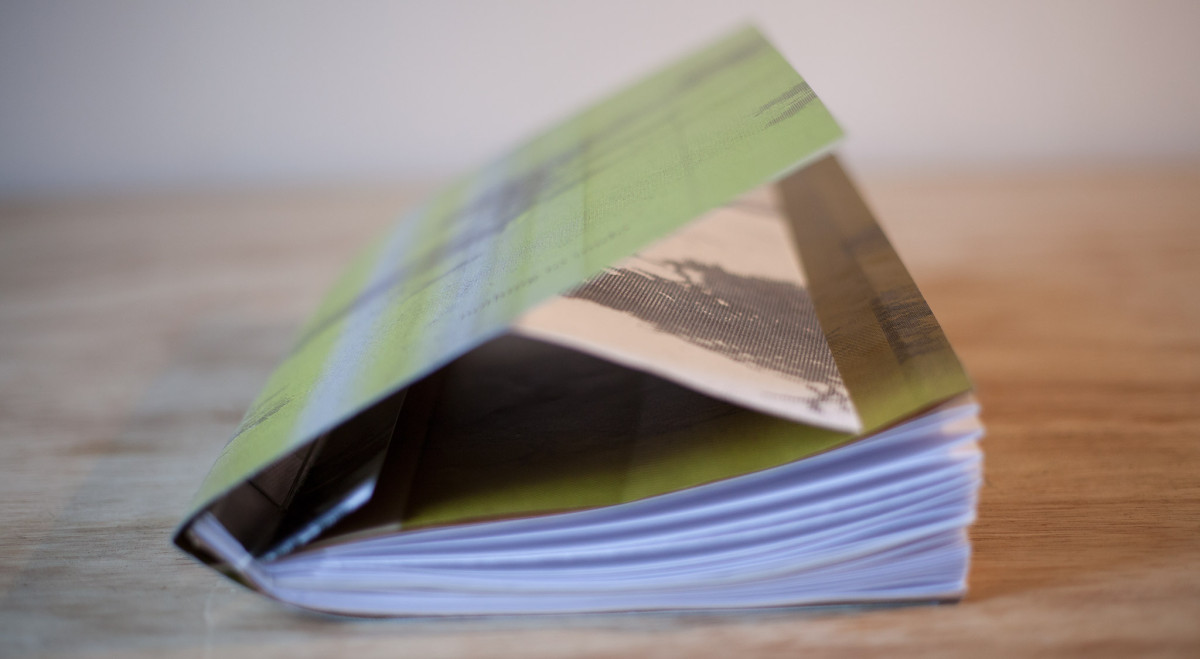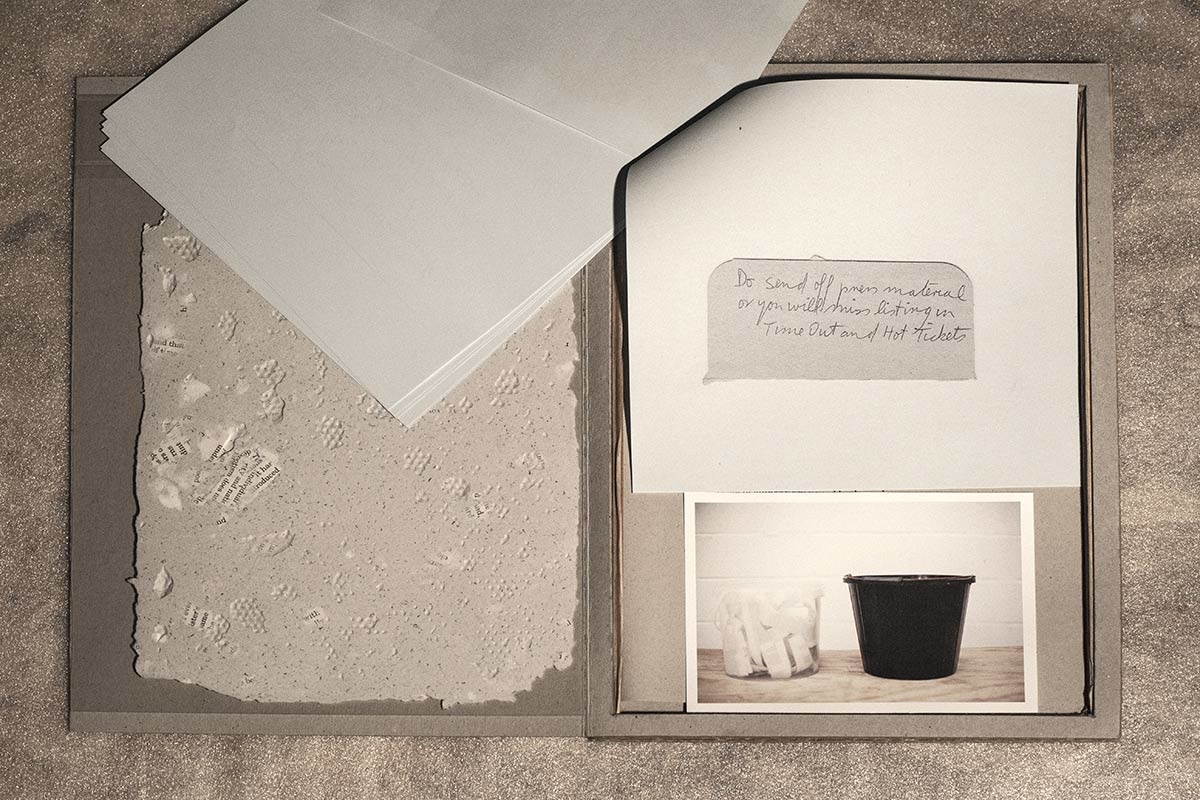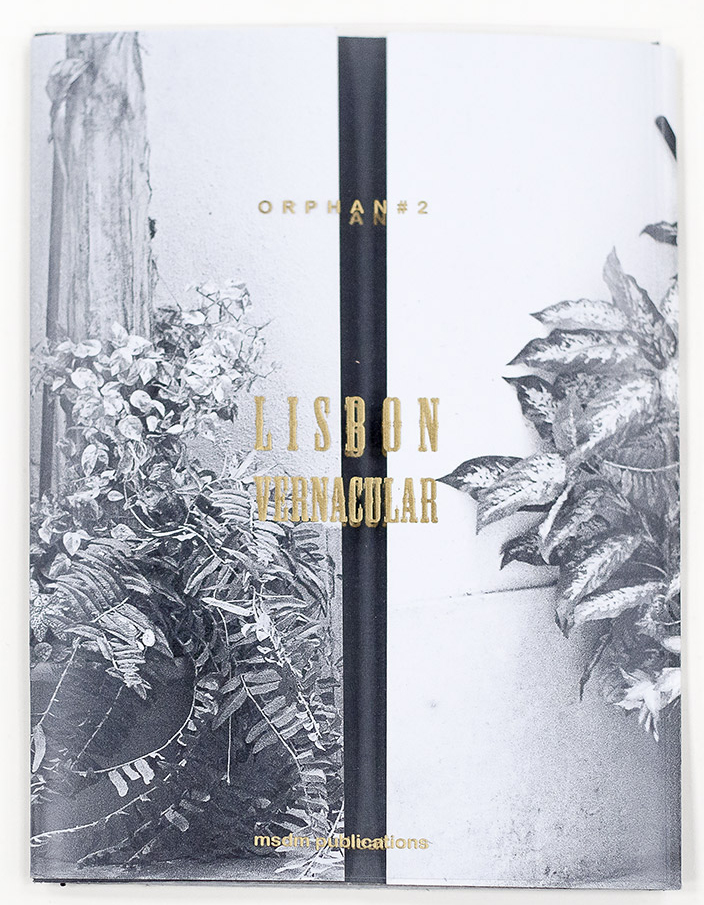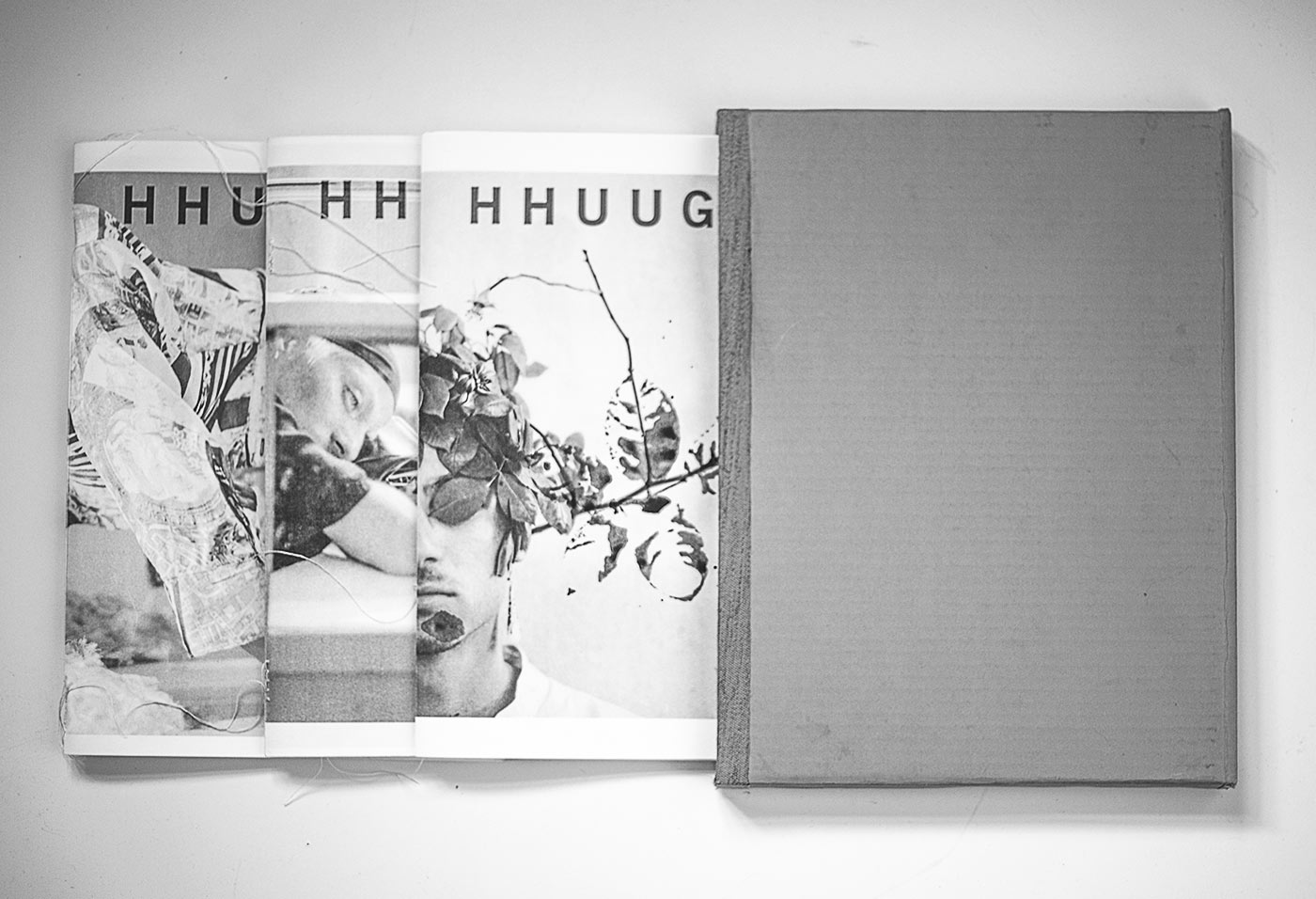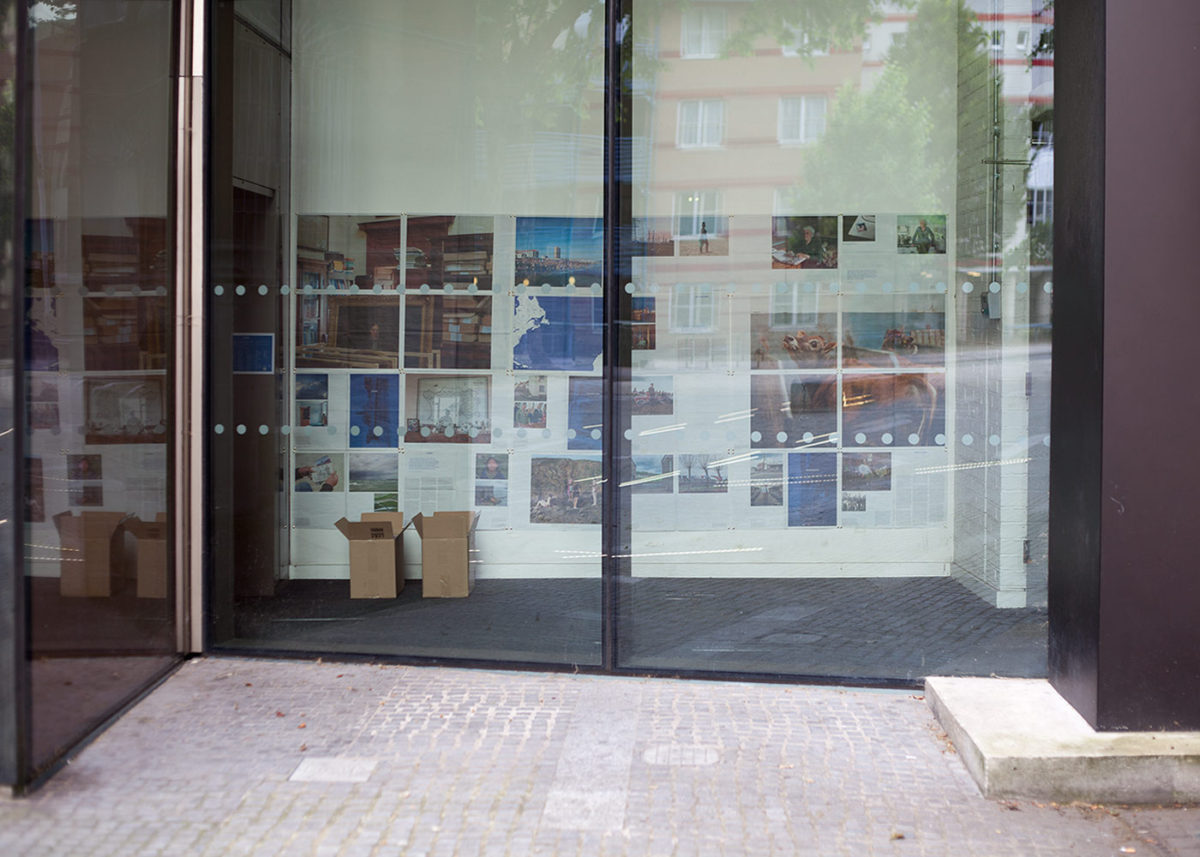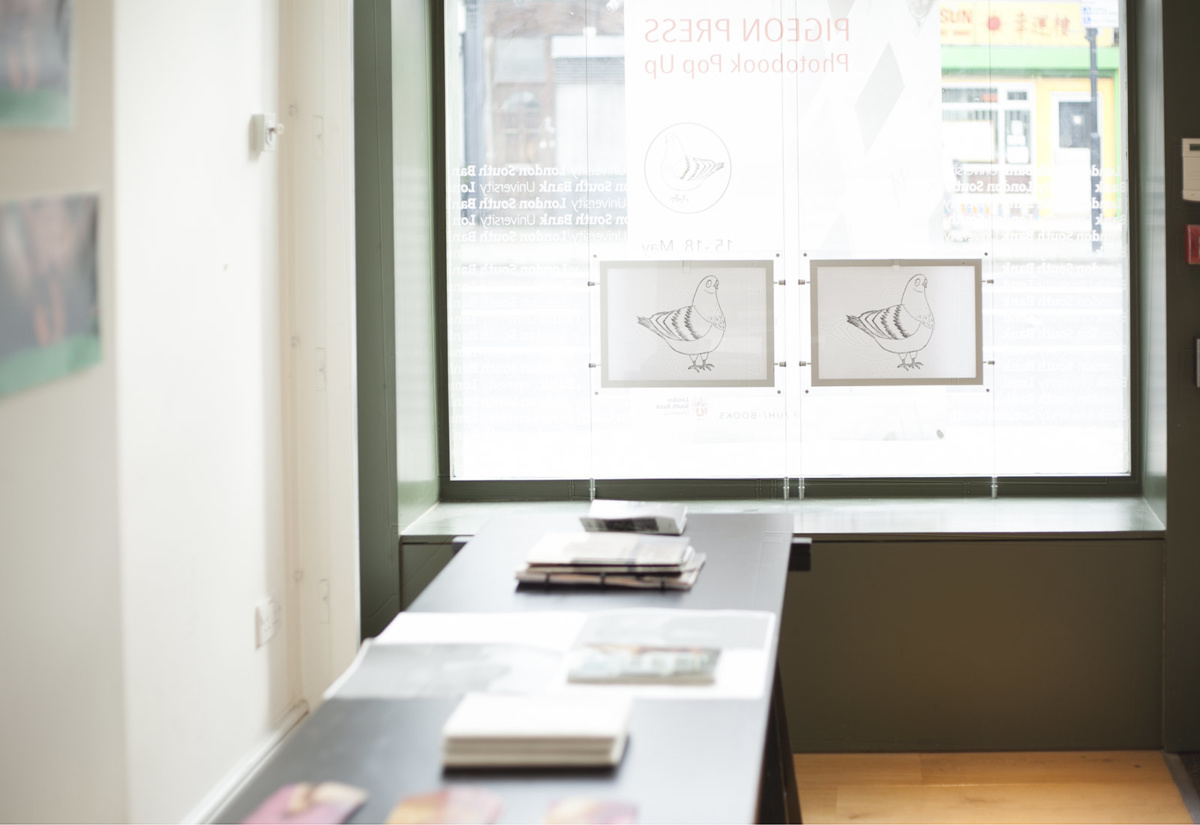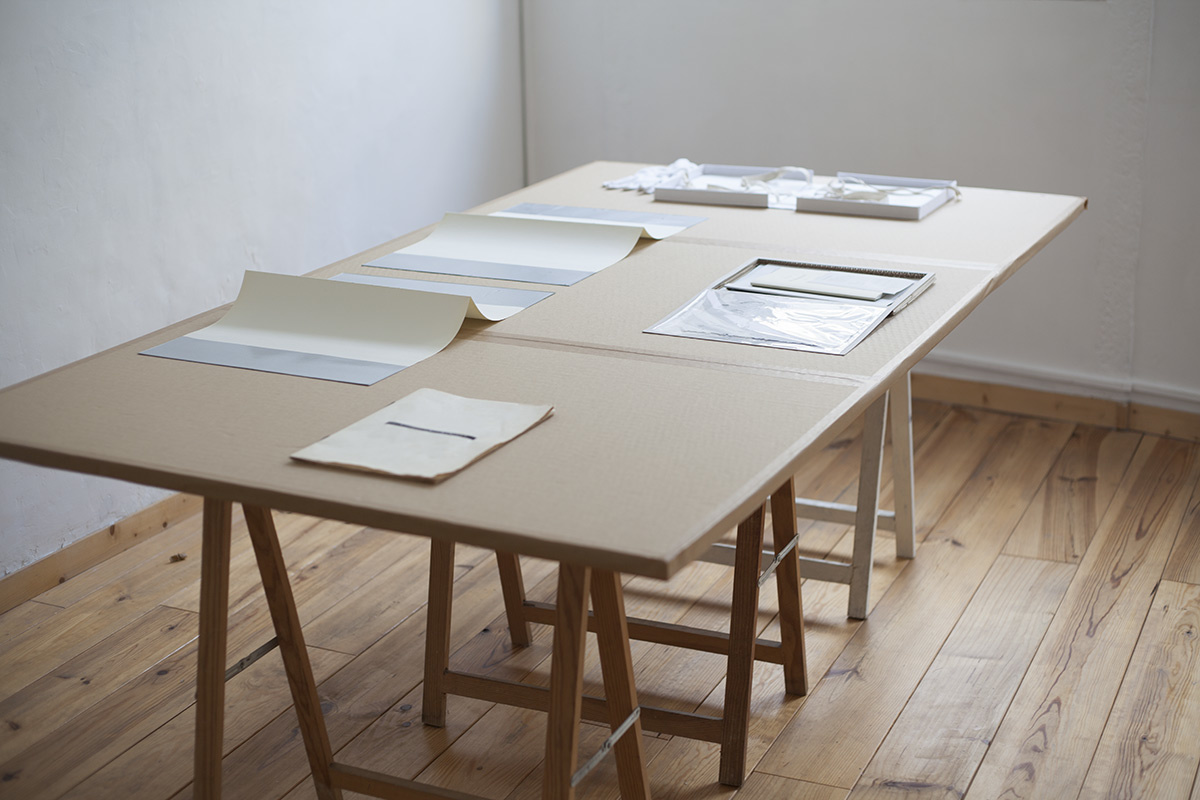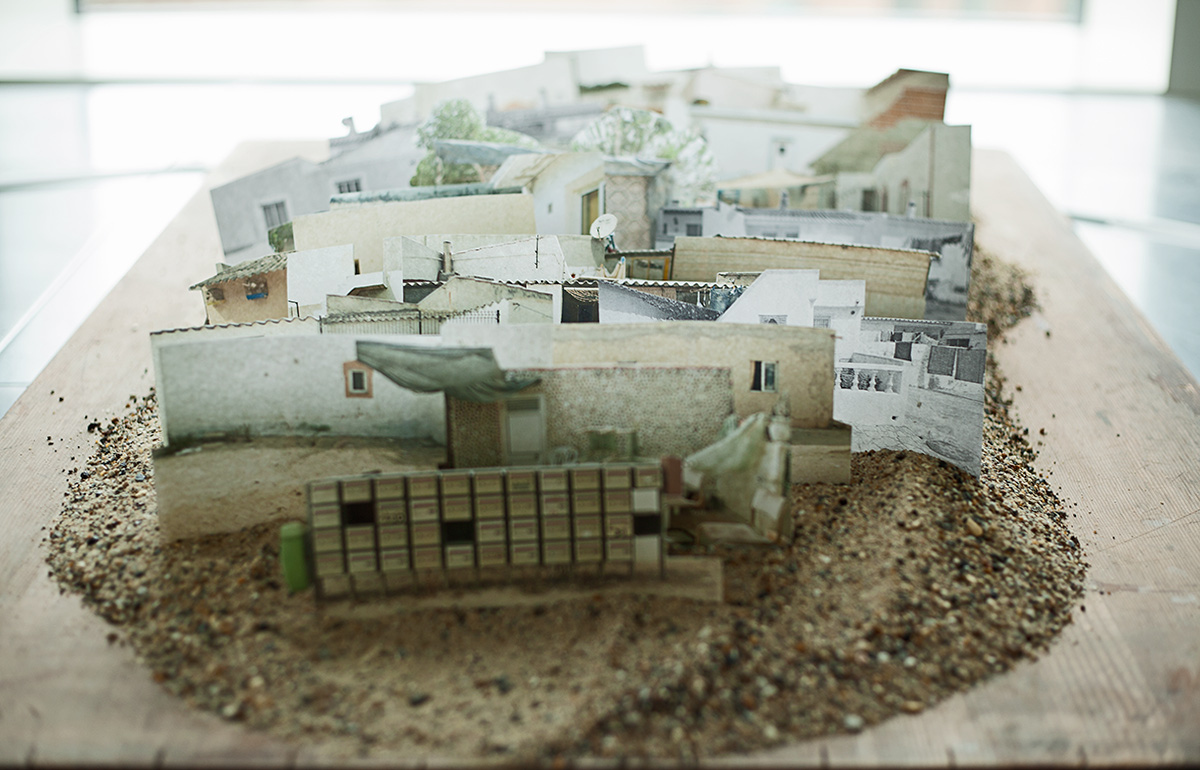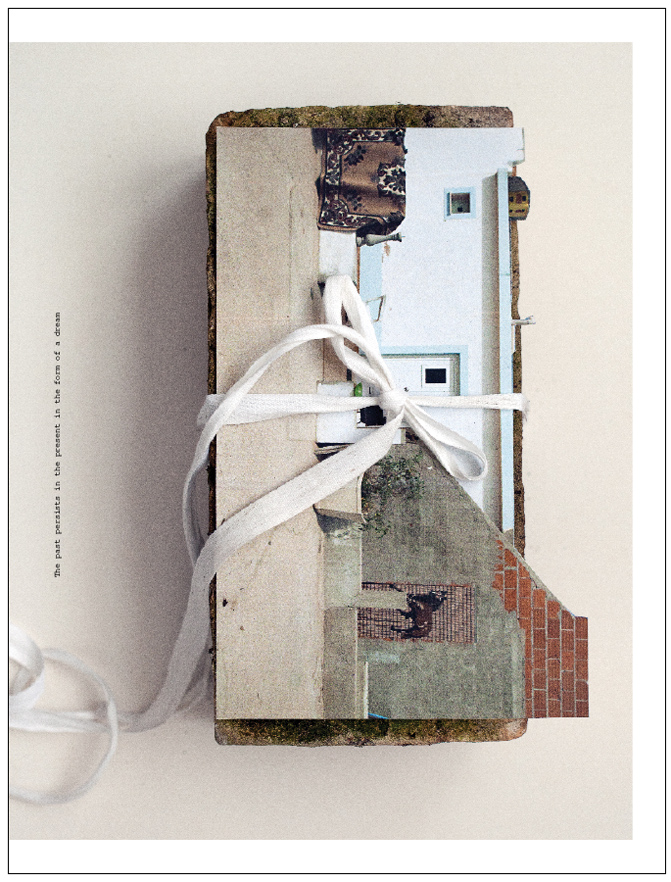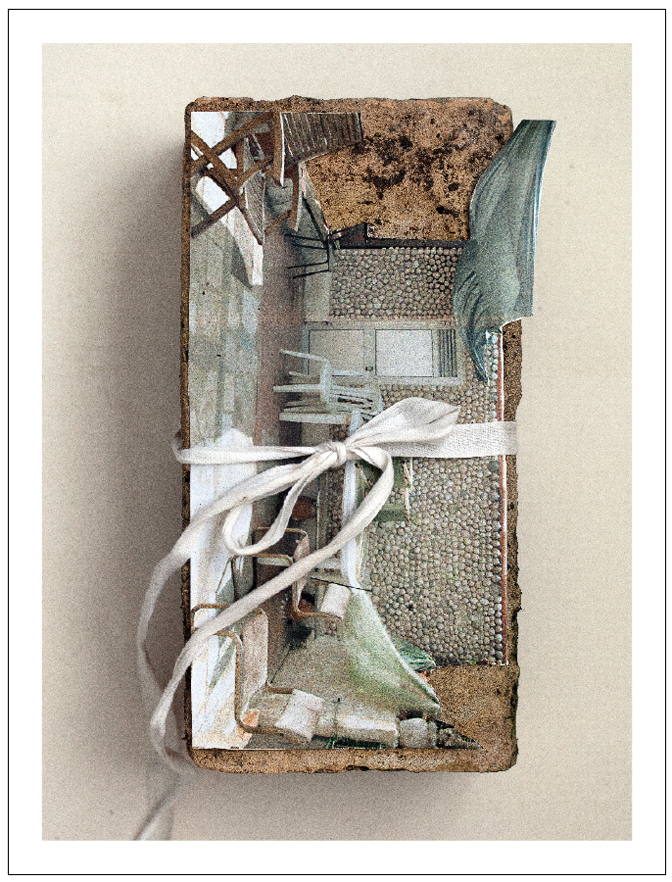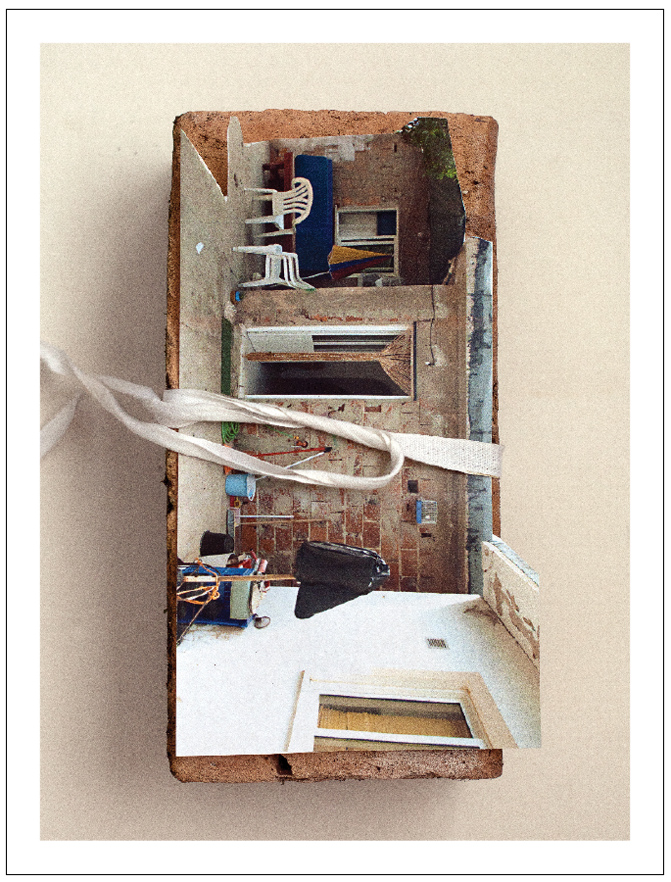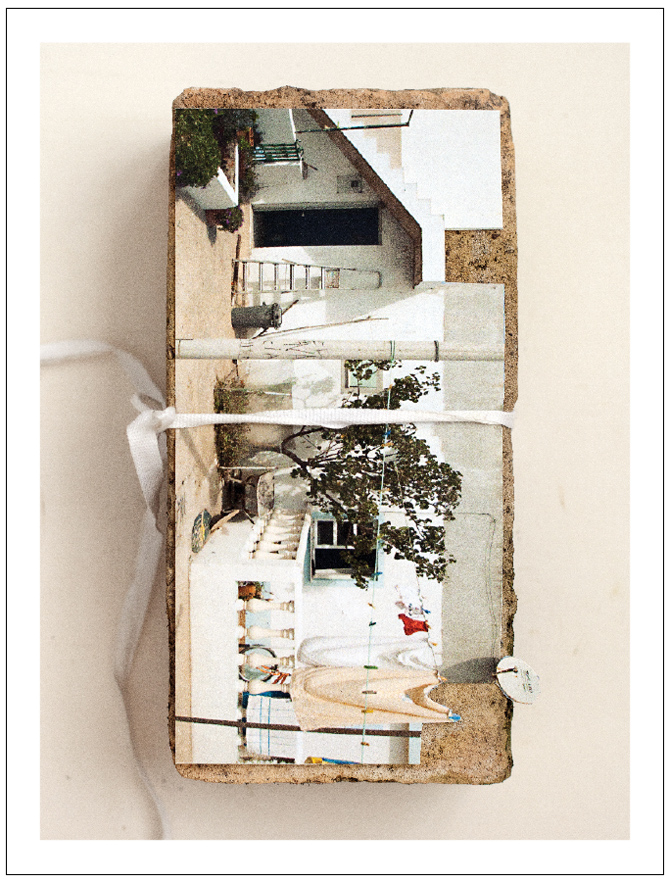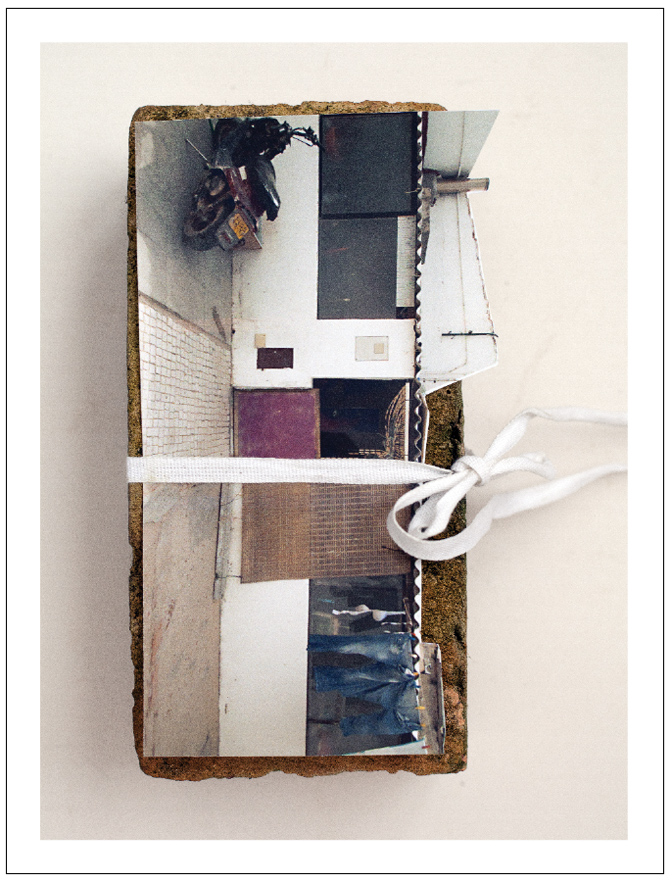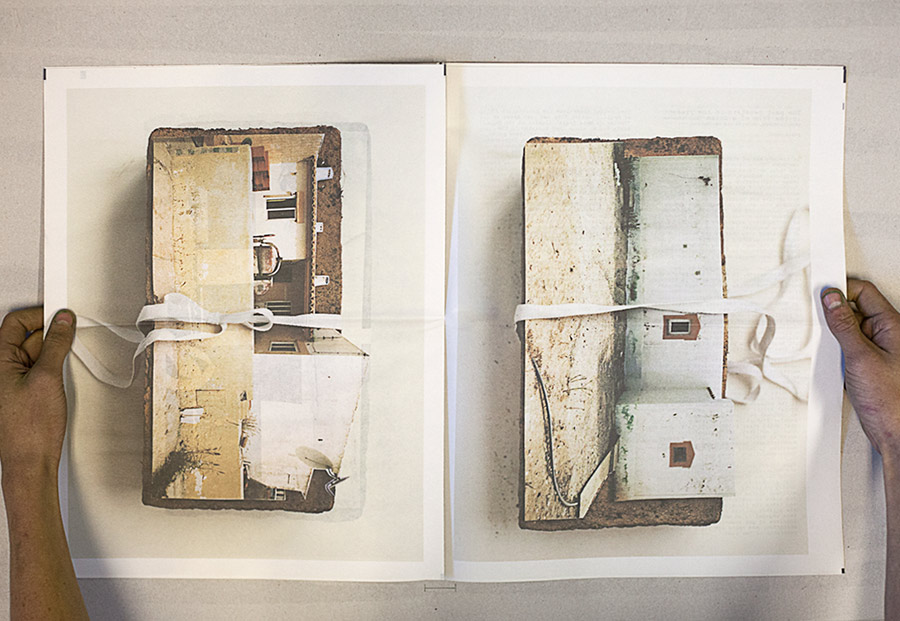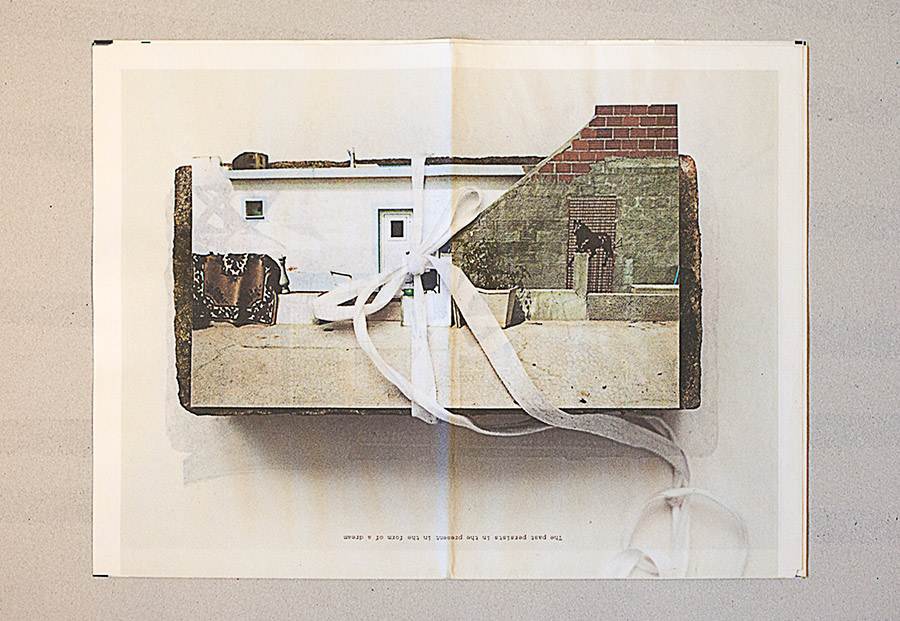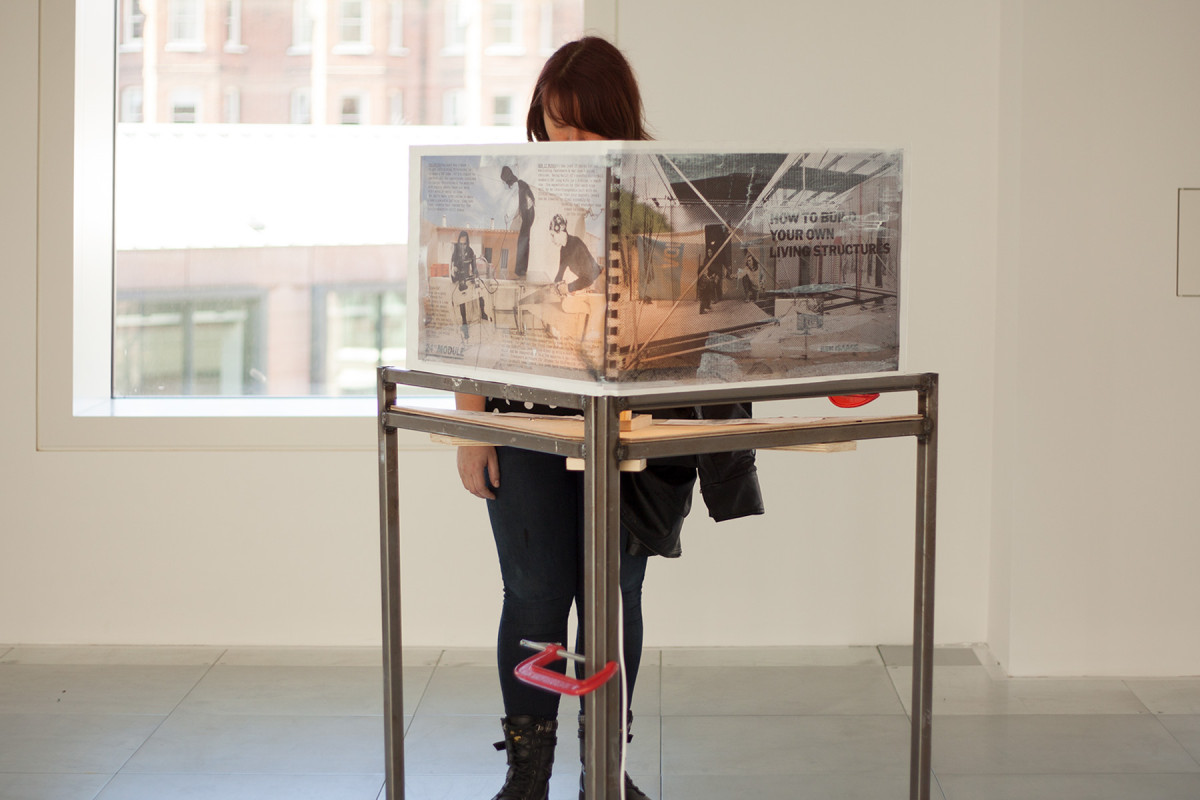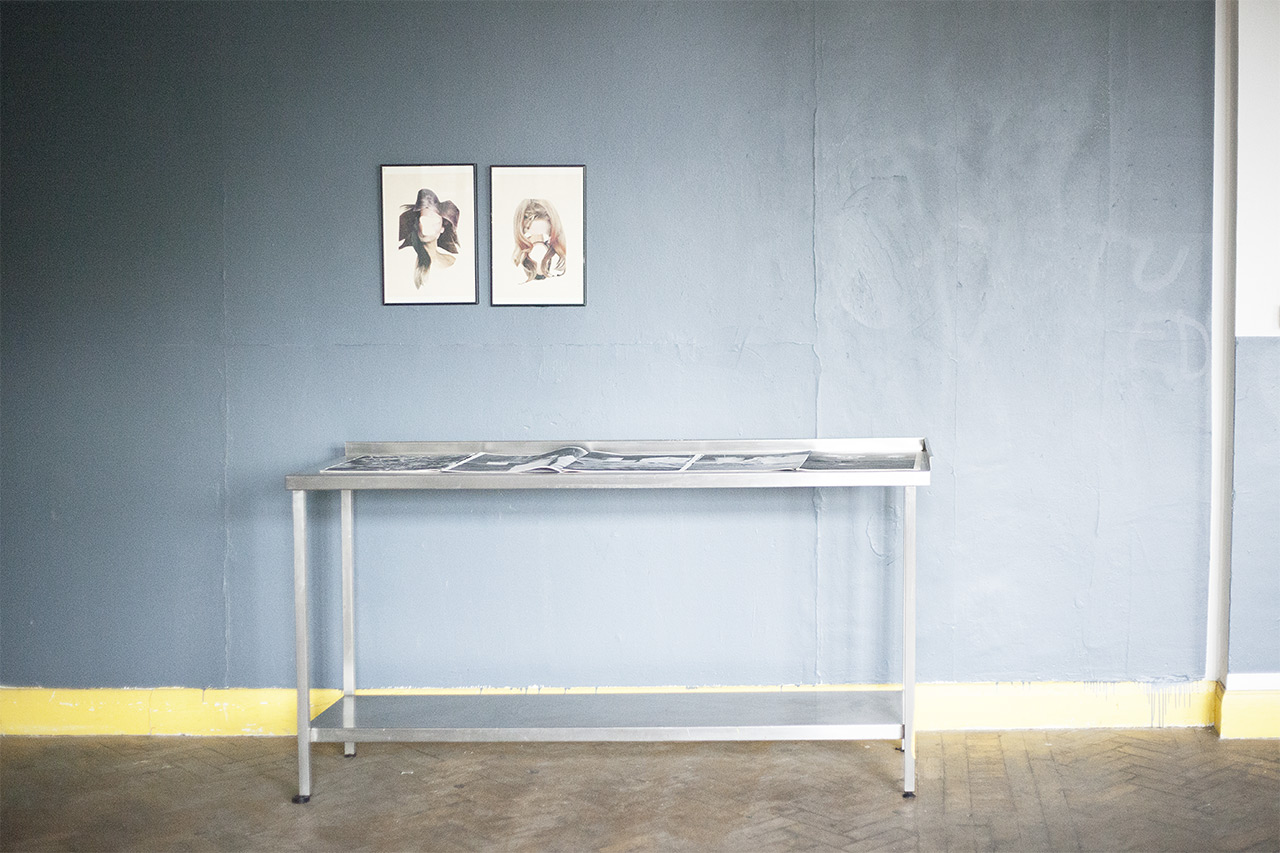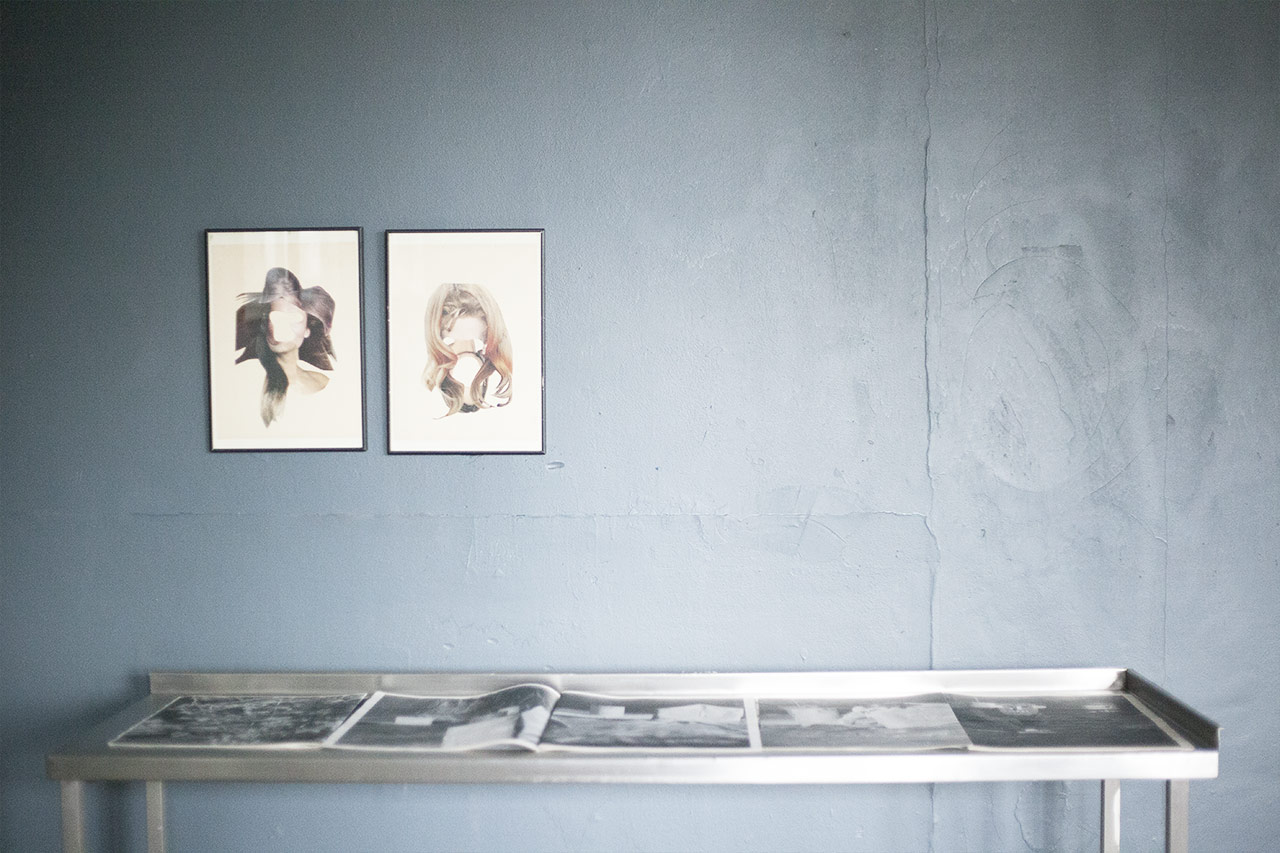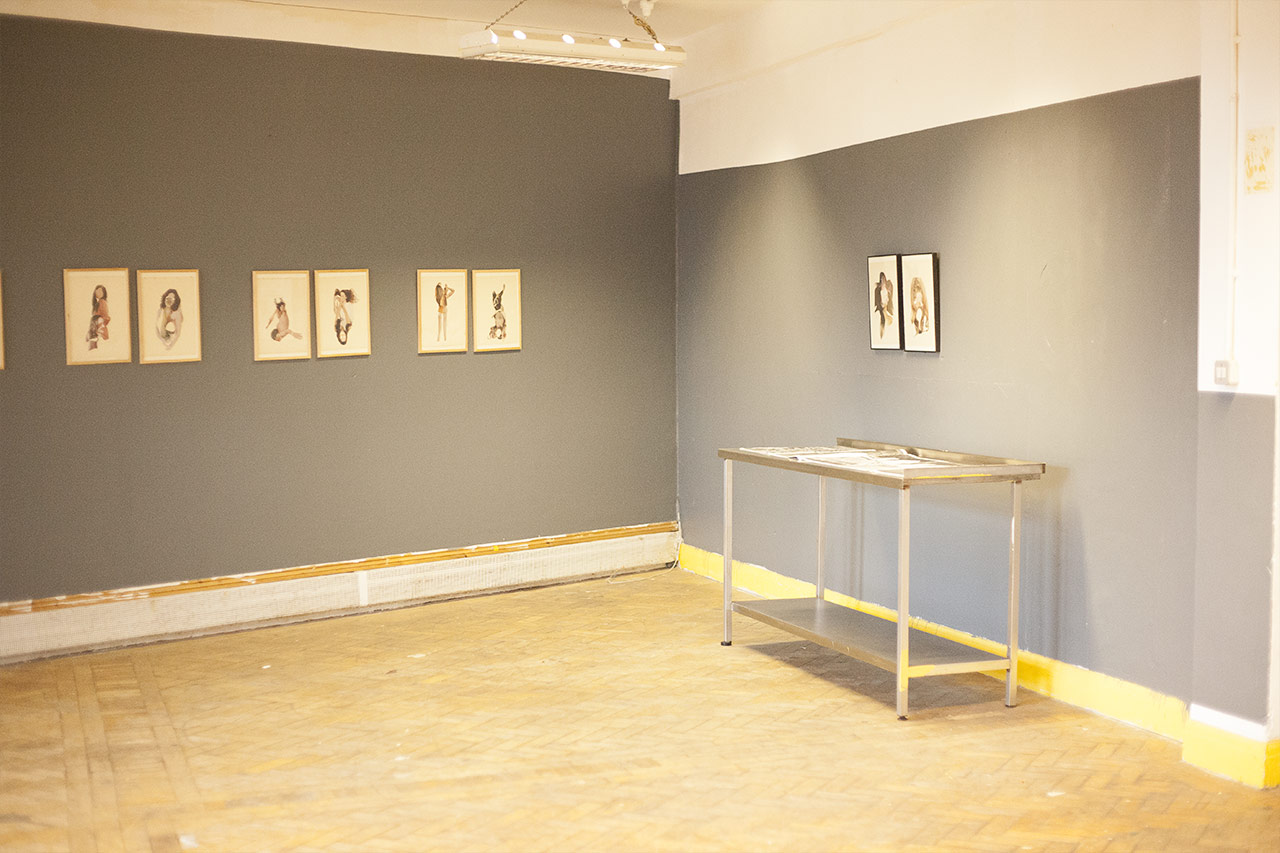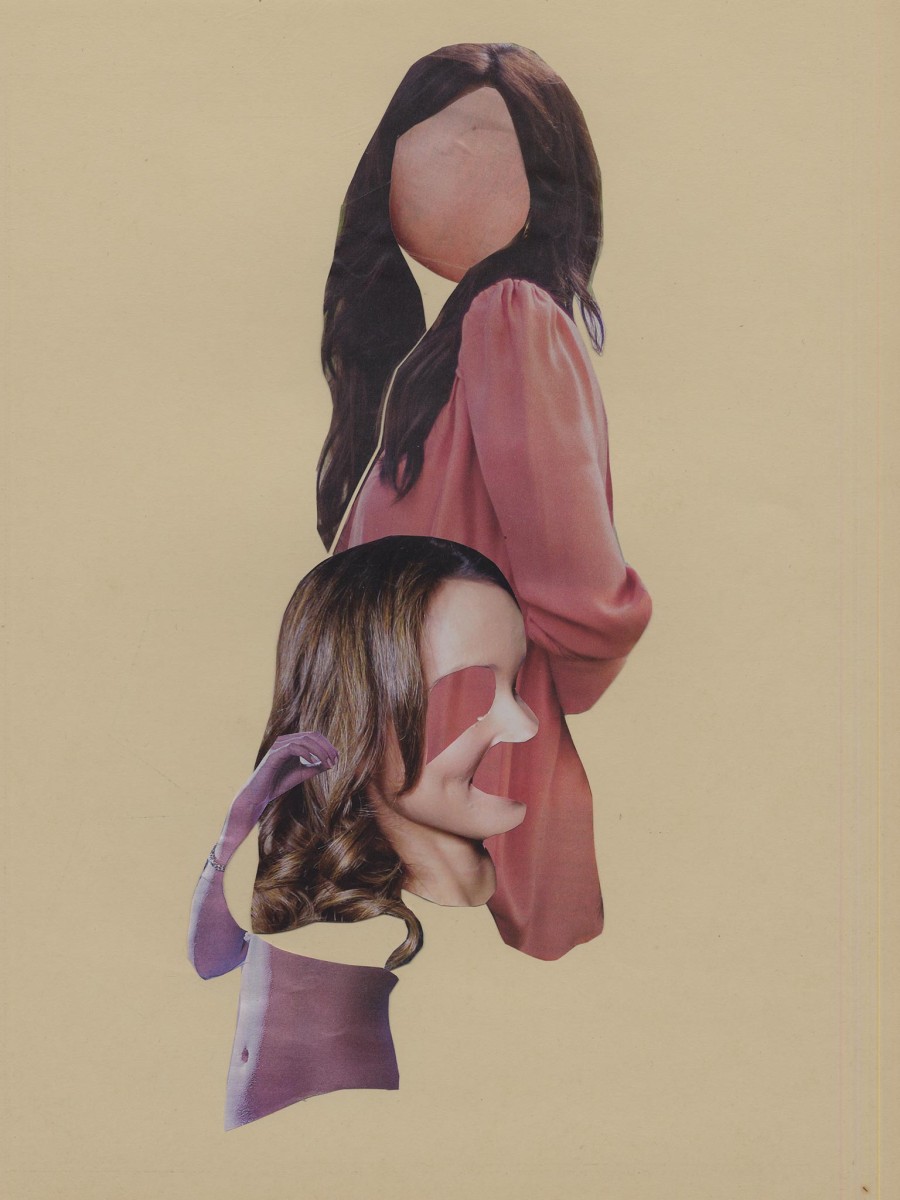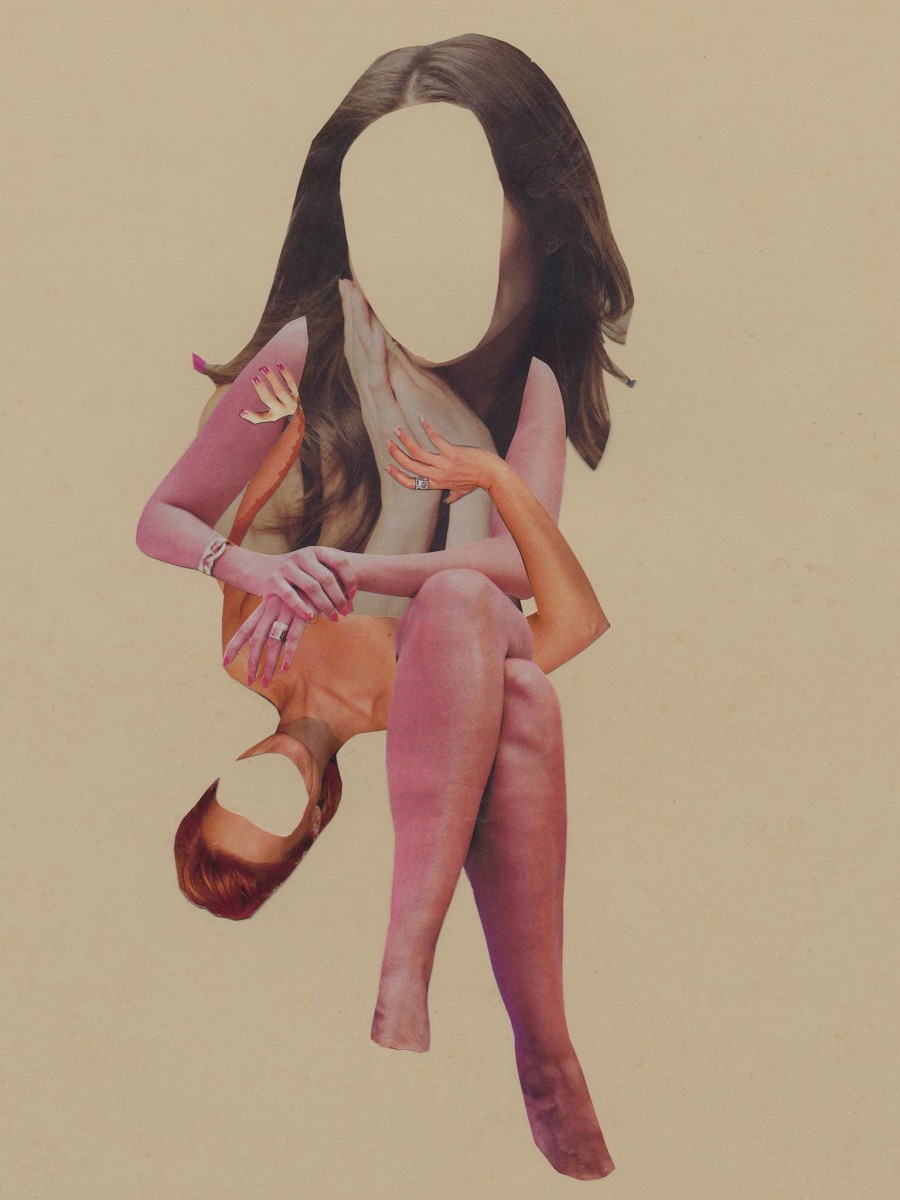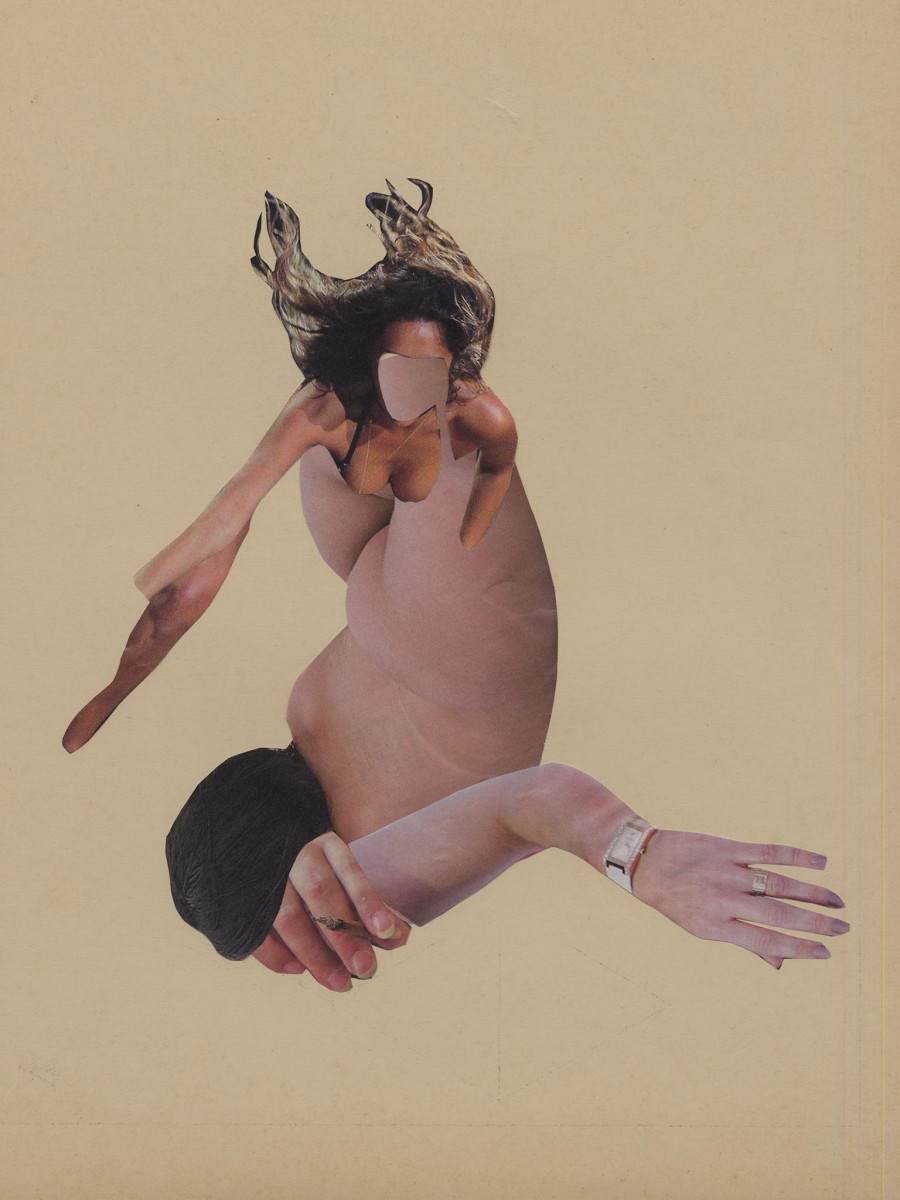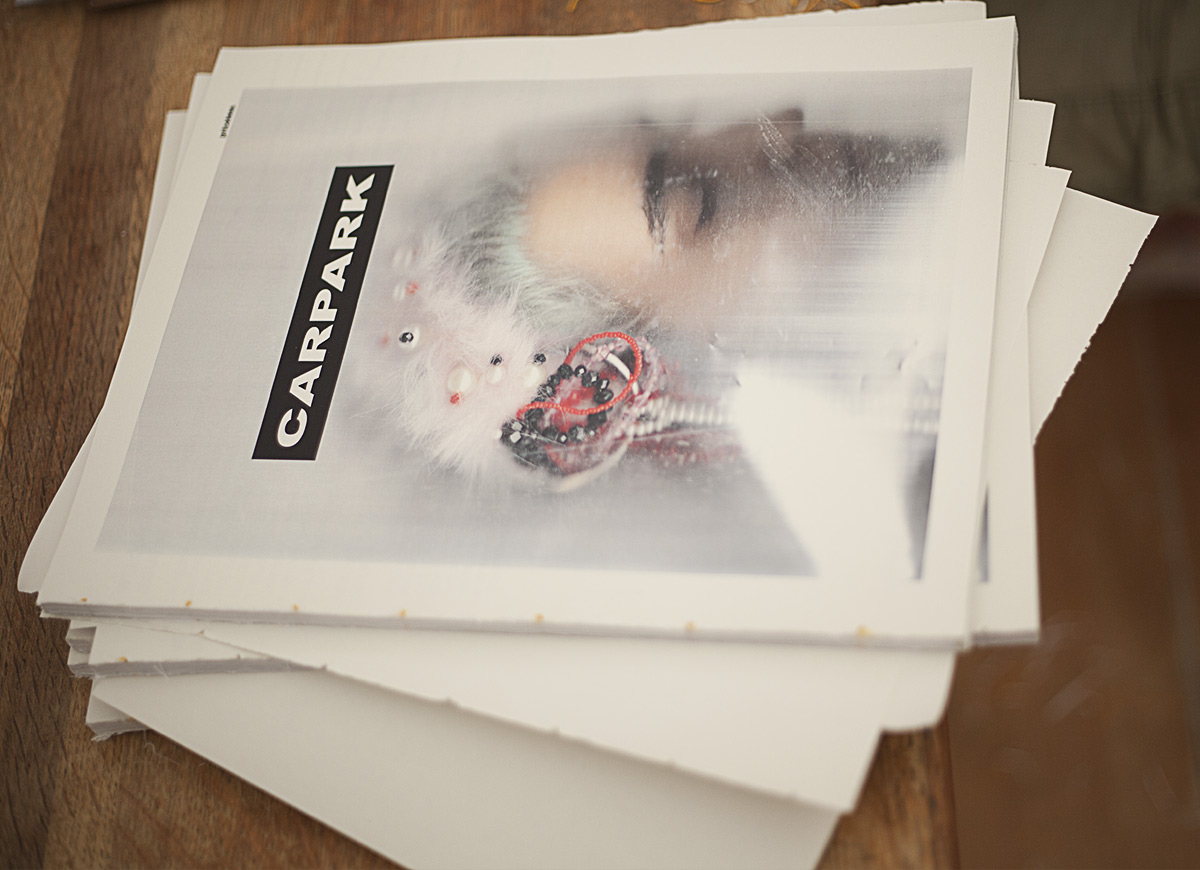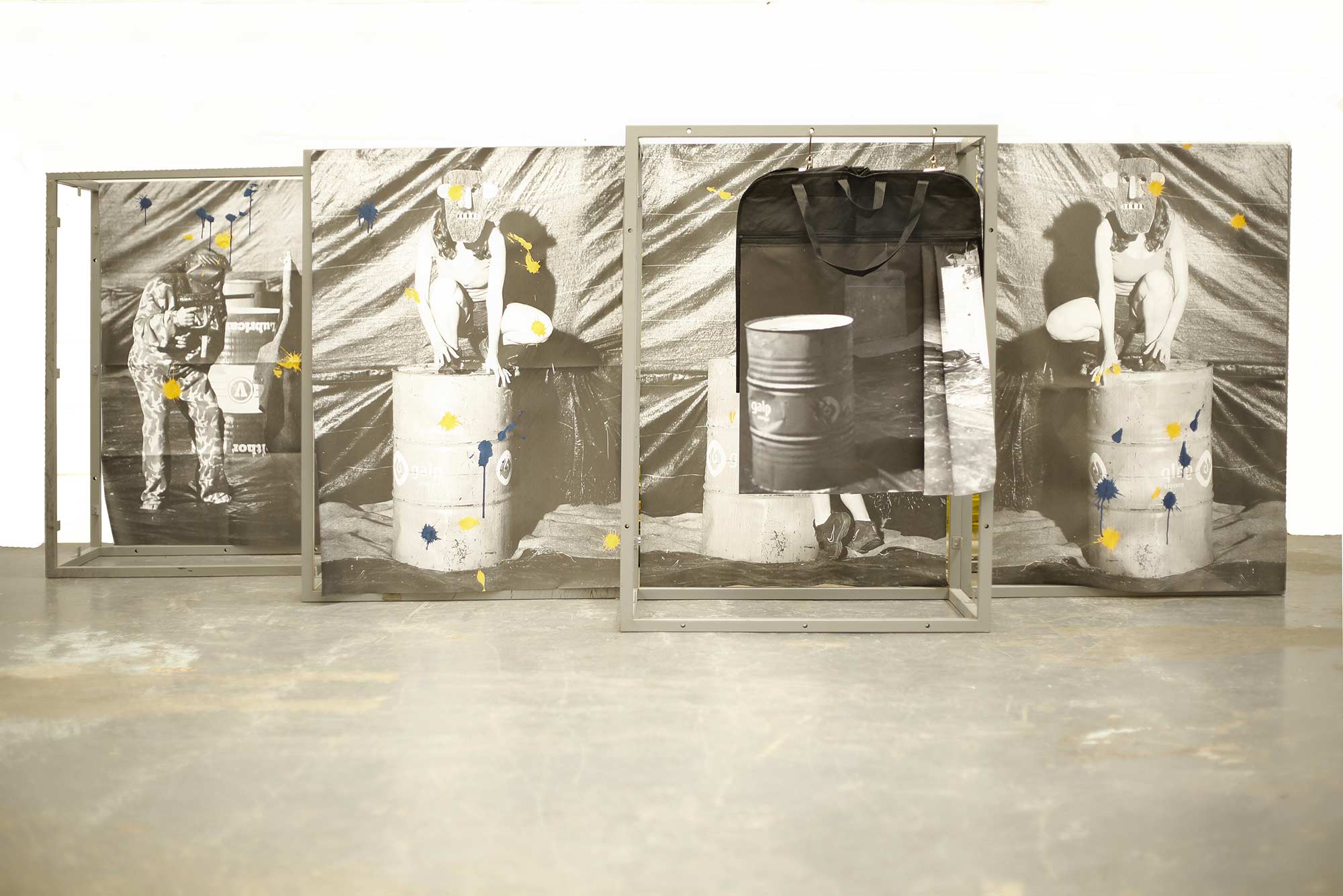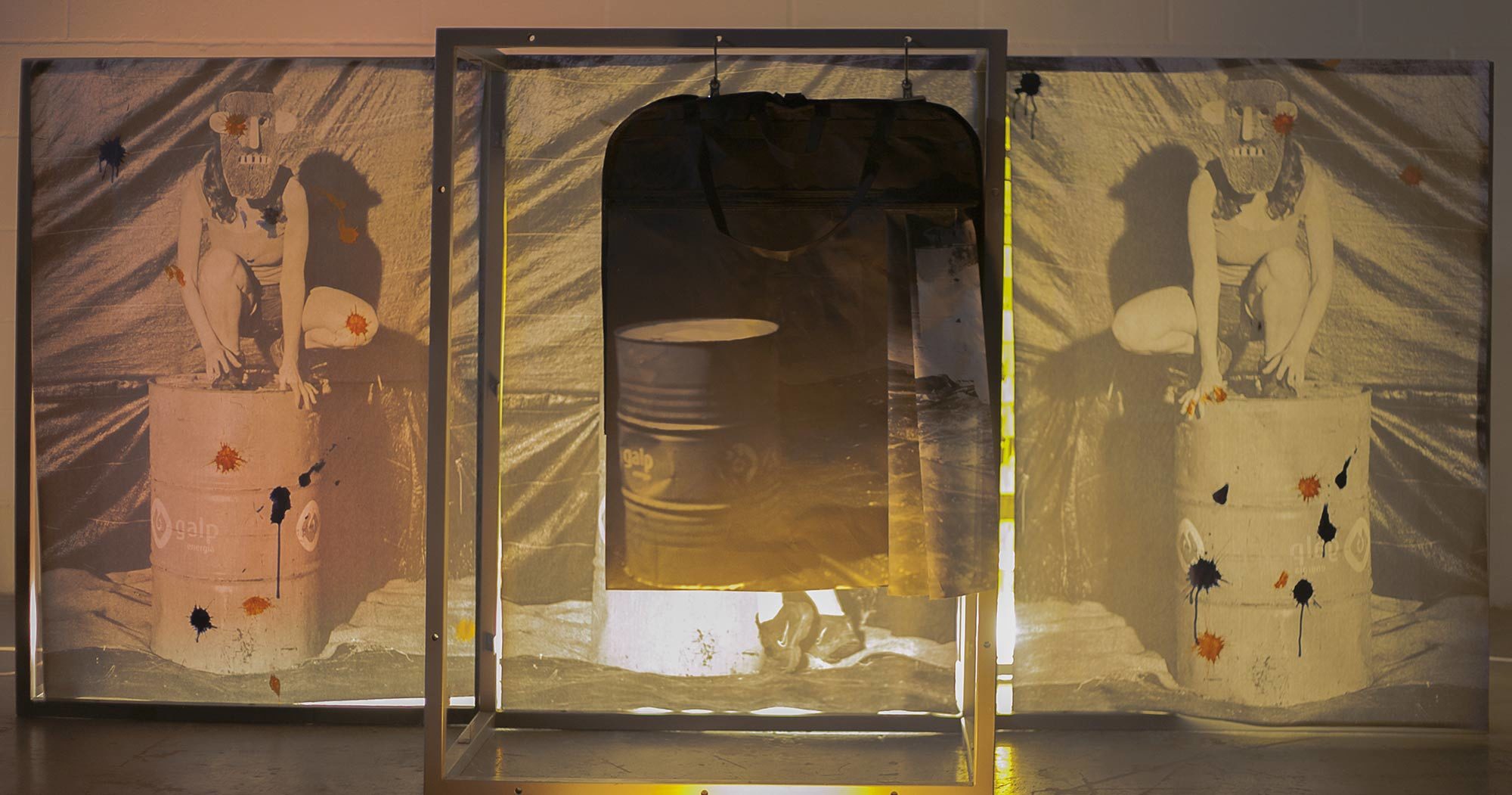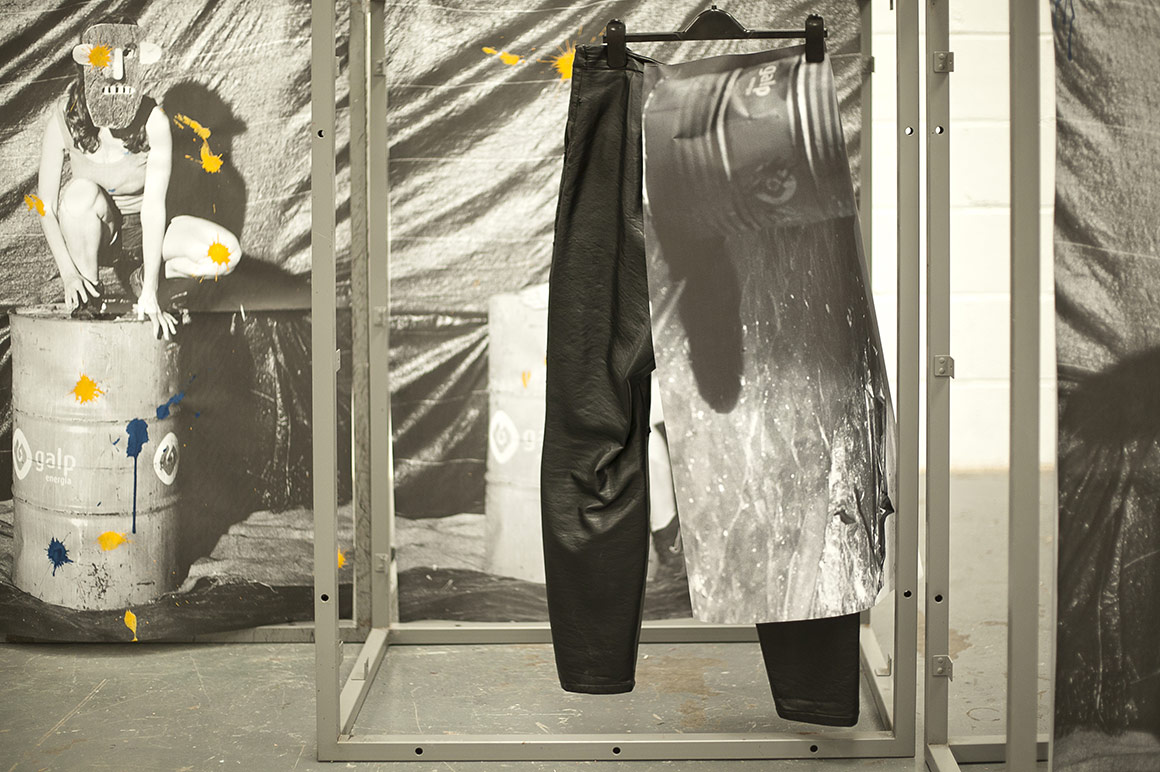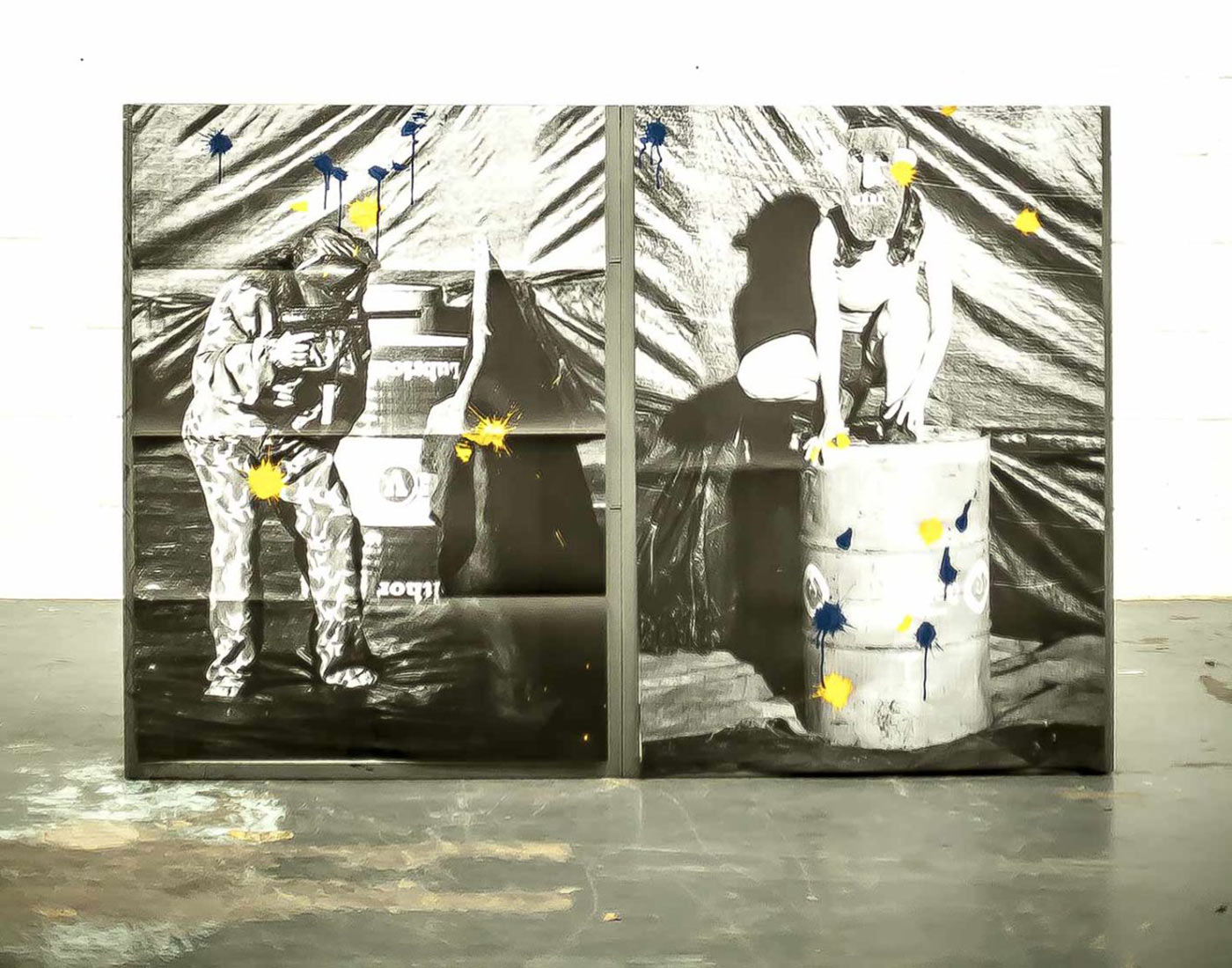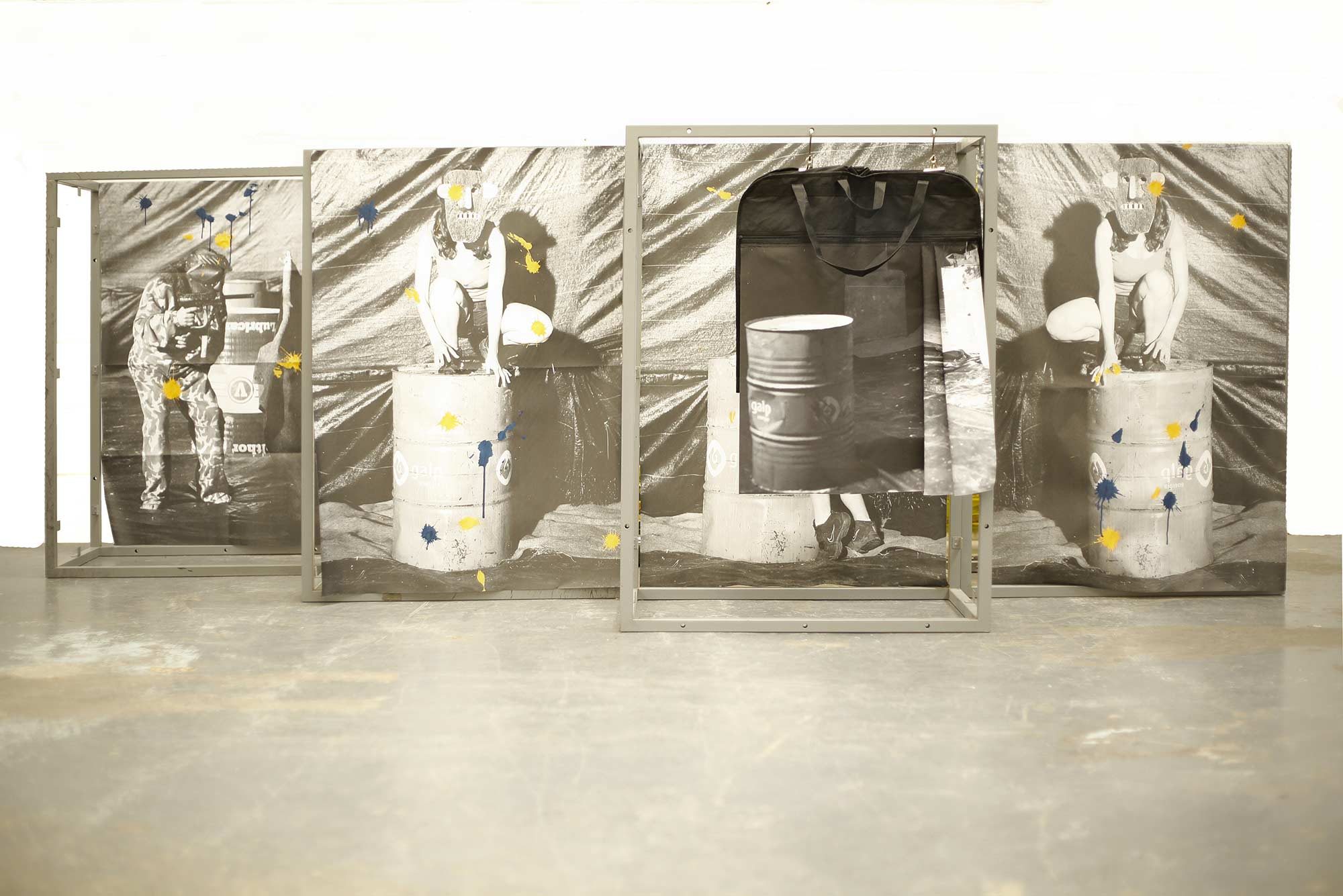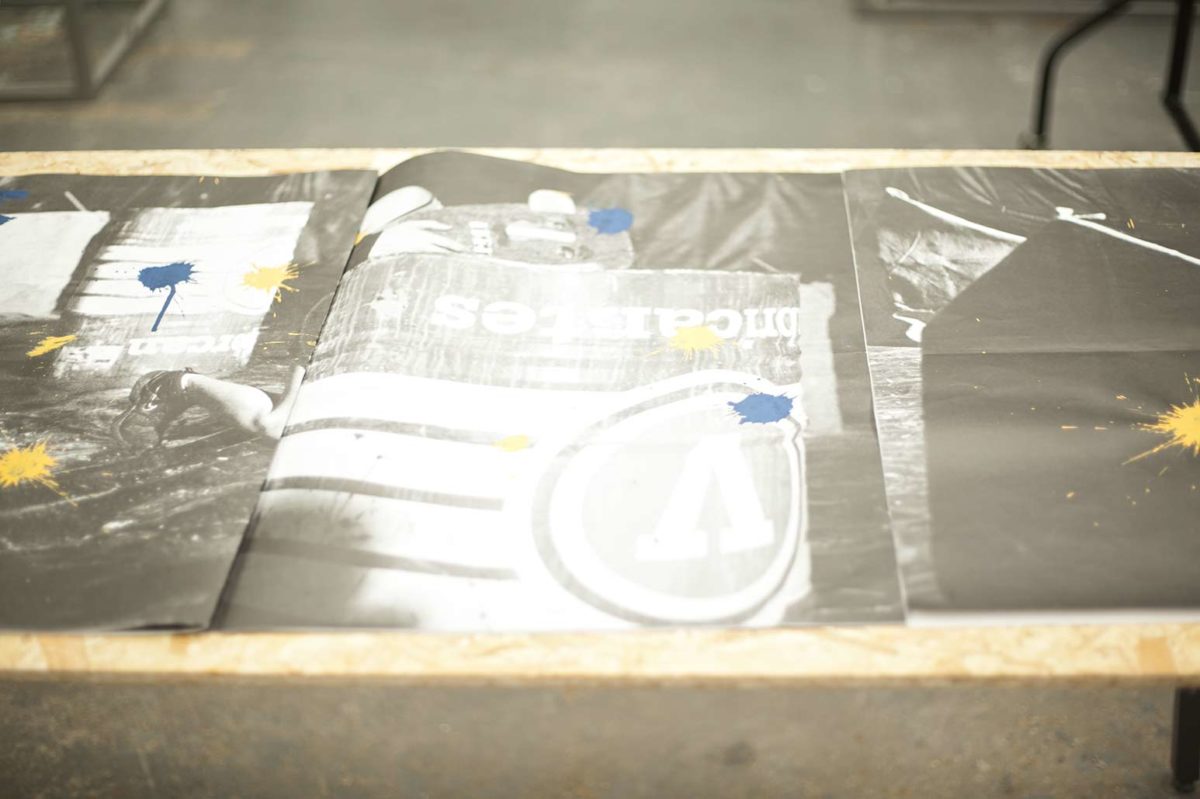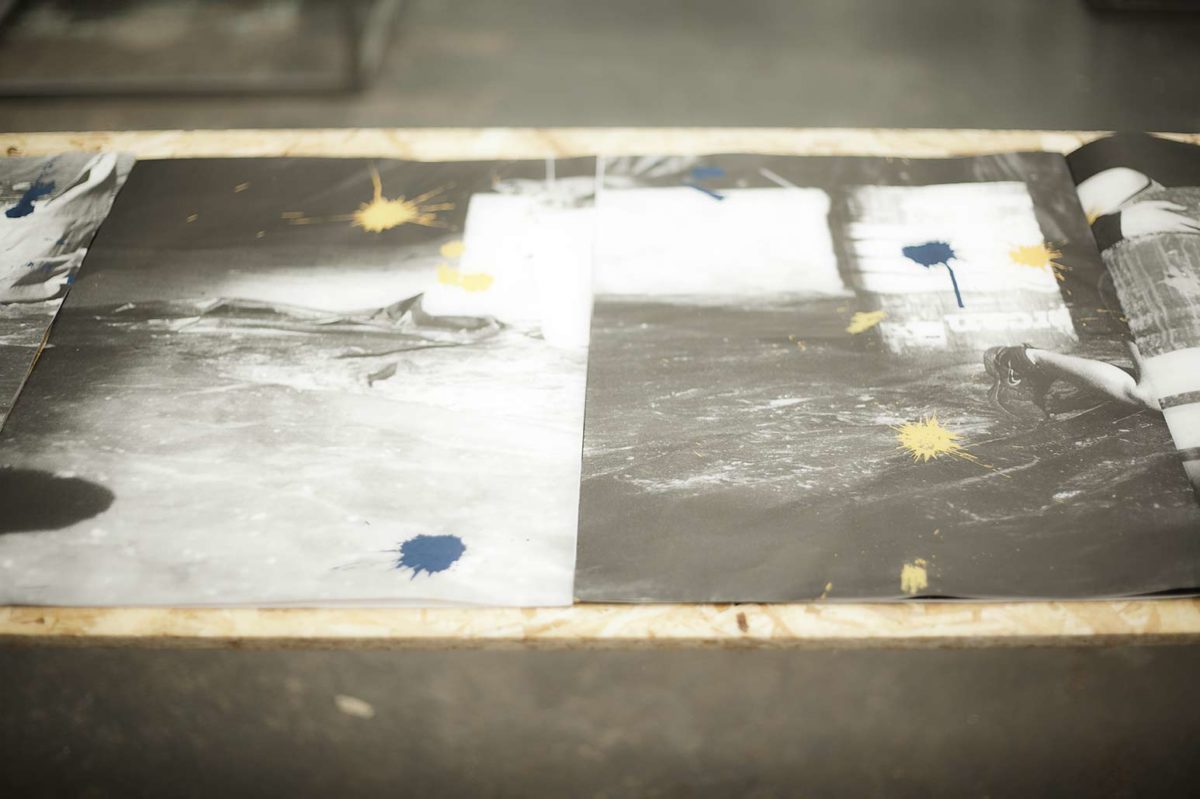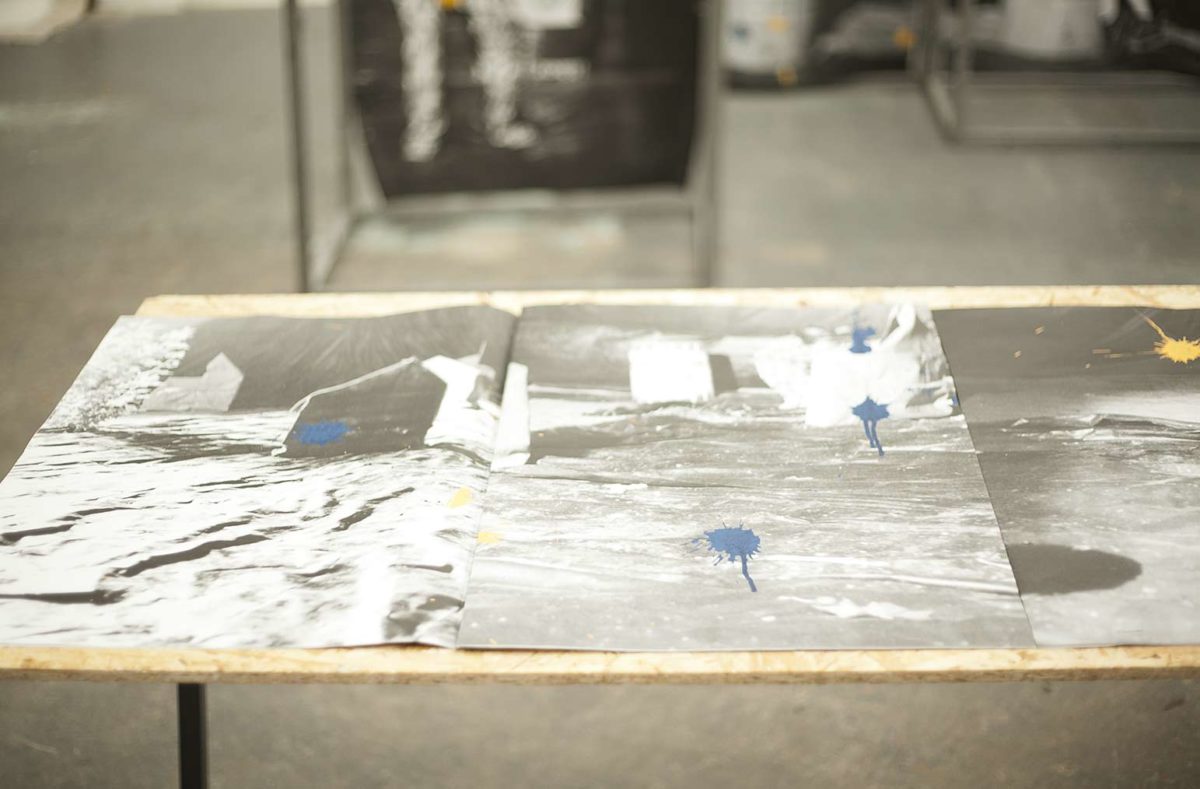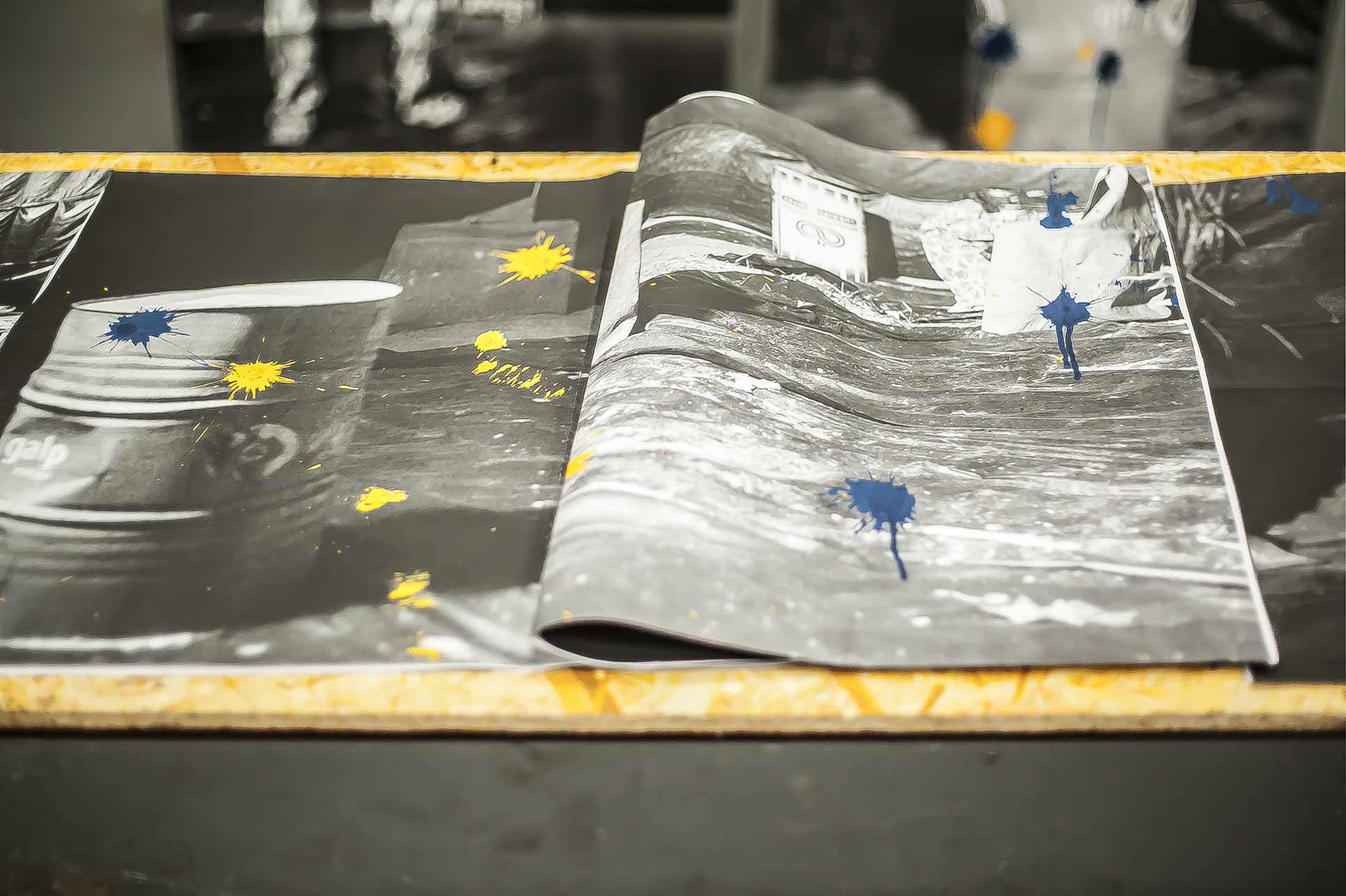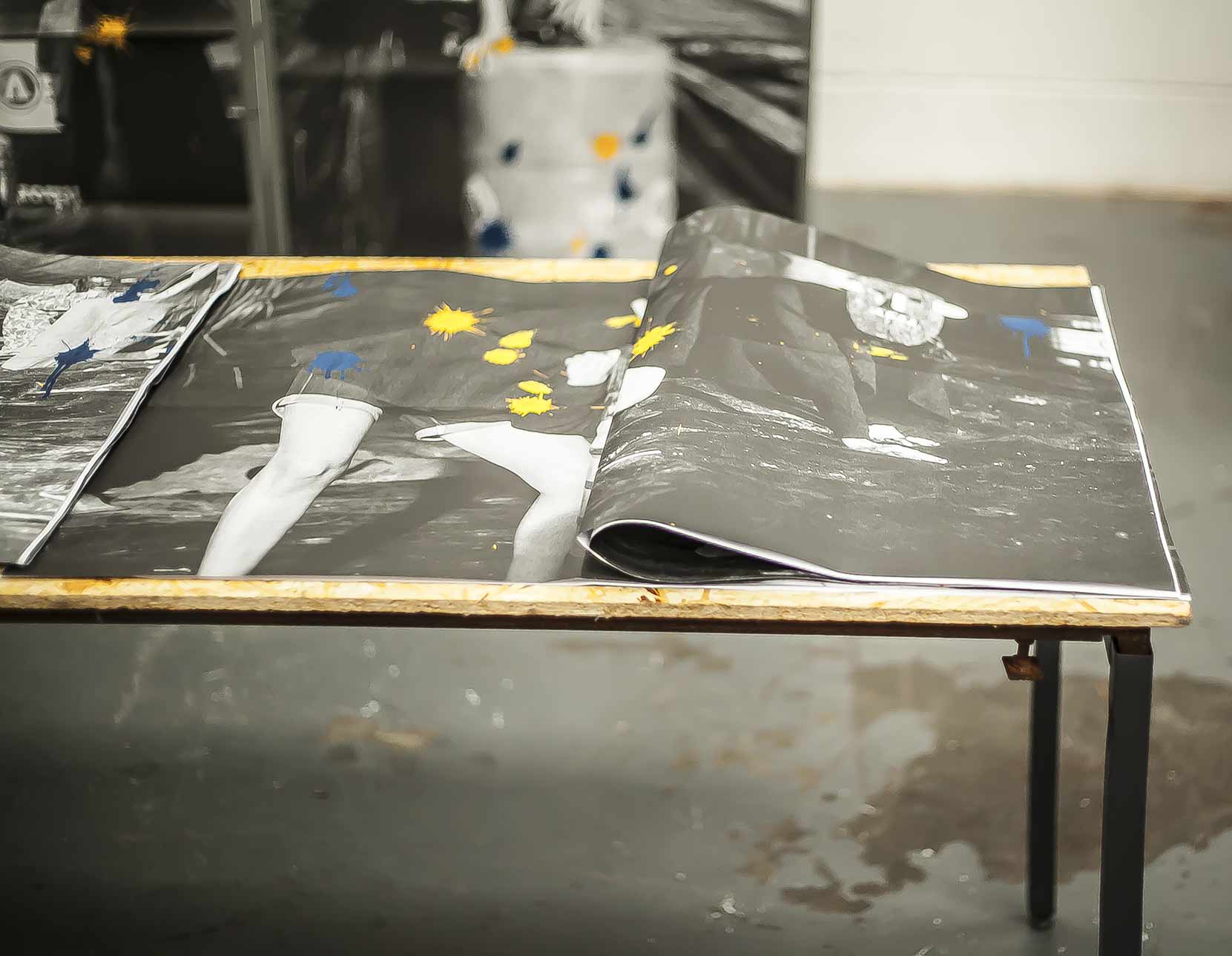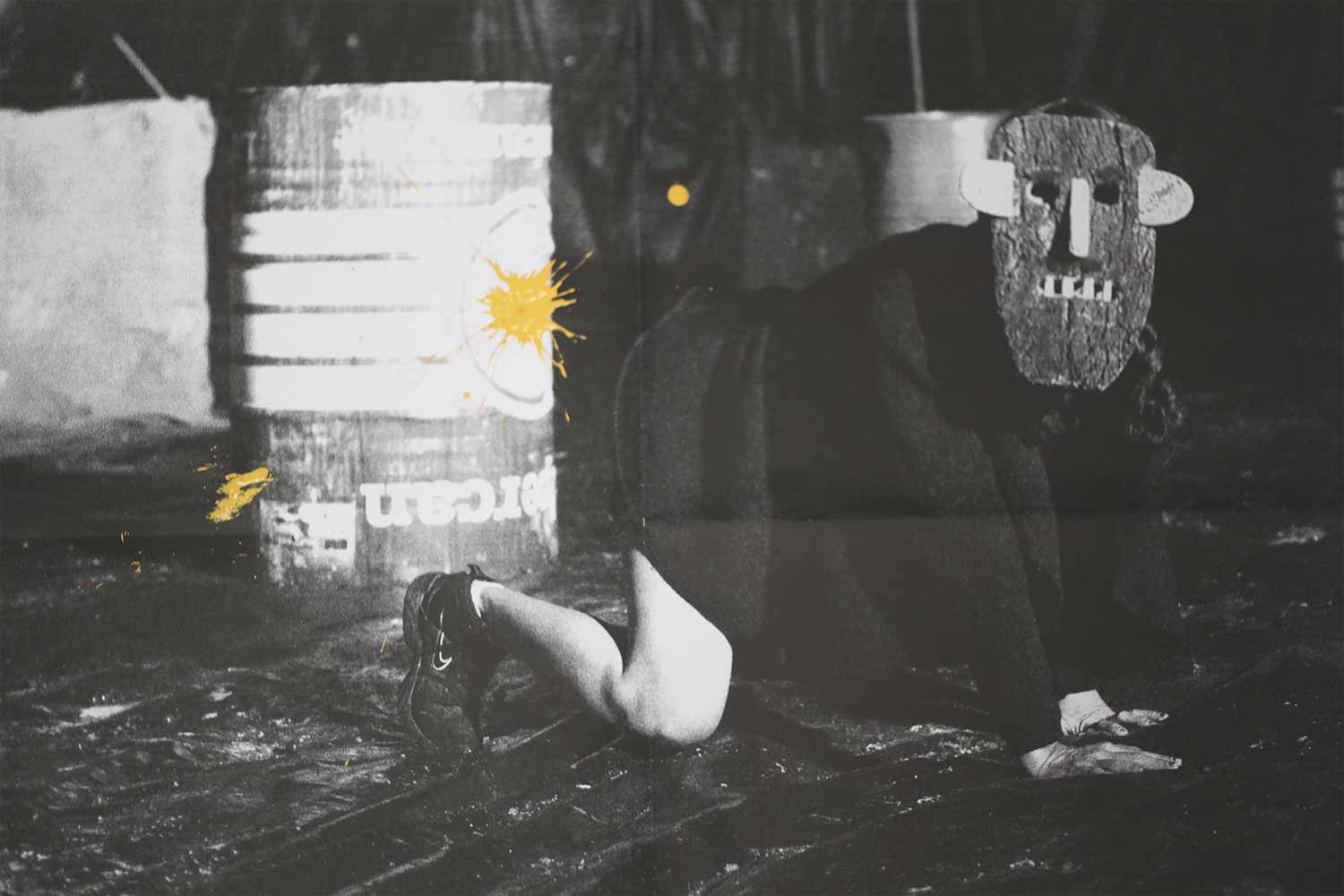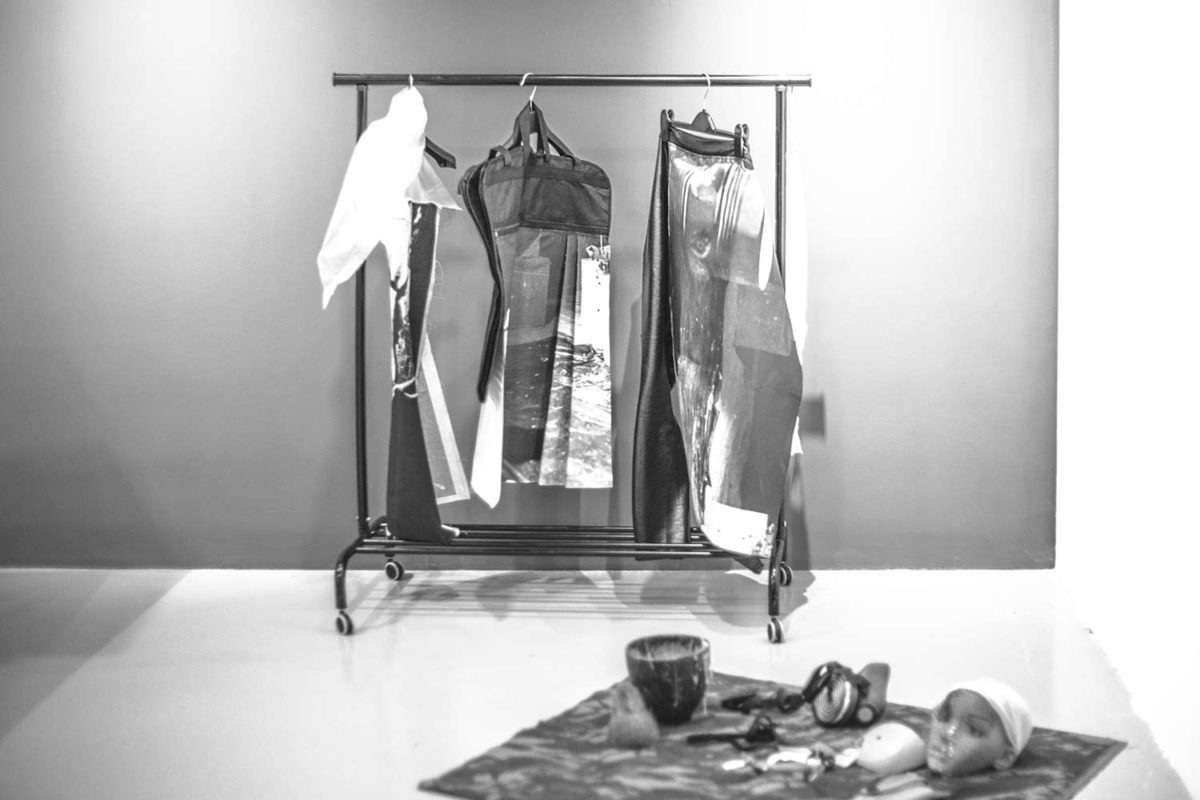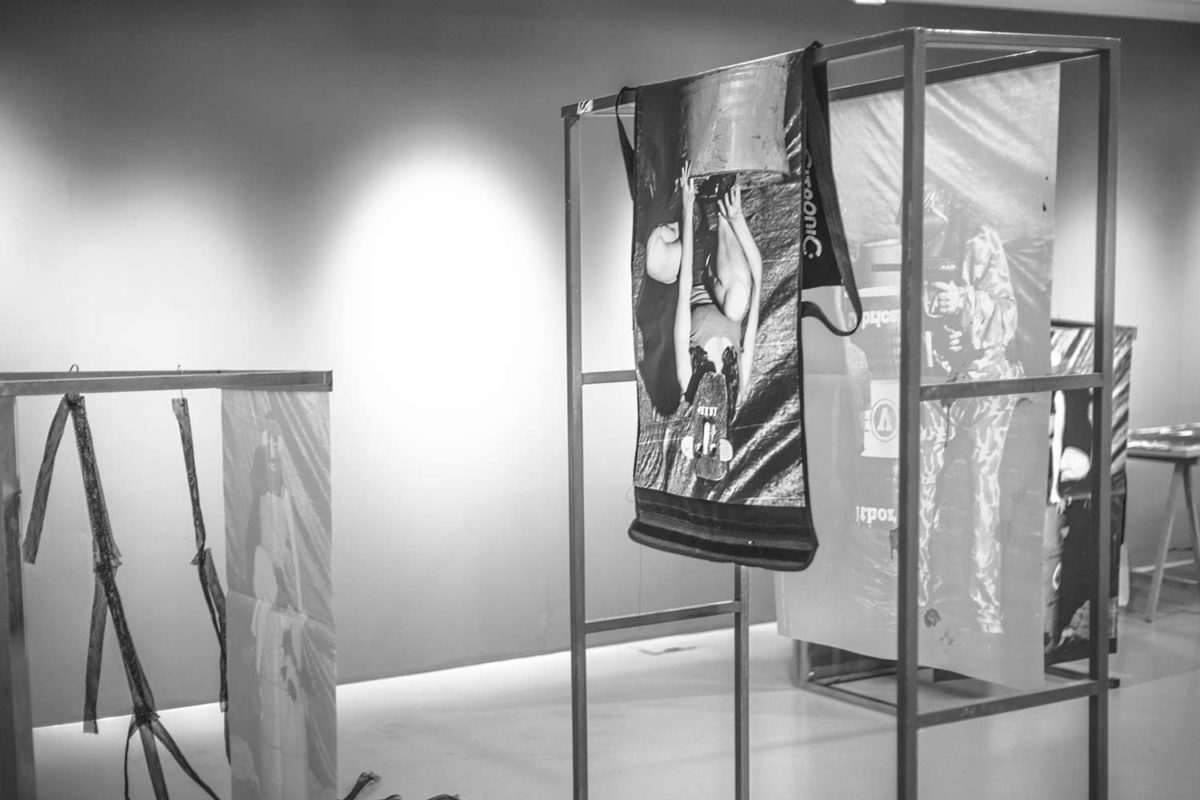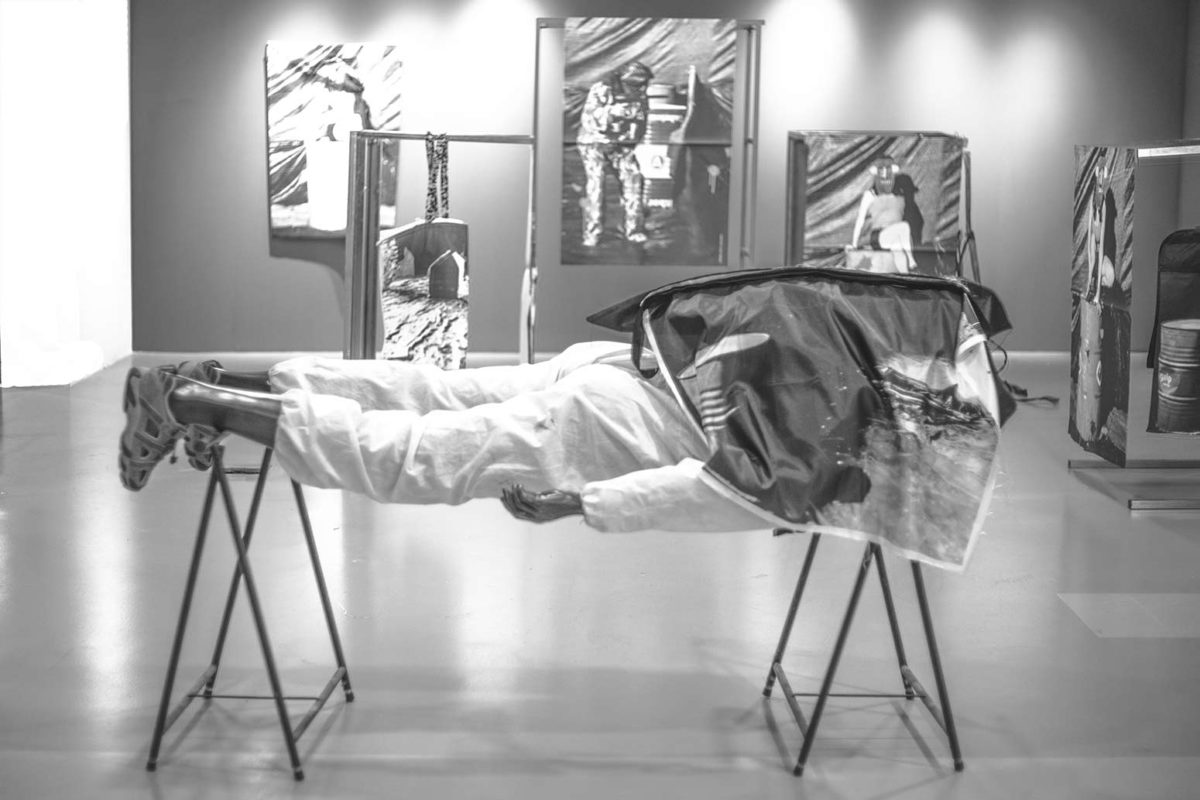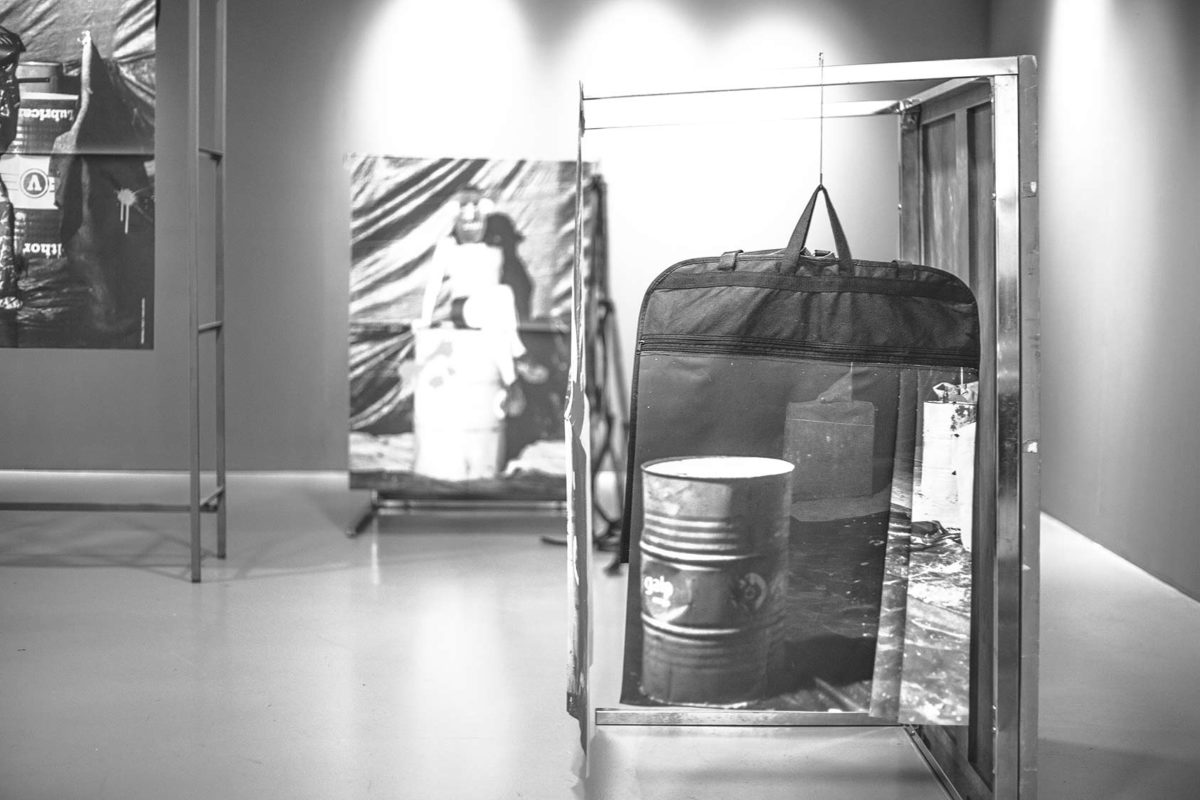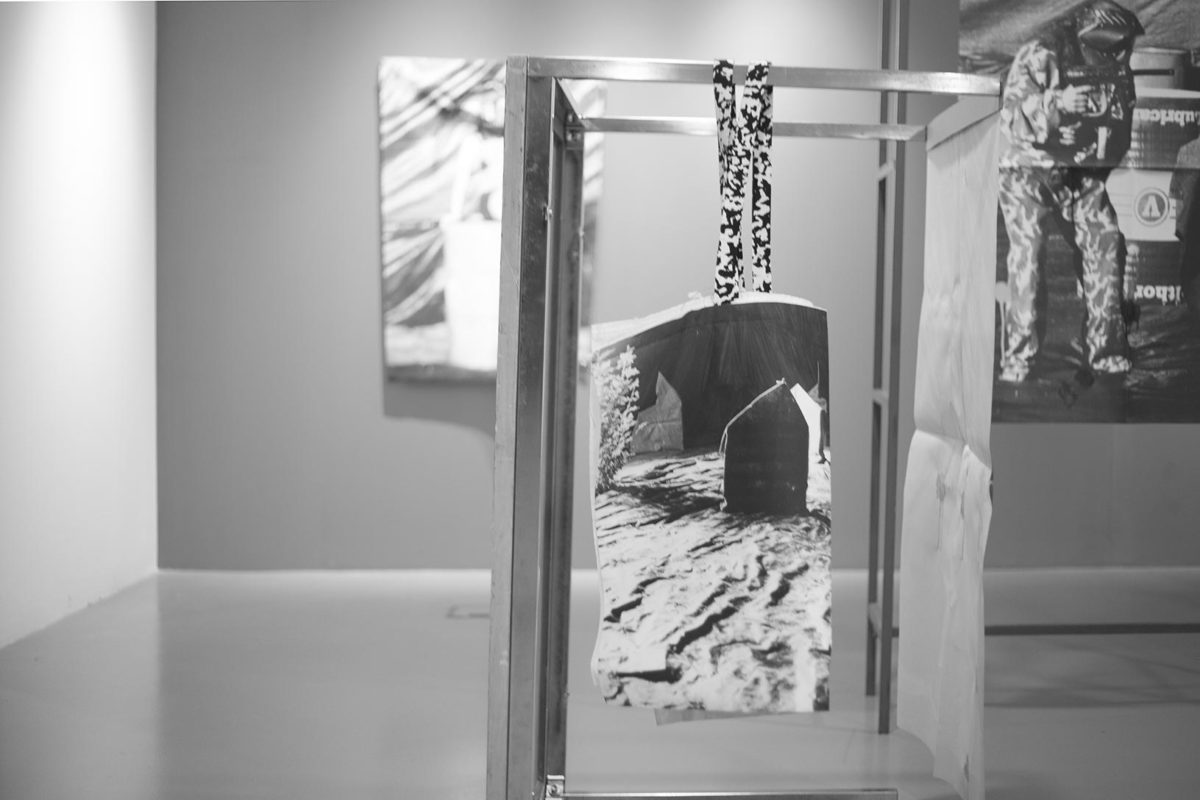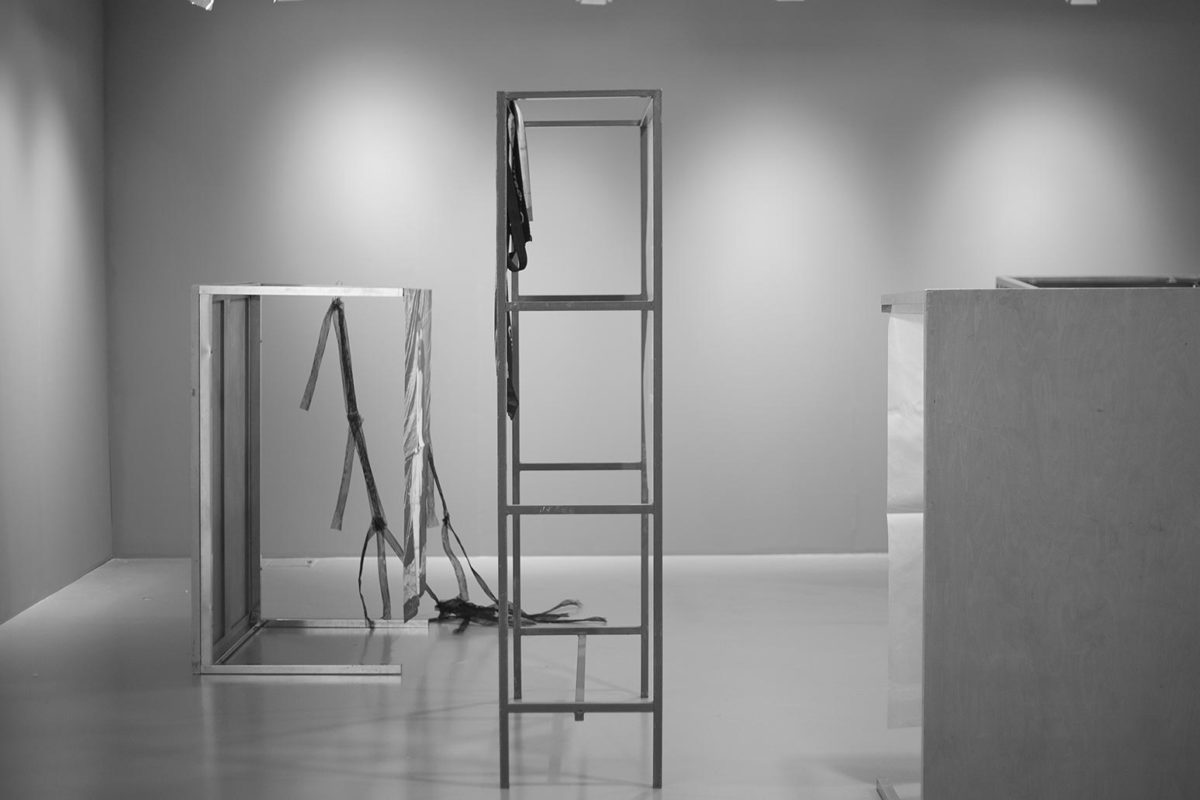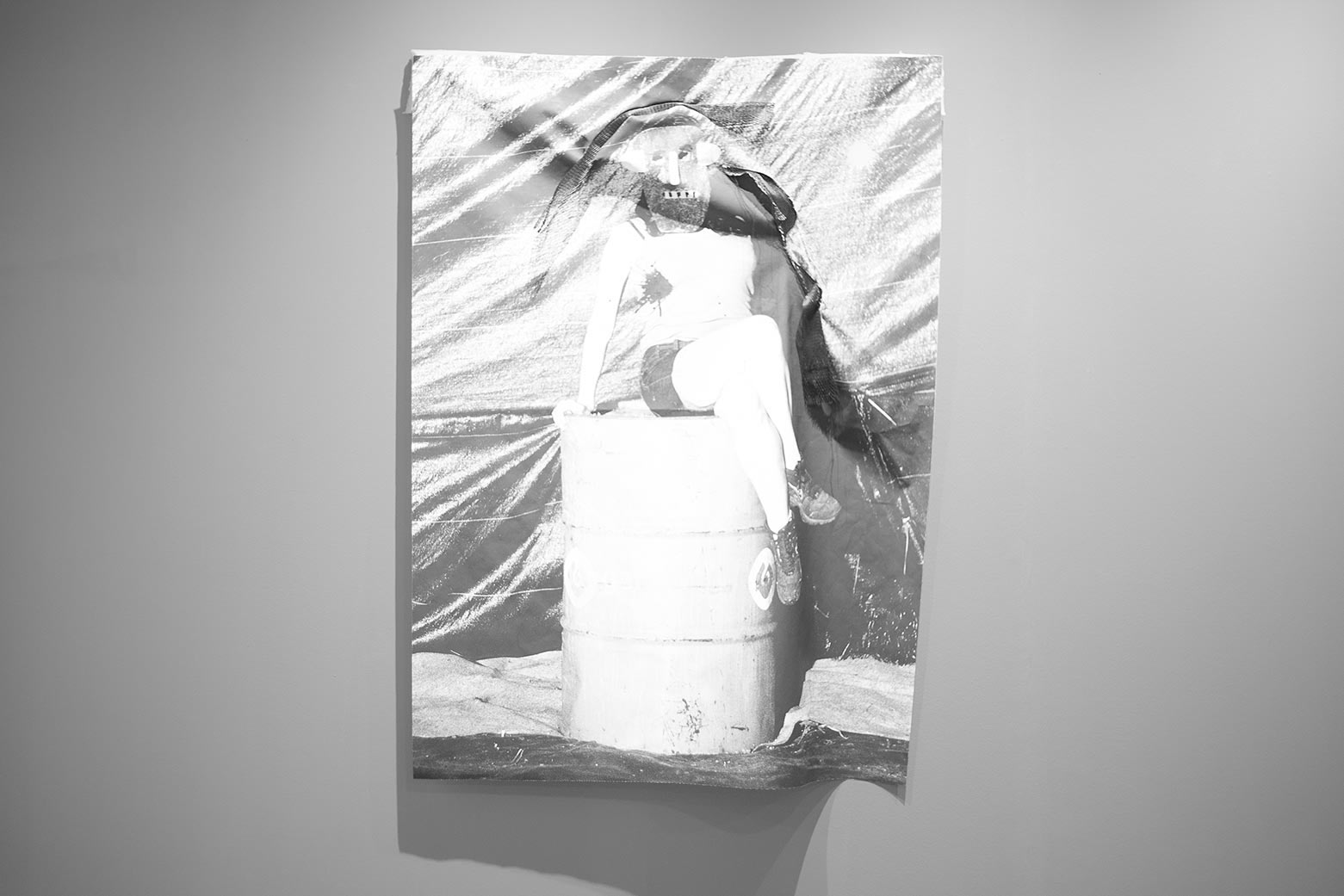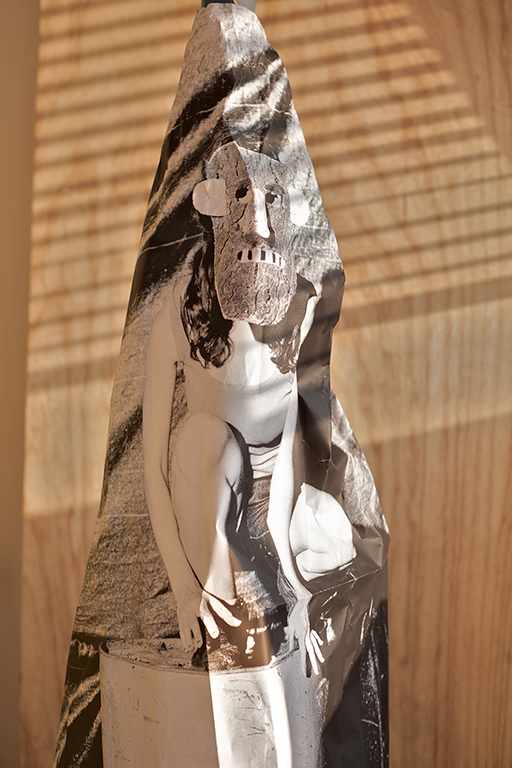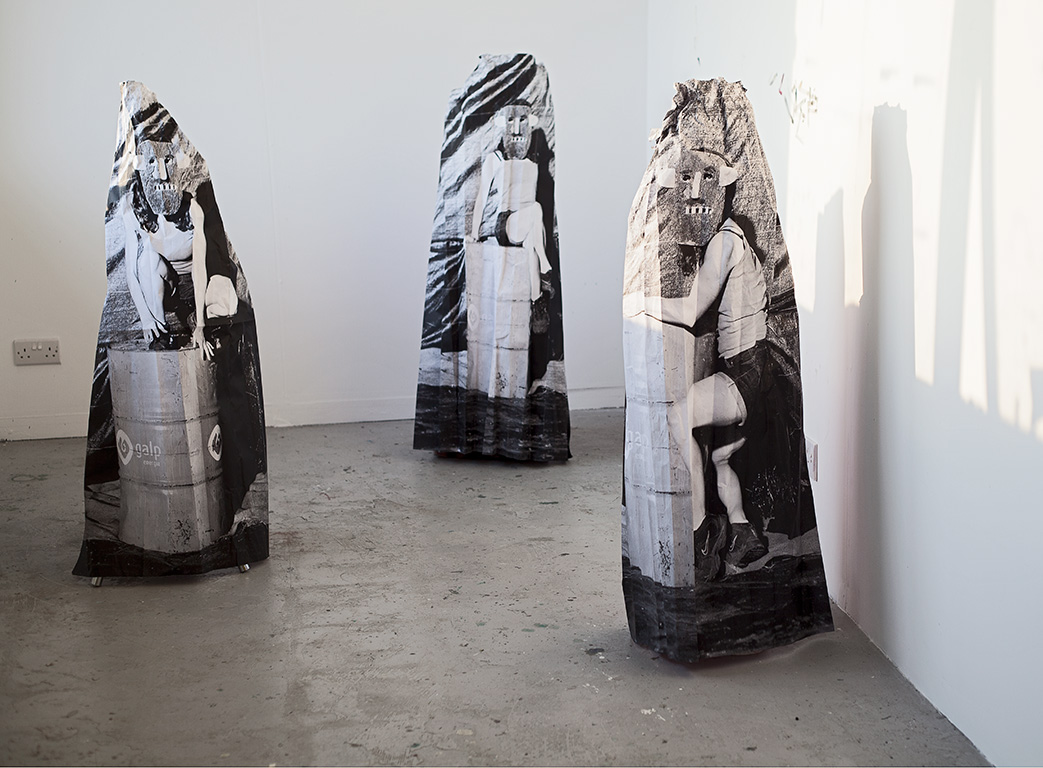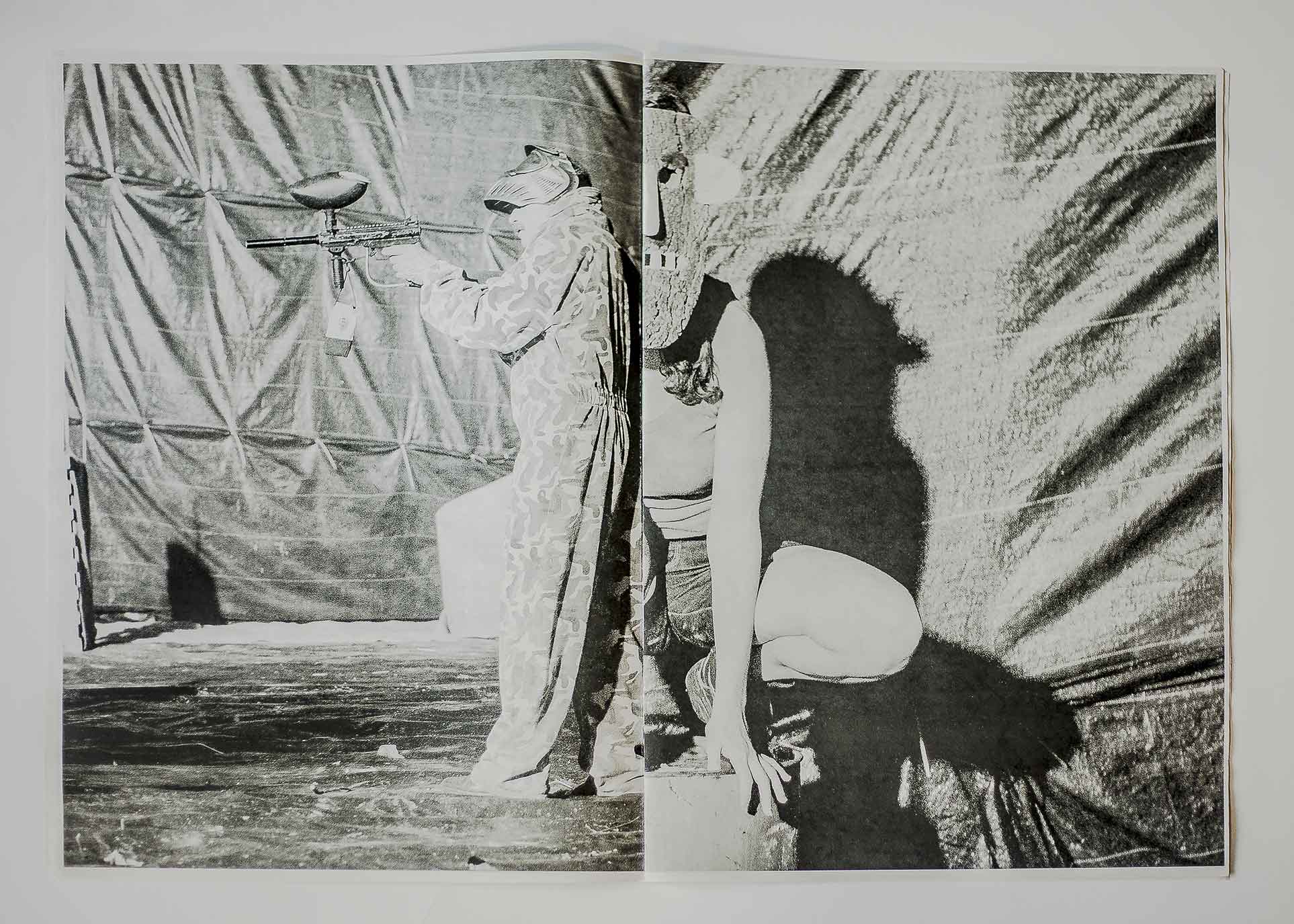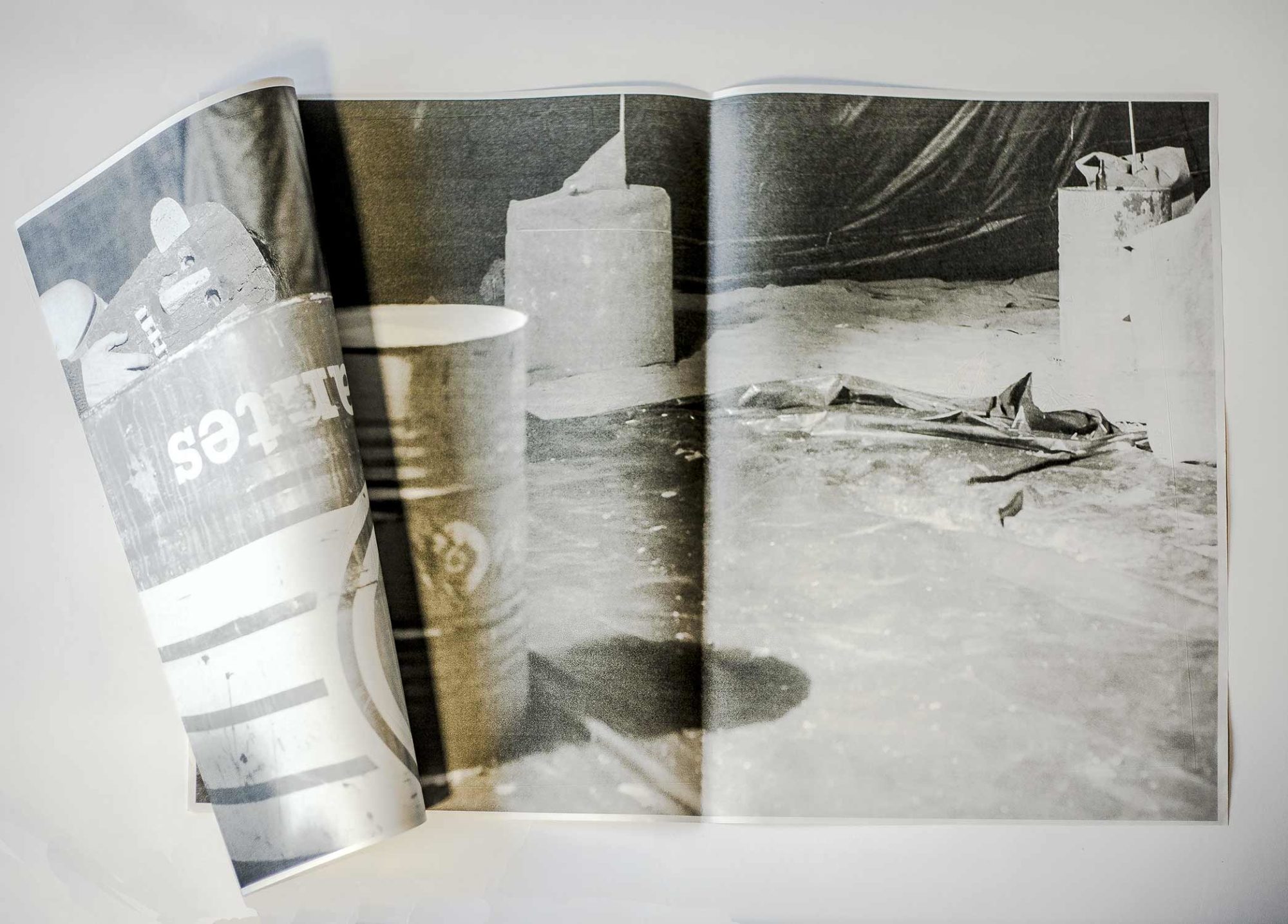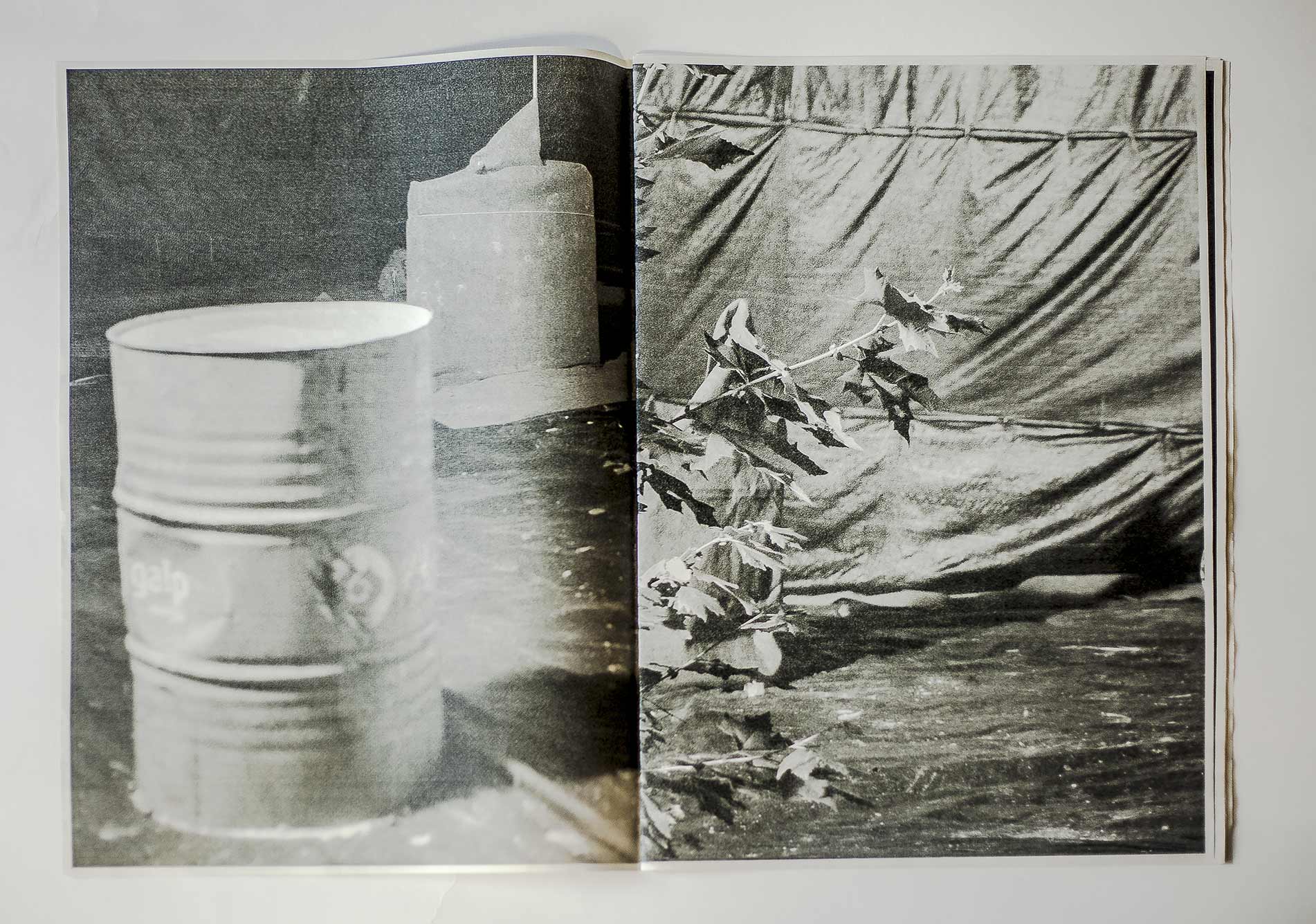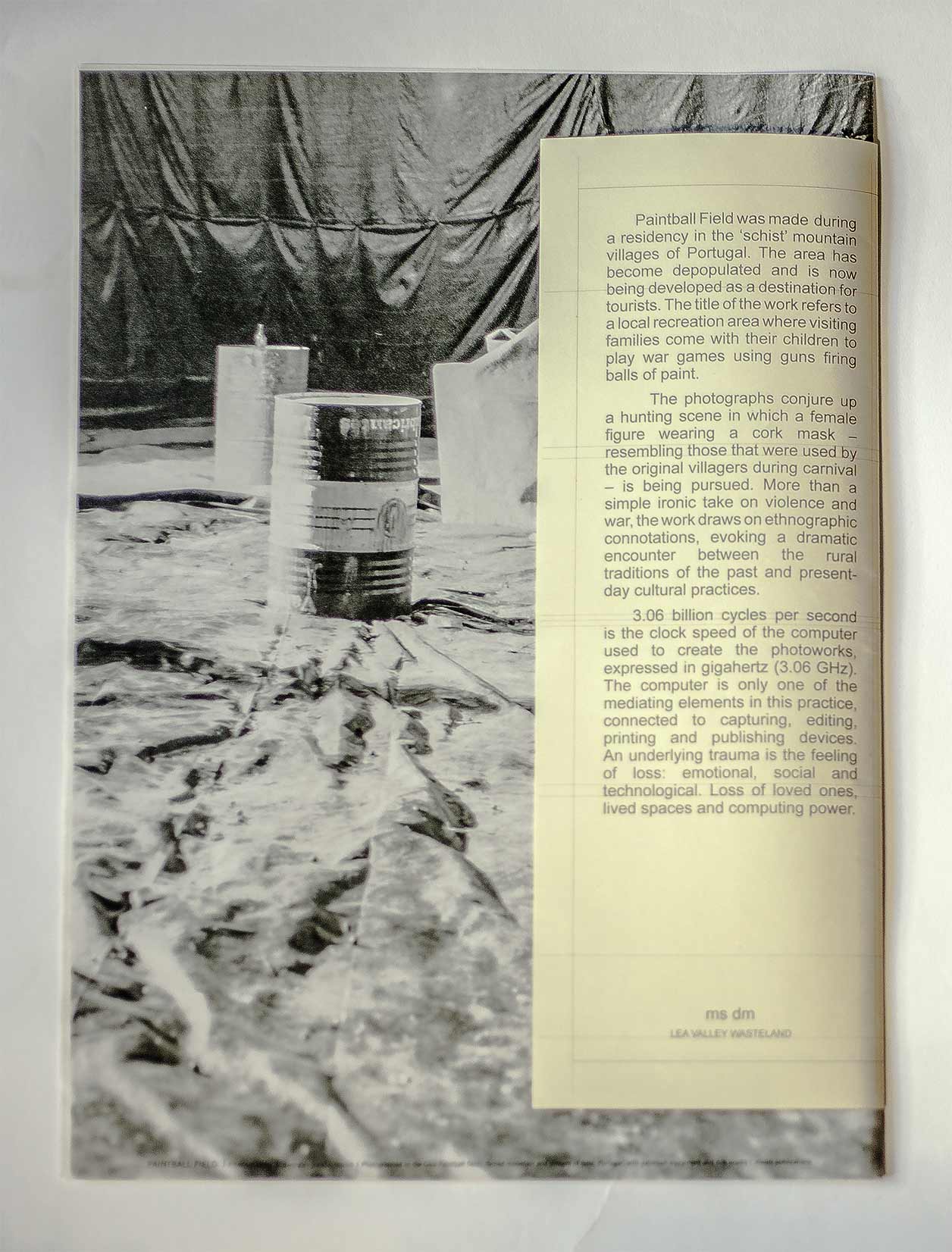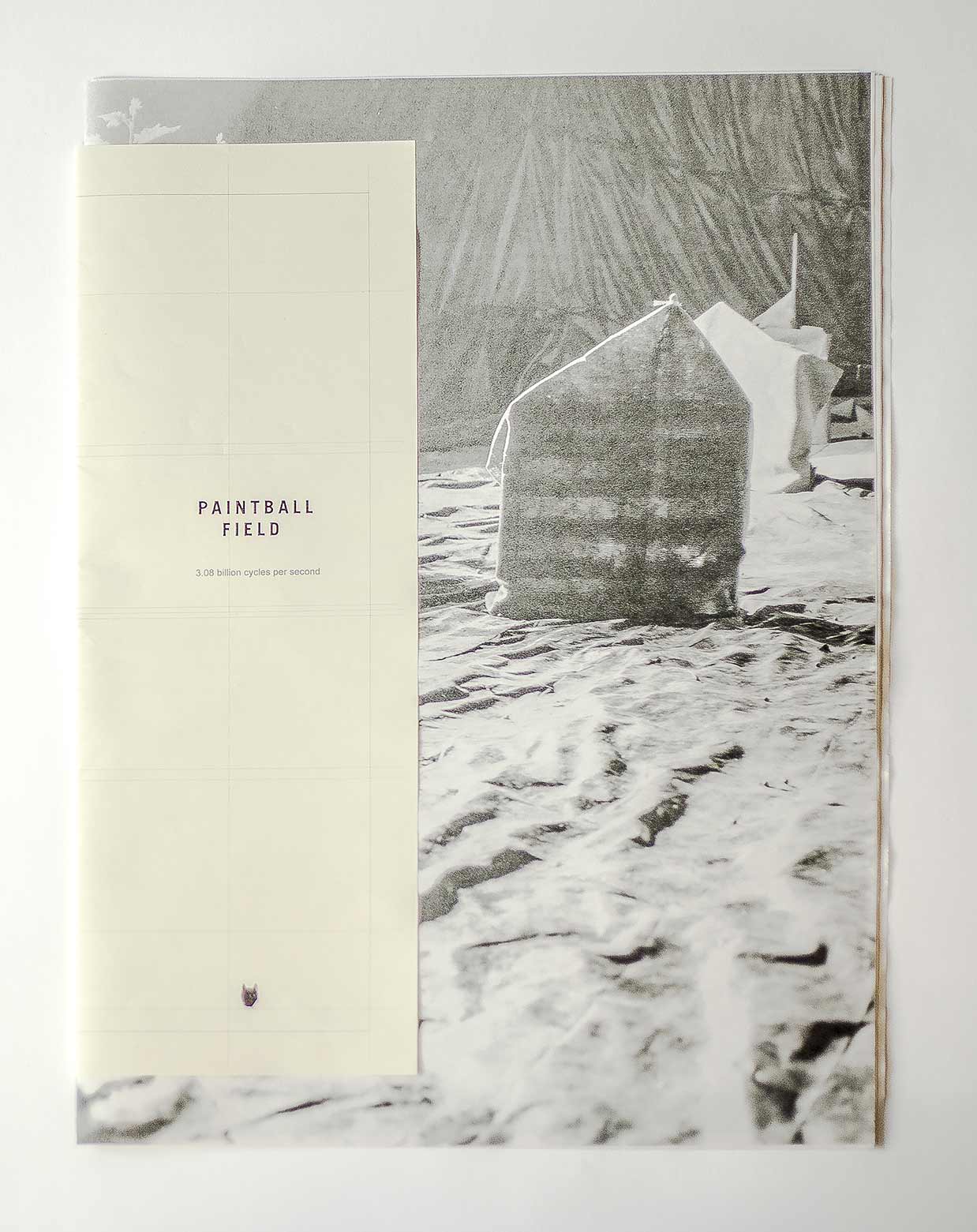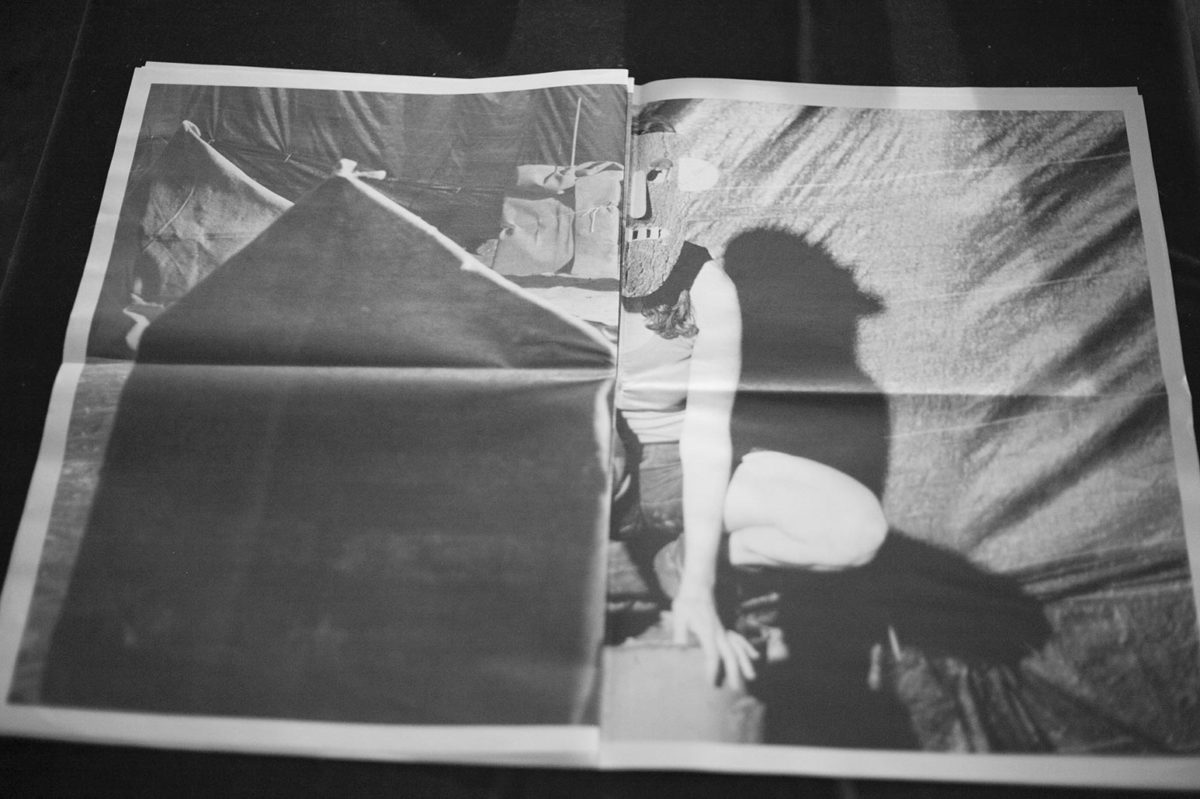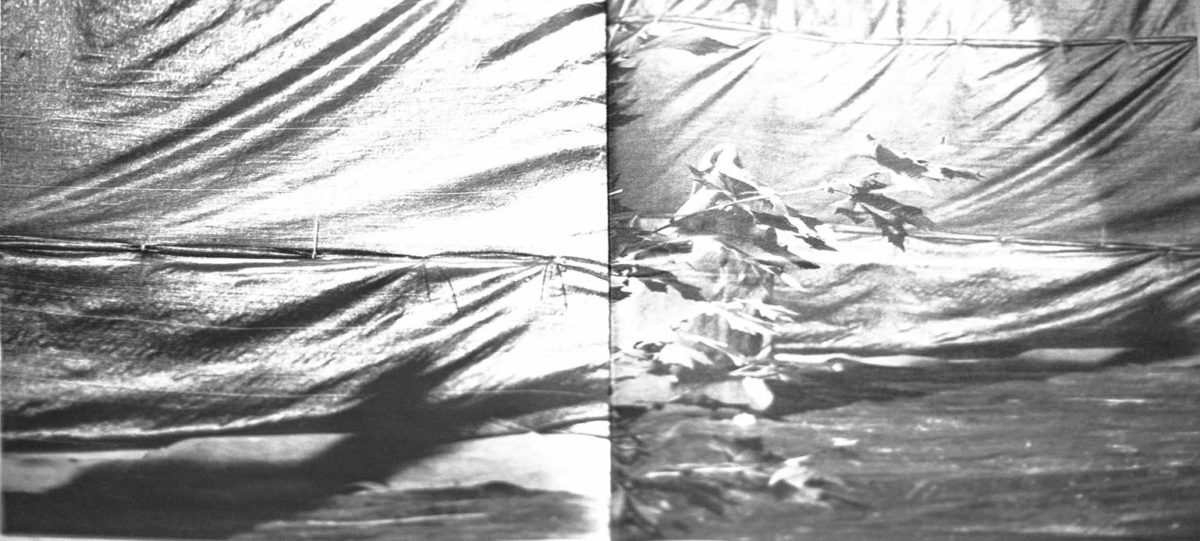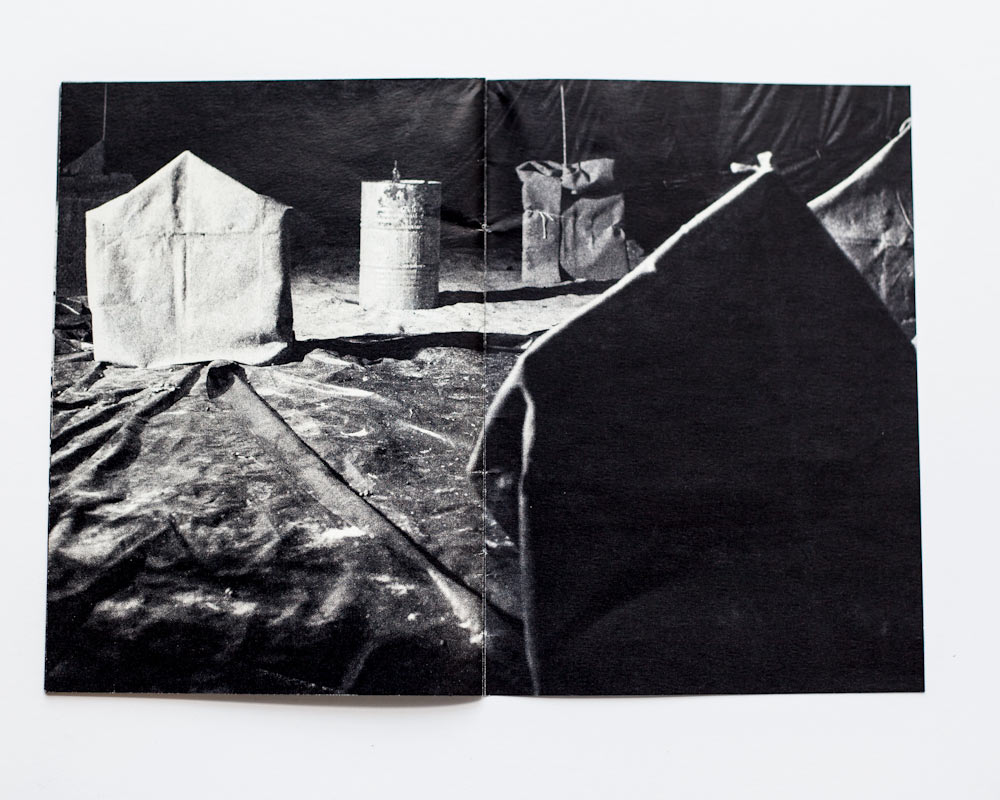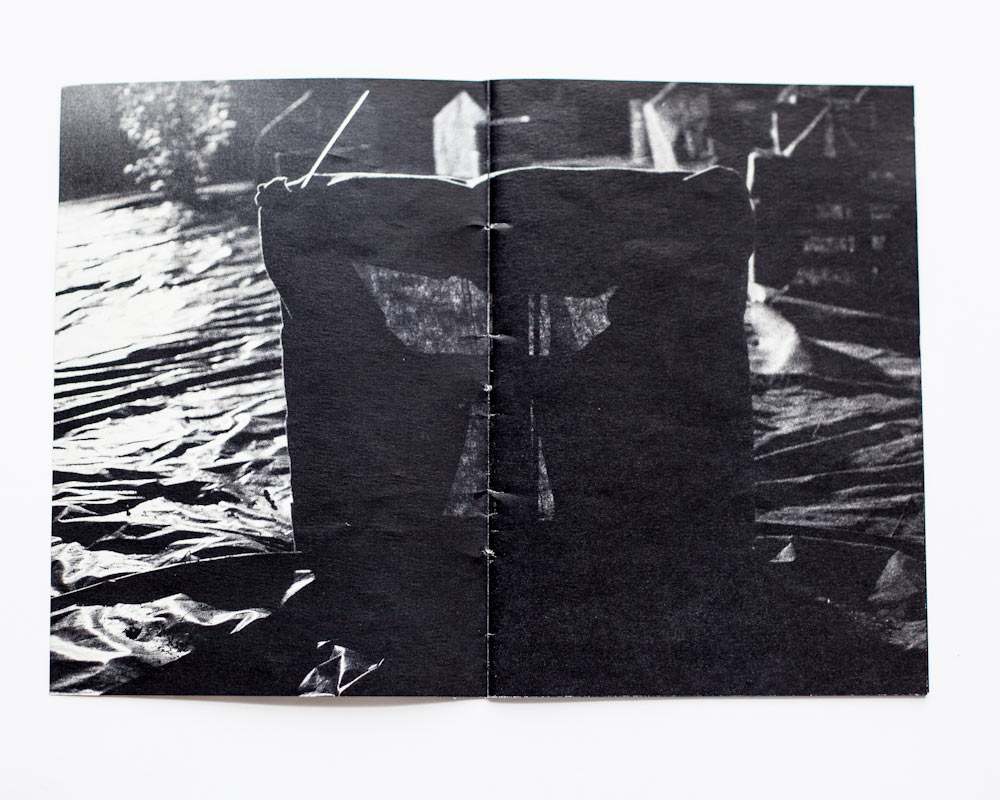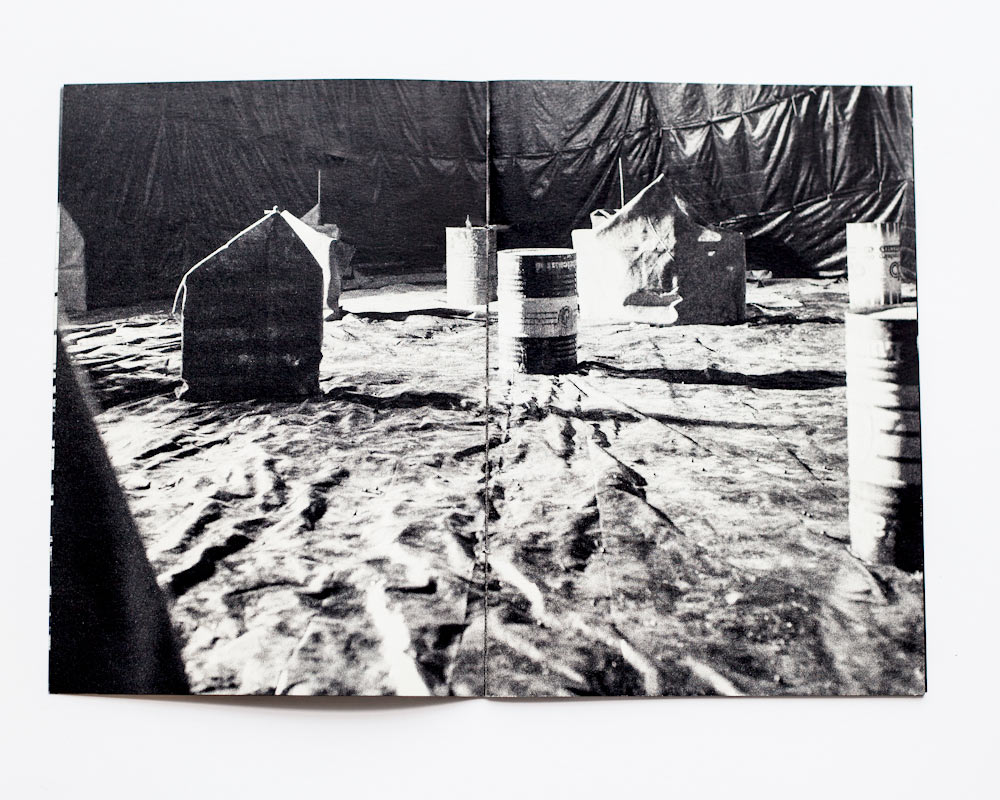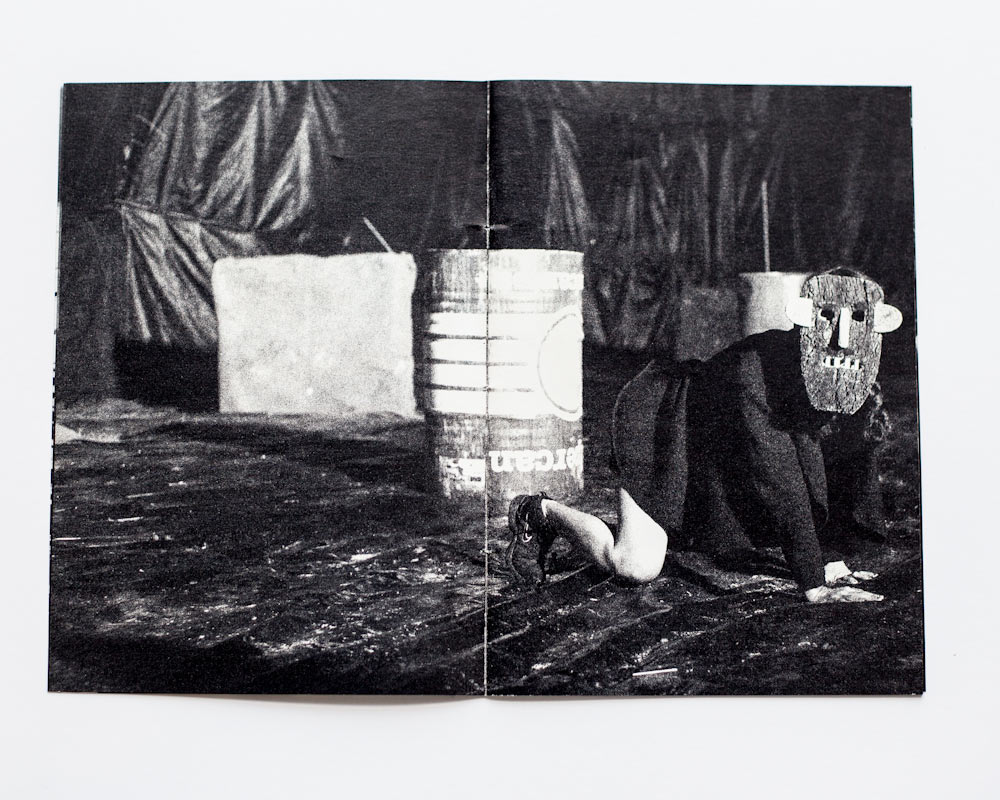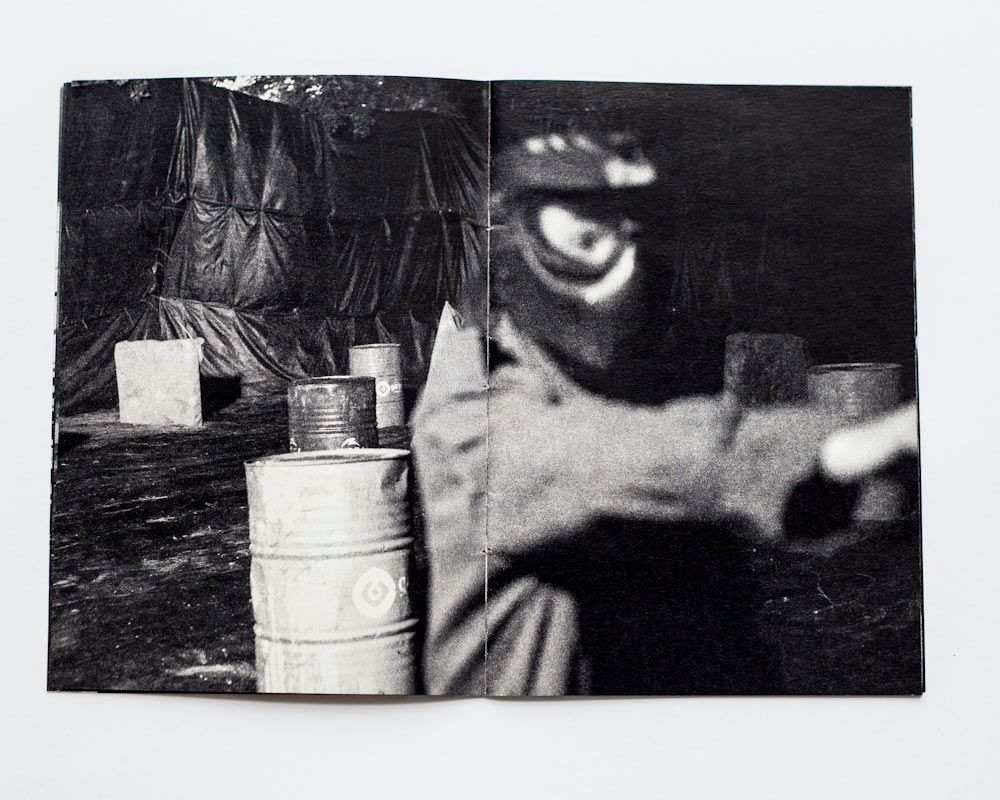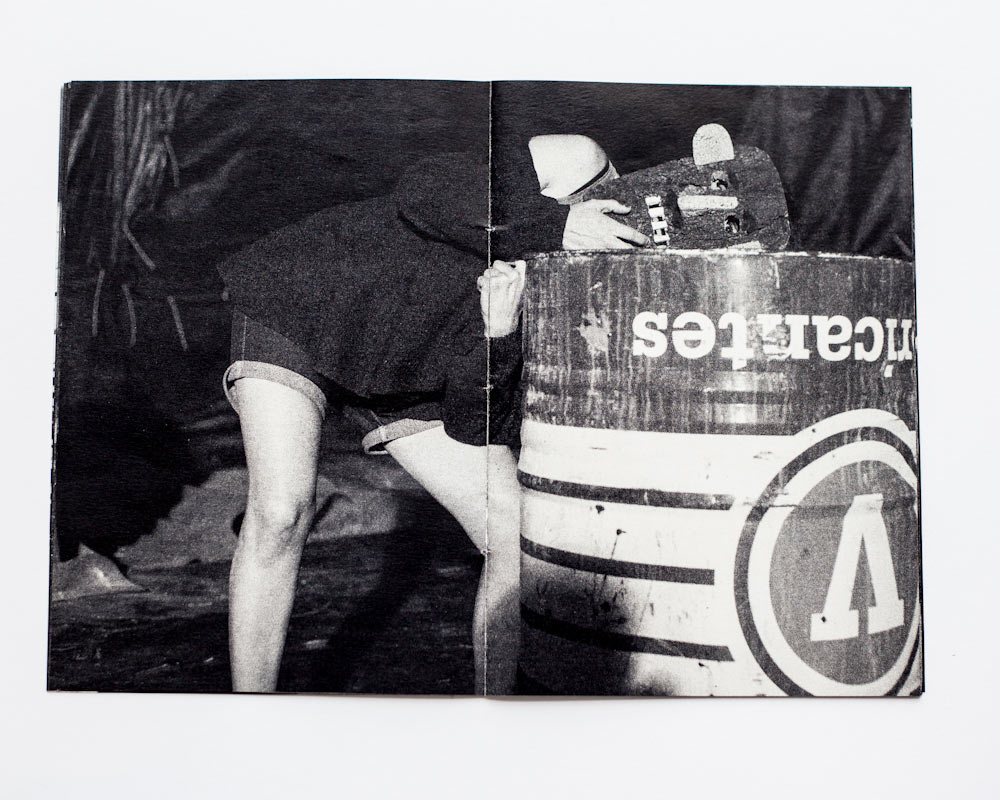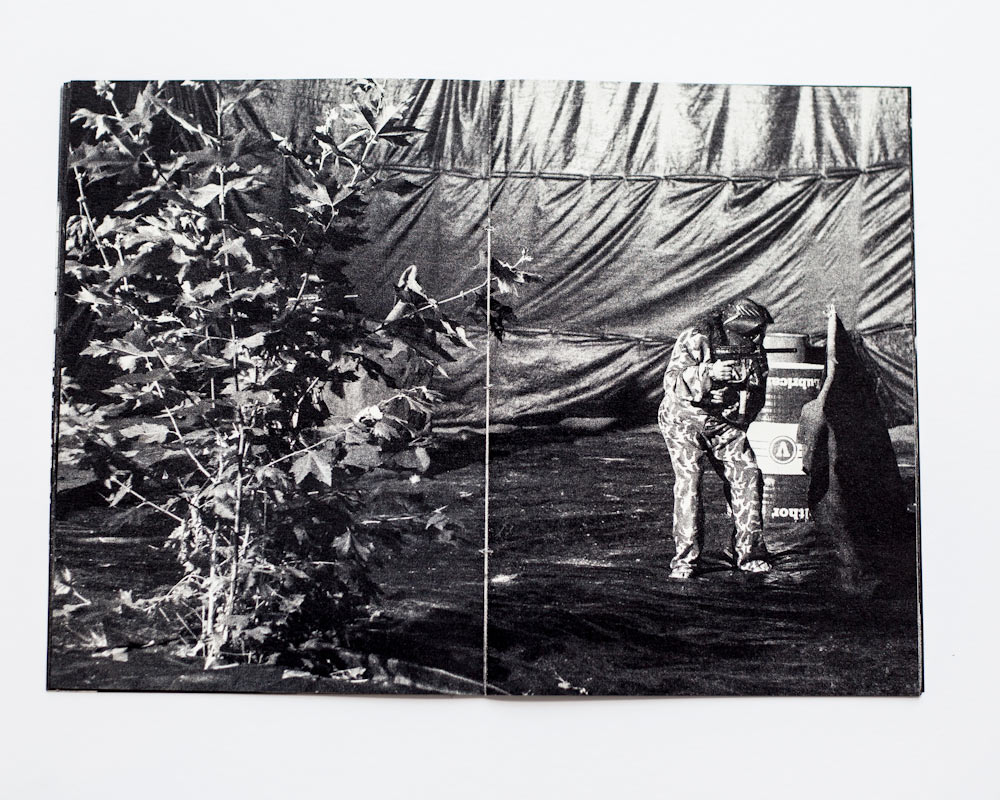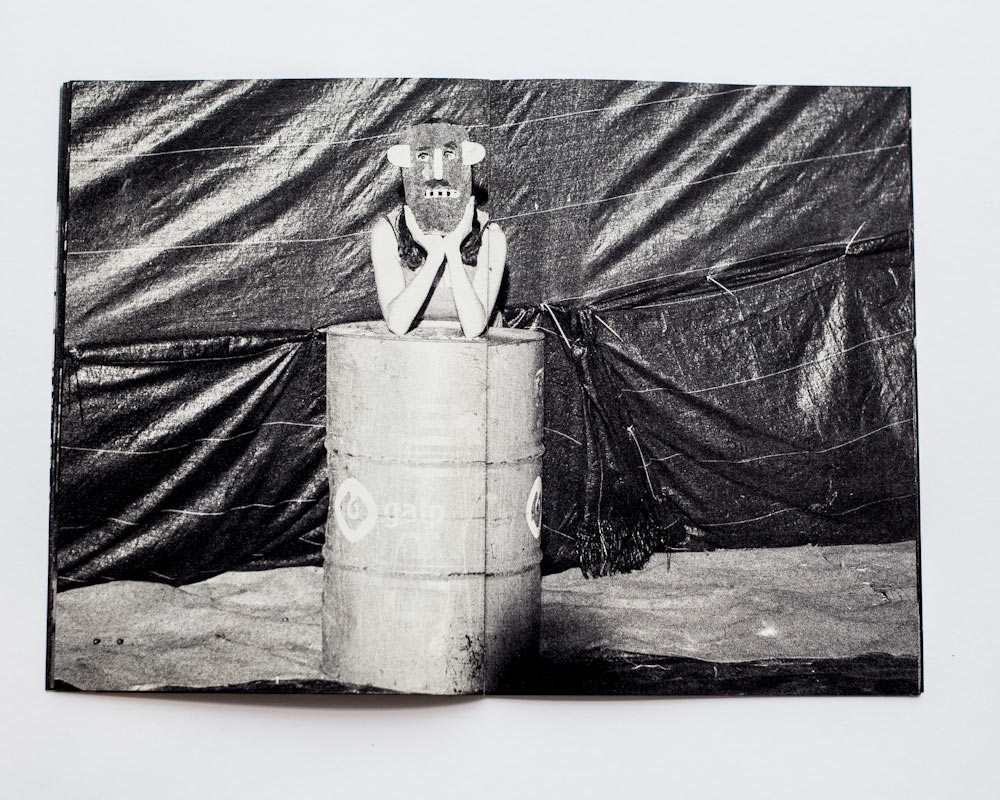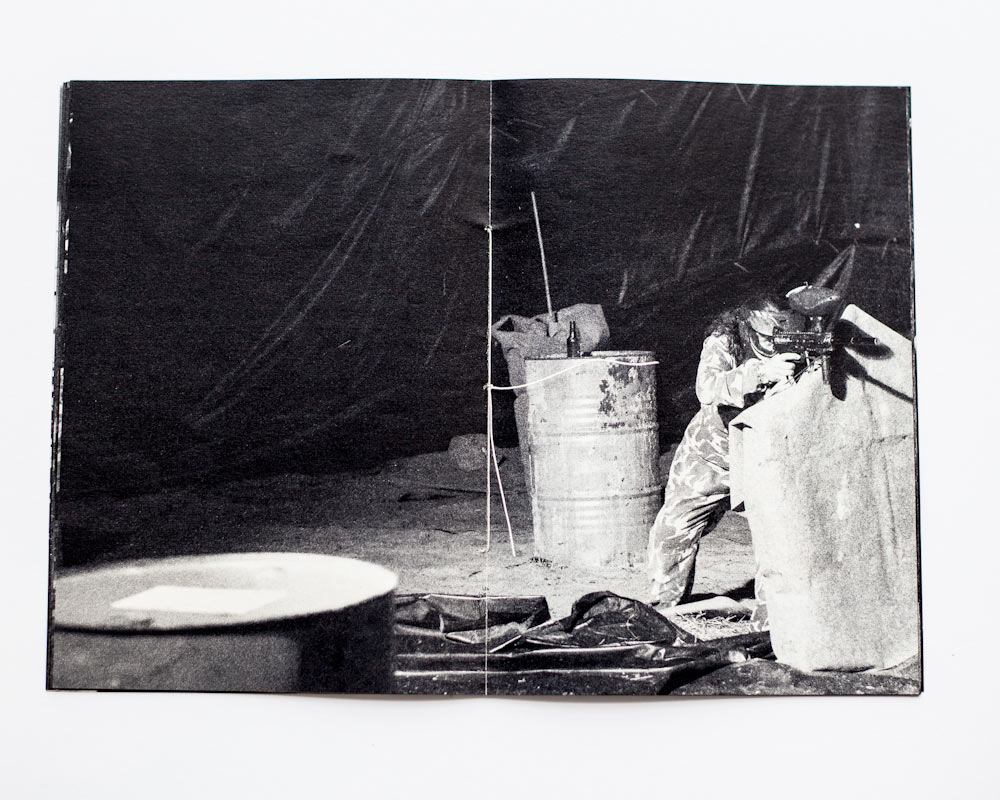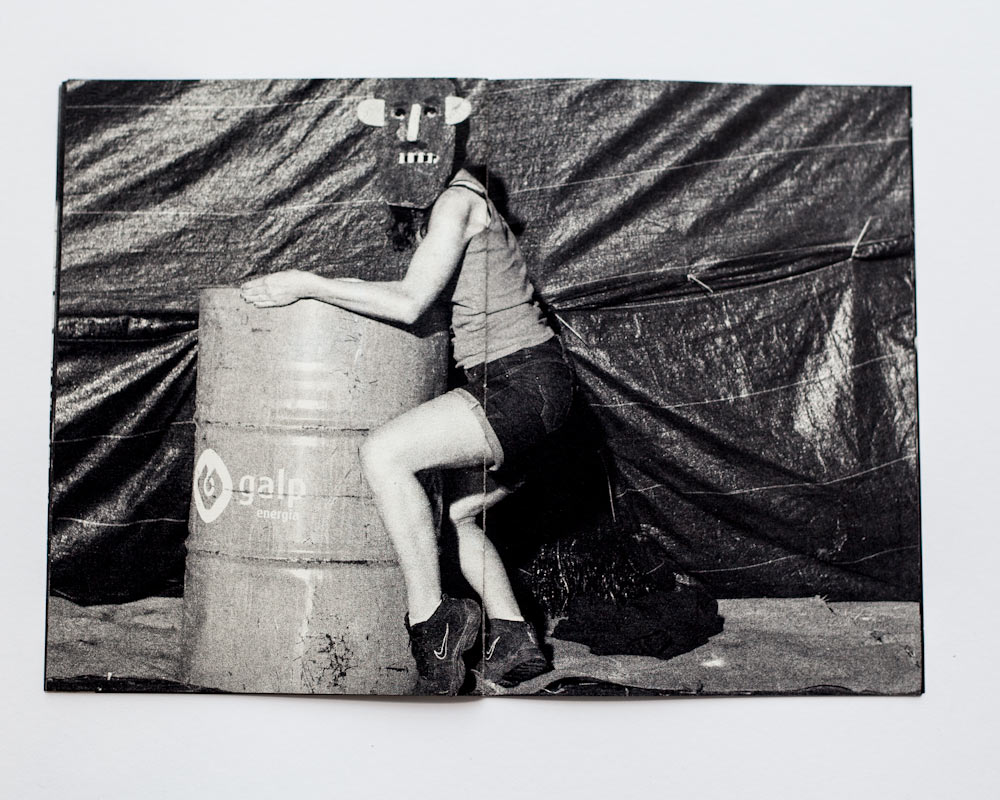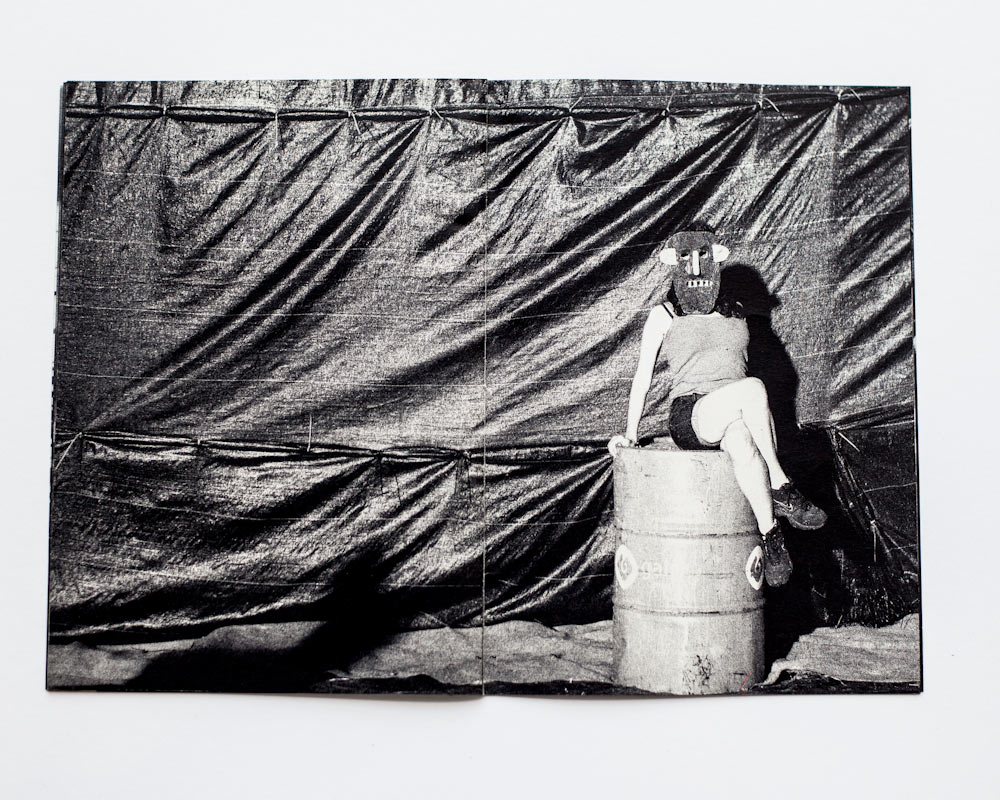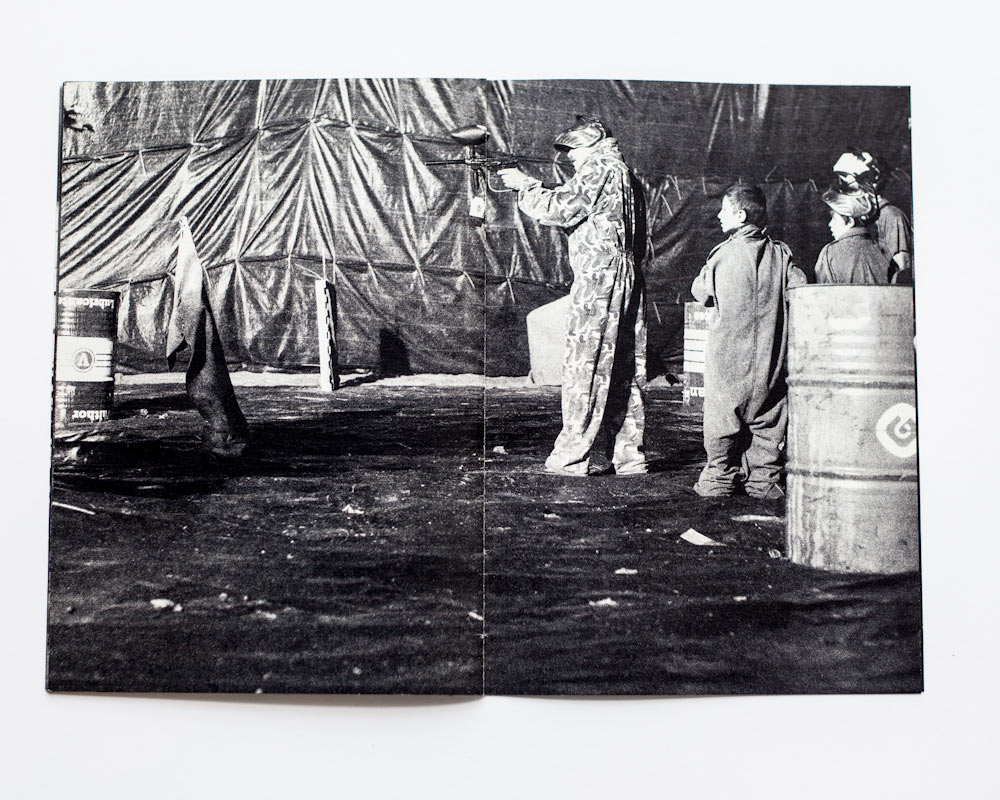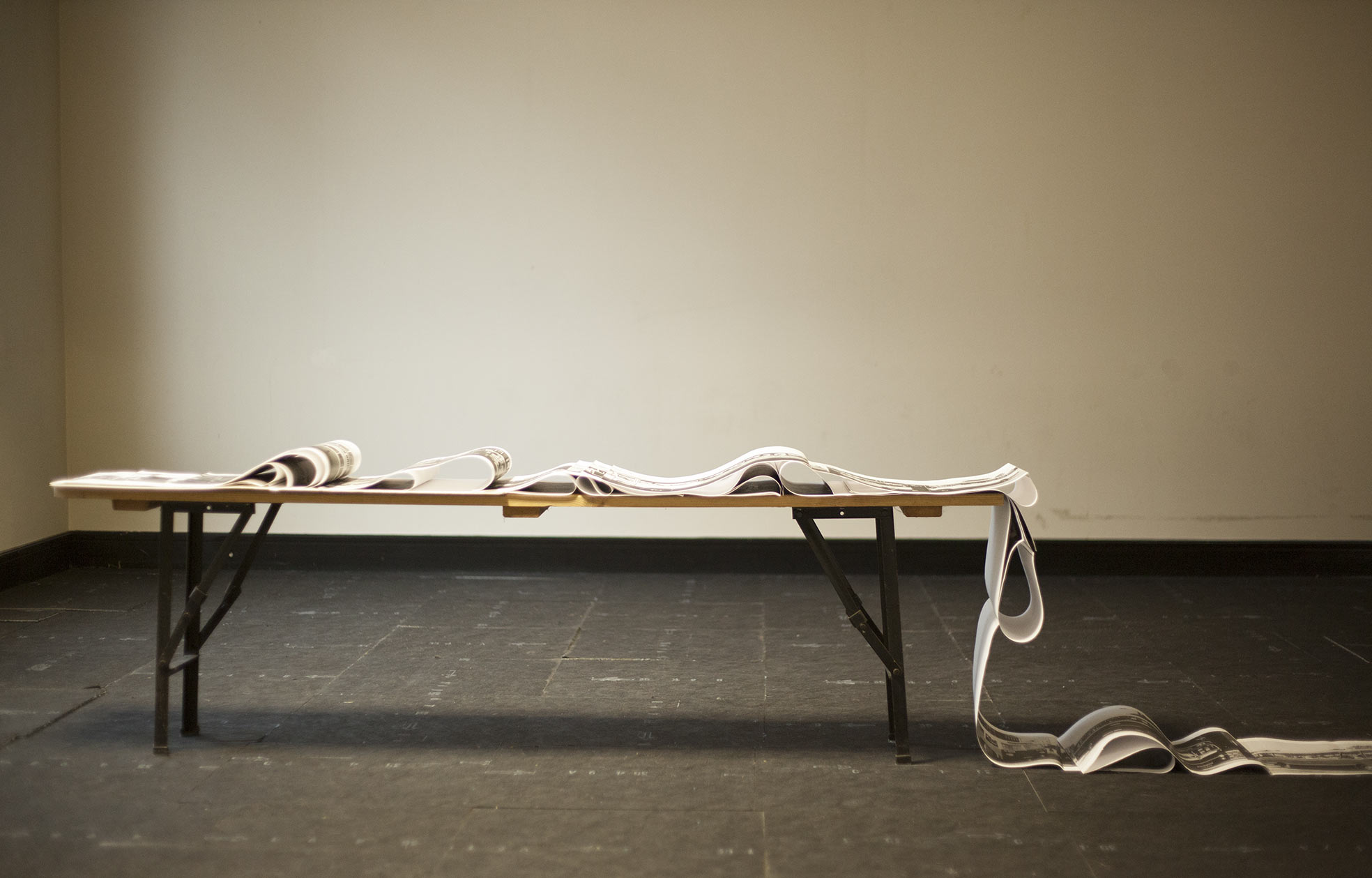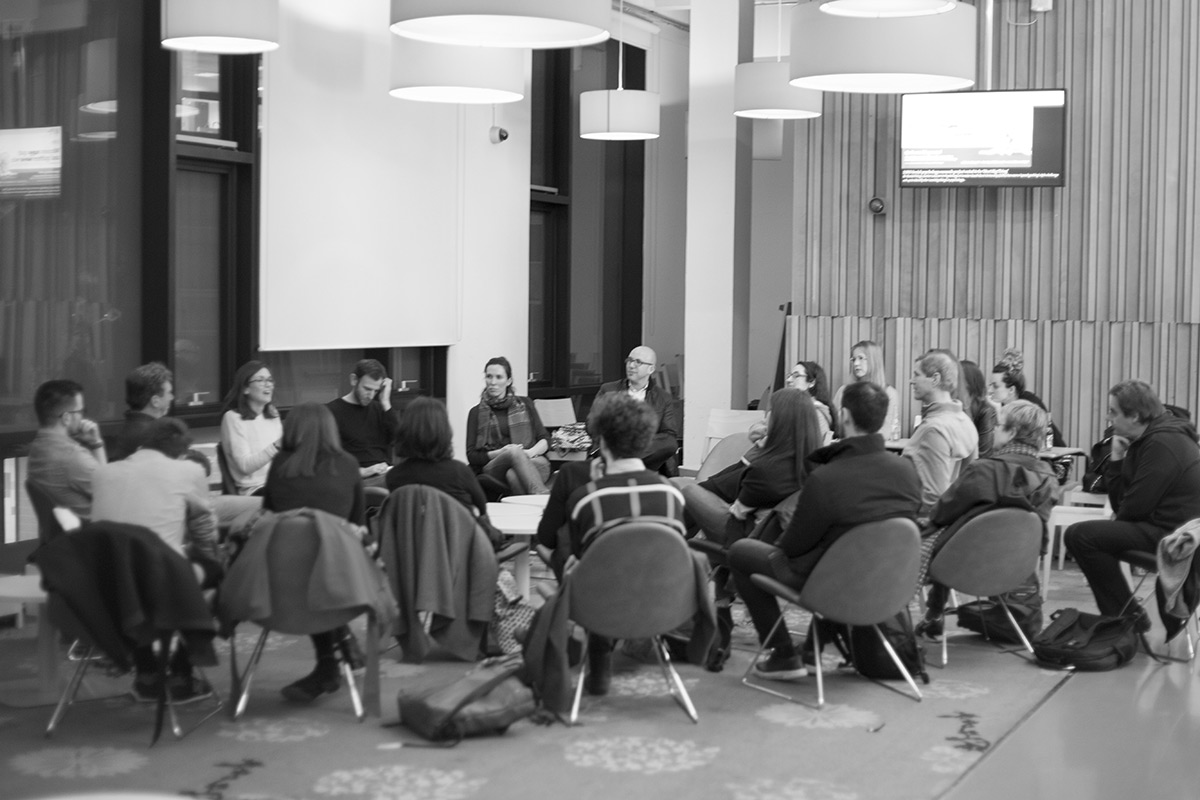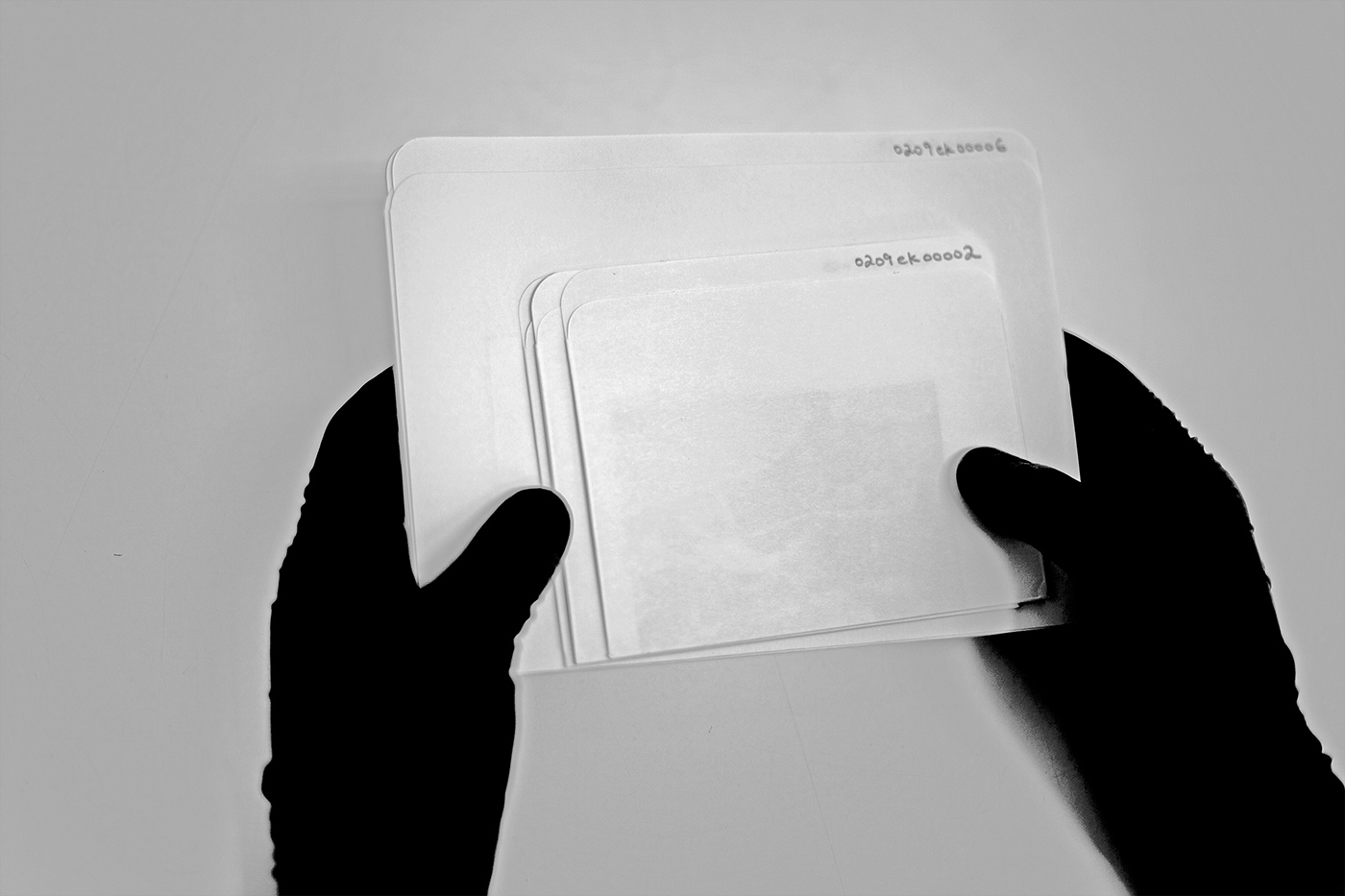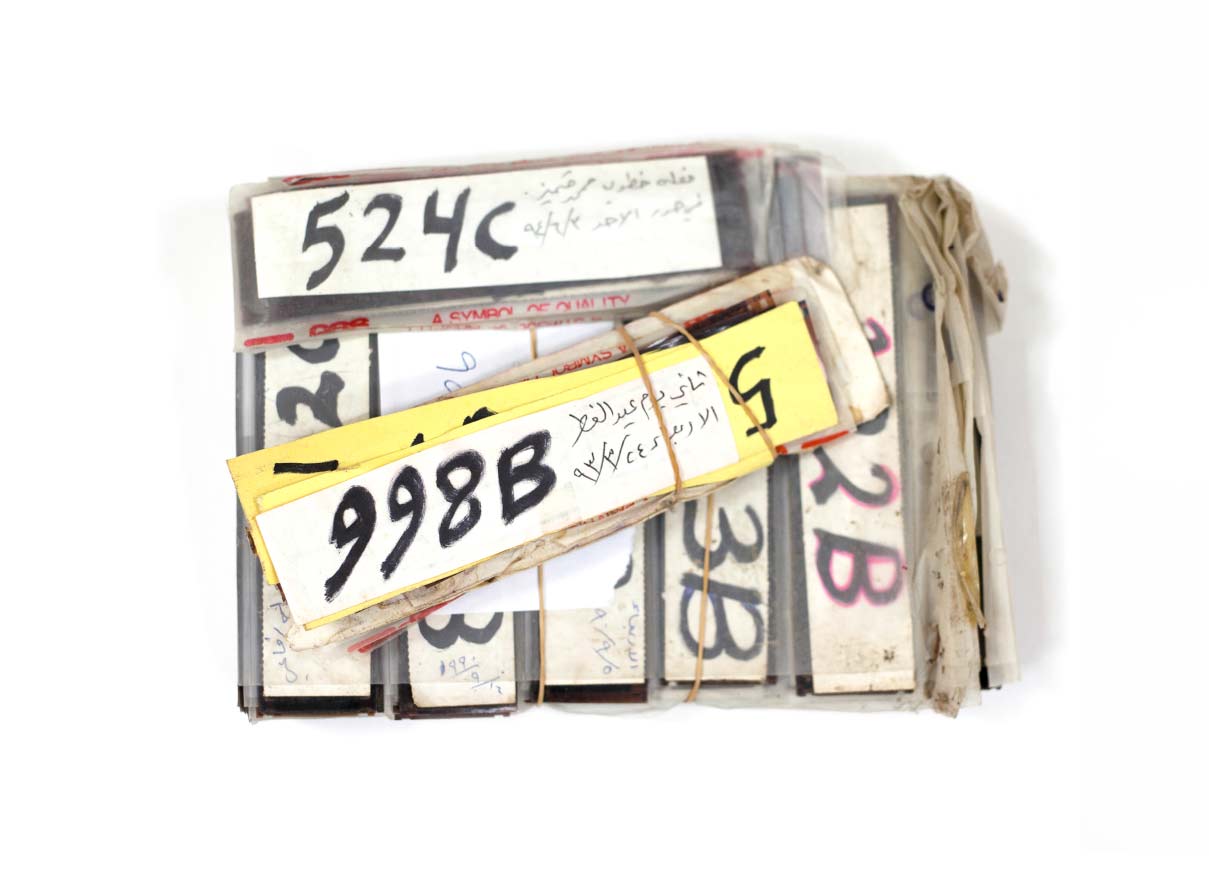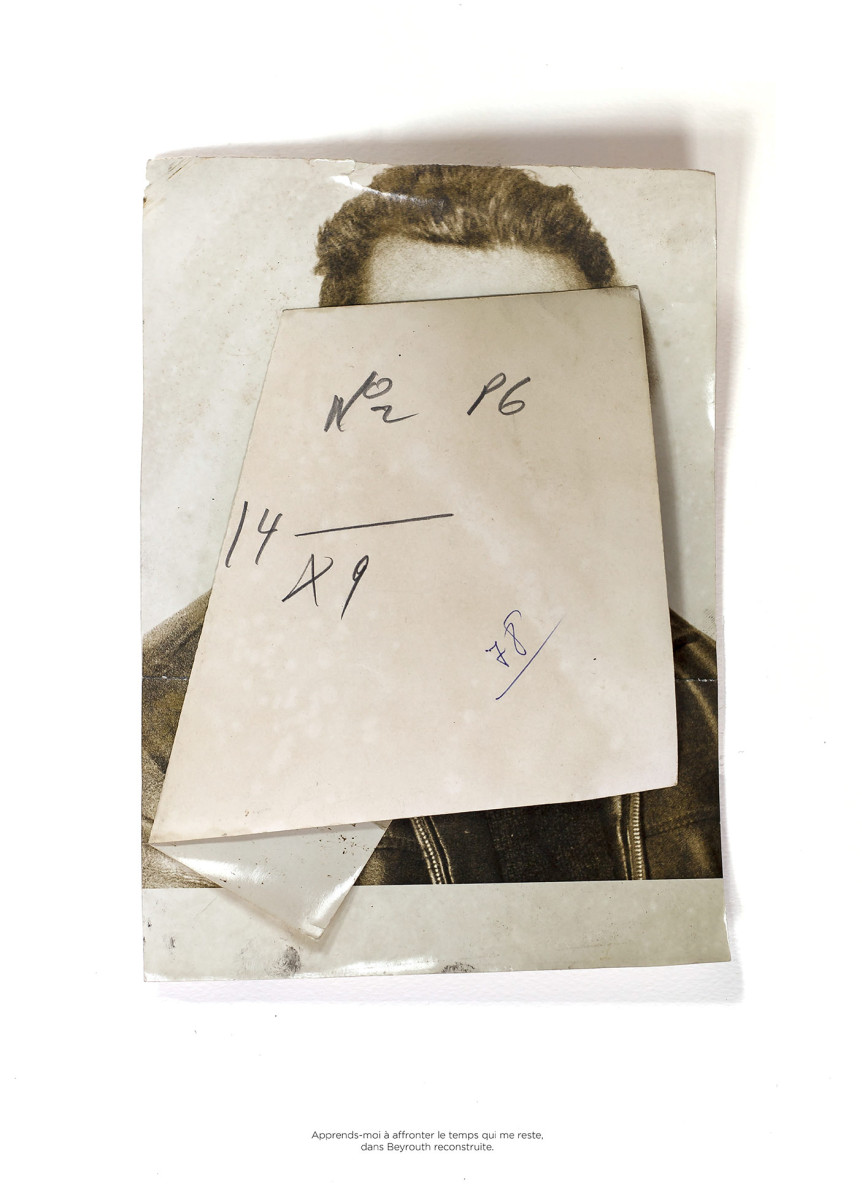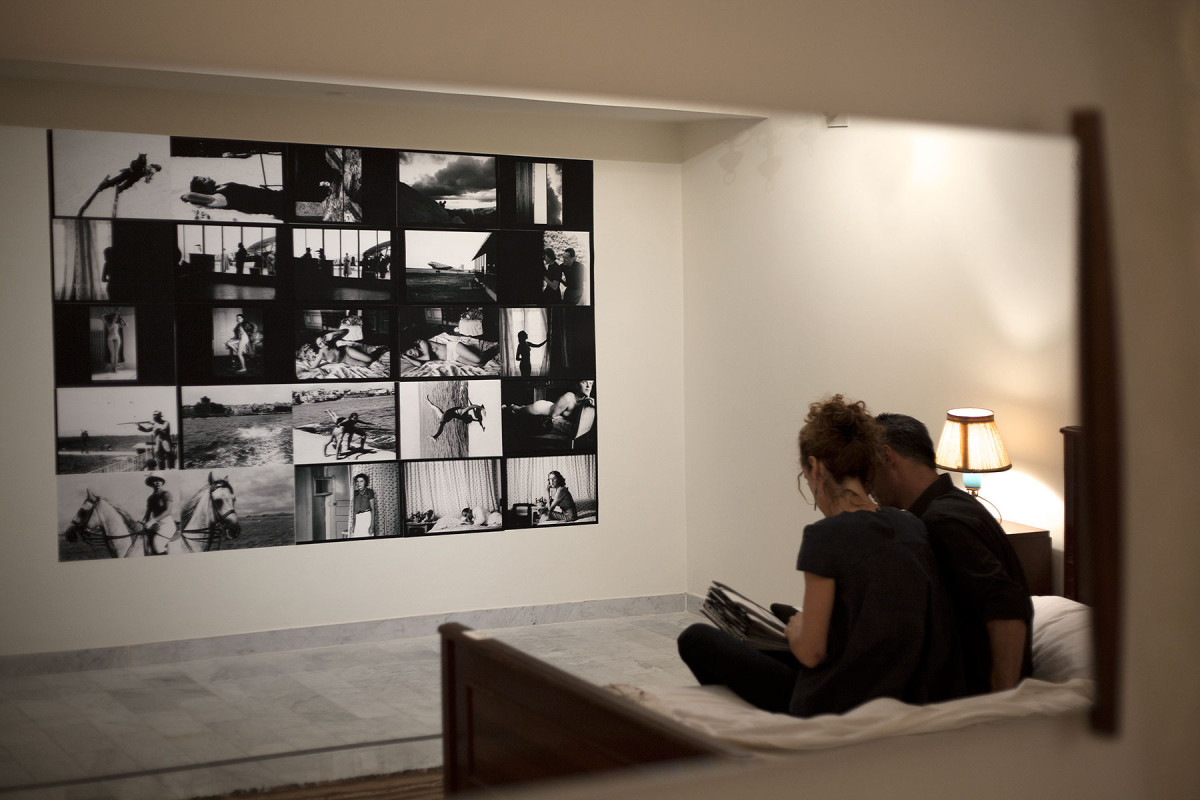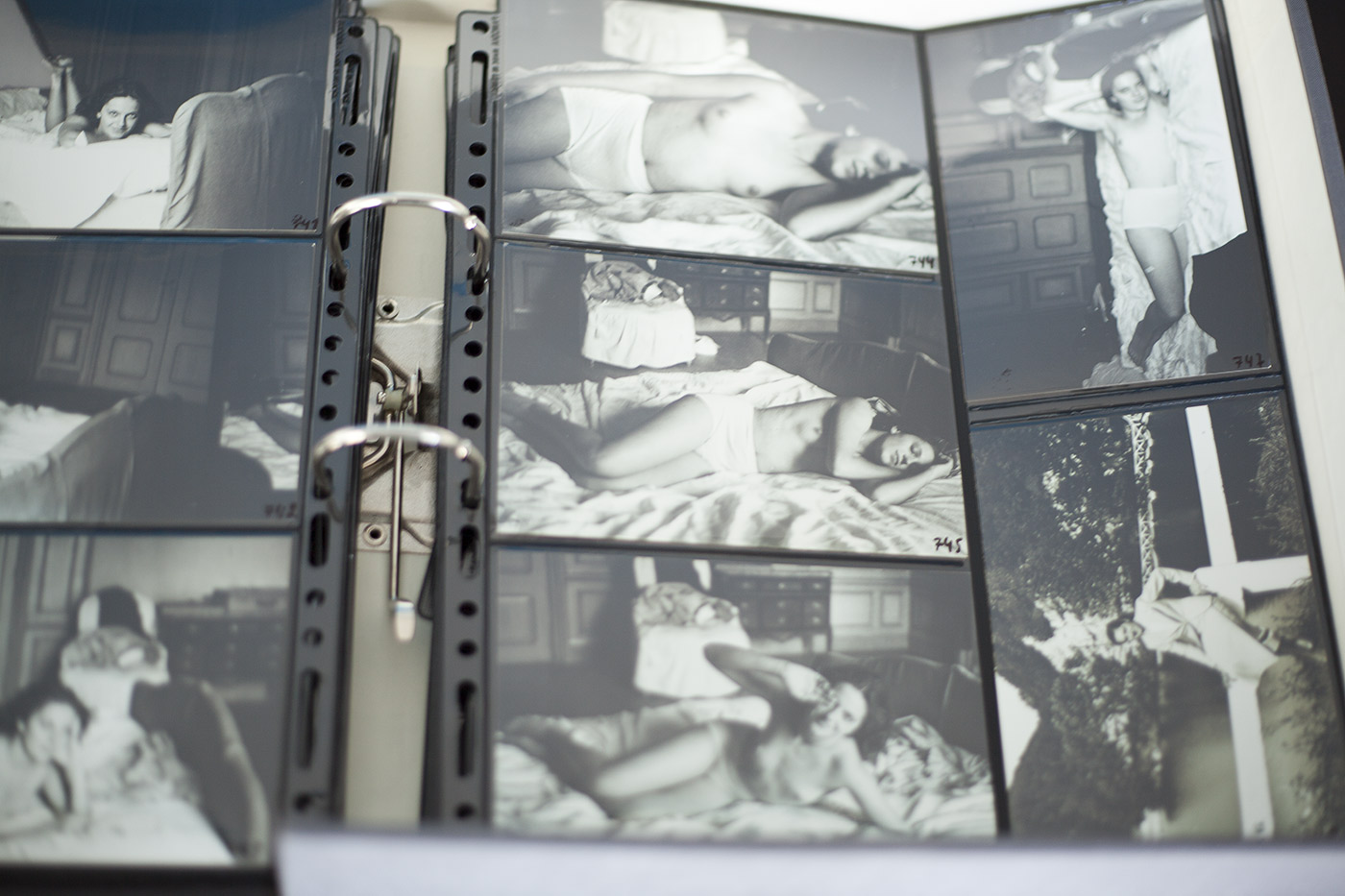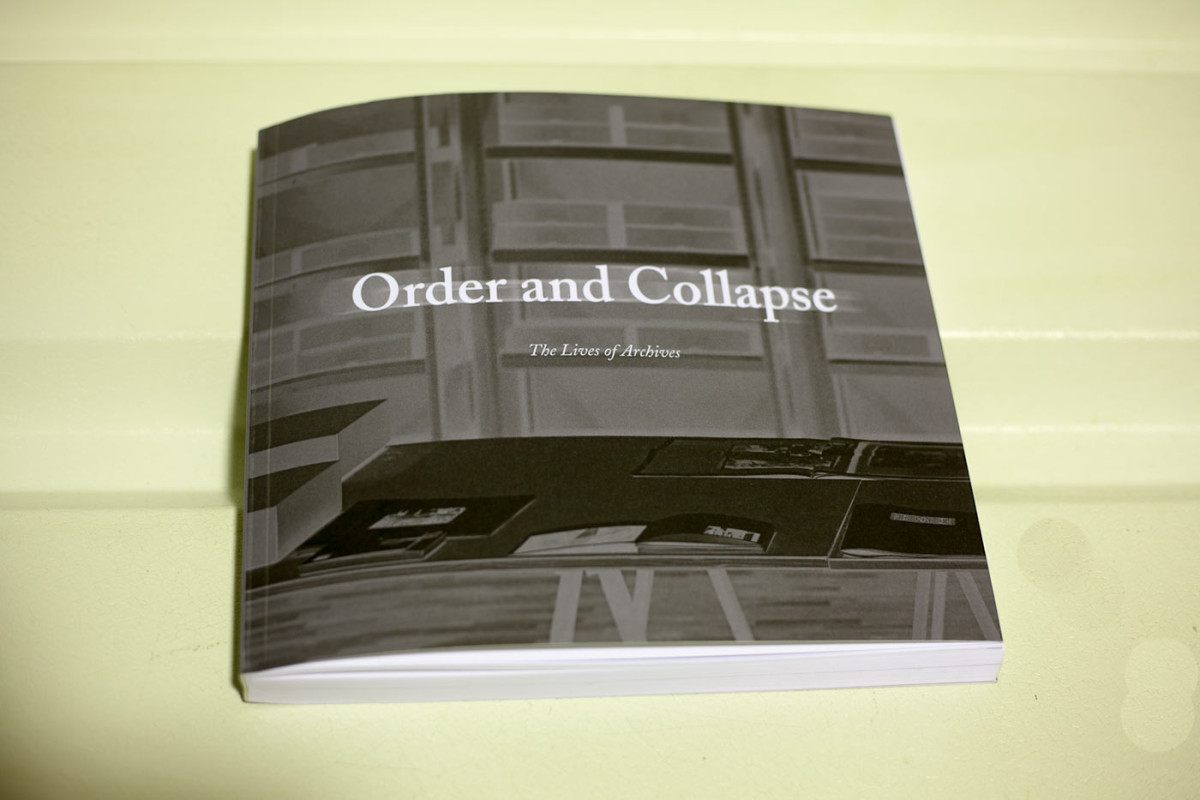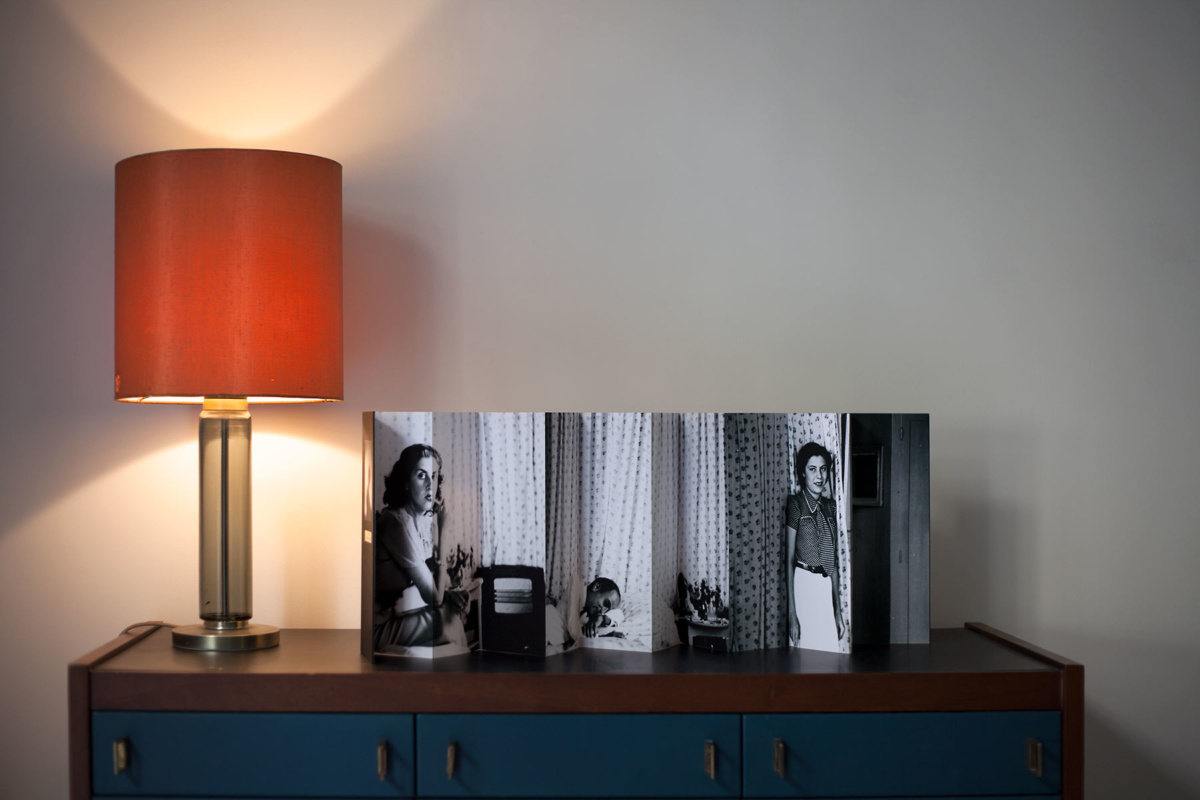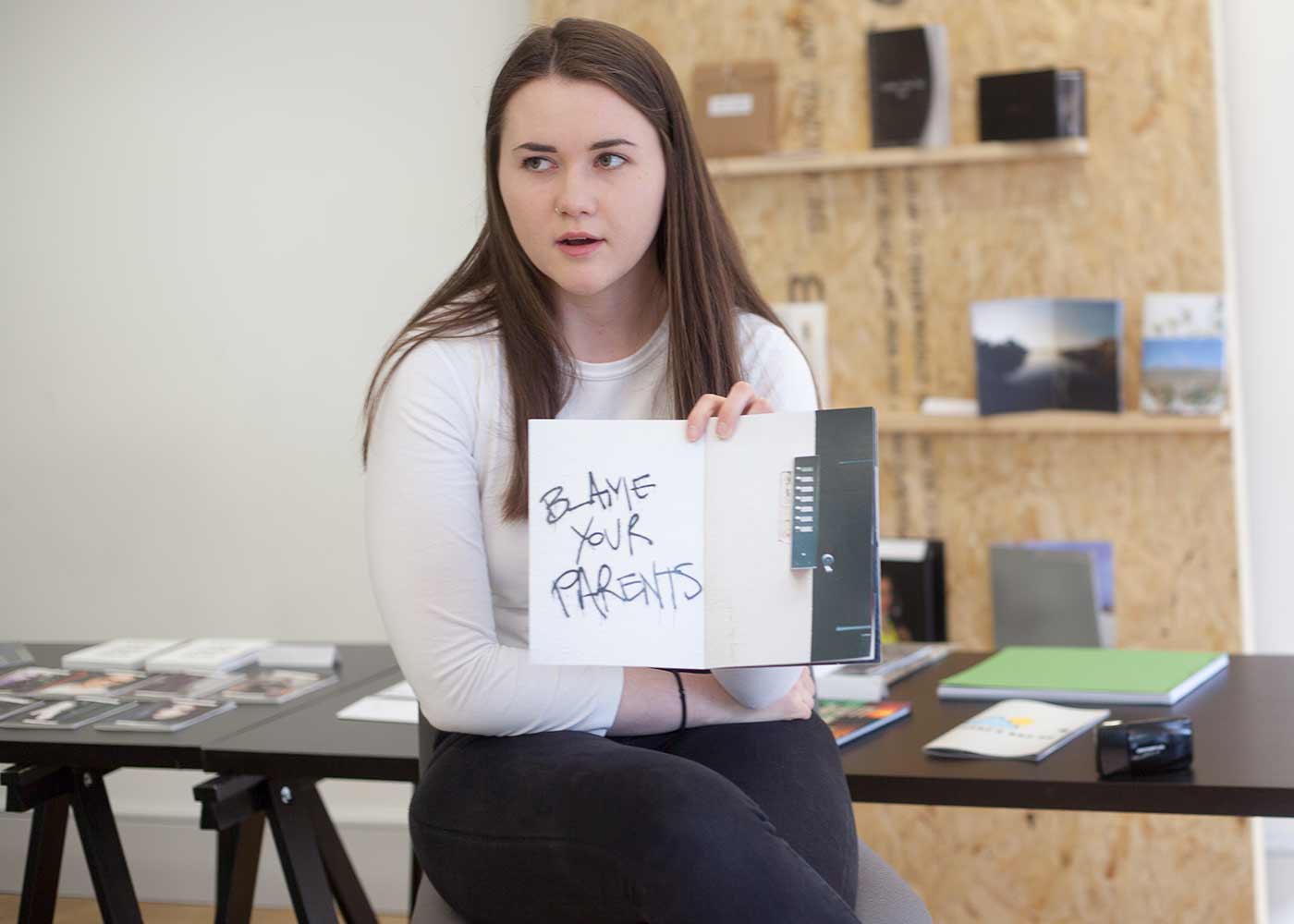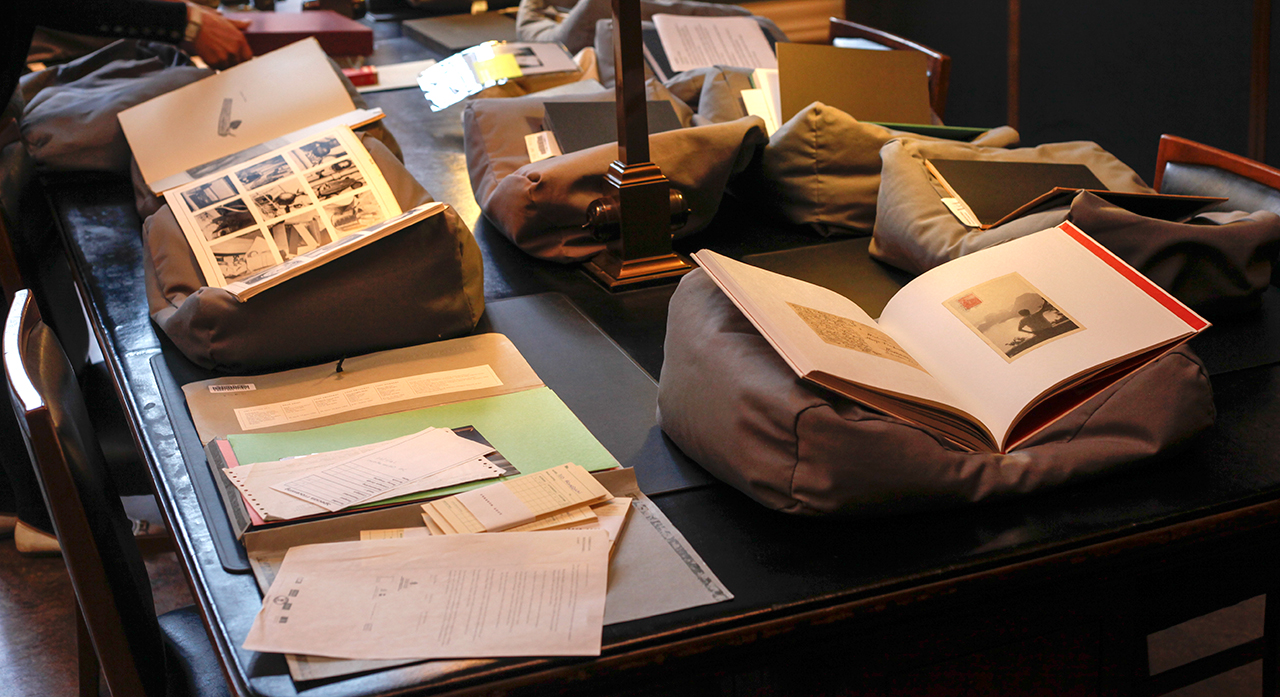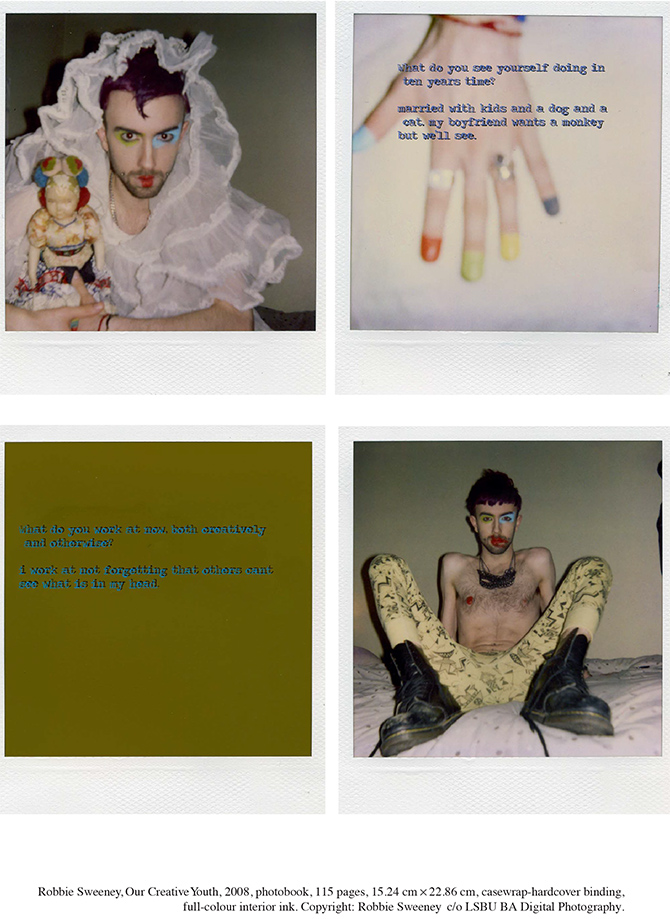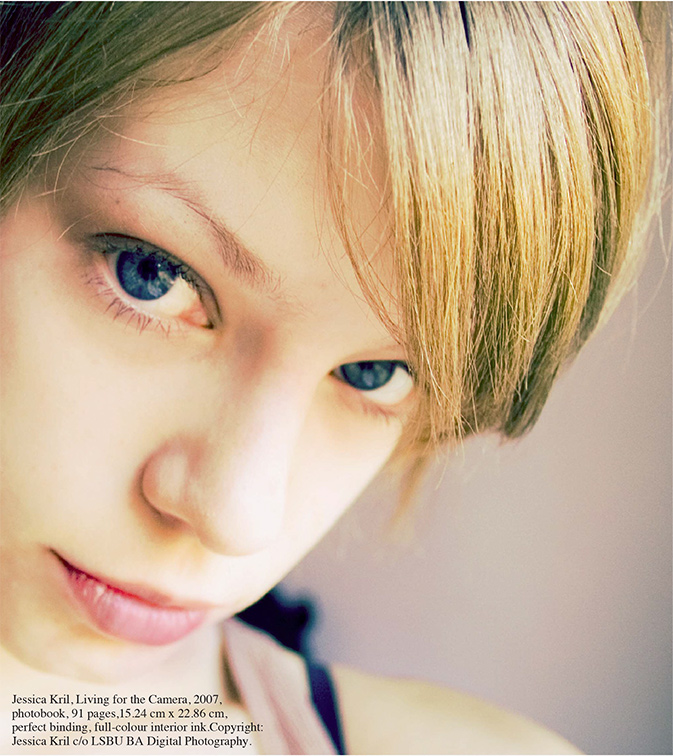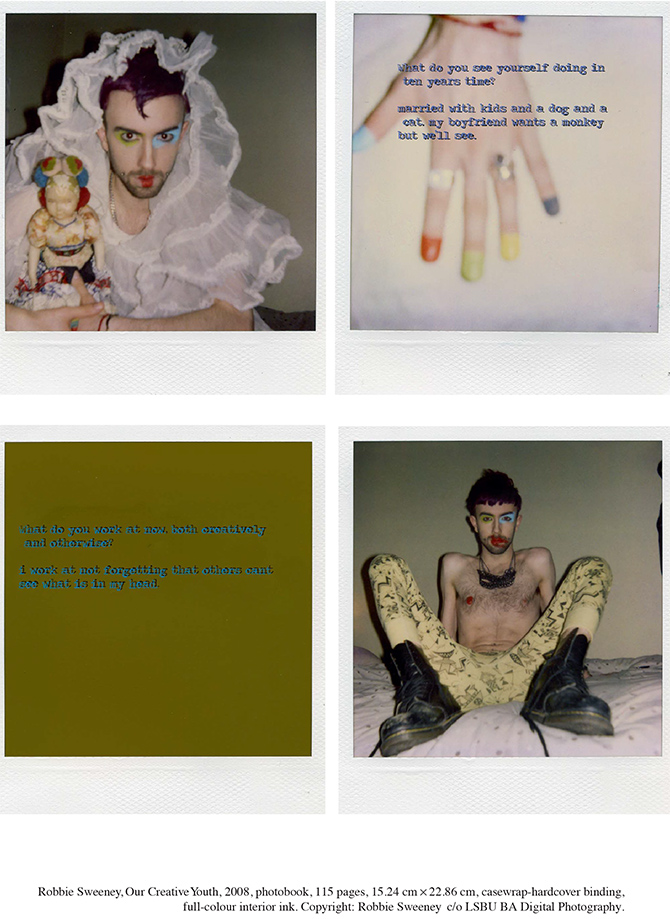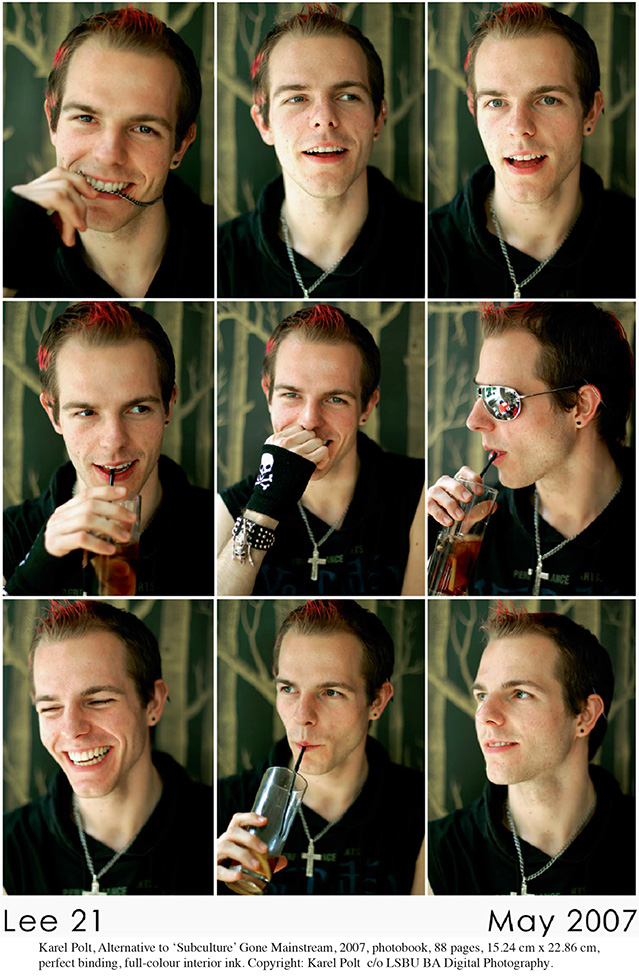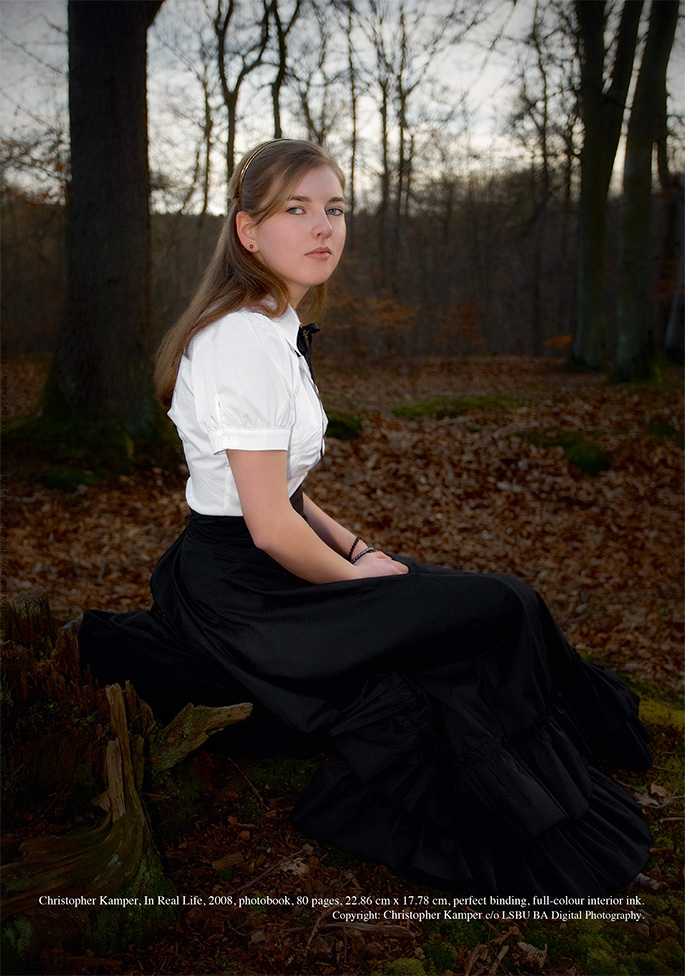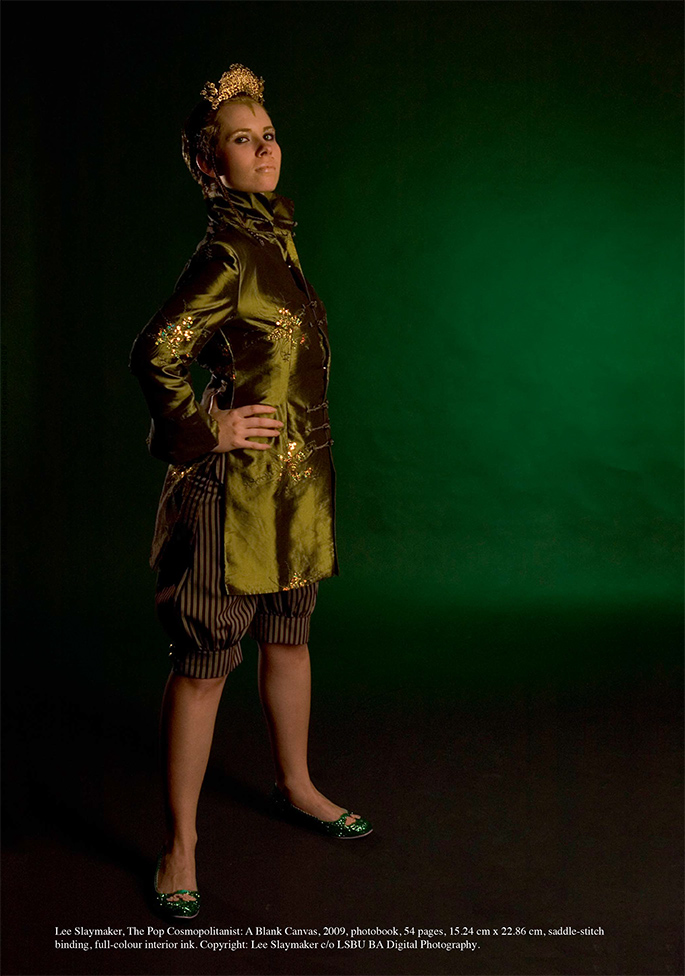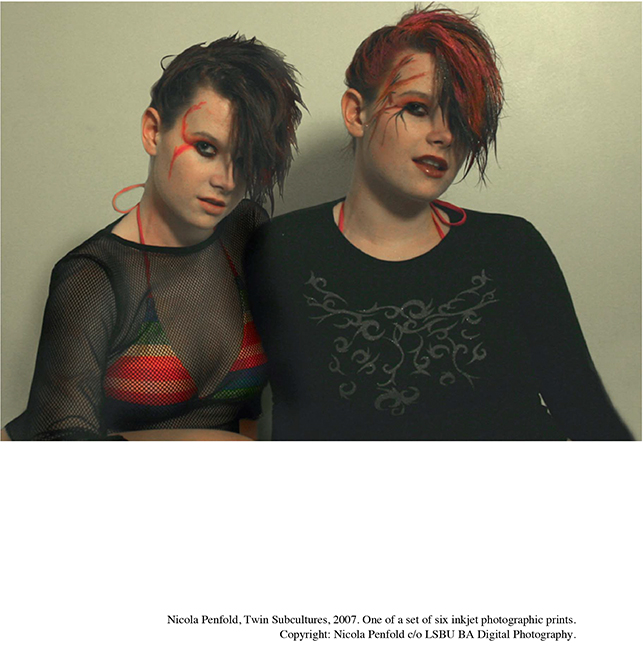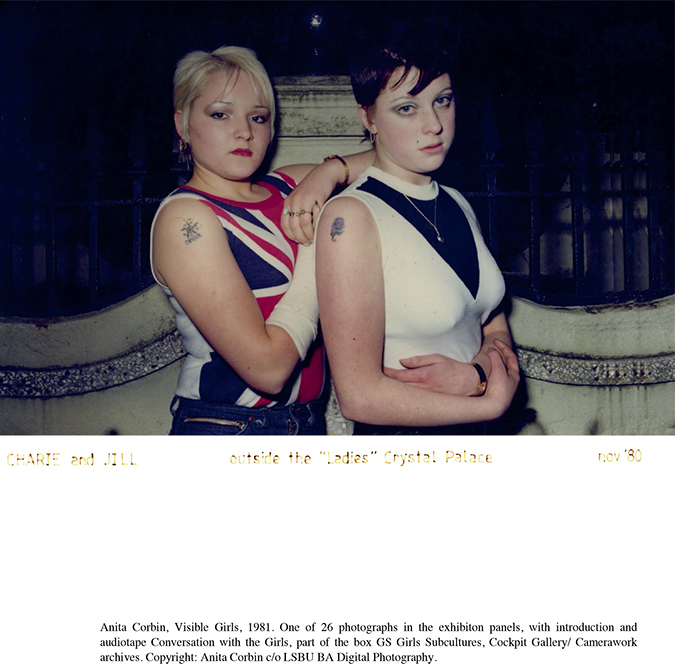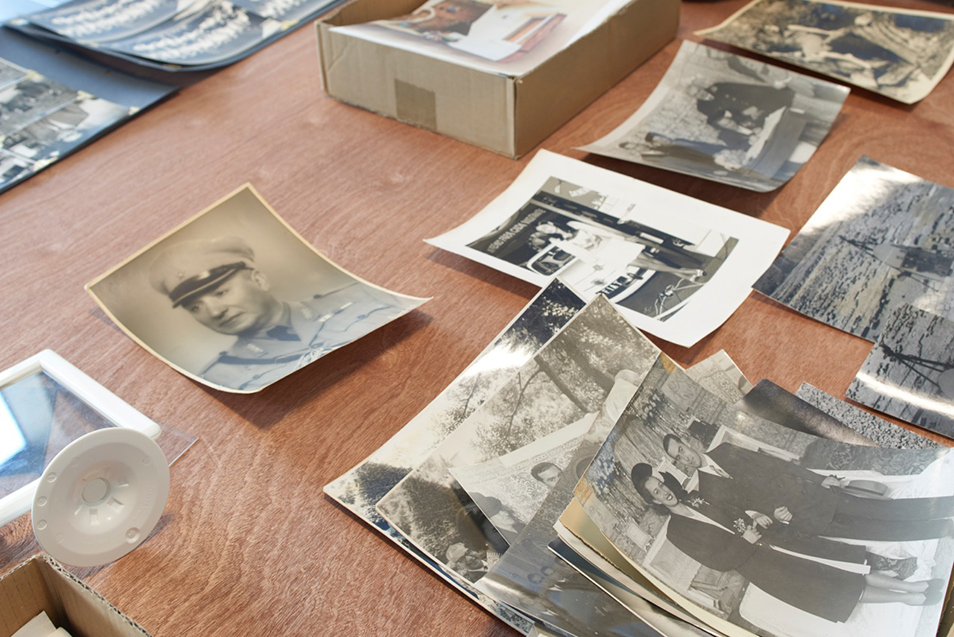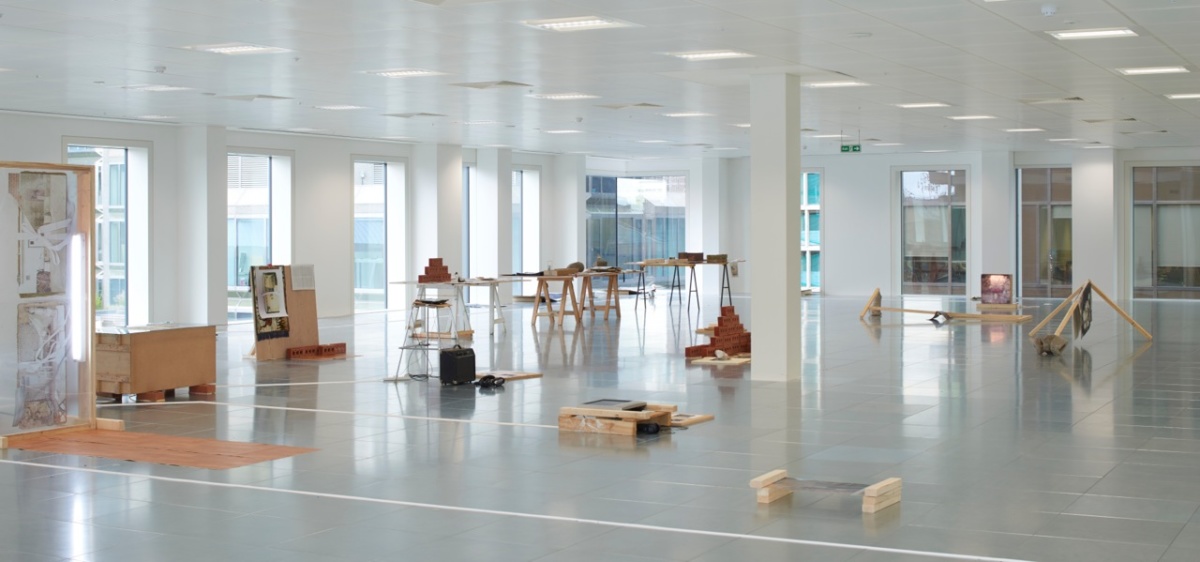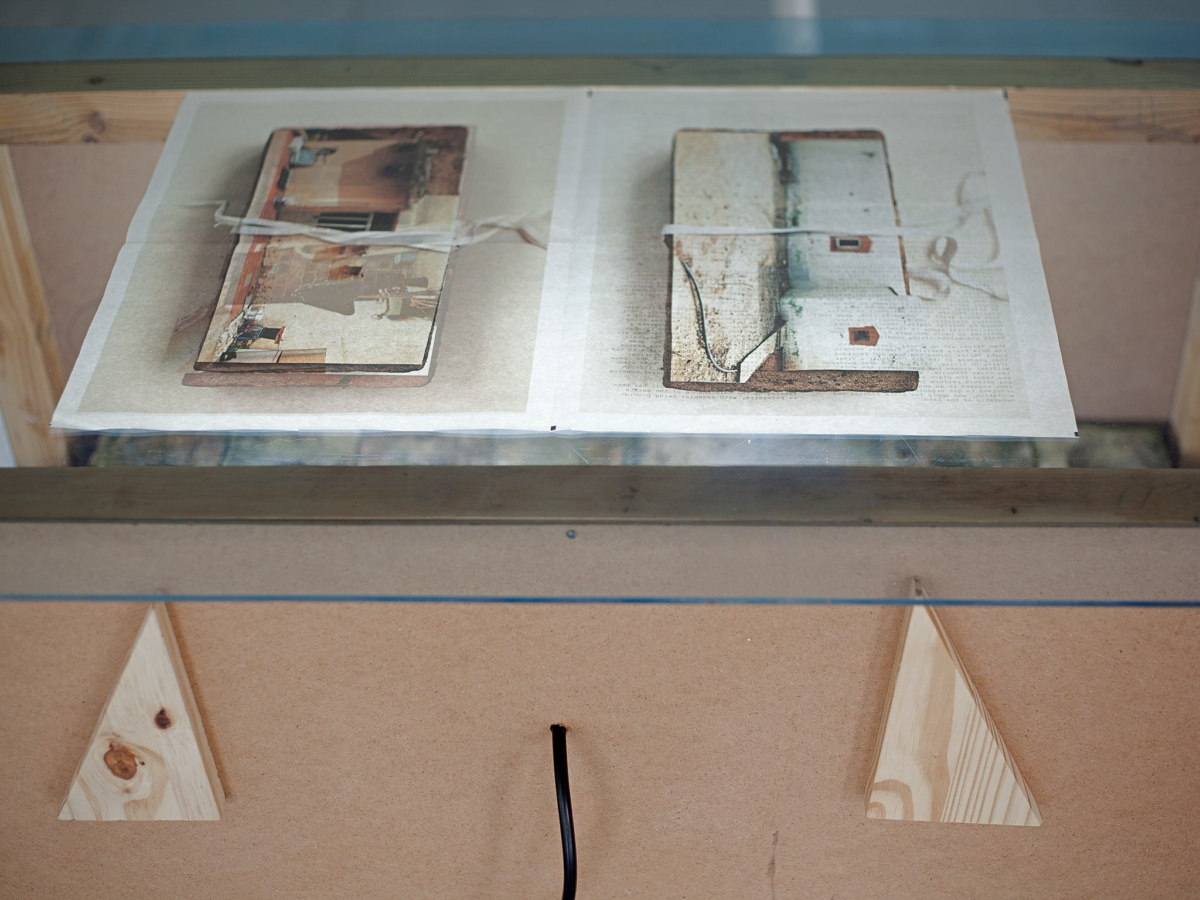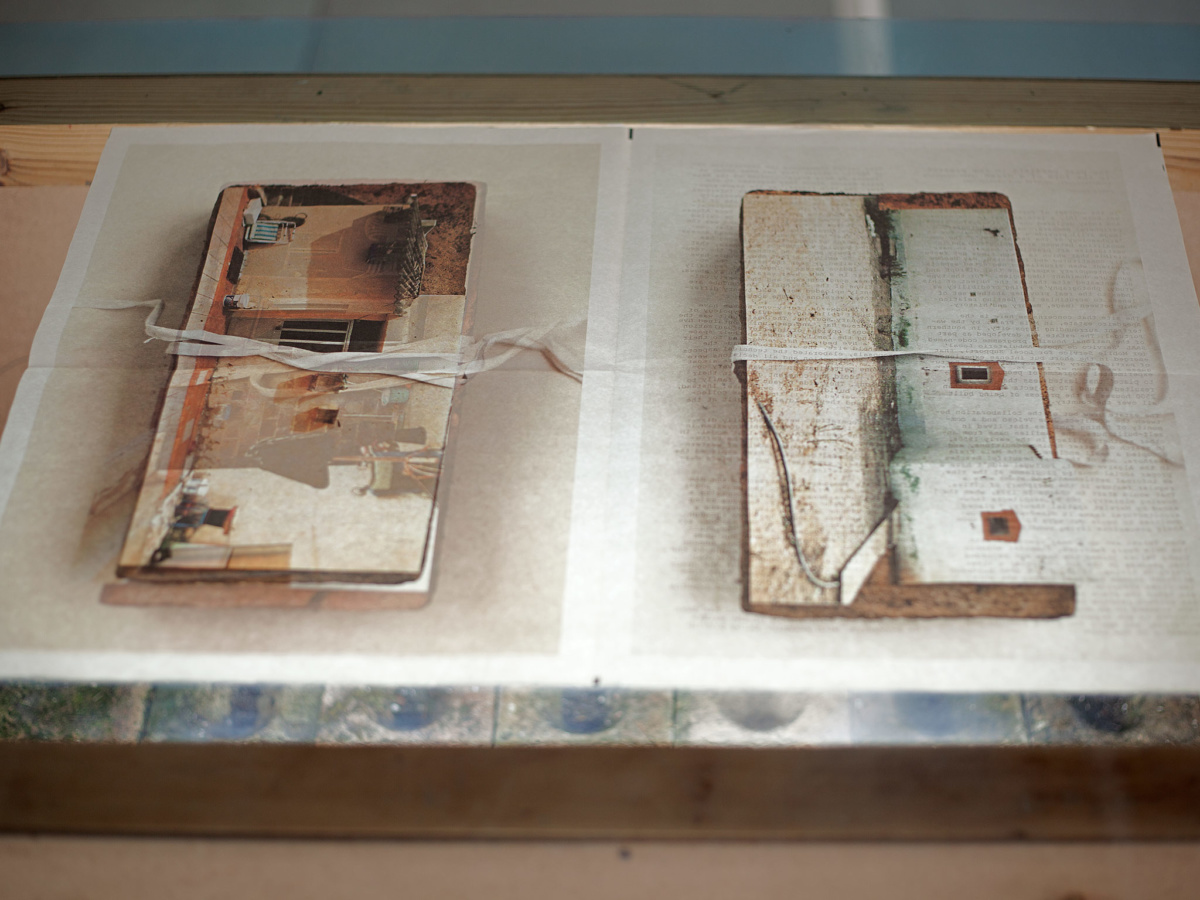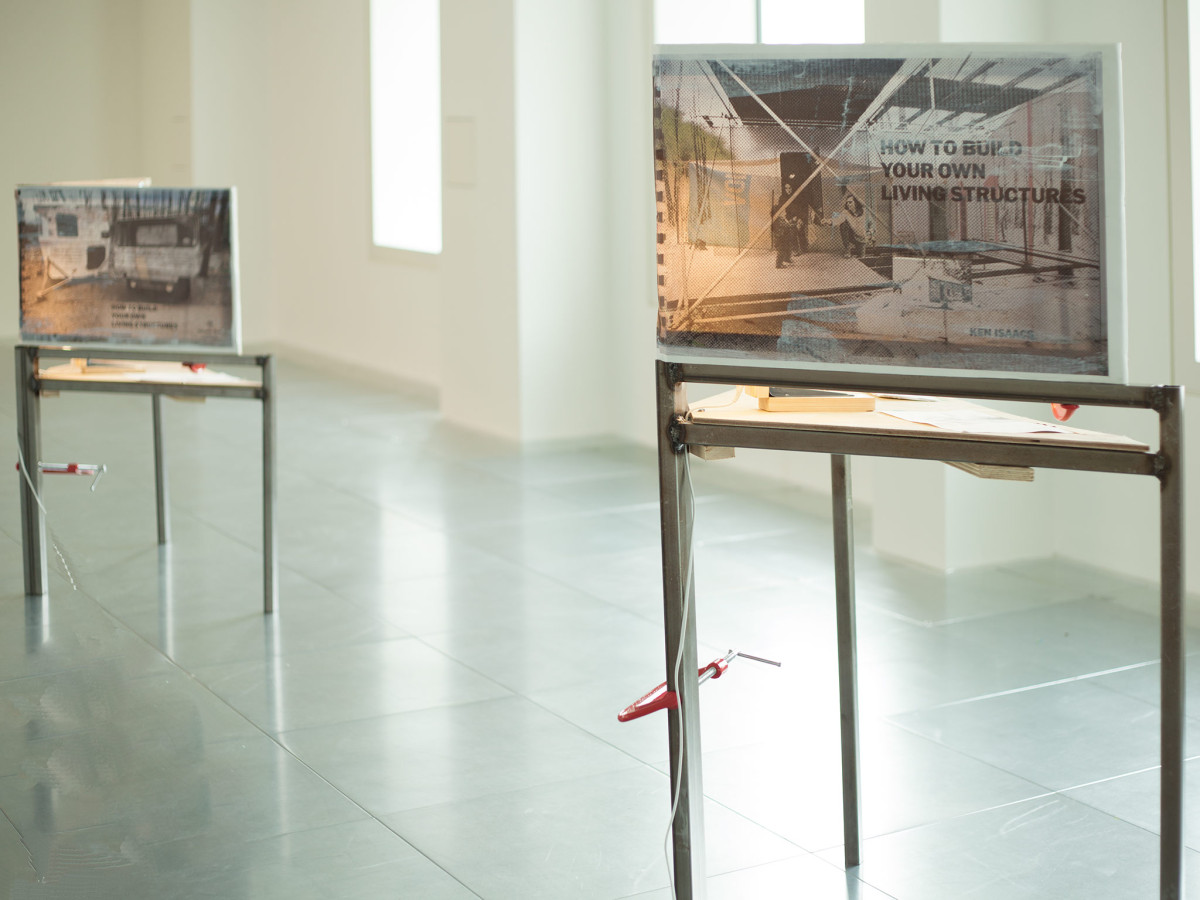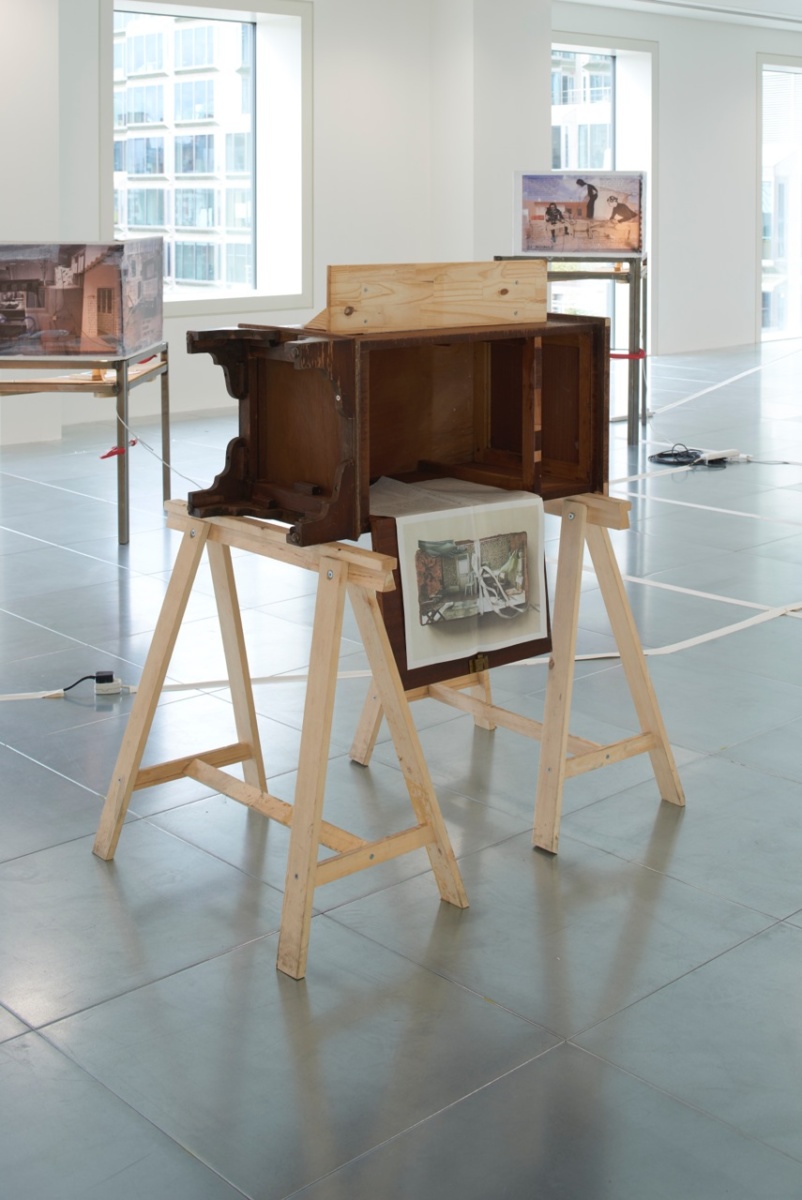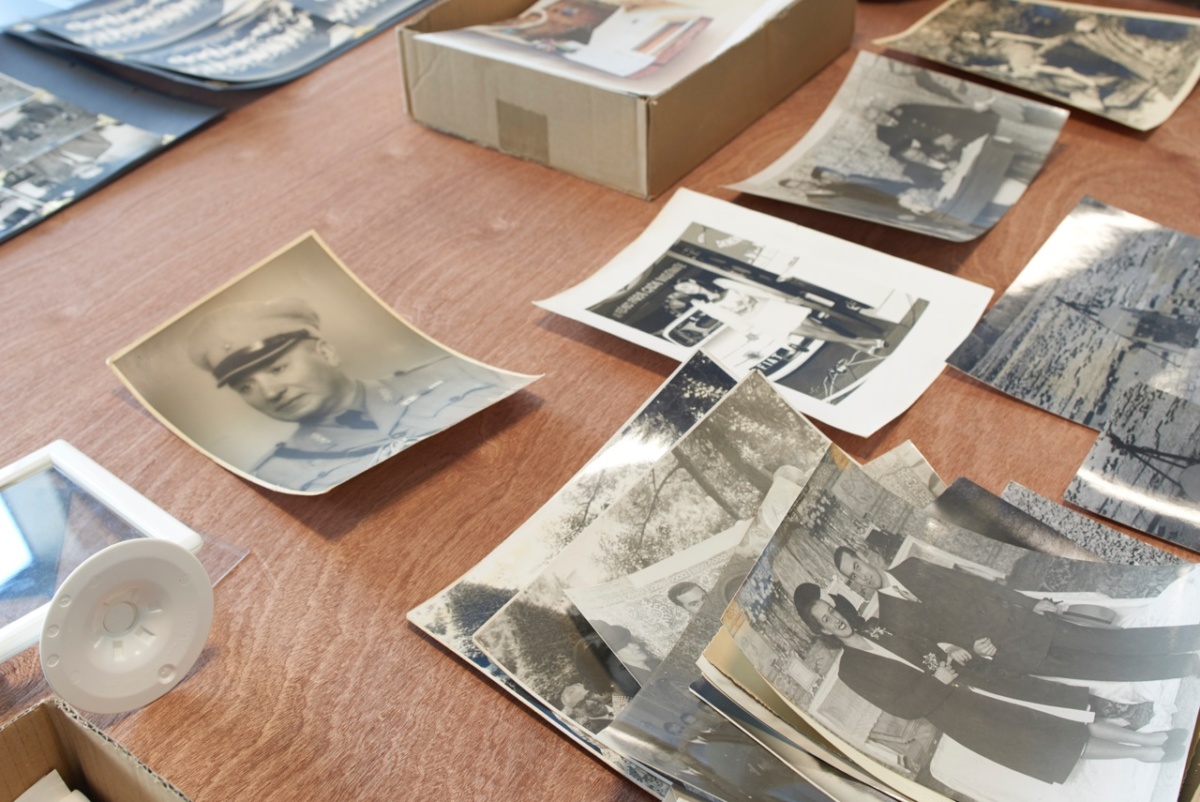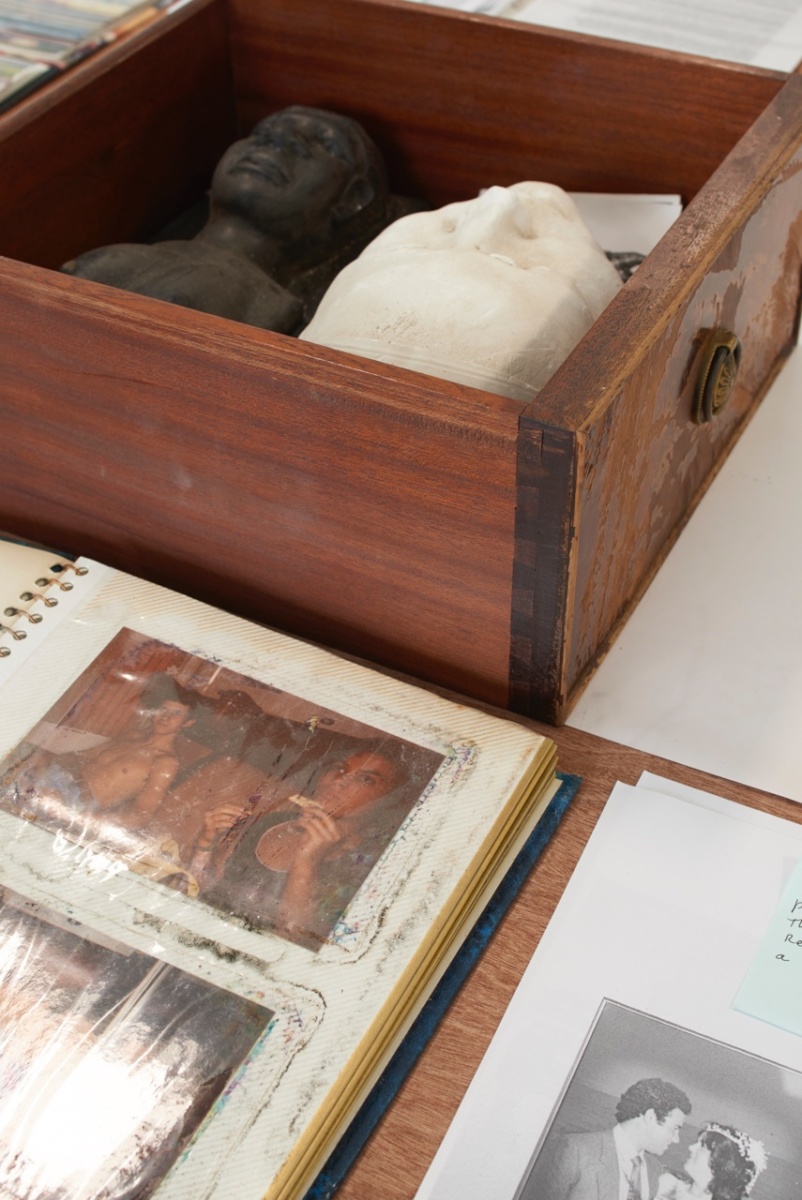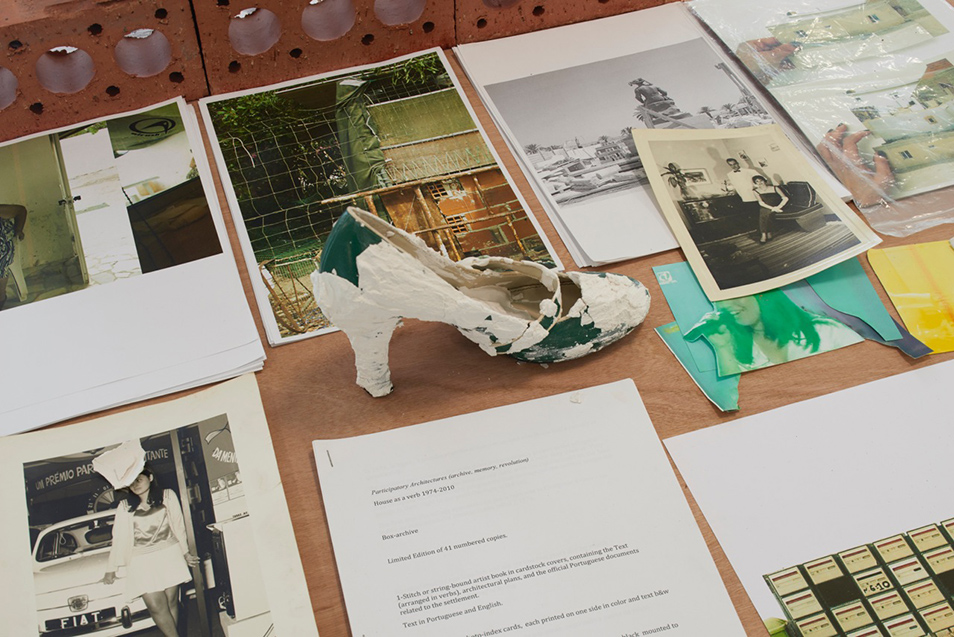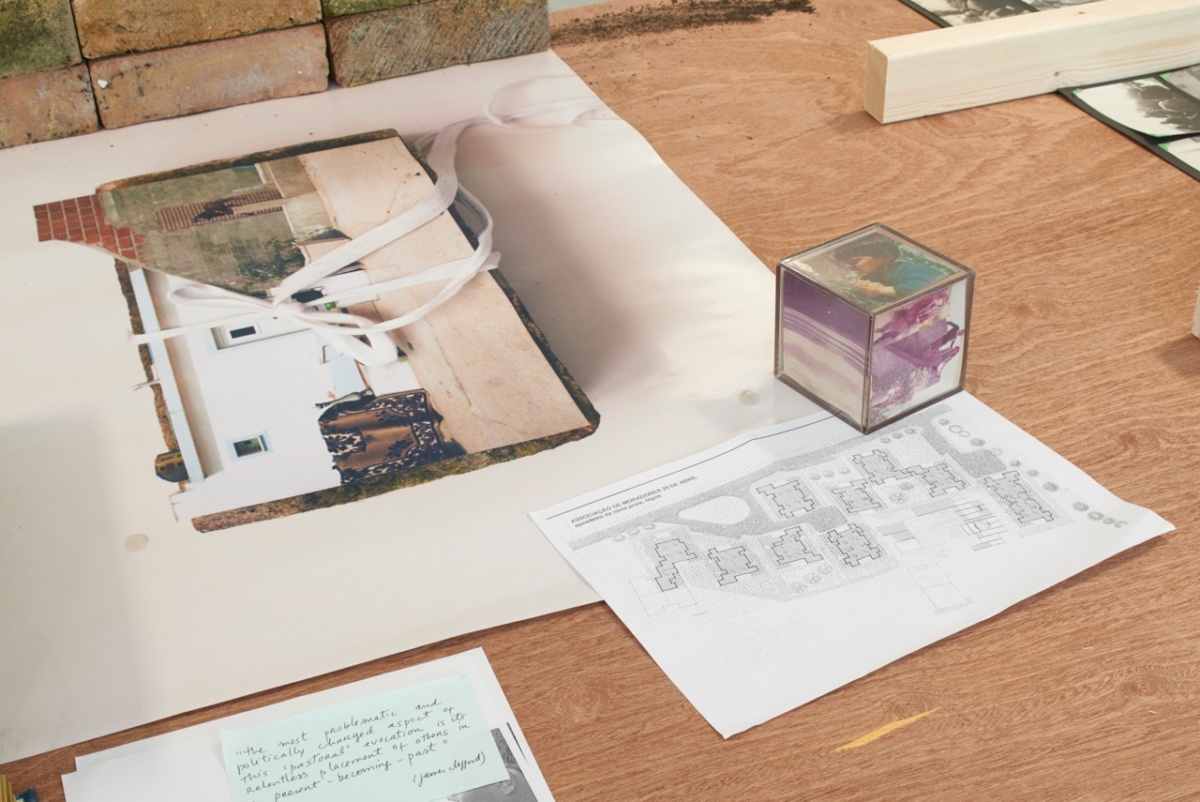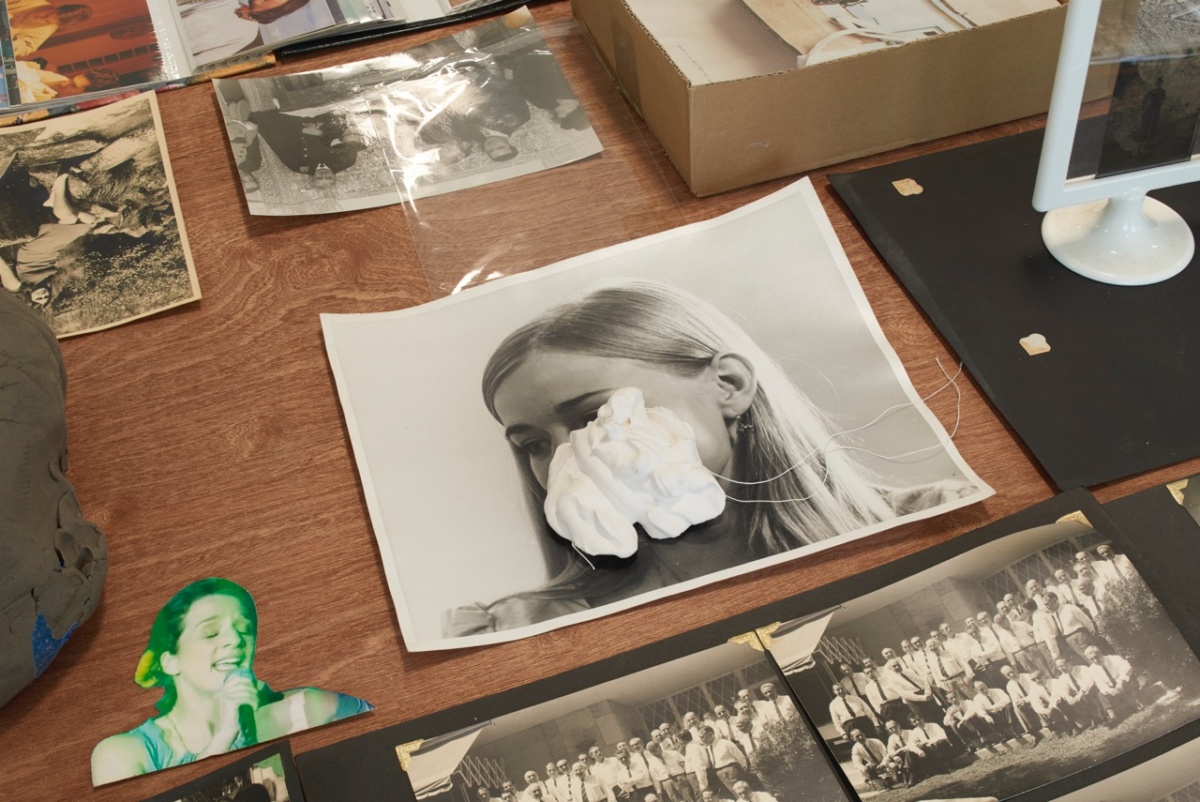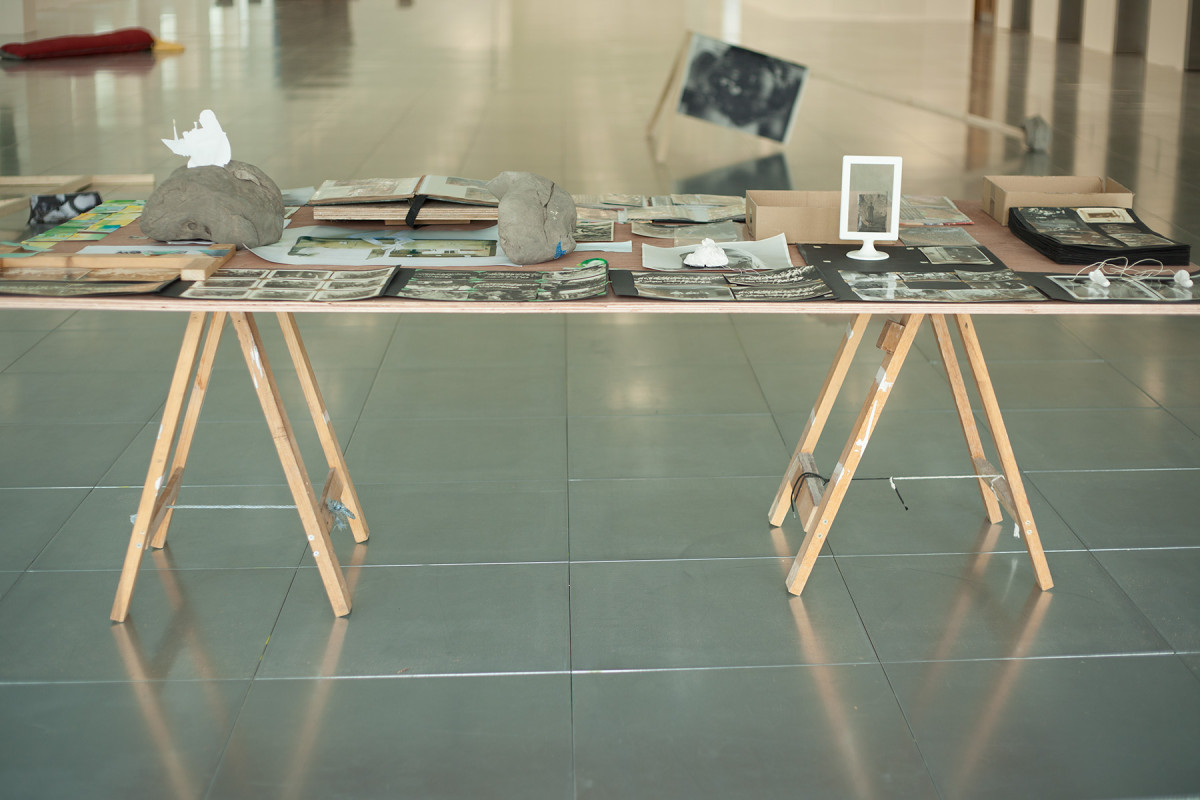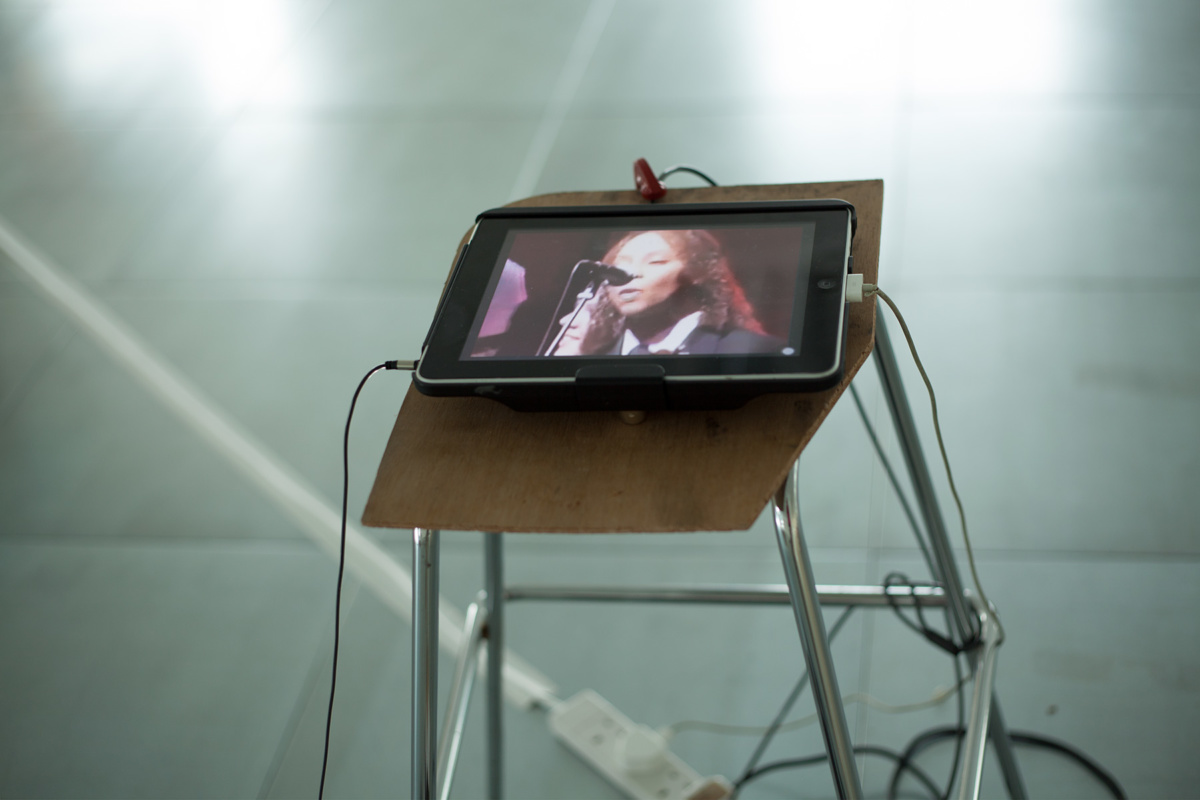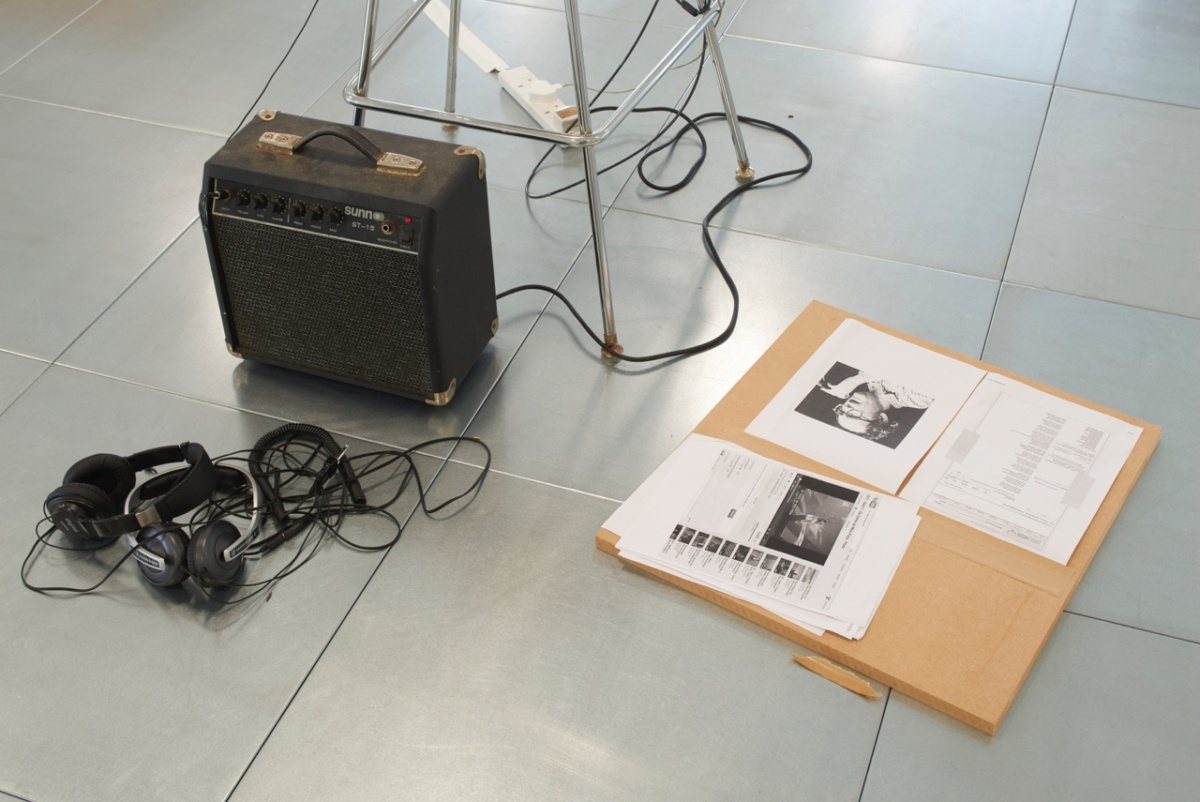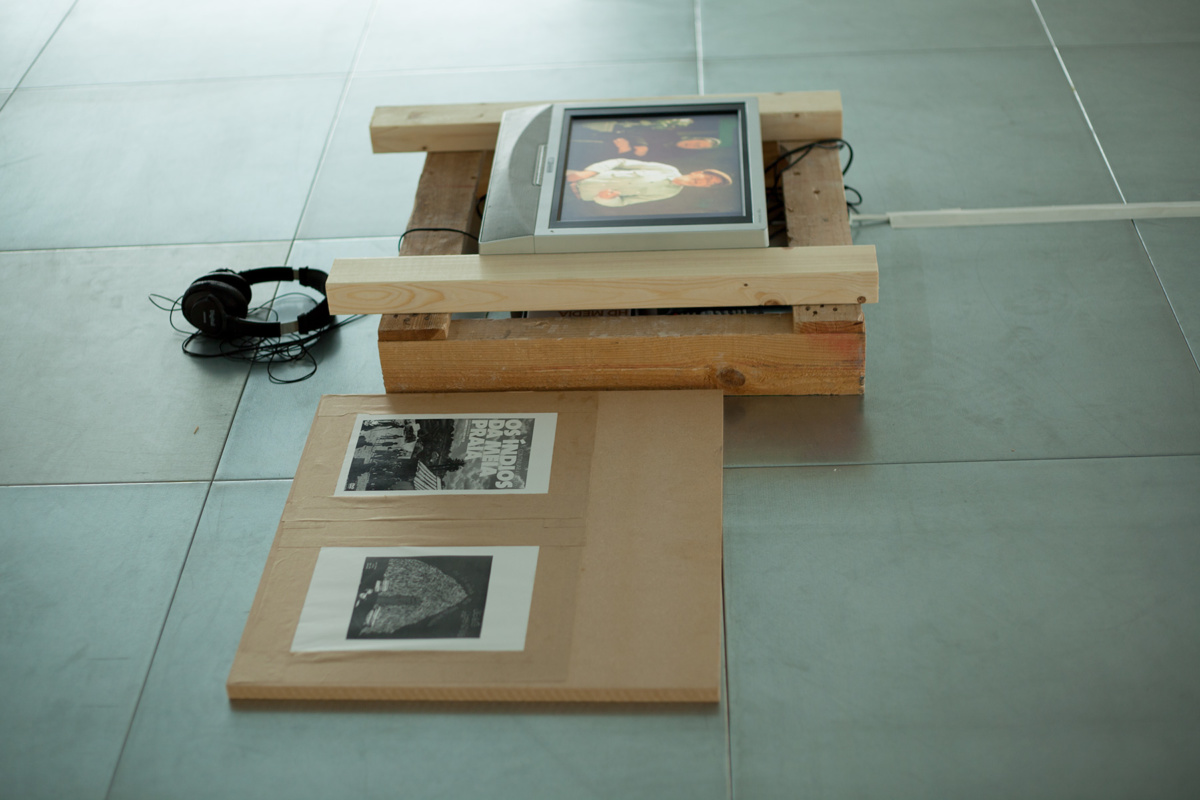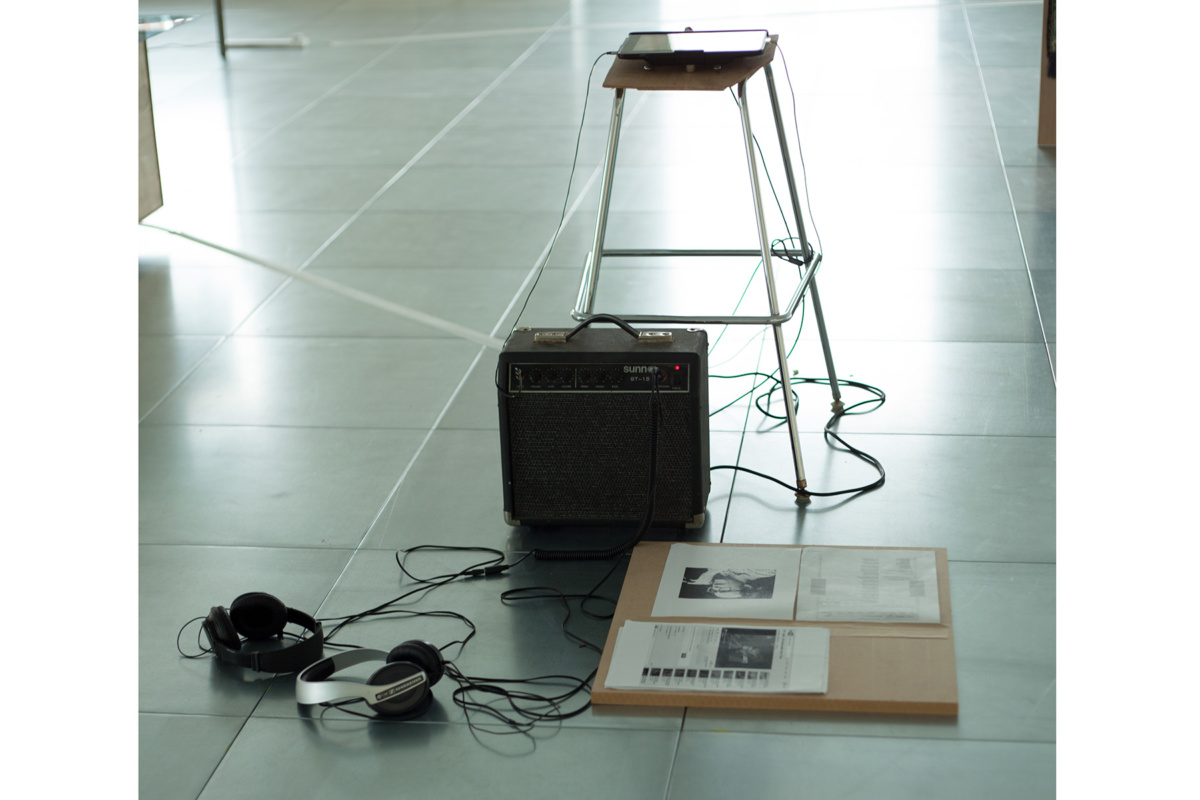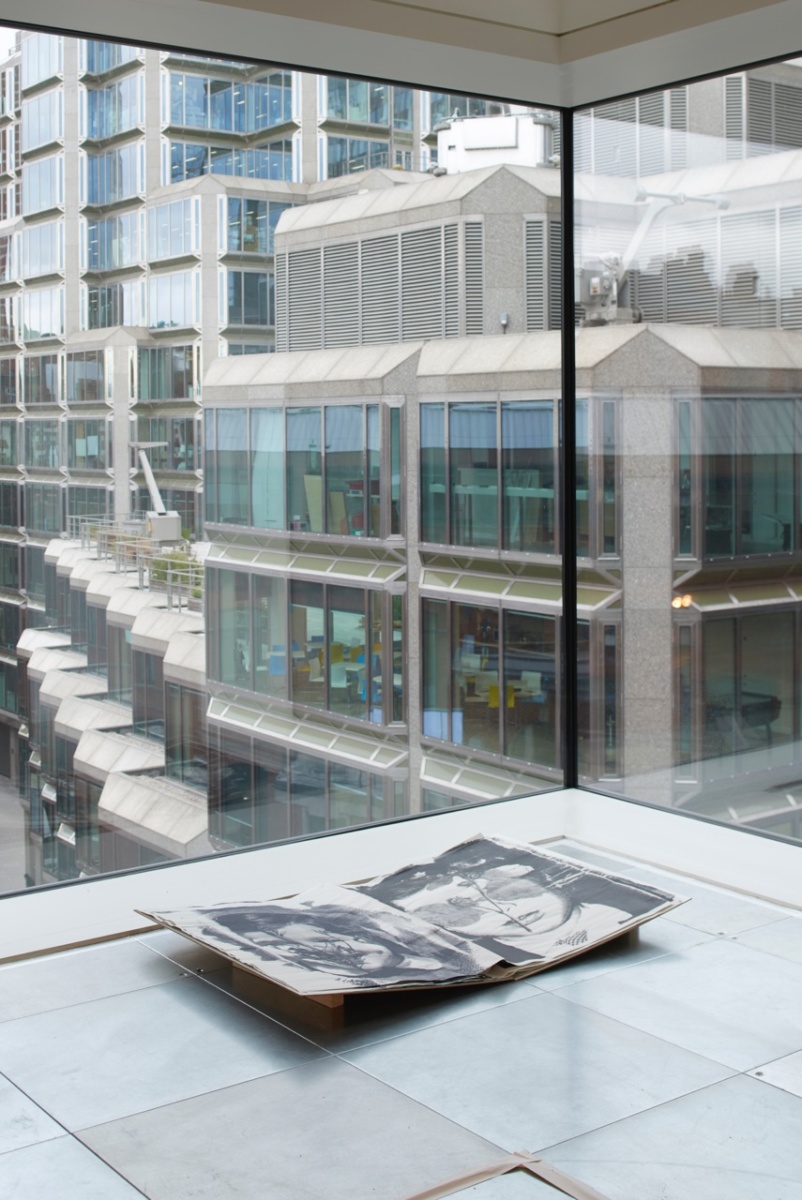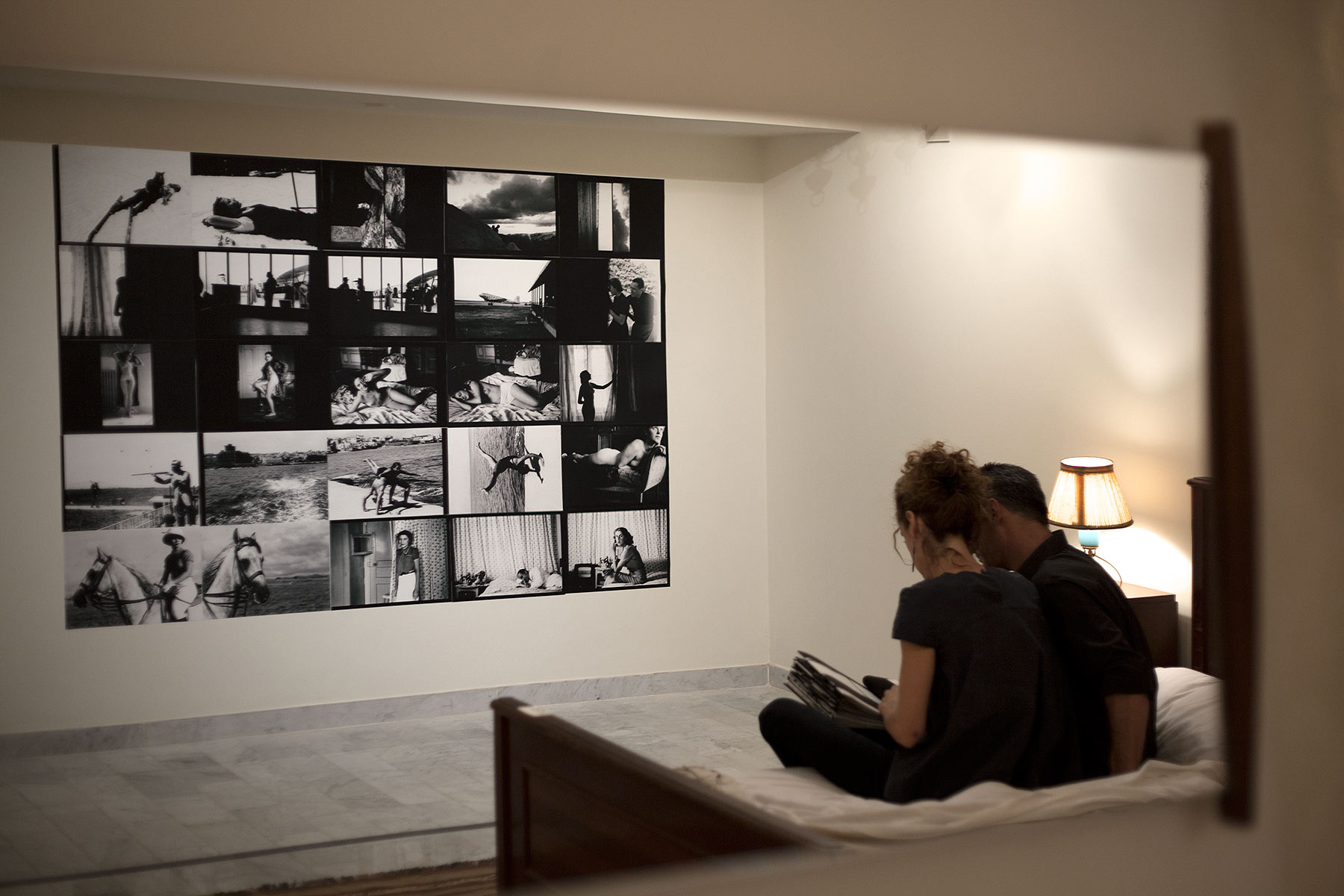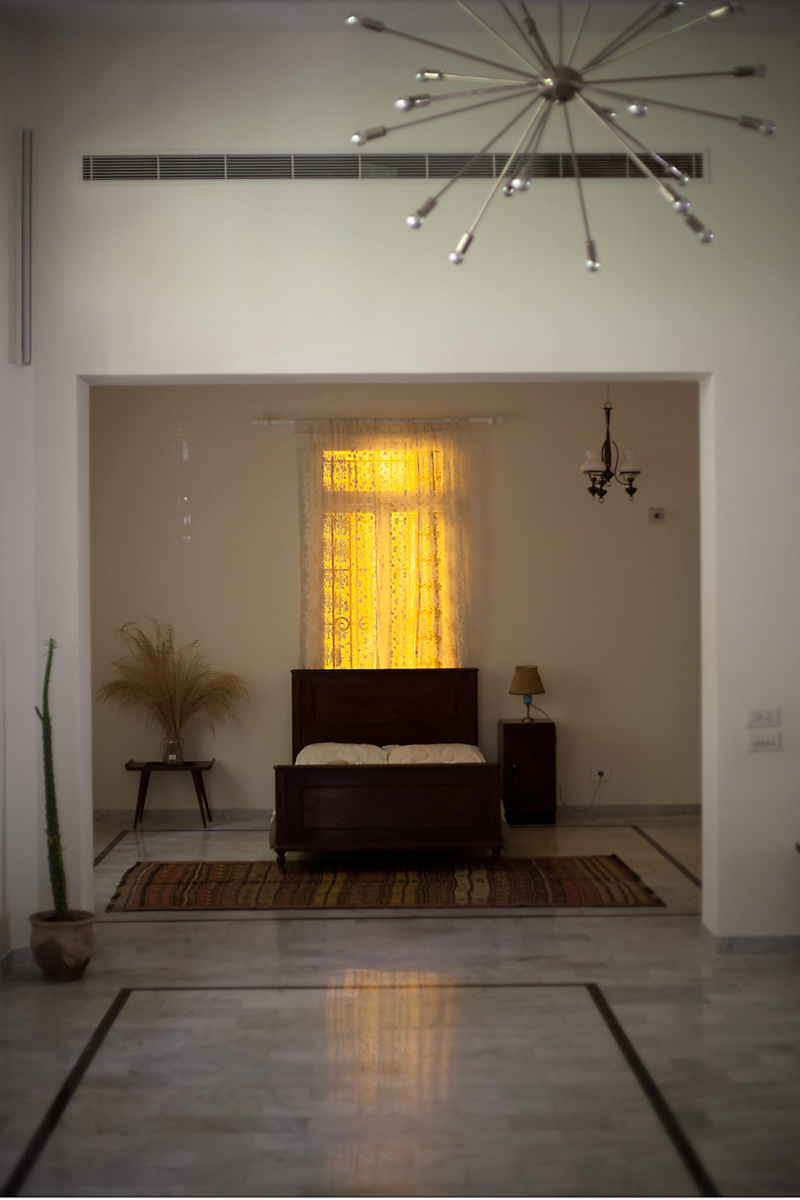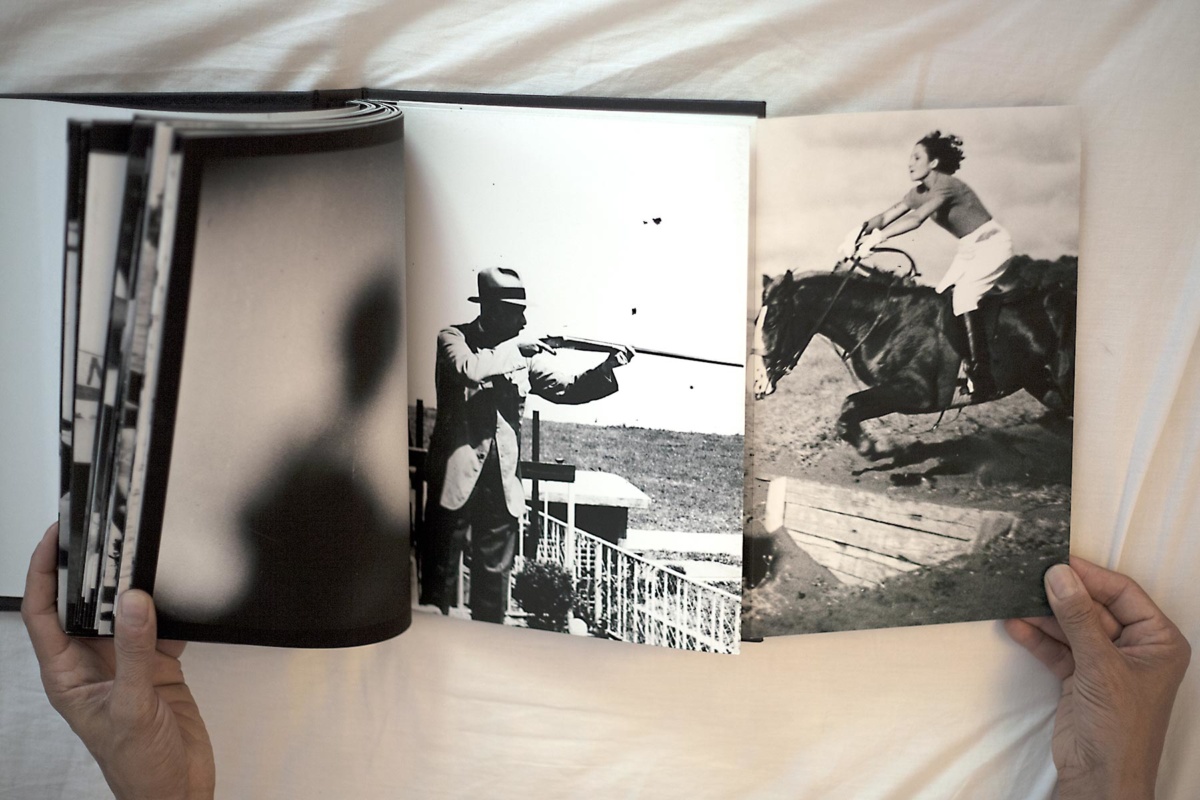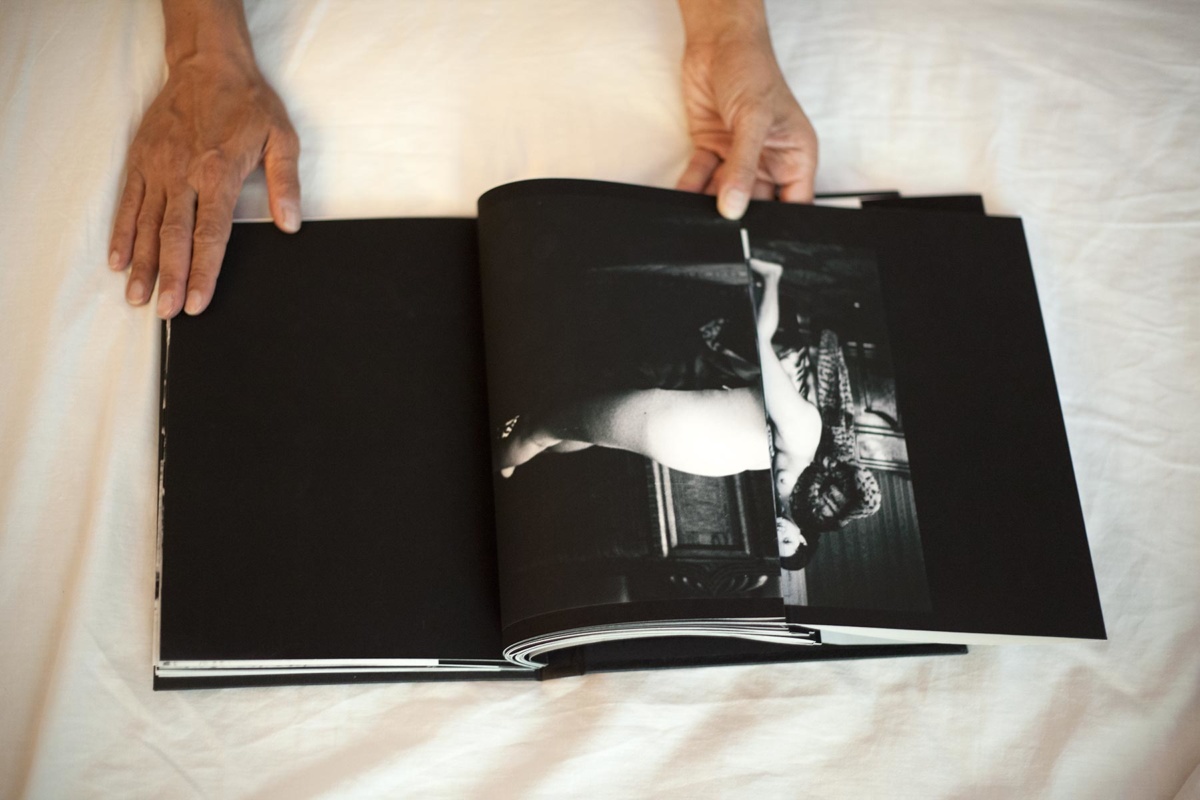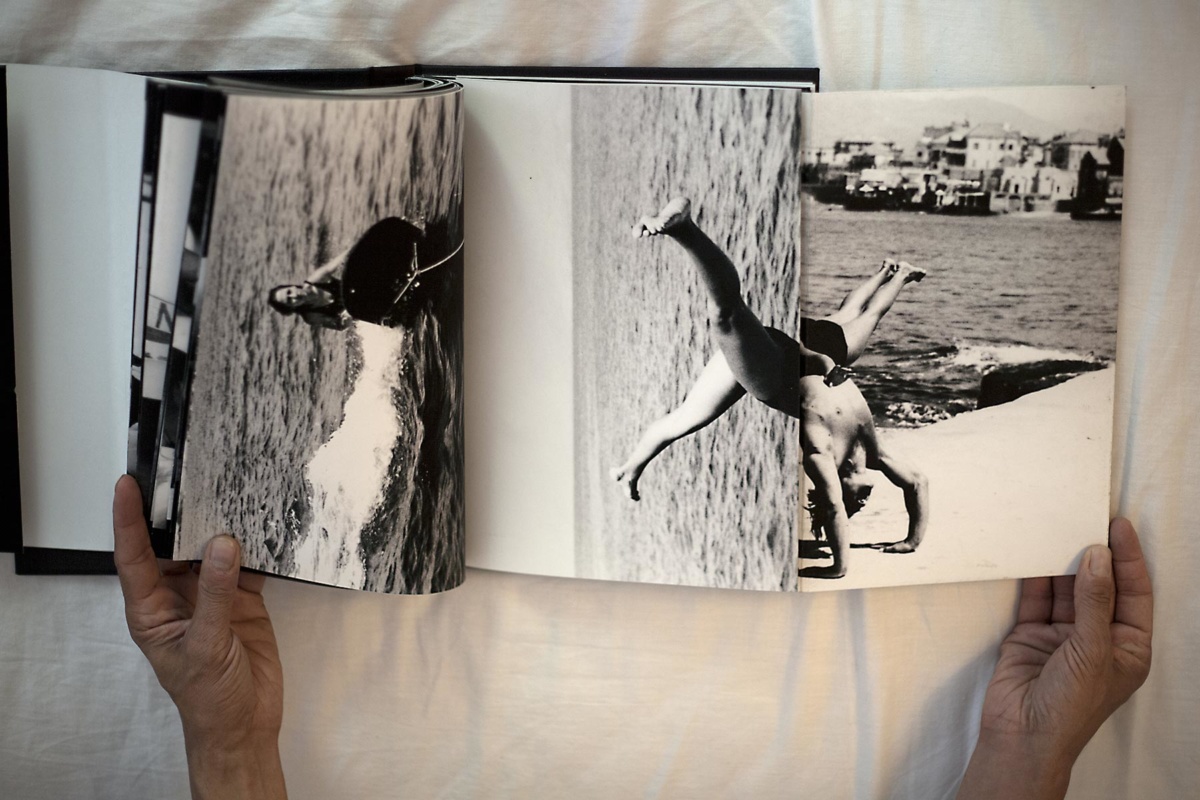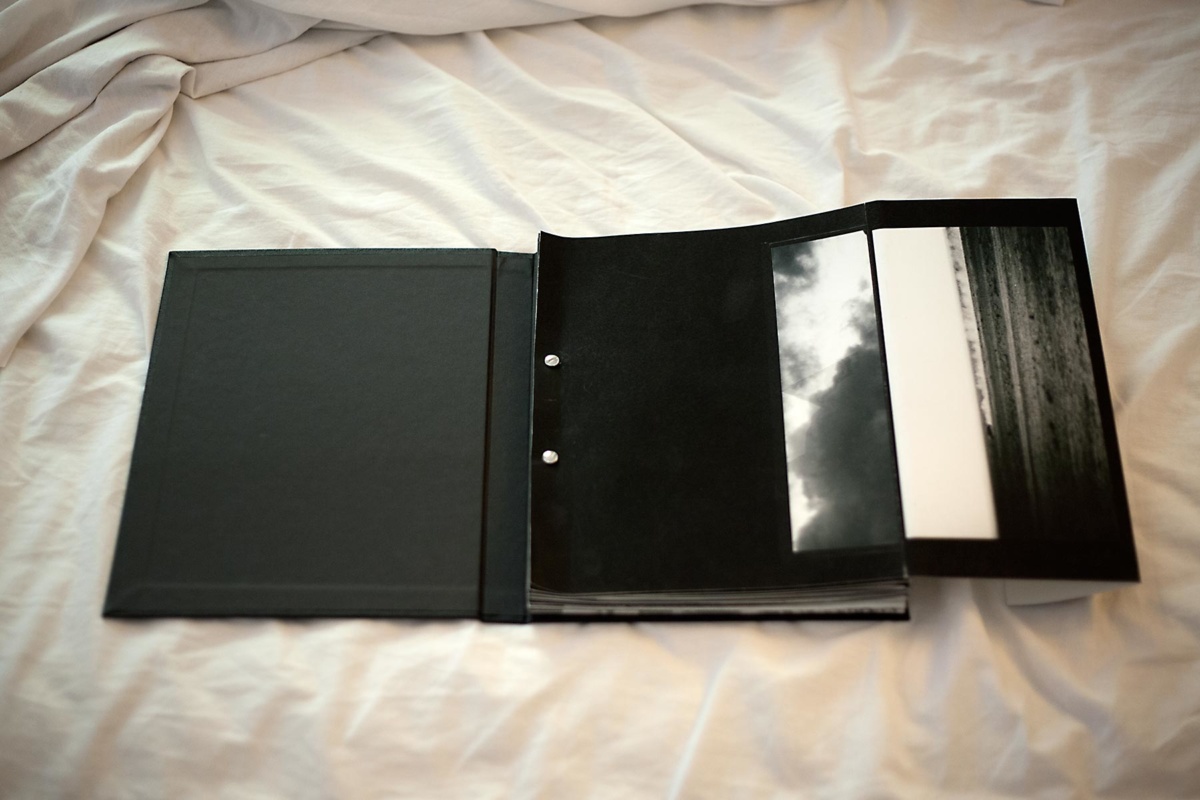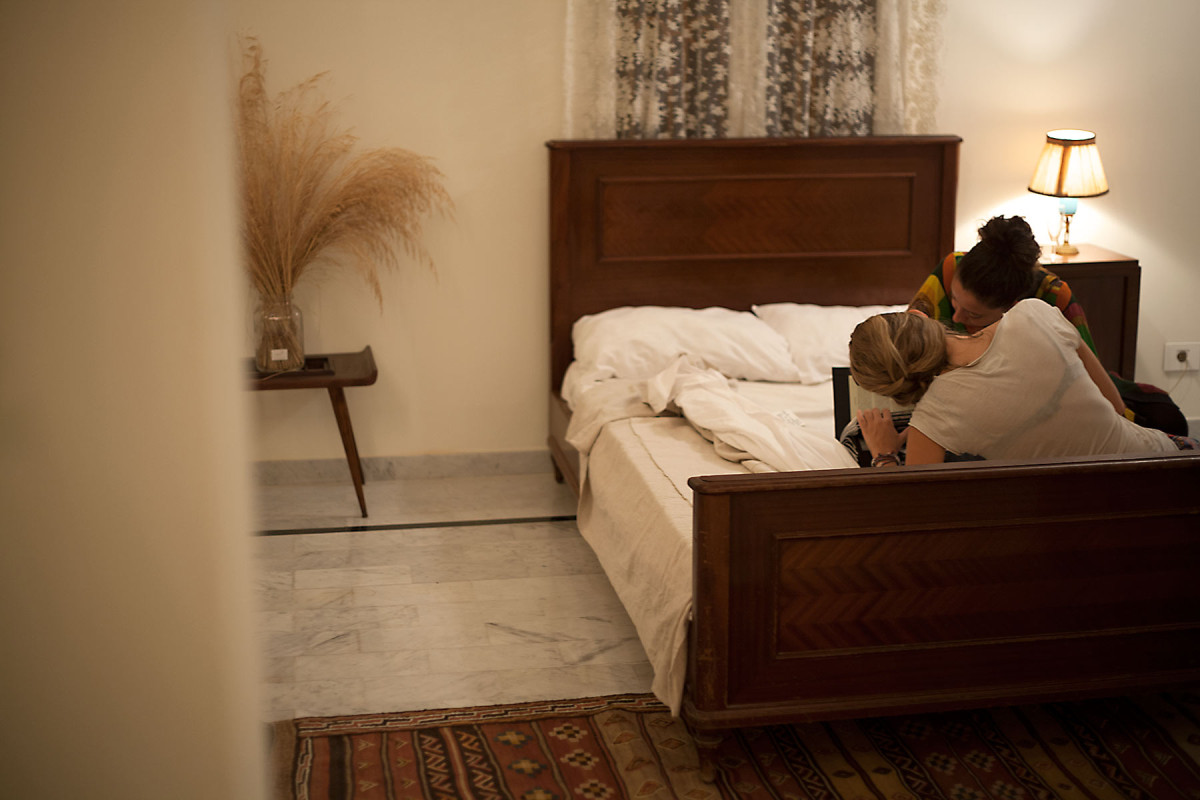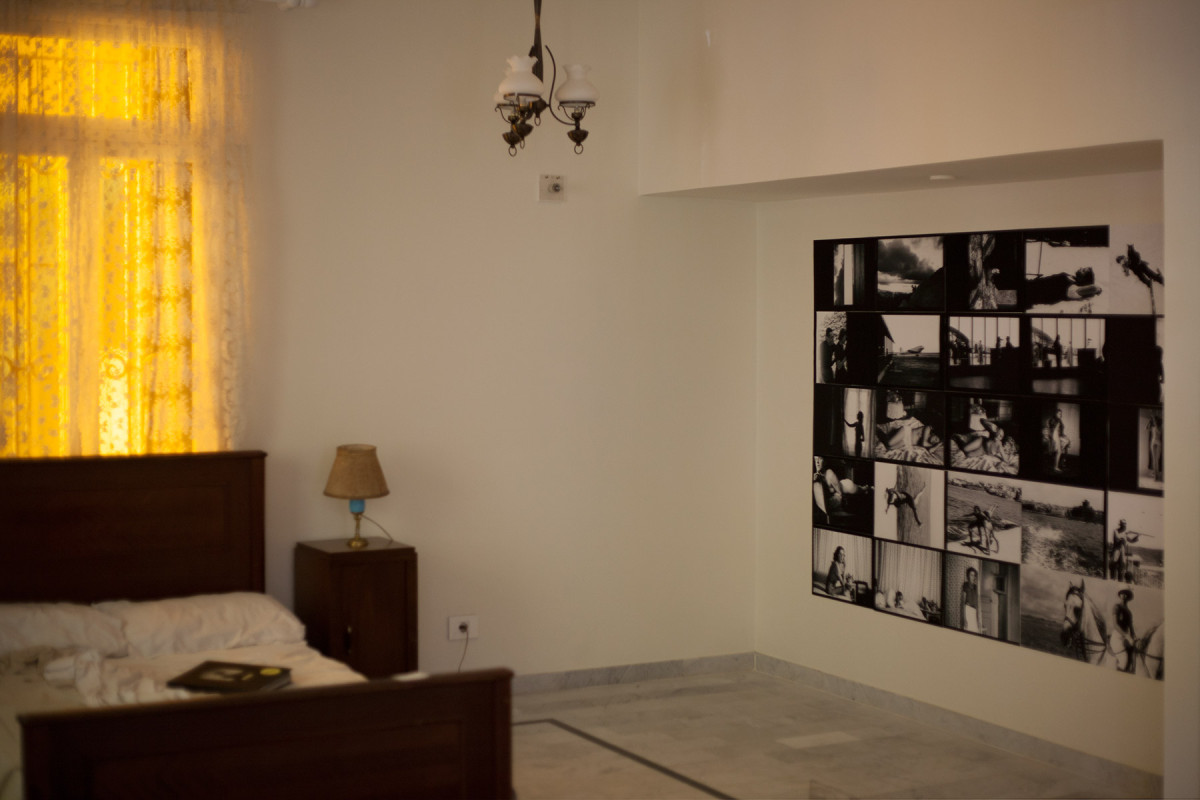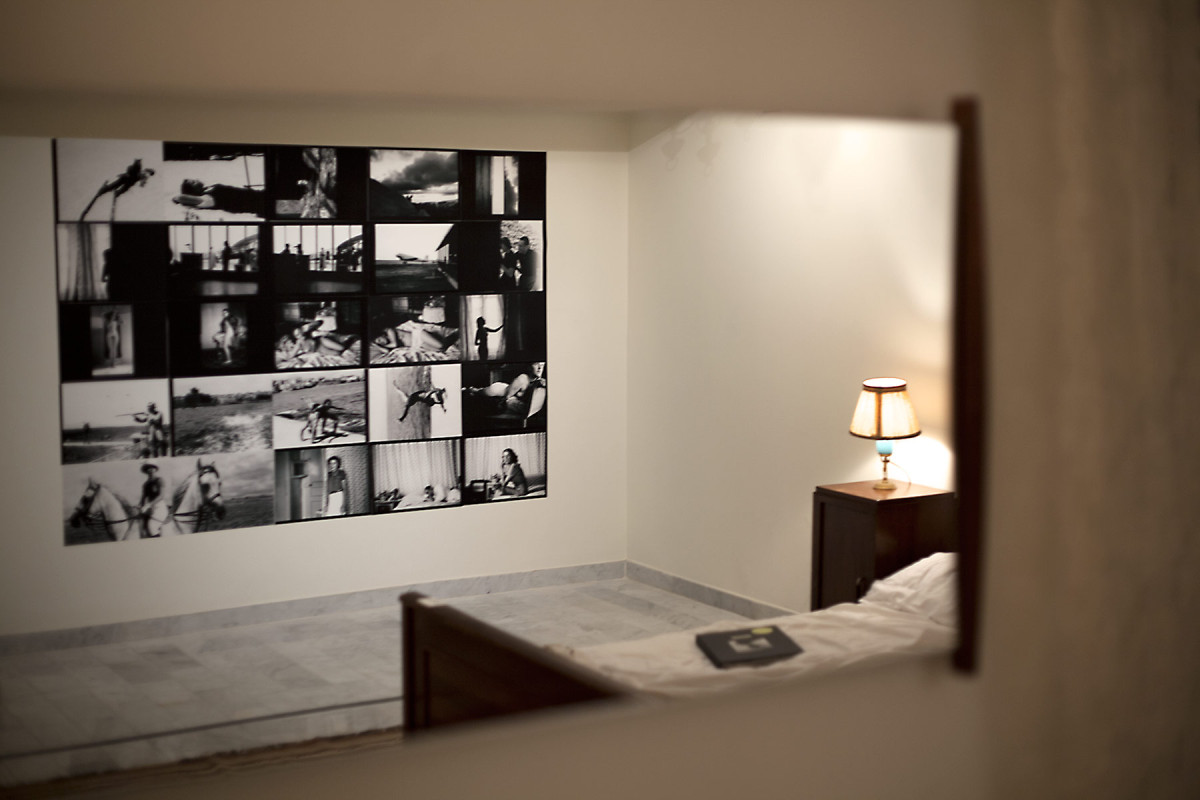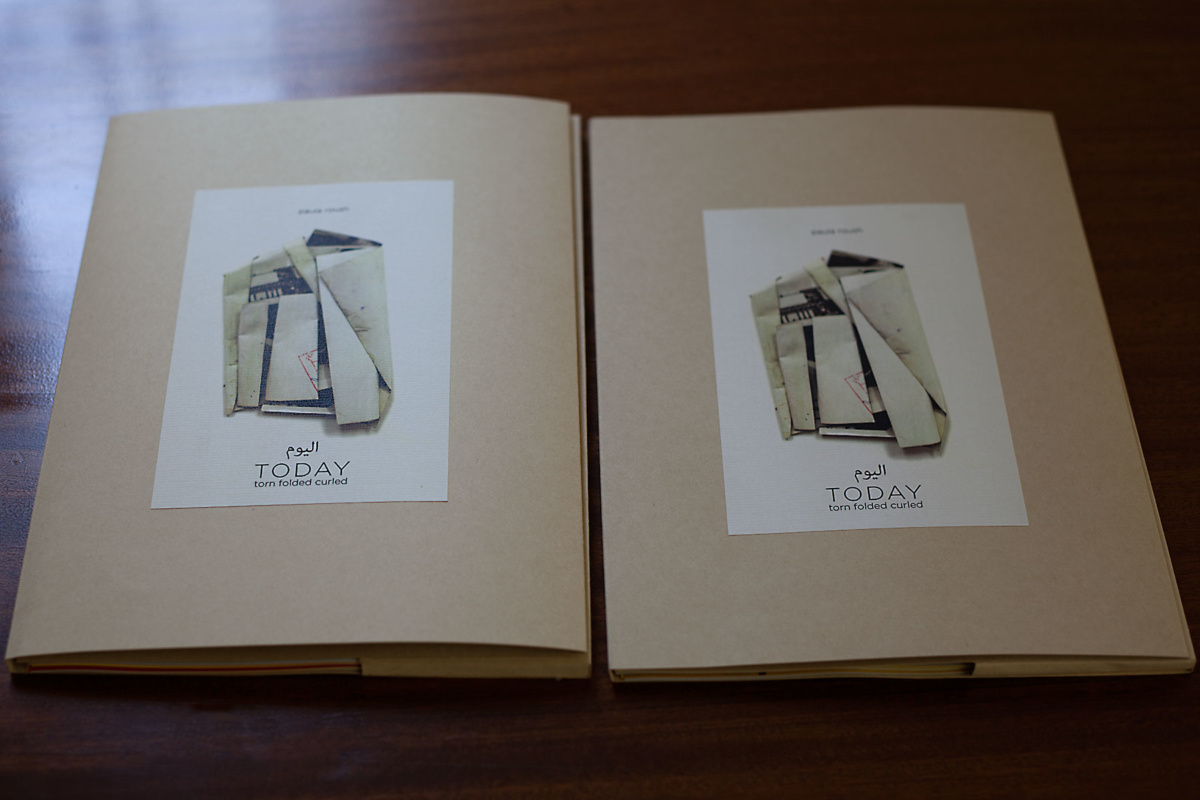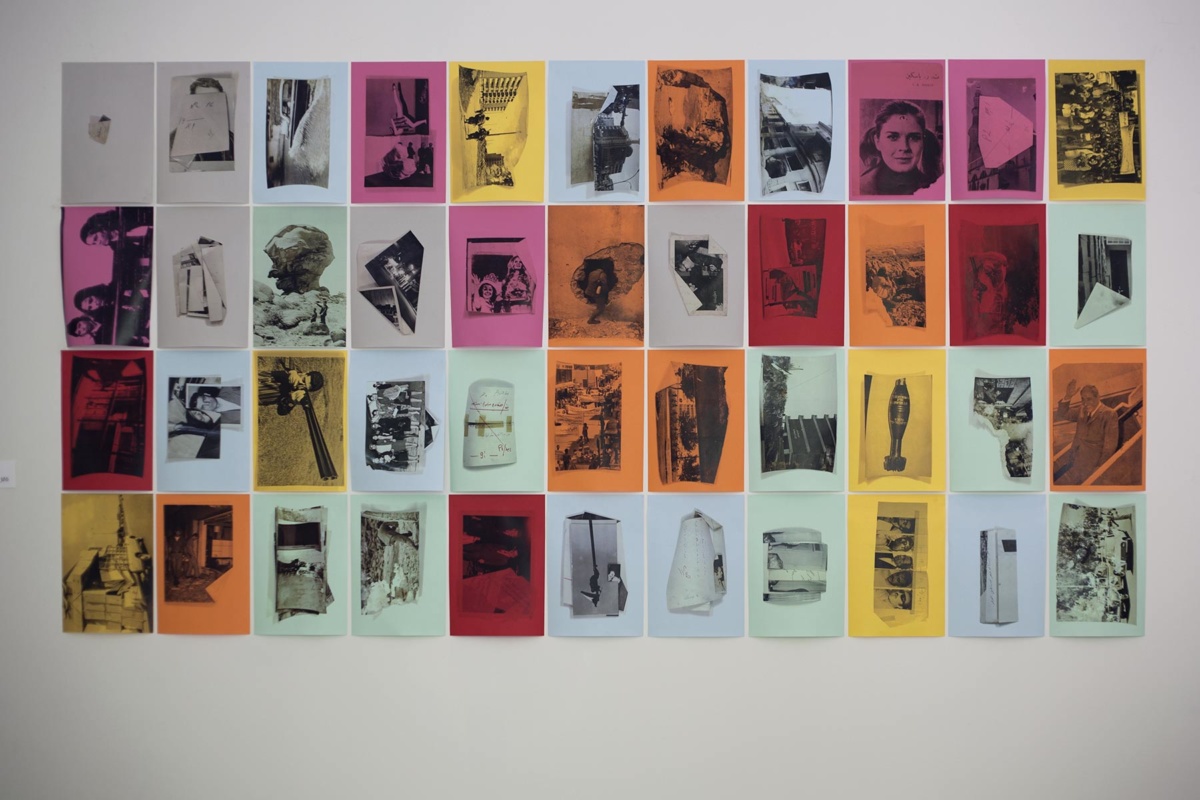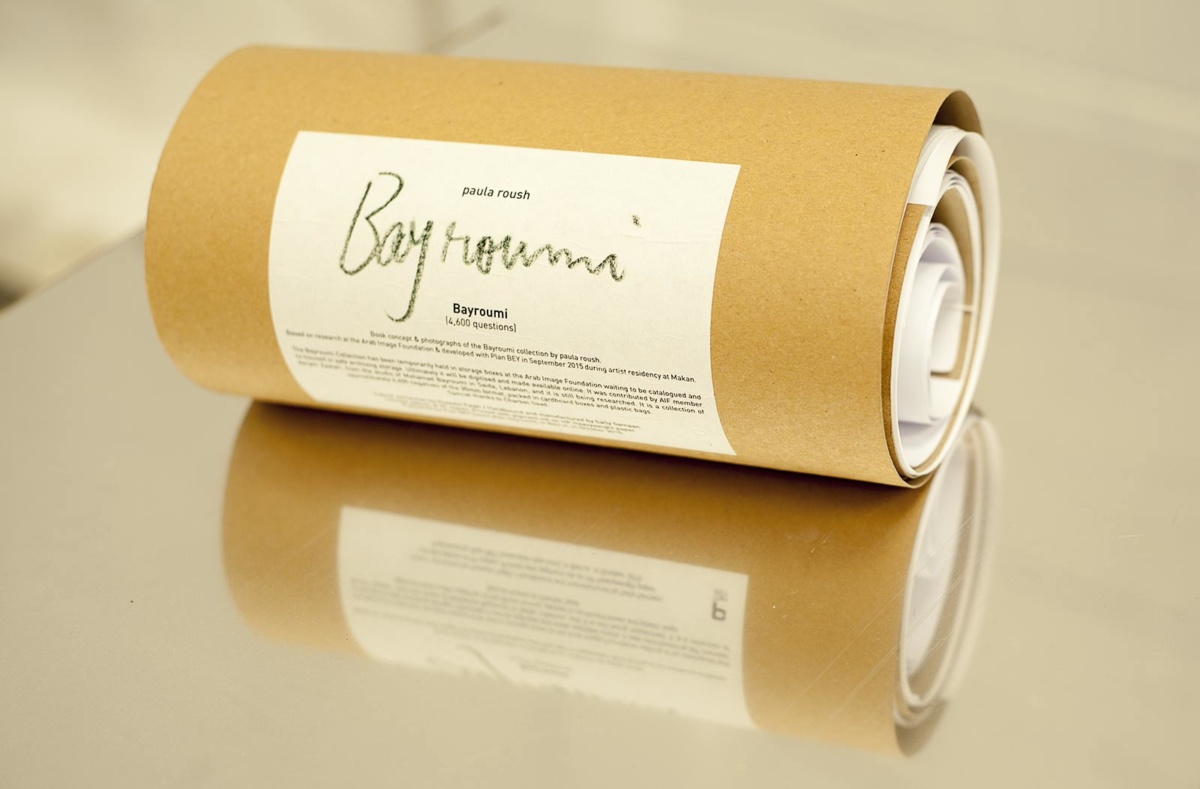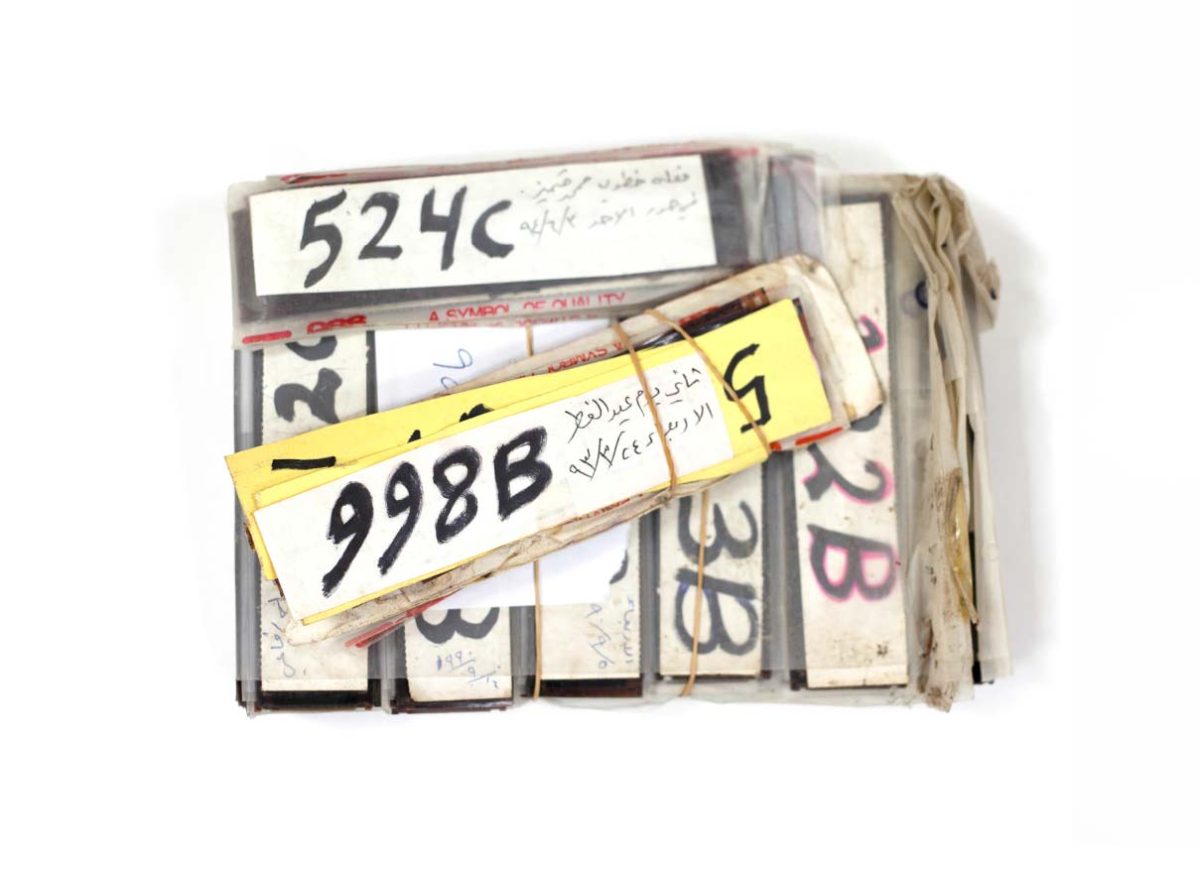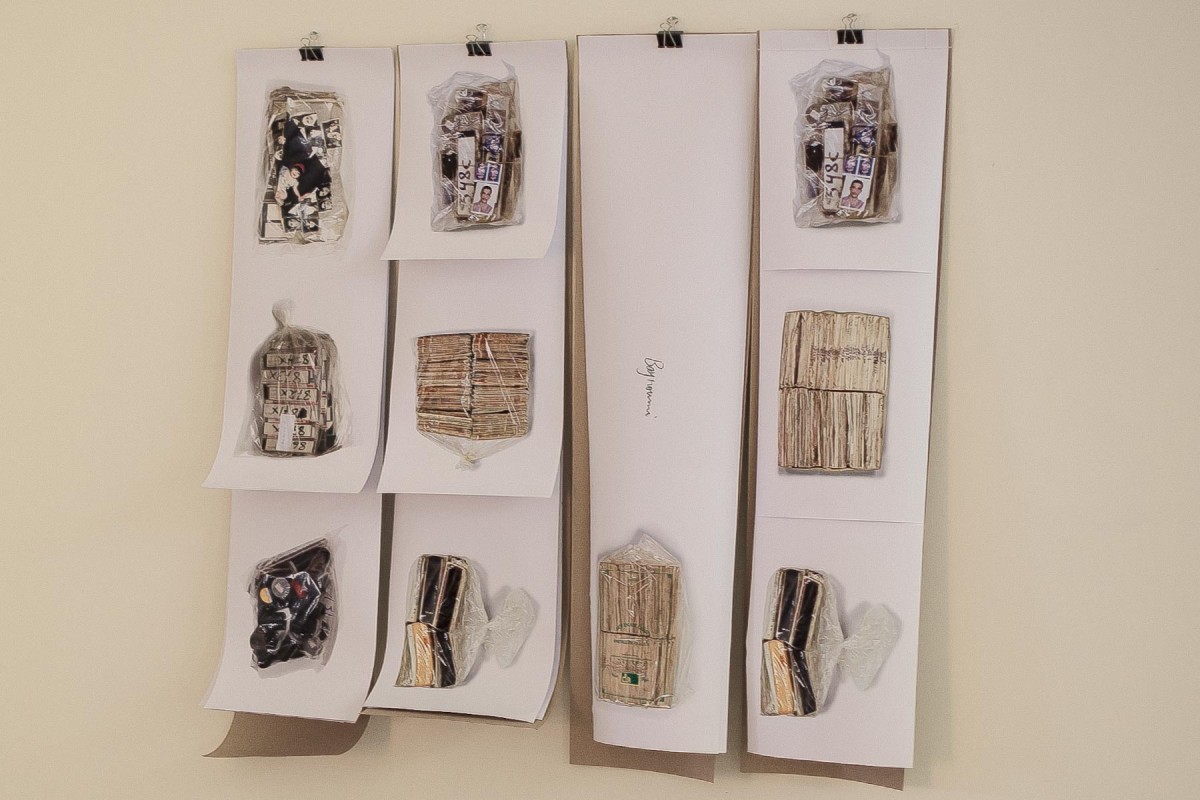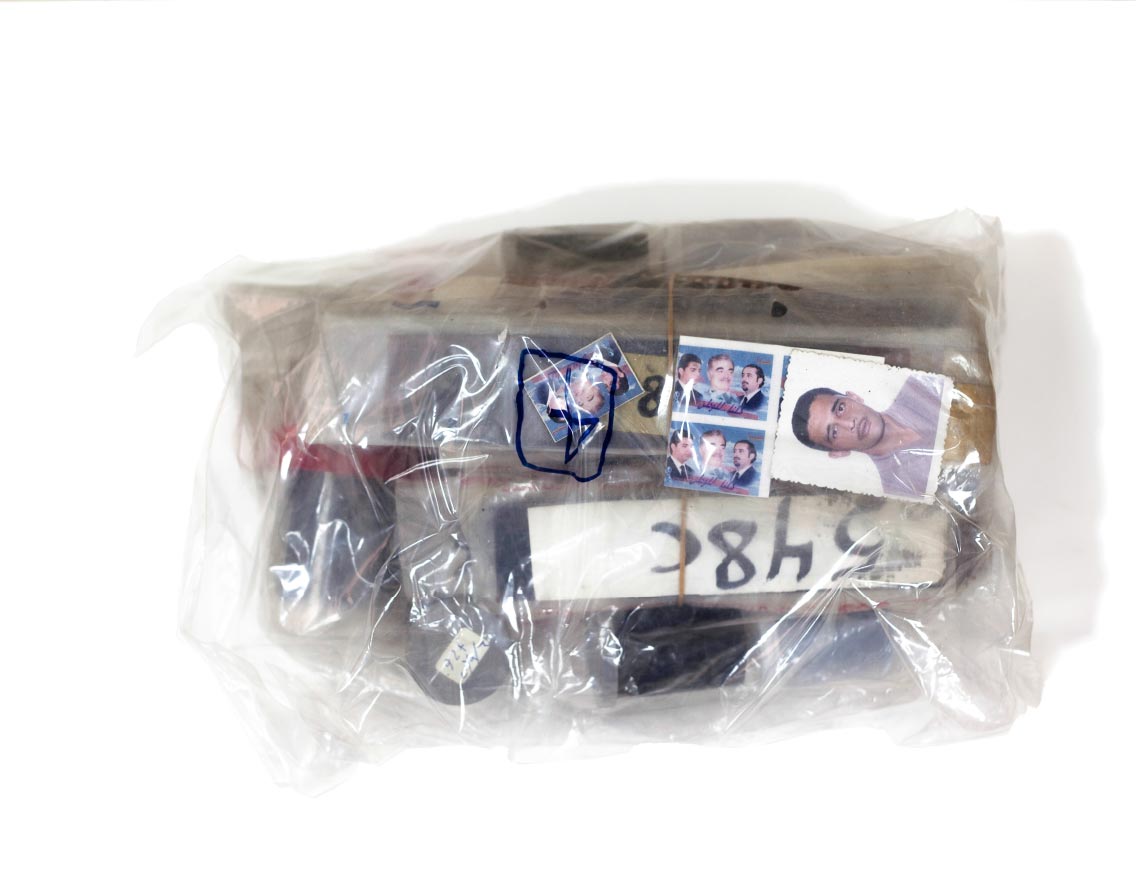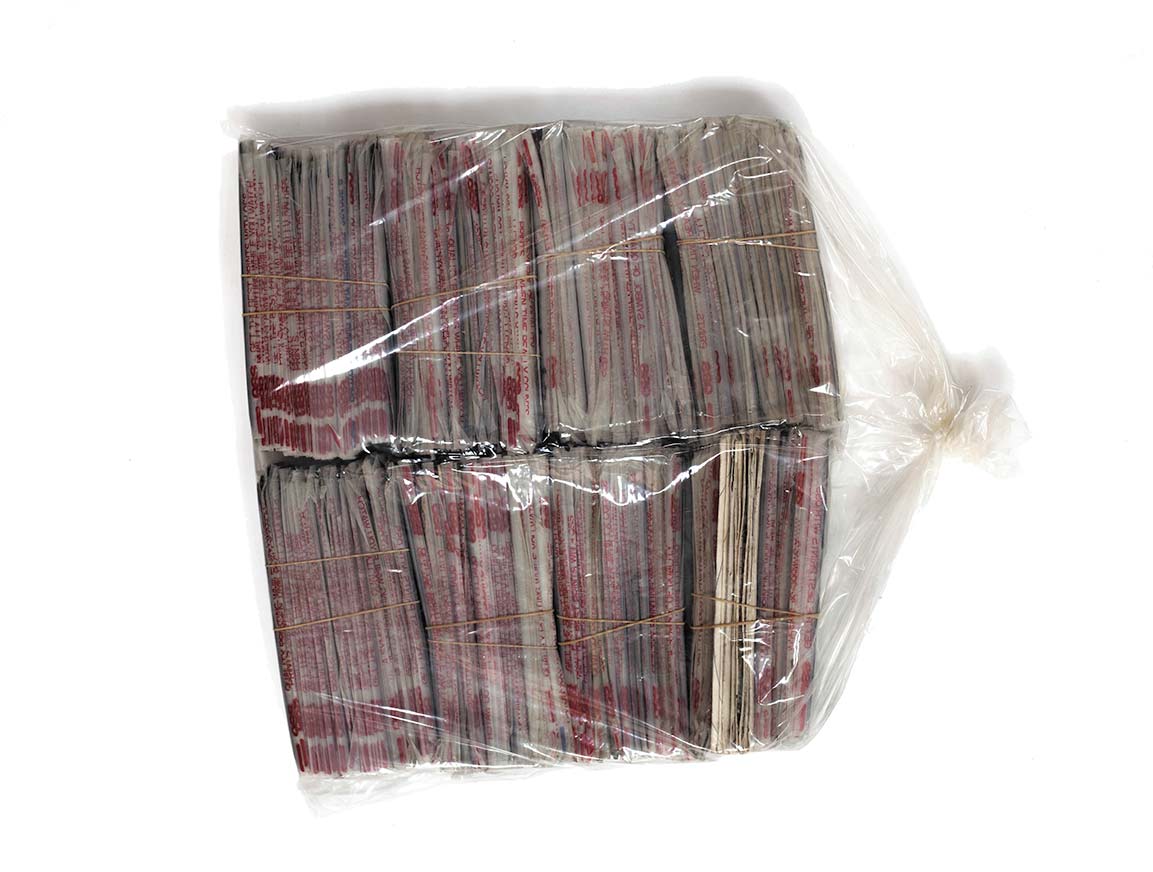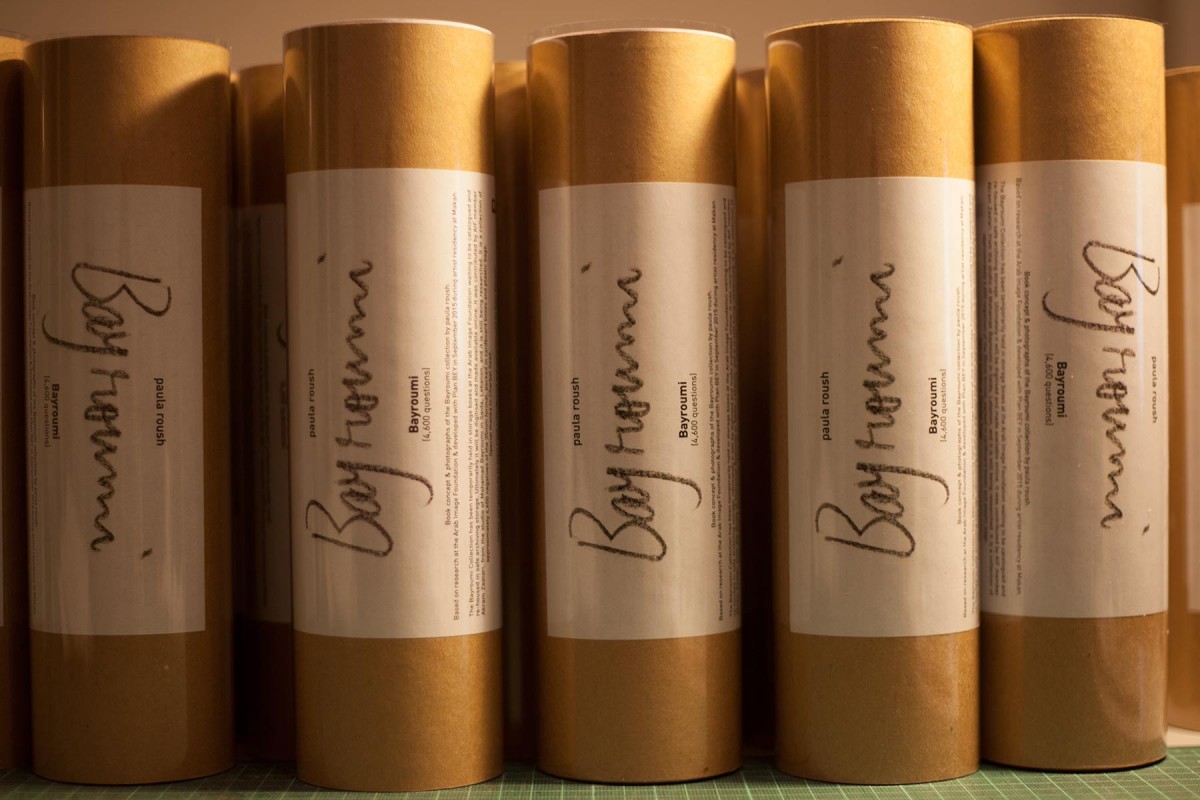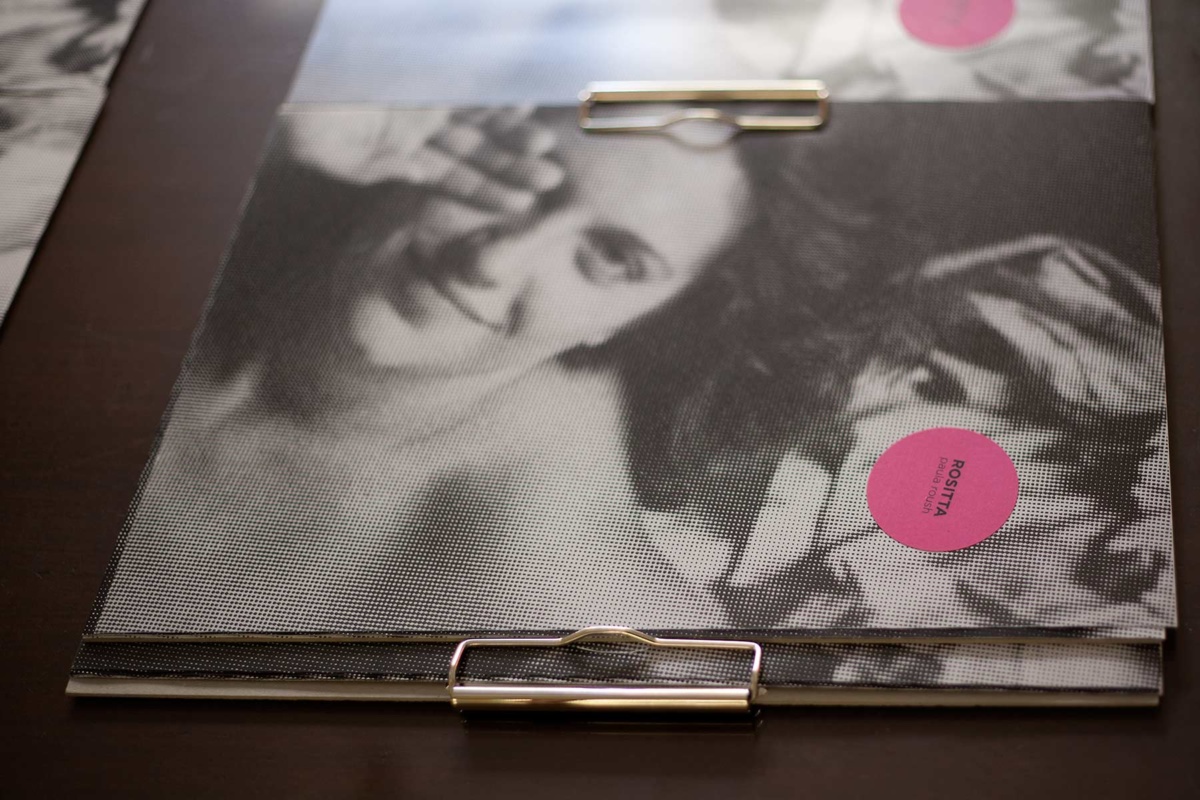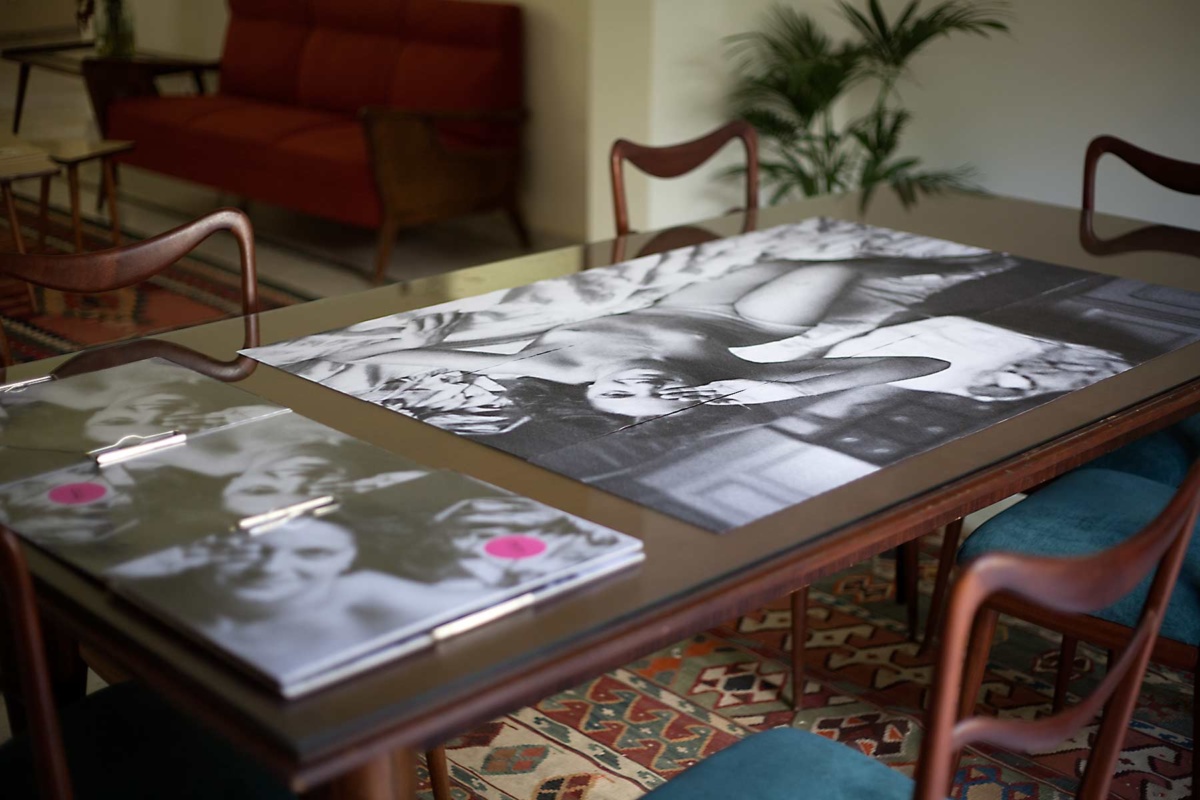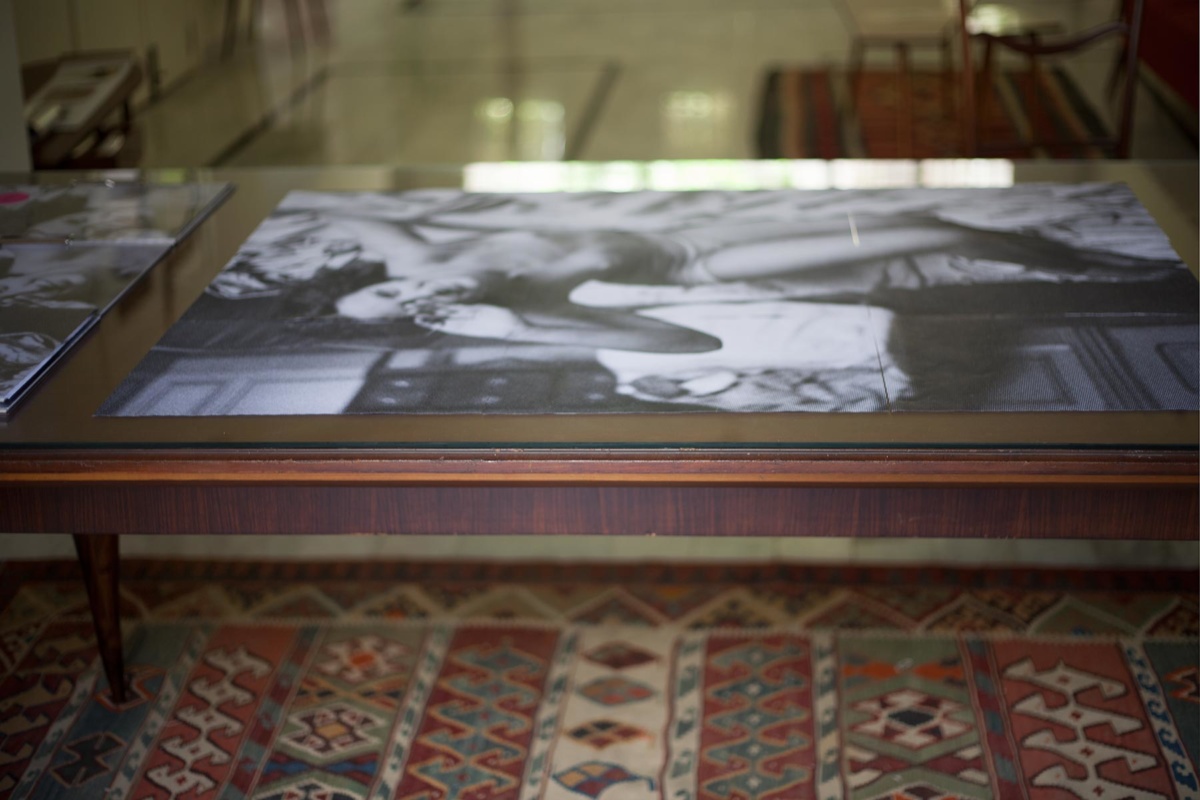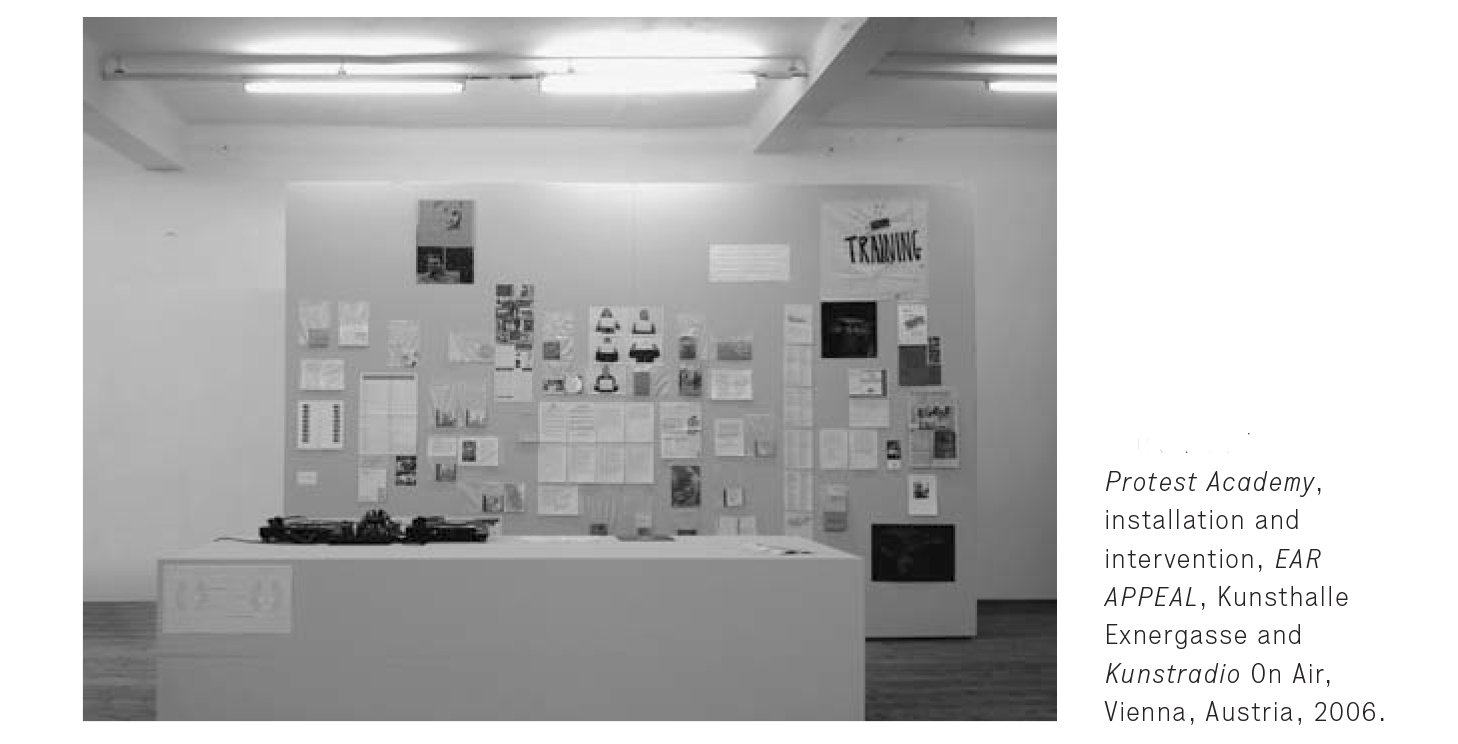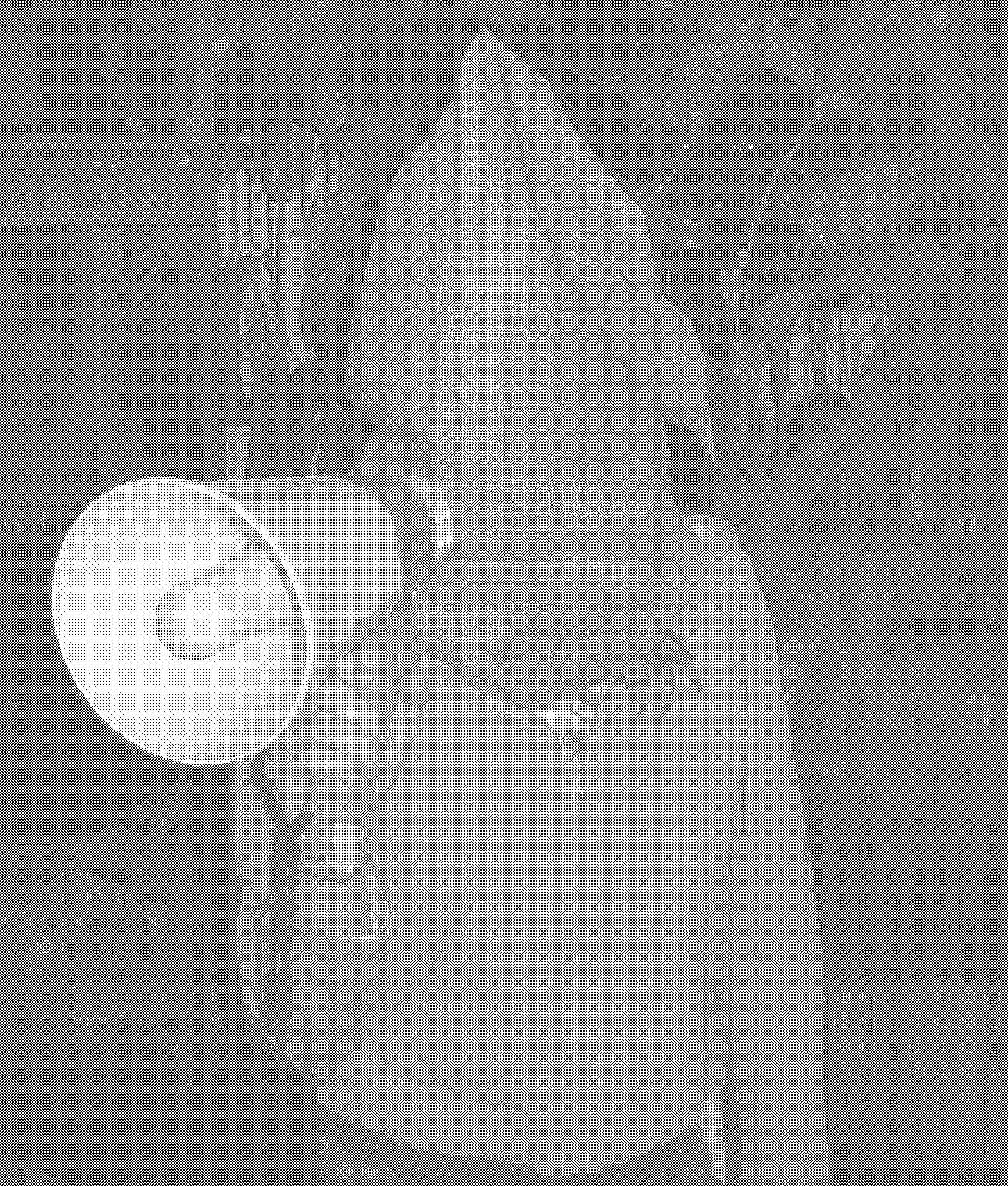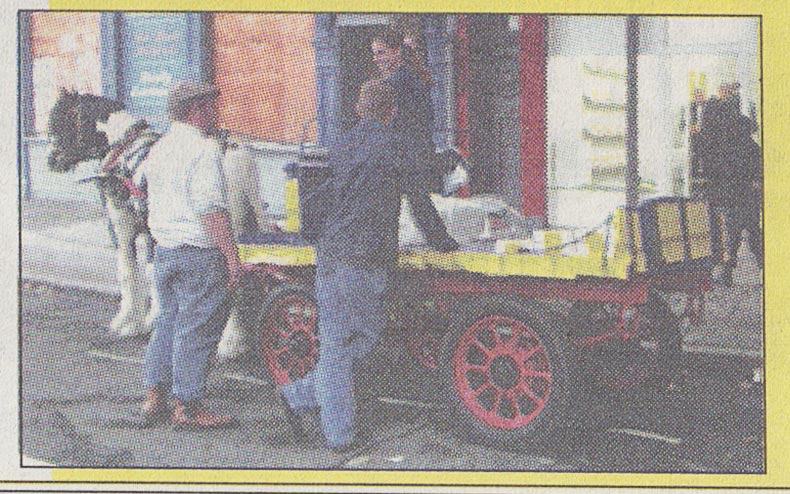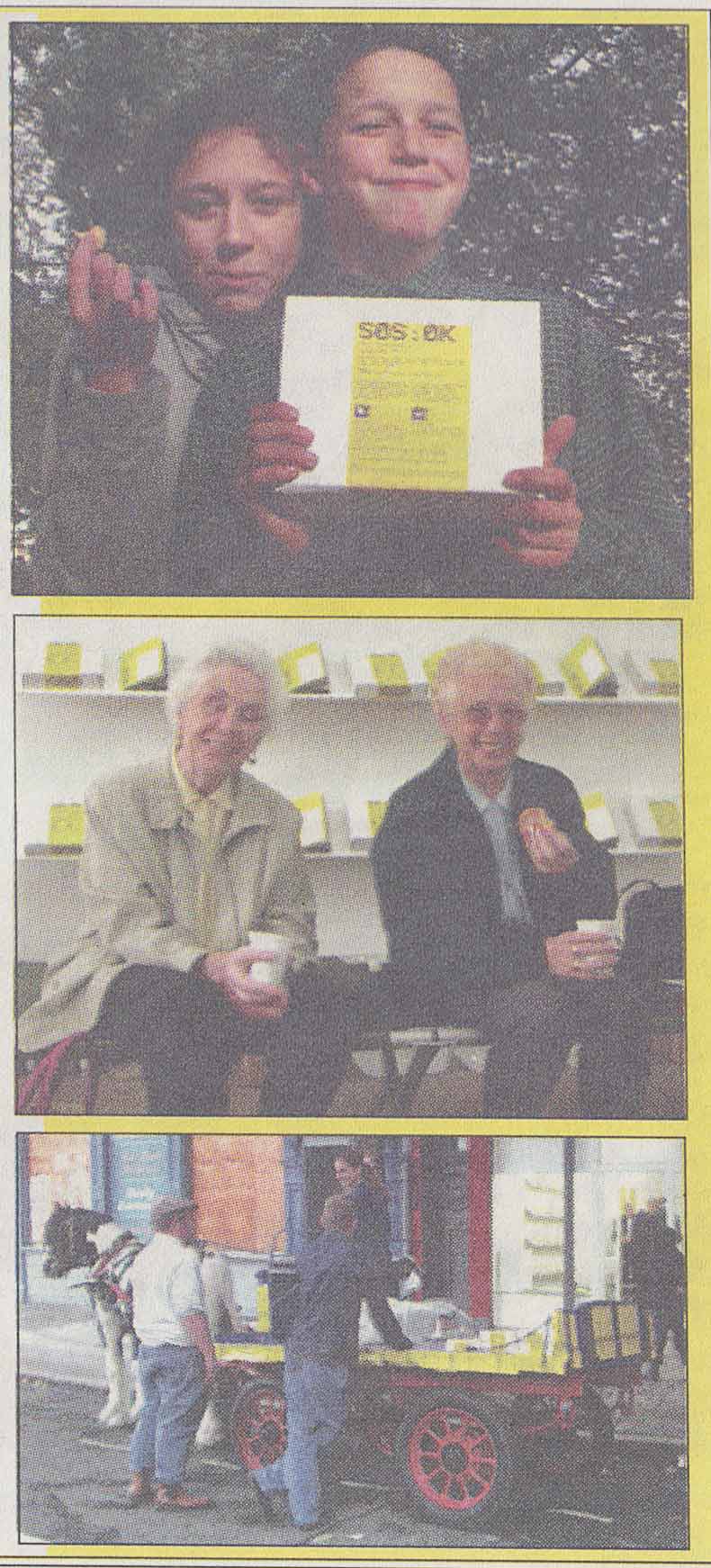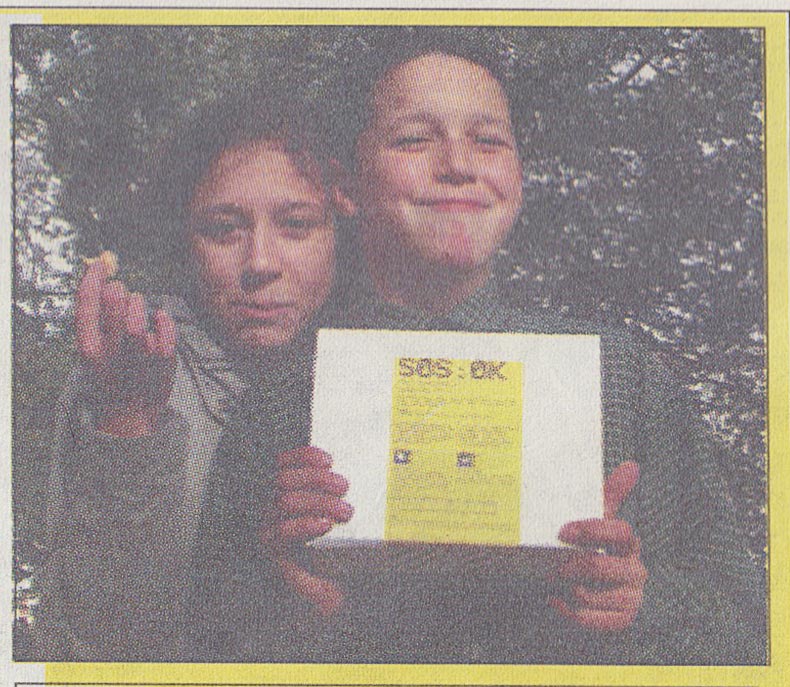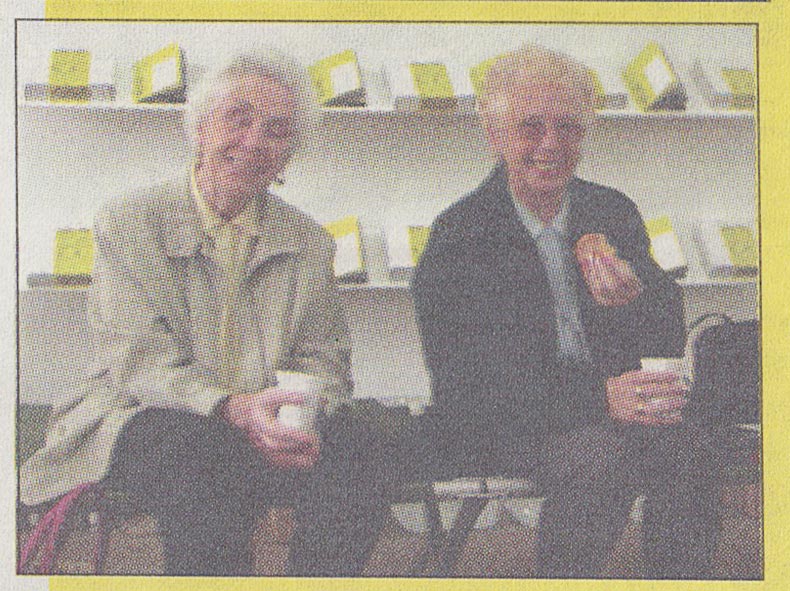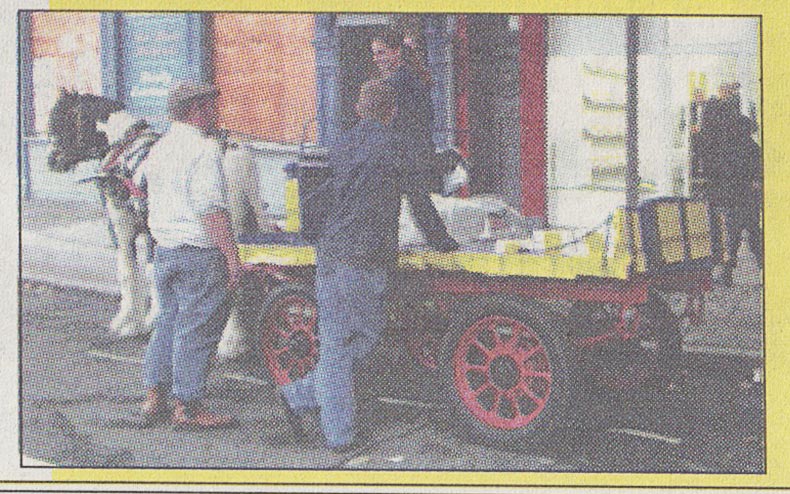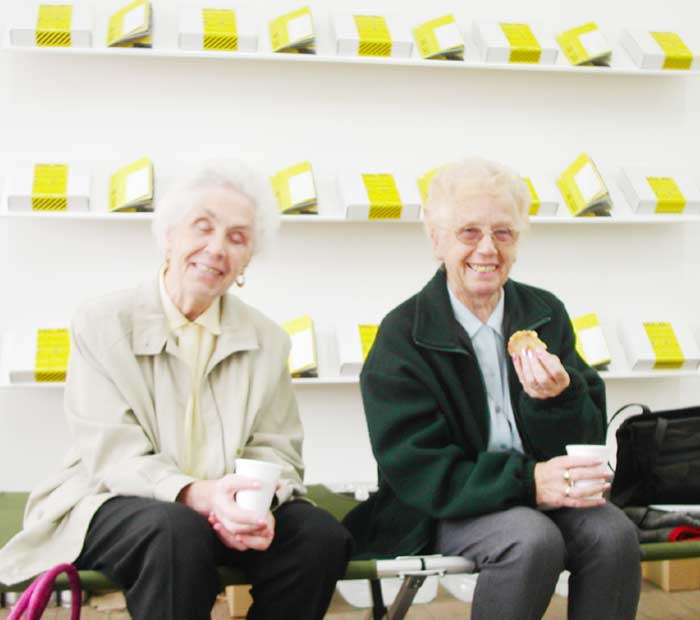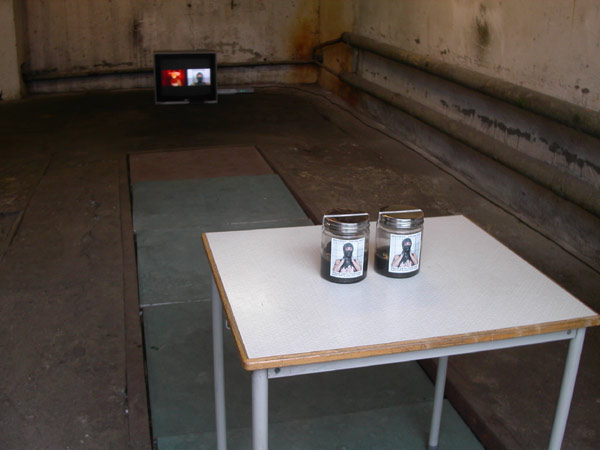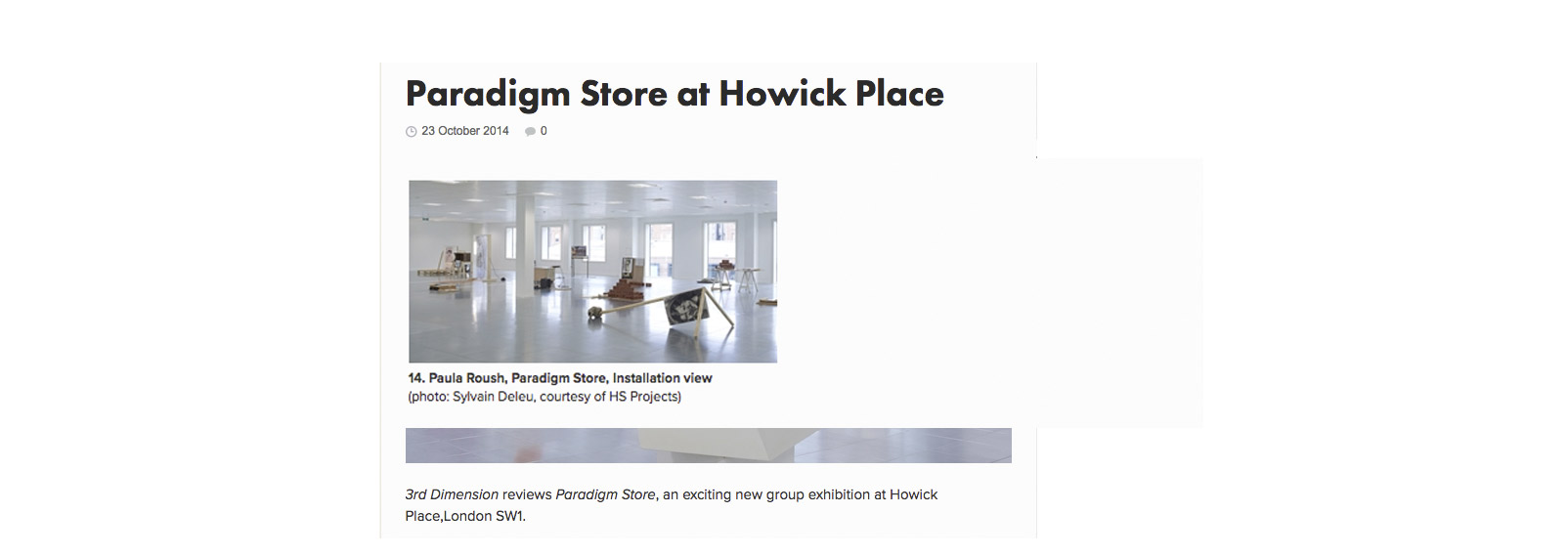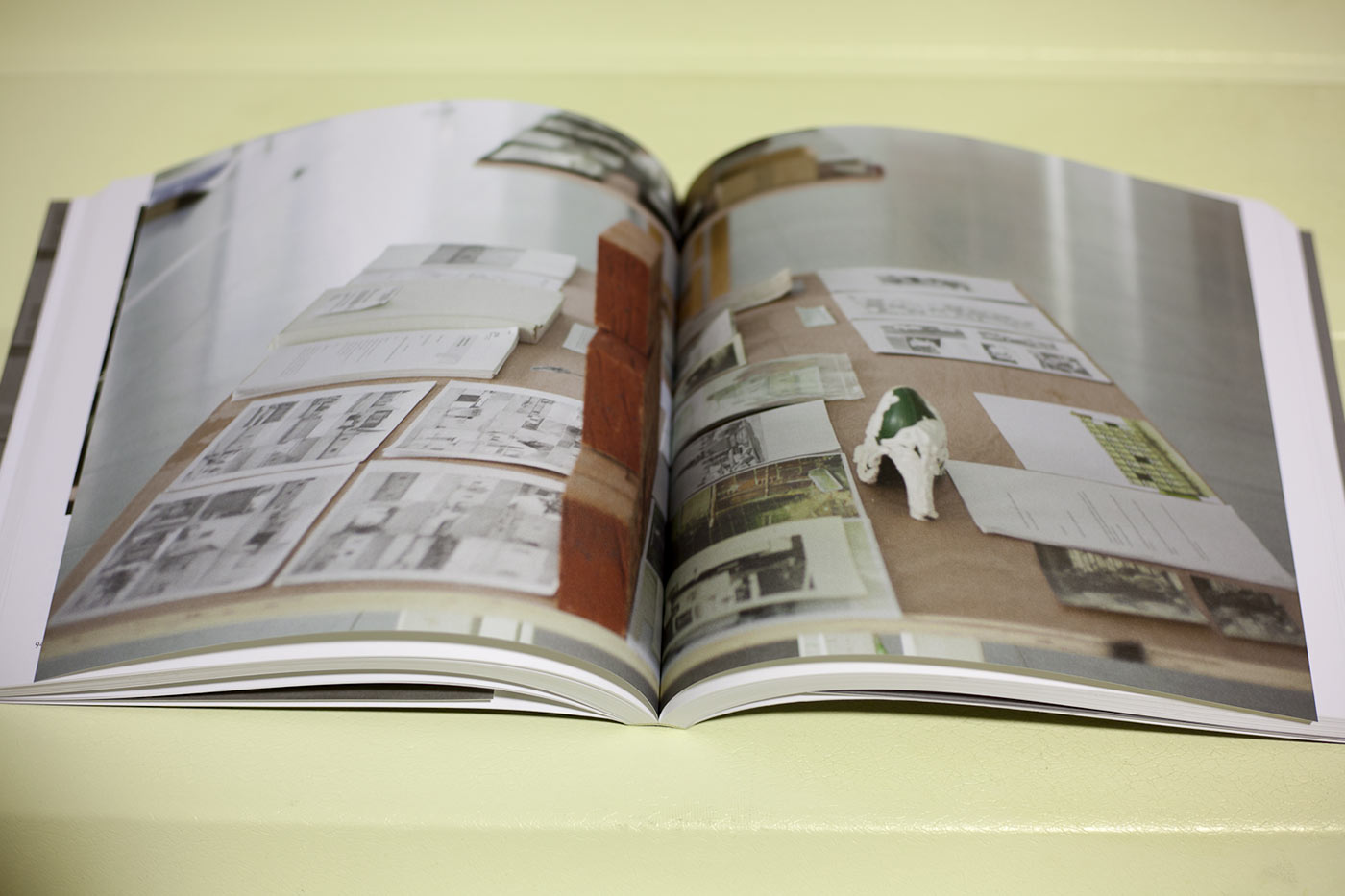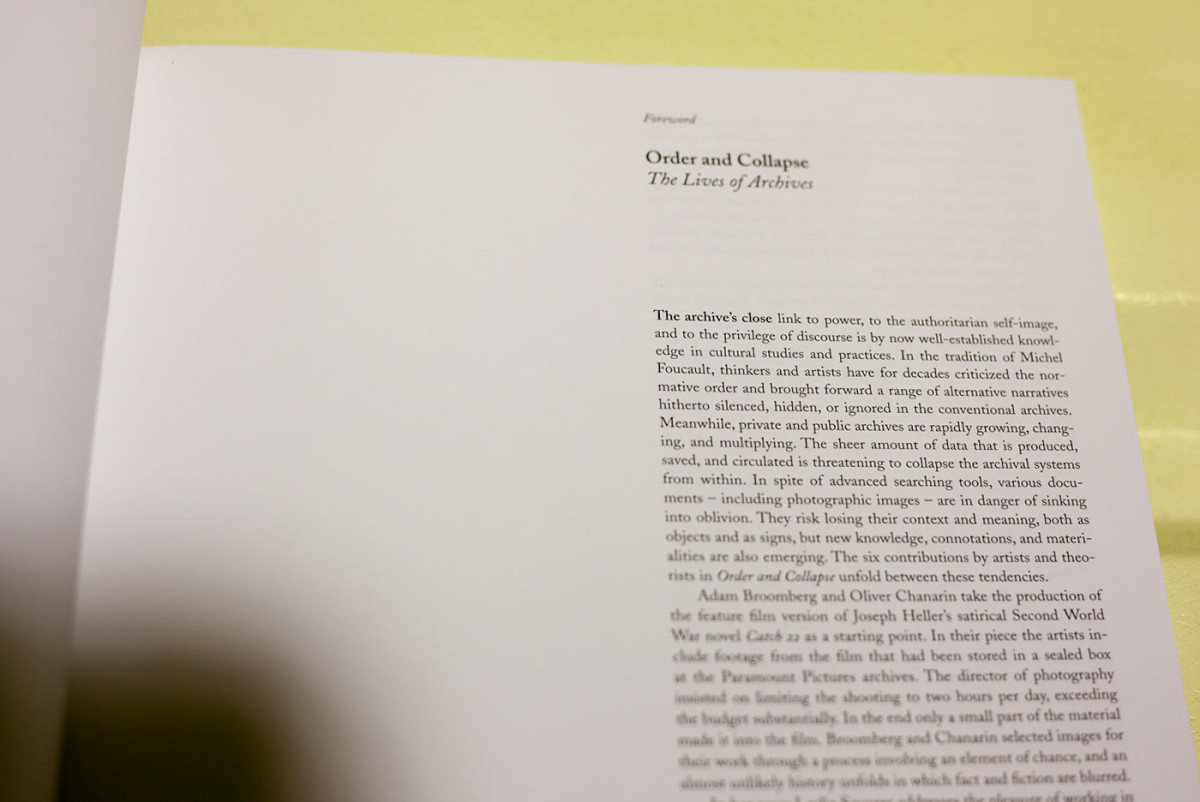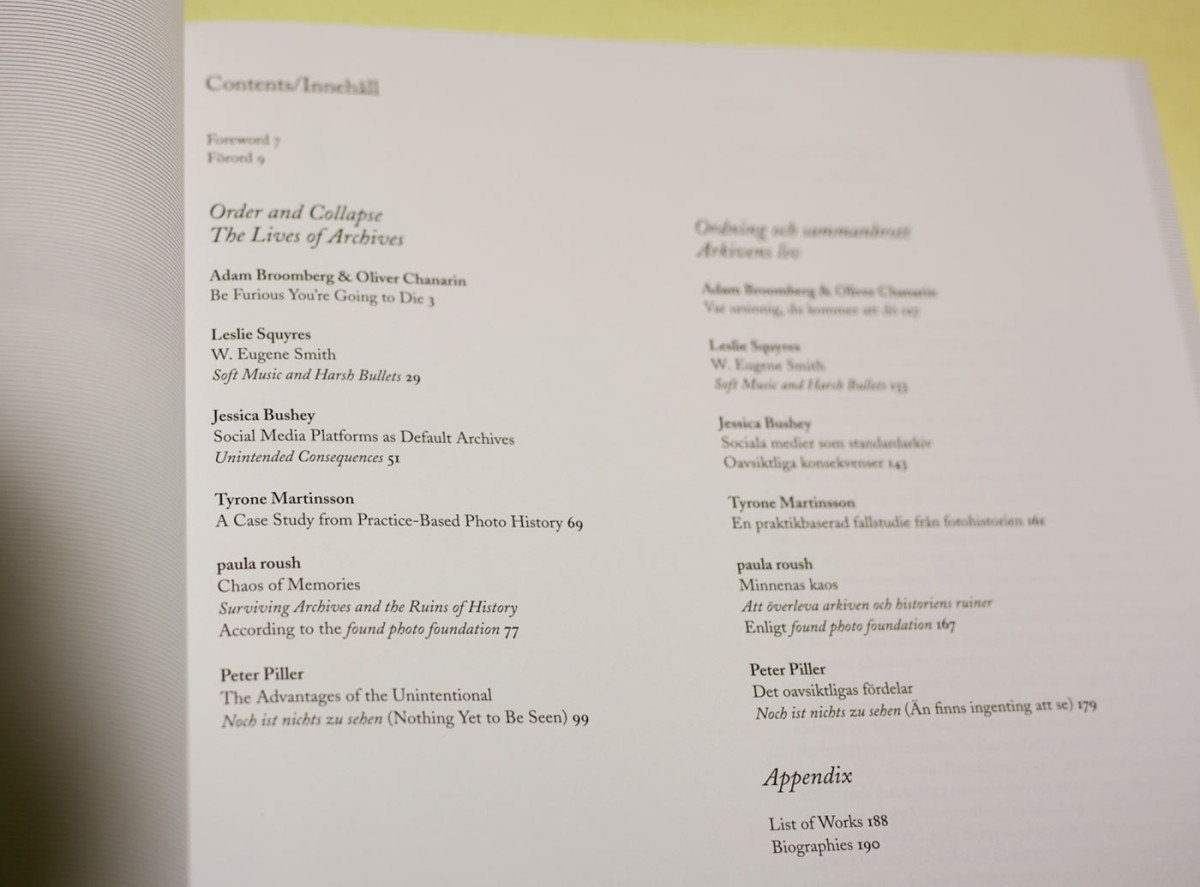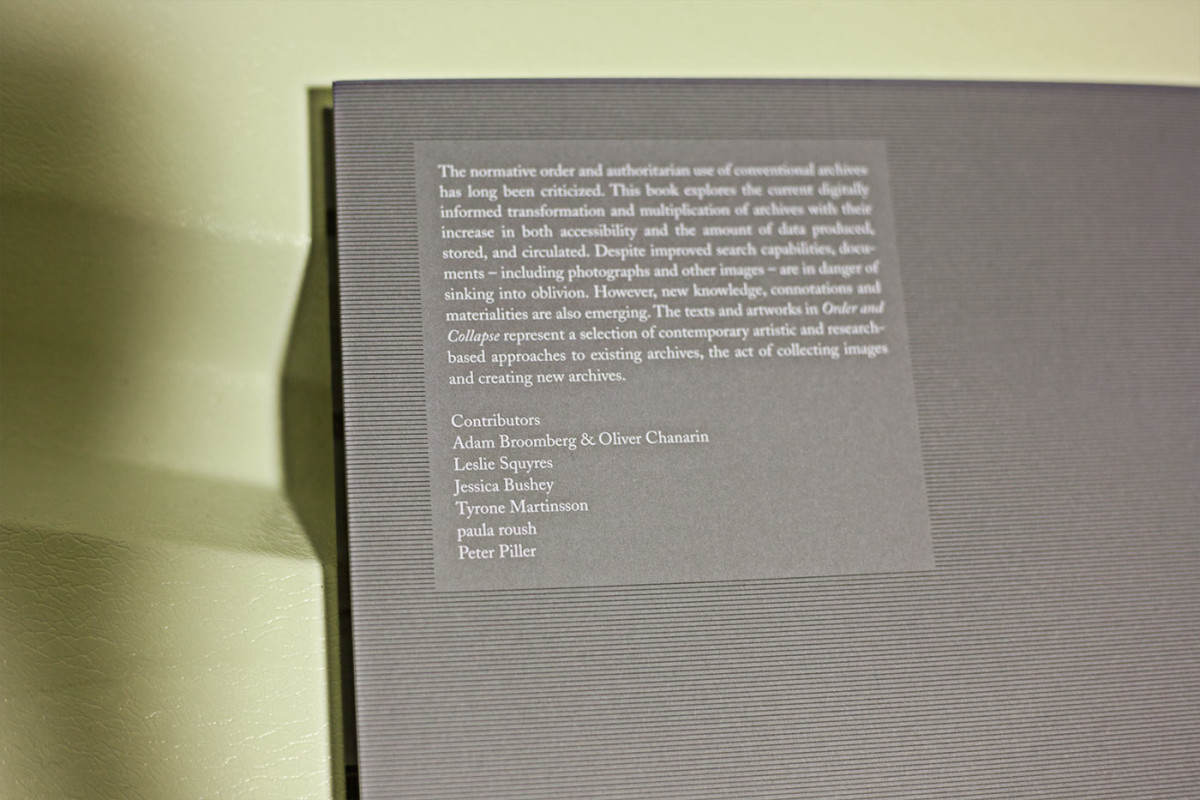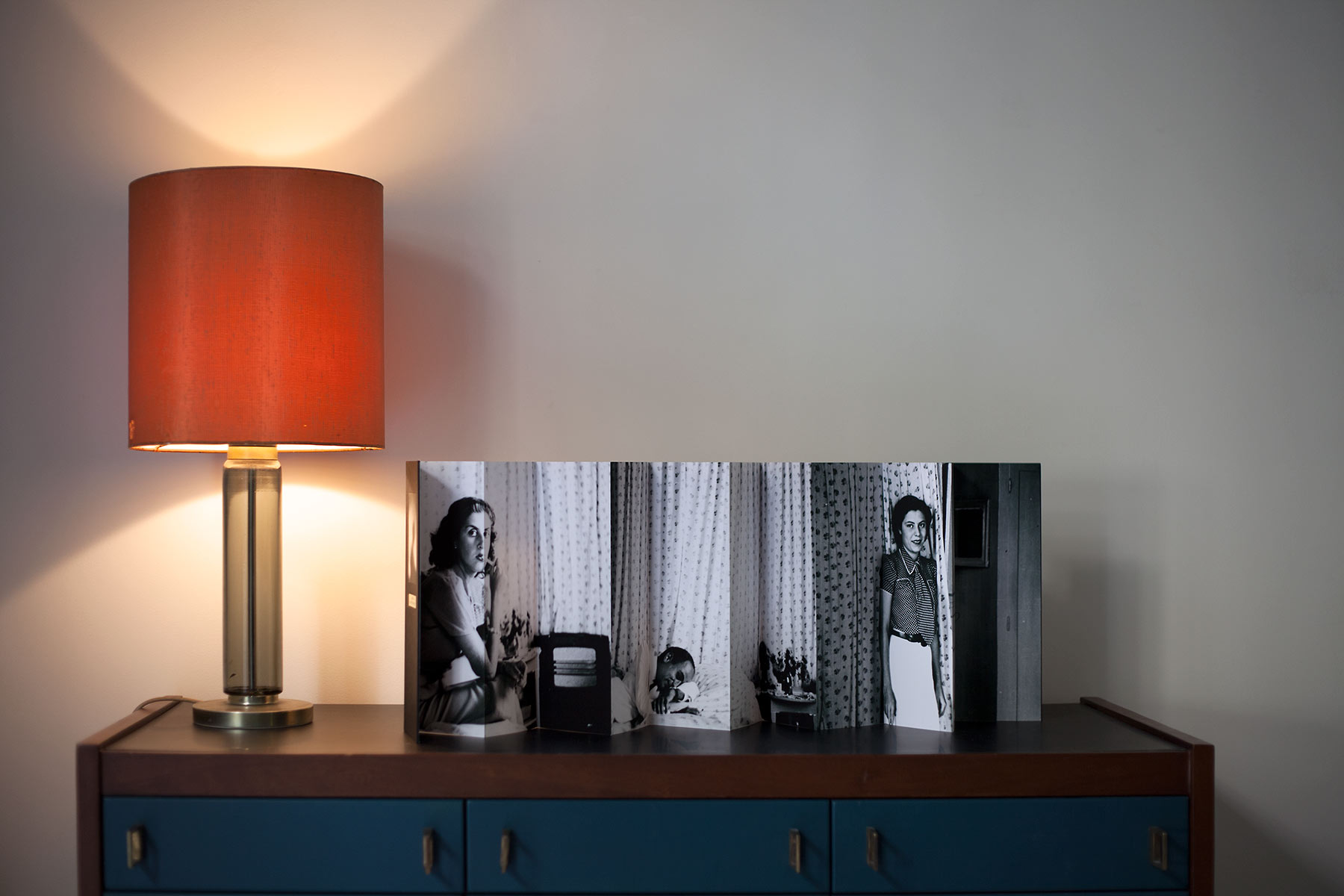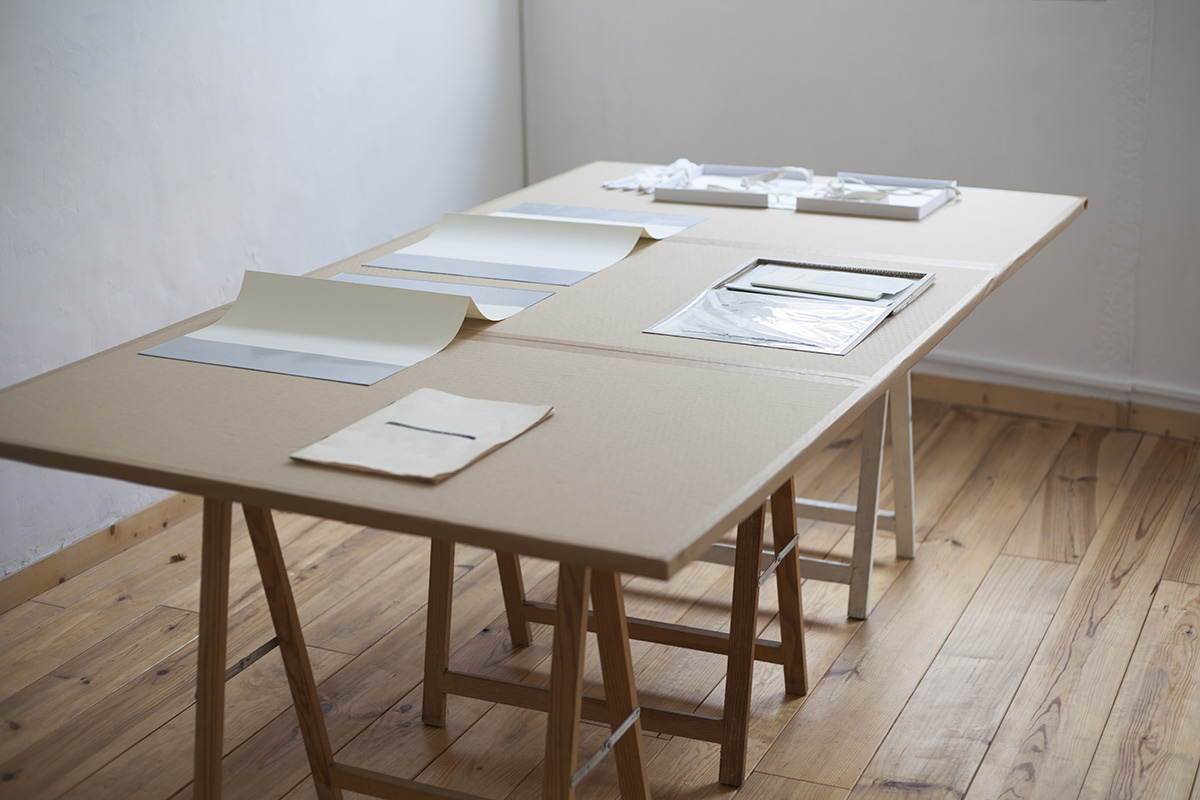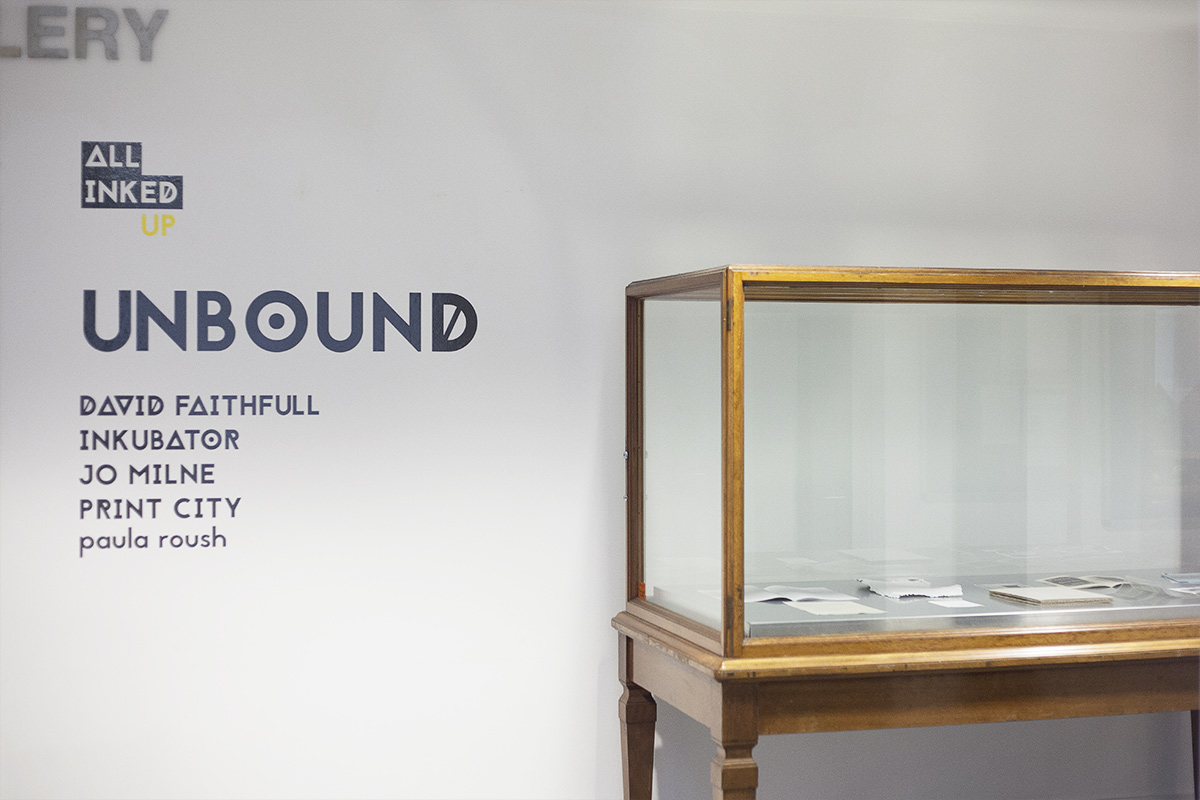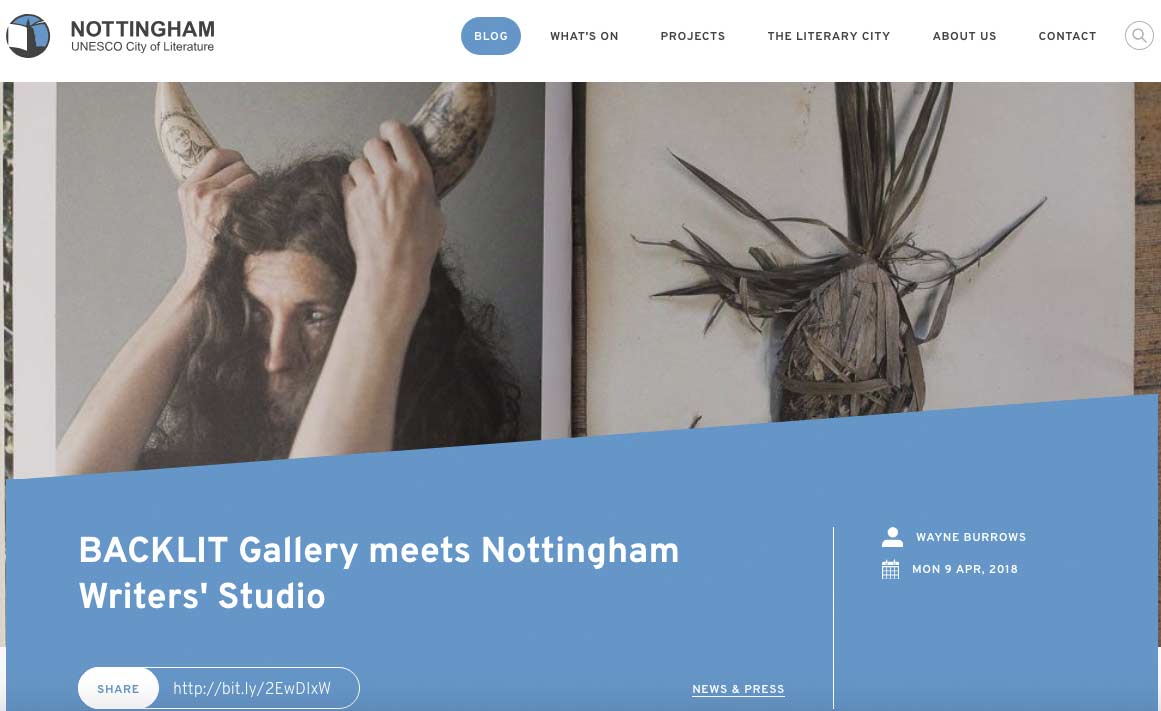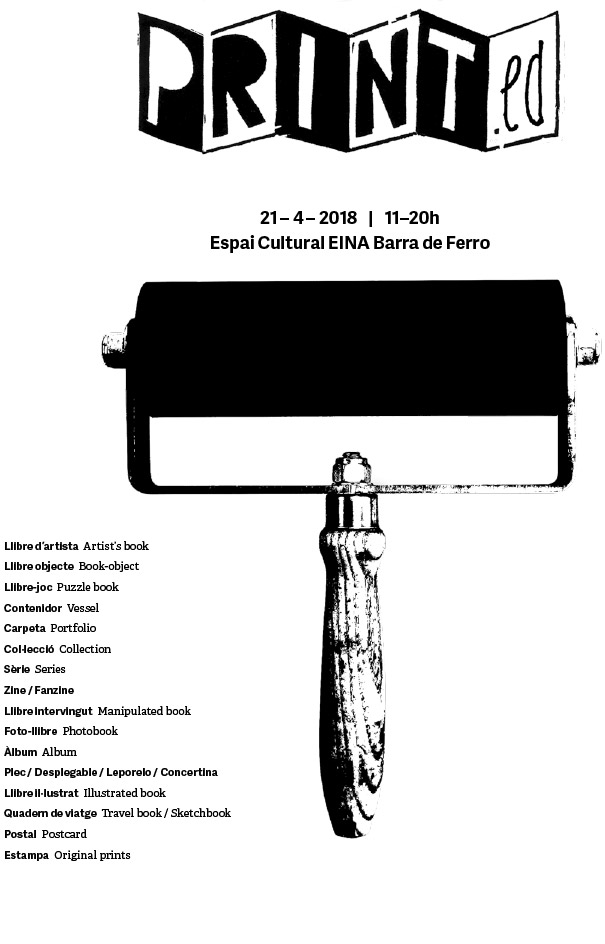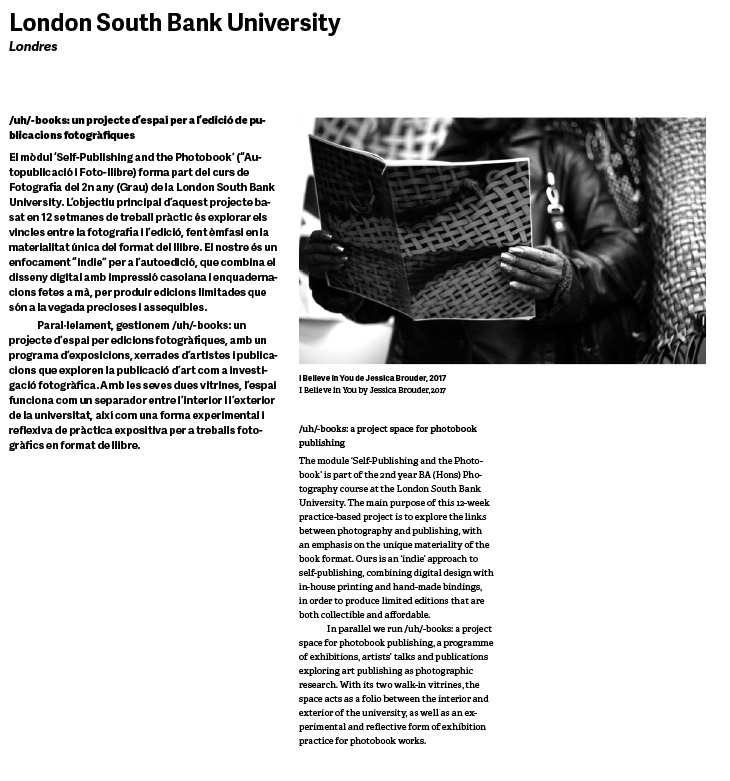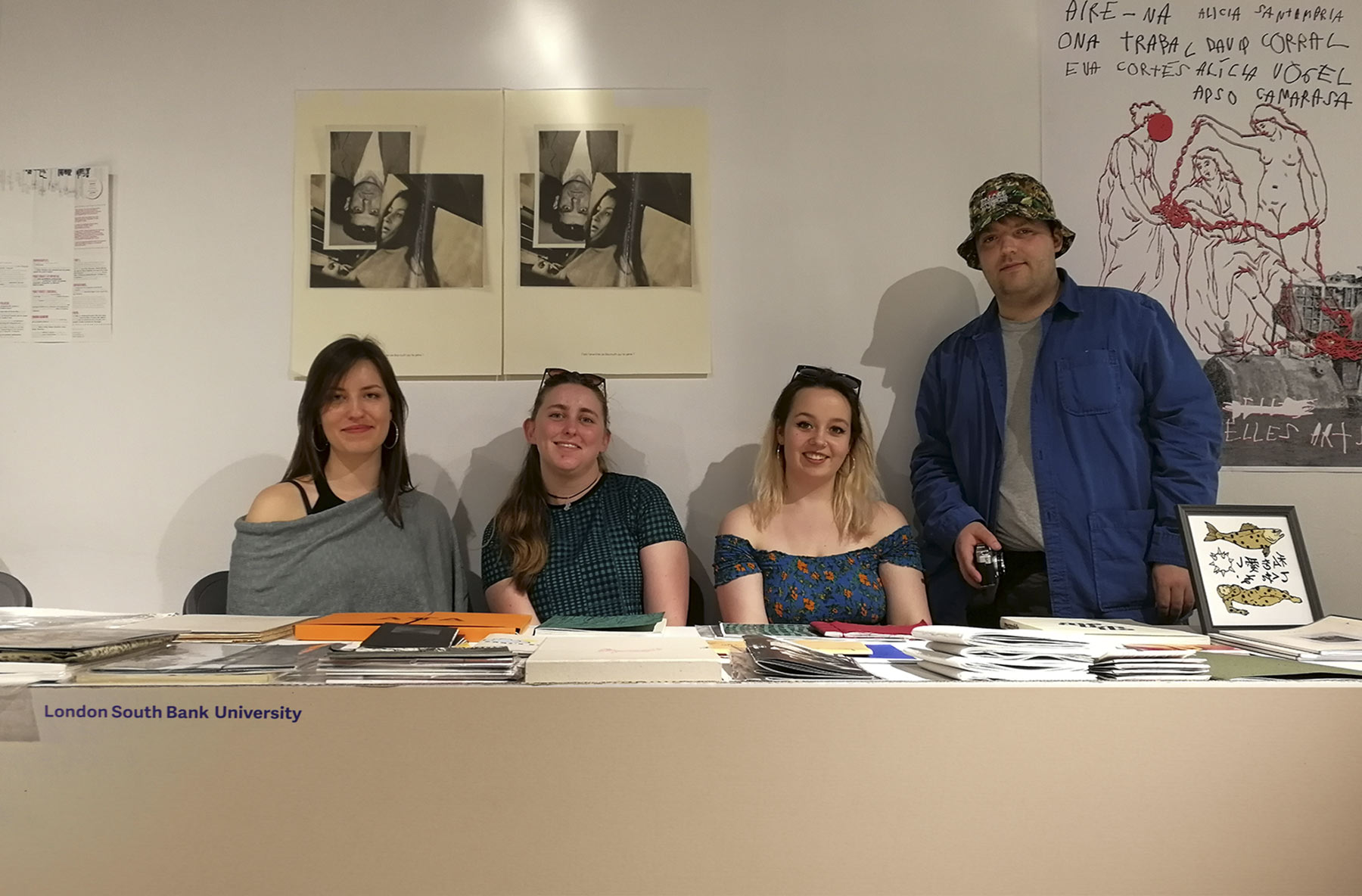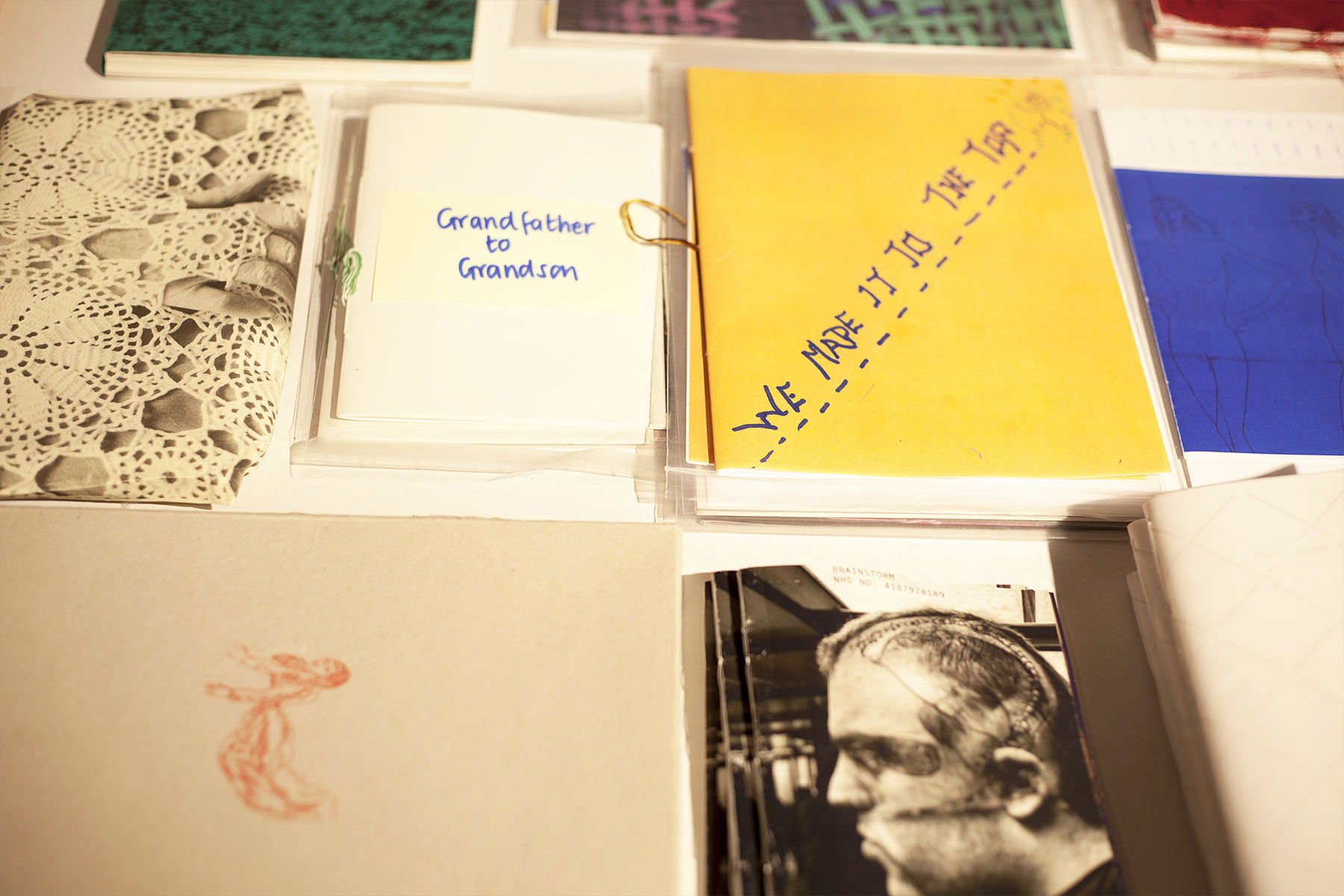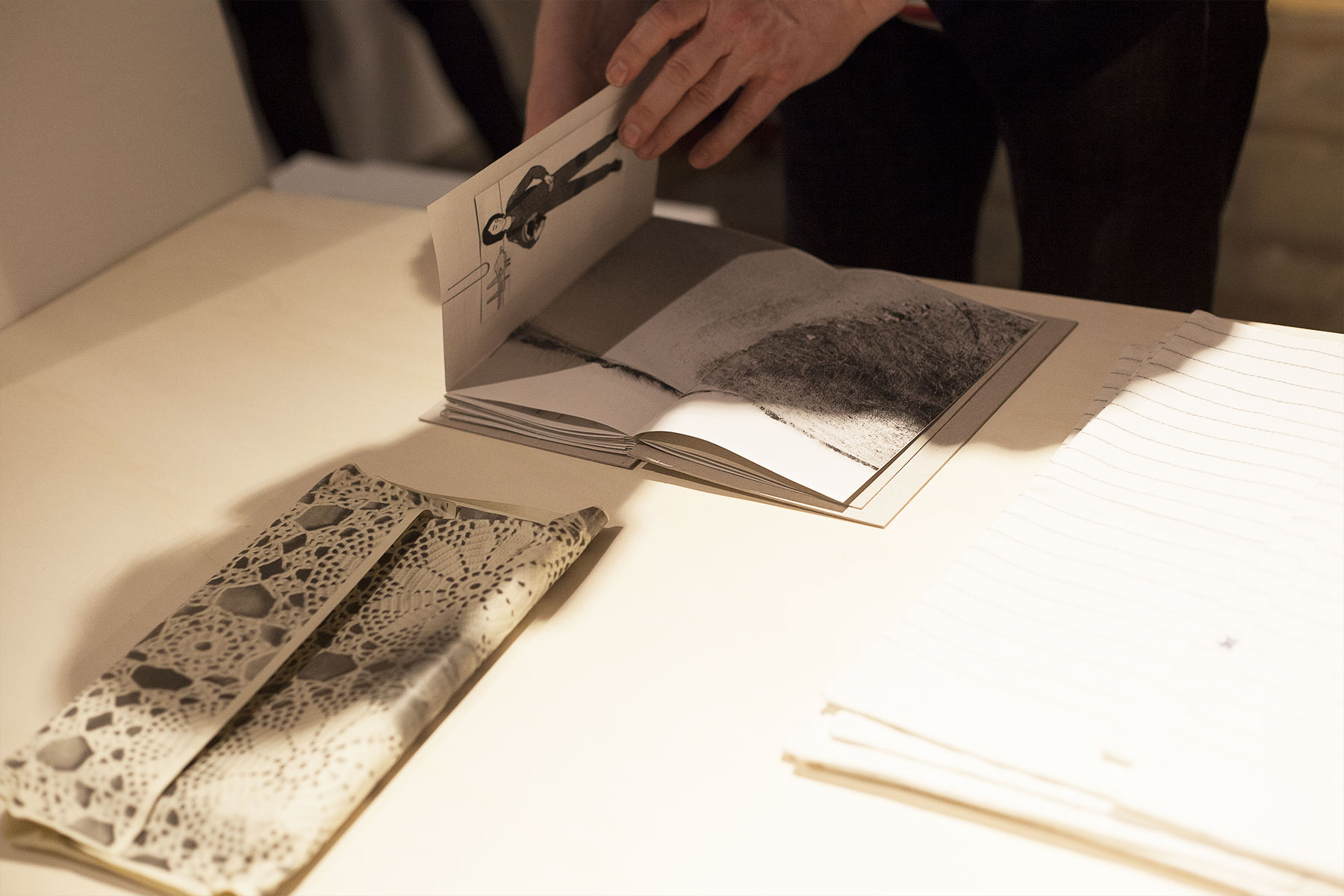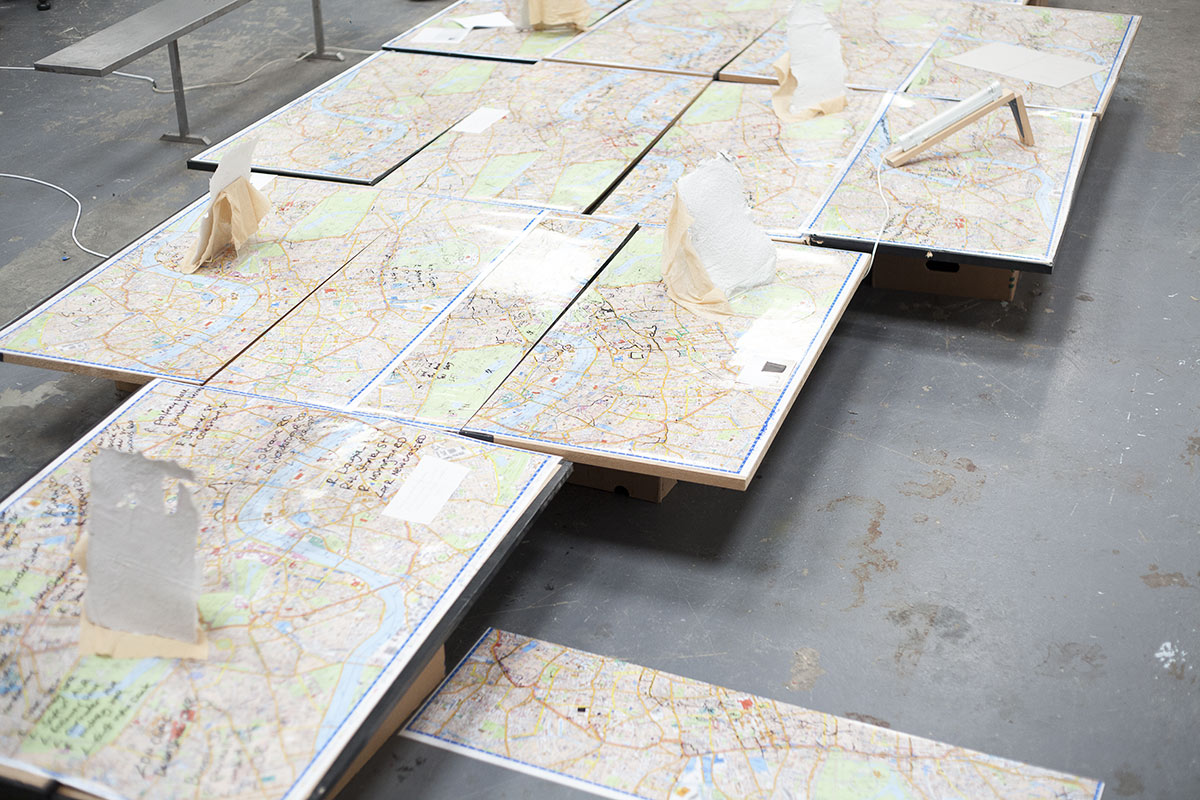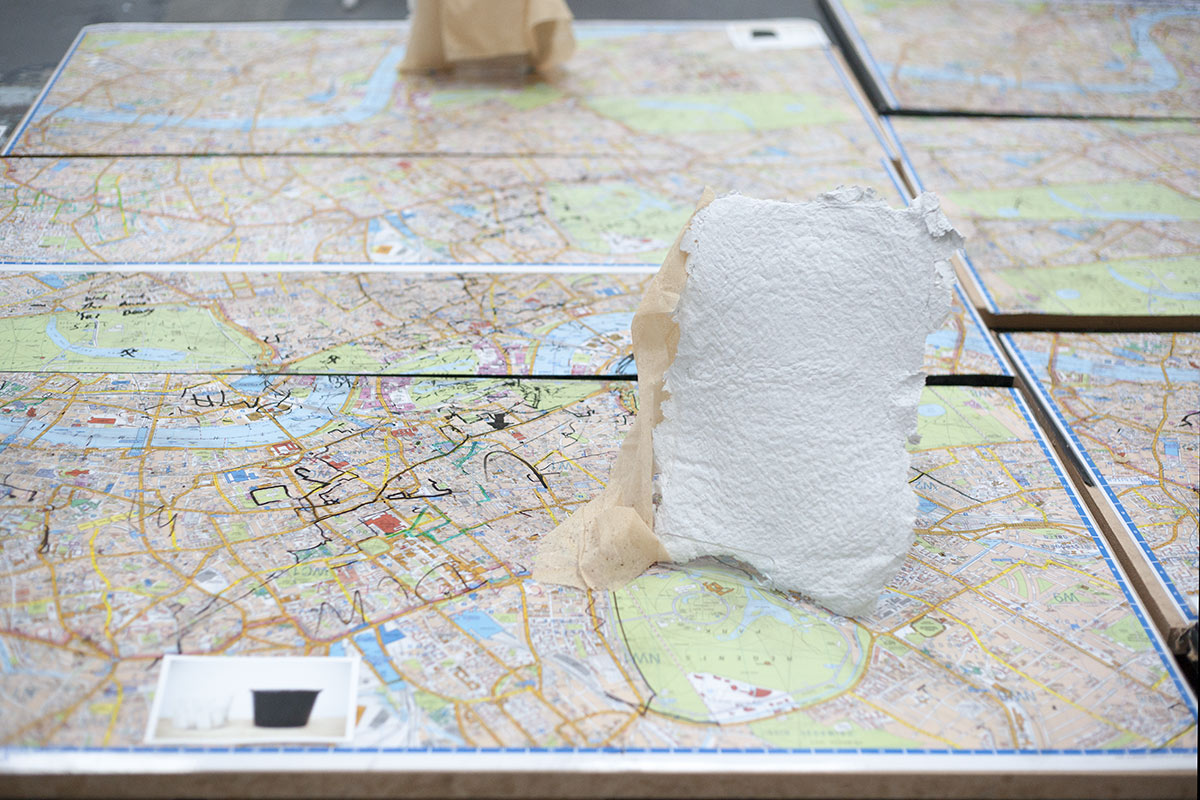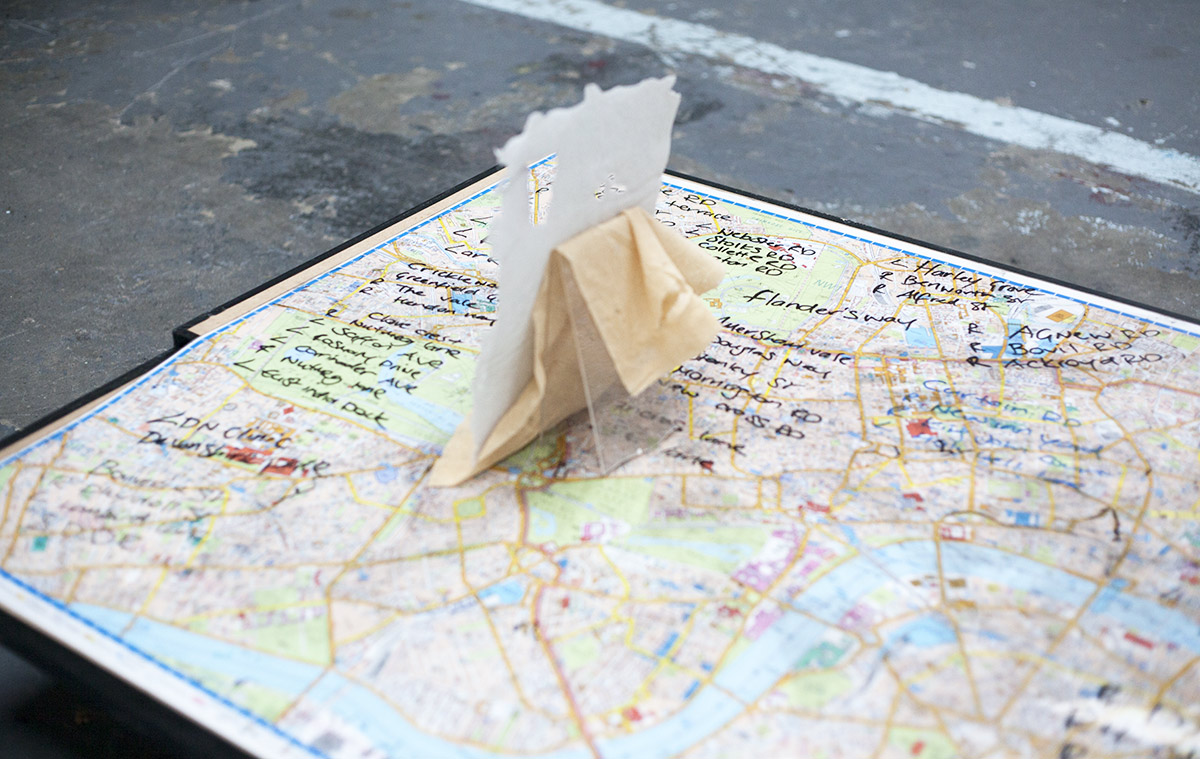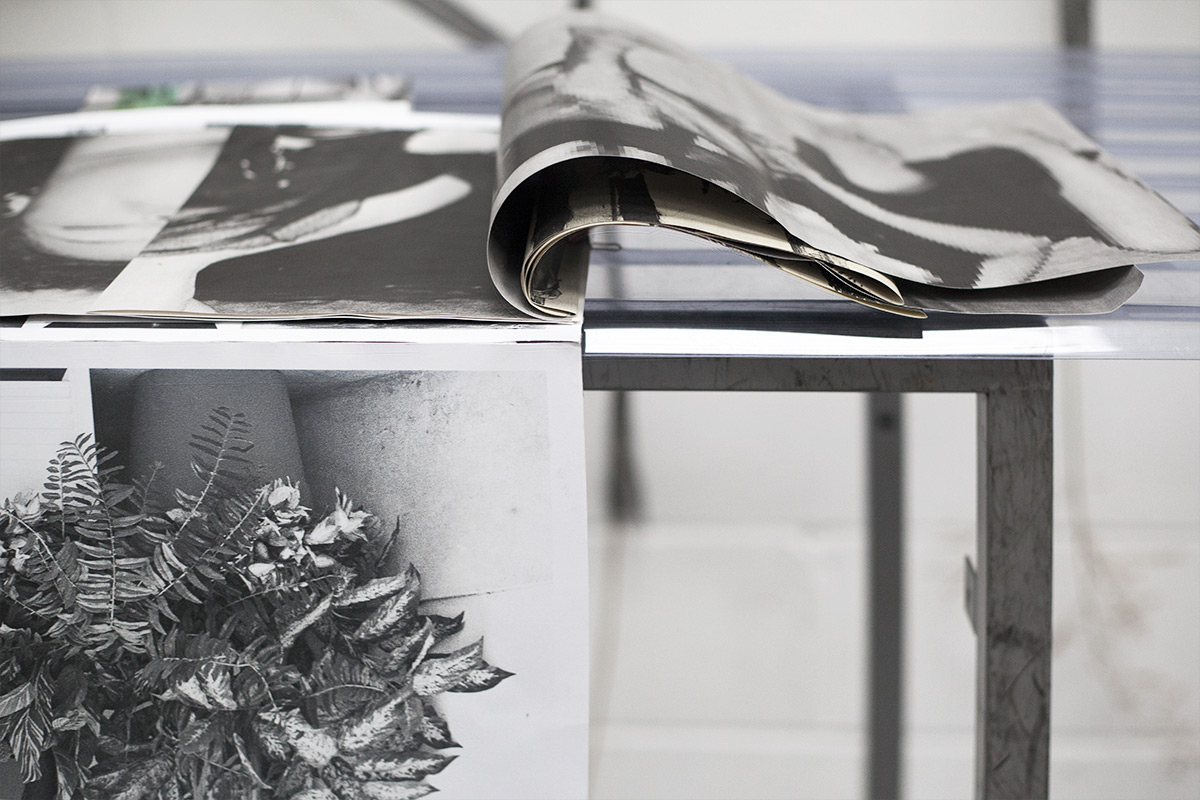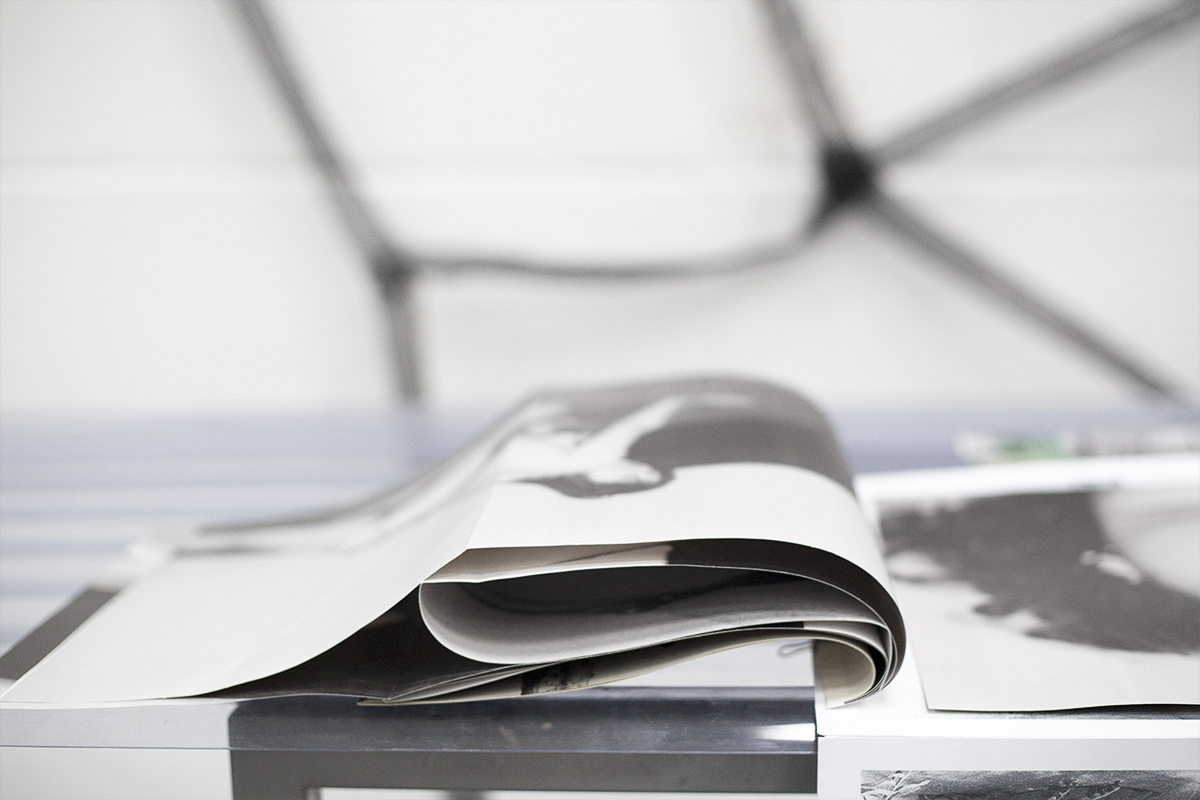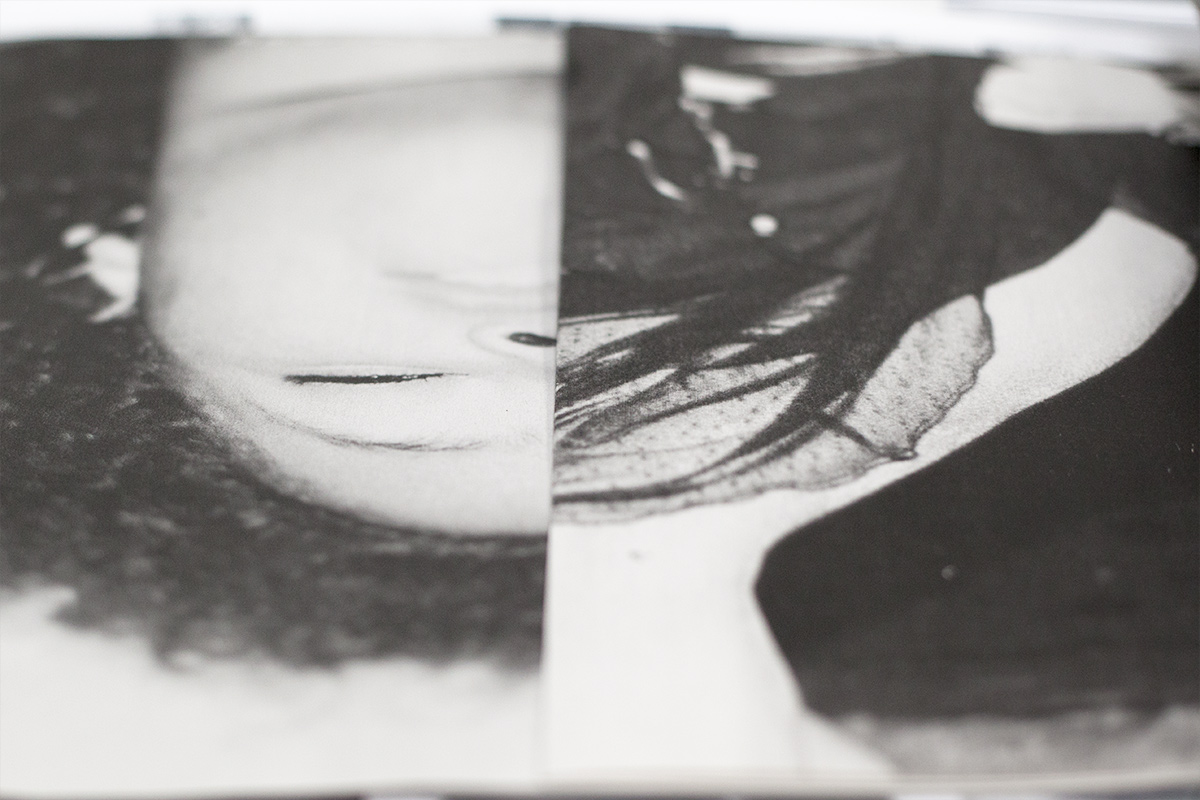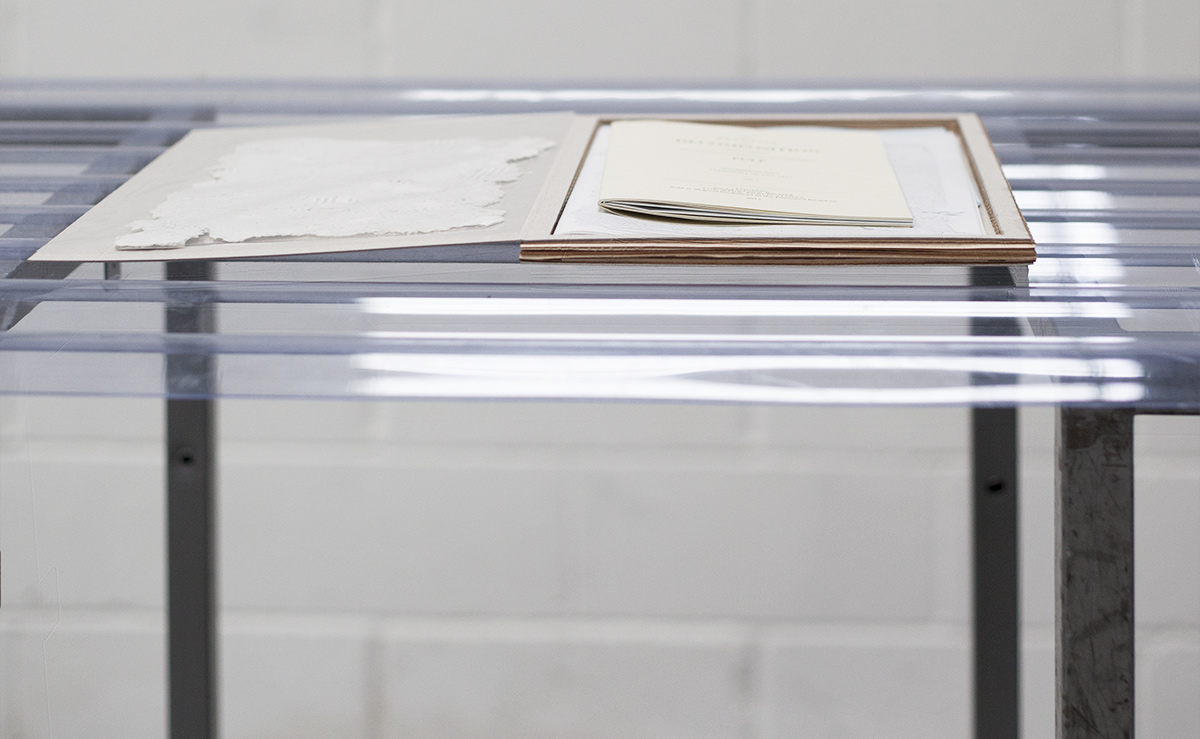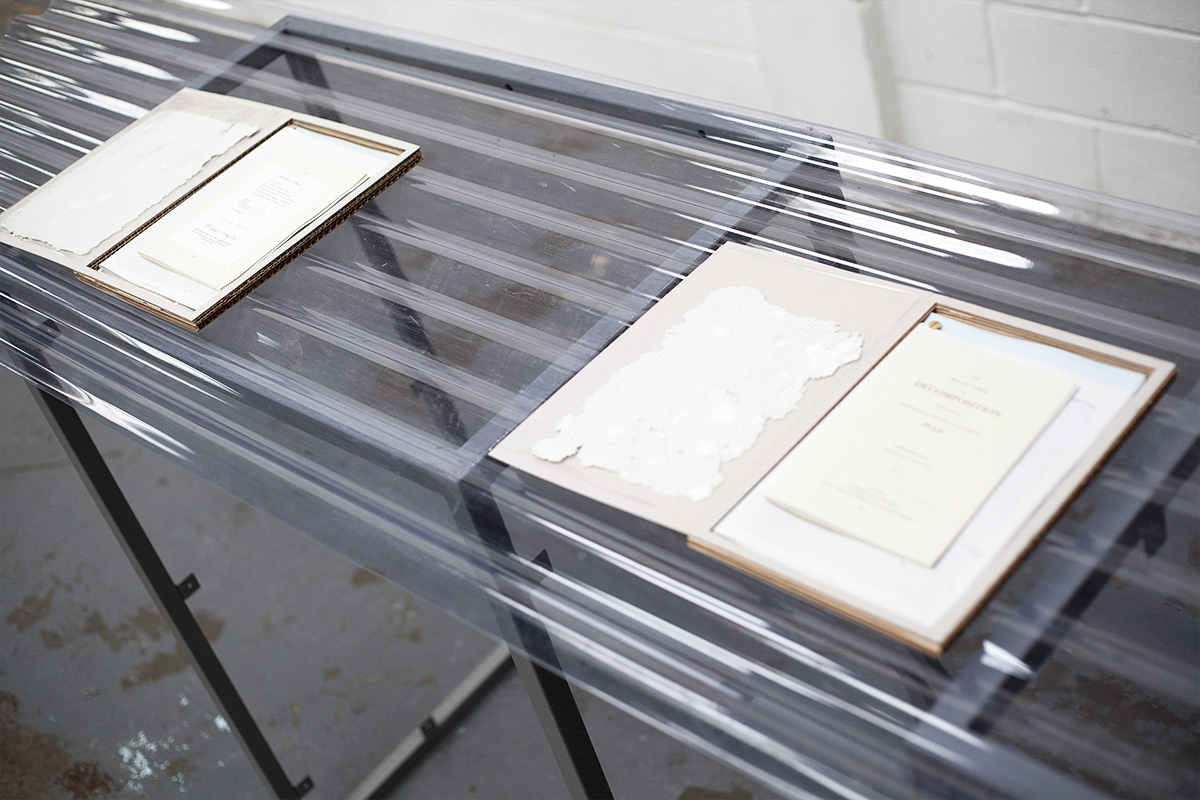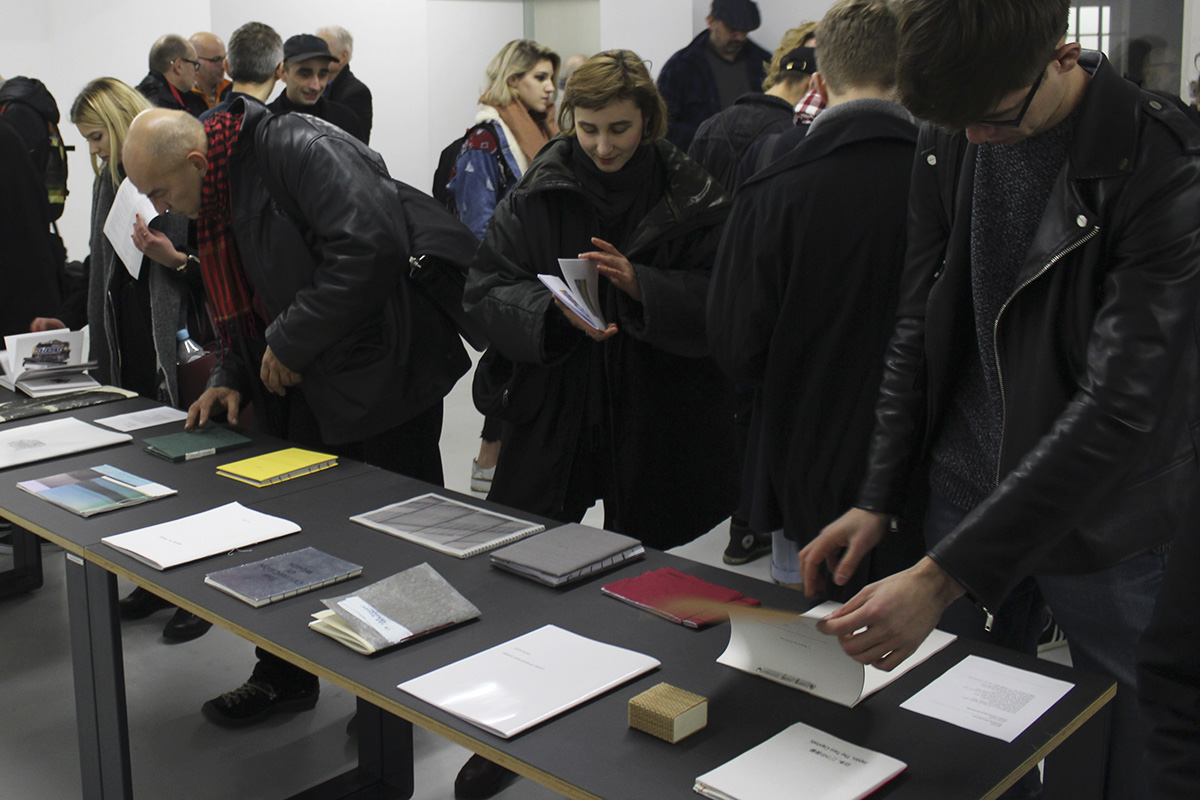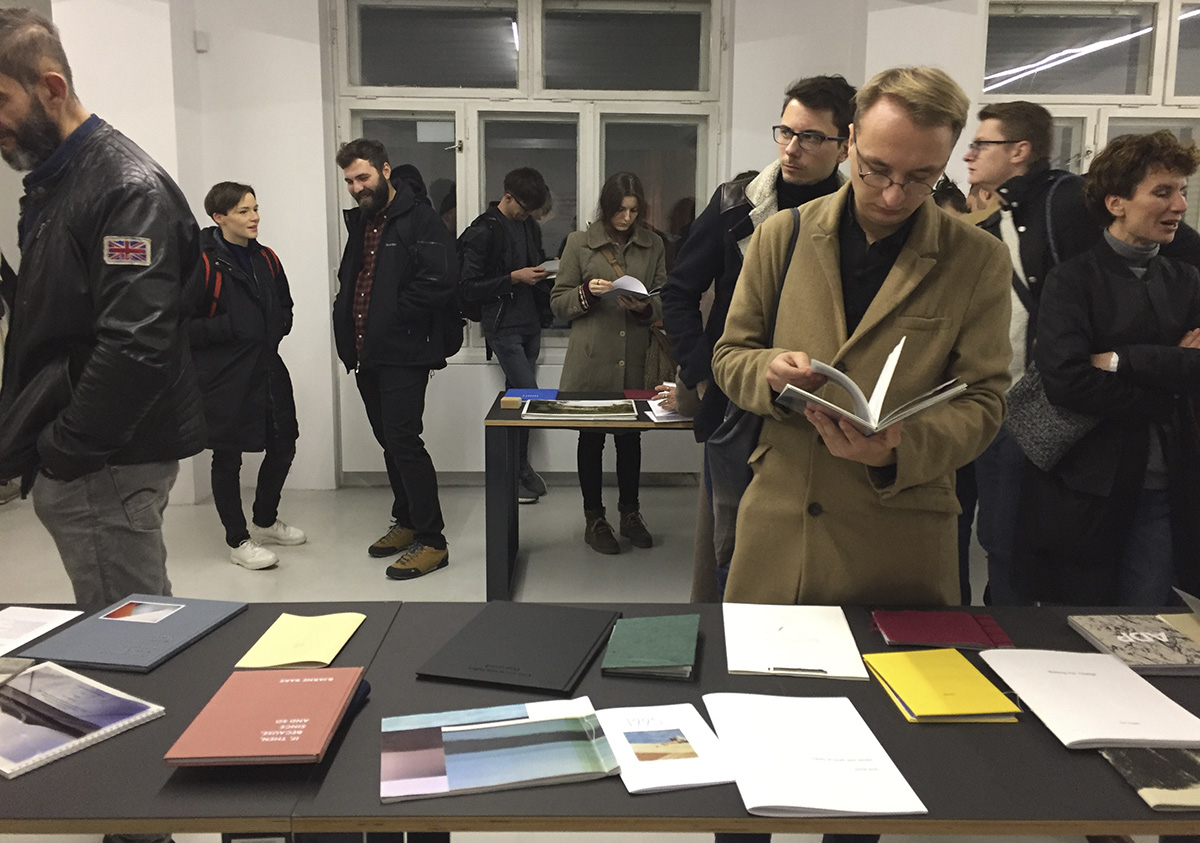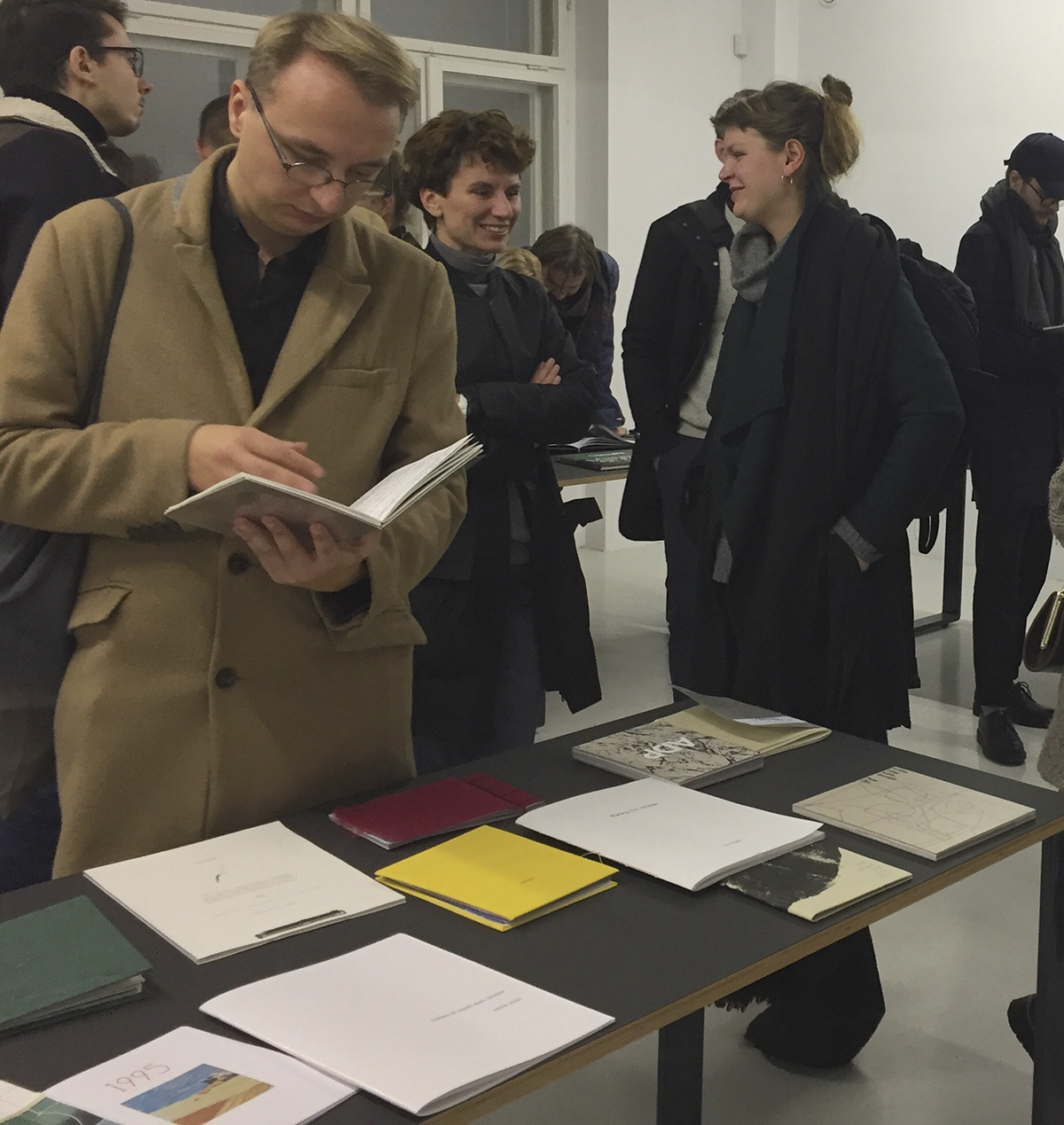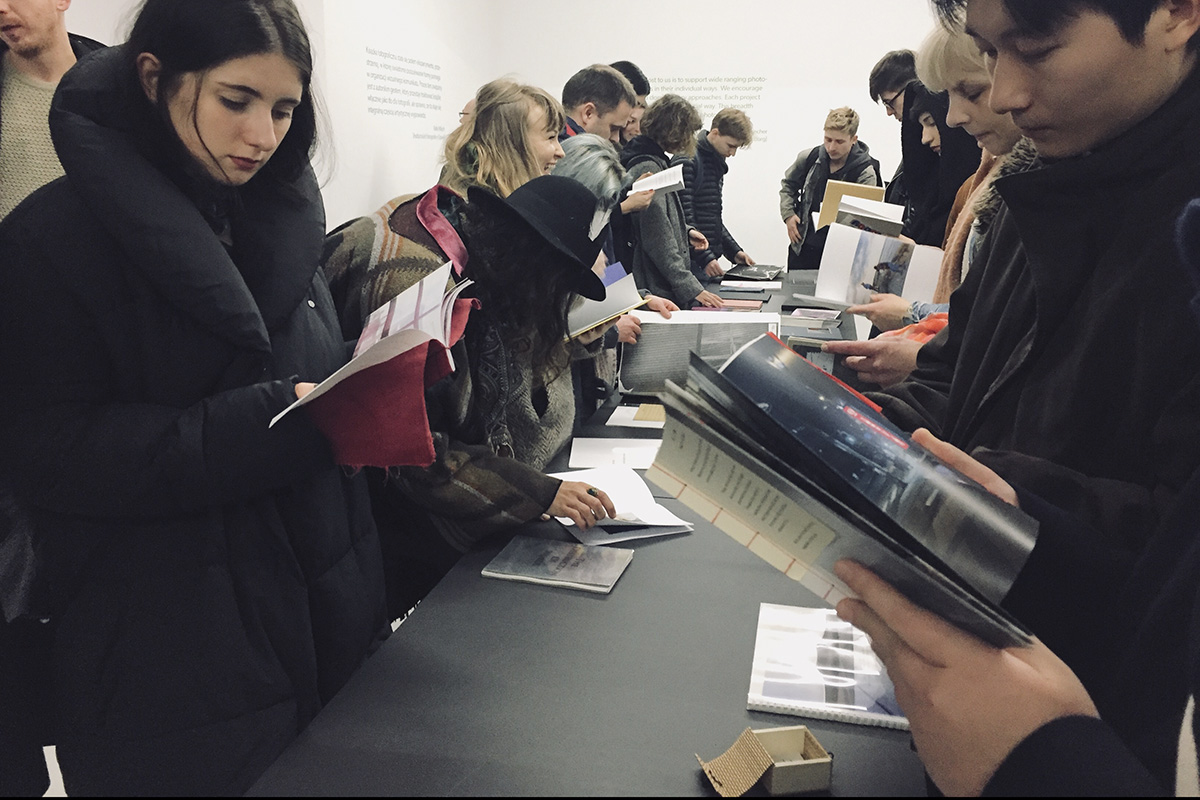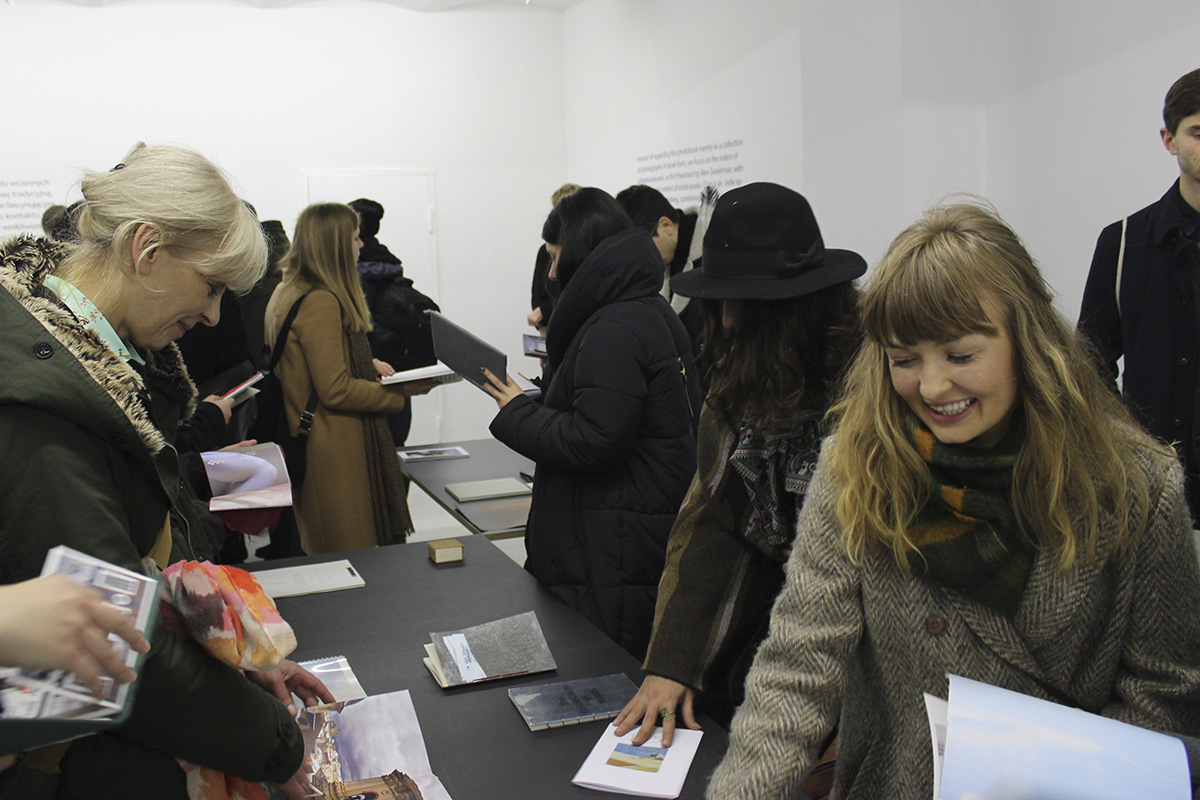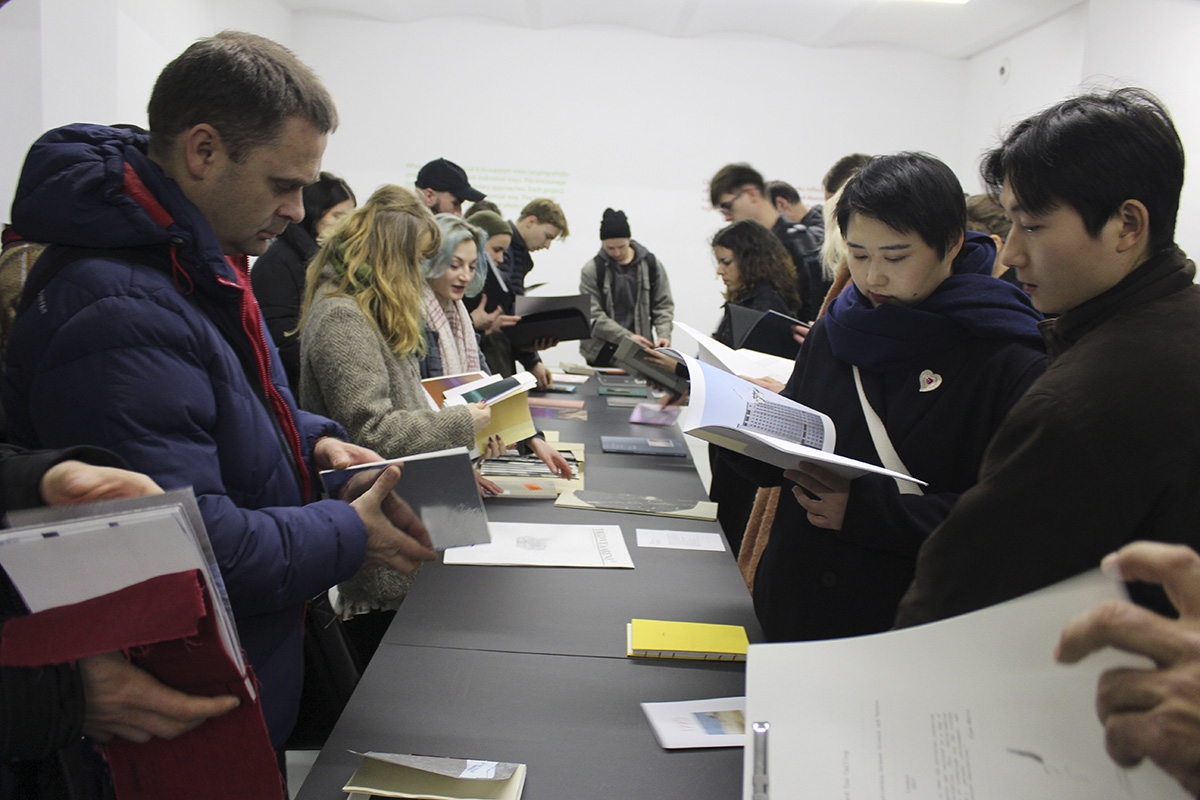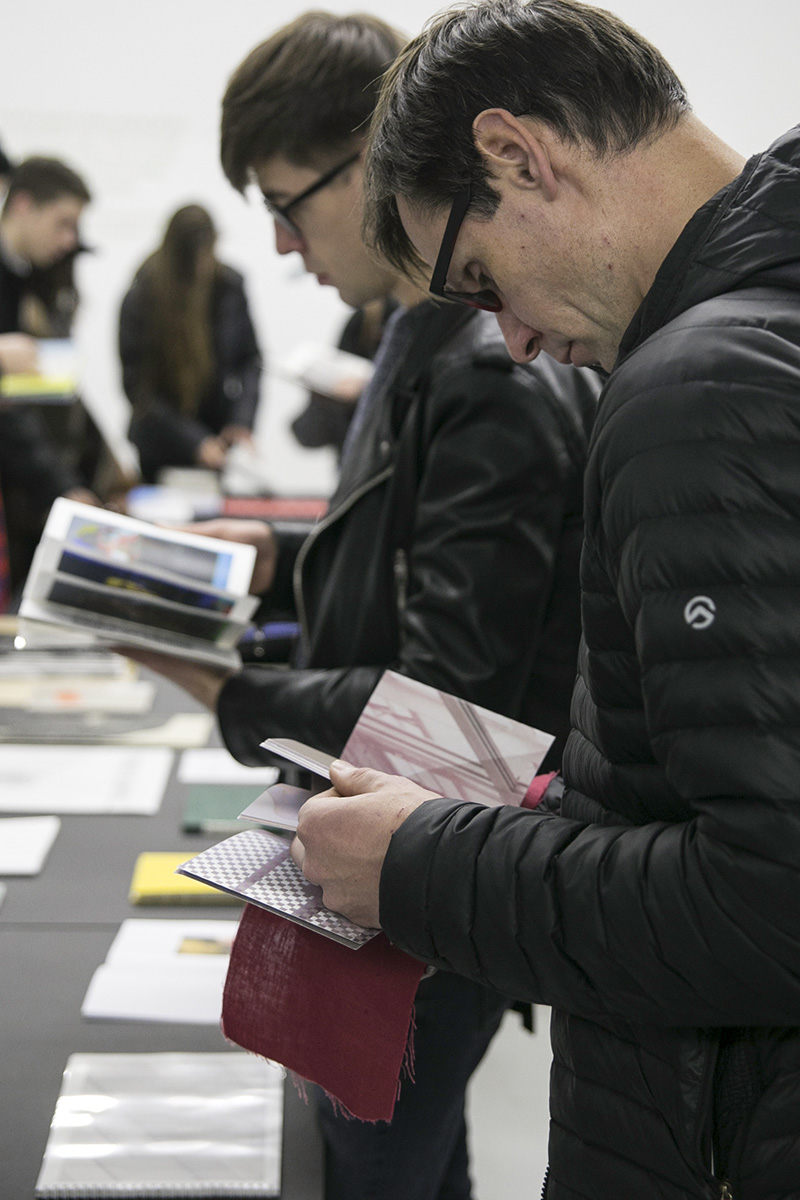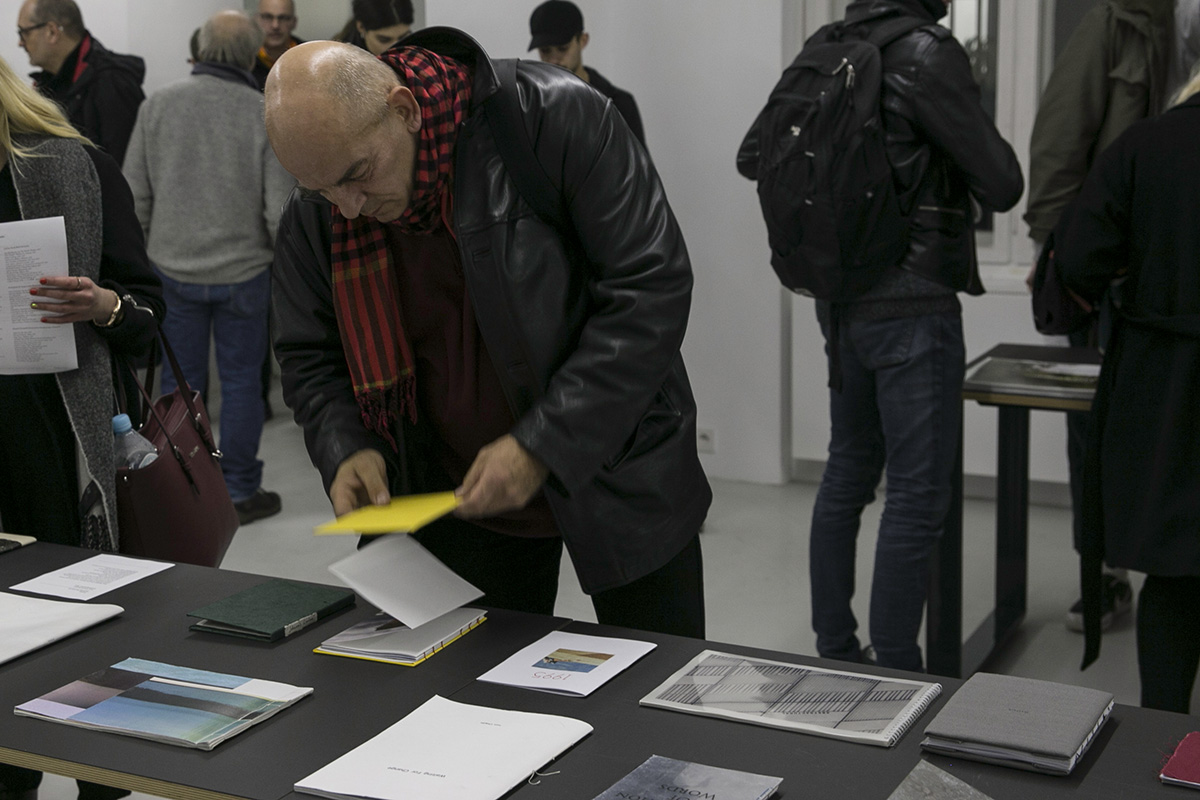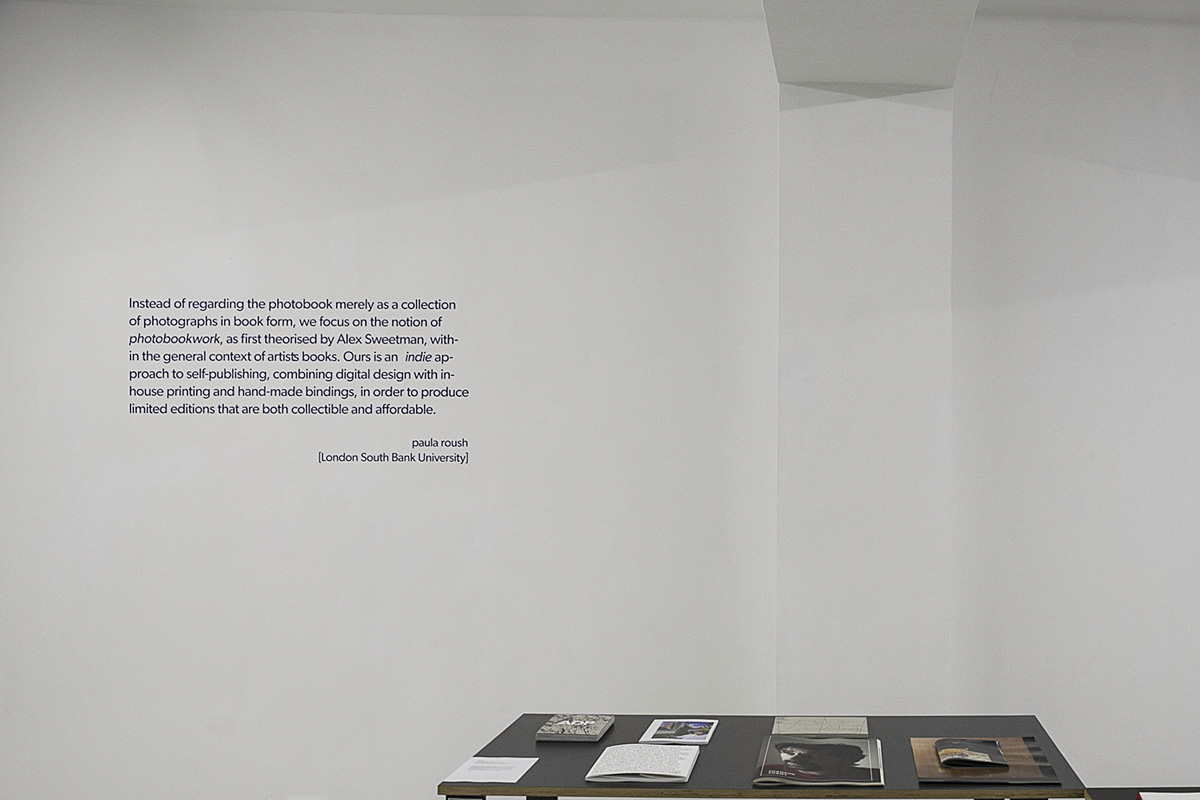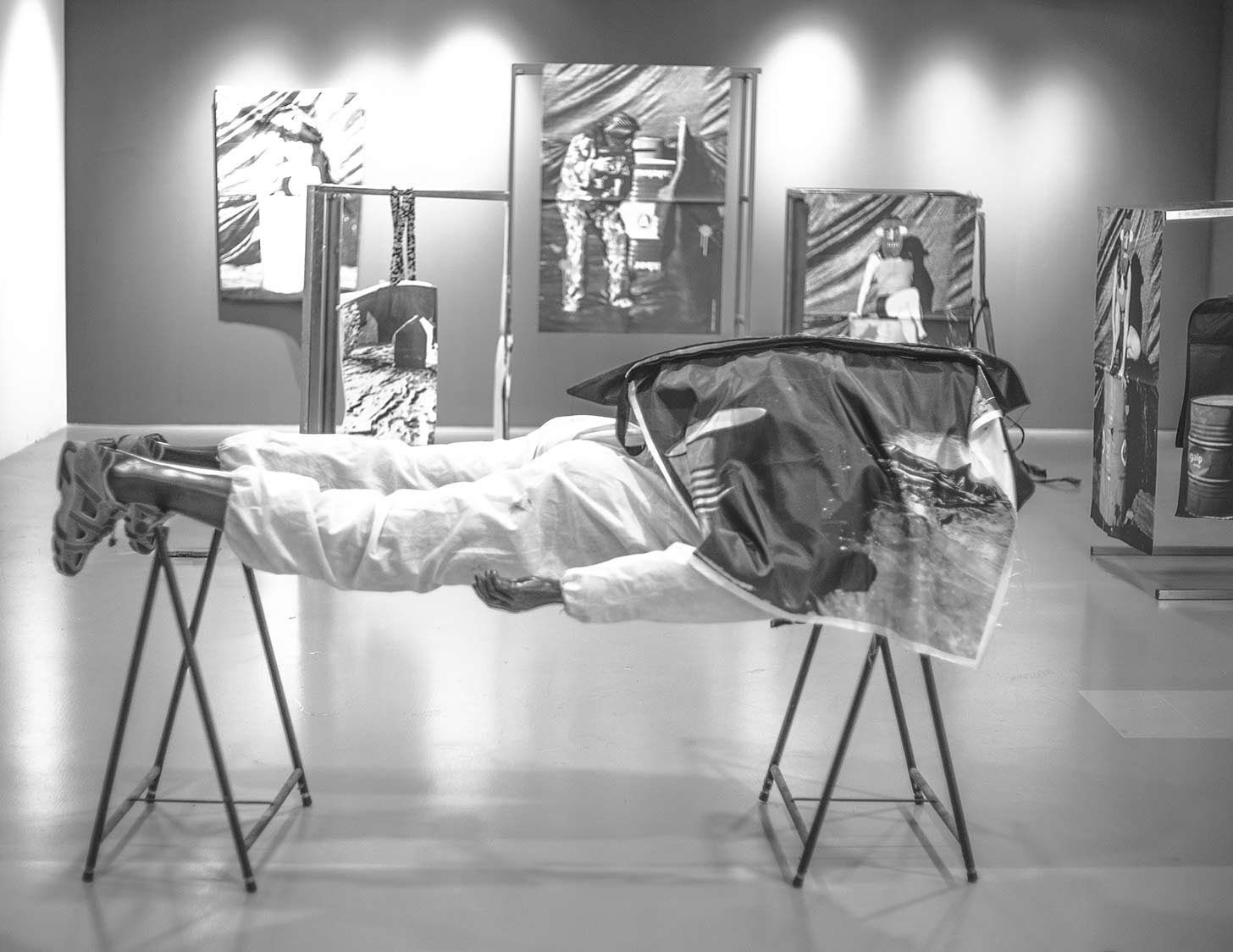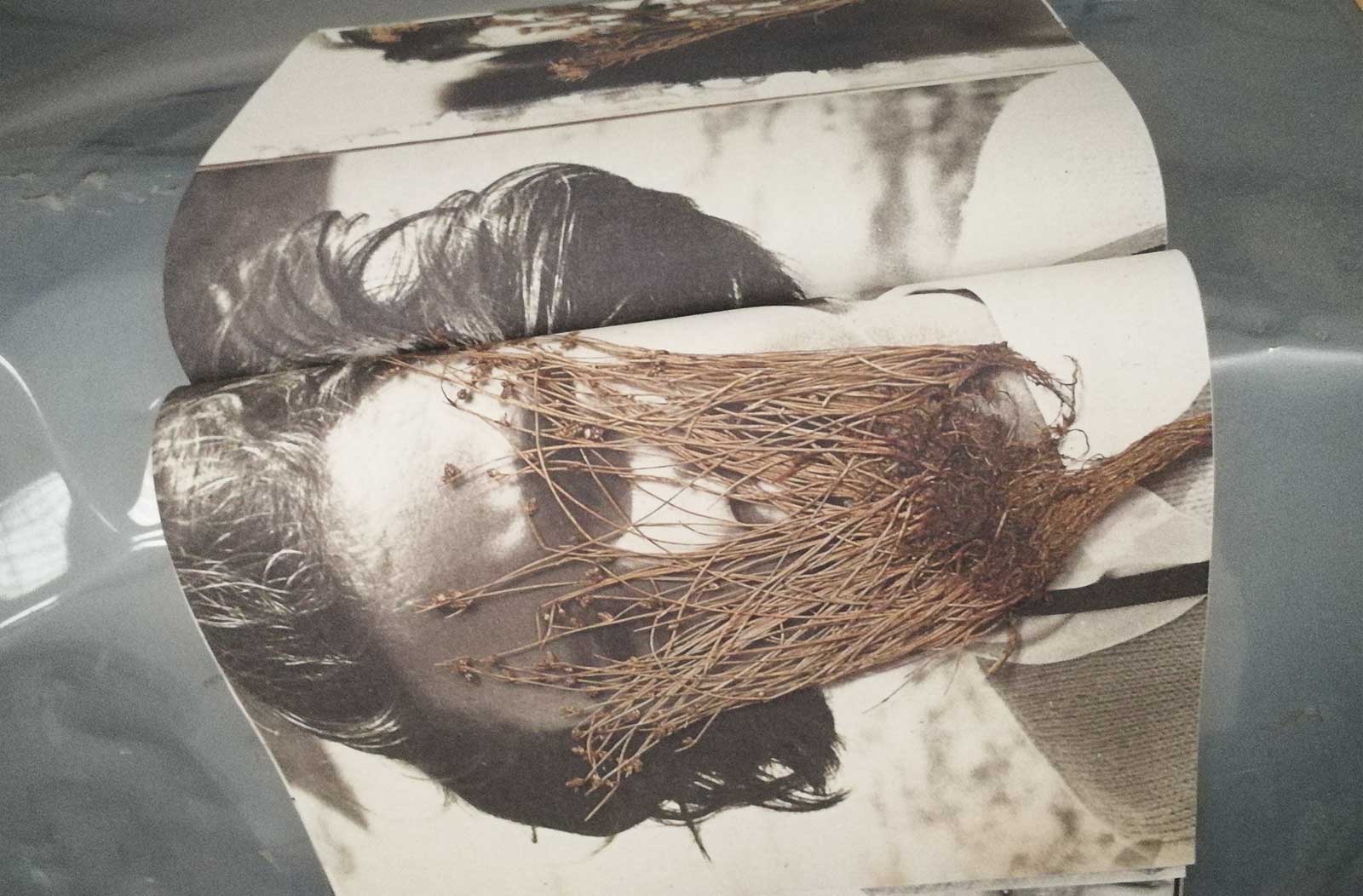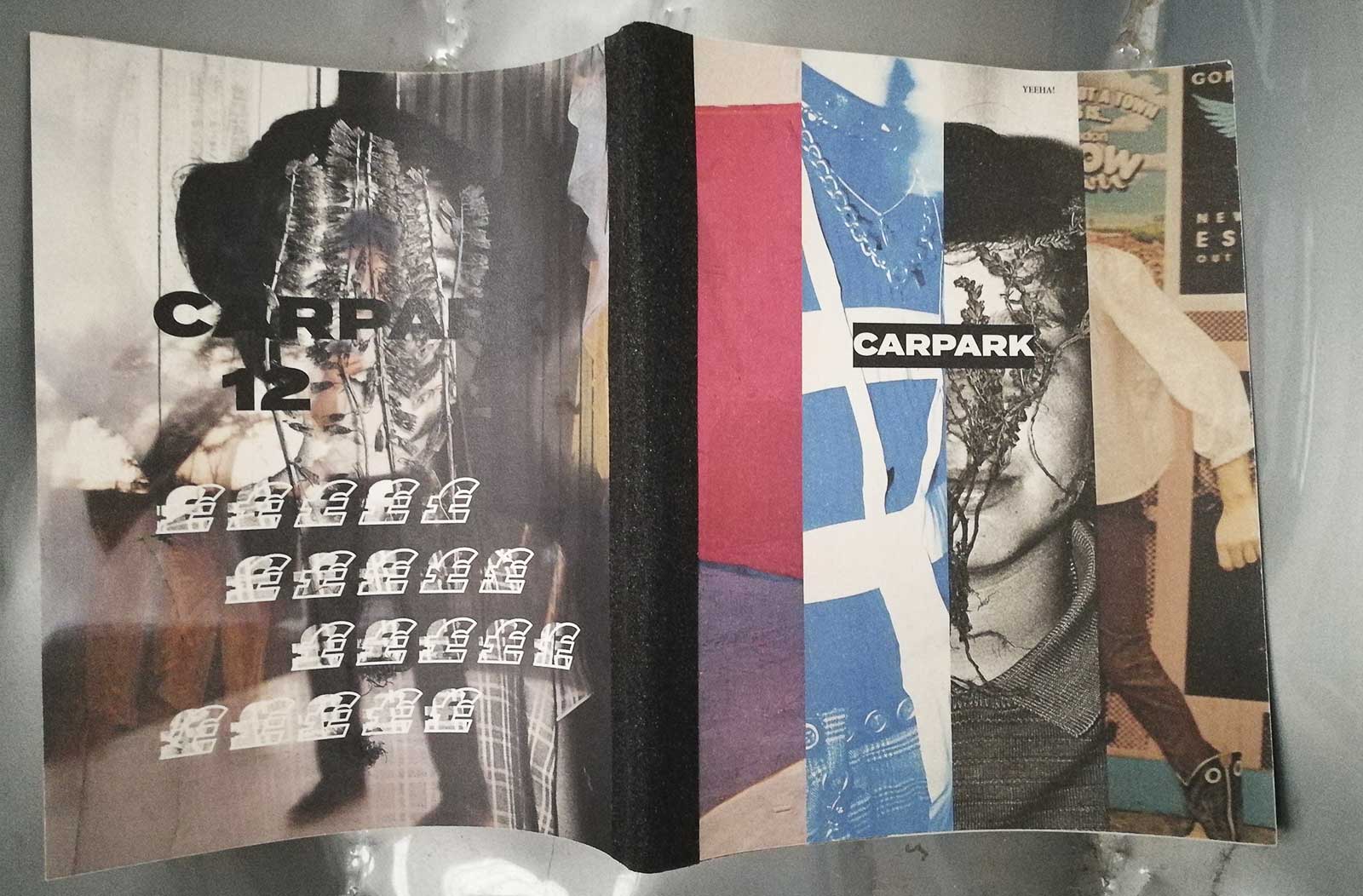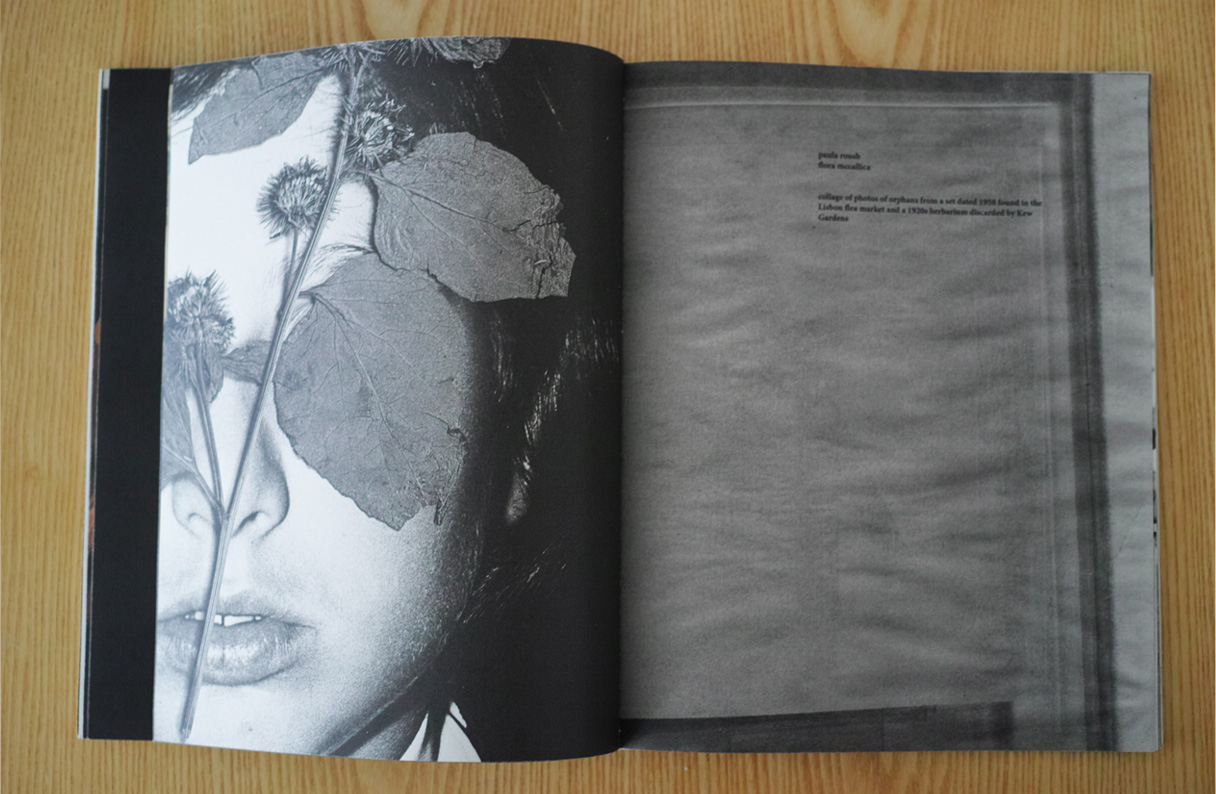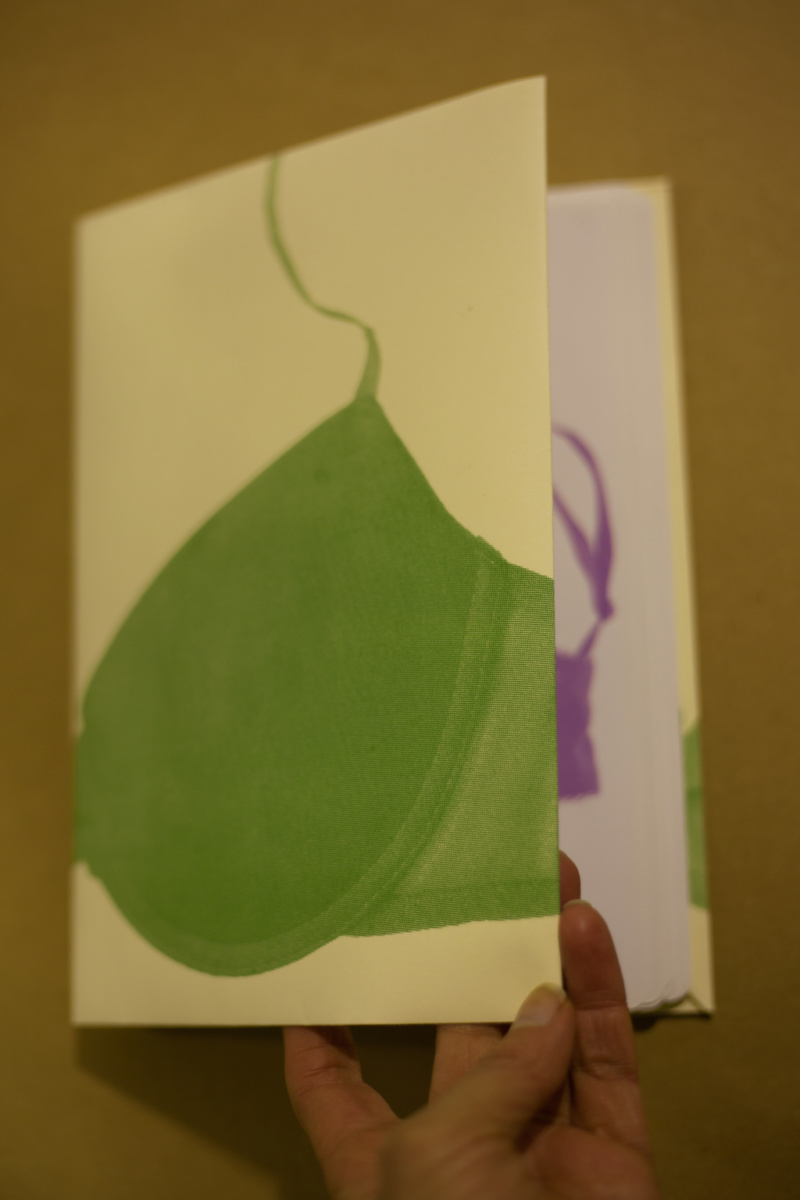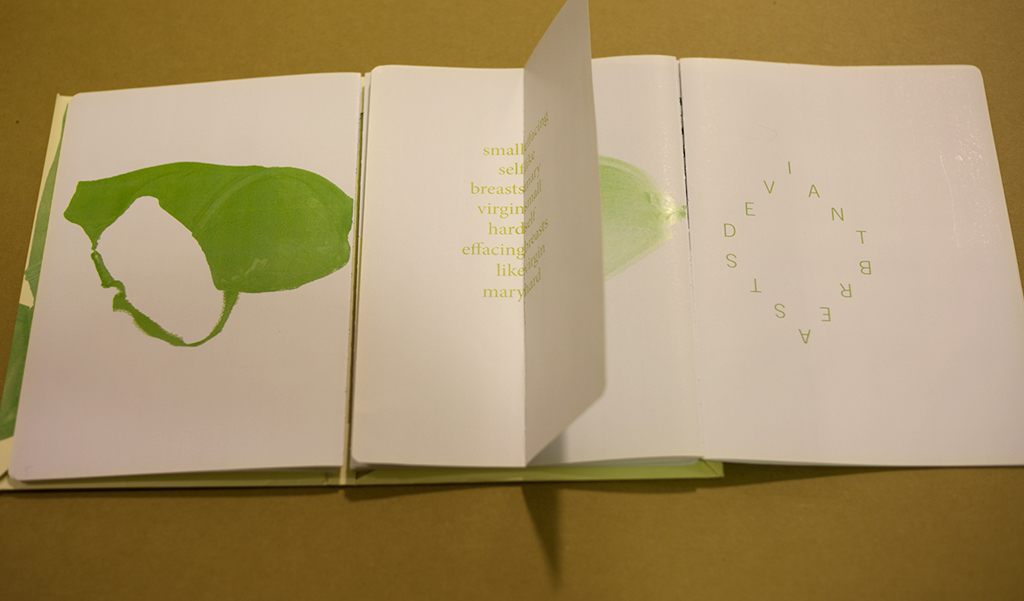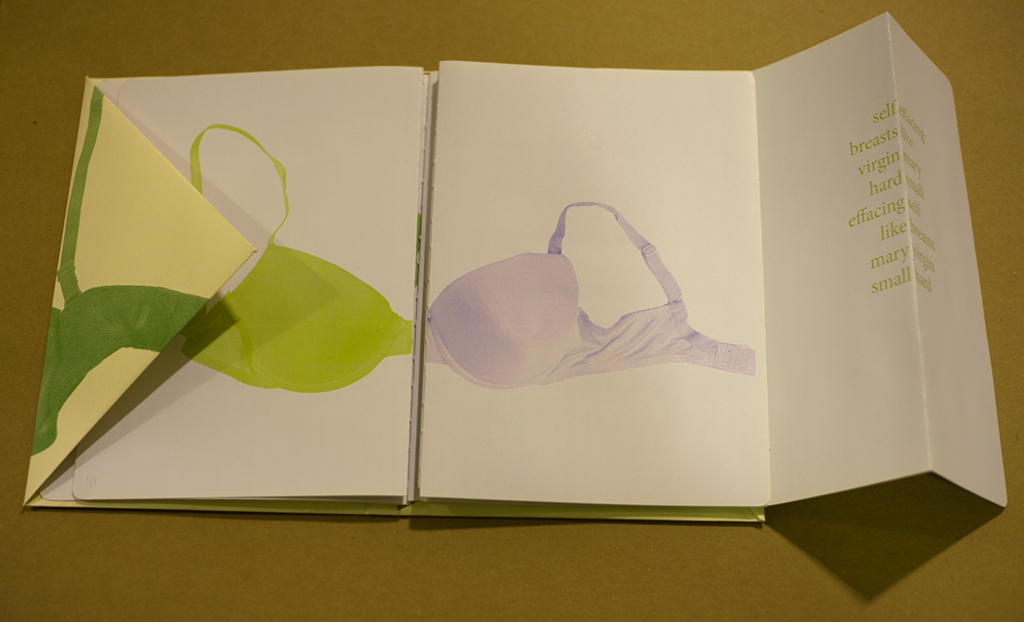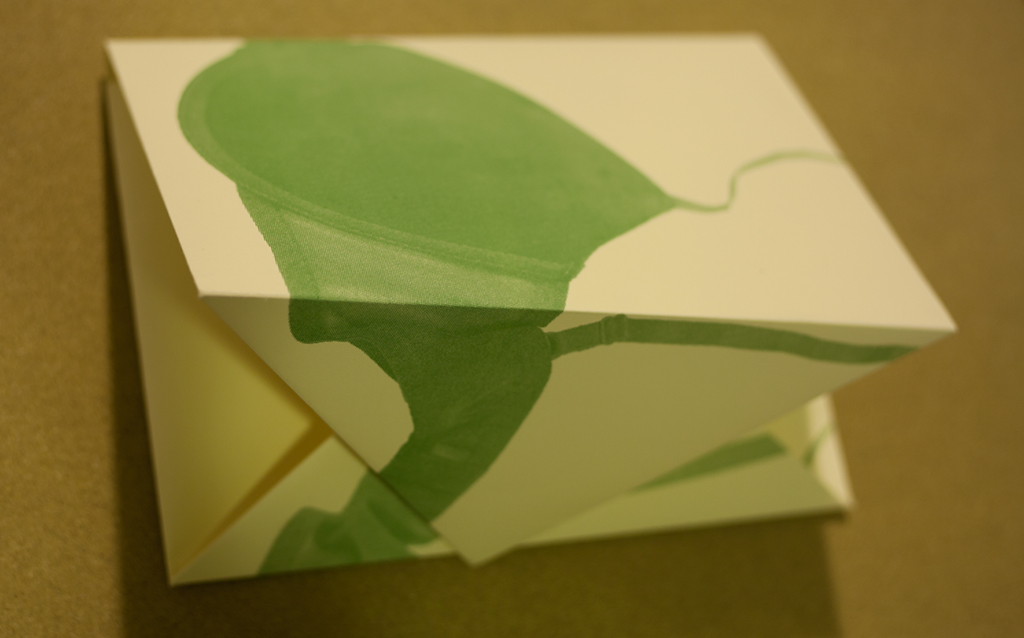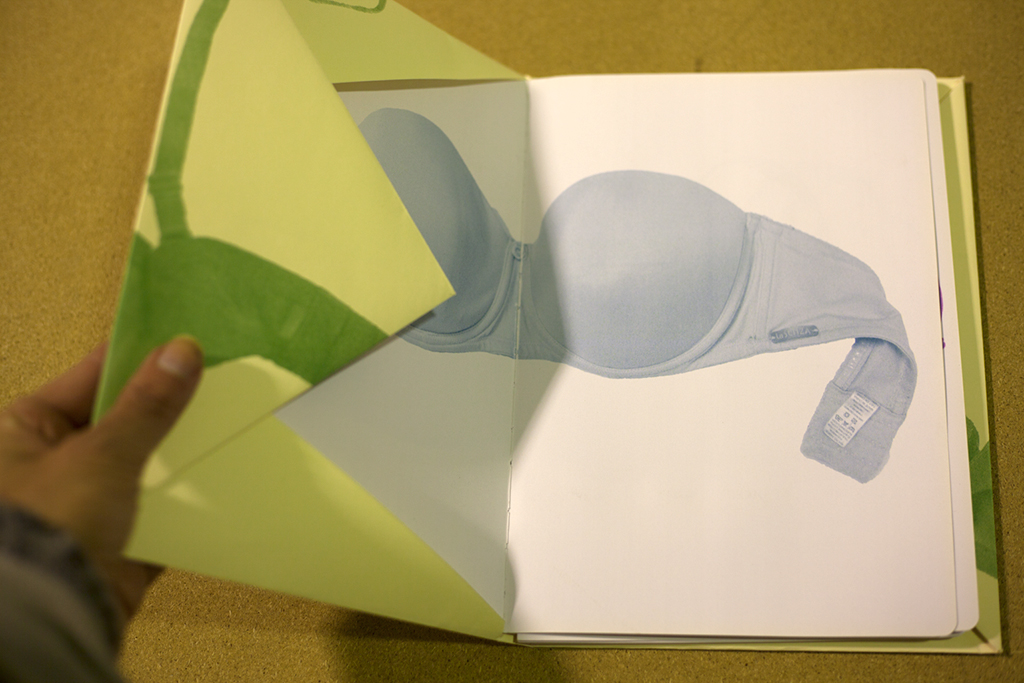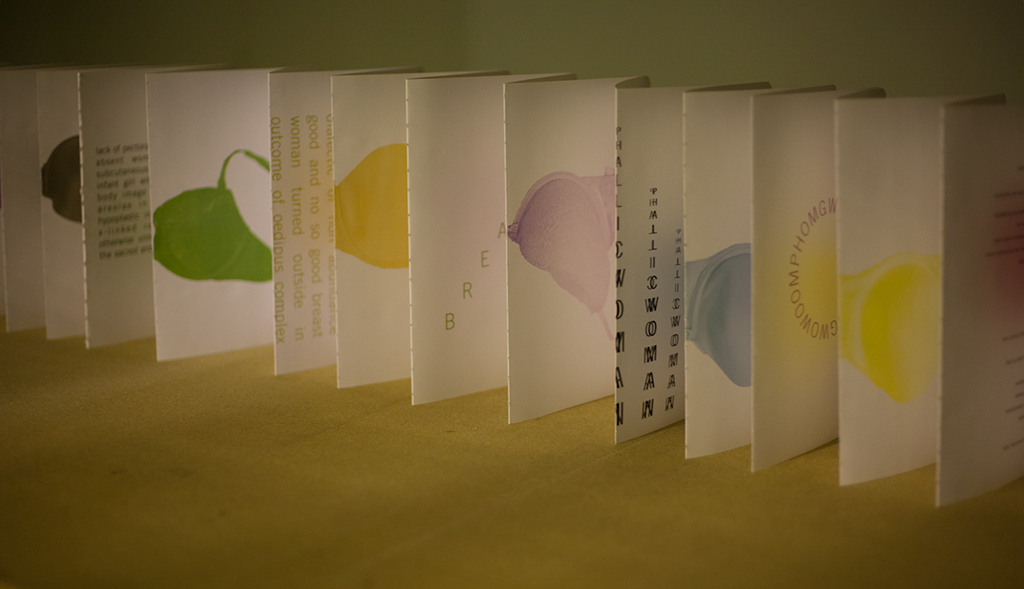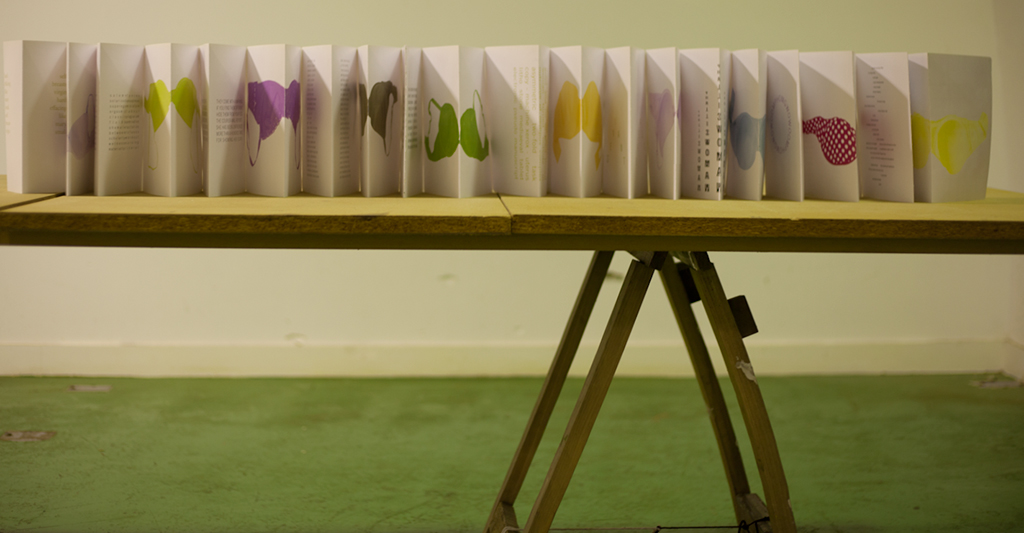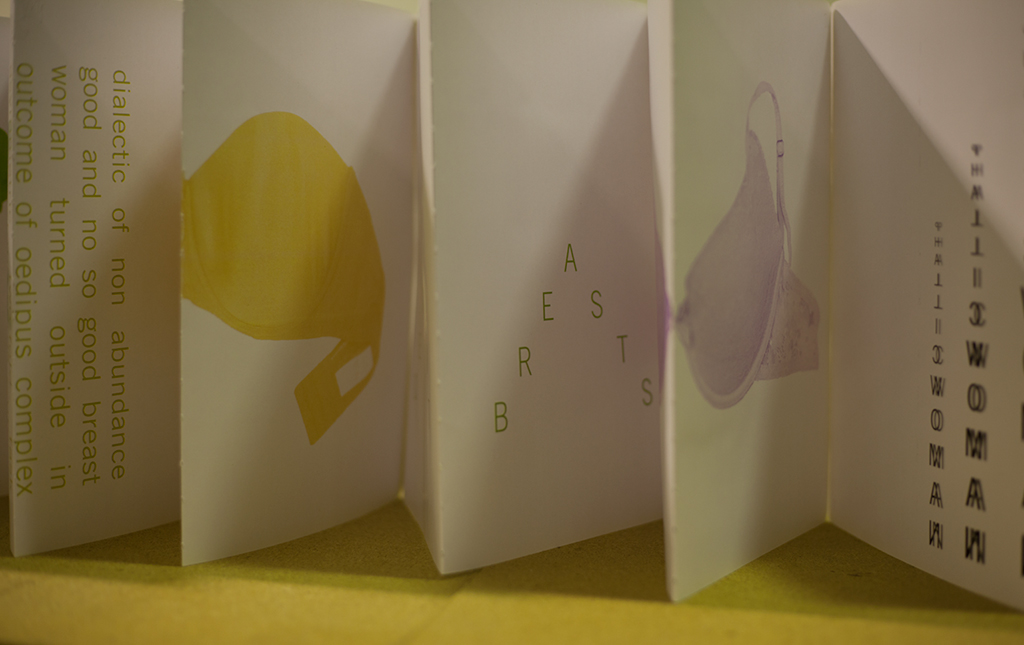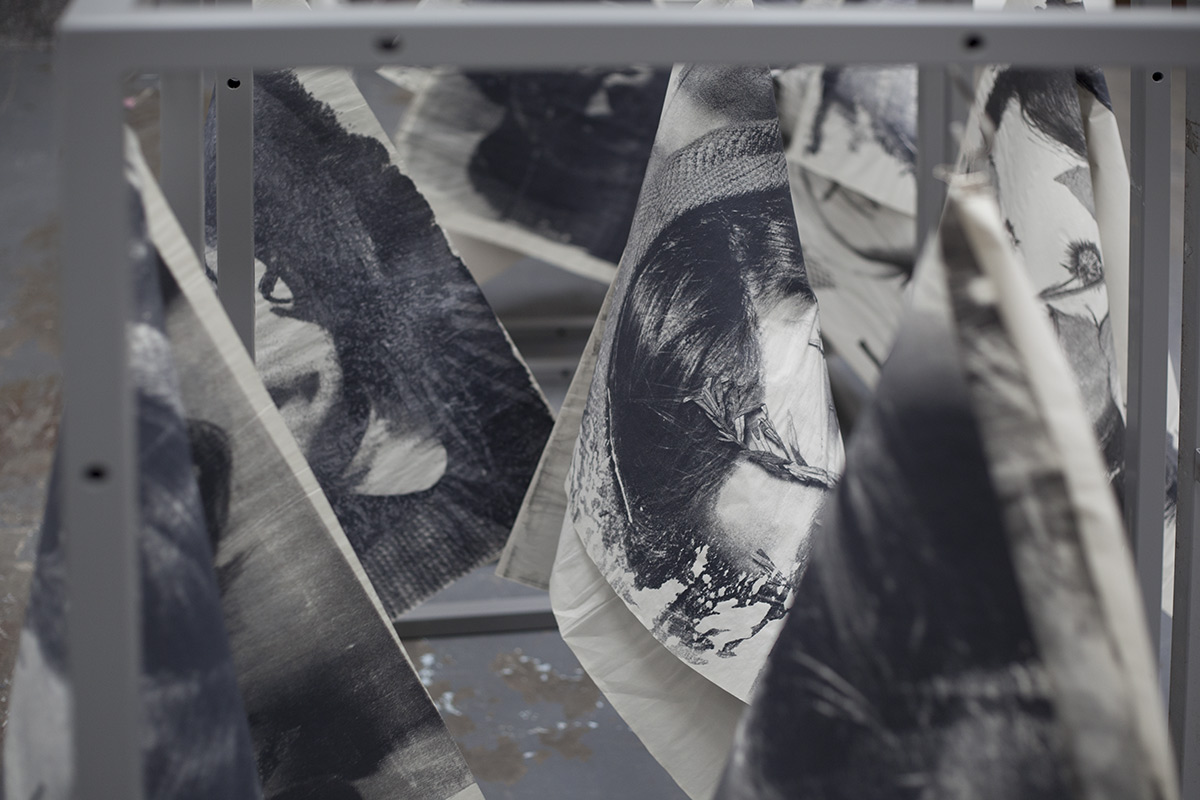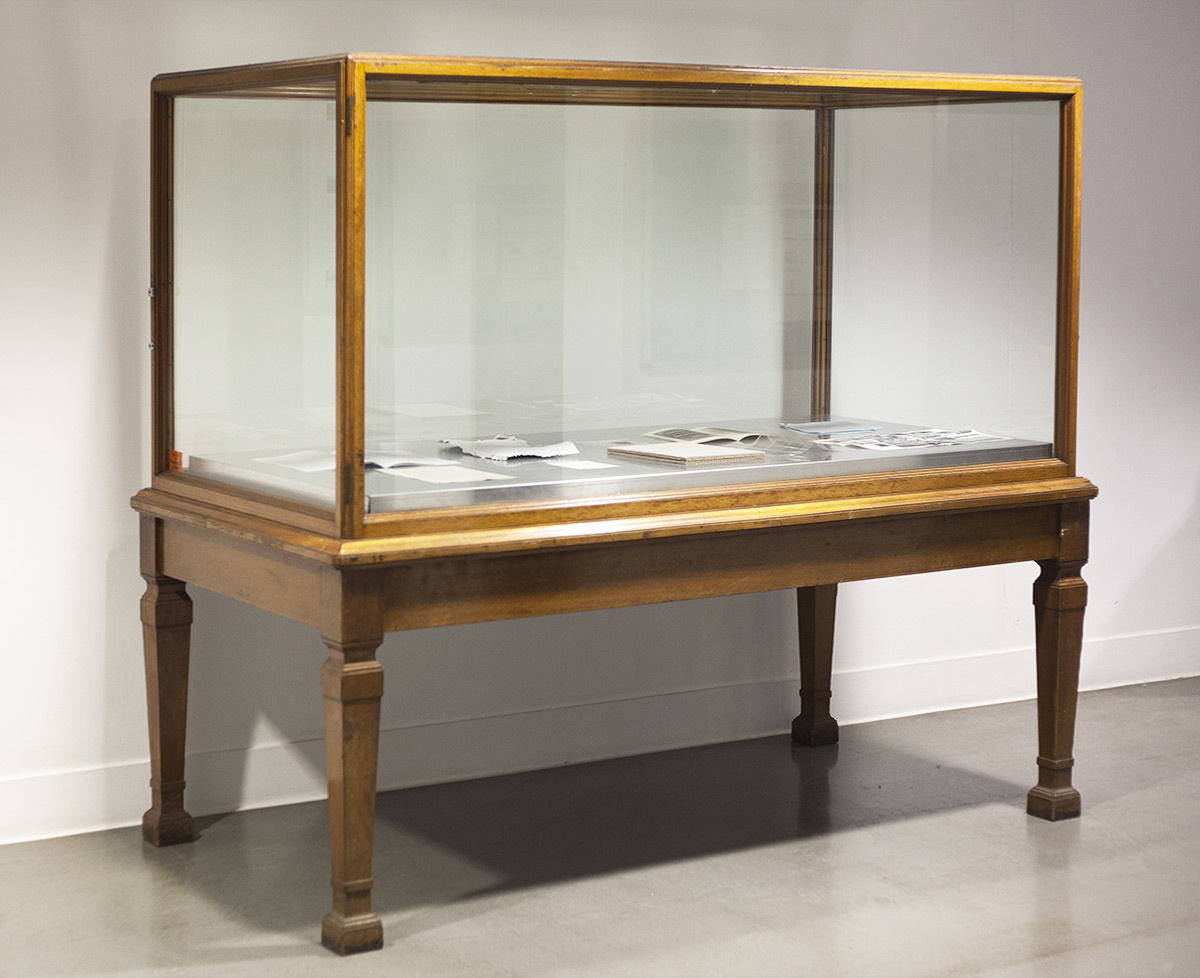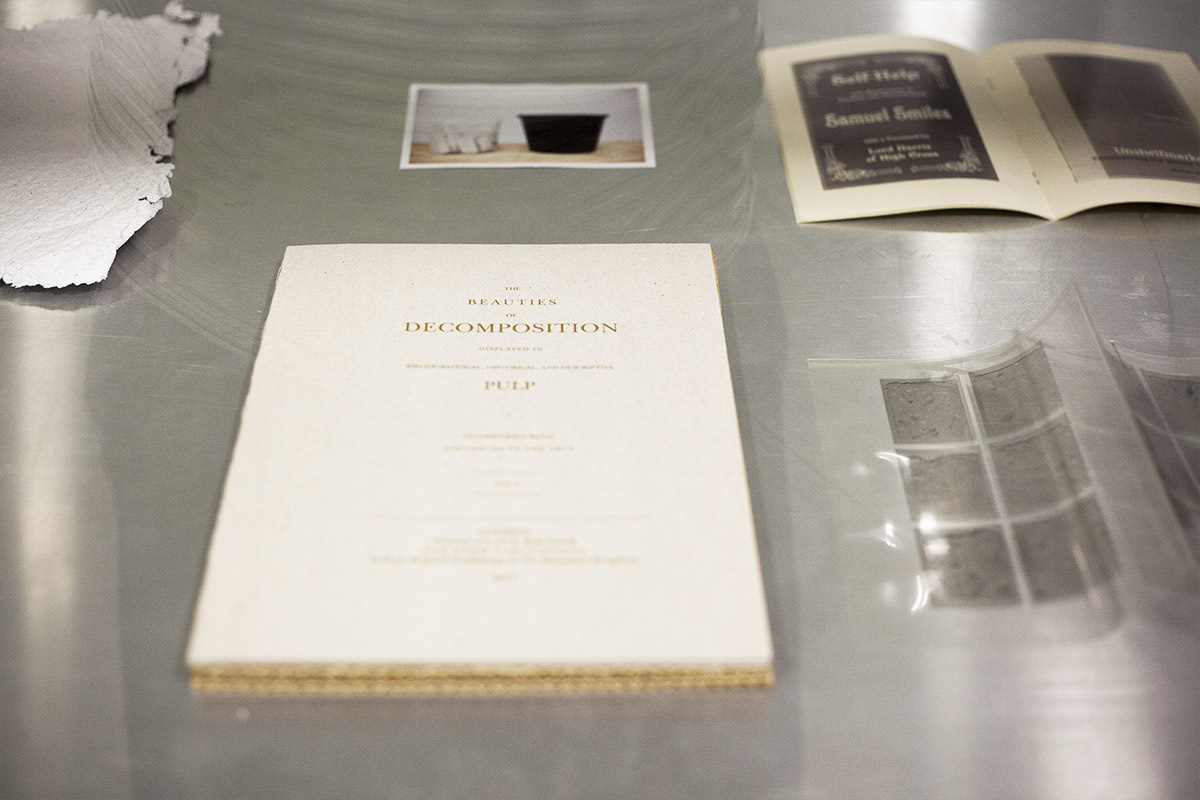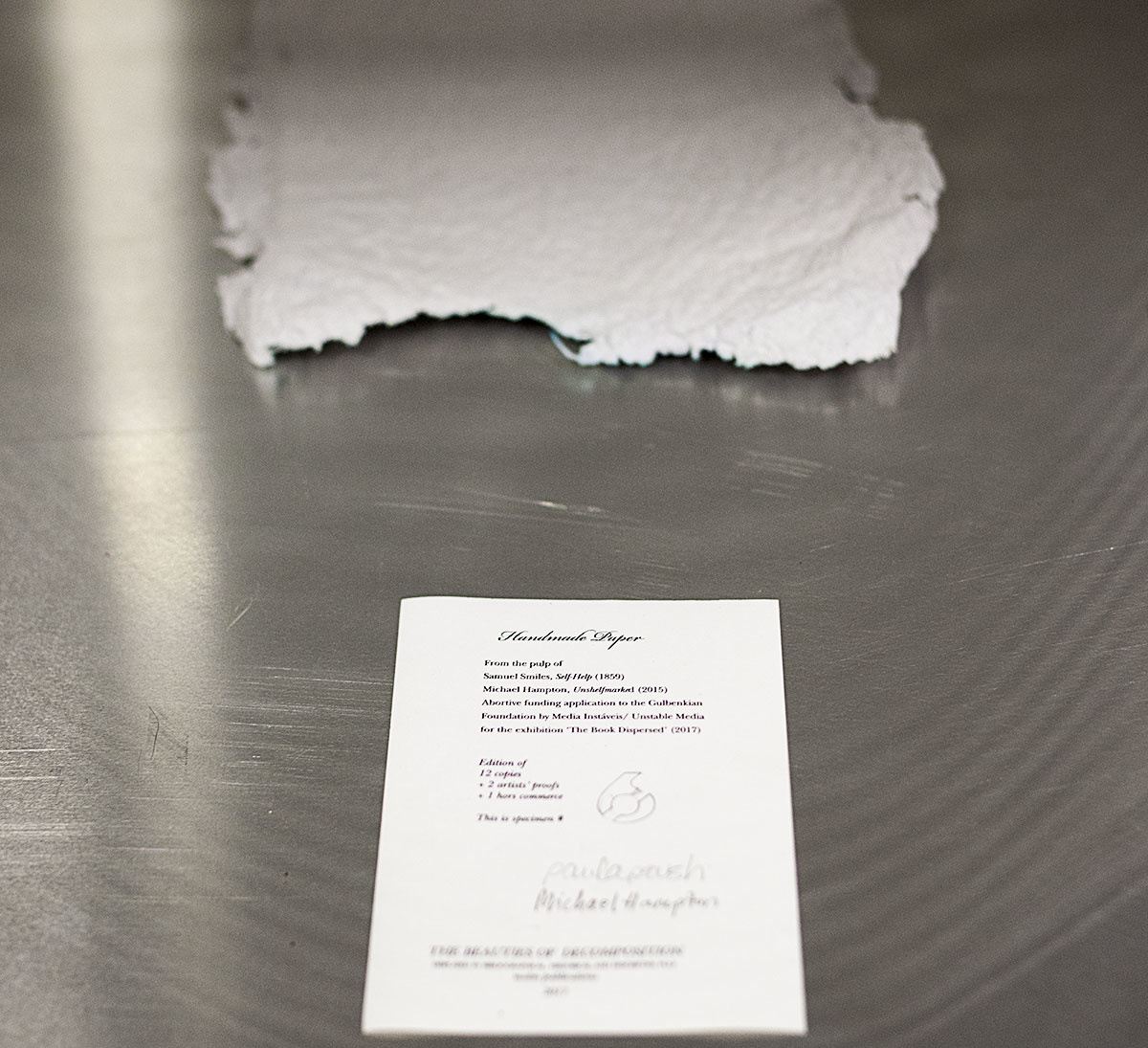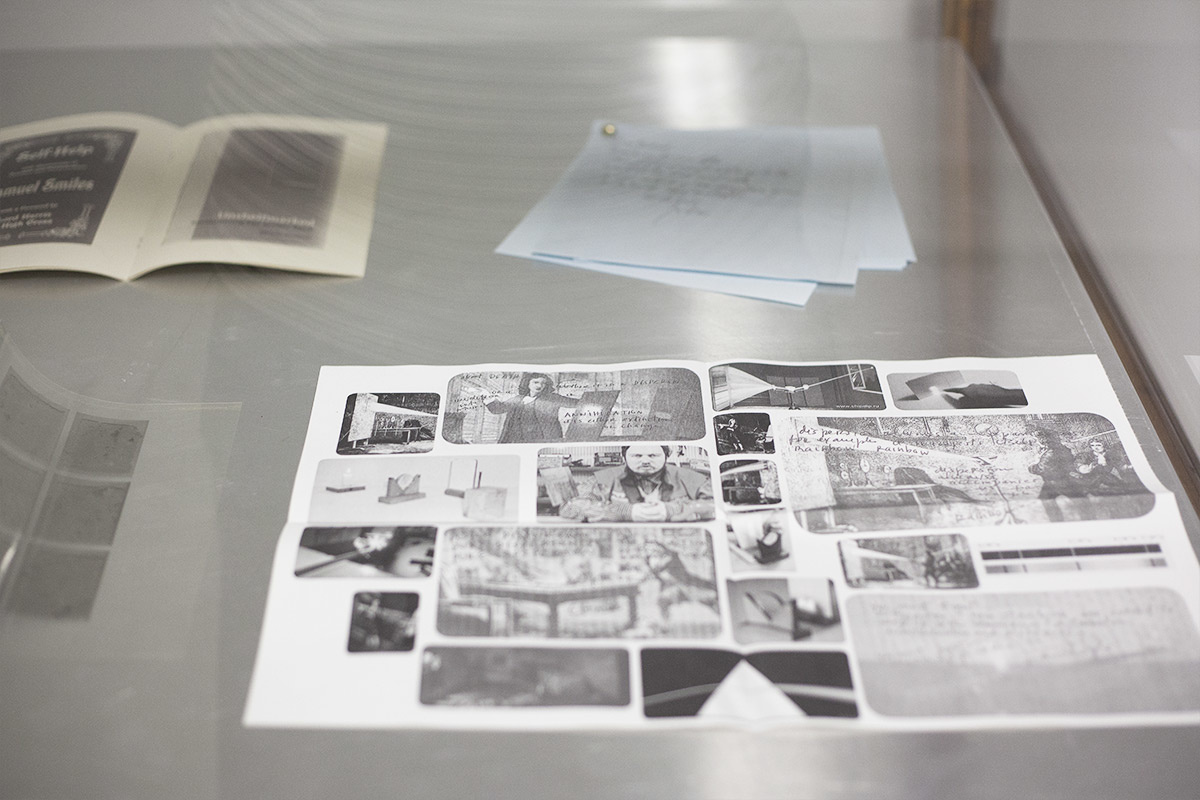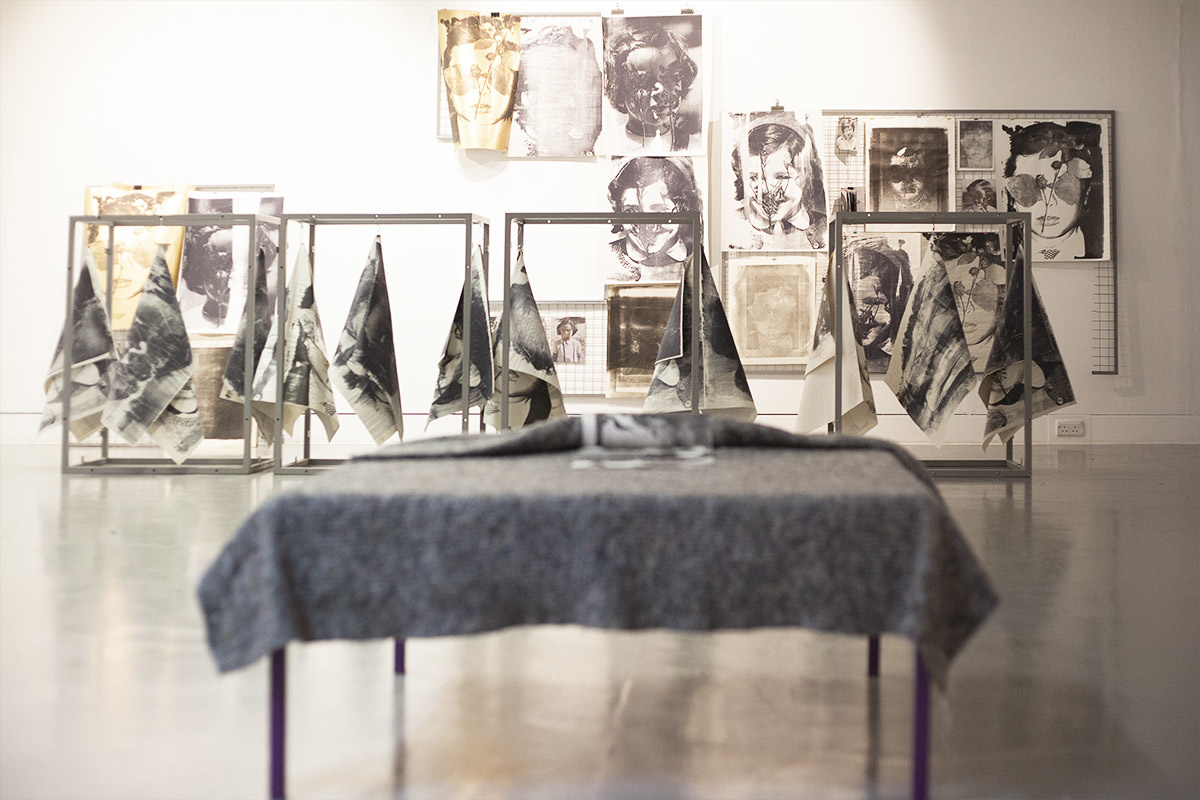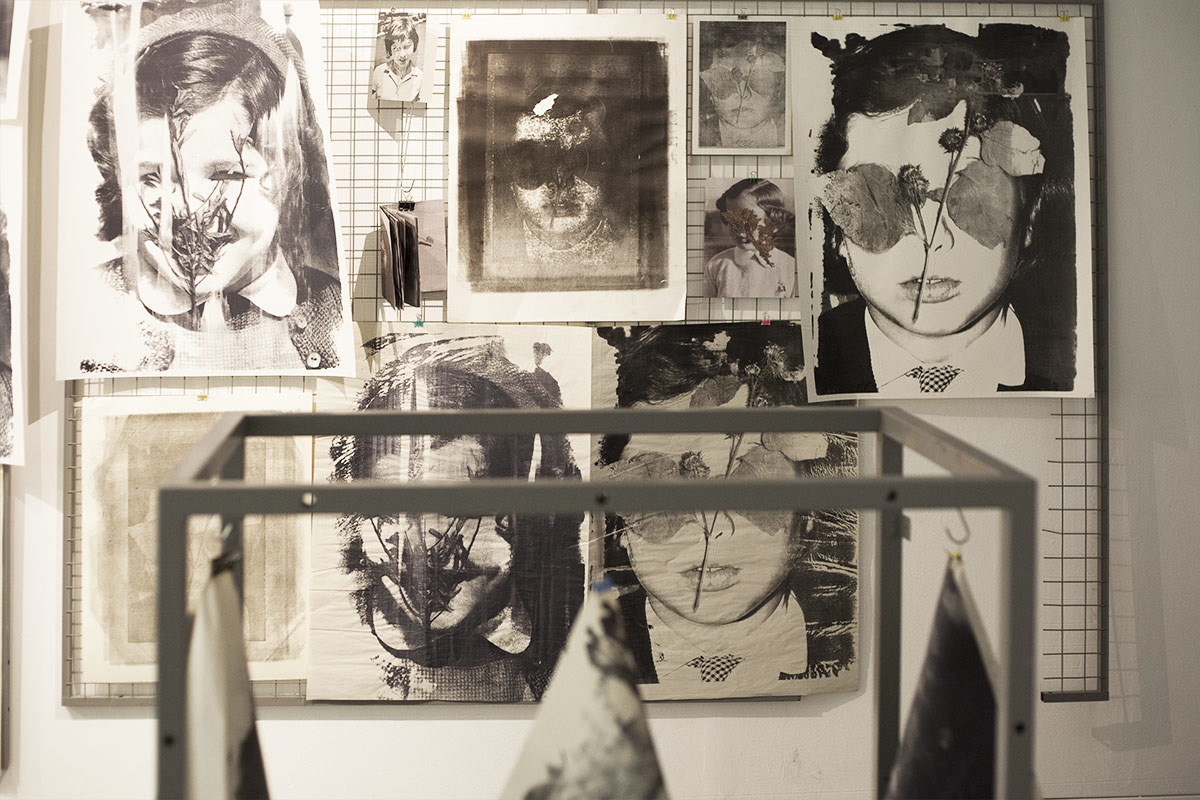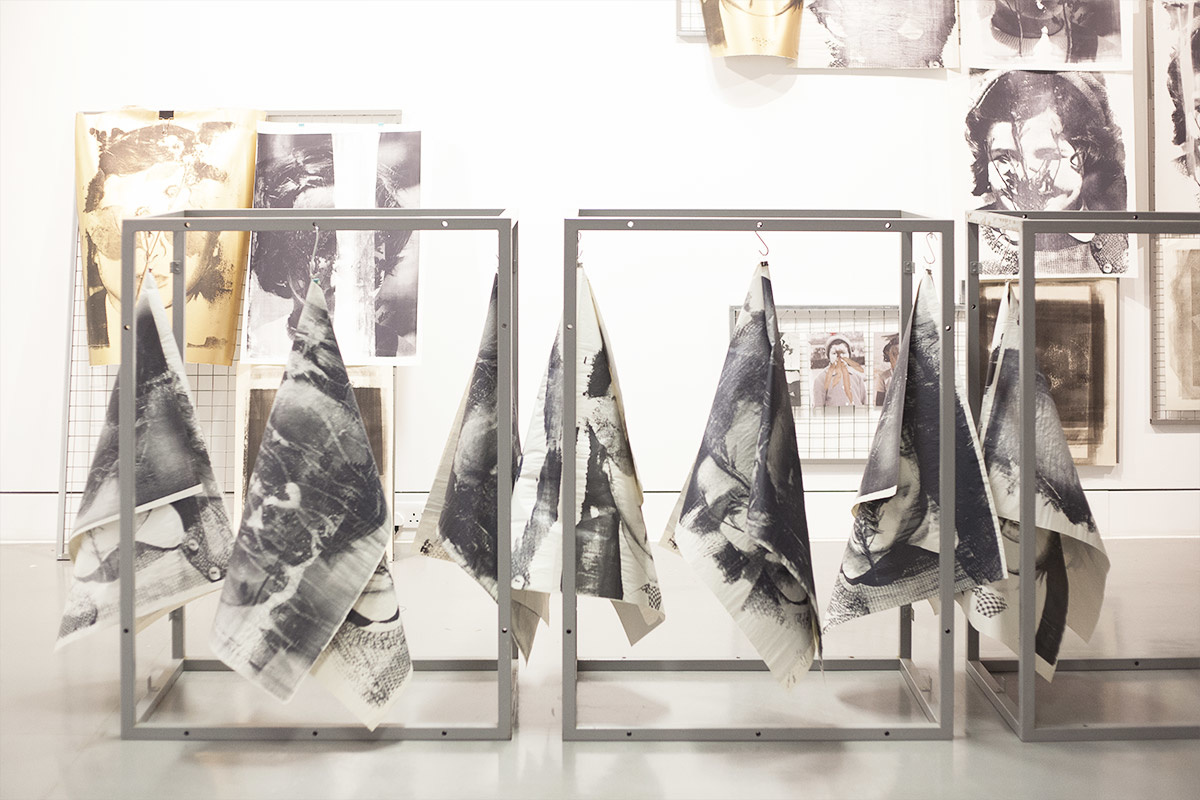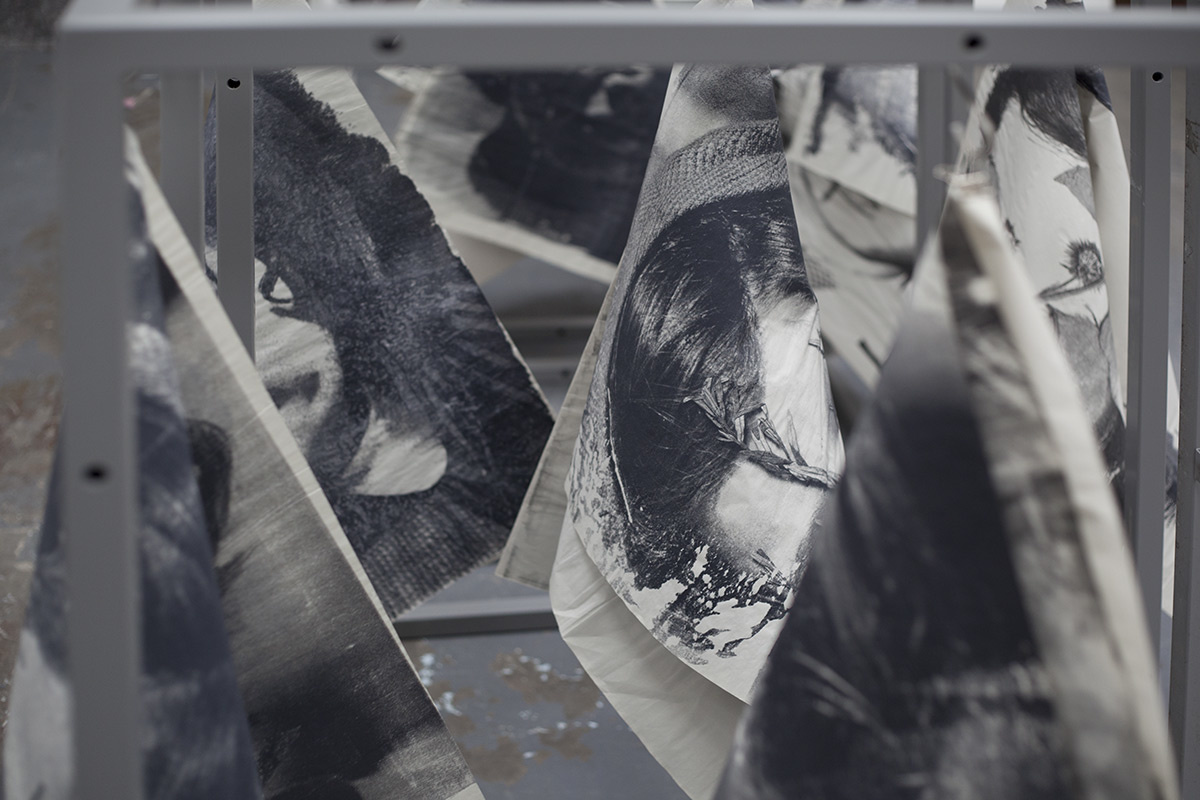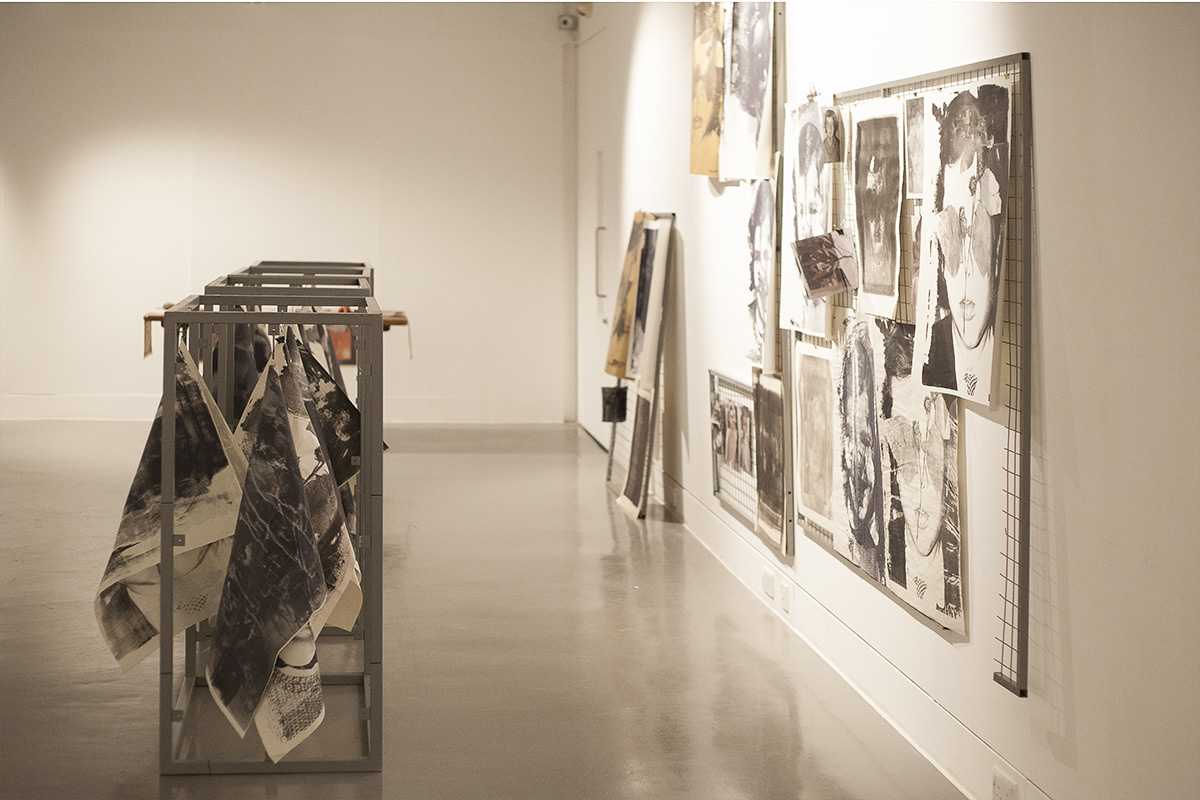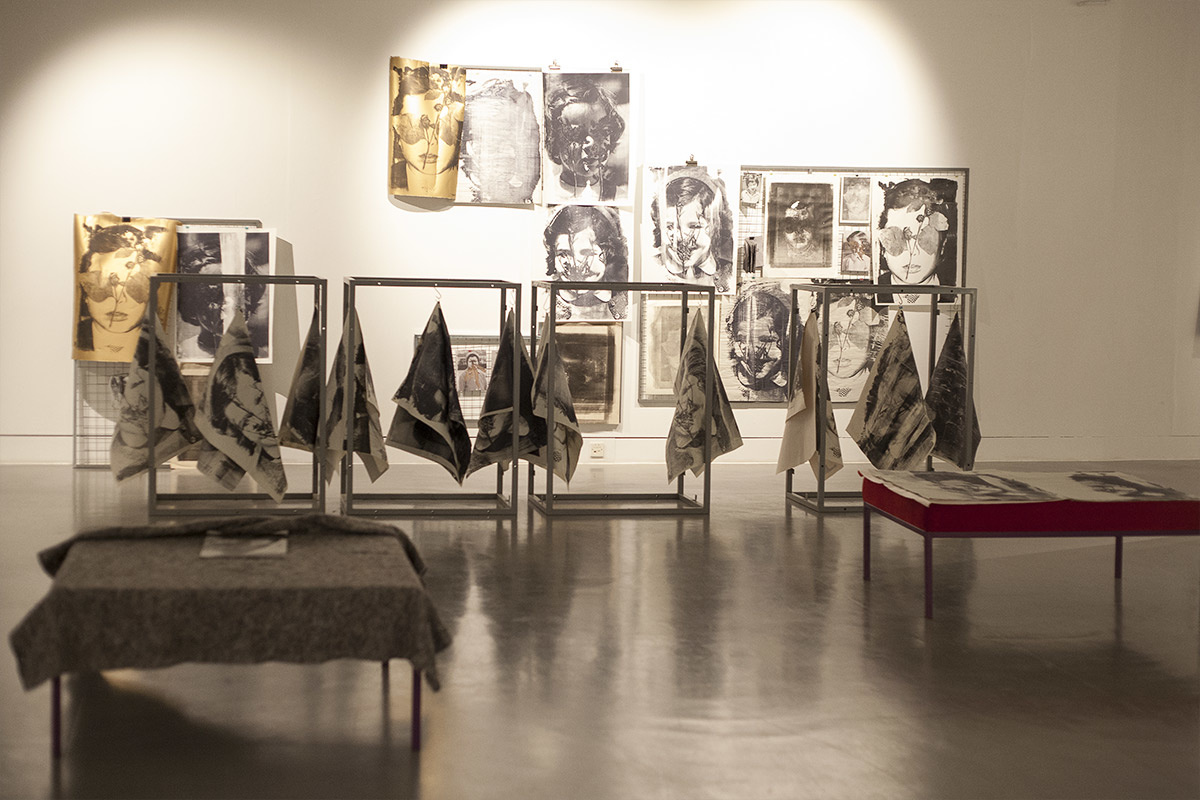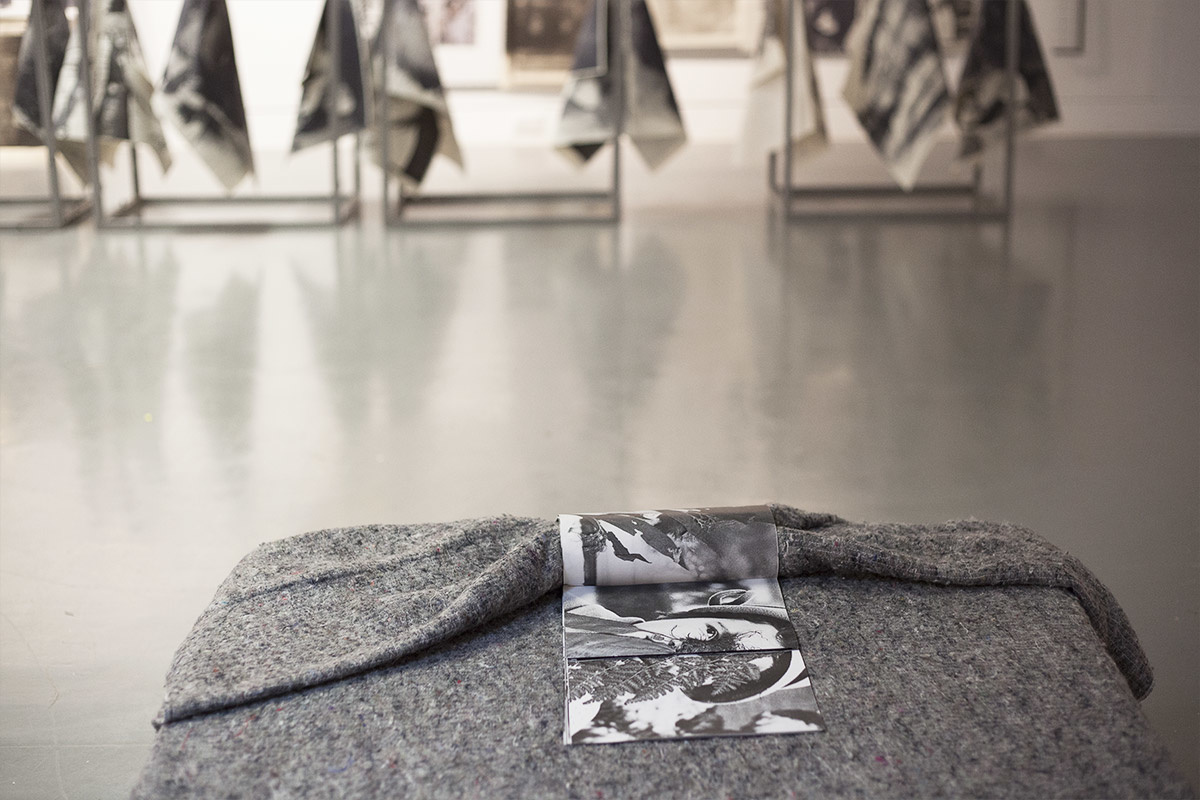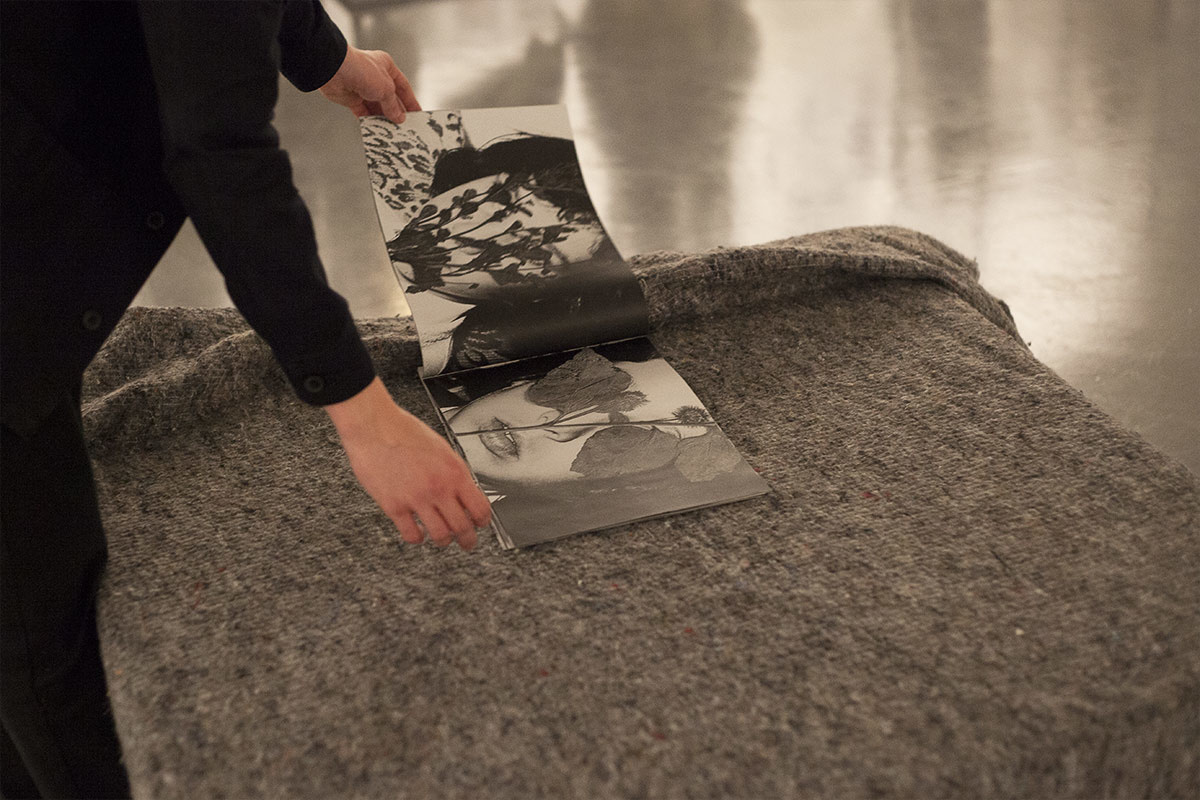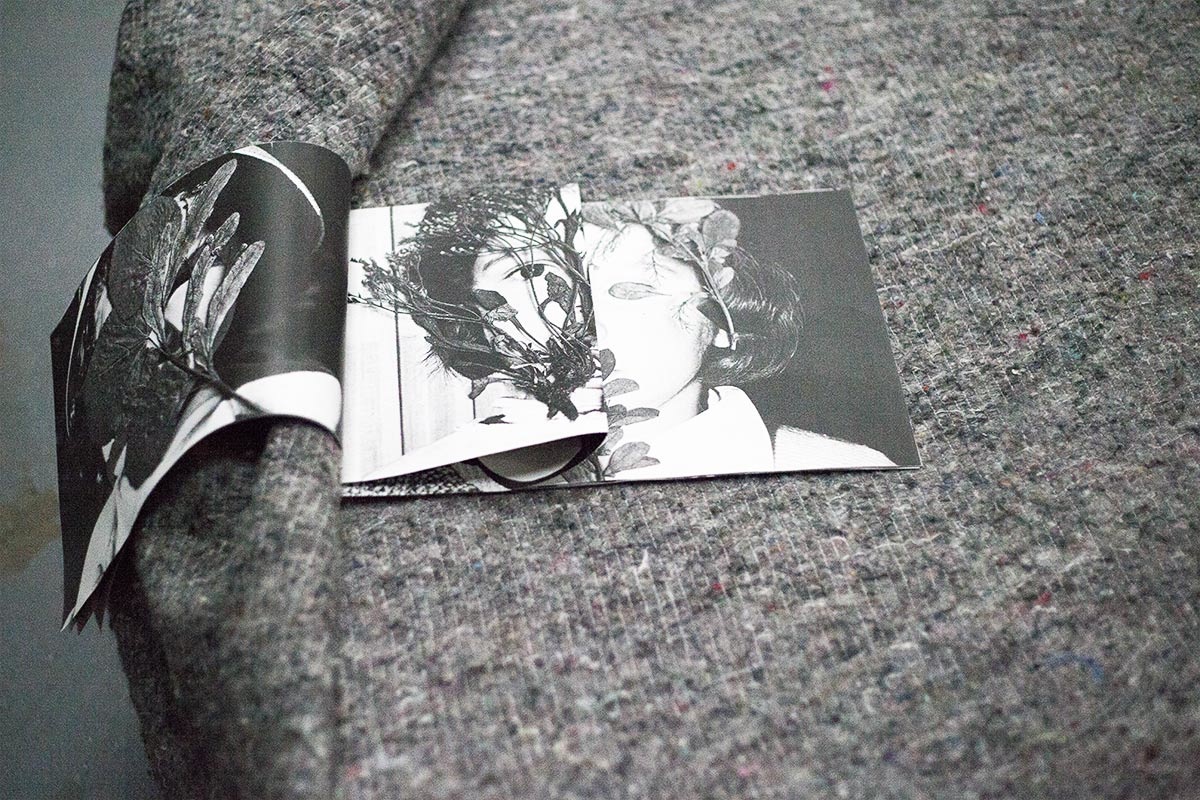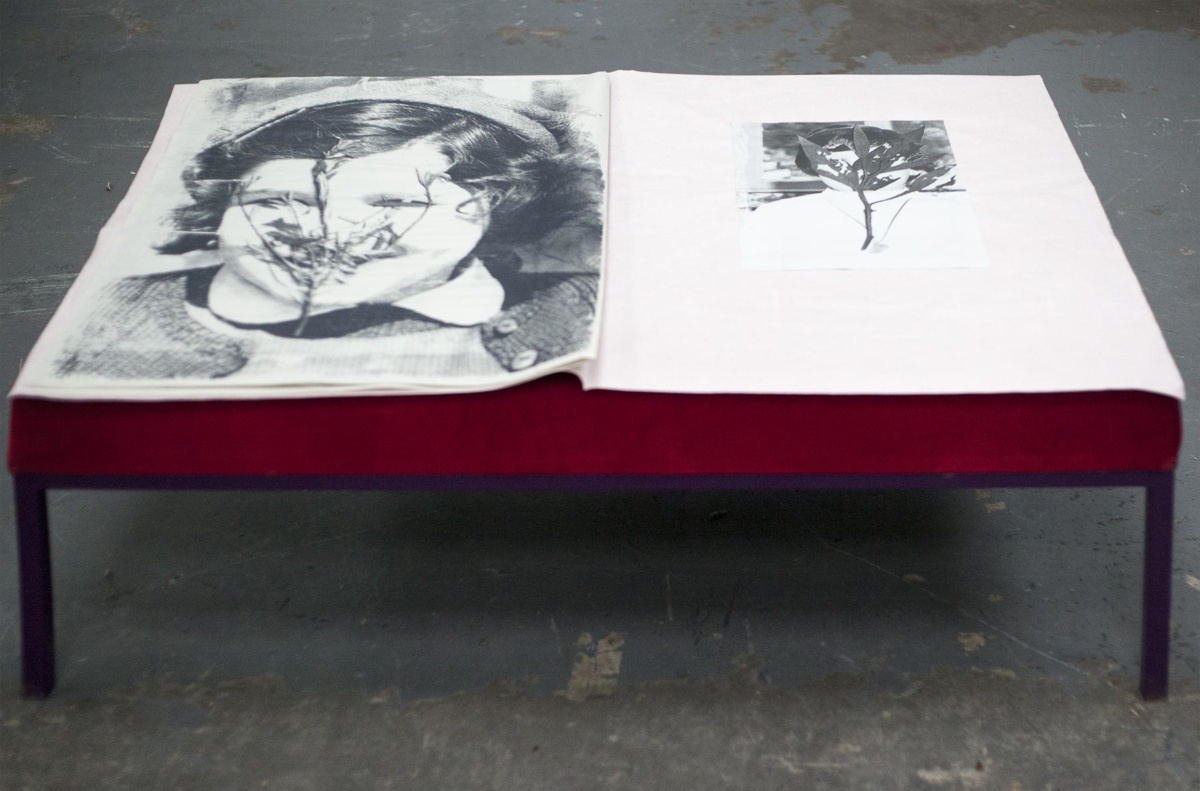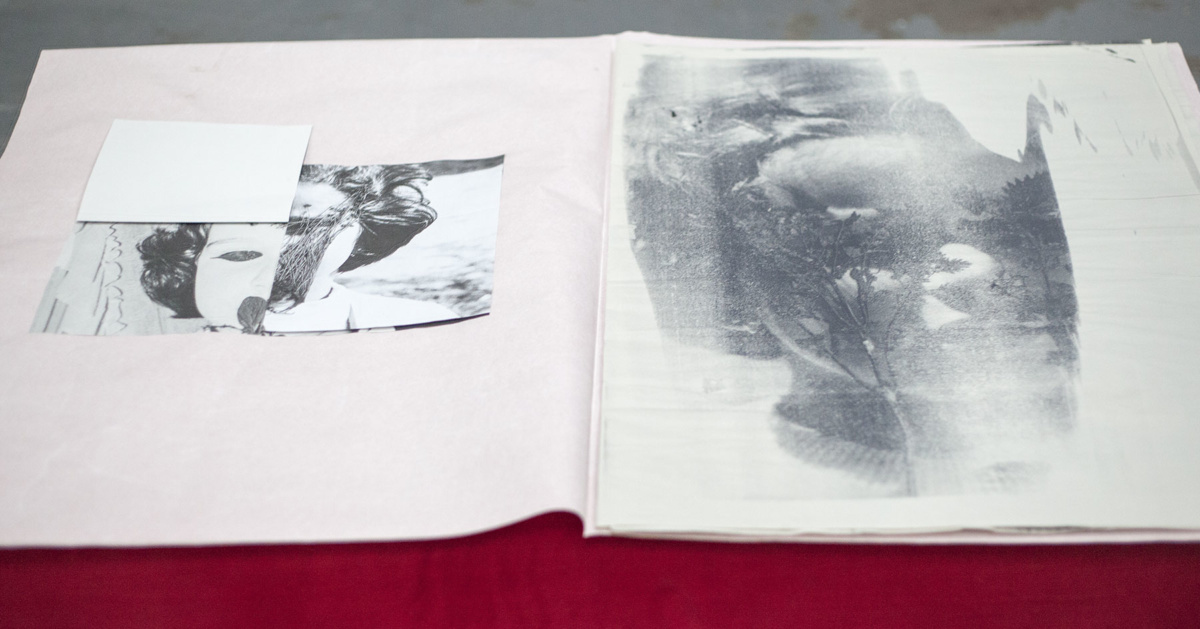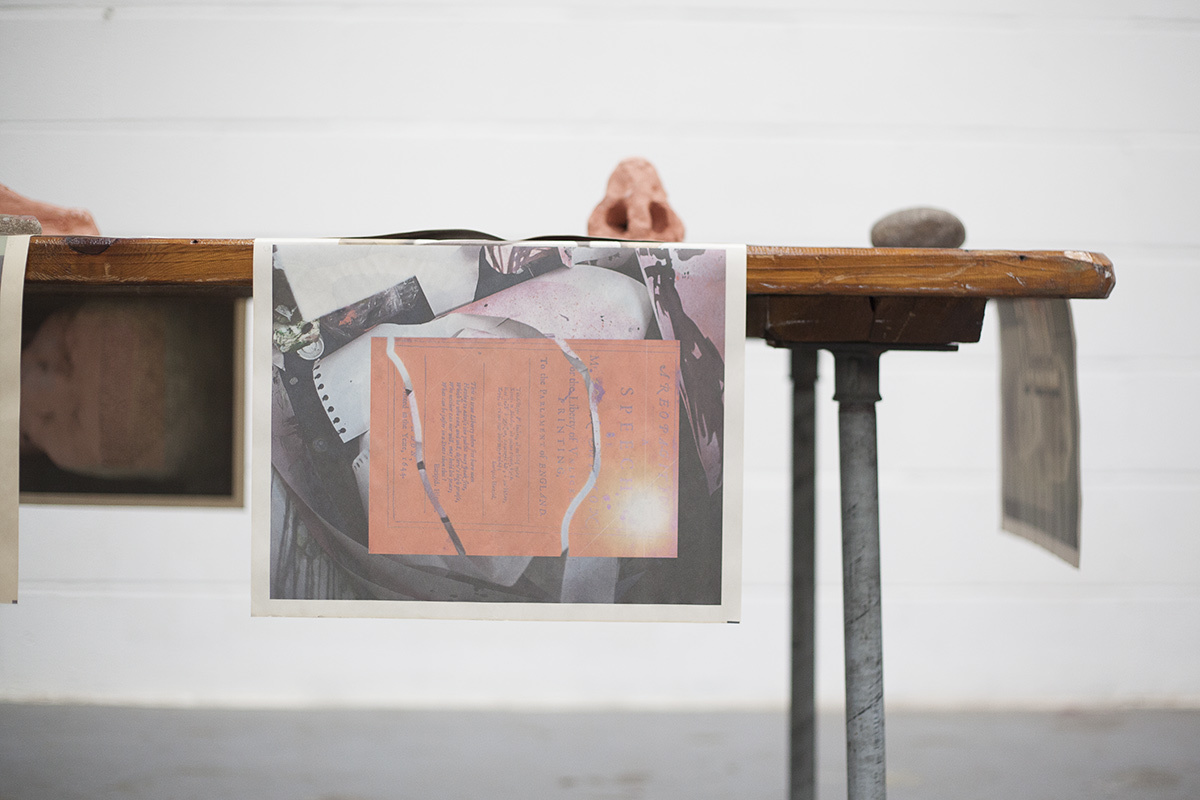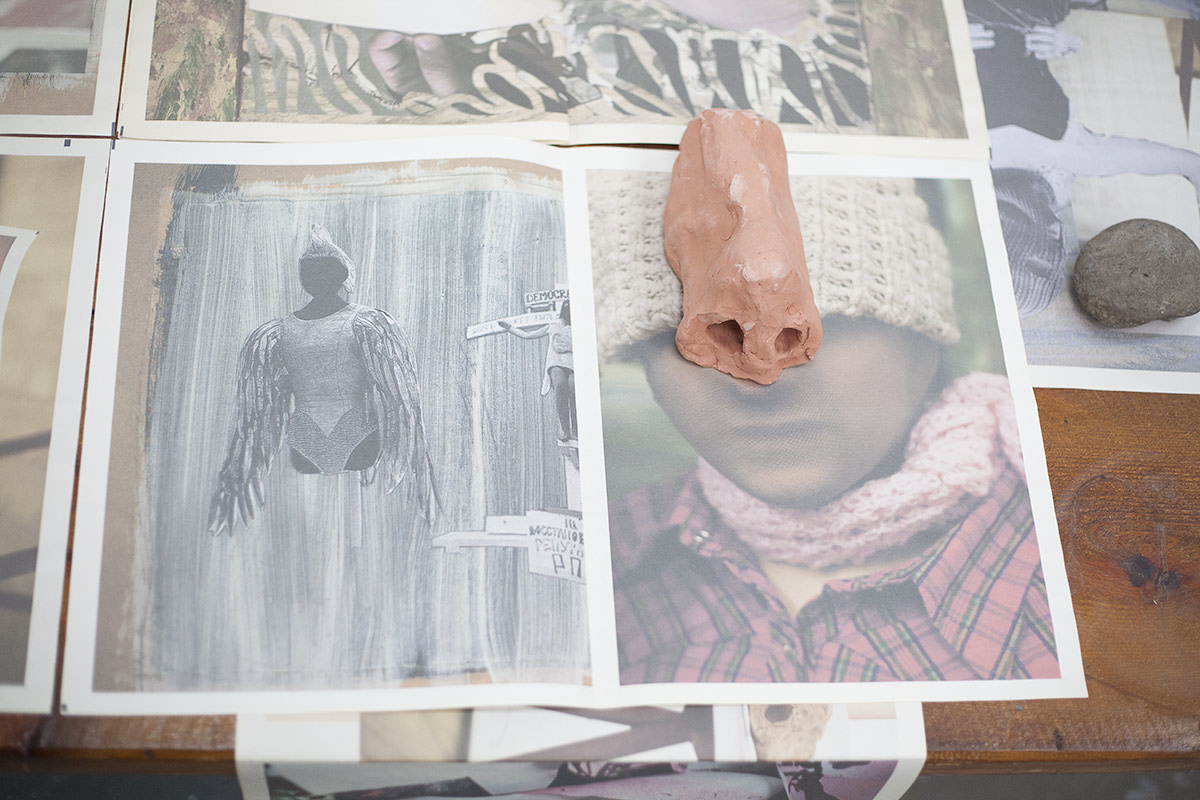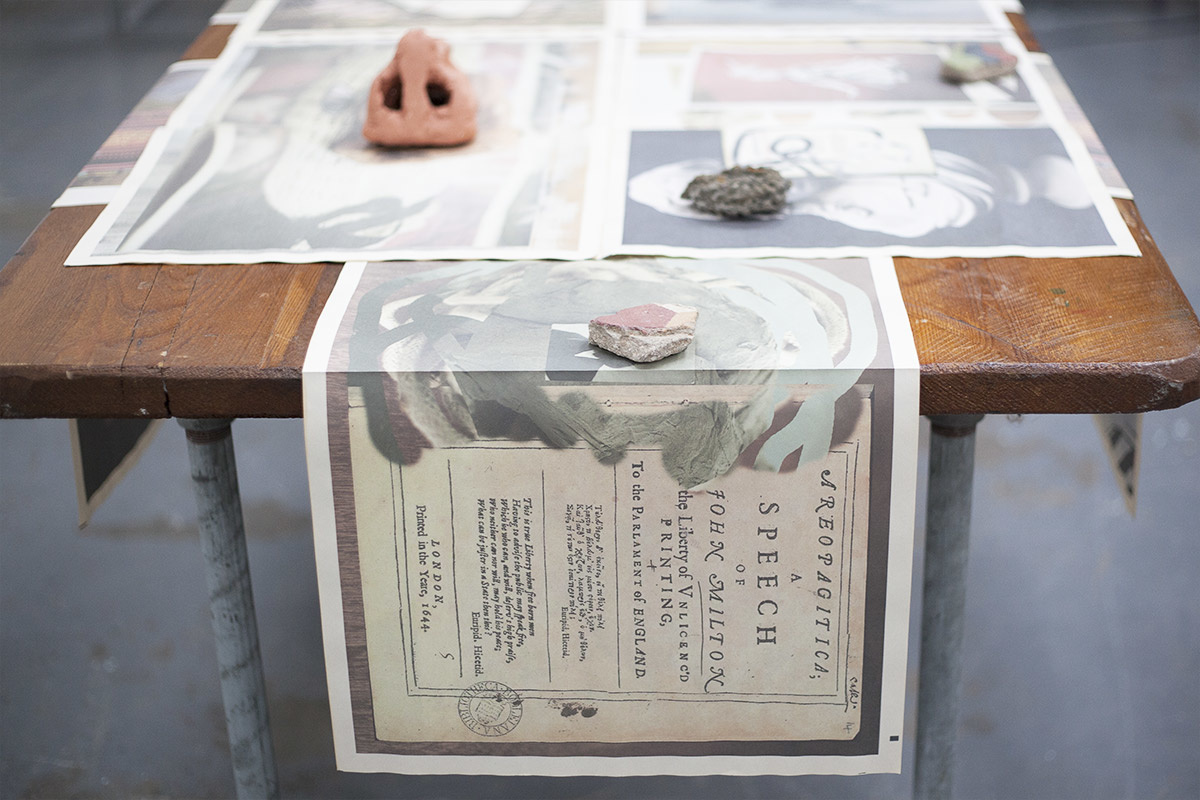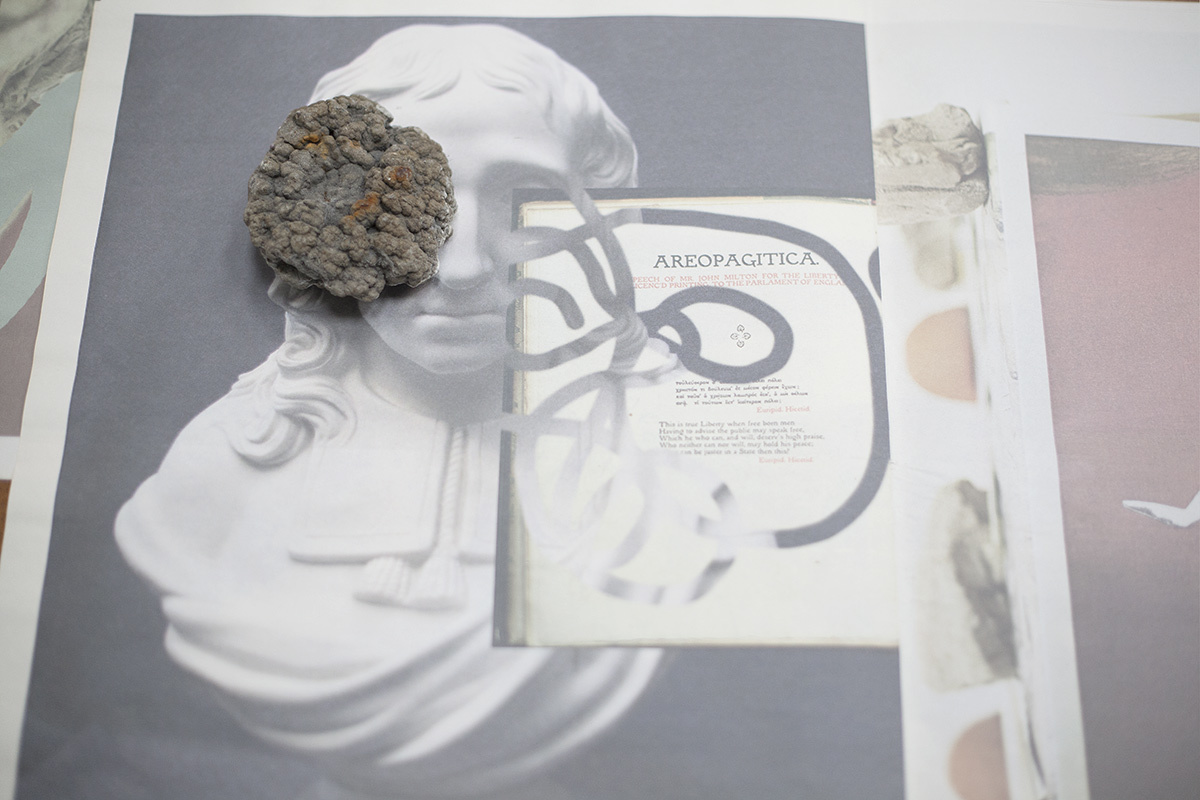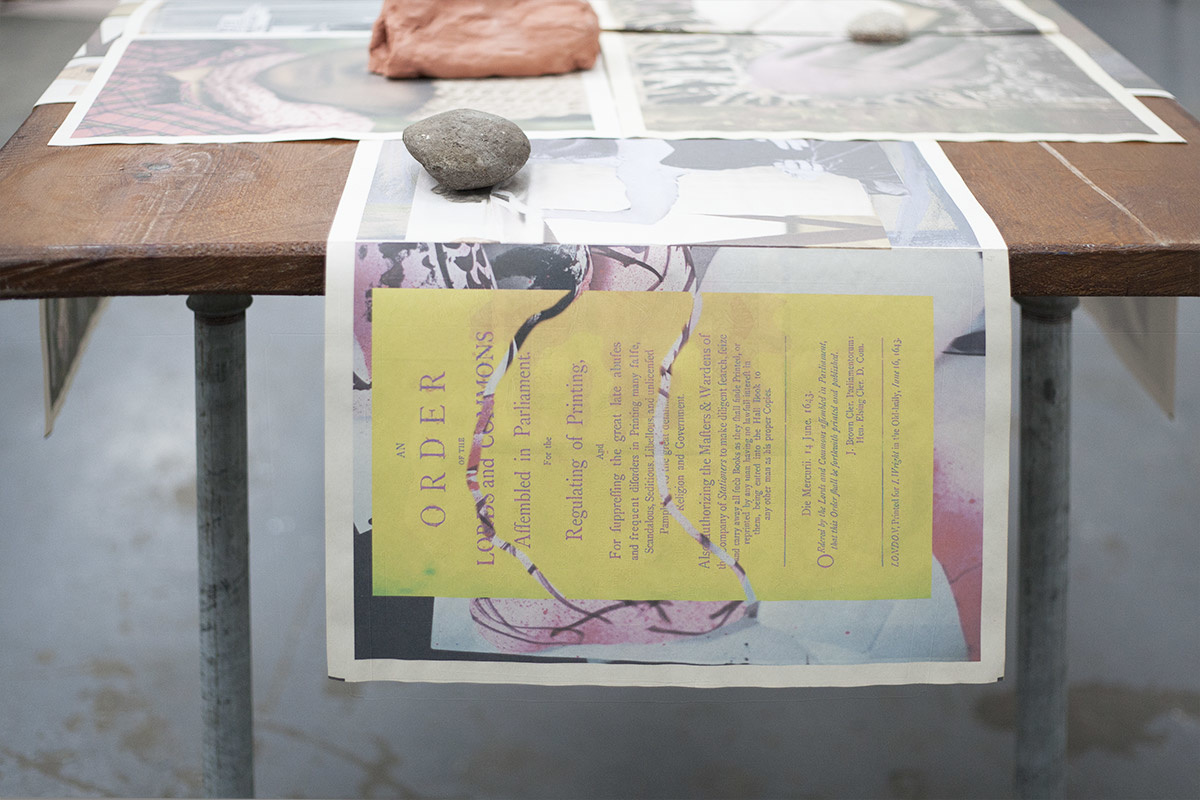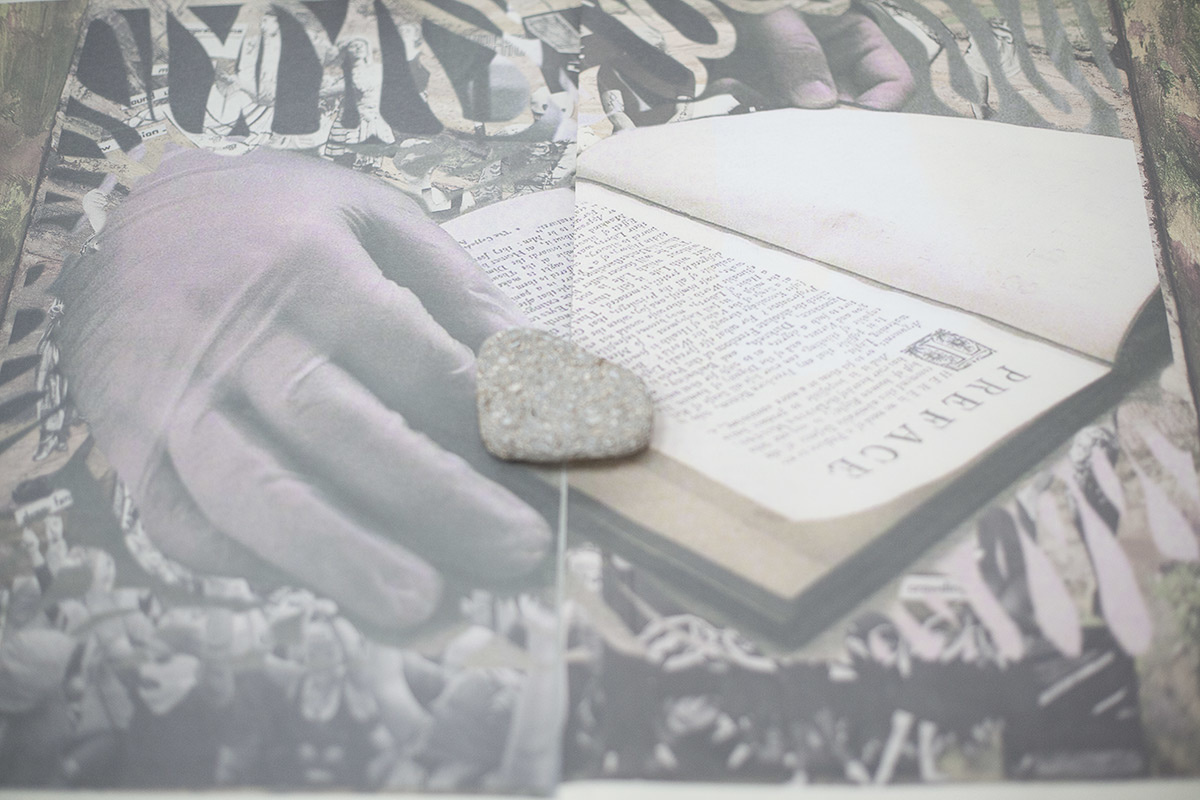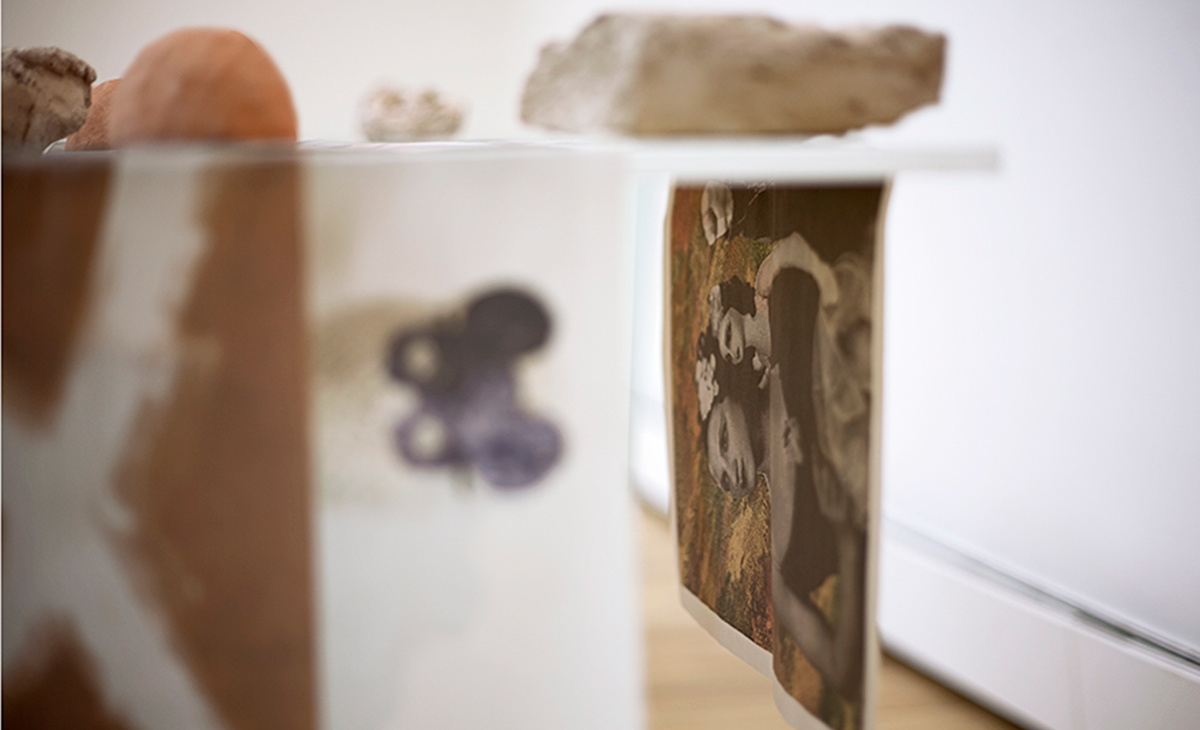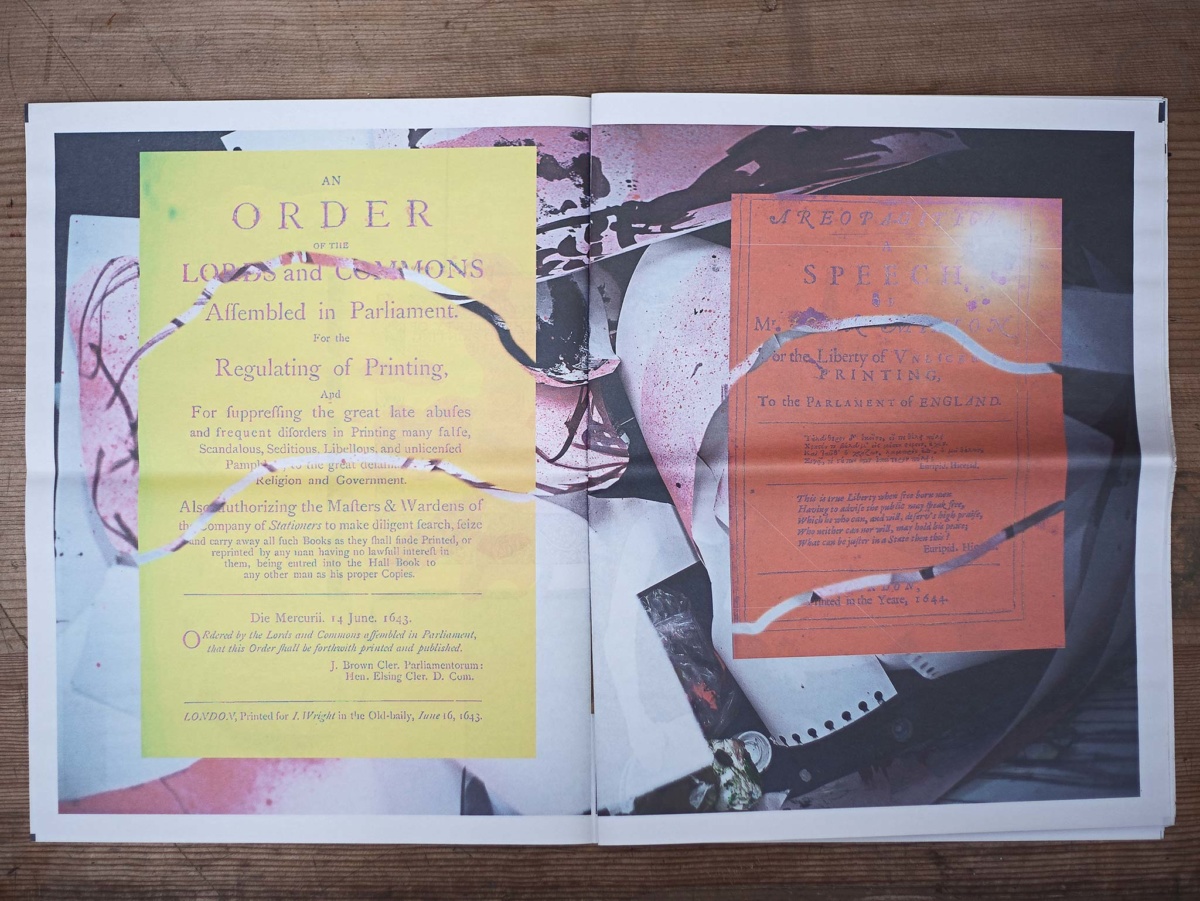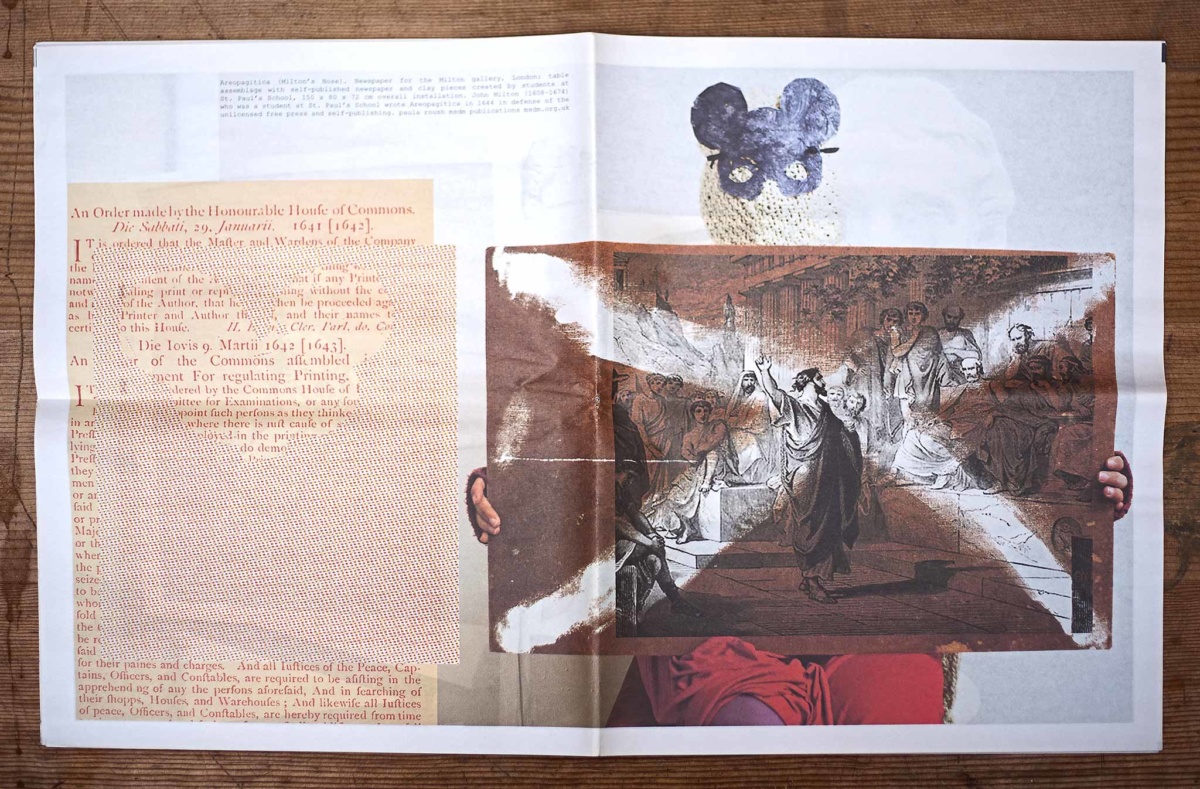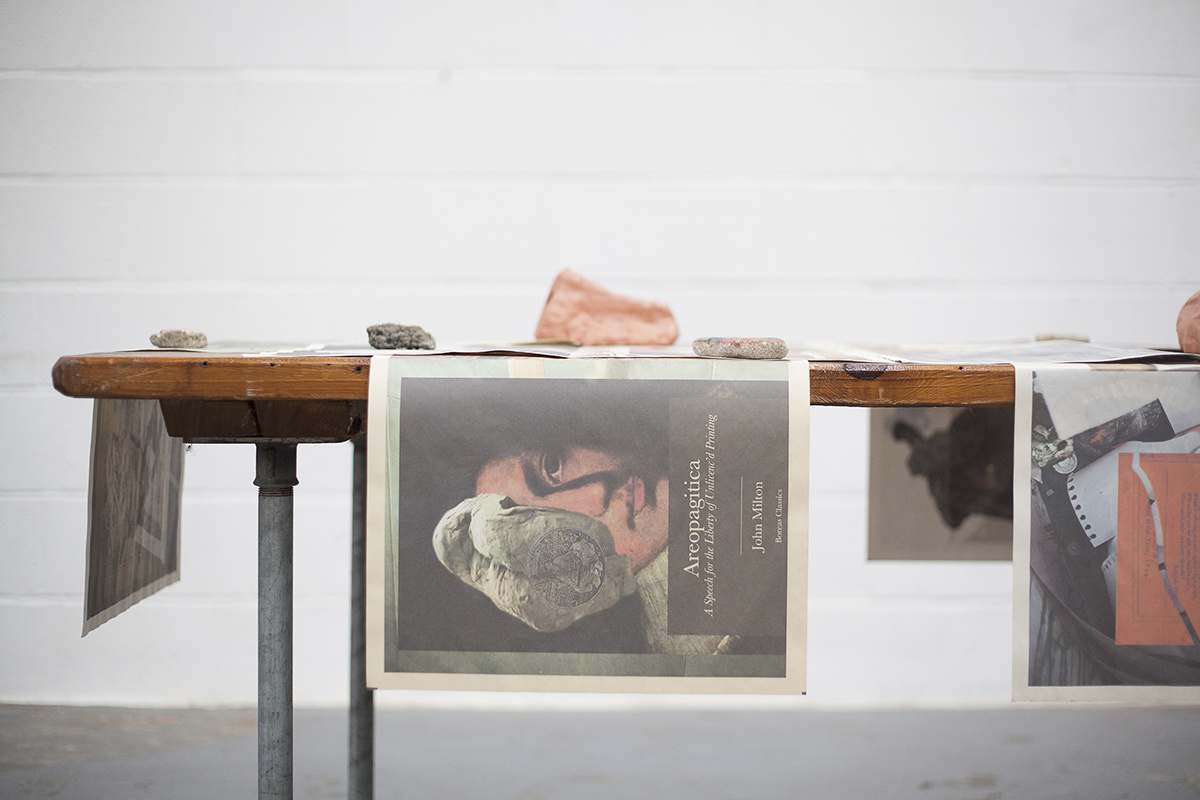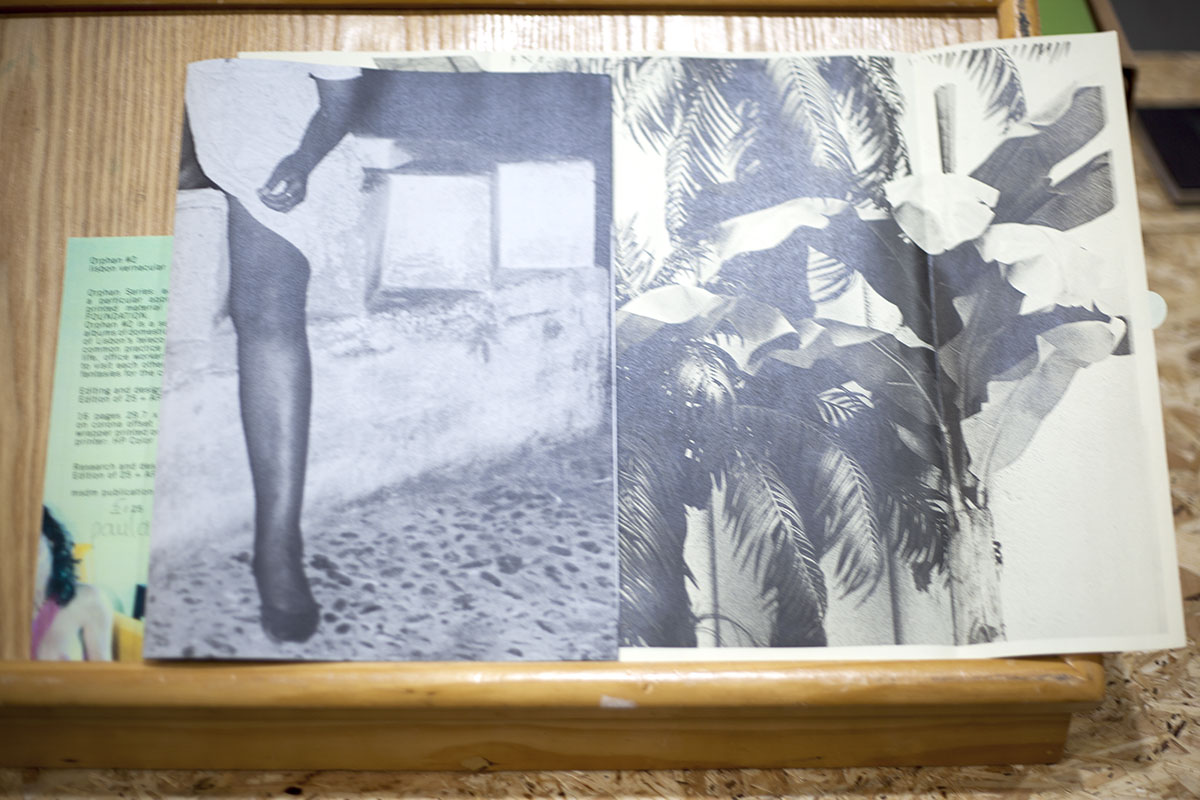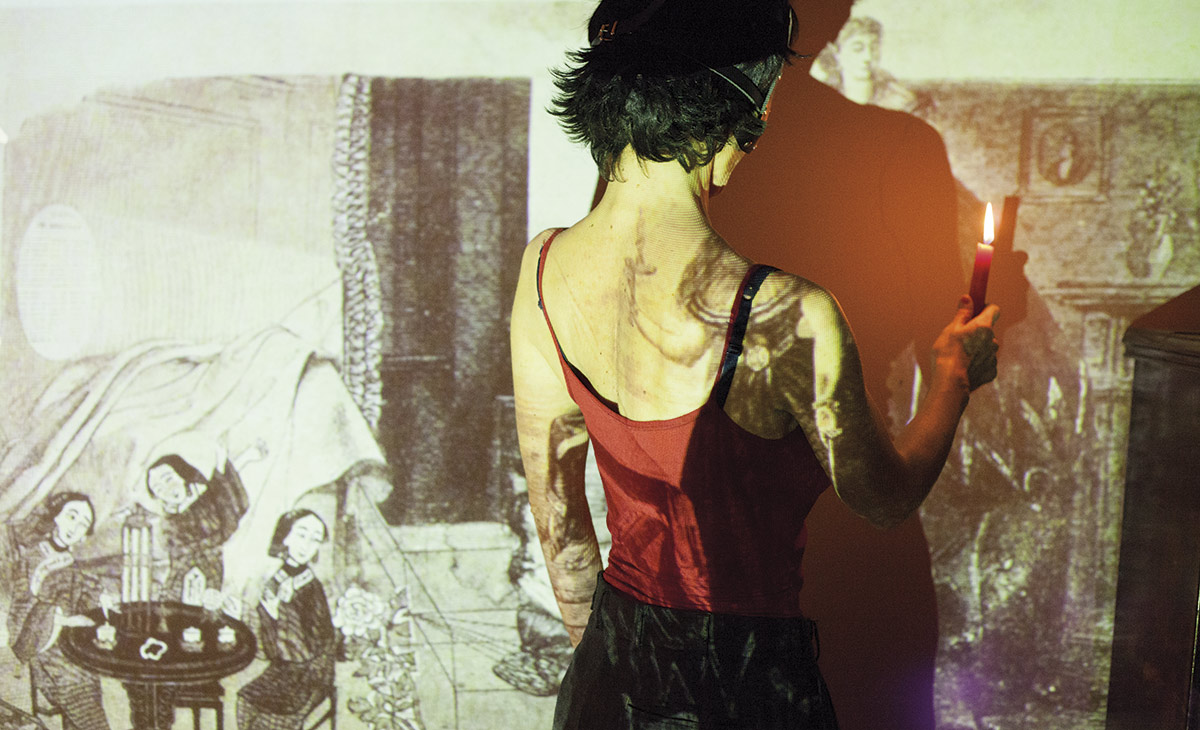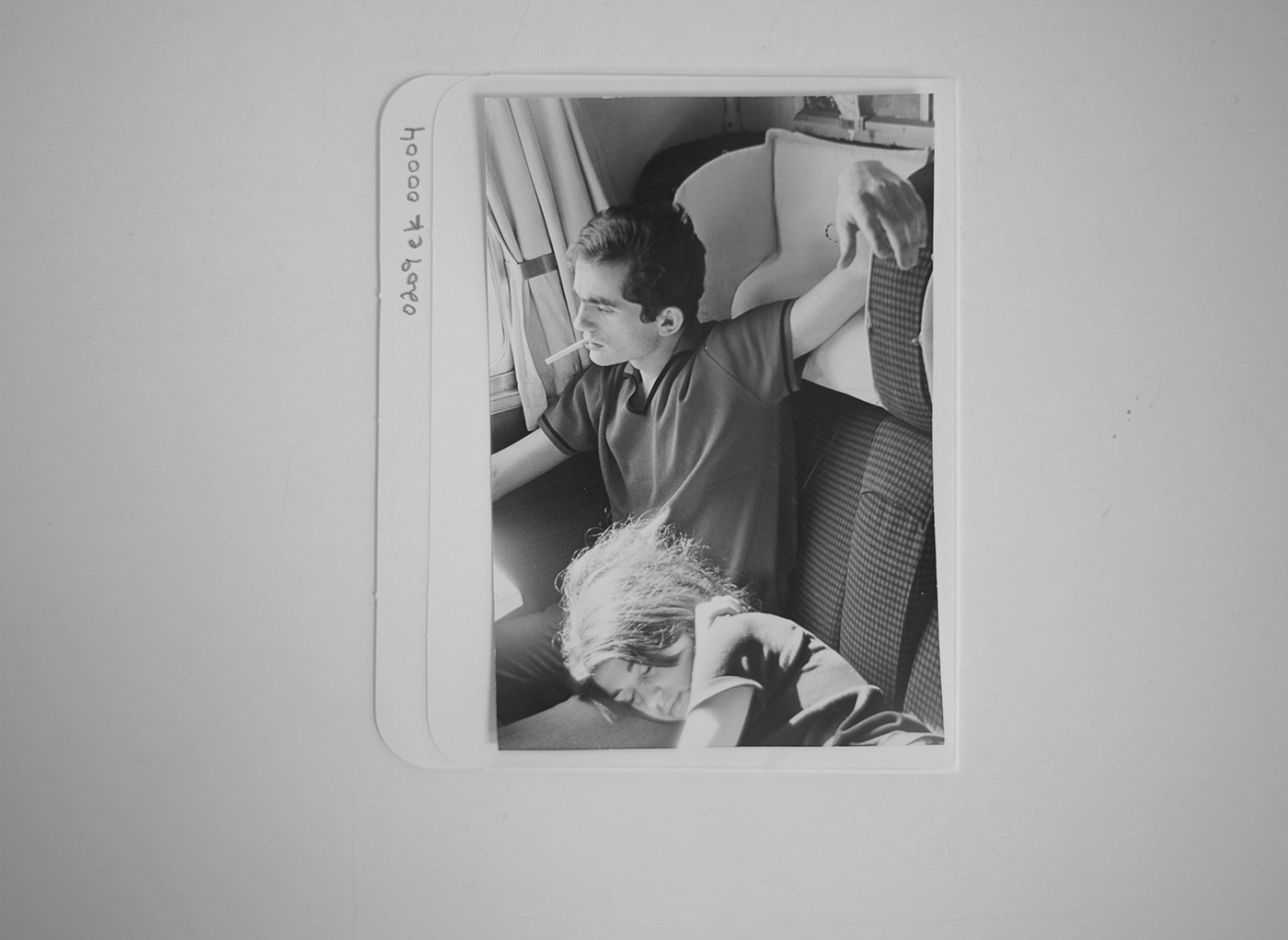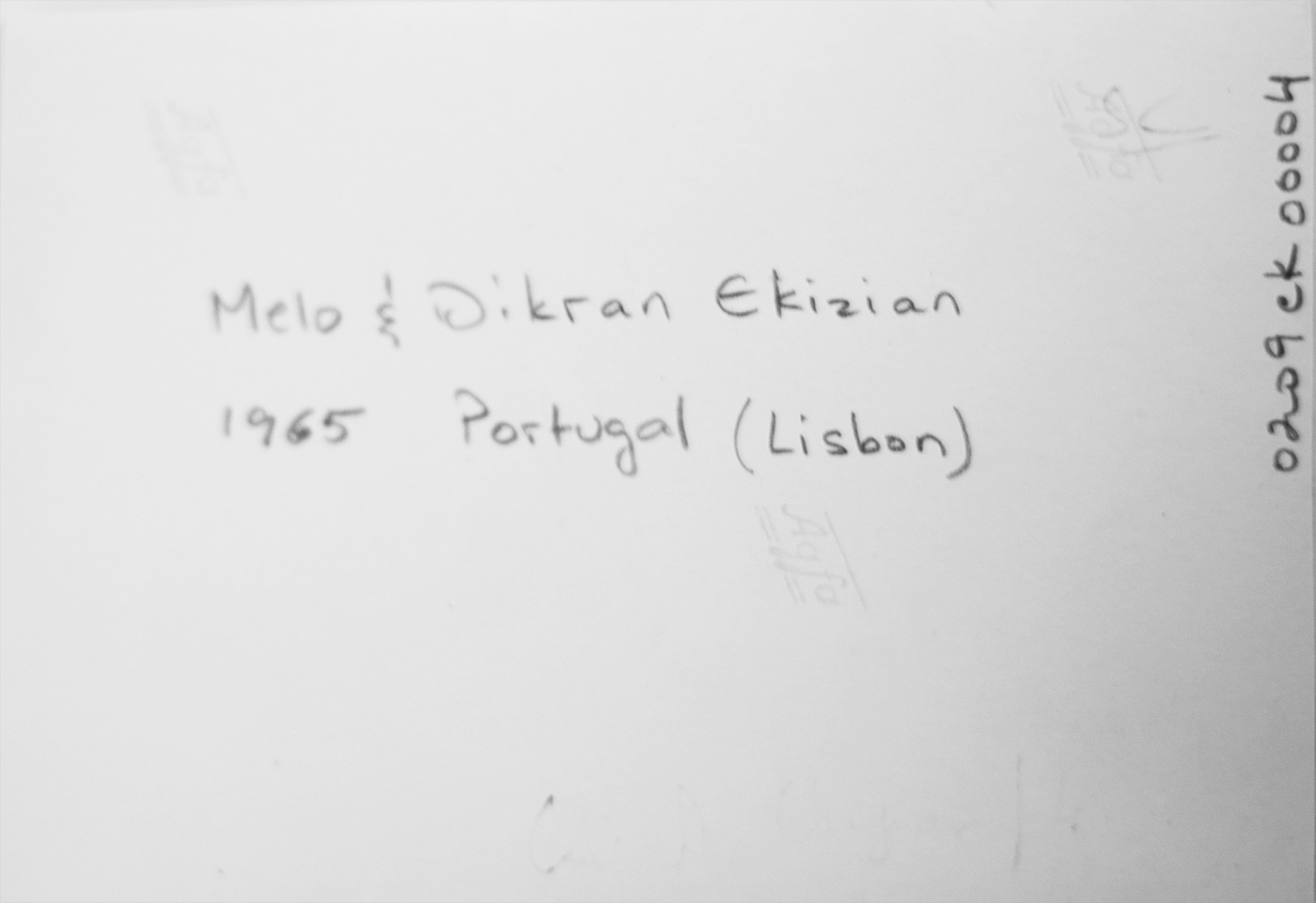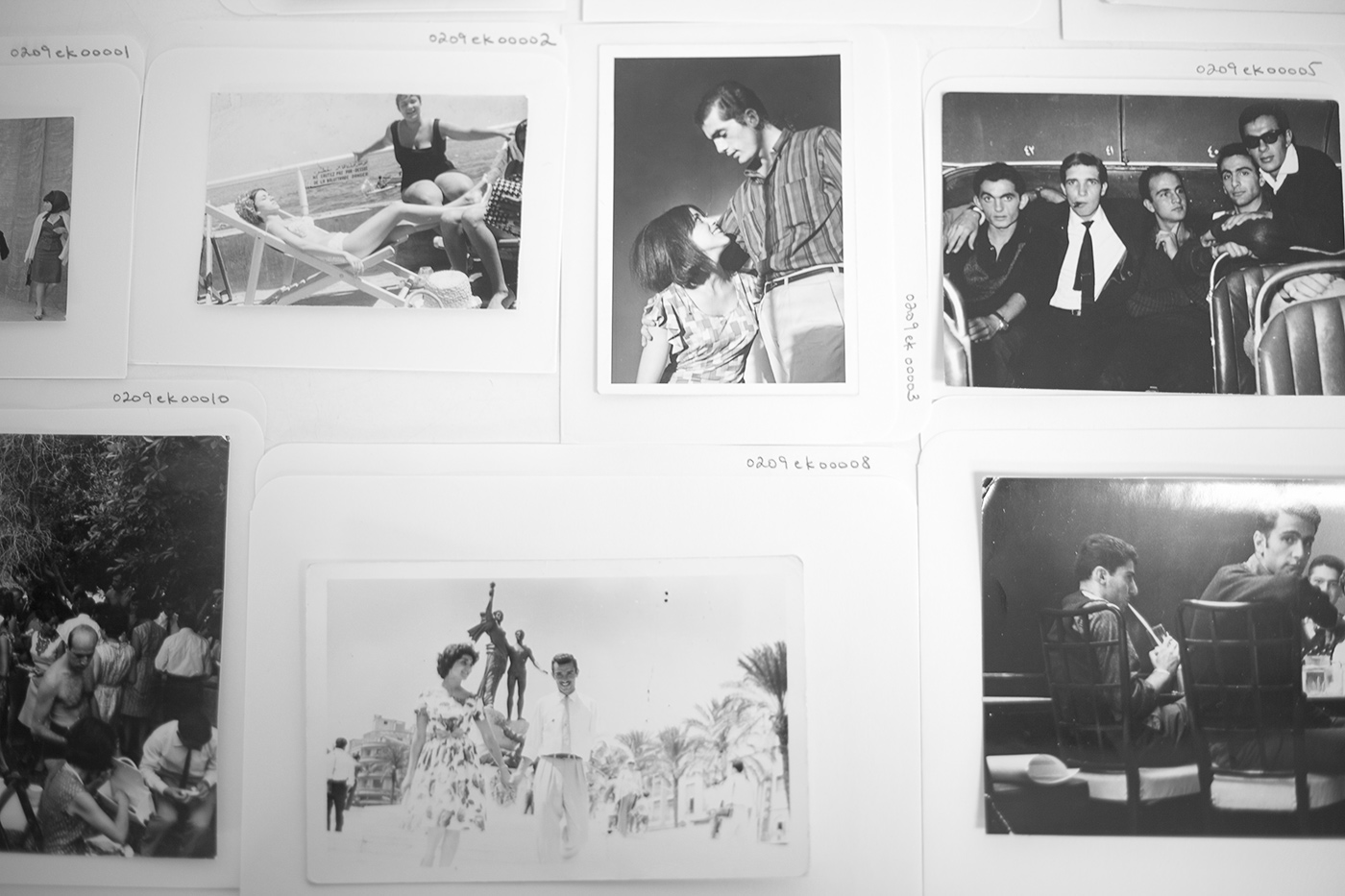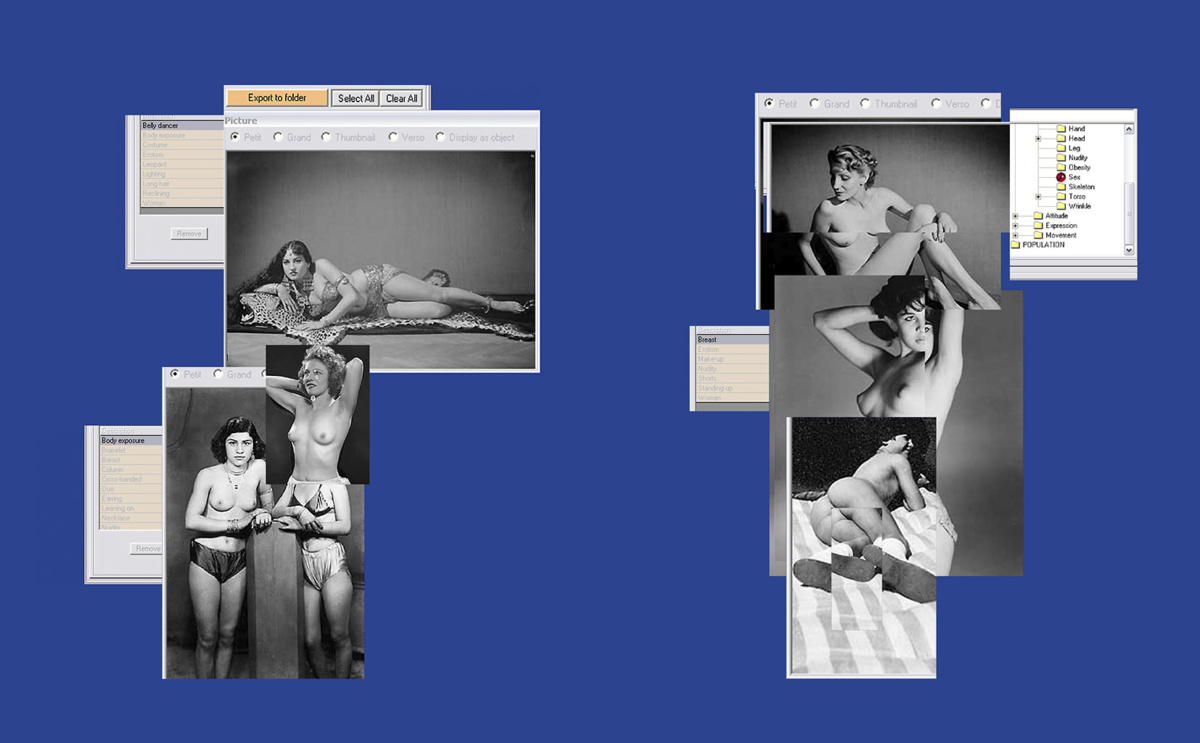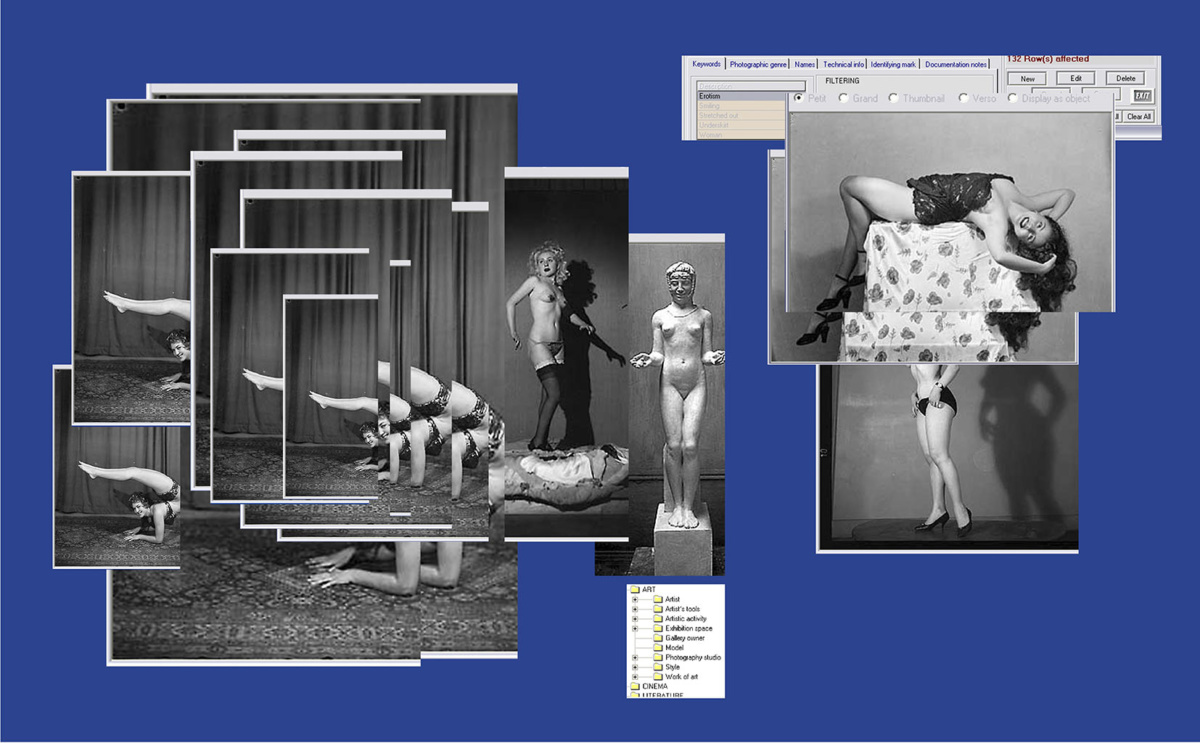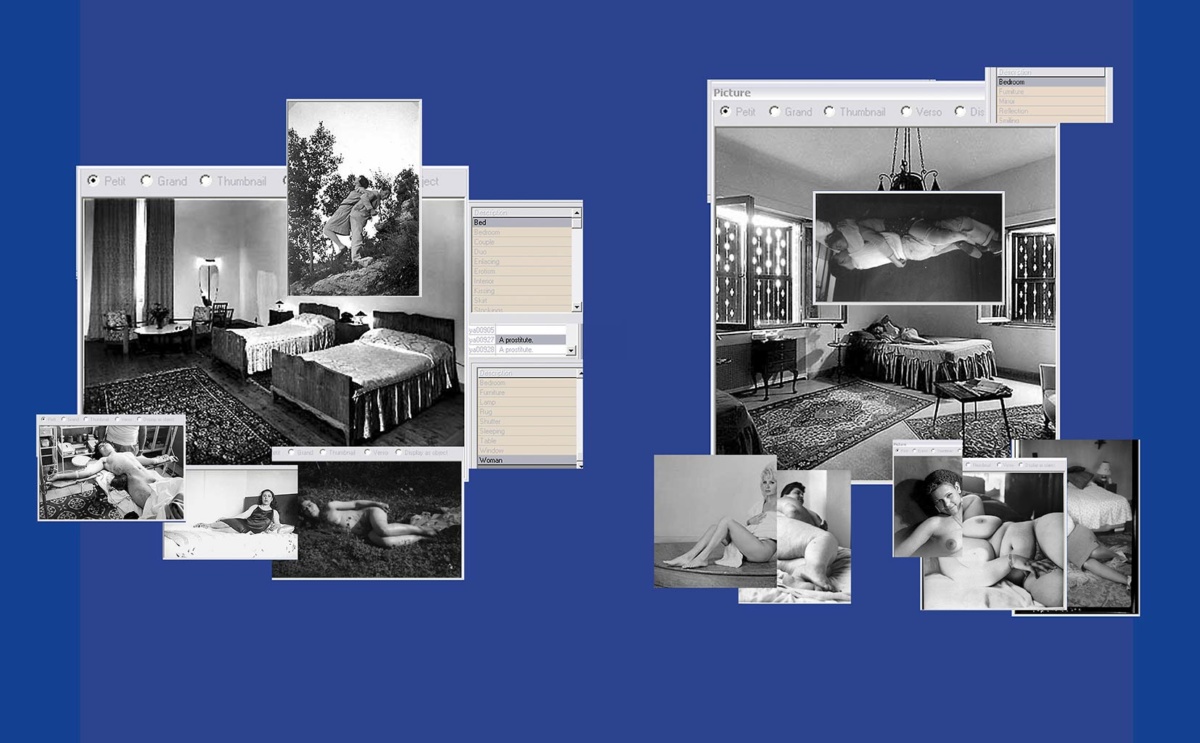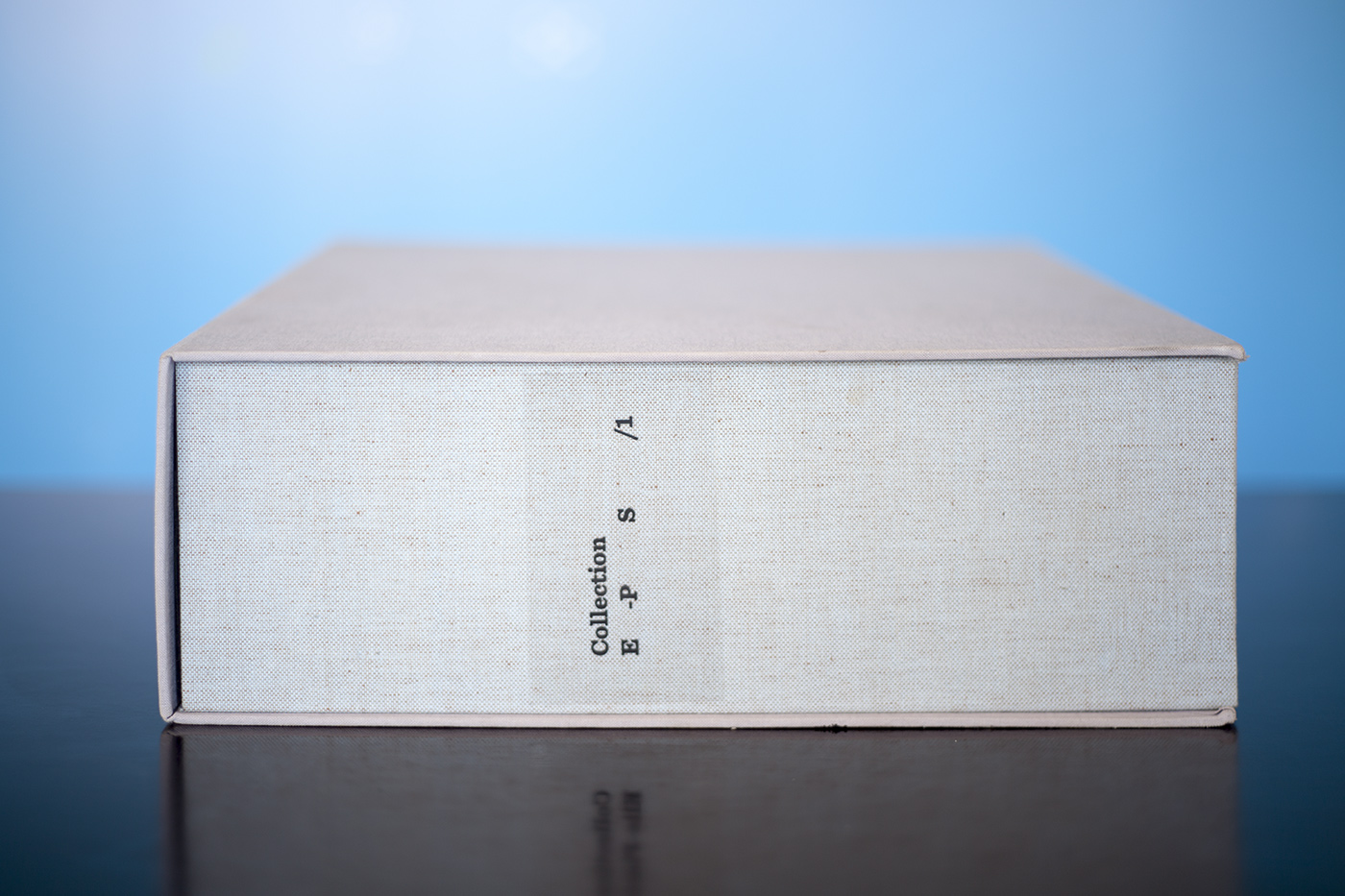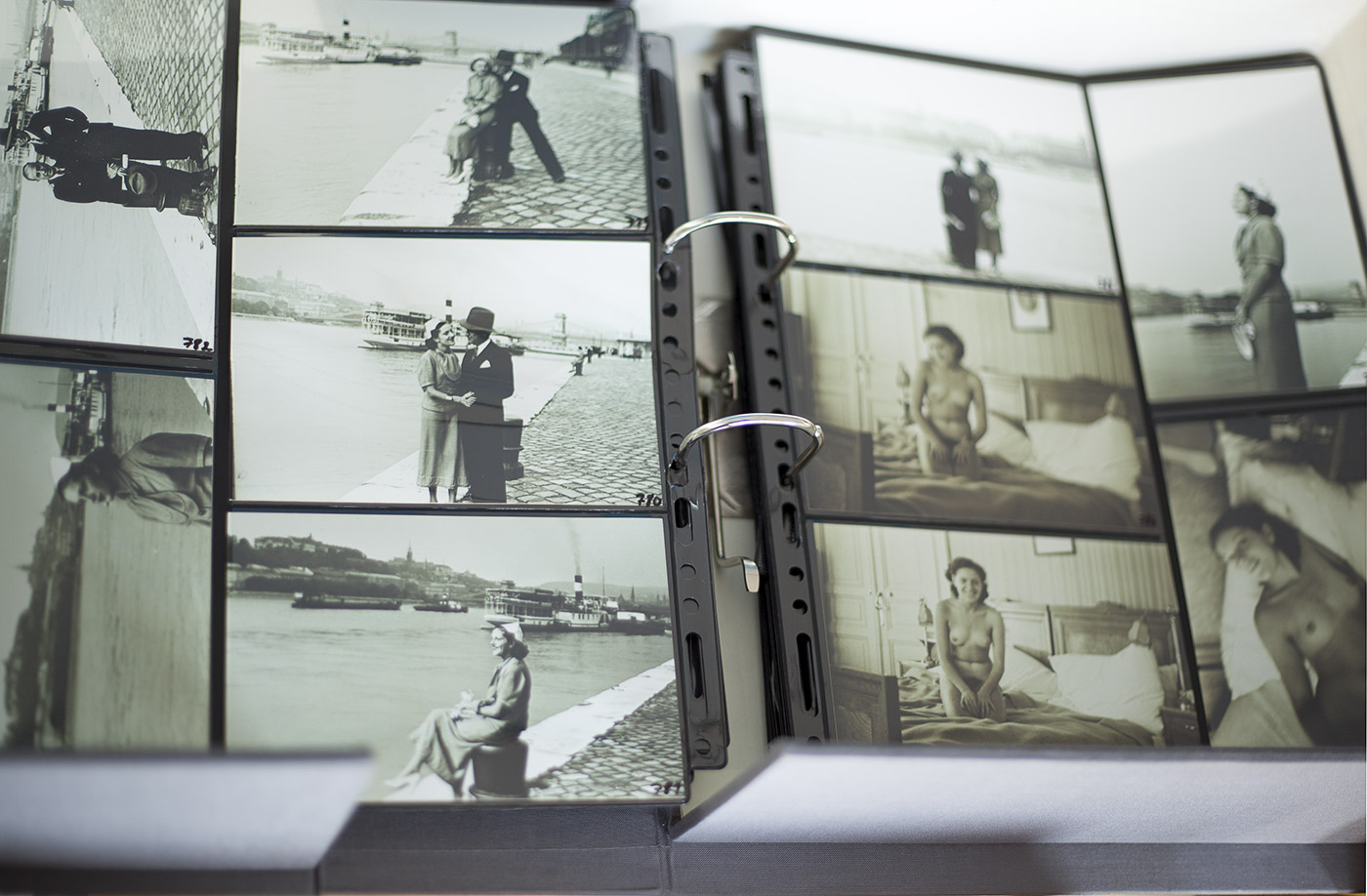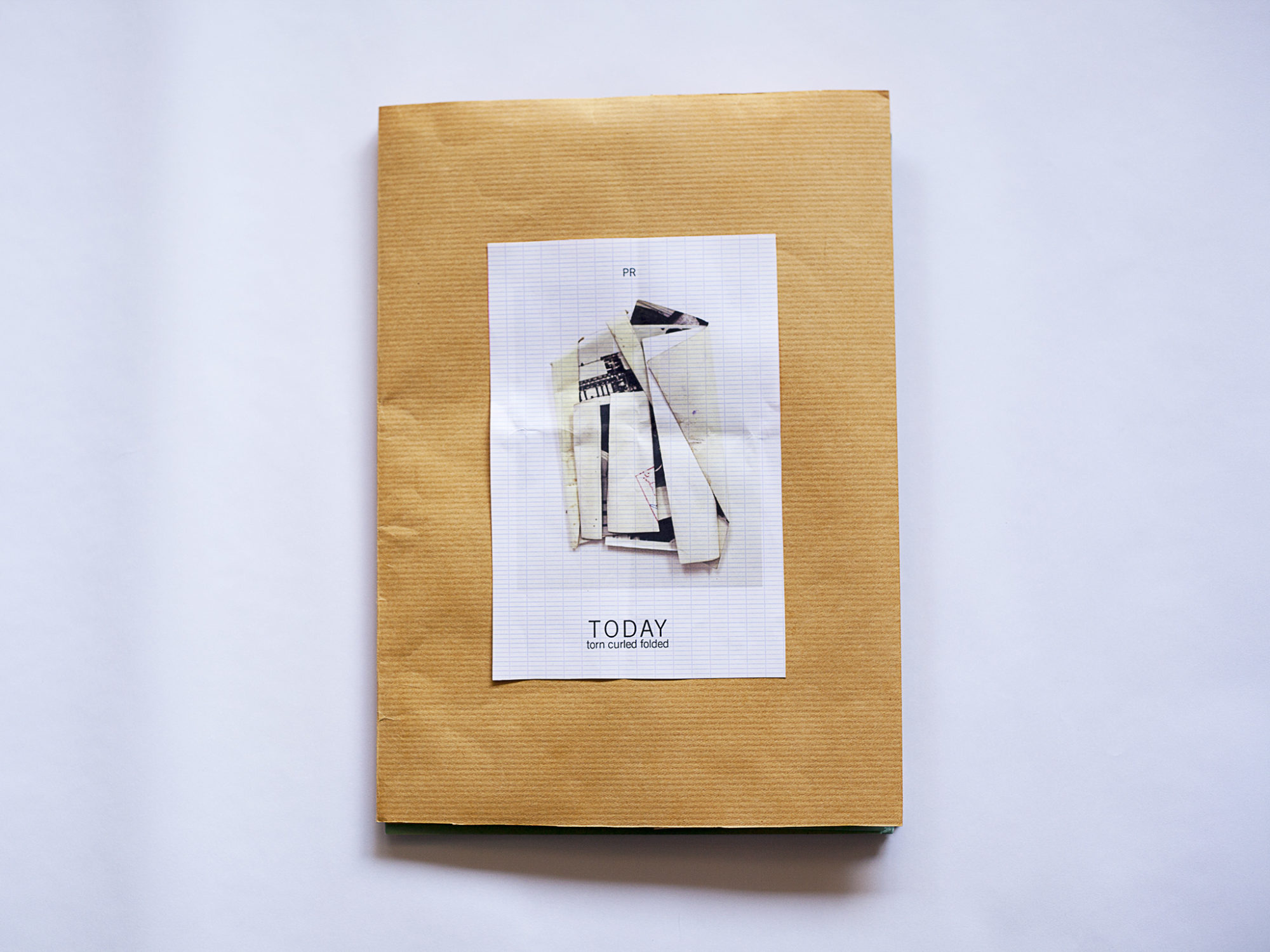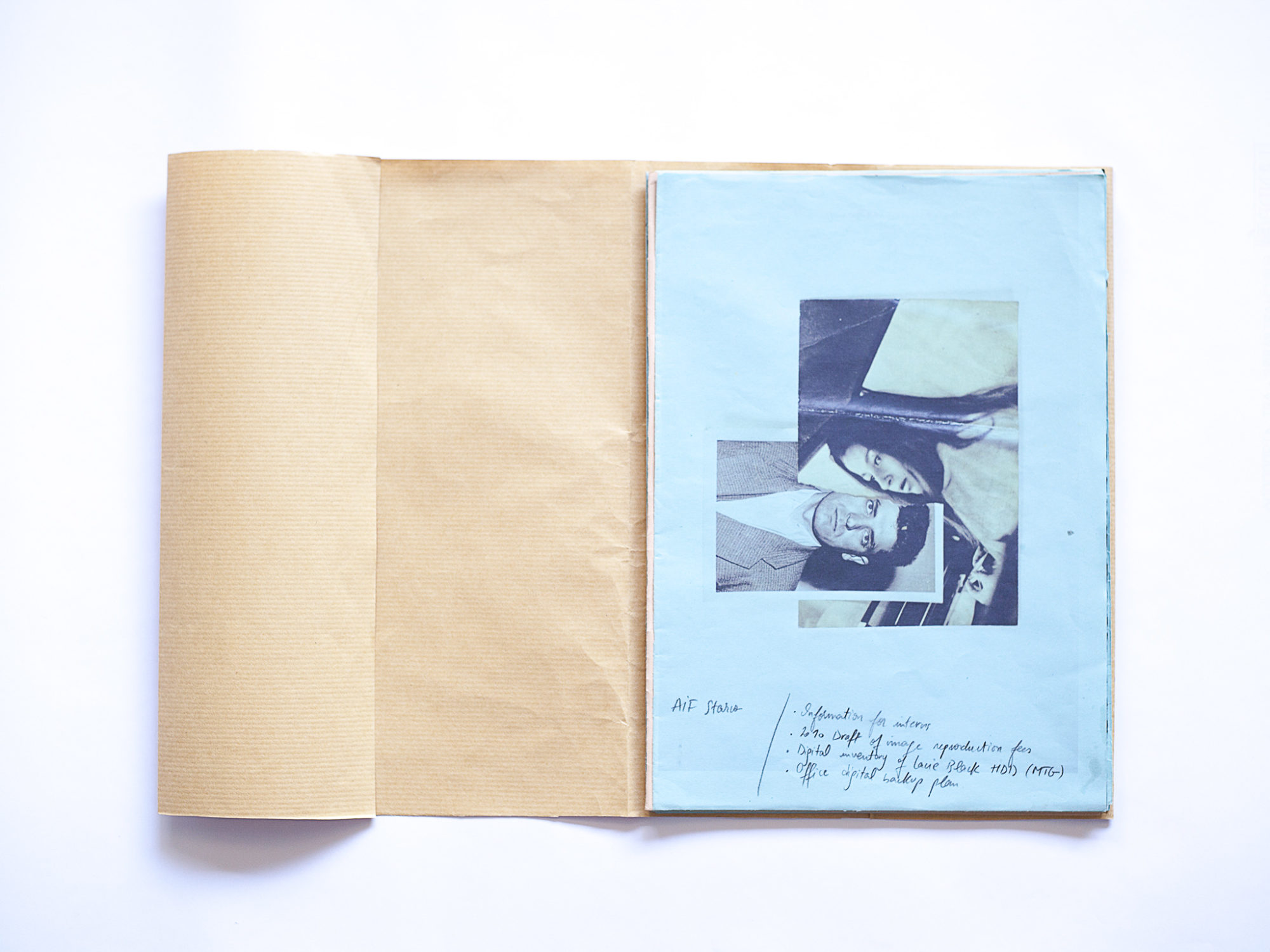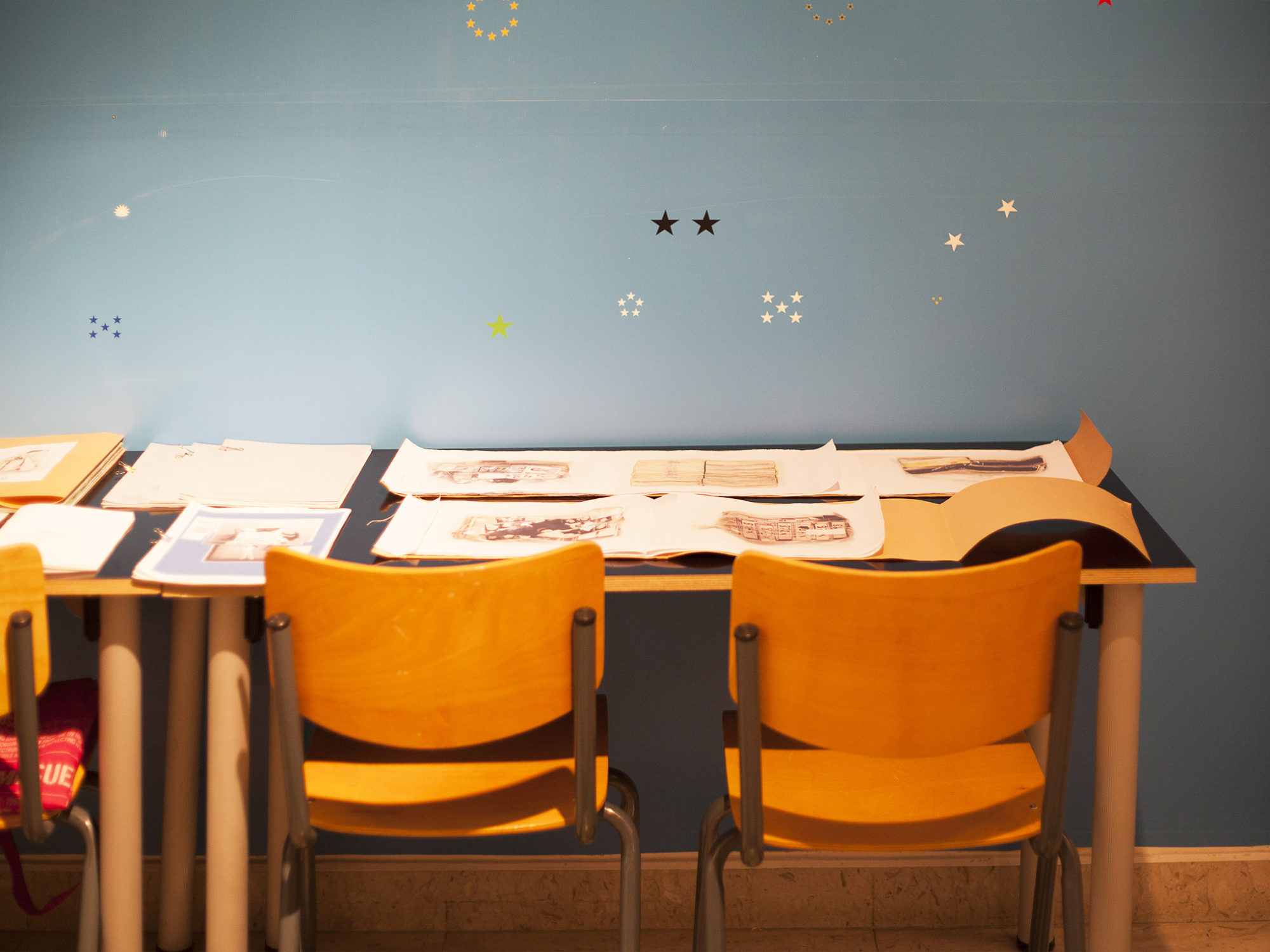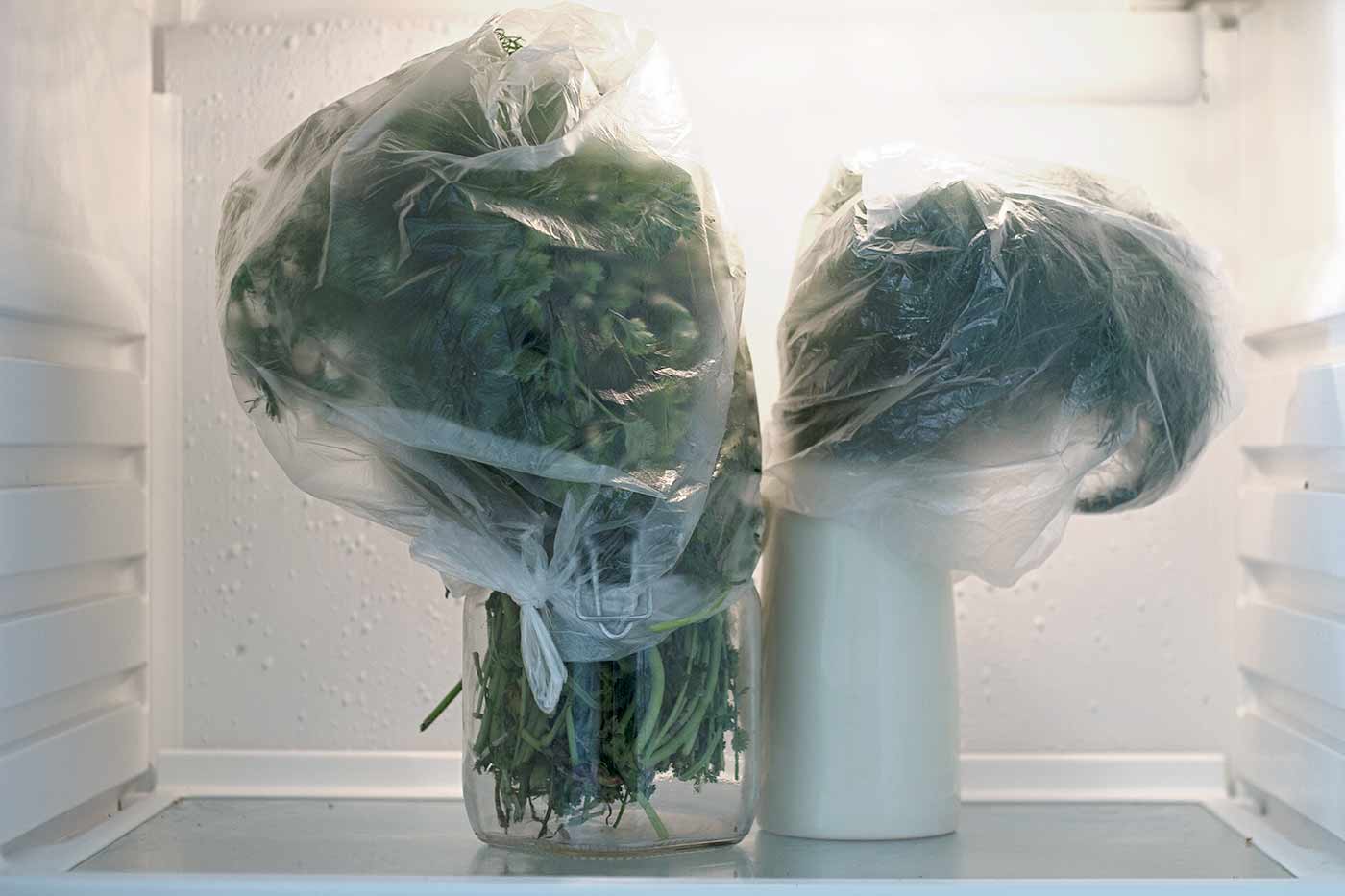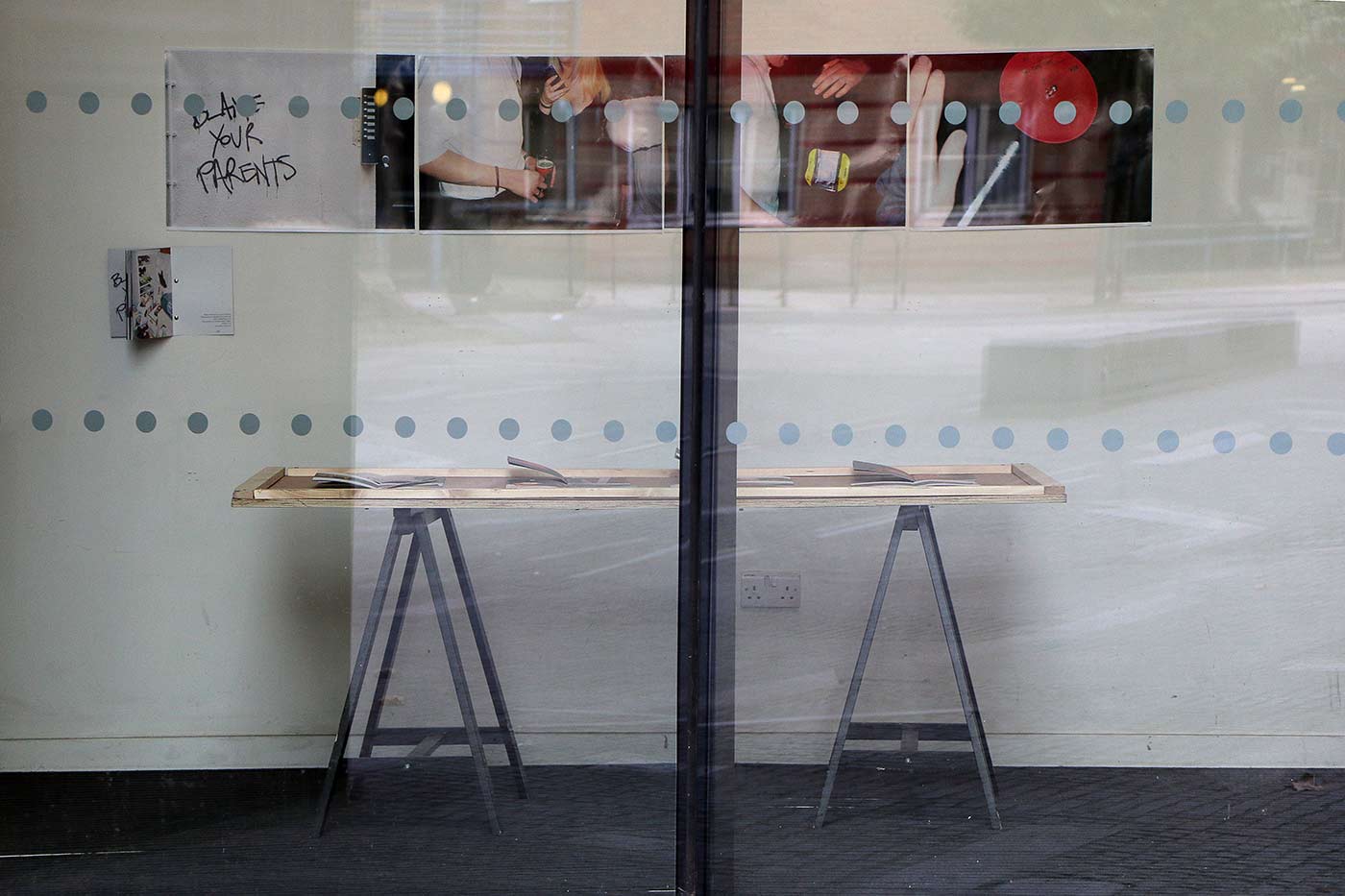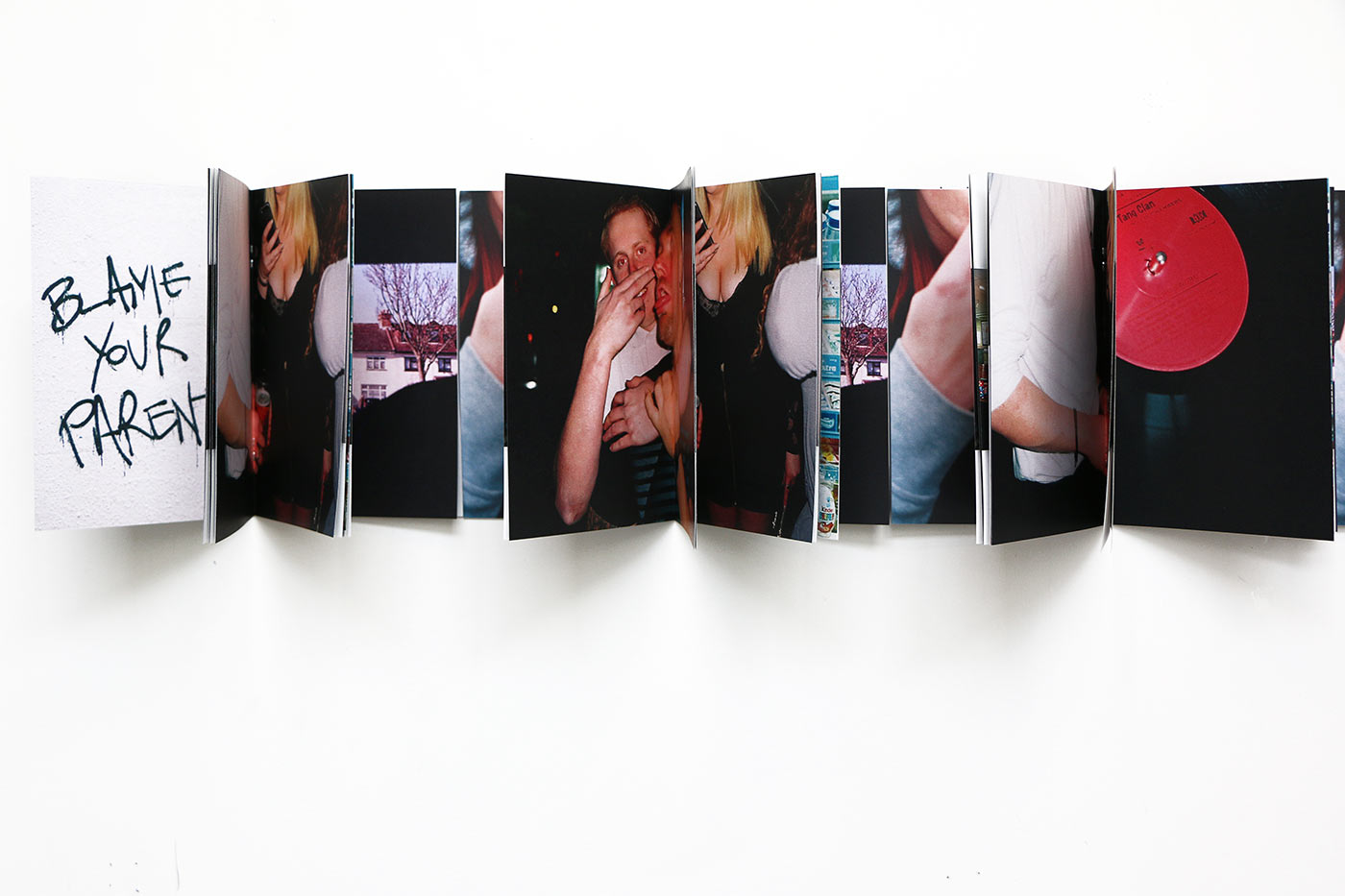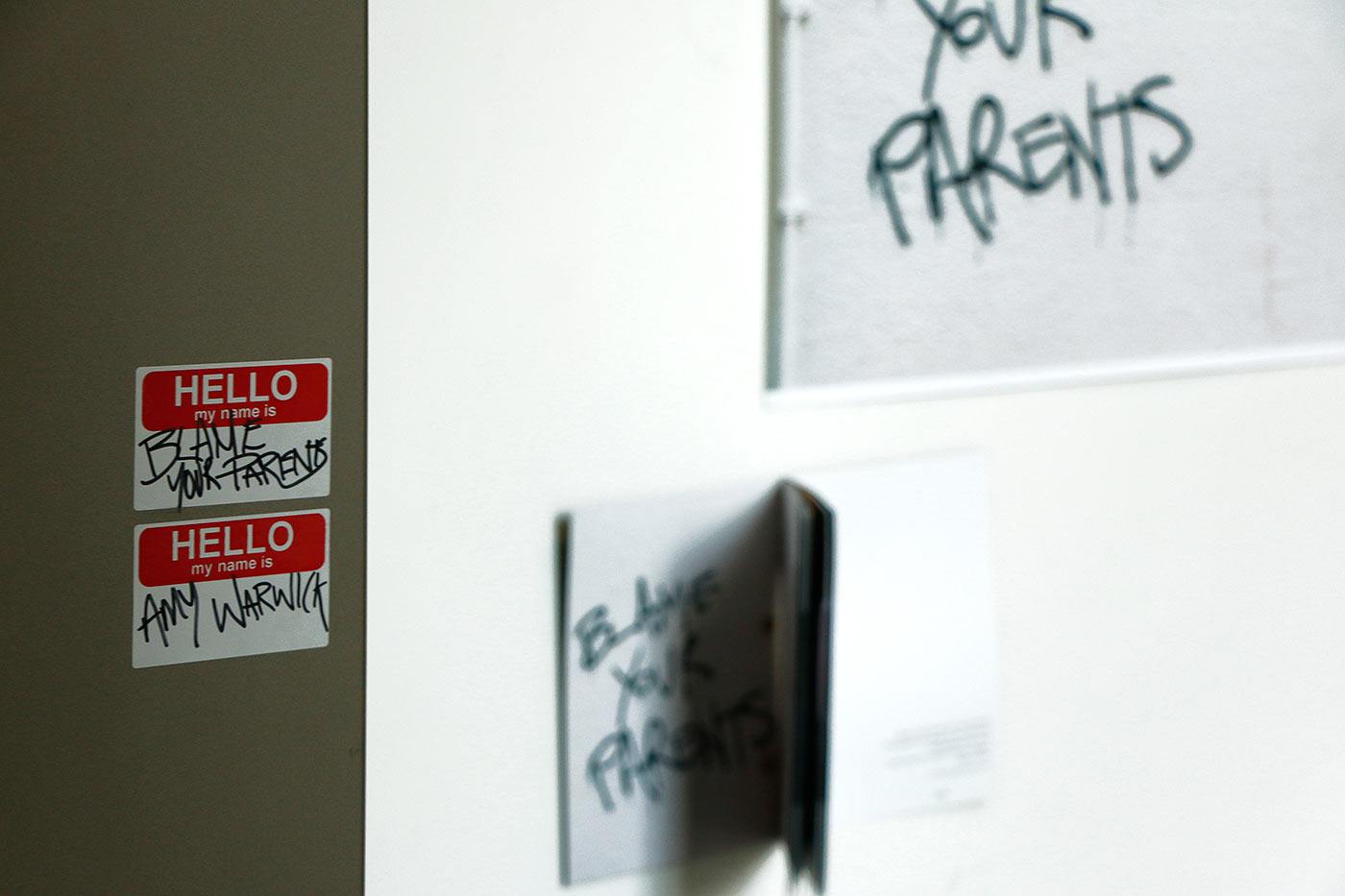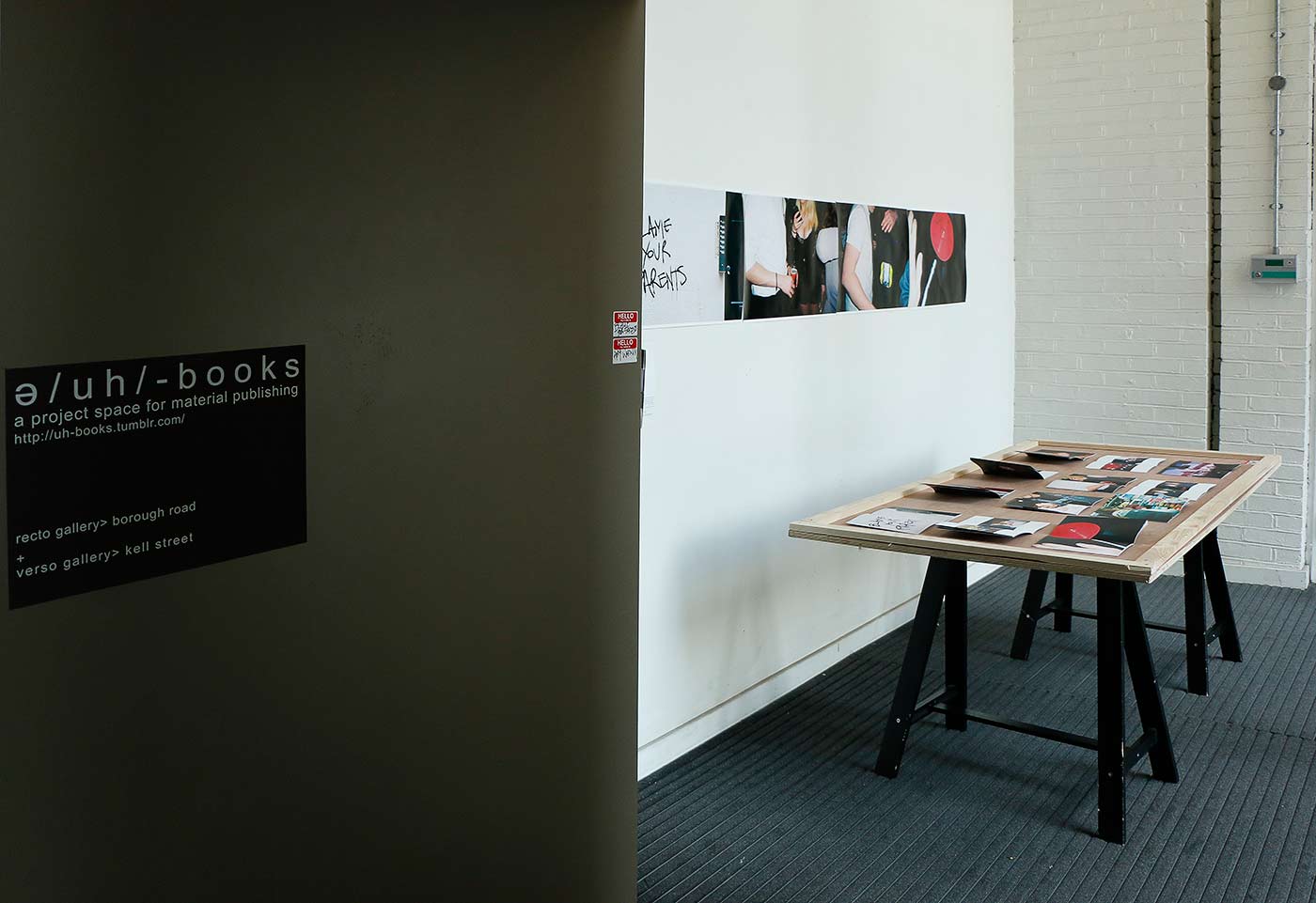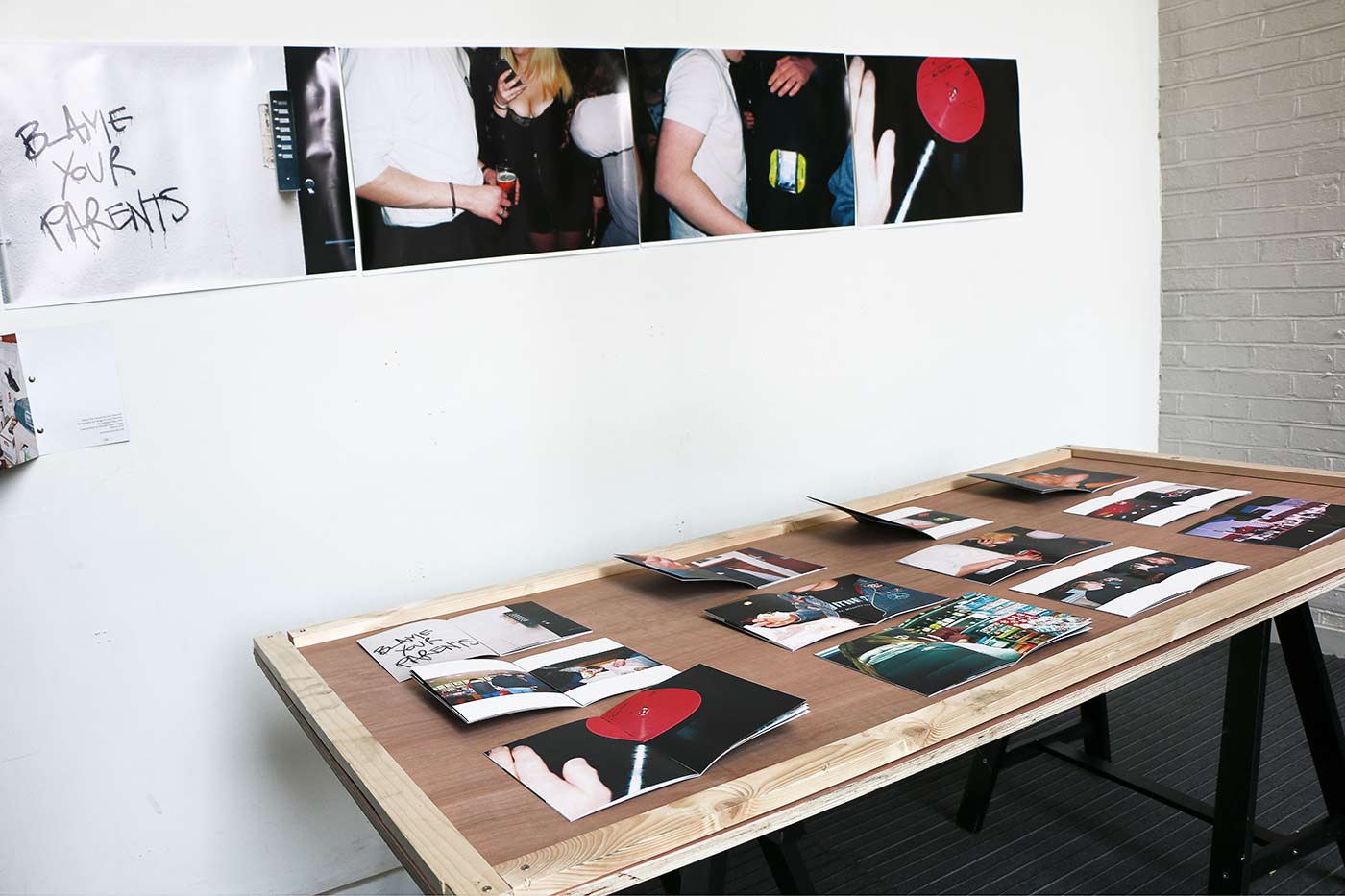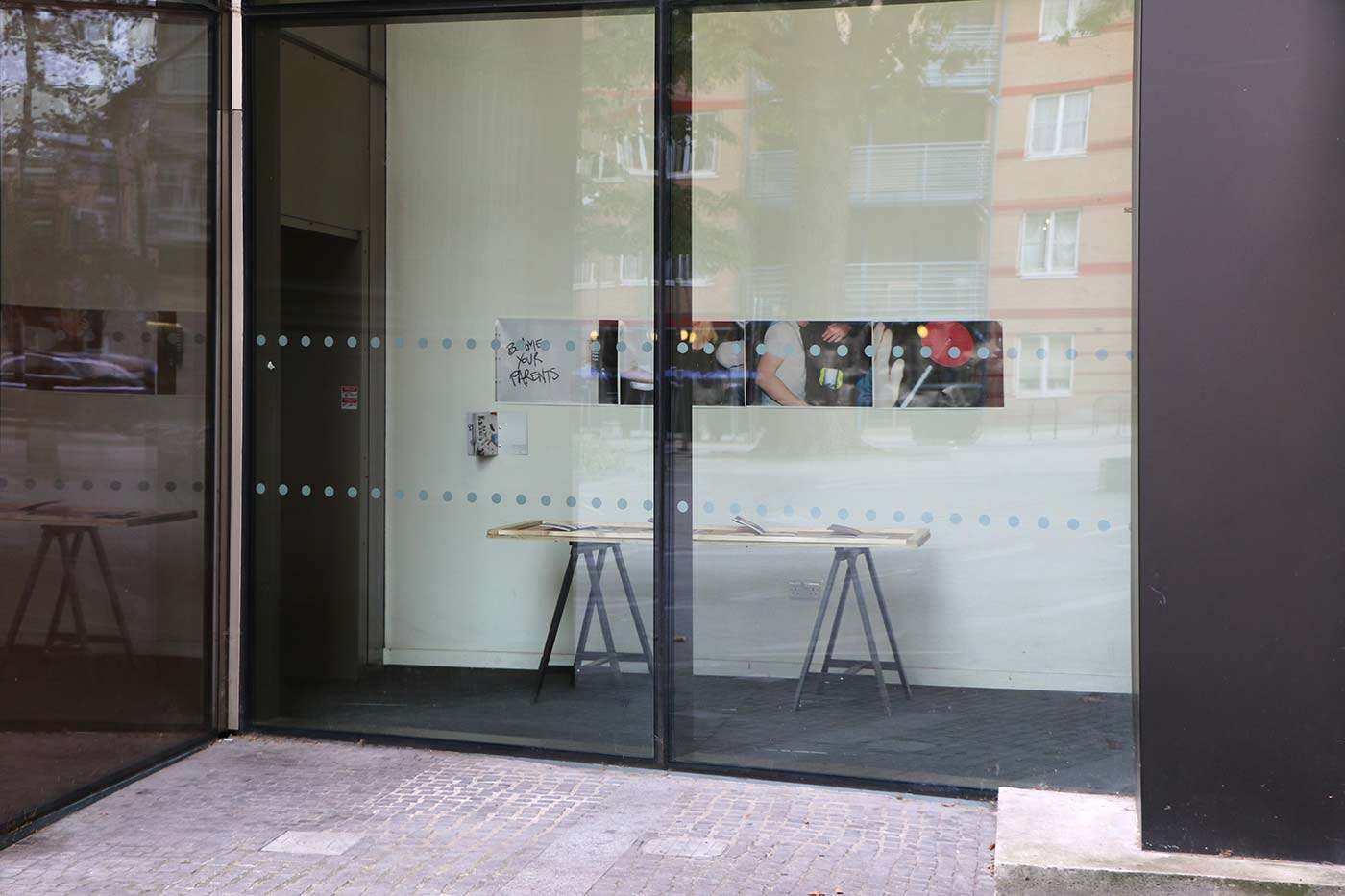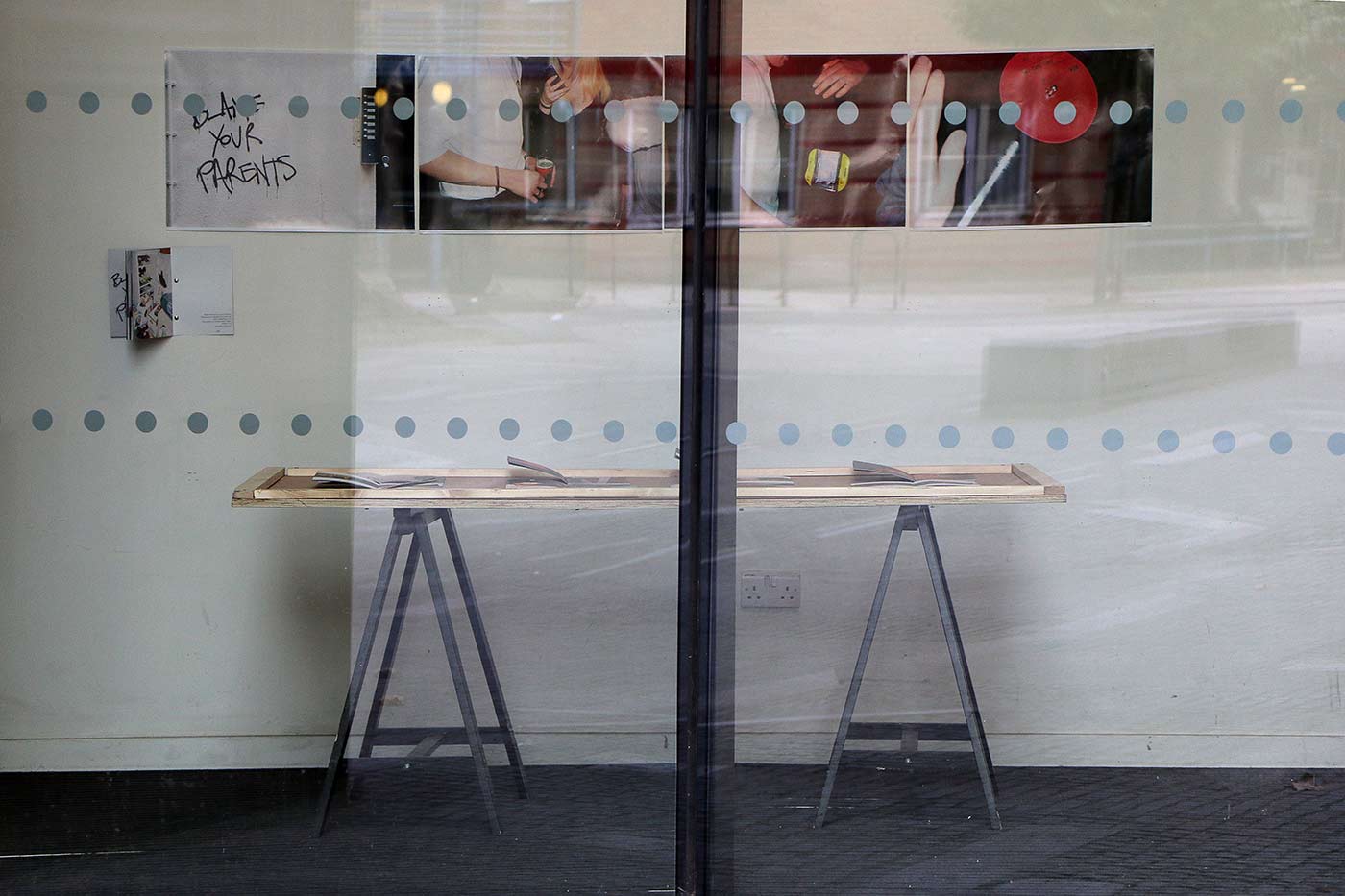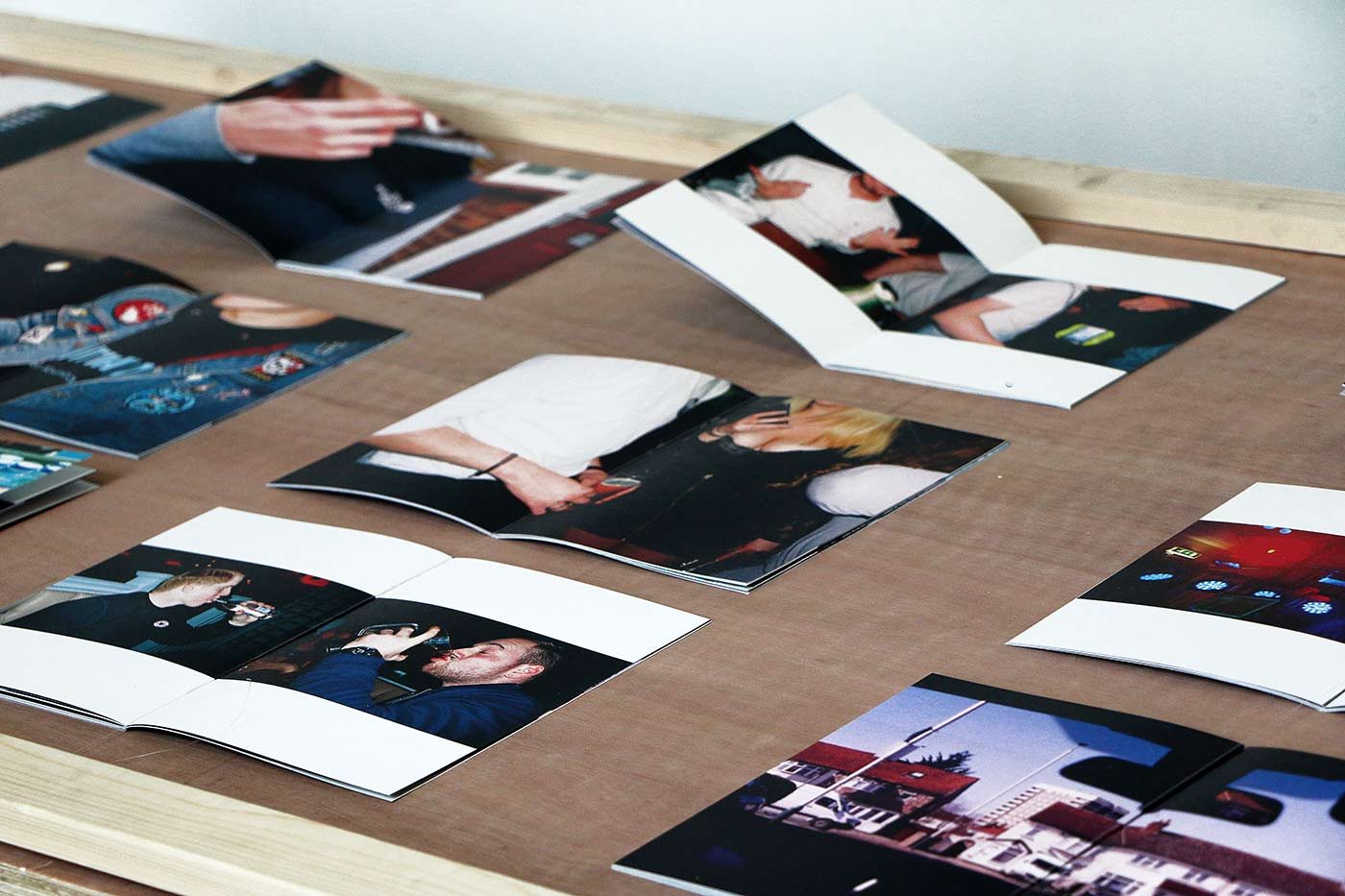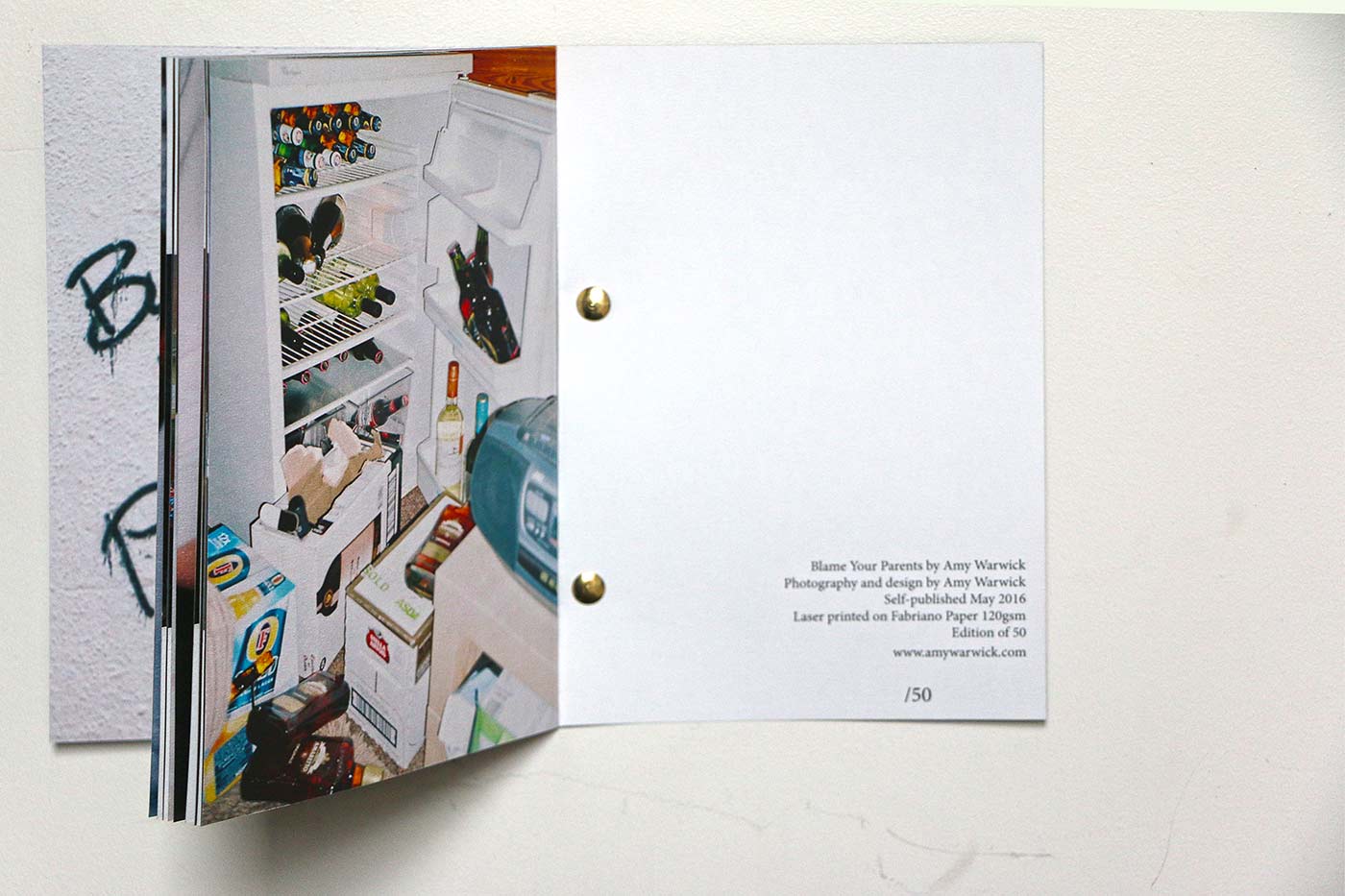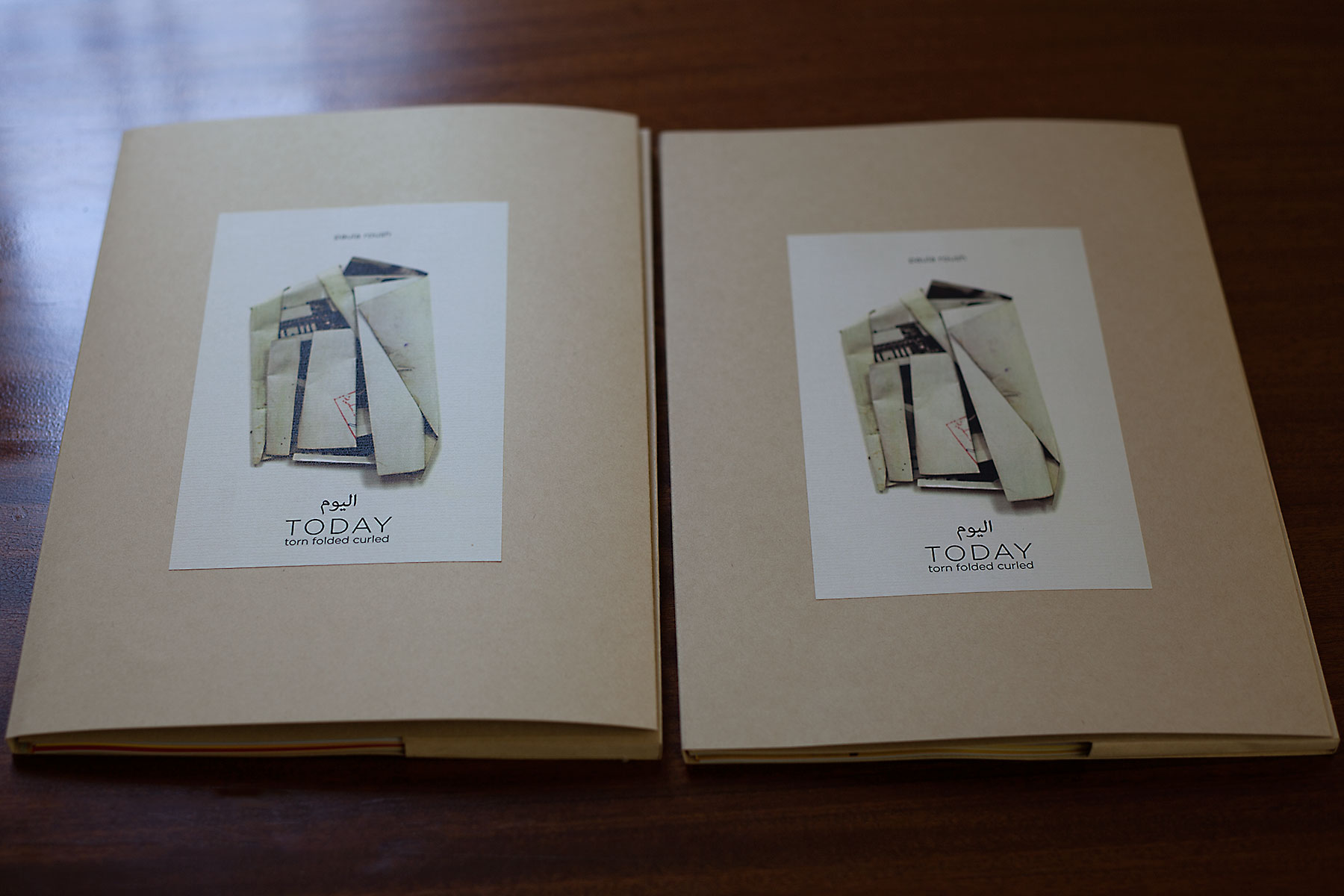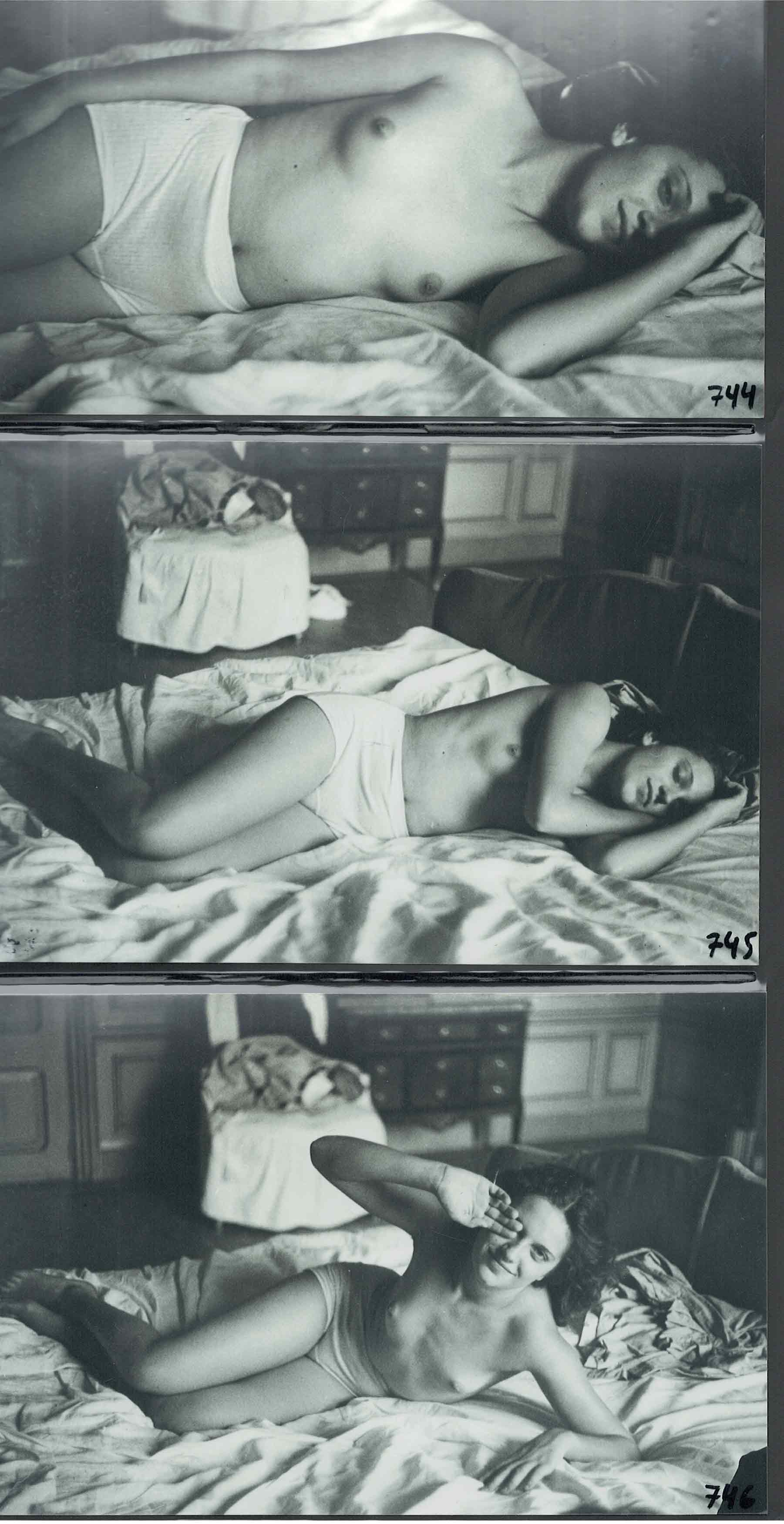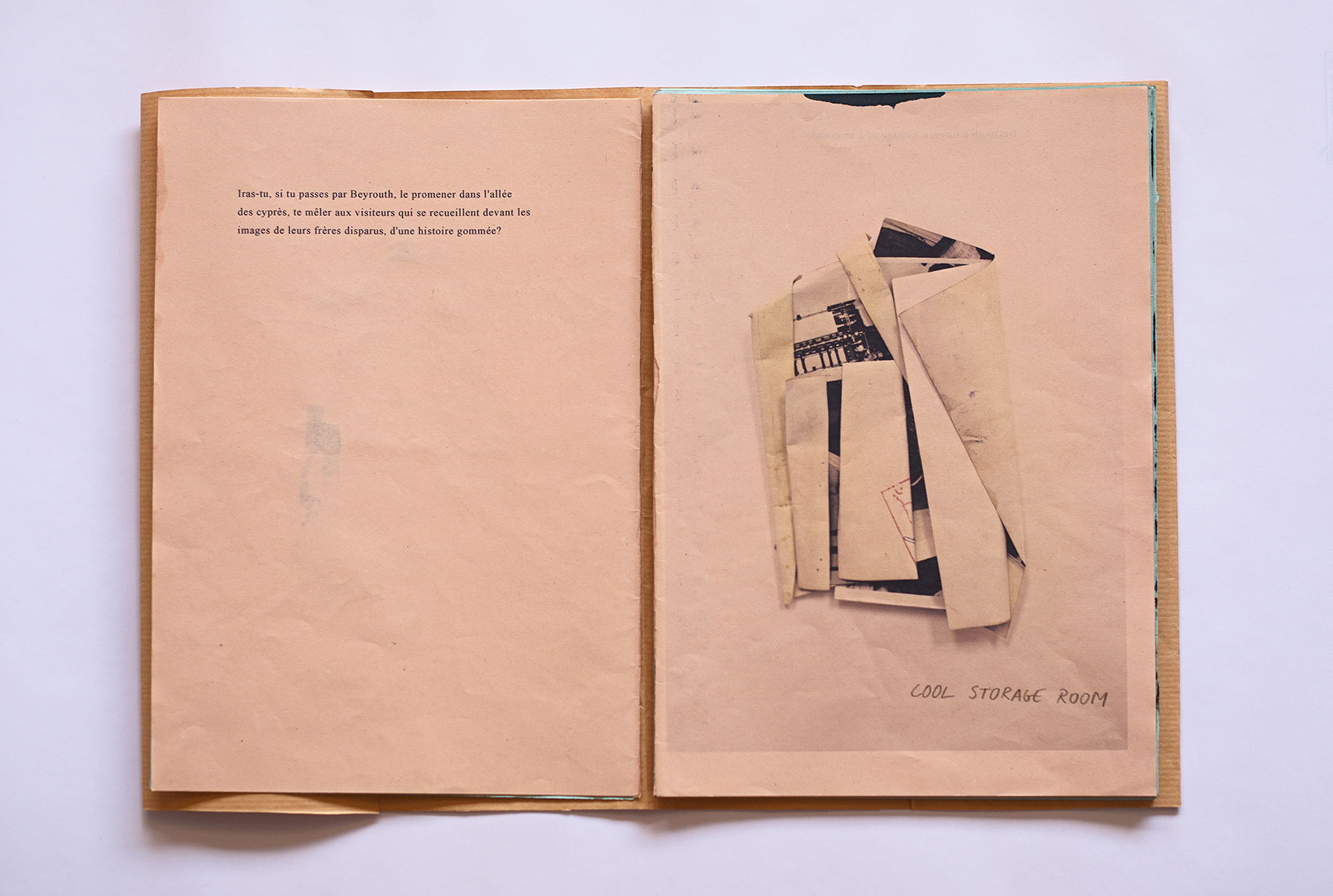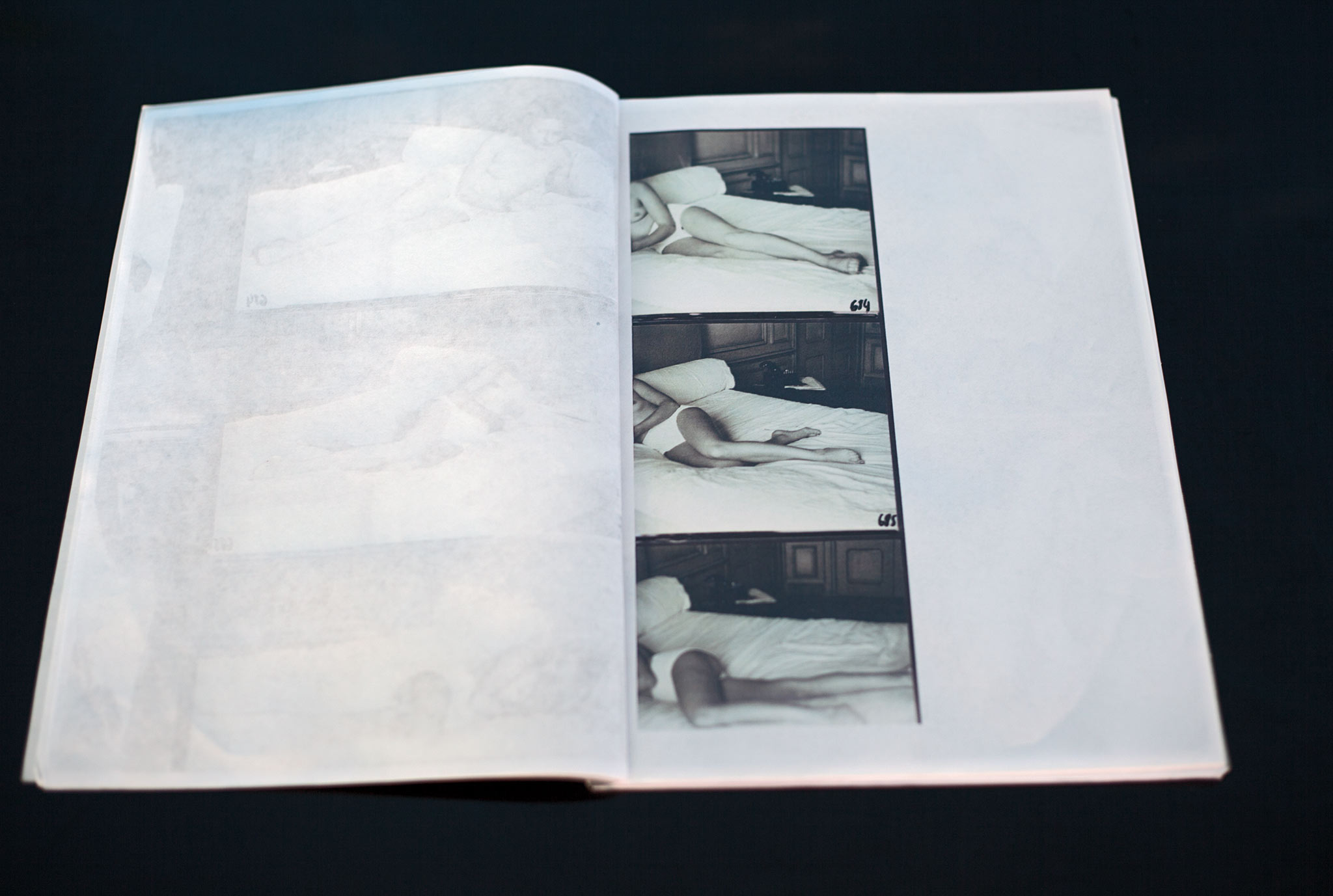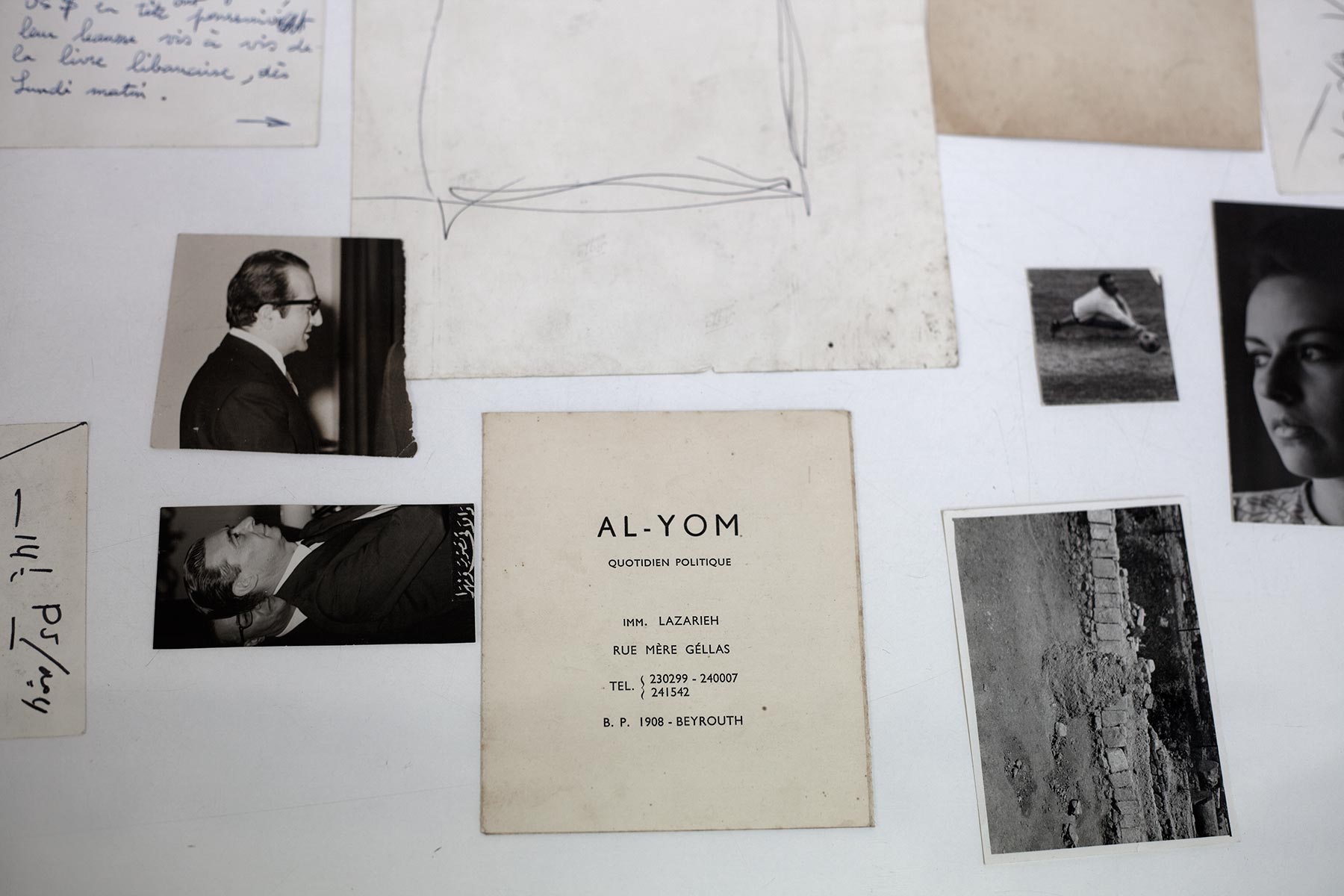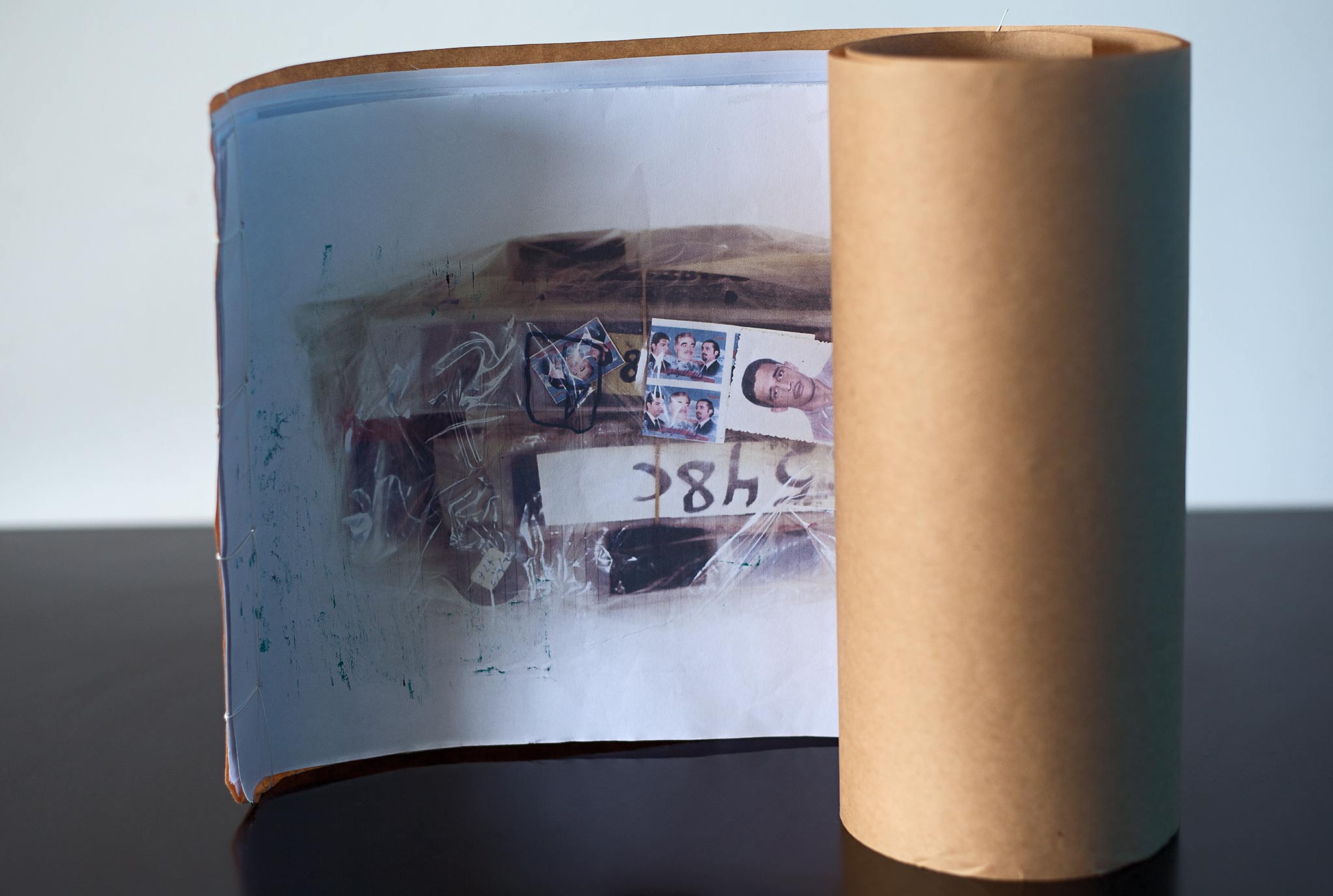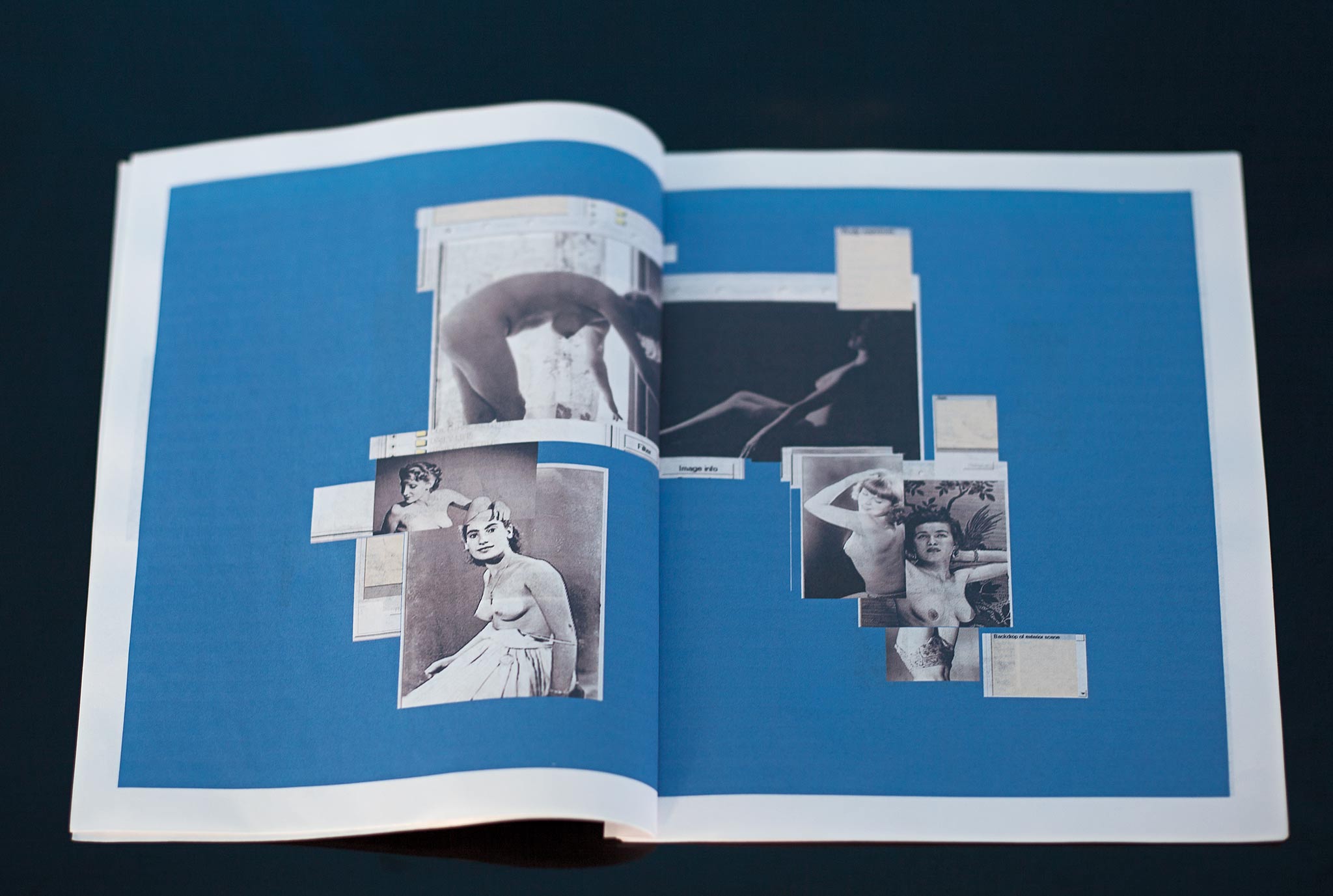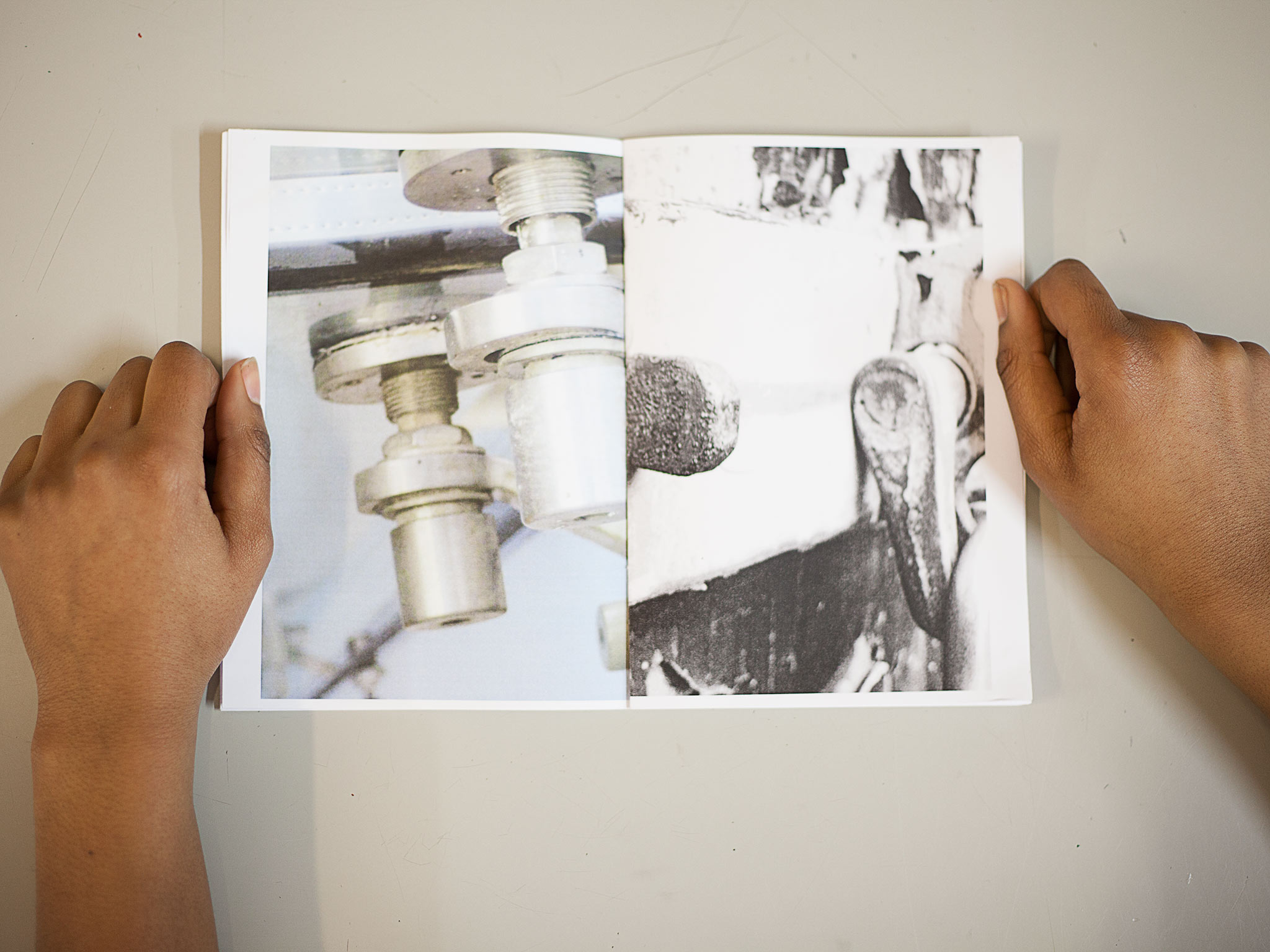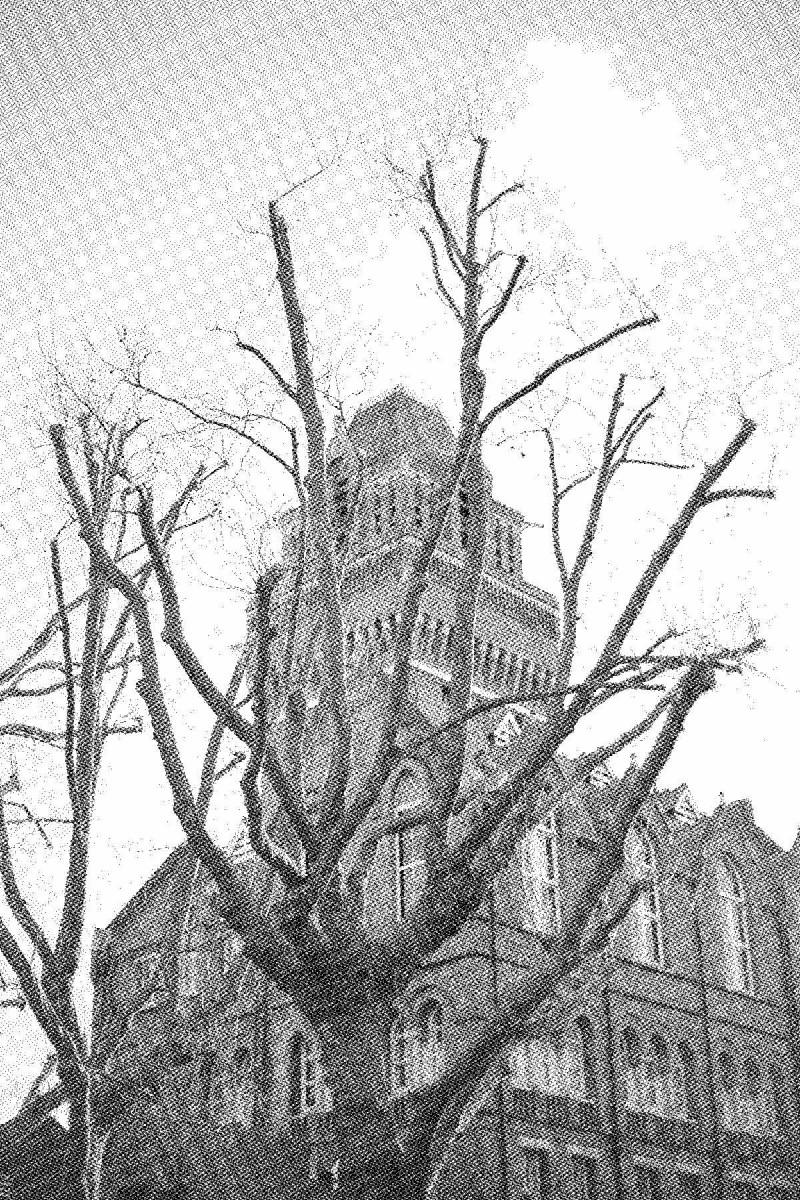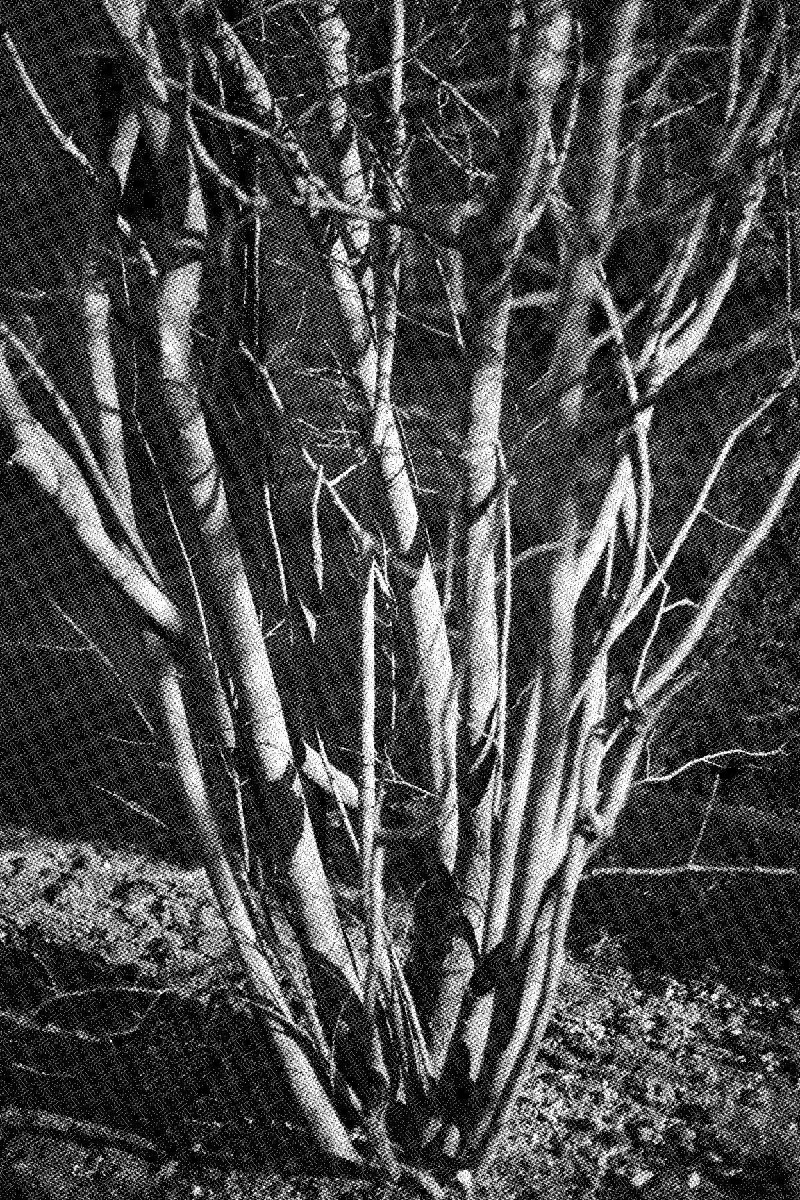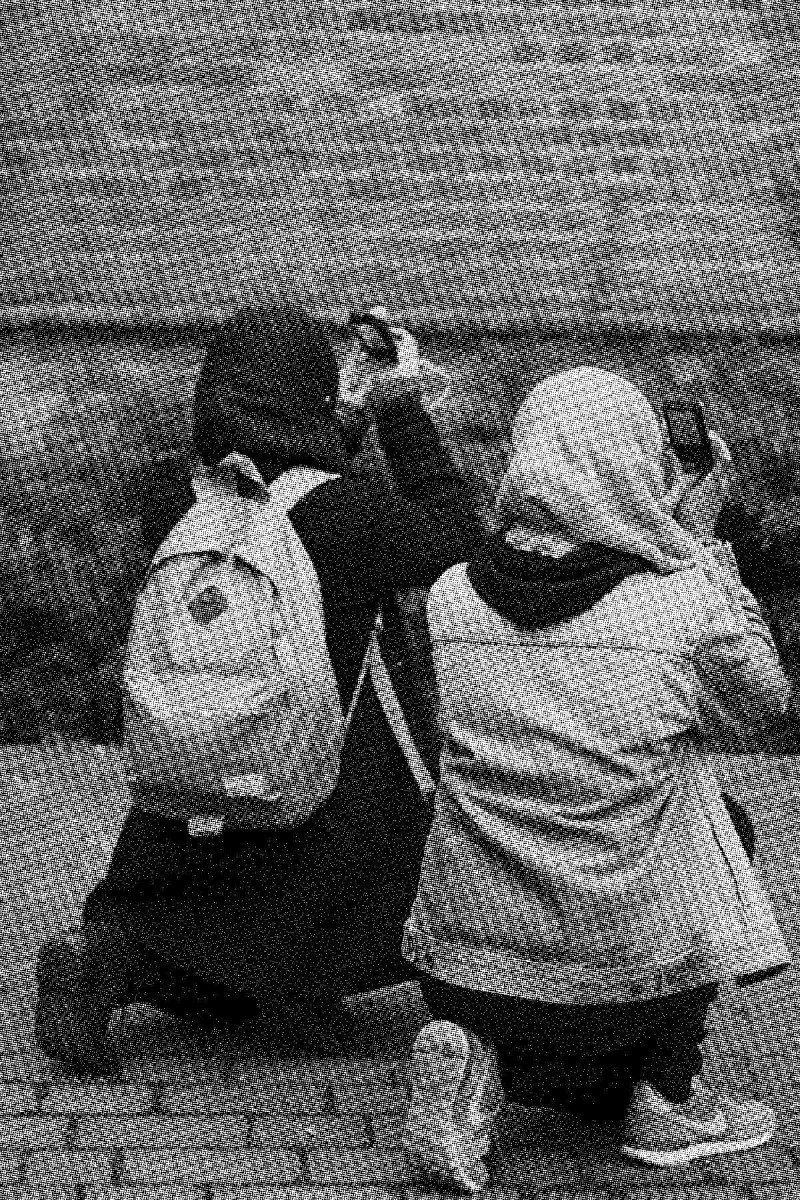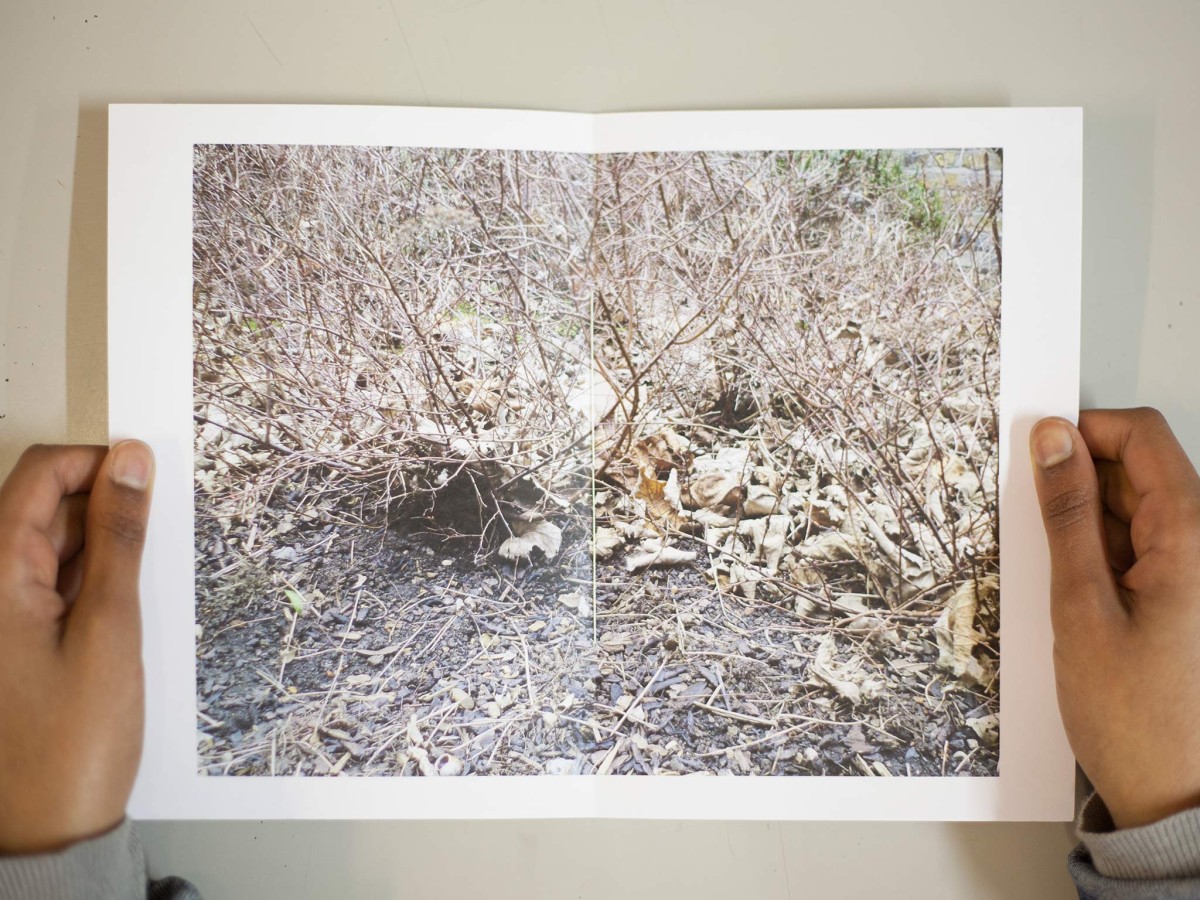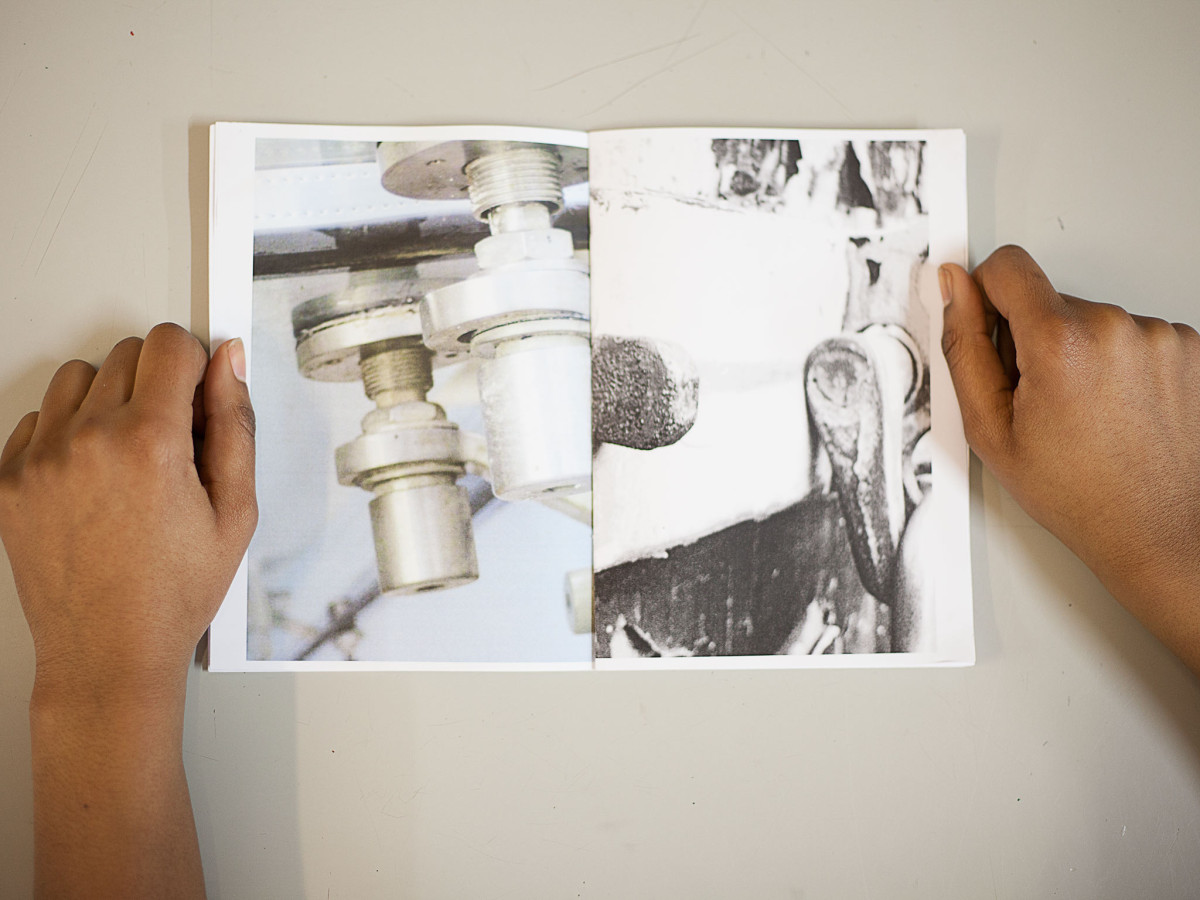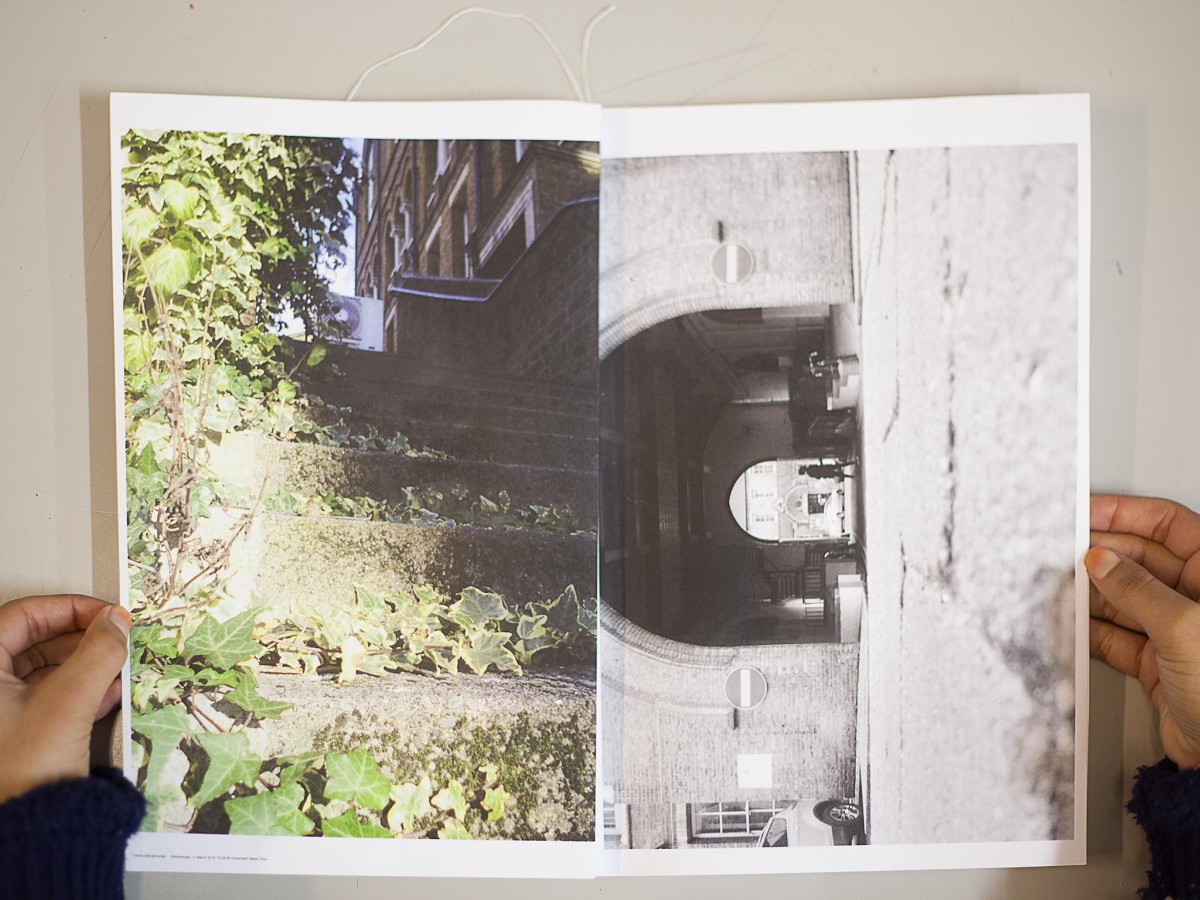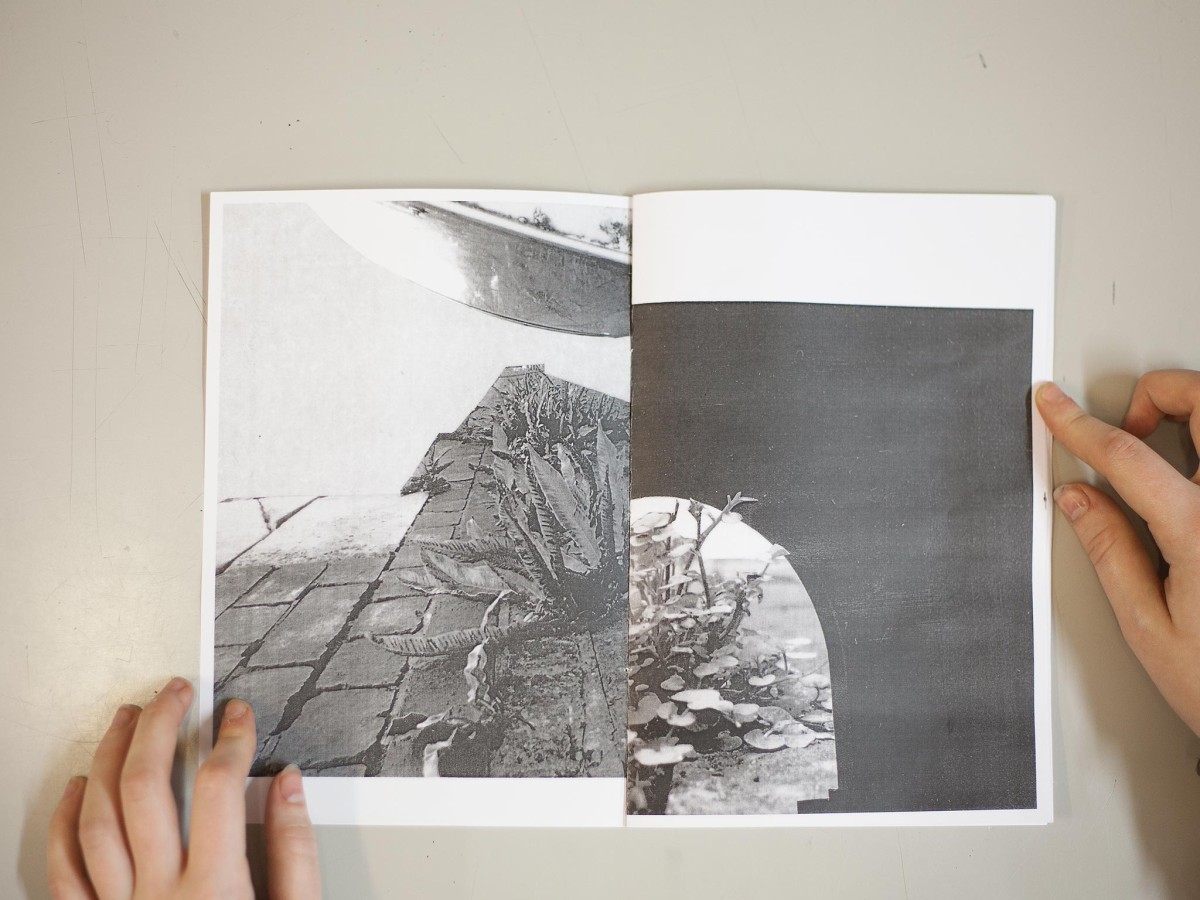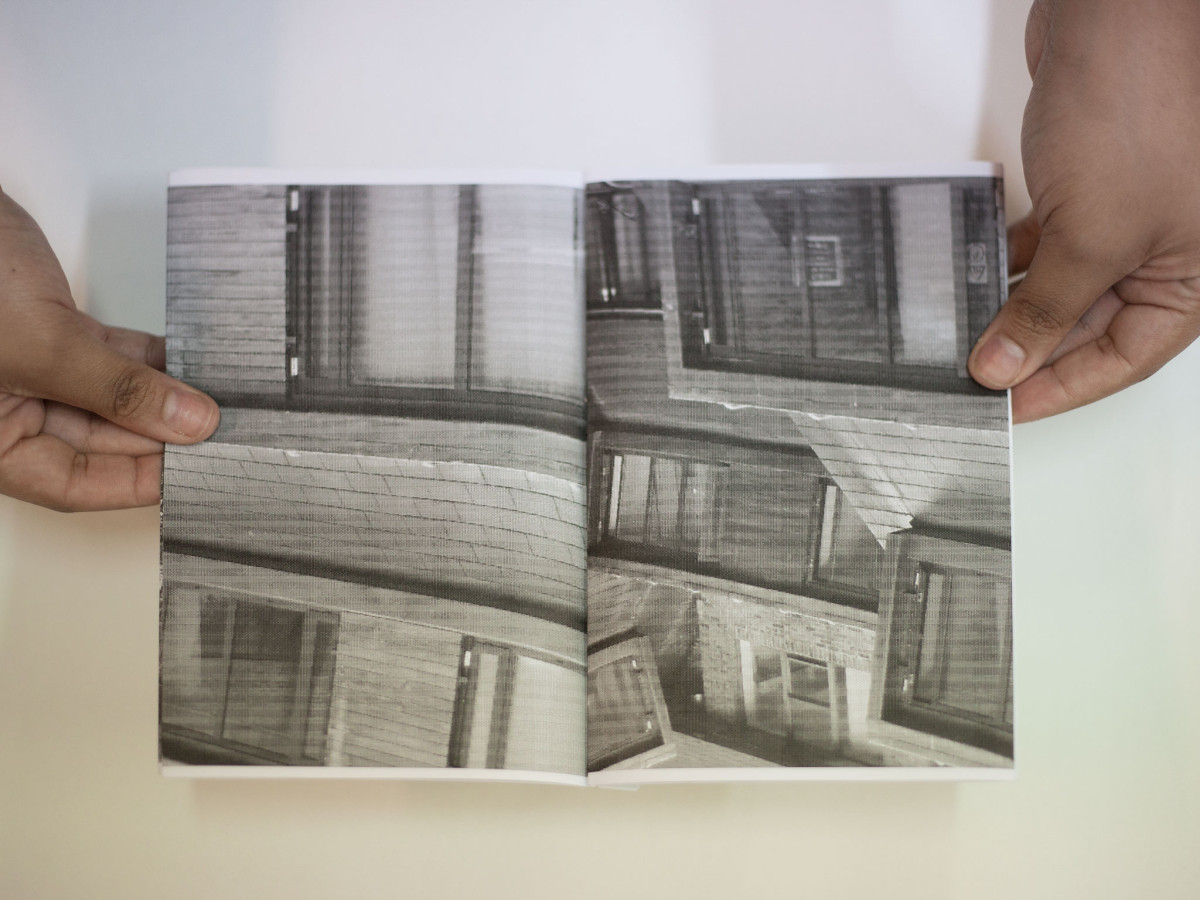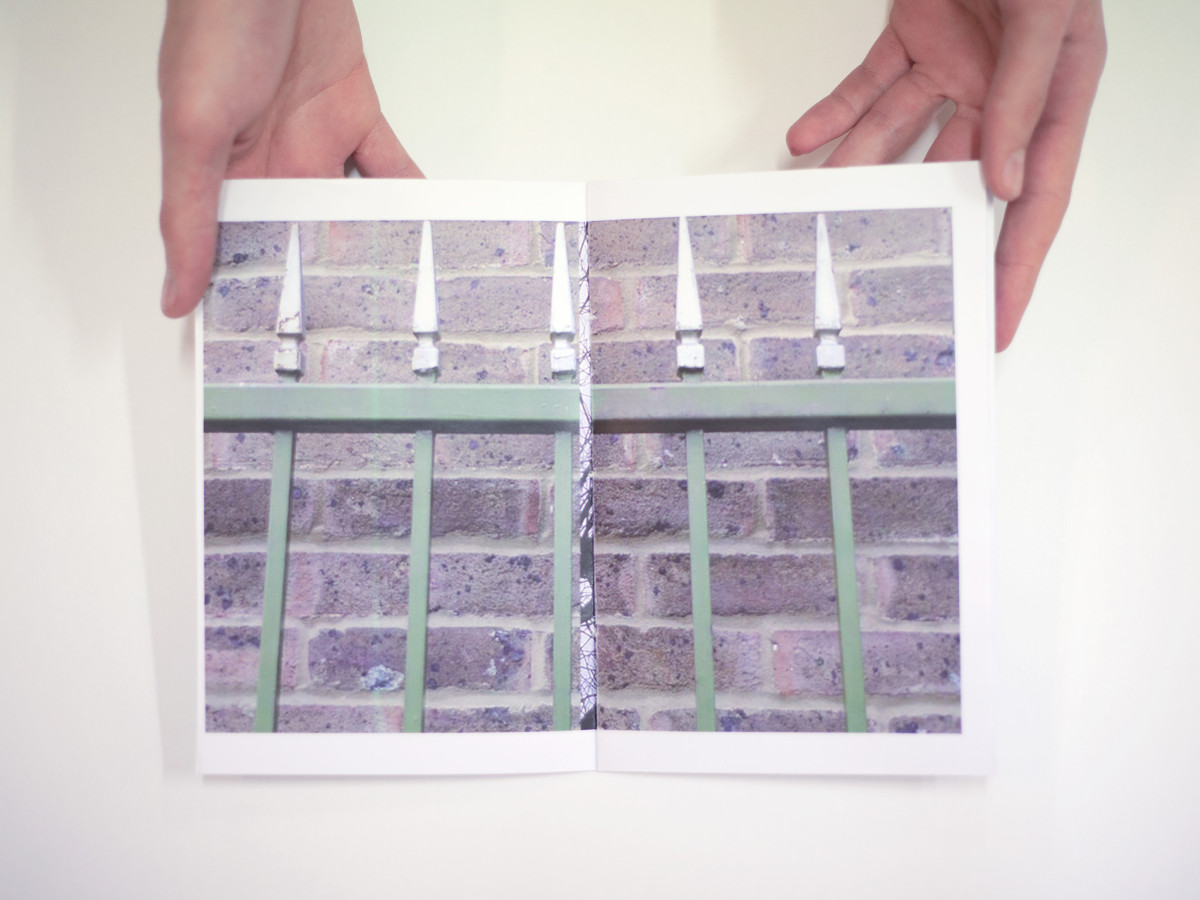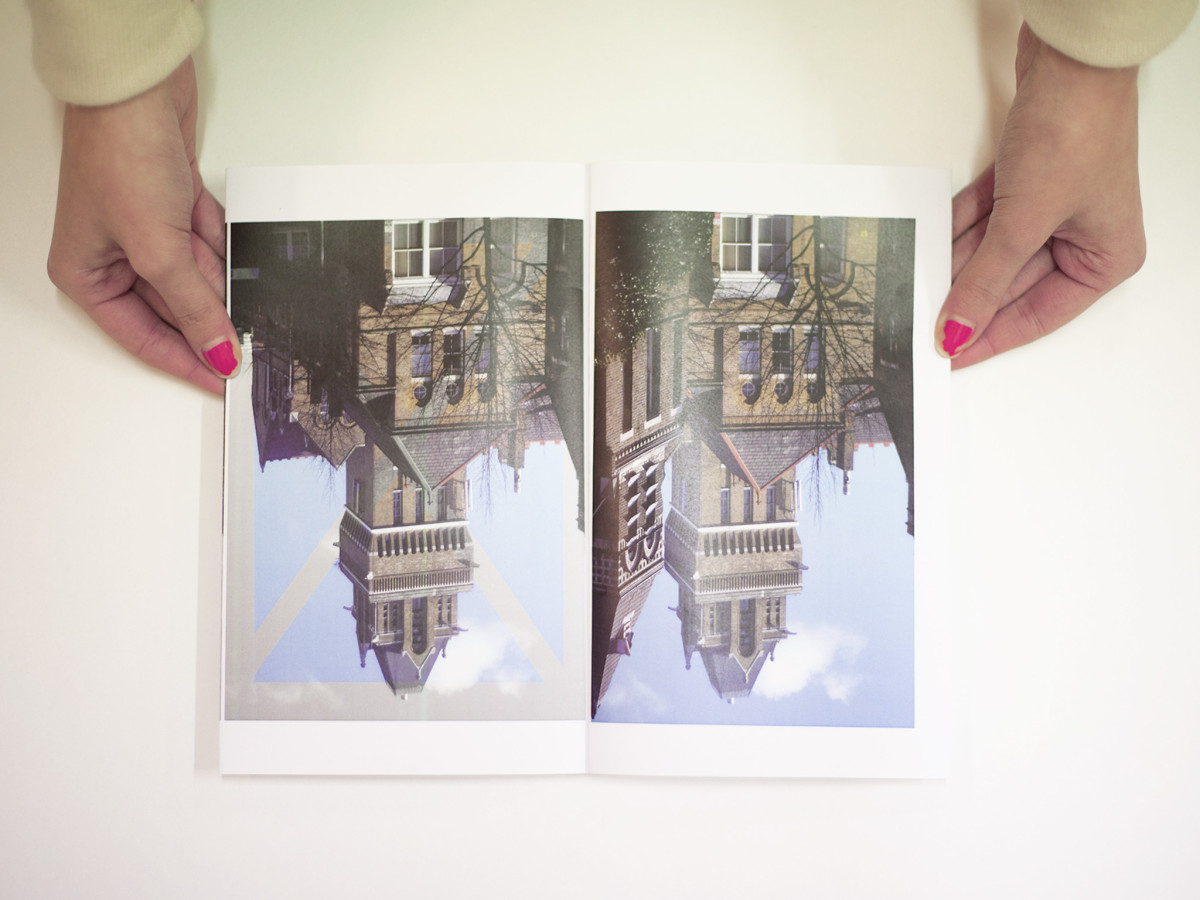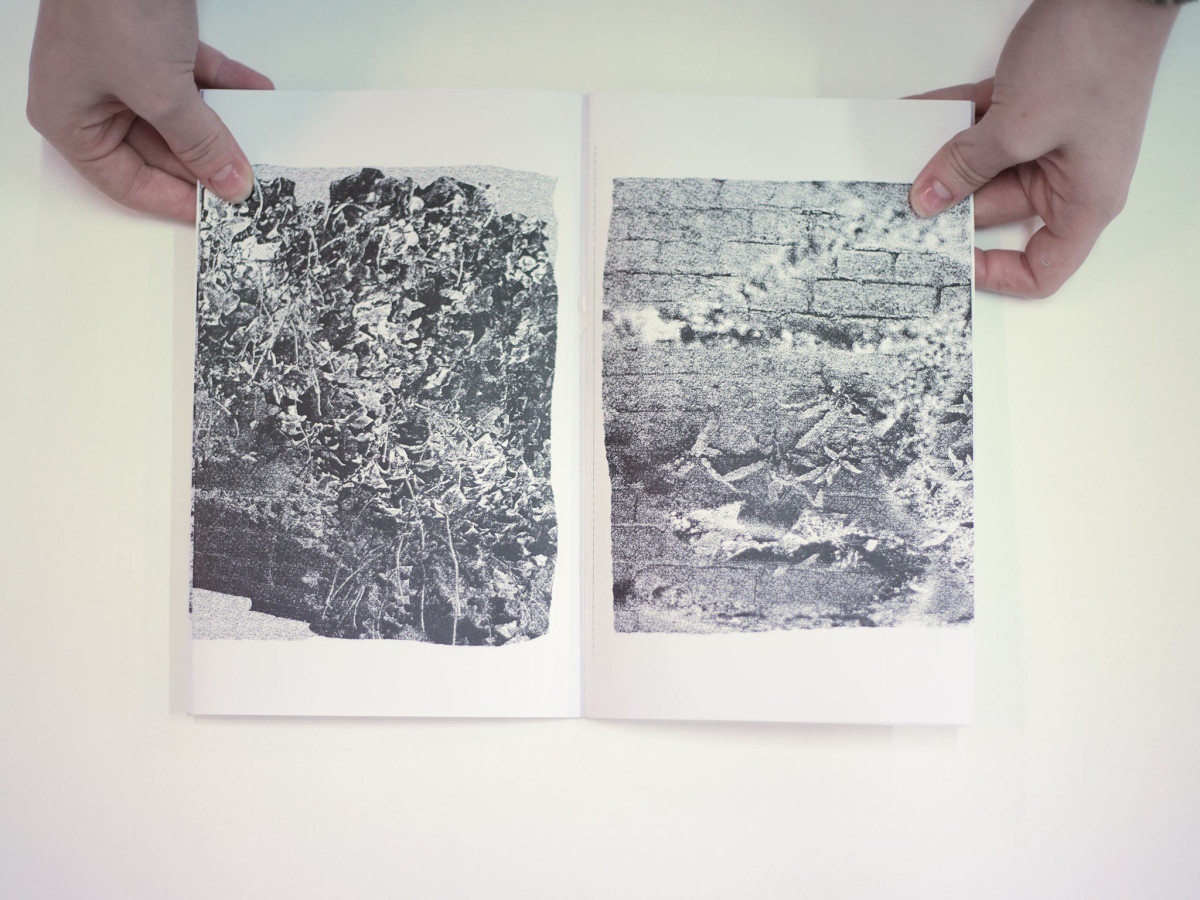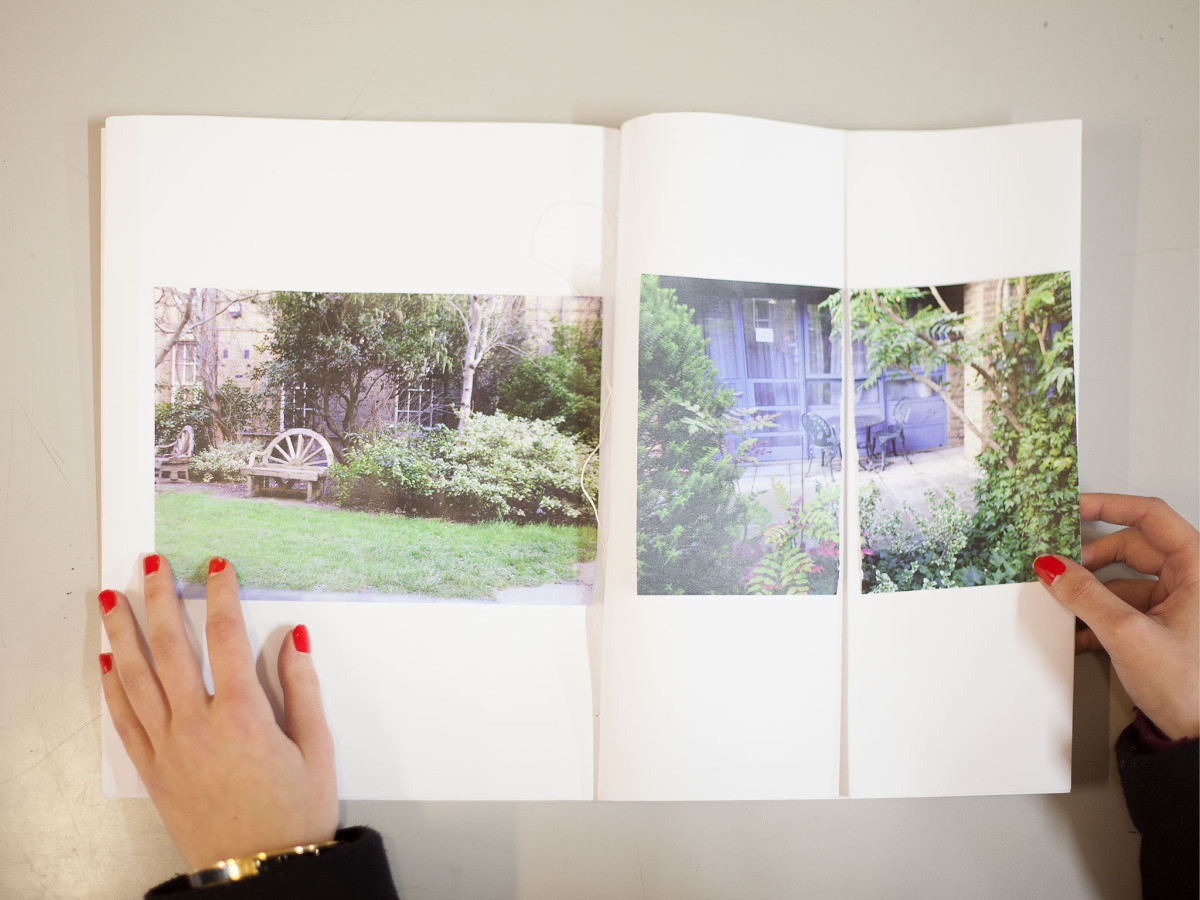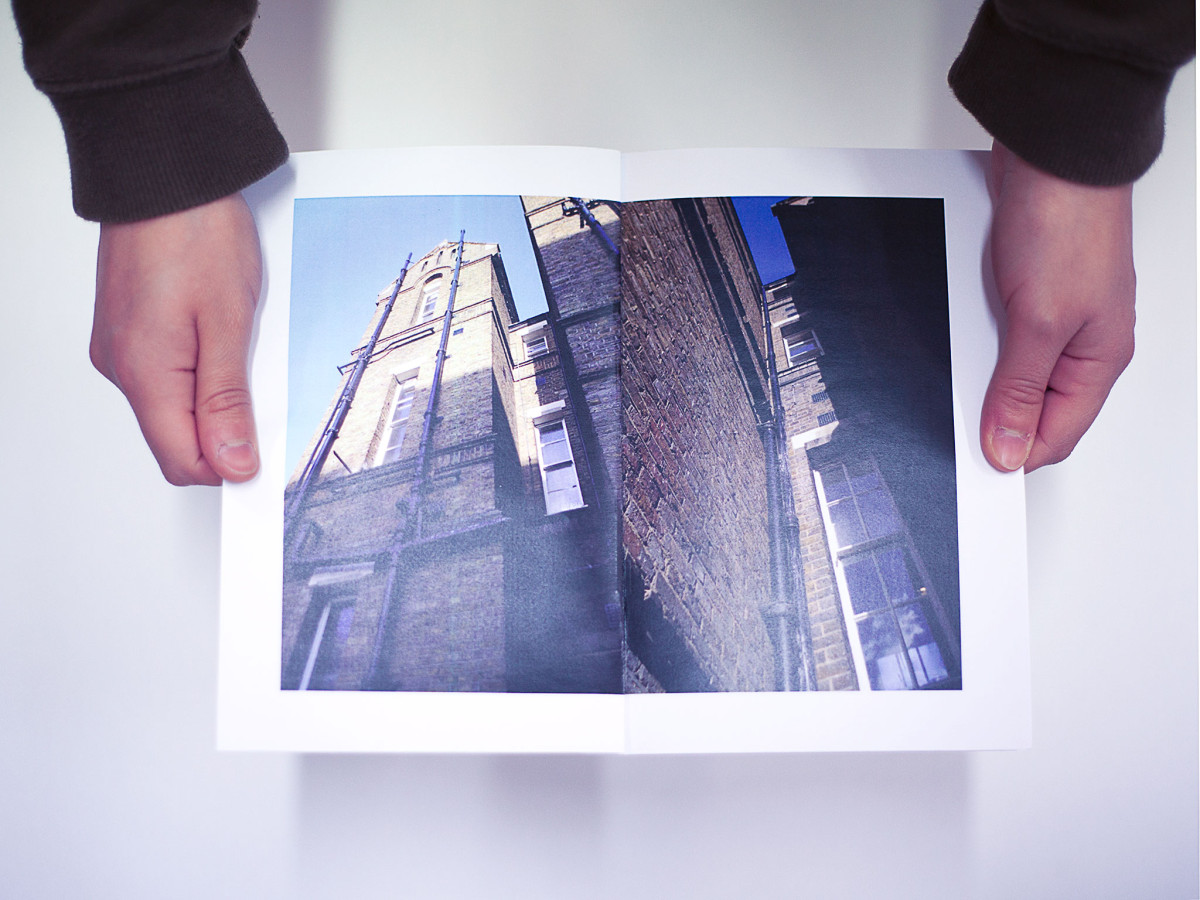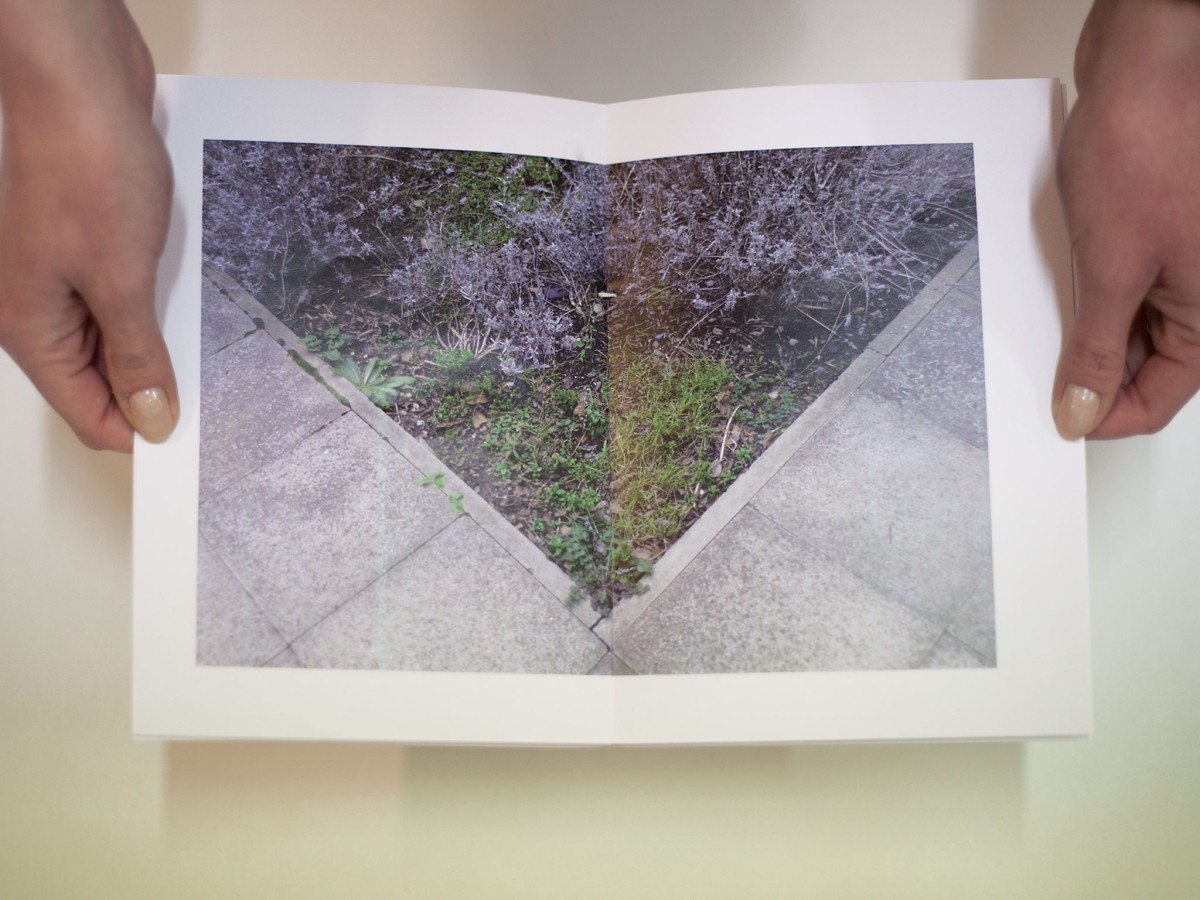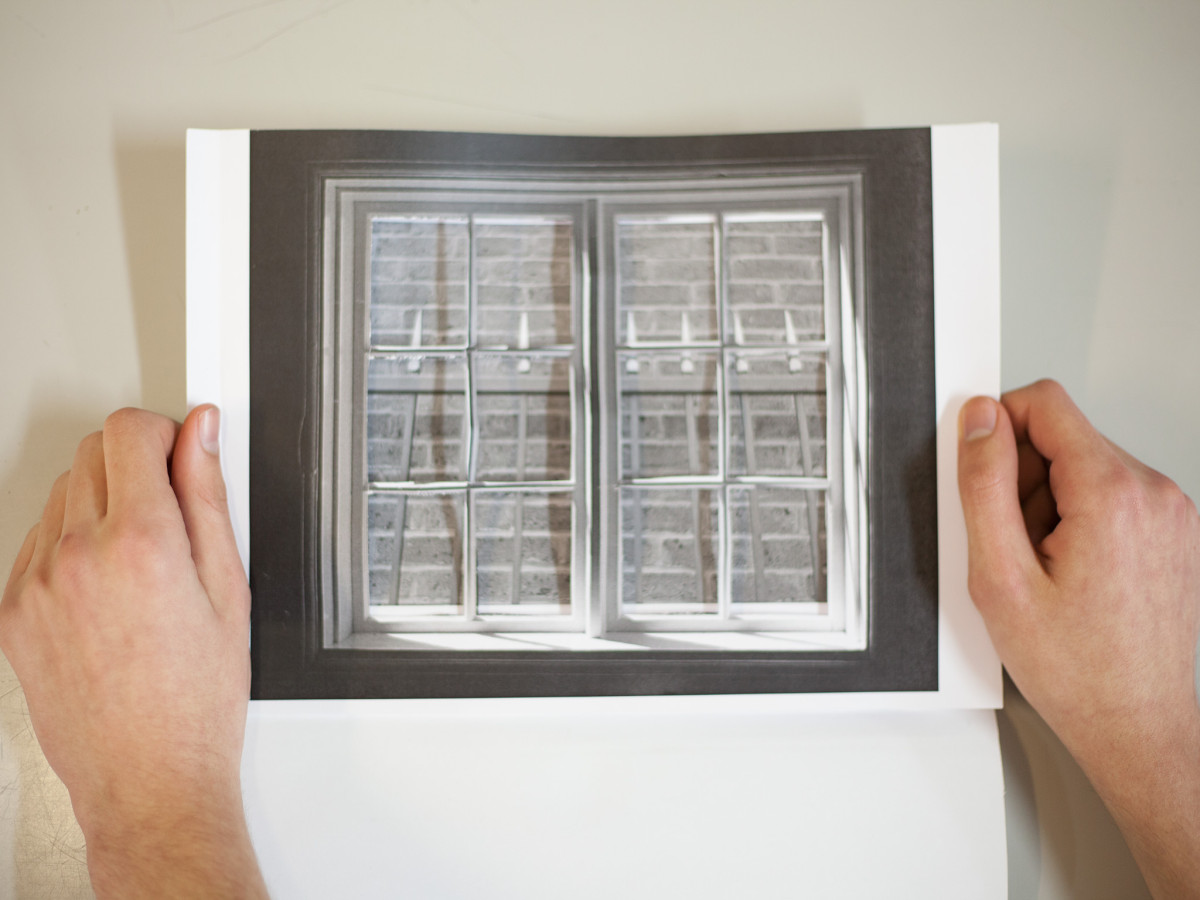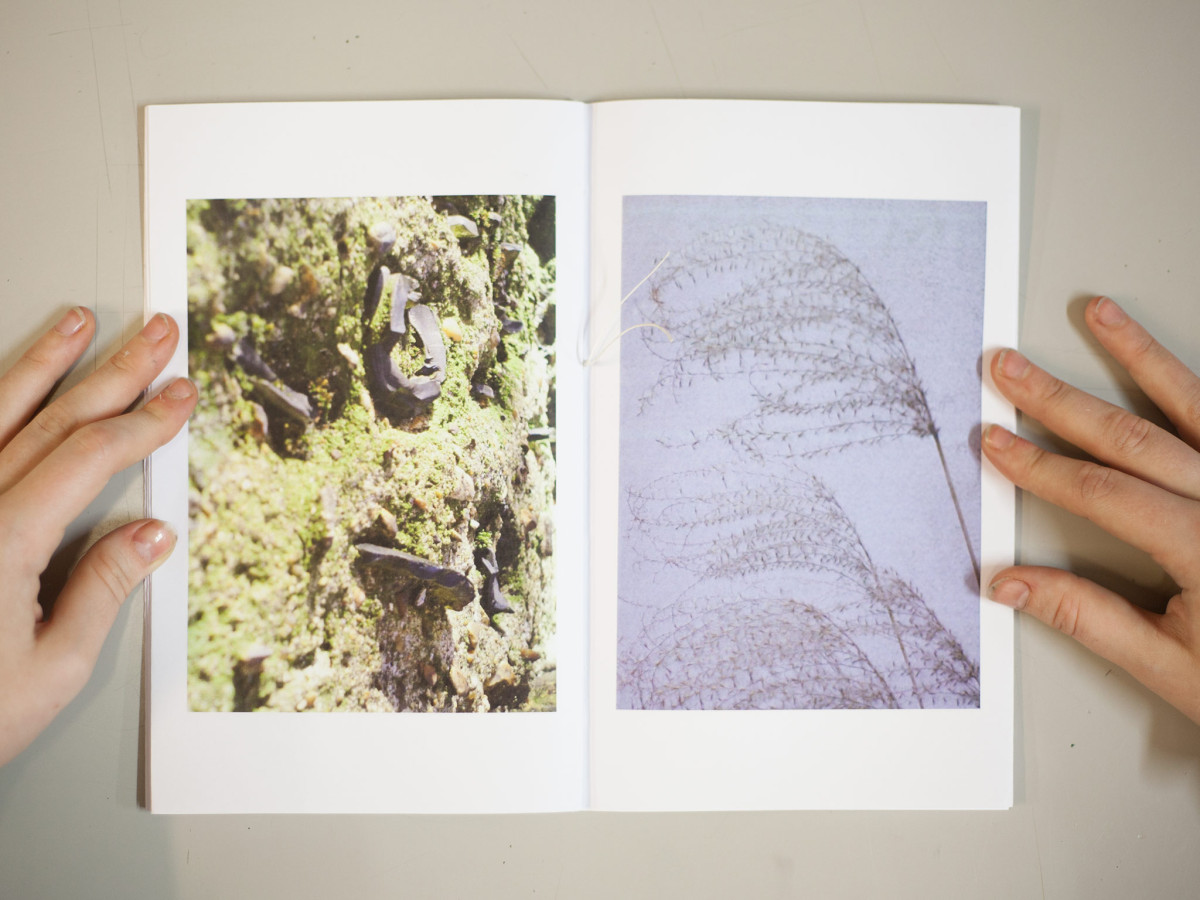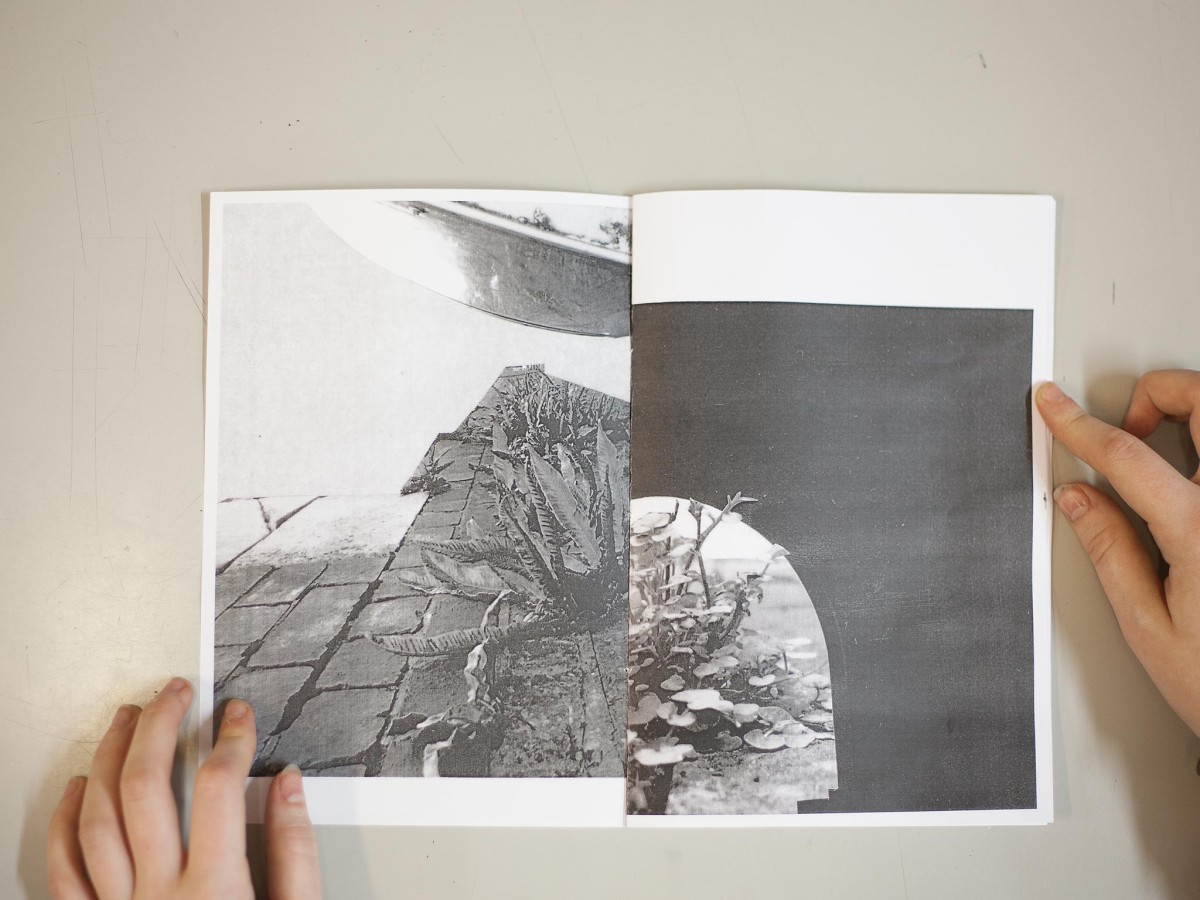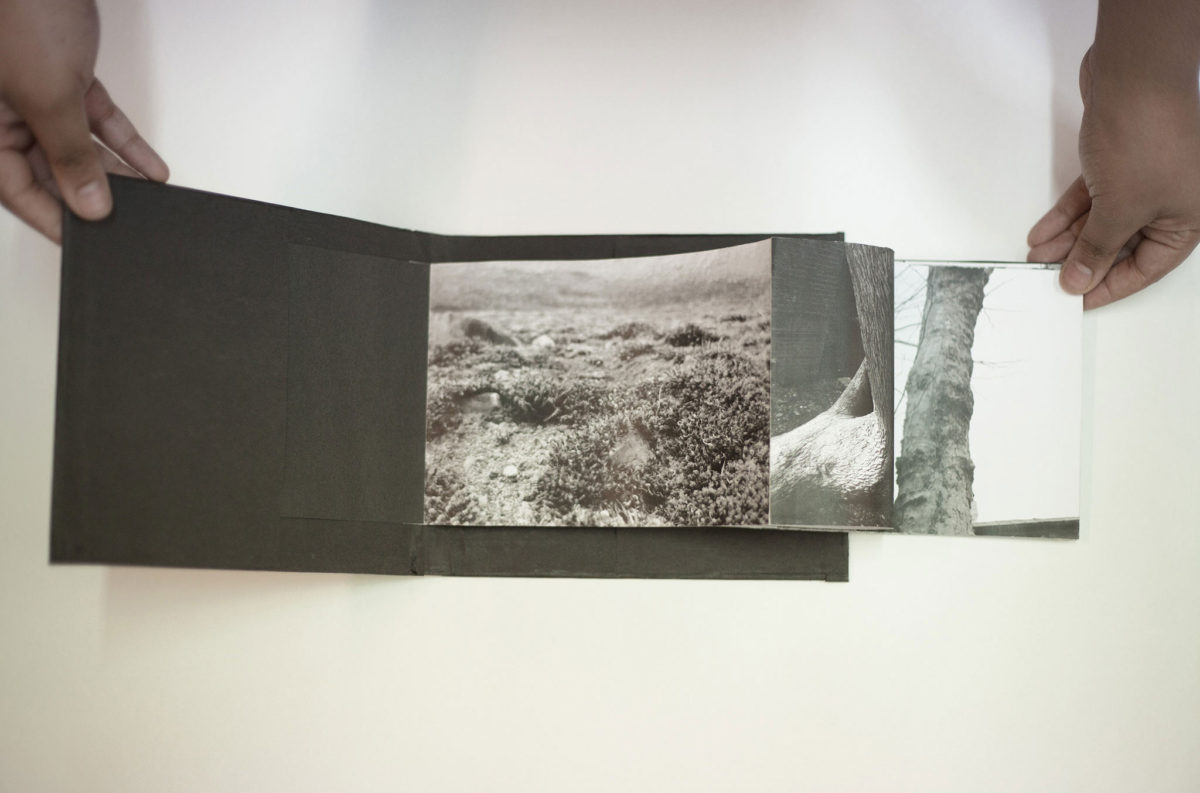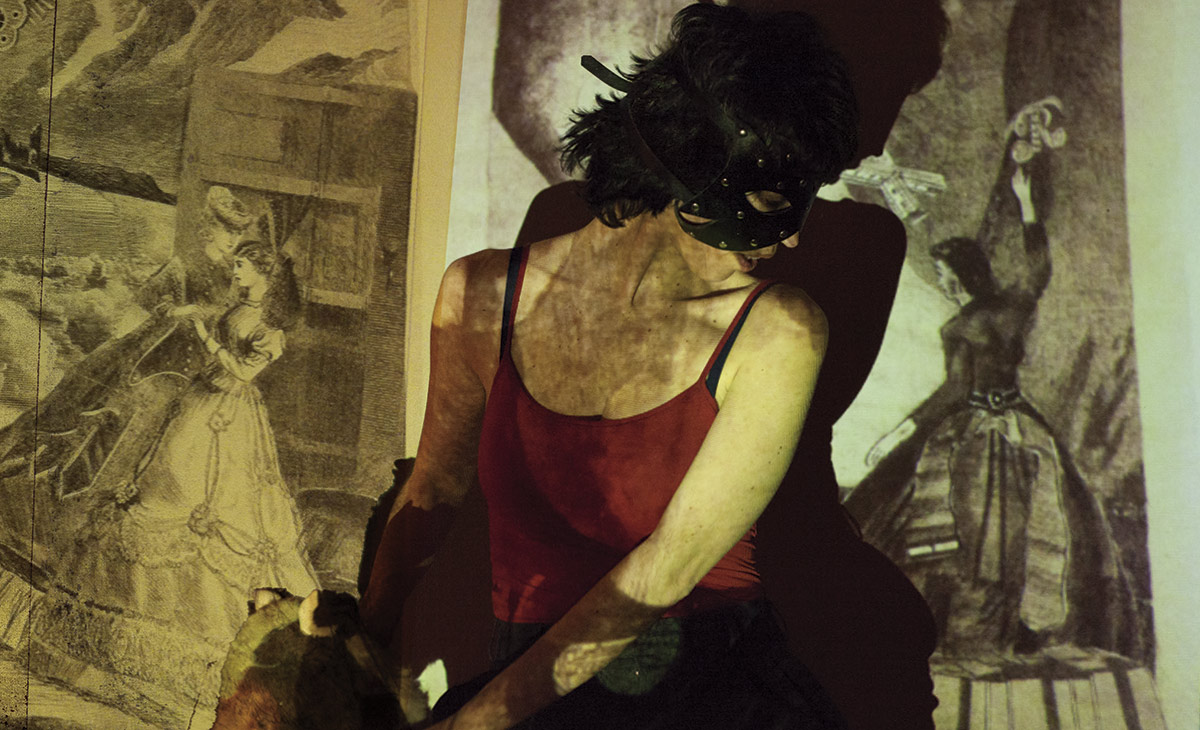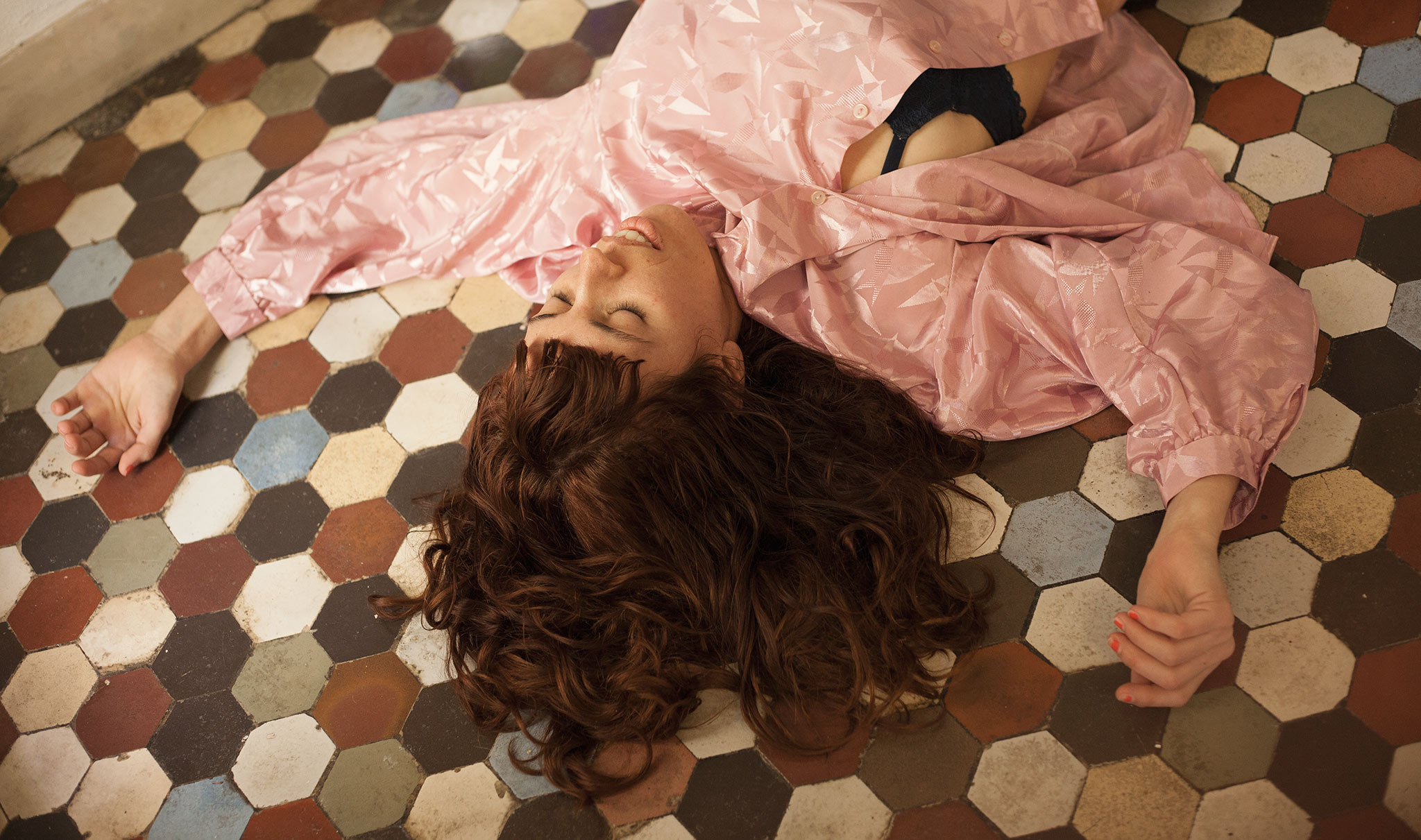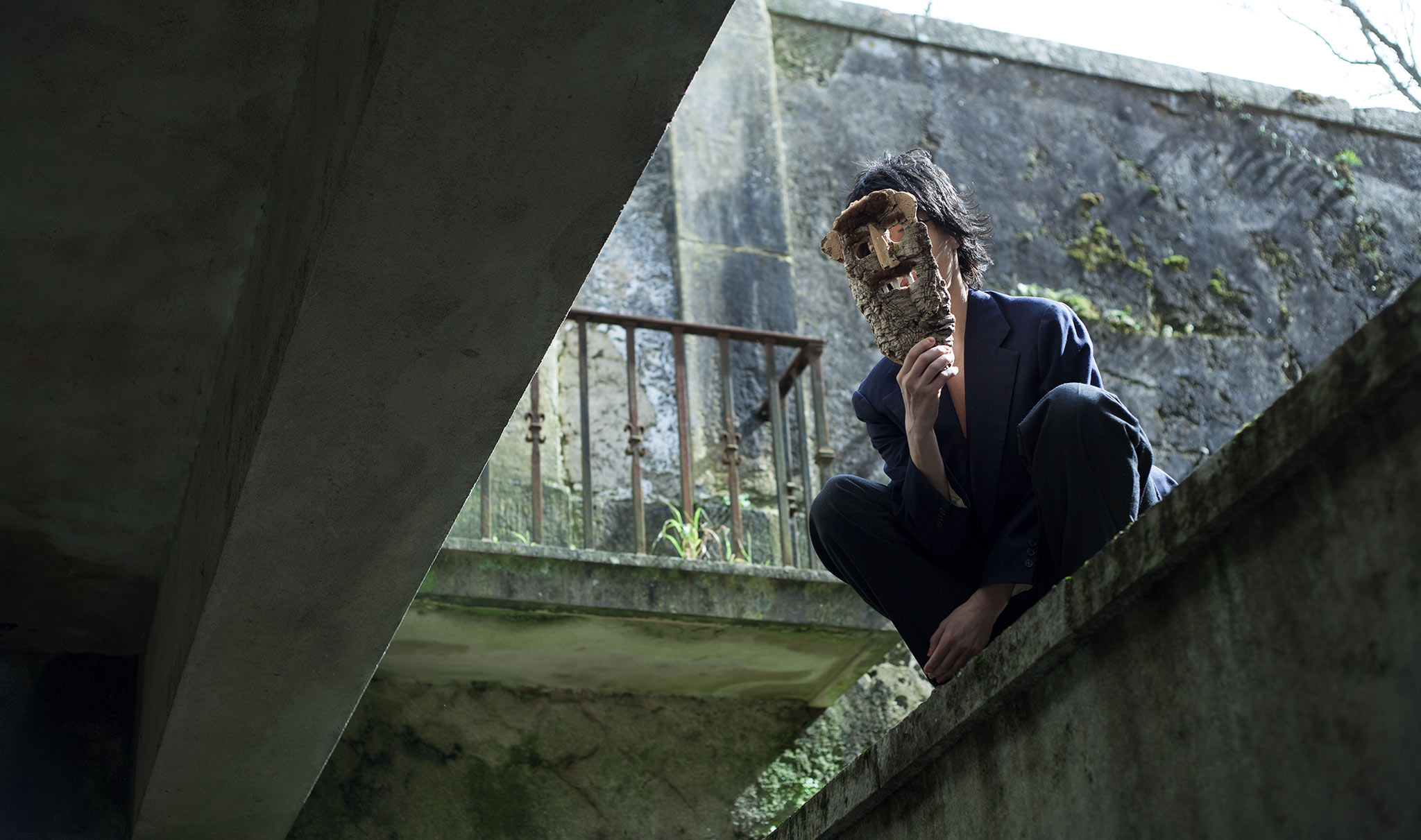paula roush, 2016
Chaos of Memories: Surviving Archives and the Ruins of History According to the Found Photo Foundation
(...) like the artists’ studios analysed by Jenny Sjöholm (11) my studio can be seen as an experimental archive in itself, with all types of collected objects being taken out and incorporated into installations set-ups, silkscreen prints, photozines and other practices that translate the contents of the storage boxes into new patterns that further loose its connection to its original site of production. Thus, not surprisingly, it is frequently impossible to identify the provenance of the photographs on display in any of my installations.
11 Jenny Sjöholm, “The Art Studio As Archive: Tracing The Geography of Artistic Potentiality, Progress and Production,” Cultural Geographies 21(3, 2014), 505– 514
Publishing as Artistic Practice
Publishing as Artistic Practice: msdm publications. Participatory skill share and talk. Conjunction Event from The Fish Factory, Penryn and CMR Project Space, Redruth organised by Alice Mahoney and Rose Hatcher. CMR Cornwall Media Resource, Redruth
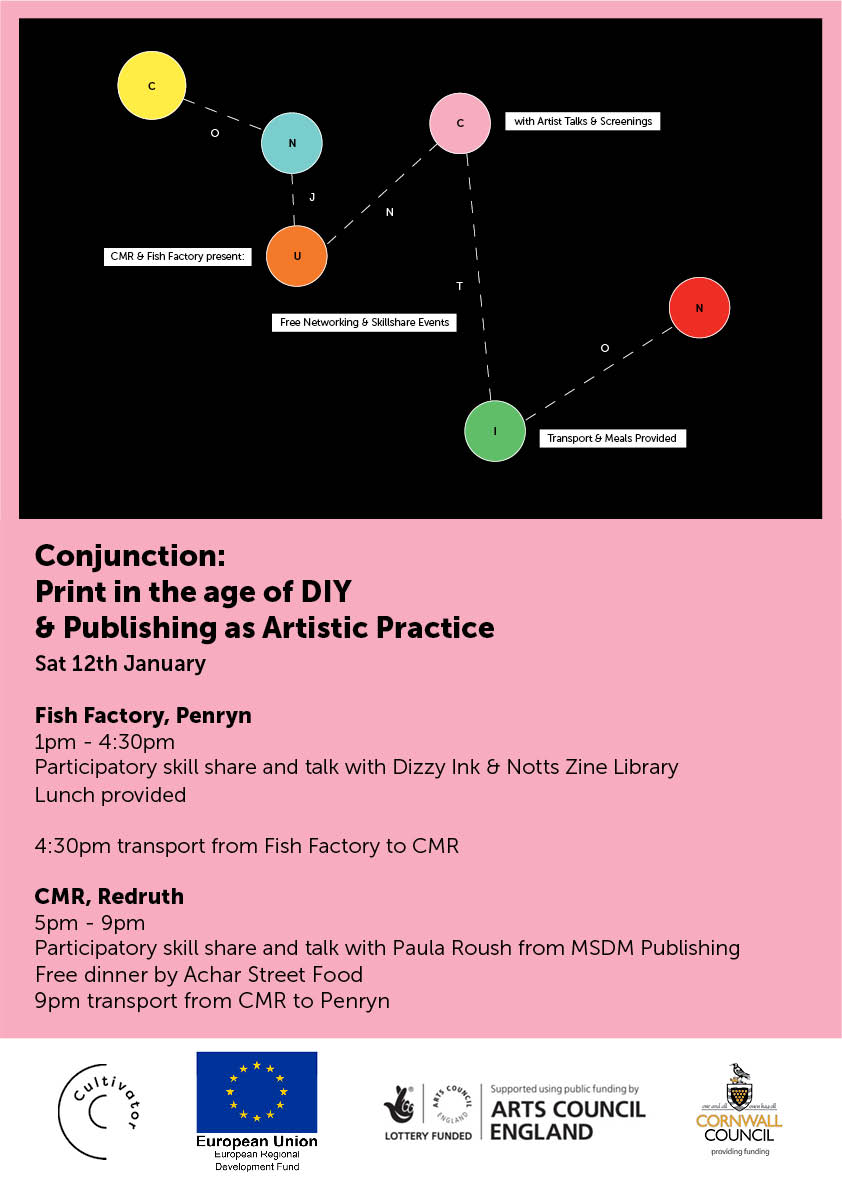
A UCA Research funded programme and enquiry into the notion of the artist book. It composed of an international artist book and print event spread over two venues: the Herbert Read Gallery, UCA Canterbury, and The Brewery Tap Gallery, Folkestone.
The exhibition (Unbound) featured five internationally acclaimed artists including paula roush/msdm.
Photobook medium
Established as an imprint of the msdm studio, “msdm publications” aim to create a small-scale model of photobook publishing, encompassing photographic practice and book art processes. Projects are guided by artistic research and investigation of the photobook medium. This allied to bespoke hand-made editions—in these days of automated print on demand— makes for a distinctive approach to photobook publishing.
Exhibition
Curatorial projects include exhibitions, publications and performances exploring photobook art.
ə/h/-books and photobook pop-up are two parallel programmes of exhibitions, artists’ talks and publications developed in collaboration with Photography and Photobook learning at the London South Bank University.
Education
Represented in public artists’ books collections worldwide, msdm publications are accessed by a broader audience and used as educational resources for students and researchers of photobook art.
A wide-range of presentations, from hands-on workshops to lectures about photobook publishing history and practices, hosted on msdm studio and at partner sites.
Arts Llibre Workshop ESDA LLotja Barcelona
Post-digital Publishing and Story-telling in the Photobook,
KHiO National Academy of the Arts Oslo
Nothing to undo: Public Lecture and School-wide publishing project
EIFE Escola Informal de Fotografia do Espectáculo / Imago Photo Festival Lisbon
Masterclass
Social publishing
Free/low-cost photobook making workshops support art and humanitarian organisations, working directly with their artists to document, exhibit and publish their photographic archives, including work placement opportunities for photography students.
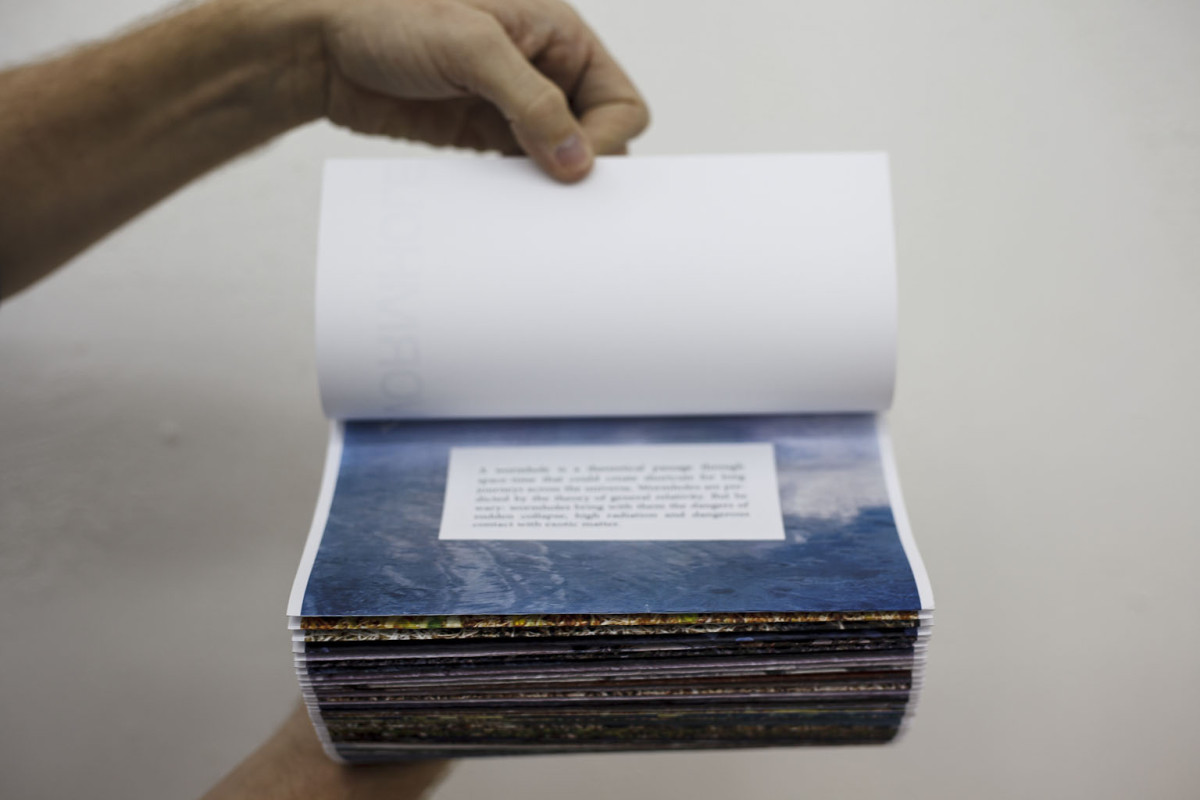
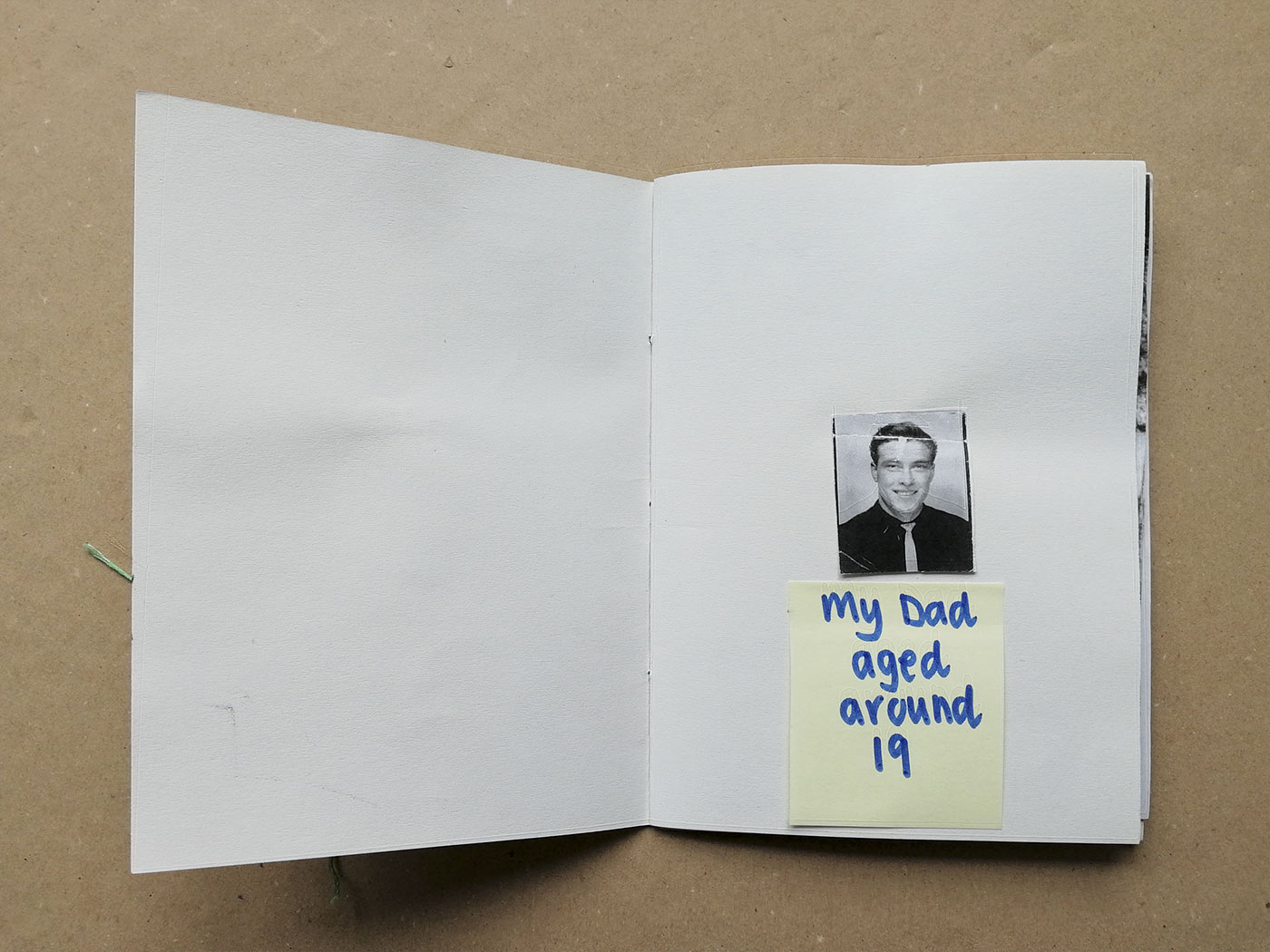
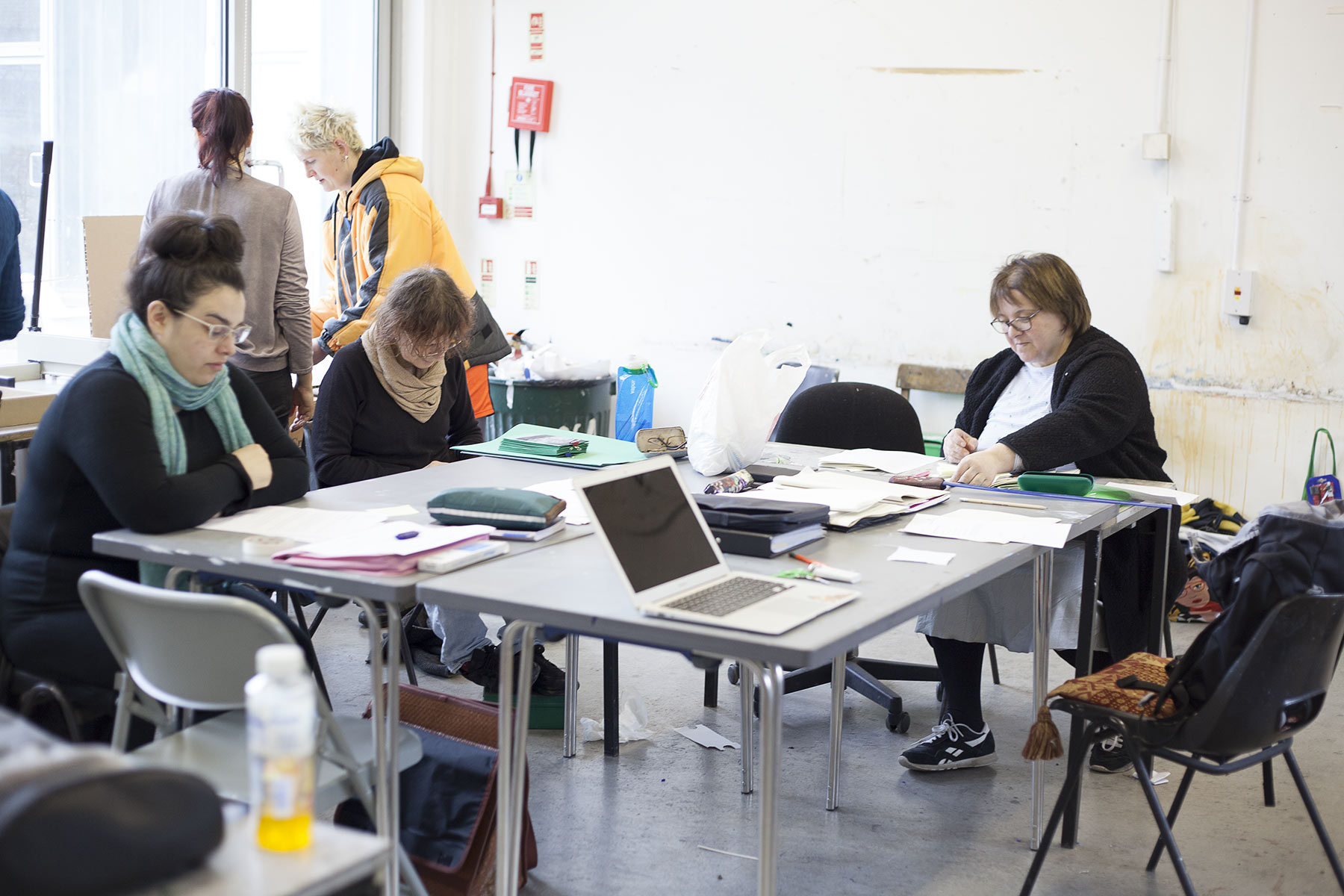
Collaborations:
Lisbon Photobook Fair—
Page-turner workshops
V&A Academy—
Page-turner and the archive
CMR Project Space Cornwall—
Publishing as Artistic Practice
HS projects—
Open books: artists newspapers and QR codes.
198 Contemporary Arts & Learning Gallery, London—
Dreaming Through: Self-publishing for artists and educators
Collage photoworks
xerox photographs with construction bricks and archival cotton tying tape
printed on newsprint paper
38 cm x 29 cm
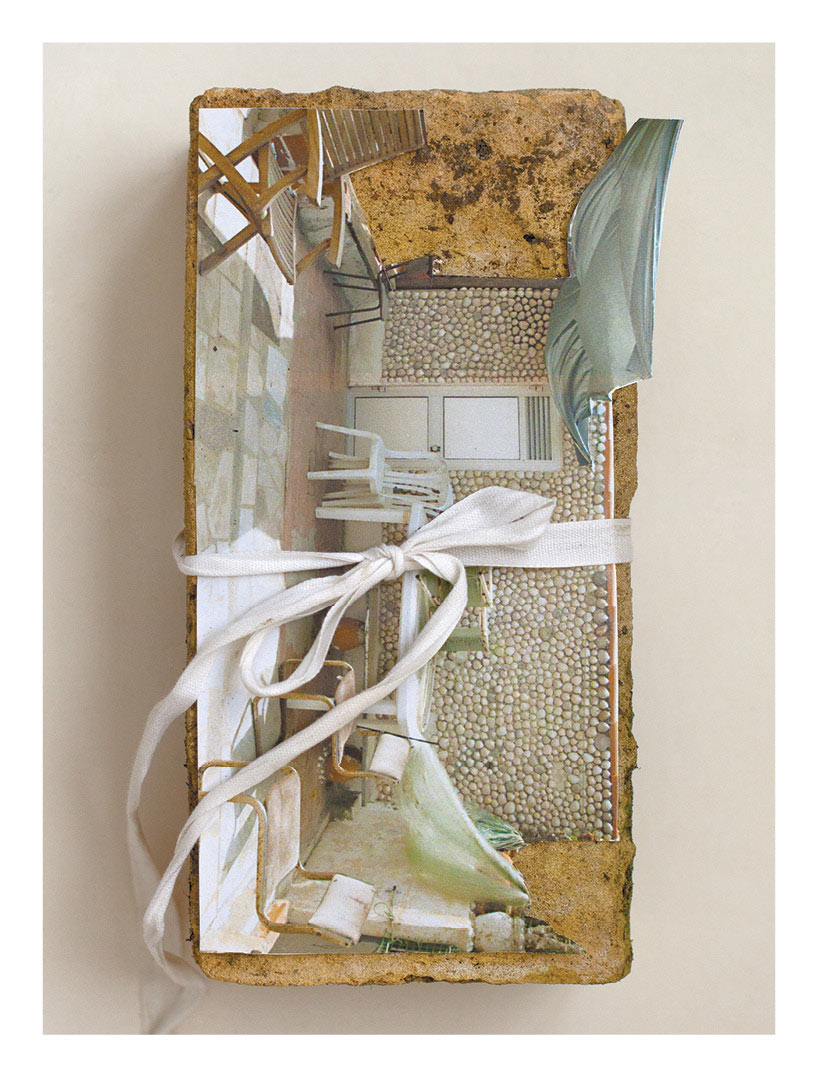
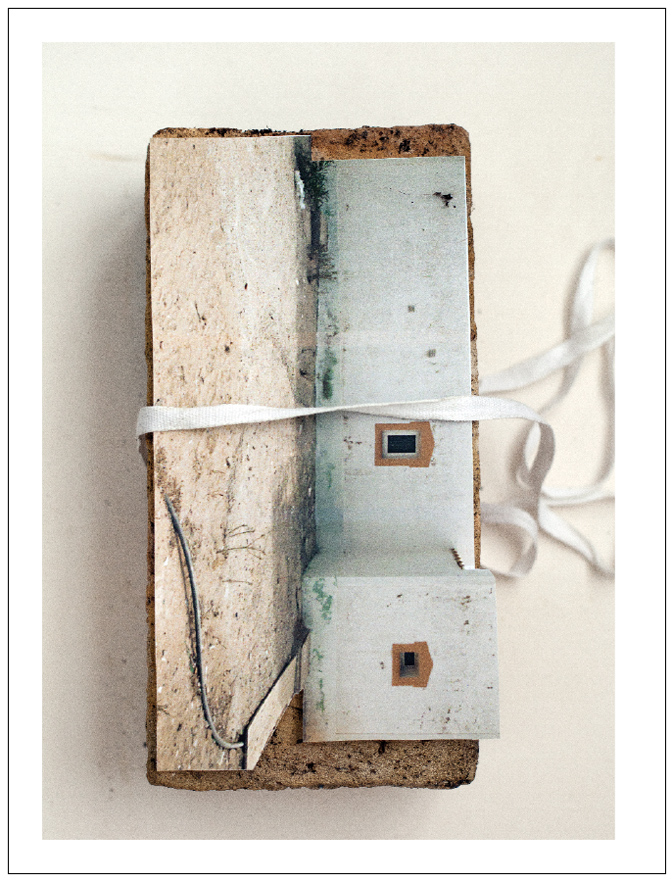
Newspaper work
The past persists in the present in the form of a dream (Participatory Architectures, Memory, Revolution)
12 pages, colour, newsprint paper
29cm ×38 cm
(How to) Build Your Own Living Structures
Collage photoworks
synthetic linen inkjet prints stretched as hardcover book


Participatory Architectures (Memory, Archive, Revolution)
Installation, various dimensions
Unbound exhibition | Herbert Read Gallery, University for the Creative Arts Canterbury 2017
Participatory Architectures (Memory, Archive, Revolution)
Installation, various dimensions
Paradigm Store exhibition | Howick Place London | 2015
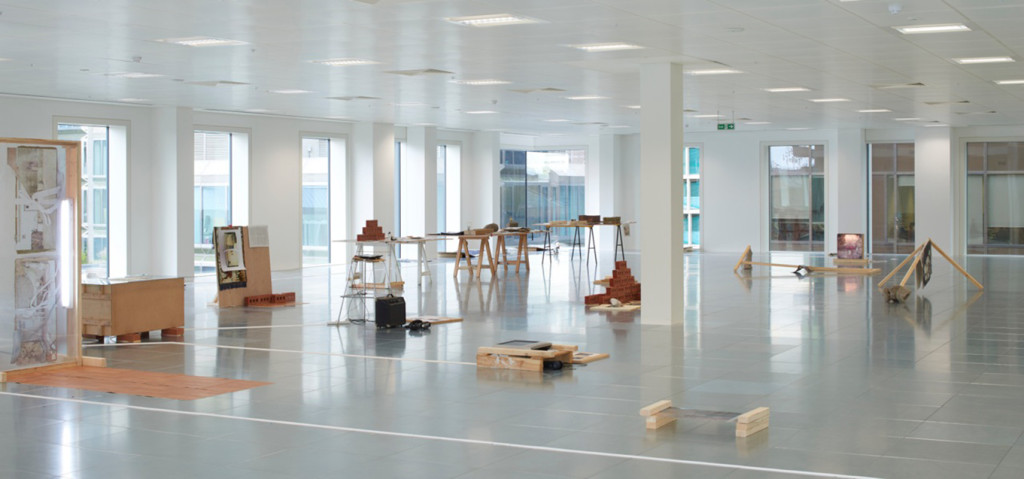
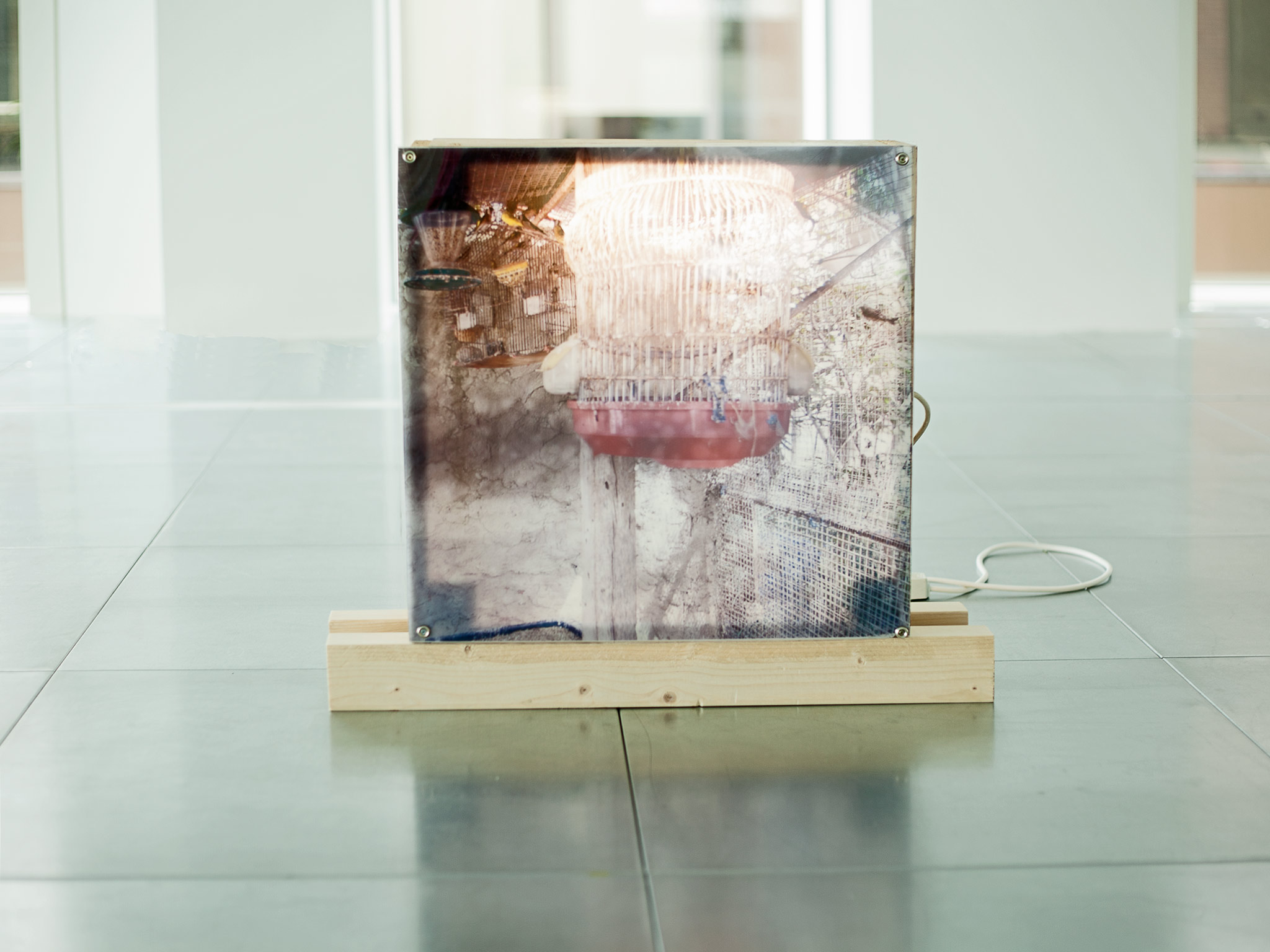
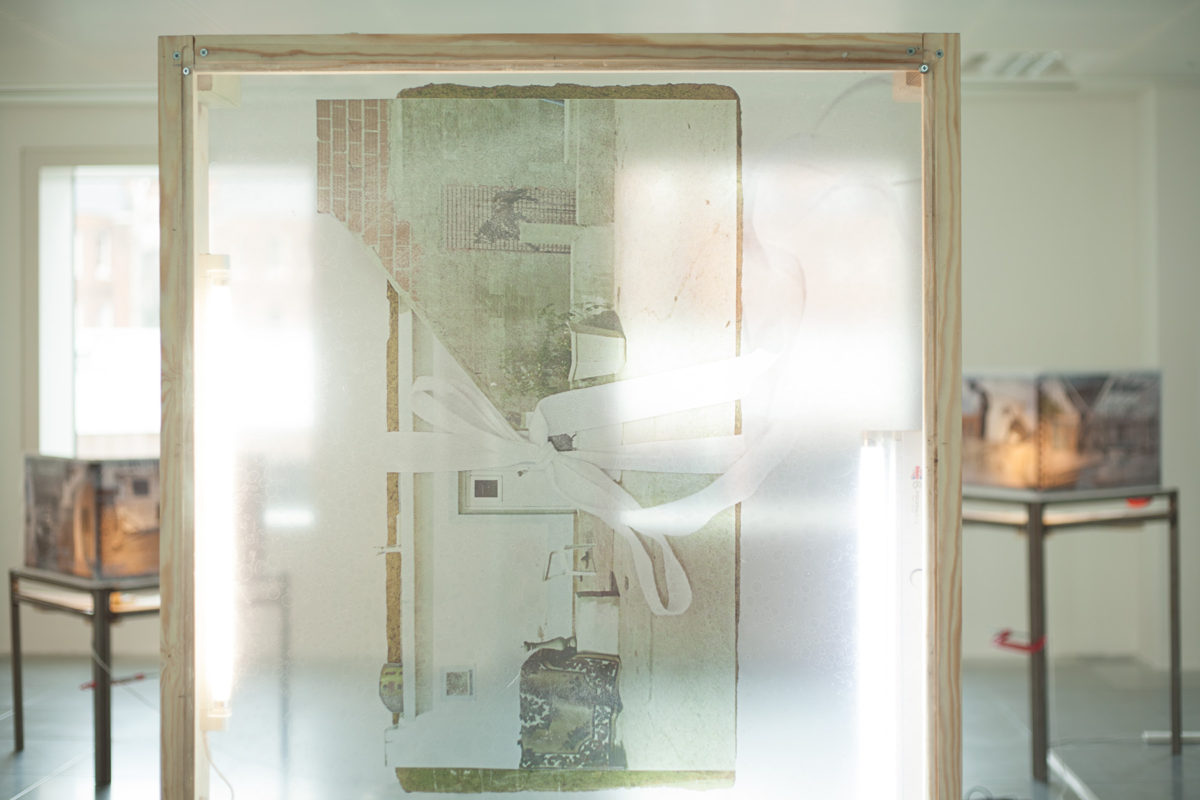
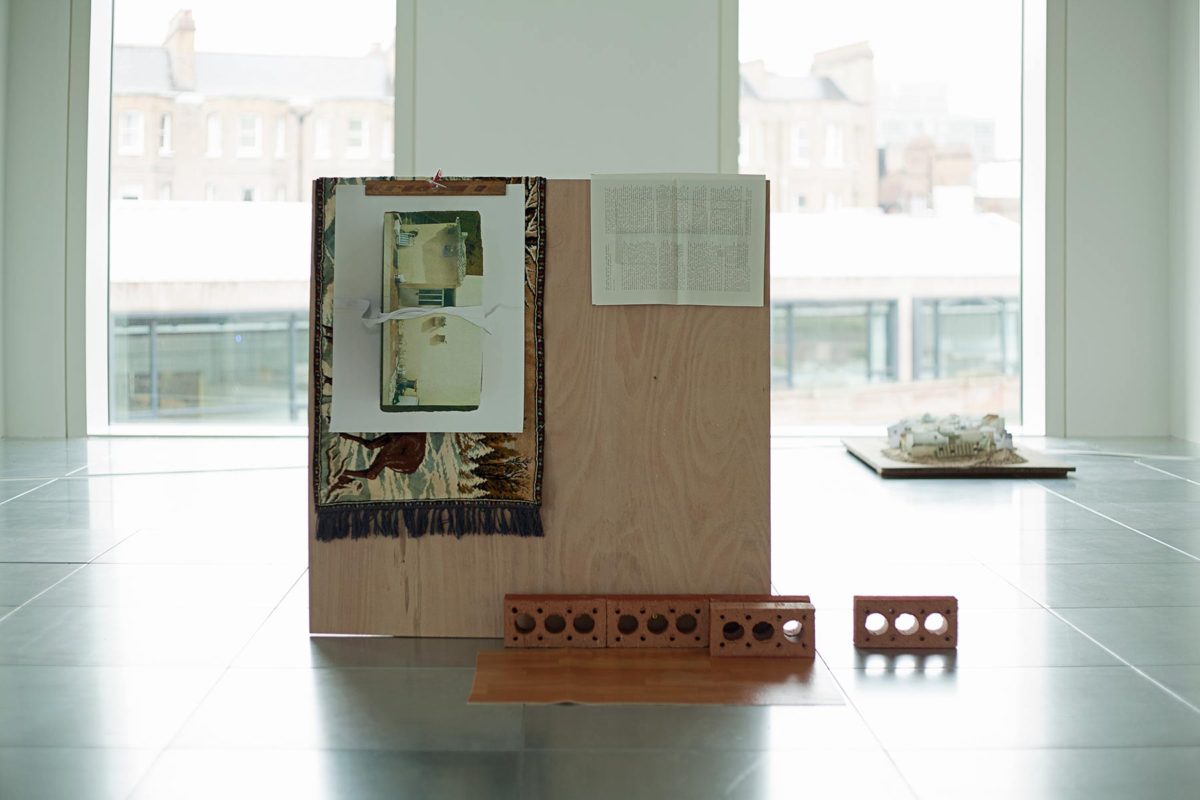
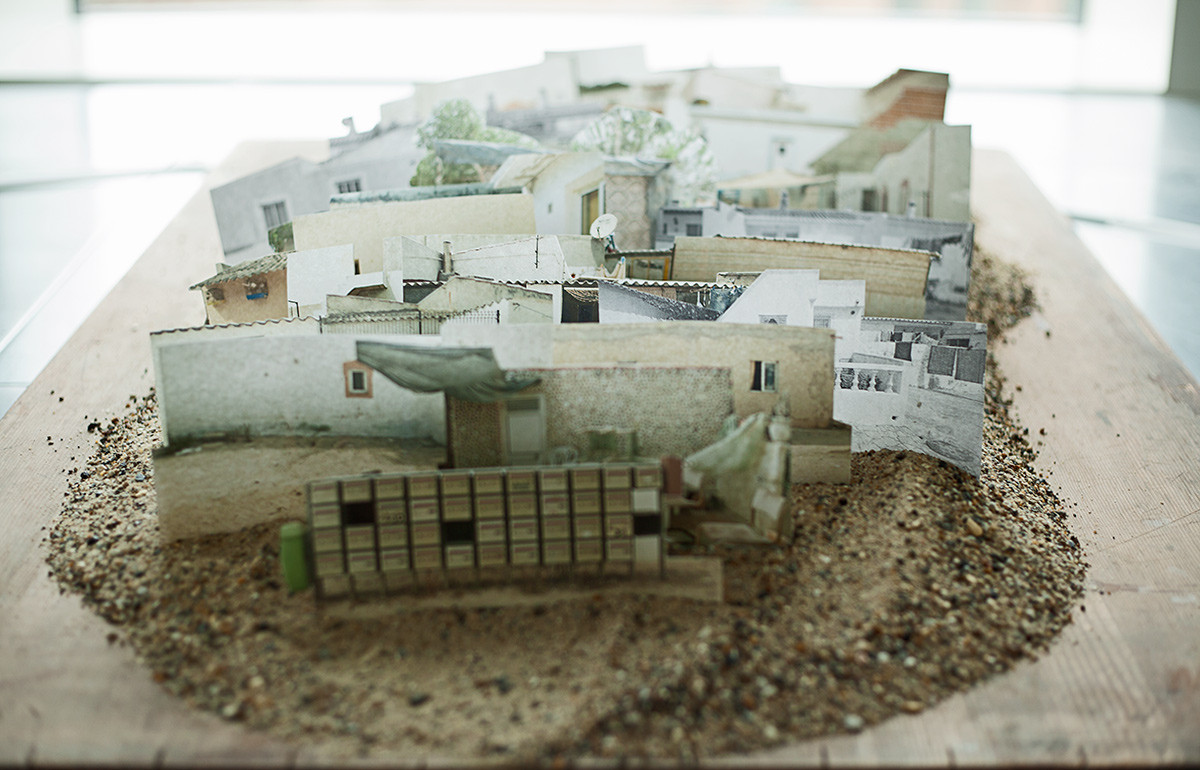
Installation
Assemblage with trestles, night stand, newspaper work, 122x 40x 80 cm.
Art in a bookshell: A survey of artists working with and inspired by books exhibition | Milton Gallery London | 2015
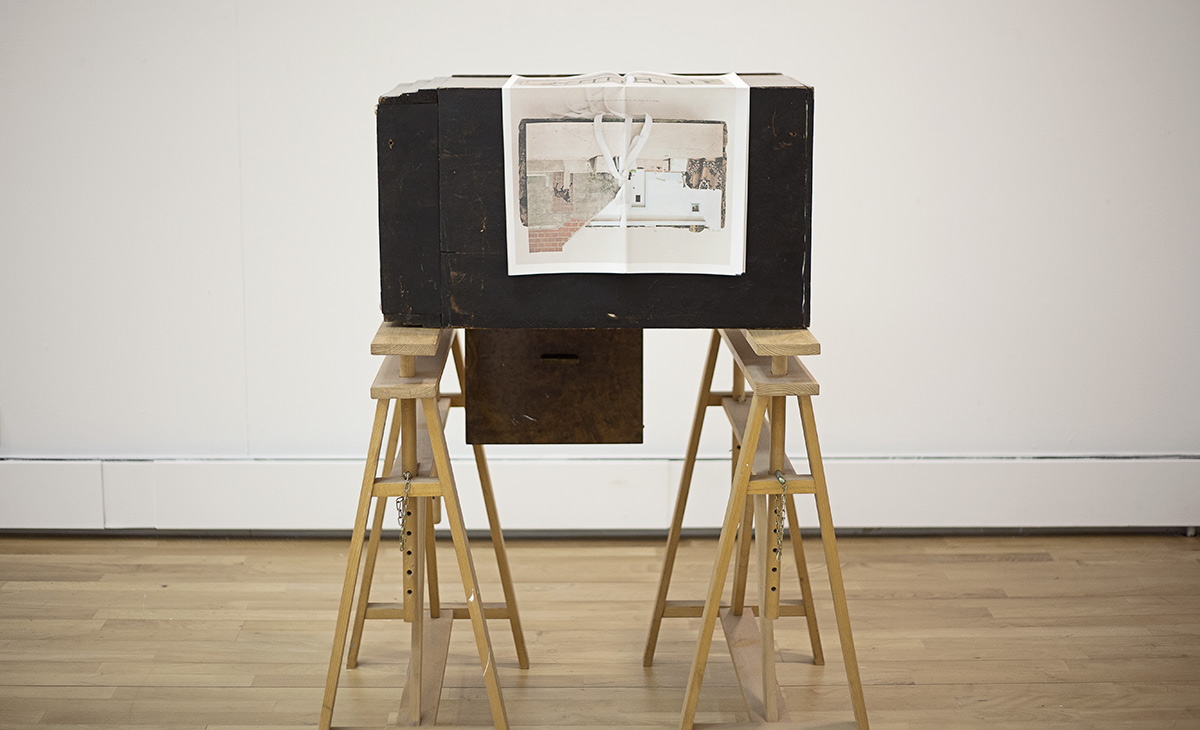
Chaos of memories- Surviving archives and the ruins of history according to the found photo foundation
3rd Dimension Paradigm Store at Howick Place
Operacoes SAAL, Alvaro Siza e a Persistencia de São Victor: Falhar, Falhar Novamente, Falhar Melhor
The past persists in the present in the form of a dream (participatory architectures, archive and revolution)
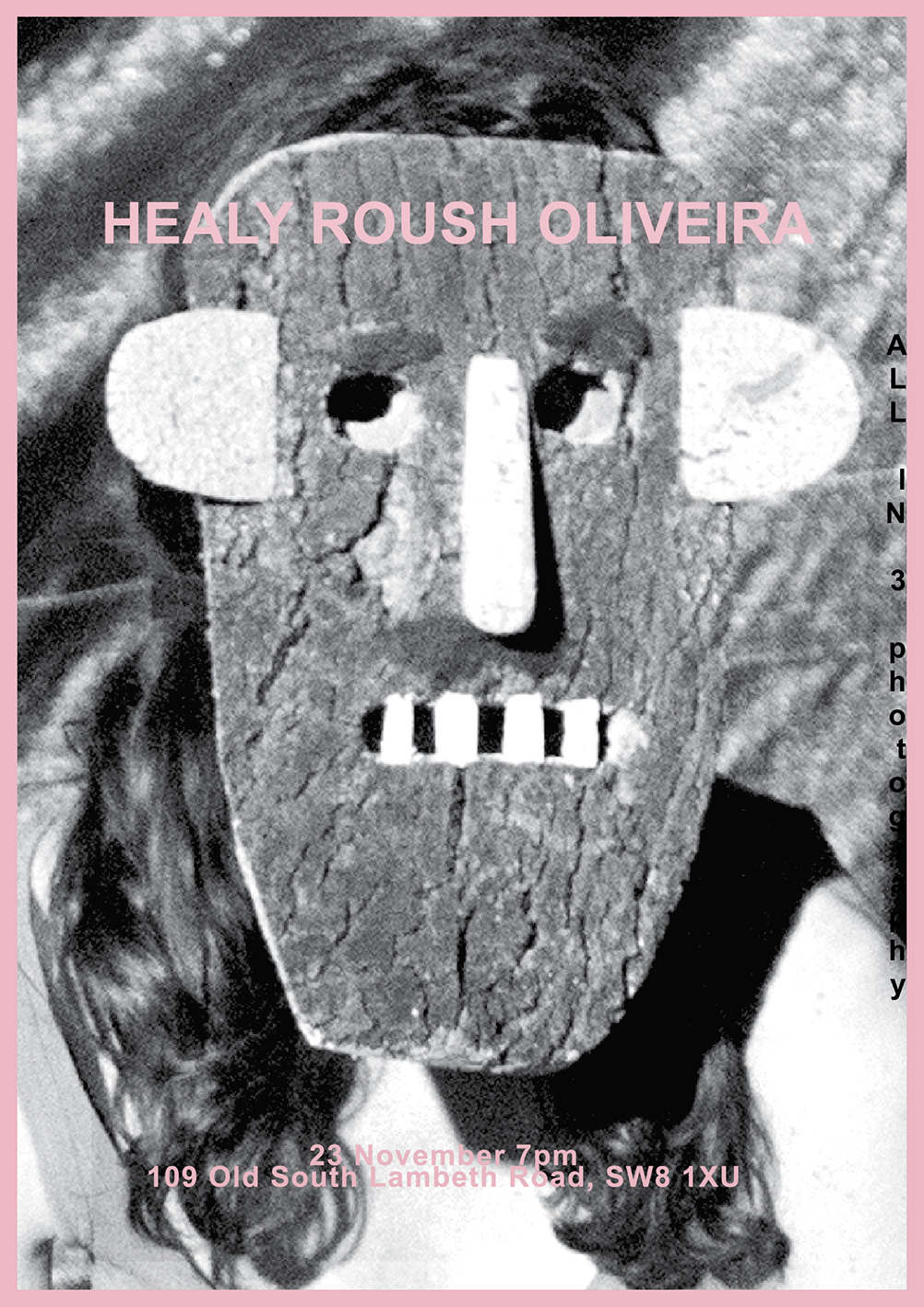
HEALY ROUSH OLIVEIRA 23 NOV 7PM TILL LATE |
ADRESS: 109 OLD SOUTH LAMBETH ROAD SW8 1XU [link opens in google maps]
nearest tube stations: Vauxhall (11m walk) and Stockwell (10m walk)
Dearest,
The third show & party in the a l l i n series is happening this Saturday!
This time my guests are two London based photographers who use and explore the photobook as the favourite format for their work.
paula roush mostly through msdm studio is a well established, leading practitioner and lecturer in the field, the author of mesmerising "photobookworks" and projects using both her own images and what she has termed "orphan images". Without too much exaggeration, paula is one of the most knowleageable and exciting photoartists working with printed matter. In the show she will present images from her series 'Paintball Field', which juxtaposes old masks and rituals originary from the now desertified interior villages of central Portugal and contemporary forms of entertainment (paula's image on the invite).
Pippa Healey is a relatively (hyper active) newcomer to the photography scene who has very quickly made an impression with her zines, which have been awarded with several prizes and are hold by important collections. Dealing with the difficult themes of grief, violence and loss, her subtle, pensive images easily take us on our own journeys to the moments we rather not remember to provide not grief but a surprising relief through the sharing of feelings which are mostly unspeakable. On Saturday she will present an installation based on her work titled 'Don't Come Looking for Me', which deals with memory and the return of the repressed.
Because 3 is a magic number, I will be presenting a mural titled 'One Month', where i turn the camera inwards by surveilling an entrenched everyday habit.
Come for an evening and night of music, food, drink around photography and more.
All in, all welcome!
best,Andreia
----------------------------------------------
Andreia Alves de Oliveira www.andreiaoliveira.net
Installation view of the work “PINK PRESS“ Ocotber 2019, msdm studio Artillery Place
Pink Press, hand-made collages with cut-outs from portuguese gossip magazines (imprensa rosa or “pink press”) on vintage paper, 35 x 28 cm each
ISSUE 13 of CARPARK MAGAZINE: A STATE OF DISREPAIR
publisher and editor Constantine Tsapaliras
guest editor paula roush
contributors Motohiko Hasui, Henrietta Dubrey, Philip Tsapaliras
stylists Aya Tanizaki, Rebecca Davies, Hugo Santos, AnasLAb
hair Yuko Aoi, Hirokazu Endo
models Takato Yano, Miri, Hugo, Eleanor Turnbull, Super B, SaintClair
illustrations and collages Henrietta Dubrey
ISSN 2049-4419
Available at MAGCULTURE / GOOD NEWS / YVON LAMBERT / doyoureadme / Print Matters!
Monochrome prints and wearables on paper and fabric on metal structures
shot (two tones) with a paintball gun (collaboration with GBH)
Paintball Field {Blue & Yellow]
bookwork printed with a Monochrome Océ Laser on Xerox Bond paper
shot with paintball gun (two tones) by GBH
118.9 x 84.1 cm each folio, installed on metal table with chipboard top
Monochrome xerox prints on paper and fabric
shot (two tones) with a paintball gun (collaboration with GBH)
with props, installed on metal, foam and and wood structures
Installation views of the exhibition PAINTBALL FIELD (3,06 billion cycles per second)
Commissioned by Barreiro Photography Month at AMAC
Red Gallery Auditório Municipal Augusto Cabrita 1 Nov 2018 – 10 Feb 2019
Monochrome Laser prints on pleated paper
Installation views of exhibition Grange Studios 2016
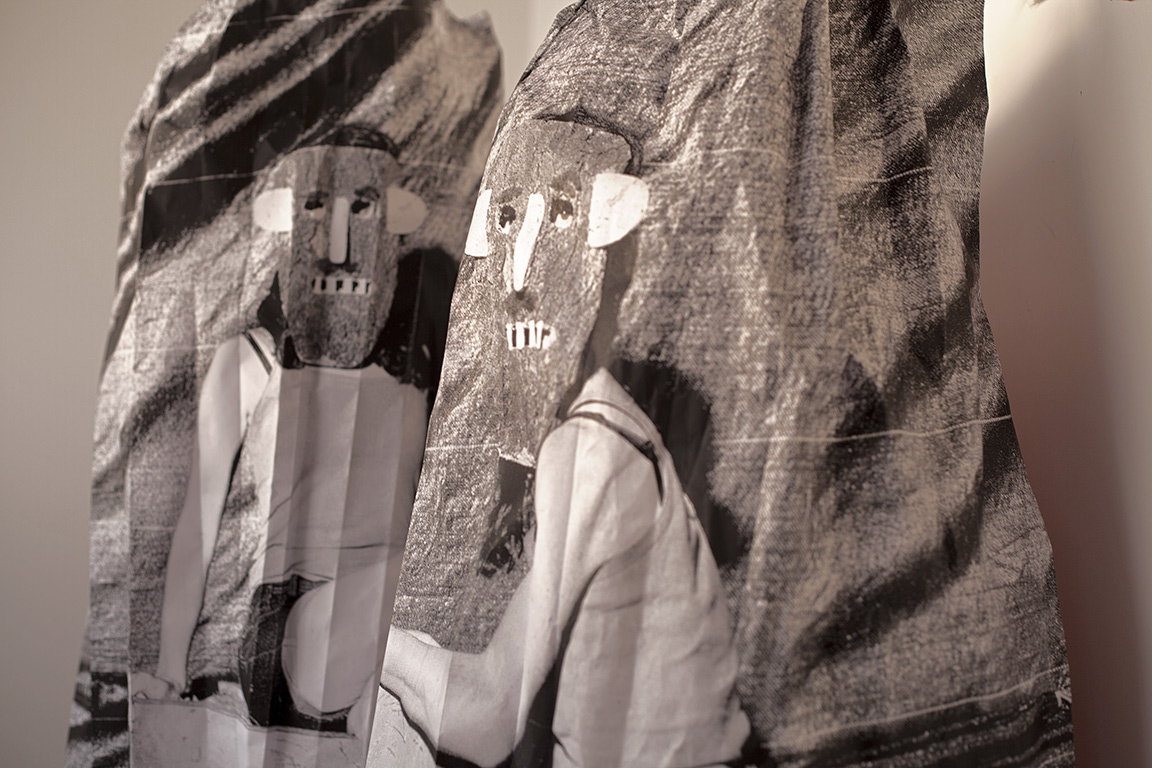
Newspaperwork
24 pages, b&w digital print, newsprint paper, 35 x 50 cm
Photozine
available in 2 sizes 20 x 28.5 cm (A4 page size) / 14x 20 cm (A5 page size)
laser printed black & white on canon ivory paper 80gsm
28 pages, hand-bound, 3-hole pamphlet stitch
edition of 100, released 2018, msdm publications
Paintball Field was made during a residency in the ‘schist’ mountain villages of Portugal. The area has become depopulated and is now being developed as a destination for tourists. The title of the work refers to a local recreation area where visiting families come with their children to play war games using guns firing balls of paint. The photographs conjure up a hunting scene in which a female figure wearing a cork mask – resembling those that were used by the original villagers during carnival – is being pursued.
More than a simple ironic take on violence and war, the work draws on ethnographic connotations, evoking a dramatic encounter between the rural traditions of the past and present-day cultural practices.
(3.06 billion cycles per second is the clock speed of the computer used to create the photoworks, expressed in gigahertz: 3.06 GHz. The computer is only one of the mediating elements in this practice, connected to capturing, editing, printing and publishing devices. An underlying trauma is the feeling of loss: emotional, social and technological. Loss of loved ones, lived spaces and computing power)
BUS-SPOTTING + A STORY in
Rigorosamente Libri Biennale del Libro d'Artisti
Selected by Maddalena Carnaghi and curated by Vito Capone & Gaetano Cristino
Fondazione de Monte Uniti di Foggia
June 8- July 10 2019
Video preview here > Rigorosamente Libri 2019 | IV edizione
Related publication > Bus Spotting + A Story
Strictly Books … by Artists
Fourth edition of "Rigorosamente Libri", an international biennial exhibition dedicated to the Artist's Book.
Seventy-one artists of different nationalities, a rich exhibition made possible thanks to the collaboration, with the curators, of a group of experts, artists, art historians, archives of artists' books and gallery owners (Laura Anfuso, Maddalena Carnaghi, Alfonso Filieri, Raffaella Lupi, Teresa Pollidori and Stefania Severi).
"The exhibition highlights one of the assumptions at its base - said one of the curators, Gaetano Cristino - and that is that the artist's book cannot be harnessed in a 'genre', but constitutes, as Giorgio Maffei (one of the greatest connoisseurs of the matter) believed, a 'polyform object'. It is a book that transgresses the rules of the book to become form / space / theater of the most daring artistic variations, where writing and image, the substance and the tactile values of the many materials used (from paper to wood to glass to stone to metals), also innovative and "strange", and many voices (of the poet, of the painter, of the sculptor, of the engraver, of the photographer …), they chase each other, confront each other, exclude each other, recompose themselves, dialogue, and become an infinite alchemical process of ever new relationships and achievements that manage to even tie past and present and speak to the user of the problematic reality of the world, and of their individuality, even when the pages are white or closed by the cover. And the exhibition itself has privileged the free approach to the works - the curator concluded -, without suggestions of diachronic readings or thematic or technical aggregations or related to materials: the exhibition is the historical precipitate of the individuality of the artists and is the uniqueness of their passions, their meditations, which each work must give back to us ".
paula roush is a photographer and educator based in London. She teaches art photography and photobook publishing at the School of Arts and Creative Industries, London South Bank University, as well as facilitating studio-based individual mentoring and small group workshops.
paula is the founder of msdm studio and Found Photo Foundation. A Fulbright scholar, as well as a recipient of a Bauhaus Kolleg Fellowship, she has been an artist in residence with the Frans Masereel Centrum and the Arab Image Foundation.
Contact: paularoush@gmail.com
COURSES
Senior Lecturer, Photography BA (Hons) 2006-present; Thesis supervisor, MA Photography (2011-2017) and MRes Photography (2018).
School of Creative Arts, Division of Film and Media, London South Bank University, London UK.
Develop and teach undergraduate level modules in Photography and the Gallery, Self-Publishing and the Photobook, Professional Practice and Promotion (2006-2018). Directly involved in Division curriculum development and thesis supervision (2006- 2017). Curated Photobook Pop-Up (2015-2018) and ə/uh/-books project space for photobook publishing (2016-2018).
Workshops/ Masterclasses
2019
Masterclass with paula roush
PhotoBookClub Lisboa in IMAGO Photo Festival.
Organised by EIFE Escola Informal de Fotografia do Espectáculo
Lisbon, Portugal
October 19, 2019
Publishing as Artistic Practice: participatory skill share and talk.
Conjunction Event from The Fish Factory, Penryn and CMR Project Space, Redruth. Organised by Alice Mahoney and Rose Hatcher
CMR Cornwall Media Resource, Redruth
January 2019
2018
Post-digital Publishing and Story-telling in the Photobook, Arts Llibre Workshop ESDA LLotja, Barcelona Spain, Artist's talk / workshop
2016
Nothing to undo
KHiO National Academy of the Arts Oslo
Guest Lecture and Facilitator of 5-day photobook publishing workshop with BA + MA students across the 3 pathways (Fine Arts, Design and Crafts).
Organised by Victoria Browne
Oslo Norway
The Page Turner: photographic archives, photobook works and self-publishing
4 days workshop
National Art Library and msdm studio (day 1), London South Bank University School of Arts and Creative Industries print studios (days 2 -4)
January 24- 27 2016
2016-2018
Creative photography and photobook publishing workshops facilitator
ACAVA Association for Cultural Advancement through Visual Art.
Facilitator photography and self-publishing projects, both in Blechynden Street studio and partner West London- based centres.
Print Your Own photobook
Creative photography workshops for personal development and wellness, based at ACAVA Blechynden Street Art Studio. 2018
Venture Photography Archive and Photobook Publishing
Creative photography workshops for personal development and wellness, based at Venture Community Centre Art Studio. The results of these projects have been displayed at an exhibition at ACAVA Maxilla Walk Studios. 2016
https://www.acava.org/education-and-community/project/venture-photography
Charles Saint
Newspaperwork and wall photoworks developed with St George College art students
Funded by West London Clinical Commissioning Group to create a permanent art collection for St Charles Centre for Health and Wellbeing.
Bookworks developed with Venture Community Centre groups funded by R.Borough of Kensington & Chelsea through Public Health.
2015 - 2017
Page-turner: Photography, the Book and Self-Publishing
Facilitator of 4-day photobook publishing workshop and pop-up exhibition with artists and photographers to develop their photographic work into photobook projects
Lisbon Photobook Fair
Lisbon Photographic Archive satellite space
2014
CoolTan Arts Stays Up LATES: A Creative and Interactive Journey Exploring the History of Science and Mental Health
Program of workshops, editing and designing CoolTan Arts Largactyl Shuffle / Science Museum’s LATES book project with photographic documentation, related art work and many of the original talks given by volunteers on the guided tours.
Digital copy online: http://www.cooltanarts.org.uk/largactyl-shuffle-science-museum-lates
2013
Xistorias/ Schistories: project facilitator> Commission to create a project in the ‘schist’ mountain villages of Portugal, an area that has become depopulated and is now being developed as a destination for tourists. Titled Schistories, the participatory work used oral history, new technologies and creative processes in wokshops and liveperformance to evoke a dramatic encounter between the rural traditions of the past and present-day cultural practices.
Open books: artists newspapers and QR codes.
Program of workshops leading to creation and publication of newspapers with four artists users of CoolTan Arts studio: William Ball, Graeme Newton, Aaron W.J. Pilgrim and Saffron Saidi.
Commissioned by HS Projects with funding from ICAP: Insight Community Arts Programme. Artwork was exhibited in the lounge area in ICAP London’s headquarters building (Blackfriars), and could be accessed and downloaded via QR codes.
http://www.cooltanarts.org.uk/cooltan-arts-news/open-books-project/
Dreaming Through: Self-publishing workshop for artists and educators.
Resulting works showcased alongside the exhibition in street facing displays at 198 Contemporary Arts and Learning Gallery, London
Queer Paper Gardens: exploring relationship between collage and self-publishing.
Workshop for artists and educators.
EDP Foundation, Lisbon
2008
Shared Worlds Collaborative and Participatory Art. Workshop, Seminar, Talks, Art interventions, Public Art
Coordination by Monica De Miranda, with: paula roush, Faisal Abdu’Allah and Paul Goodwin.
Centro Cultural de Lagos and vicinity,
July 25- 27 2008,
2004
SOS:OK project facilitator. Commission to create a temporary public artwork in the site of former Biscuit town, Bermondsey,entitled SOS:OK Emergency Biscuit. Workshops allowed former workers of the Biscuit Factory to imagine and design a new biscuit to represent their neighborhood. Featured in the exhibition Public Services along with the work of Marjetica Potrc, Apolonija Šušteršic, Temporary Services (USA), representing the way artists today think about structures and forms in contemporary cities
1998
Project Temporary Homes
South London and Maudsley NHS Trust, TAP-Trust Art Project, ASHA Projects, Eaves Housing, Riverpoint Emergency Hostel and Sojourner Housing Association
Funding: London Arts Boards Regional Challenge/ New Audiences Programme.
Workshops with four women's organisations and women living in temporary accommodation in mixed-media project (using photography, video and web design)
The artwork was exhibited in the Temporary Homes exhibition, 198 Gallery
South London and Maudsley NHS Trust, TAP-Trust Art Project/ Lambeth Hospital
Developed participatory project with staff and people living in and near the healthcare estate using mixed-media (photography, video and writing).
The artwork was published and exhibited in the healthcare estate
Talks
2019
Torn, Folded, Curled: photobookworks with orphan photographs, School of Arts & Creative Industries ACI Research and Enterprise Conference: Storytelling and the Networked Image in a digital/post-digital landscape, London South Bank University, May 23 2019
Torn, Folded, Curled: Orphan Photographs Sourced From the Arab Image Foundation (Crafting an Archaeology of the Recent Past, One Photobookwork at a Time). The Archive: Visual Culture In The Middle East Symposium. Lebanese American University, School of Architecture & Design/ Department of Art & Design symposium. Organised by Yasmine Nachabe Taan and Melissa Plourde Khoury. LAU Byblos campus, April 5 2019
2016
The Photobook as Artistic Research & Expression In collaboration with ICVL Studio, Unveil'd Photography Festival. Organised by Alejando Acin.
Why on earth be a flaneuse when I can be a glaneuse? Photobook Talks. Organised by Flaneur Project, Carpe Diem, Lisbon
2015
Super-private, Arab Image Foundation, Beyrut Lebanon, Artist's talk
Photobook: education and pedagogical networks. Presentation at the Lisbon Photobook Fair, Lisbon, Nov 2015
2014
Chaos of memories- Surviving archives and the ruins of history according to the found photo foundation. Presented at Order and Collapse: The Lives of Archives, University of Gothenburg & Hasselblad Foundation, Gothenburg 2014
UBM Artists Lunchtime talk: Michael Armitage, Frank Pudney, paula roush, Lucia Vera. Talk in conjunction with the exhibition Connecting Worlds presented by Drawing Room in collaboration with UBM. UBM's meeting room on the 9th Floor, Ludgate House
2013
X Time: Time that has already been time – a preamble in two chapters, UMAR/Feminist University, Seminar The Uses of Time, Lisbon Portugal, Seminar
Queer paper gardens / Estranhos jardins de papel, guided visit to the exhibition,The Lisbon Consortium: III Lisbon Summer for the Study of Culture Programme
True Tales: Queer artistic strategies. With: Ana Pérez-Quiroga, Patrícia Guerreiro, paula roush, Maria Lusitano, João Manuel de Oliveira and Nuno Crespo. Part of the video programme hetero q.b., Museu do Chiado, Museu do Chiado, Lisbon
2010
Browser Landscapes. Tiresias: Video by artists, Centro Cultural de Espana, Montevideo, Uruguay, April 2010
2009
Up for grabs: webcams, aesthetic failure and intermedial Internet spectatorship. Panel Conspiracy Dwellings: Surveillance in Contemporary Art. ISEA 2009, the 15th International Symposium on Electronic Art, Belfast
From flat box to 3D storycube: photography, youth cultures and counter-archival strategies, Mediated Memories Symposium, Journal of Media Practice, Sussex University
Open education networks. Knowledge Unlimited. 4th Takeaway Festival. DANA Centre, London
Tweeting is half of the work- artist’s work placement and the web 2.0 + Real blogging is academic blogging, Elearning@work, London South Bank University, London
Reinterpreting the archive: from flat paper to the 3-D web. Photography Education Symposium. Issue four of the journal Photographies, London South Bank University, London
Open Education Networks vs ‘Bricks and mortar’ Universities. Resolutely Analogue?: Art Museums in Digital Culture. Learning and Teaching in New Media: Questions of Literacy. Tate Encounters, London
2008
Video as a zone of activity. Video Art and Art & Film essay in Portugal Symposium, CAMJAP – Fundação Calouste Gulbenkian, Lisbon
Social networking and authentic engagement: students as ‘produsers’. Learners in the Co-creation of Knowledge (LICK) 2008, Napier University, Edinburgh
Sociable Publishing – a photo publishing project at lulu.com. Published Words, Public Pages – Sharp Copenhagen. A Nordic Conference on International Print Culture. The Danish Royal School of Library and Information Science, Copenhagen
Photopublishing with Lulu, situating feedback in socially networked practices. CLTAD 4th International Conference Enhancing Curricula: using research and enquiry to inform student learning, New York
The posthuman finger. The Red Room Platform, Loving Big Brother: From George Orwell to reality TV - is surveillance to be feared or embraced? ArtsAdmin, London
Shared worlds: workshop-seminar about collaborative and participatory art. Local Worlds exhibition, Lagos
Flat Screen, No Signal: Body and Location Under CCTV. Conspiracy Dwellings: Symposium on Surveillance in Contemporary Art in the Southhill Park Arts Centre
2006
WUK-RADIO: Ear Appeal (Orange 94)
Presentation of the project Protest Academy as part of the exhibition Ear Appeal at the Kunsthalle Exnergasse. paula roush with Doreen Mende, curator of the exhibition, WUC Radio Broadcast event
____________________________
PERFORMATIVE PRESENTATIONS
2012
Feminising Ed, a discussion of Tested: vaio road test in the context of other feminist projects that approach historical artists’ books and documents by the use of archive and exhibition making. The Ed Show, The Digital Art Gallery London South Bank University, London UK
2011
Intimate Tv: Webcamming & Social Life-Logging in The Surveillant-Sousveillant Space , ISEA 2011 The 17th International Symposium on Electronic Art, Sabanci University, Istanbul, Turkey
A field (of interconnected realities: cyber drawing and mash-up electronic goodness, ISEA 2011 The 17th International Symposium on Electronic Art, Sabanci University, Istanbul, Turkey
2010
Intimate TV - forward:delete (wayback safari), Kunstverein Harburger Bahnhof, Hamburg Germany
A field, Living Room artists’ talk, Artstation, Auckland, NZ
2009
Speed/sight, Zavod P.A.R.A.S.I.T.E. Gallery P74, Ljubljana Slovenia
2009
CCTV ecstasy, The 4th Radiator festival: Exploits in the Wireless City, QUAD, Derby UK
Publishing as Artistic Practice: participatory skill share and talk. Conjunction Event from The Fish Factory, Penryn and CMR Project Space, Redruth. Organised by Alice Mahoney and Rose Hatcher. CMR Cornwall Media Resource, Redruth
2018
Print in the age of DIY & Publishing as Artistic Practice is a Conjunction event from The Fish Factory, Penryn and CMR Project Space, Redruth organised by Alice Mahoney and Rose Hatcher. This day aims to bring together artists and creatives with an interest in print techniques including Riso printing, discussing the DIY punk print scene and zines, as well as artist books, photobooks and publishing as artistic practice.
Print in the age of DIY:
11 - 4:30pm - Fish Factory
Participatory skill share event making prints and collaborative zine with free networking lunch and will include:
• Mimeograph display and printing.
• How to make a zine.
• Talk about Mimeograph printing, its history and contemporary Risograph printing from Benjamin at Dizzy Ink.
• Talk and showcase from Notts Zine Library.
This event aims to open up our print area and other facilities to a new audience. The collaborative element of zine making aims to open up discussion on the subject of the DIY punk print scene, the Cornwall Zine Library (hosted by the Fish Factory) and collaborative practices within the realms of illustration, writing, design, photography and printmaking.
Transport provided at 4:30pm to CMR where the event will continue.
Publishing as Artistic Practice:
5pm - 9pm - CMR
Talk and presentation with artist paula roush, who founded MSDM Publishing and is the curator for ə /uh/ -books: a project space for photobook publishing at the London South Bank University where she also teaches photobook publishing.
Artistic practice, visual research, image archives, and publishing are some of the medium debated in this event:
How do we find ways to bring the productive chaos of artistic practice into the apparently seamless order of the artist’s book?
How do we develop a visual language that communicates page after page the content and materiality of artistic research?
Each artist will have their own method, and in this seminar, we will look at examples of publishing as artistic practice. Our aim is to analyse some of the ways research and artwork are integrated in ‘democratic multiples’ known as artists’ books.
In this seminar, we will discuss varied publishing formats and approaches, and think of one’s studio as a platform for self- publishing. Tools and equipment useful for a ‘do it yourself’ approach are discussed as well as material features of the book that require solutions in the form of double-side printing, separation of the visual material into sections and imposition of the material into layout and sequence.
Torn, Folded, Curled is a working term used at the Arab Image Foundation to categorise heavily damaged photographs that require special care in storage and preservation. It is also the title for a project started with photographic research at the Foundation followed by a publishing residency at PlanBEY that resulted in photobookworks and an exhibition in Beyrut (Makan, 2015).
In this session I shared how I developed three photobookworks Bayroumi, Super-Private and Today from the Arab Image Foundation photography collections and went on to publish them with Beirut based publisher PlanBey. I shared my way of being in a collections environment, how to research, how to collaborate, to get both powerful images and relevant text for great bookworks.
Further info here:
Torn, Folded, Curled: Orphan Photographs Sourced From the Arab Image Foundation
(Crafting an Archaeology of the Recent Past, One Photobookwork at a Time).
The Archive: Visual Culture In The Middle East Symposium.
(Publishing as an Intellectual Design Platform: Lebanon)
Lebanese American University, School of Architecture & Design
Department of Art & Design symposium.
Organised by Yasmine Nachabe Taan and Melissa Plourde Khoury.
LAU Byblos campus, April 5, 2019
archive-brochure.pdf
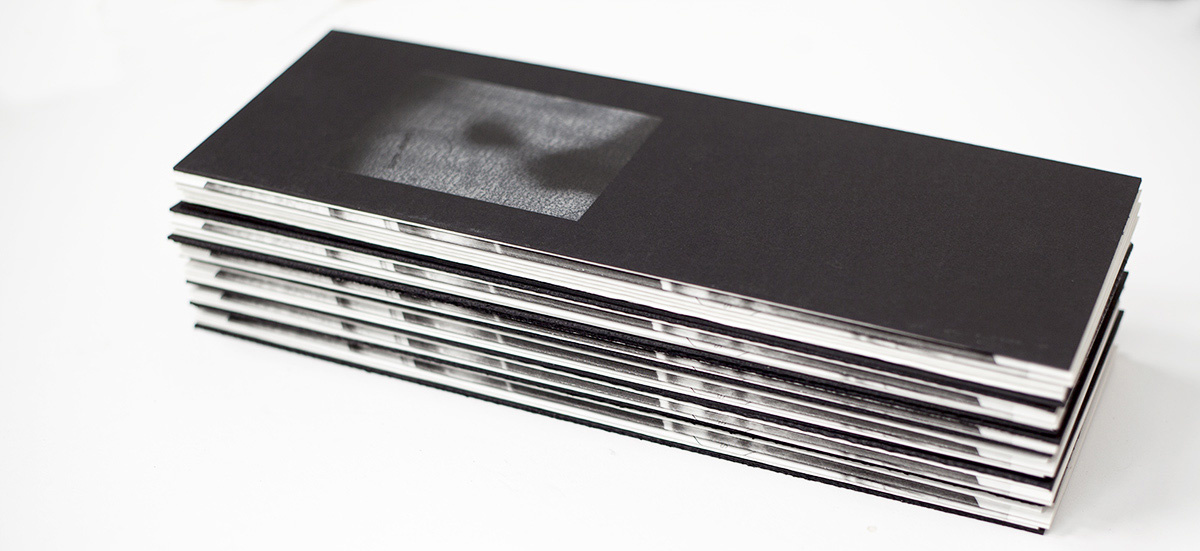
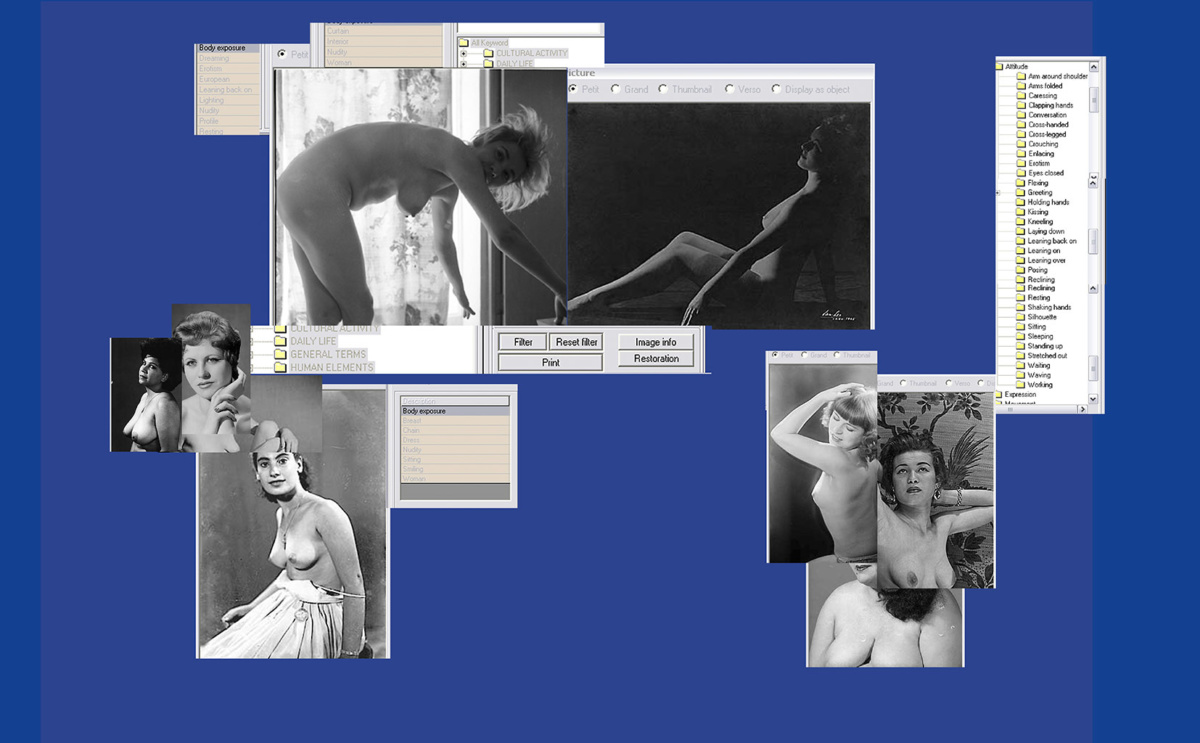
This is the report on my teaching practice I presented to the Higher Education Academy to become a fellow
HEA Fellowship presentation slides
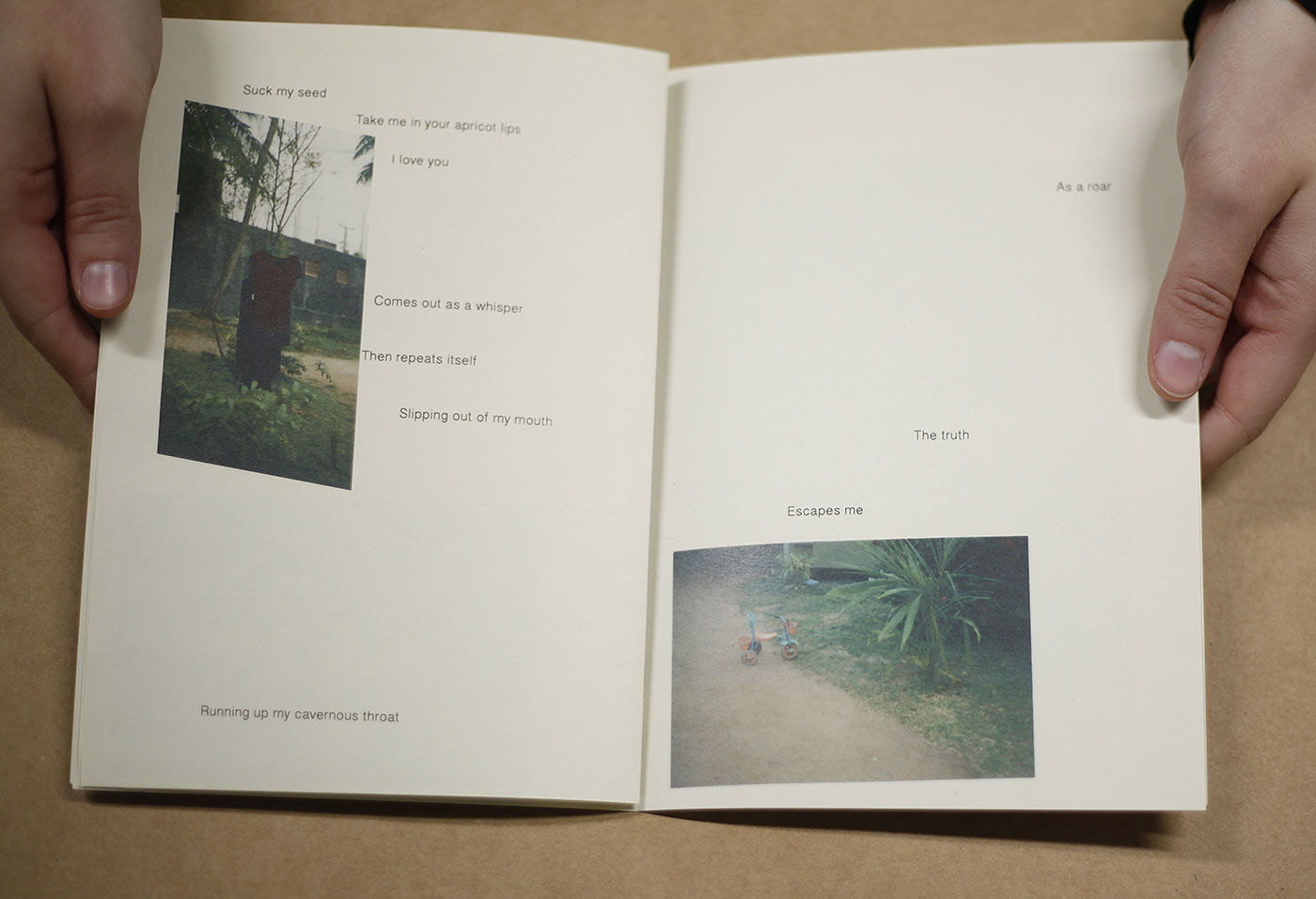
Page Turner: photographic archives, photobook works and self-publishing
4 days workshop
National Art Library and msdm studio (day 1), London South Bank University School of Arts and Creative Industries print studios (days 2,3,4)
January 24- 27 2016
This course explores the intersection of photographic archives and photobook publishing.
Day 1: start at the V&A by visiting the National Art Library and get inspired by the photobooks in the artists’ books collection, followed by photographic research in msdm studio.
Days 2, 3, 4: The workshop continues at the London South Bank University at the art studios to develop photobook dummies, including photo narrative, sequencing, printing and binding.
This issue of Photographies co-edited by Andrew Dewdney and Martin Lister focus on photography and education.
...For some, the future requires academics to acknowledge the sophistication of students' online practices; as Jackson puts it: “modes of production and consumption that are processual, communicative, spatial, temporal and performative”.
This is very much the territory of paula roush's ethnographic exploration, whose account starts with the historical archive of Anita Corbin's girls' subcultures documentation in 1981 and travels forward to document contemporary youth subcultures in real life, in online communities and in Second Life. roush's visual essay illustrates her students' engagement with the subcultural subject, and in her accompanying paper she gives an account of the teaching rationale and method of what she calls a/r/tography, the relational aesthetic of the artist, teacher and research:
My own identities as artist/researcher and teacher (a/r/t) are all allowed to be present simultaneously and I encourage the younger student-researchers I work with to think and act along the same lines. Moreover, “the acts of inquiry and the three identities resist modernist categorizations and instead exist as post-structural conceptualizations of practice”.
In relation to photography as a discipline (...) paula roush takes the view that theories which acknowledge hybridity prove more fruitful ground for the constitution of relational practices based upon art, teaching and research.
Read full editorial statement here
(2009) Editorial Statement, photographies, 2:2, 103-115, DOI: 10.1080/17540760903116457
and essay here>
roush,p.
Download fever: photography, subcultures and online-offline counter-archival strategies.
Essay in Photographies Journal, Vol. 2 Photography and Education Special Issue and Symposium Issue.
Eds. Andrew Dewdney and Martin Lister. Taylor & Francis. 2009.
With its point of departure in a box containing Anita Corbin’s 1981 travelling exhibition “Visible Girls”, this text unveils an art/research/teaching project, with the aim of creating a counter-archive of current youth culture. It describes an artist’s engagement with archival practices and the way this presents opportunities to develop personal everyday histories that cross online–offline spaces that work as counter-memory narratives; narratives that are counter to academic, media and state accounts of youth culture as shaped by institutional agendas and moral panics. To locate the archive within the framework of counter-memory and counter-archival practices in this way is to work towards visibility.
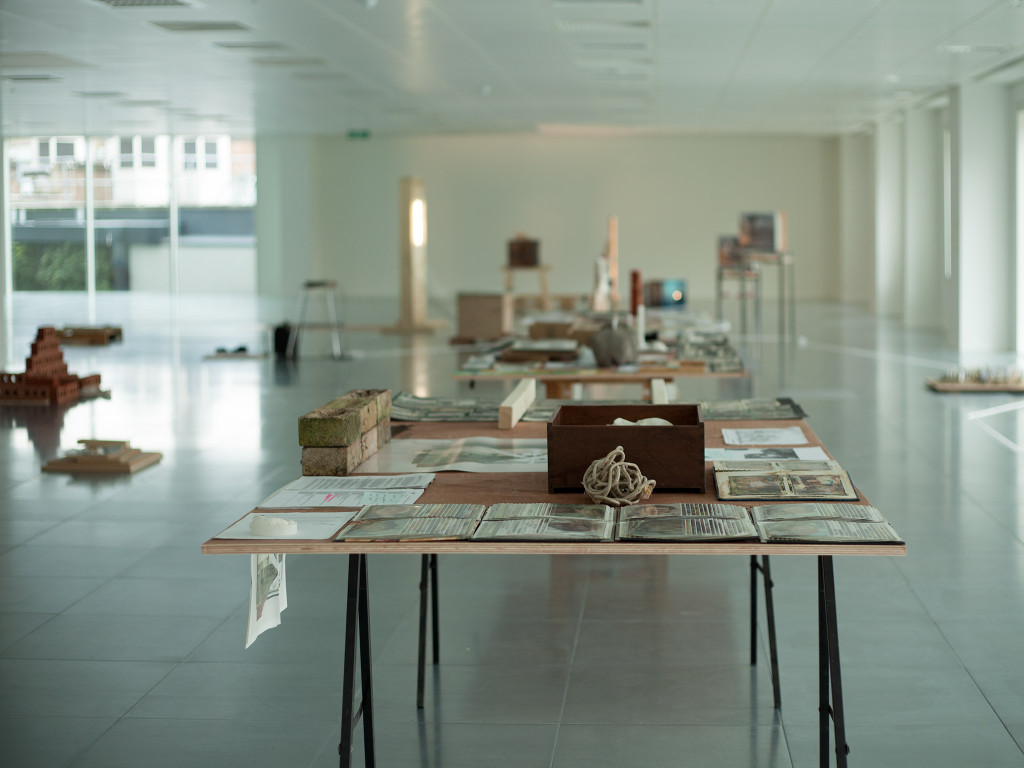
Paradigm Store
Curated by HS Projects
With: Ulla von Brandenburg, Cullinan & Richards, Kendell Geers, David Shrigley, Yutaka Sone, Maria Nepomuceno, Tobias Rehberger,paula roush, Claire Barclay, Elizabeth Neel, Simon Bedwell, Nike Savvas, Theo Stamatoyiannis, Anne Harild, Beatriz Milhazes
5 Howick Place, London
[press release] [artist's statement] [review: 3rd Dimension Magazine]
Historical allegories
The latest materialisation of the found photo foundation appeared in the installation The past persists in the present in the form of a dream (participatory architectures, archive, revolution) that was exhibited in London in 2014 by HS Projects as part of Paradigm Store, a curatorial project reflecting on the haunting gap between 20th century modernist utopias and historical matrixes that have ripped apart modernist myths of progress. The past… in the form of a dream occupied that gap between the 1970s promises of radical participatory democracy and the contemporary reality of neo-liberal democracy in southern europe, featuring the Apeadeiro housing estate, one of the urban villages developed during the portuguese SAAL architecture programme, and now facing demolition. I was a child in 1974 when the 25th of April coup d’etat put an end to five decades of fascist dictatorship. Within just a few months, the country underwent a fertile incubation period out of which mushroomed a series of experiments in participatory democracy with SAAL symbolising the architecture of the revolution.
Architect Jose Veloso built a SAAL project with a fishing community living in precarious conditions in a small shanty town in Meia Praia, by the seaside of Lagos city. With his team’s support the villagers formed an association and applied for funding and ownership of the land. Forty one houses were built following a ‘modular typology of evolutionary housing.’ The basic unit was the one bedroom flat, and each unit contained five additional options of interior organisation allowing the family to develop the space up to a five bedroom flat, according to their household needs. The architects made the proposals, elaborated the technical aspects of the construction and all decisions were taken in collective meetings, where almost everyone participated: “It was a very cohesive, lucid and coherent group in their decisions. They didn’t want each family to be simply building their own house. Instead, everyone worked in all the houses collectively, and they would all be built at the same time.” (1)
The SAAL programme was eventually dissolved in 1976 by a government invested in joining the prevailing neoliberal capitalist model, in a process of normalisation for the portuguese society where hegemonic models of western-style consensual democracy replaced the participatory experiments put in place during the revolution. The Apeadeiro village was never finished, the streets never paved and the houses are currently threatened with demolition to make space for a new golf course. This happens concurrently with an identified crisis of memory in portuguese history by “getting rid of those formulations that were seen as direct expressions of the vigorous popular movements of the revolutionary period and their achievements,” as Santos and Nunes write (2) and that explains the institutionalisation of a ‘selective’ historical amnesia.
Aesthetic of ruins
It is this complex crisis of memory that I attempted to work in the form of another experimental archive, an installation that mixed found photographs with my own photography. In my first field trip to the village, in 2010, I photographed the forty one houses like Ed Ruscha would have photographed every building on the Sunset Strip (3), or the twenty six gasoline stations on Route 66. (4)
I created a visually efficient typology, and tactics of ‘typologisation’ are frequent in many other spatial photobooks, as pointed by Ian Walker (5), but it didn’t engage the psycho-historical resonances of the site. I carried on with research at the National Library and Archives in Lisbon where I searched for traces of my case study and found the cotton tape used to bundle-up documents. I eventually cut the houses out of their backgrounds, wrapped them around construction bricks, and re-photographed the series. The fragmentation of the image and the archival cotton tape inserted spatio-temporal gaps in the photographs that result in the creation of a historical allegory. Further, the fragmentation and doubling of photographic material in the installation created, in turn, an archive of participatory architecture and an archive of revolution, that is also an archive of ruins and forgetting.
The difference between typological and allegorical archival installation might be seen, as explained by Craig Owens (6), in such engagement with the psychological and mythical resonances of the site. This along with other strategies as the creation of images through reproduction of other images, an attraction to the imperfect, the impermanent, the ruin that stands for process of decay and abandonment, an obsessive gathering, piling up of fragments, involving the spatial, leads to hybridisation and photomontage and a temporal projection of structure as sequence.
Could The past… in the form of a dream installation communicate the time of the construction, the time of the photograph and the time of the archive? It appears to function both as a spatial and a time montage that shifts the viewer’s perception between utopia, ruins, document and monument. The danger with ethnographic approaches is, according to James Cifford (7), the distancing of the represented communities in the ‘salvage paradigm’ that freezes them into a ‘present-becoming-past.’ This is something I have been very wary of, threading my way between documentary and experimental auto-ethnography. However, the allegorical structure of double representation, in which the ethnographing of the culture is recognised and made visible through photography’s reflexivity, complemented by the inclusion of other voices, transforms such ethnographic practices. Catherine Russell also sees this happening in the use of allegory to appropriate utopian desires, as in Walter Benjamin’s radical theory of memory. In her reading of Benjamin’s work, his study of the Paris arcades suggests that the past persists in the present in the form of a dream, often commodified as a wish image; this conception of the past is captured in the shifting temporalities of the reproduced and archived photography and became the title The past persists in the present in the form of a dream (participatory architectures, archive, revolution), for both a newspaper (8) and installation.
In the installation, one of the sculptural clusters looks like a disordered construction site, a visual memory from my first visit to the village, where I saw the poetic debris of everyday life, let out and about in the streets… A wooden frame placed over a shabby linoleum strip evokes both the front of a house and a large light-box, with fluorescent light illuminating a quasi-transparent instance of the brick-house. Moving to the side, there is a defaced nightstand, placed over trestles, as if waiting repair. Hanging from its open door is a double spread from the photo newspaper, with a different brick-house. Other assemblages show construction materials and photo reproductions leaning against it, a homage to the DIY skills of the villagers, that glean iconic trash of late capitalism to repair the deteriorating housing estate.
This creolisation, the hybridised appropriation of the globalised culture in a localised vocabulary of forms creates odd juxtapositions, for example, of brick chimneys with macdonalds’s logos. Is this a TAZ, a temporary autonomous zone(9)? A pirates’ encampment that resists state control? Like a rhizome, the TAZ is a node reconfiguring itself in order to enact hit and run resistances. Otherwise how to rethink today SAAL’s ideas on social emancipation?
Surviving archives
It is crucial to note here that there is no official archive of the housing estate: a main gap in the residents’ archives is the absence of the official documents that would grant them ownership of the land and houses. In this absence, their position is extremely vulnerable and the creation of such archive appears as a matter of urgency. The inclusion of three large studio trestle tables to display the records of the SAAL architecture along vernacular and personal archives is an act of reparative justice as well as a direct result of the centrality of the fpfoundation in my studio practice. The collection of found material has a very a mobile configuration “in transit and in translation” moving like Marianne Hirsch and Diana Taylor suggest happens with temporary archival forms, away from “understandings of archives as stable repositories.” (10)
Crucially, like the artists’ studios analysed by Jenny Sjöholm (11) my studio can be seen as an experimental archive in itself, with all types of collected objects being taken out and incorporated into installations set-ups, silkscreen prints, photobookzines and other practices that translate the contents of the storage boxes into new patterns that further loose its connection to its original site of production. Thus, not surprisingly, it is frequently impossible to identify the provenance of the photographs on display in any of my installations.
The inclusion of found state photo albums from the fascistic government, alongside Jose Veloso’s architectural archive and with the villagers’ personal archives in the tables query the weight of the archive to legitimise and or destabilise power positions. In the reproductions of the villagers’ photos they appear in their homes, surrounded by their collections of images and artefacts, as collectors and archivists in their own right, aware that in spite of this ordering, they lack the documents that prove their citizenship. Their staging for the camera of their personal archives reveals politically and aesthetically astute use of images, where evidence of citizen’s life is a plea for human rights. These archives of the private sphere show how politicised is the figure of the dispossessed. The image of the villagers as activists can only be complete with the memories of the films and songs that evidence their life in the public sphere, since life in the village has been wrapped up with the codes of ethno-documentary representation and the politics of image since its inception in the 1970s.
As part of the installation, I included a video archive that deals with the village in two different periods. The film Continuar a Viver -Living On (1976) was directed by Antonio Cunha Telles when the filmmaker joined the construction team in 1975. Since 1968 European militant cinema had been filming the working class struggle. Living On is both an ethnographic work and a piece of militant cinema, a politicised documentary of direct cinema, with no leading actors, rather the working class takes stage as the main character. Here, the protagonist is the fishing community performing for the camera as citizens exerting their right to the city, building their own houses collectively and assuming the control over their means of production by establishing a fishing cooperative.
The other video archive moment is a contemporary Youtube playlist of thirty cover versions of the song Indios da Meia Praia (1976). When the protest singer Zeca Afonso (1929 – 1987) wrote the soundtrack for the film he called it Indios da Meia Praia (Indigenous of the Meia Beach) as the Lagos city population called the villagers, a derogatory term that implied both foreigner and subaltern positions. The song appropriates the term to claim an anti bourgeois attitude, and it has been so popular throughout the years, that it has slowly become an anthem for the revolution. So whilst in fact many people have never visited the village, the so called Indios became a legend in its own right and the song regularly reappears as a new cover version in political rallies, TV shows and song contests.
In the site of an empty office building in the borough of Victoria, central London, the viewer’s experience of walking along the archival installation was framed by the background view out of the 6th floor window frames: outside were the red bricks tower of the neo-Byzantine style catholic Westminster cathedral erected in 1903, the dark grey cement cluster of brutalist architecture office buildings built in the mid-1970s, contrasting with the new stainless steel office buildings, a symbol of the present digital economies, with office workers visible at their computer desks. The allegorical archive could be experienced in a total environment of time-space compression at the time of globalisation.(12)
Extract from:
paula roush: Chaos of memories- Surviving archives and the ruins of history according to the found photo foundation [access full there here]
In Order and Collapse: The Lives of Archives
Editors: Gunilla Knape, Niclas Östlind, Louise Wolthers, Tyrone Martinsson,
Art & Theory Stockholm 2016
1 From an interview with the architect, video recorded in the summer of 2010.
2 Boaventura de Sousa Santos and João Arriscado Nunes, '”Introduction: Democracy, Participation and Grassroots Movements in Contemporary Portugal,” South European Society and Politics 9:2 (2004), p.11
3 Edward Ruscha, Every Building On the Sunset Strip (Los Angeles, CA: self-published, 1966)
4 Edward Ruscha, Twentysix Gasoline Stations (Alhambra, CA: The Cuningham Press,1962)
5 For a study see Ian Walker “A kind of ‘Huh?’: The siting of twentysix gasoline stations (1962)” in The Photobook: from Talbot to Ruscha and Beyond, eds. Patrizia di Bello, Colette Wilson & Shamoon Zamir (London/New York: I.B. Tauris 2012) 111 – 128.
6 As exemplified in the site-specific work of Roberth Smithson and archival accumulations of Hanne Darboven. See Craig Owens, “The Allegorical Impulse- Toward A Theory of Postmodernism, October 12 (Spring, 1980), 71.
7 James Cifford, “On Ethnographic Allegory,” cited in Catherine Russell, Experimental ethnography – The work of film in the age of video.
8 paula roush, The past persists in the present in the form of a dream (participatory architectures,archive, revolution) (London: msdm publications, 2012); first exhibited during the Brighton Photo Biennial 12 Photobook, October – November 2012 and Brighton Photo Fringe, Phoenix Brighton, November 2012
9 Hakim Bey, T. A. Z. The Temporary Autonomous Zone, Ontological Anarchy, Poetic Terrorism.(Brooklyn, NY: Autonomedia, 1985).See http://hermetic.com/bey/taz3.html#labelTAZ
10 Marianne Hirsch and Diana Taylor, The Archive in Transit, In On the subject of archives. See http://hemisphericinstitute.org/hemi/en/e-misferica-91/hirschtaylor 11 Jenny Sjöholm, “The Art Studio As Archive: Tracing The Geography of Artistic Potentiality, Progress and Production,” Cultural Geographies 21(3, 2014), 505– 514.
12 On the question of the national of allegory vs its globalisation using the configuration of timespace compression proposed by Fredric Jameson see Ismail Xavier, “Historical Allegory” in A Companion to Film Theory, eds. Toby Miller and Robert Stam (Malden: Blackwell, 1999) 333-334.
Torn, Folded, Curled is a working term used at the Arab Image Foundation to categorise heavily damaged photographs that require special care in storage and preservation. It is also the title for a project started with photographic research at the Foundation followed by a publishing residency at PlanBEY that resulted in photobookworks and an exhibition in Beyrut (Makan, 2015). Bayroumi, Super-Private and Today source from three photographic collections that are temporarily stored for preservation, whilst awaiting its full digitisation and cataloguing. Art as Research methodologies support an archaeology of the contemporary past, and reflect the way these orphan photographs exist in a phantasmic connection with Middle East history, chance and everyday life.
Based in Beirut’s Mar Mikhael, Makan was a residential apartment before its conversion into a project space. Relying on the domestic feeling of the site, the gallery was retrofitted into a furnished apartment and the photobook works integrated within a site-specific installation. The staging of a narrative within an out-dated domestic interior invited the audience into an intimist reading of the scenes evoked in the printed pages.
SUPER-PRIVATE
This effect is visible with Super-private, six photobookworks sourced from the work of an amateur photographer known as RS. Photographing in the early 1950s in Beyrut, he left his work in film rolls that were never developed during his life time and are shown here as photobookworks for the first time. The ‘real-life’ apartment setting provides the ideal backdrop for a visual script that emerges in the staged scenes for the camera where his friends and lovers feature as characters in a photo-roman noir. More about the book here
TODAY/AL YOM
Another bookwork in the exhibition is an investigation of press photographs and papers rescued from the offices of political newspaper Al Yom. Founded by Afif El Tibi in 1937, considered the father of Lebanese journalism, the newspaper was attacked at the outbreak of war in 1975, and the journalists given 30 minutes to leave the offices. The repository lay hidden until the editor’s death in 2005 when it was found outside his house. Heavily damaged, the materials are photographed as they were found: torn, folded and curled. The resulting publication is titled Today (torn folded curled) and the images are accompanied by sentences from the novel ‘A L’ Ombre d’ Une Ville’ (1993) by Elie-Pierre Sabagg, creating a photo-text that is a reflection on memory, photography and the city.
More about the book here
BAYROUMI
The Bayroumi Collection has been temporarily held in storage boxes at the Arab Image Foundation waiting to be catalogued and re-housed in safe archiving environment, until it is ultimately digitised and made available for online access. It was brought in by AIF member Akram Zaatari, from the studio of Mohamad Bayroumi in Saida, Lebanon and it is still being researched. It is a collection of approximately 4600 negatives of 35mm format, packed in cardboard boxes and plastic bags. More about the book here
ROSITTA
Rositta explores what the definition of 'photobook' is: using one single image from the RS collection it is formatted for the dinner table, a humorous twist of the coffe-table book. The photograph is rendered bitmap, a process usually leading to the photo silkscreen surface a condition that is eschewed here in favor of high contrast laser printing, and placed under a transparent acrylic cover with pink stickers.
More about the book here
Words by Doreen Mende
In addition to their pieces for the show at the Kunsthalle, several of the EAR APPEAL artists—Justin Bennett, Rashad Becker, paula roush/msdm, Ultra-red, and Annette Weisser—were asked to devise works for radio to be broadcast by Kunstradio on Austrian public radio’s cultural channel Österreich 1 (Ö1), while the show was running, and to remain available online as downloadable MP3s. EAR APPEAL ON AIR was explicitly part of the overall exhibition concept in that the series of radio programs was designed not as an accompanying program but as an extension of the exhibition space.
The radio pieces all featured one of two aspects: working with found urban sounds or reflecting on the technology of the radio as a way of achieving an impact at the point of delivery in the external world. This created a concrete interrelation between inside and out that was put into practice and continued within the space of radio.
What makes the presentation of Audio Culture on the radio significant? Assuming that the presentation of art consists of a complex mesh of spatial, technological, institutional, and situational conditions, the specific character of presenting Audio Culture on the radio lies above all in its placelessness, situation-specificity, and everydayness. A radio set can be installed in various places and remain switched on around the clock: a radio set can host an instant, immaterial, and transportable exhibition, just as hats, publications, and boxes have become exhibition venues. The inside and outside of the radio space are manifested in the radio receiver’s on/off switch. But making an exhibition also means creating a space characterized by selection and presence. If, depending on broadcasting times, radio can be listened to on the street, in the car, at work, at home, or while jogging, then more than anything else, art becomes totally mixed up with the casual nature of everyday life. But this blending of art and everyday life is distinct from that activated by conceptual Fluxus artists like George Brecht and John Cage. Does art have a chance in the everyday white noise of radio if the listener does not have to give up his or her passive, receptive role? How can a «distribution of the sensible» be both called into question and reconfigure
Both paula roush/msdm (mobile strategies of display & mediation) and the Ultra-red group (for EAR APPEAL, Dont Rhine and Manuela Bojadˇzijev) used the Kunsthalle as a meeting place and discussion venue. Generally speaking, radio took on the role of postproduction as well as that of publication and distribution.
After periods in London and Leipzig, London artist paula roush localized her Protest Academy in the show in Vienna as a vital structure for cooperation, exchange, education, and information-gathering about audio tactics that articulate social or political resistance.
When does sound become information and protest?
As the setting for a workshop and as an installation in the exhibition, visitors had access to the protest archive begun in London in 2005 containing newspaper articles, CDs with songs of protest and peace, an opera libretto, theoretical text by Toni Negri and Gilles Deleuze, and a variety of projects and documentation by artists including Oliver Ressler, Temporary Services, and Melanie Jackson.
For her performances and collaborations, paula roush used the archive, with entries divided up into the four categories «What are we doing? What’s happening to us?What needs to be done? I prefer not to.» At the same time as being a collection of materials, the archive also acts as working material. On the radio, a record produced by paula roush and the artist Isa Suarez was played which brings together the contents of the archive in edited form. Like the archive, the four tracks on the record are ordered using the four categories, allowing the sound material to be presented in different contexts, such as live jam sessions or performances. Protest slogans can still be heard among the sound collages, but this reworking questions the degree to which information must be comprehensible if a praxis of resistance is to become effective protest.
Doreen Mende
Radio as Exhibition Space
in Heidi Grundmann et al. (eds.) Re-Inventing Radio Aspects of Radio as Art, Revolver 2008.
Full essay available here
review by Axel Stockburger
Module 01: Tactical Audio , a collaborative effort between London artist paula roush and the msdm collective, provided a comprehensive archive of auditory tactics and strategies of protest ( field recordings of demonstrations, radio broadcasts, auditory interventions, etc.) on vinyl records Visitors to the exhibition made to DJs of the material. This Tactical Audio Archive is accessible online and is constantly being expanded by new contributions. As part of the exhibition, a workshop and a radio program were held, which dealt with questions about the auditory representation of protest. Here it is exemplarily clarified which, often enough overlooked, importance auditory performance for the production of attention in public space, and at the same time researched how auditory interventions could be used for protest actions.
Axel Stockburger
Beyond Sound Art
Ear Appeal«, exhibition at Kunsthalle Exnergasse
dérive N ° 27 (Apr - June / 2007)
Will Pavia
Taking the biscuit
Southwark Weekender
15 oct 2004
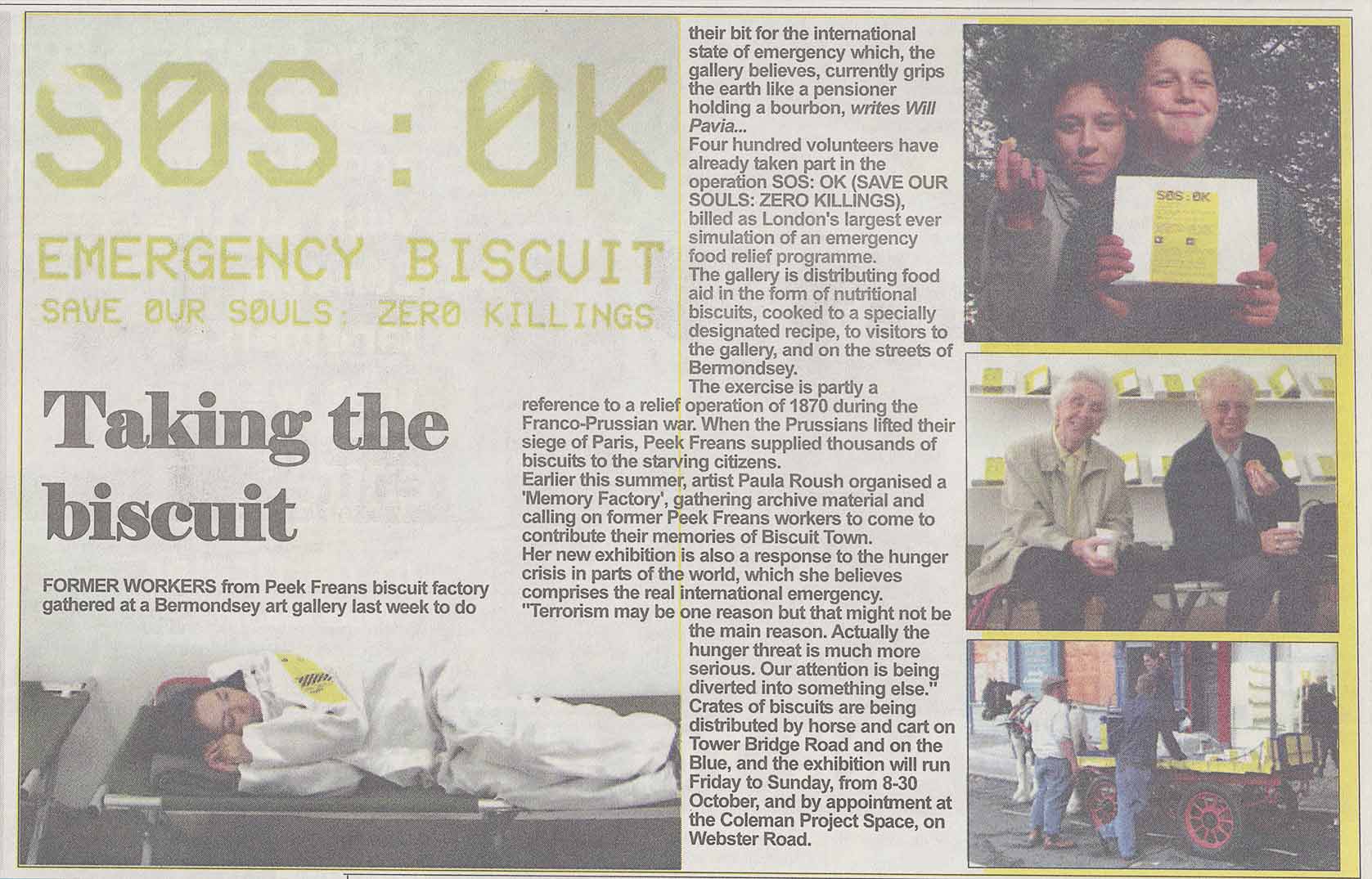
Former workers from former Peek Freans Factory gathered at a Bermondsey art gallery last week to do their bit for the international state of emergency (..) The gallery is distributing food aid in the form of nutritional biscuits, cooked to a specially designated recipe, to visitors to the gallery and on the streets of Bermondsey. The exercise is partly a reference to a relief operation of 1870 during the Franco-Prussian war. When the prussians lifted their siege of Paris, Peek Freans supplied thousands of biscuits to the starving citizens.
Earlier this summer, artist paula roush organised a 'Memory Factory' gathering archive material and calling on former Peek Frean workers to come to contribute their memories of Biscuit Town. Her new exhibition is also a response to the hunger crisis which she believes comprises the real international emergency (...)
Crates of biscuits are being distributed by horse and cart on Tower Bridge Road and on the Blue (...)
Annie Kelly, The Guardian, Society supplement
Bermondsey takes the biscuit Former Peek Frean employees back community
project
October 20, 2004
Bermondsey, in south-east London, was once affectionately known as Biscuit Town. Home to some of the largest biscuit factories in the country, it provided employment to generations of local families.
Now it's a very different story. The biscuit factories have closed, and many of their former employees are unemployed. The only businesses that come into Bermondsey now are the large property developers buying up old factories and turning them into gated residences for well-paid workers at nearby Canary Wharf.
But a group of former employees of the Peek Freen biscuit factory, one of the last to close its doors, in 1989, have reunited to give Biscuit Town a new lease of life. They were brought together by artist paula roush, who has won Arts Council funding to launch SOS:UK, a community project that explores the local heritage of deprived communities. roush invited ex-workers back to Peek Freen and has run a series of events celebrating the history of Biscuit Town. This weekend, the factory is hosting a mock emergency food distribution.
Continue reading here
Global Tour: Art Travel & Beyond
Book designed by Mircea Cantor as a companion to the exhibition at W139 Amsterdam
Preview here
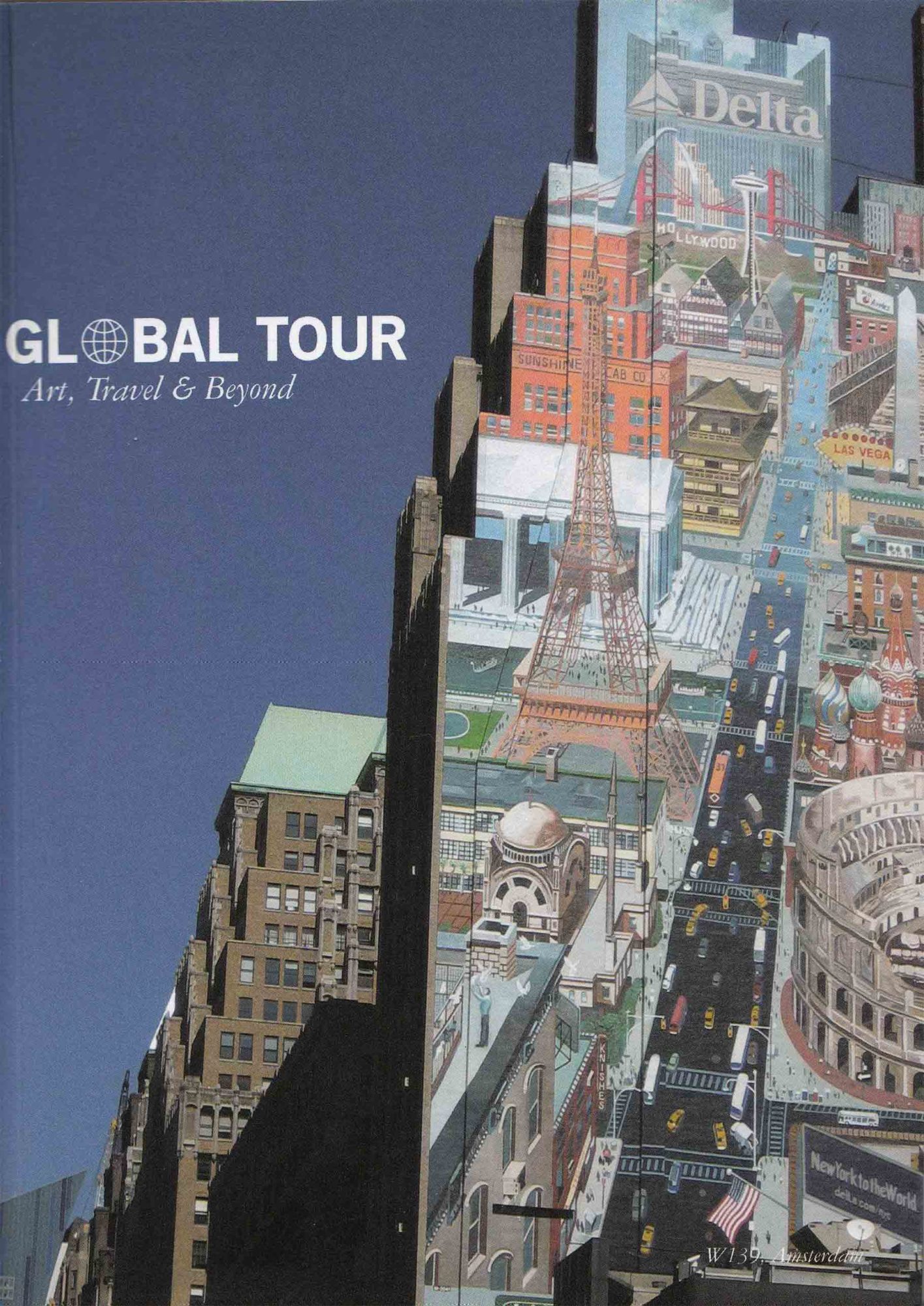
Global Tour
Boris Achour, Renaud Auguste Dormeuil, Zeigam Azizov, Davi de Balula, Alberto Baraya, Otto Berchem,Jordi Bernado, Candice Breitz, Mircea Cantor, Jota Castro, Coco Fusco, Meschac Gaba, Gerald, Hong Hao,IAT, Martin Krenn, Oliver Ressler, paula roush, Nika Spalinger, Manit Sriwancihpoom
Through its progressive development over the last two centuries, tourism has made a major contribution to our illusion of the world as a global village.
Destined to become the most important industry worldwide in the near future, it can be seen as an important metaphor of current cultural globalisation, as well as an extremely suitable area for developing critical approaches to the socio-economic mutations taking place across the globe.
Consequently, it comes as no surprise that many artists today are employing the language of tourism in their work, continuing an interest in tourism that has developed over the last couple of decades but working along different lines than the traditional approach.
The Global Tour project, initiated and conceptualised by French curator Amiel Grumberg (1980-2004) brings together the work of twenty international artists who have each developed specific projects around the issues of travel and tourism, their many manifestations and their consequences for contemporary society. Launched in 2003, the project consists of an exhibition and a series of artistic actions designed to establish a dialogue between the art space and its immediate tourist environment.
More about the exhibition here
3rd Dimension Magazine
Paradigm Store at Howick Place
23 October 2014
Paradigm Store, features works by seventeen UK and international artists. Strong themes of architecture and design run through the exhibition which explores issues of the decorative and the functional, through a range of site specific installations, large scale sculpture, paintings and film; many works have never been shown in the UK before.
(...) The viewer is immediately drawn in to paula roush’s complex, absorbing installation, ParticipatoryArchitectures (2014) which almost acts as a cri de coeur (fig.14). This work is based on the period after the coup d’état in Portugal in the early 1970s when there was a surge of utopian building projects and creativity. Then after the economic setbacks of 2008, Portugal began selling these communes to developers, effectively for land clearance. Here, laid out dispassionately on makeshift tables that span the room, are poignant photographs, objects and memorabilia that resonate with disillusionment. Roush’s bricks are a metaphor for construction /destruction and also challenge the government with rebellion. She creates individual collages of all forty-one houses on the Apeadeiro estate in southern Portugal, and with a bitter irony, wraps them in the same ribbon the government uses to fasten its official documents
Icon Magazine
Paradigm Store
4 November 2014
The area surrounding Victoria station in London is undergoing a £2bn makeover of which one of the professed goals is to transform it into a "cultural district". To that end, the owners of 1-5 Howick Place – one of many office buildings that have sprung up in the area recently – have temporarily given over five of its six floors to art consultancy HS Projects, which has curated two exhibitions for the 80,000sq ft space: Interchange Junctions, which ran earlier this year and explored the themes of migration, trade and colonial struggle, and Paradigm Store, which ends this week.
The current show brings together new and recent work by 17 emerging and established artists that examines the blurred lines between art and design, decoration and function. The curators – Alistair Howick and Tina Sotiriadi – have taken full advantage of the vast space, spreading sculptures and installations sparsely across each floor with consideration of the architecture and consciousness of passers-by's views into the building. (...) Other works explore global themes. paula roush's Participatory Architecture, is a series of photos, documents and found objects relating to a now-threatened social housing development build in Portugal after the end of the Salazar dictatorship in the 1970s, when modernist architectural projects flourished.
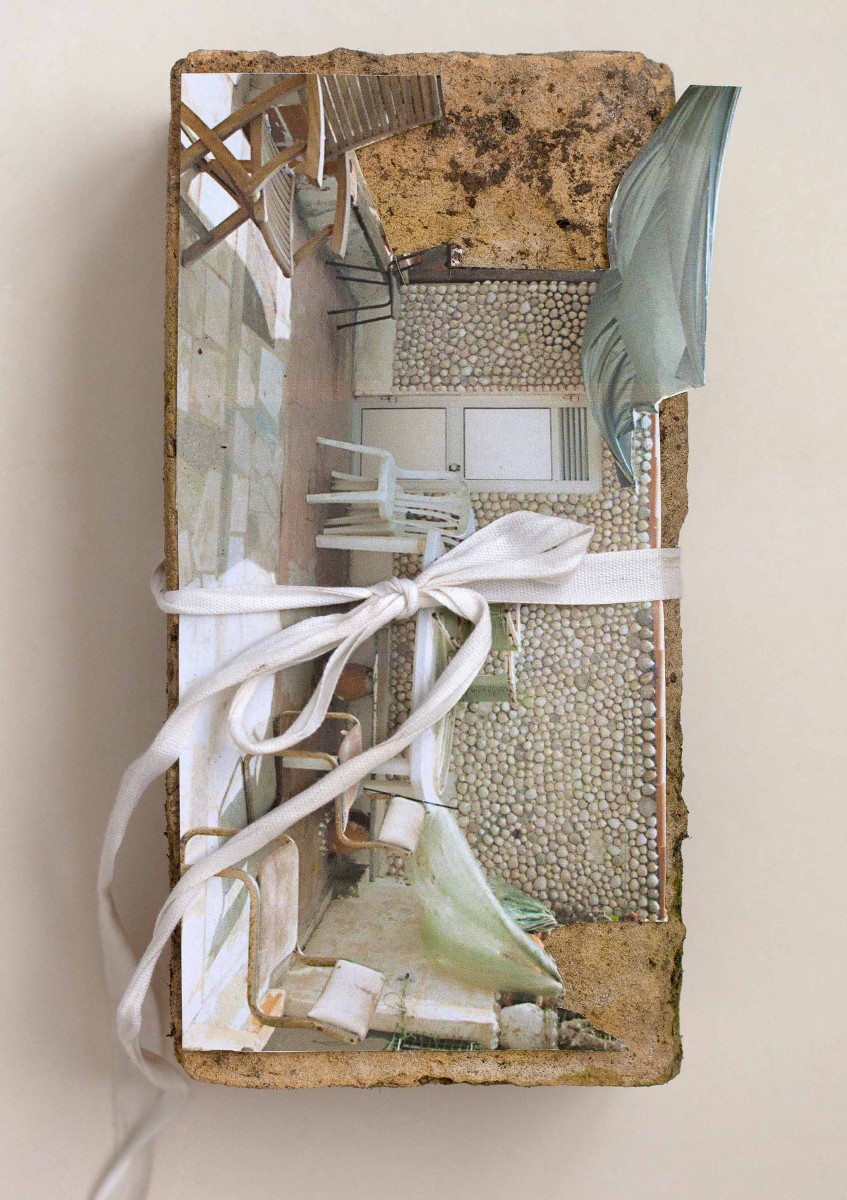
Order and Collapse: The Lives of Archives
With: Adam Broomberg & Oliver Chanarin, Leslie Squyres (Laura Volkerding Study Center, The Center for Creative Photography, University of Arizona), Jessica Bushey, Tyrone Martinsson, paula roush (Found Photo Foundation) and Peter Piller
Editors: Gunilla Knape, Niclas Östlind, Louise Wolthers, Tyrone Martinsson
Publishers: Hasselblad Foundation, Valand Academy at the University of Gothenburg, and Art and Theory Publishing. (part of Negative, a series of publications that critically review and analyse the practices, histories, and aesthetics of photographic culture)
The texts and artworks in Order and Collapse represent a selection of contemporary artistic and research-based approaches to existing archives, the act of collecting images and creating new archives.
The normative order and authoritarian use of conventional archives has long been criticised. This book explores the current digitally informed transformation and multiplication of archives with their increase in both accessibility and the amount of data produced, stored, and circulated. Despite improved search capabilities, documents – including photographs and other images – are in danger of sinking into oblivion. However, new knowledge, connotations and materialities are also emerging.
The text Chaos of memories- Surviving archives and the ruins of history according to the found photo foundation by paula roush is available through the London South Bank University Research Open Access Repository
Online art collection Infinite Multiple have enlisted msdm publications for its new range.
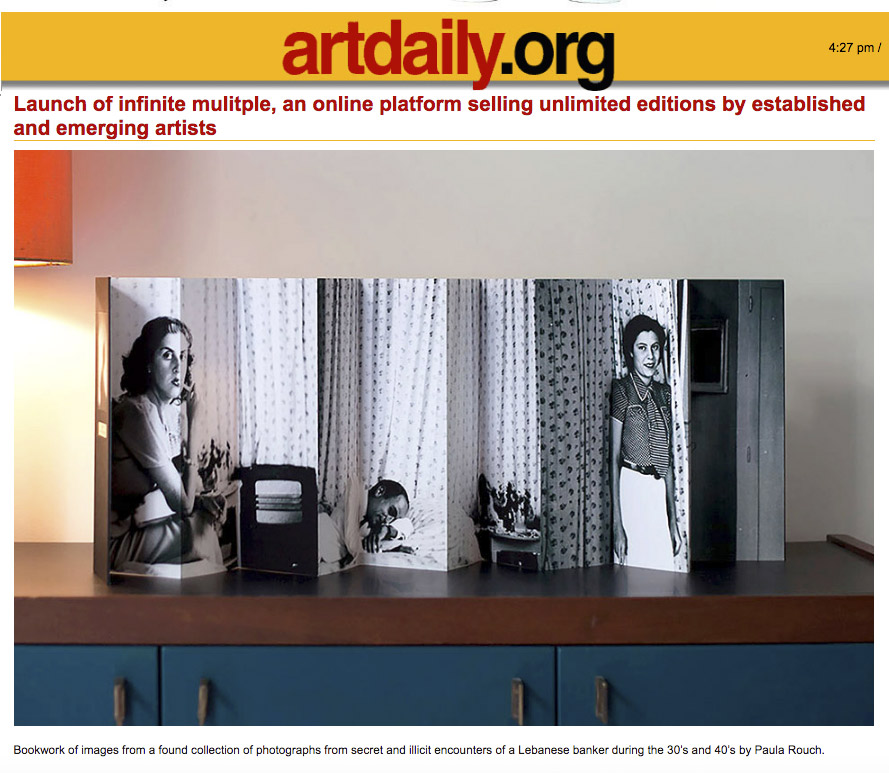
Infinite multiple is a new model for making and buying contemporary art; an online platform selling unlimited editions at accessible prices. Developed and managed by a London-based collective of artists and curators, the vision of infinite multiple is to widen the scope for owning and collecting art. The first set of 30 exclusive unlimited editions by 20 emerging and established artists is launched online at www.infinitemultiple.com on 1st September, accompanied by an exhibition at Carroll / Fletcher in London.
Read more here
Portuguese Small Press Yearbook 2017: Feminist editorial positions
Editors: Catarina Figueiredo Cardoso & Isabel Baraona
Unstable Media, constructions and disruptions [read here]
The Book Dispersed and Do It Yourself: Art by Instruction are two curatorial projects by Unstable media (paula roush, Margarida Carvalho, Ana Carvalho & Sofia Ponte), discussed in the article.
More about Portuguese Small Press Yearbook here
All Inked up
Book fair, symposium, workshops and exhibition
Kentʼs International Artist Book & Print Event
UCA Canterbury & The Brewery Tap Folkestone
curated by Rob Mcdonald/ container
13 October – 9 November 2017
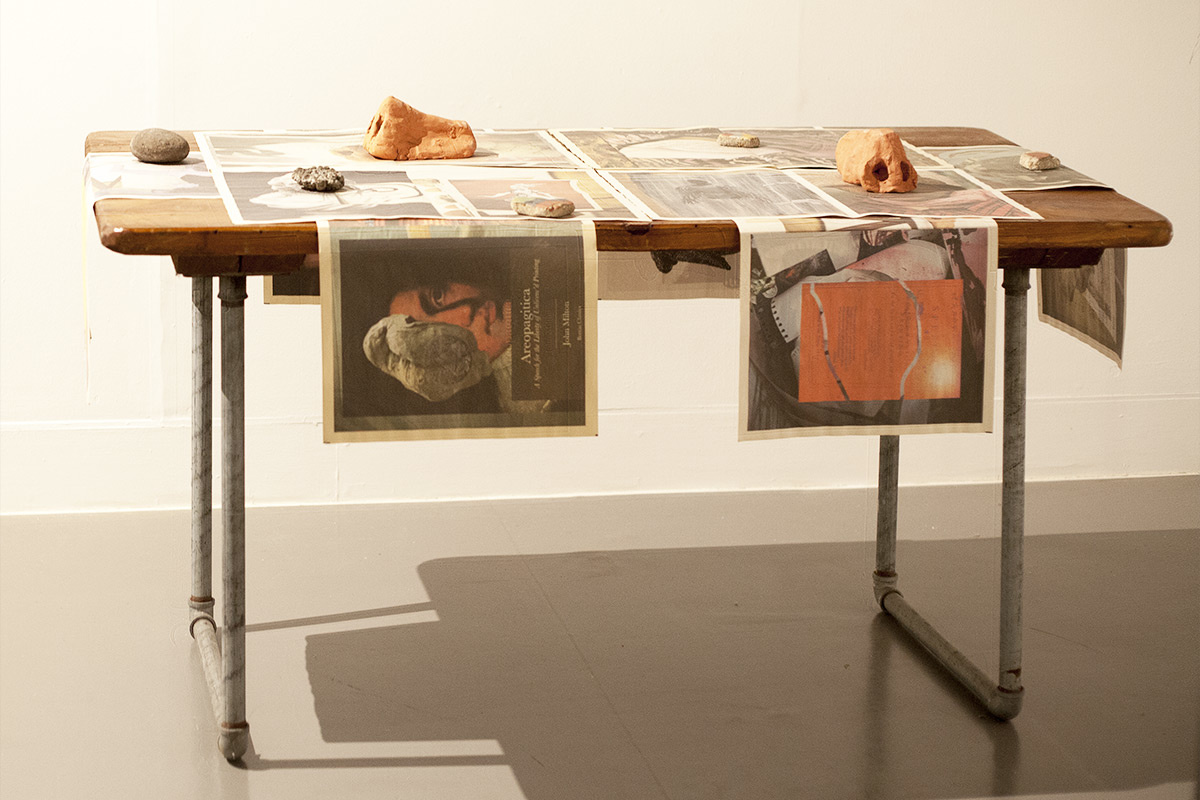
More about the exhibition here
Wayne Burrows writes in Backlit Gallery meets Nottingham Writers’ Studio: When writing and visual arts meet, magic can happen
Nottinghamcityofliterature.com, 9 April 2018
Backlit Gallery and Nottingham Writers’ Studio recently joined forces to organise An Introduction to Art-Writing, a series of workshops led by Wayne Burrows aiming to bring together all those in Nottingham with an interest in the connections and overlaps between writing and visual art in the city. Art-writing is probably most familiar in the form of exhibition reviews and essays on particular artists’ work, and while we are certainly covering that in our workshops, there are plenty of other possibilities and approaches worth exploring.
A good example of a work in which art criticism becomes art in its own right, Queer Paper Gardens, or The Wildlife of Symbols – a collaboration between the Portuguese artists paula roush & Maria Lusitano – explores the history of collage through the work of its female practitioners, from Mary Delany’s scientifically precise cut-paper botanical illustrations of the 1700s to Valentine Penrose’s surrealist Dons De Femininesmade in 1951. The beautifully produced five volume publication borrows its format from a 1934 edition of Max Ernst’s collage novel Une Semaine De Bonte, but uses the artists’ own collaborative photography, collage and drawing to highlight a less familiar path through the history and meaning of the medium itself
Selected to be part of PRINTed #4, ə/uh/-books project space participated in small-format fair dedicated to the field of singular publications, understanding this to include all kinds of editions that contemplate the idea of the book in the broadest possible sense. An arena for the publications generated through experimentation and research within the confines of the studio to be disseminated further afield, in the professional setting of a book fair.
PRINTed is generated from within an educational environment, with the aim of generating links between different centres from around the world where teaching and research is undertaken in the fields of printmaking, editions, and design.
PRINTed #4 is curated by Enric Mas and Jo Milne
Espai Cultural EINA Barra de Ferro
EINA Centre Universitari de Disseny i Art
UAB Autonomous University of Barcelona April 2018
Further info about the event here
Full PRINTed publication here
Taking part this year are: London South Bank University / University of Leeds (UK) / Wild Pansy Press / University for the Creative Arts. Canterbury. Kent (UK) / Llotja Escola Superior de Disseny i Art / Facultat de Belles Arts de la Universitat de Barcelona / Metàfora. Barcelona / EINA. Centre Universitari de Disseny i Art de Barcelona (Adscrit a la UAB).
paula roush: Decomposition and Other Large Scale Works
09 – 23 December 2017
UN8 London
-
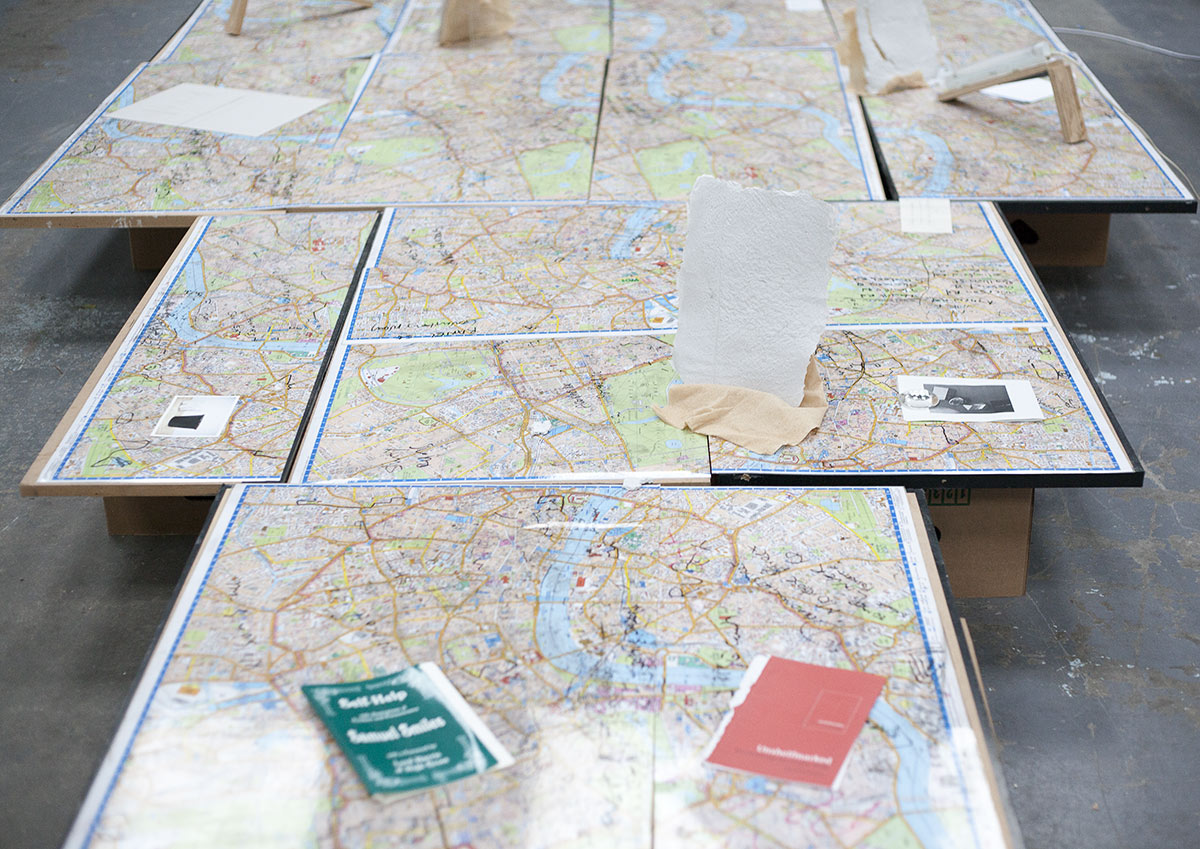
- THE BEAUTIES of DECOMPOSITION, 2017, exhibition view, Hand-made paper specimens displayed on annotated London maps and school desks from Taxi Driving School
-
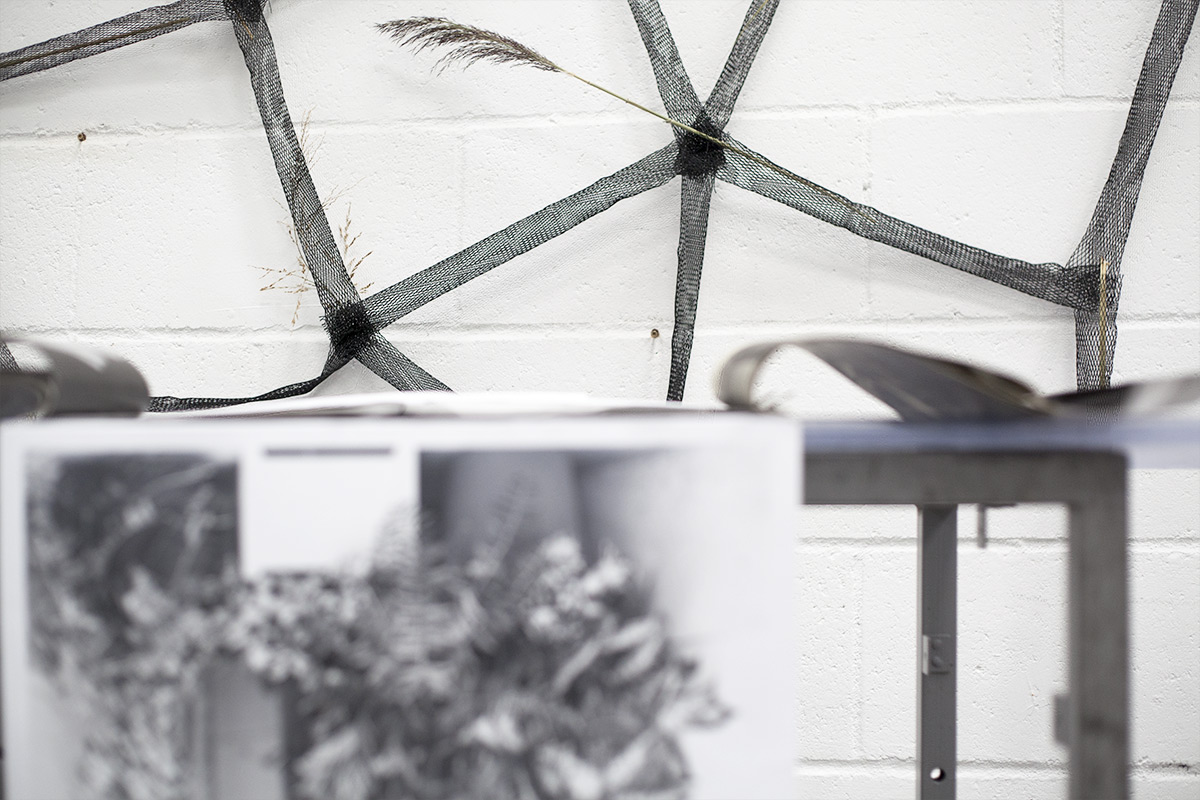
- Lisbon Vernacular, 2017, Varied papers including Corona offset 120gsm, Variable dimensions, Closed approx 44x 31 cm, exhibition view, Decomposition and Other Large Scale Works, UN8 London
SKALA Gallery , Poznan, Polland
Booki. Studying Photobooks
Curated by Jarosław Klupś & Honza Zamojski ( University of the Arts in Poznan
Selection of books by: Victoria Rowena Browne - Kunsthøgskolen, Oslo/ paula roush - London South Bank University/ Olja Triaška Stefanović - Vysoká škola výtvarných umení, Bratislava/ Vladimír Birgus - Institut tvůrčí fotografie, Slezské univerzity v Opavě/ Linn Schröder - Hochschule für Angewandte Wissenschaften, Hamburg/ Jarosław Klupś - University of Art in Poznań.
November 25 – December 2, 2017
[press release] [Booki LSBU-catalogue of photobooks] [ Booki poster ]
URBANAUTICA presents the catalog of 'Blurring The Lines', curated by Steve Bisson & Lisanne van Happen, coordinated by Paris College of Art with the support of FOTODOK. The aim of the Blurring The Lines is to select, exhibit and publish projects that are a representation of the rapidly changing field of photography. It is also the opportunity to show why photography is an important medium in creating new perspectives on the world we live in, and on difficult issues we have to deal with. This year, the competition saw the participation of 17 Photography schools worldwide, amounting to 72 projects of outstanding quality. The works are exhibited at PCAs' Espace 15 during Paris Photo this November. photography lsbu is represented by Elizabeth Prestland's
BLURRING THE LINES
Date: November 8th, 2016
Time: 18:30
Where: Paris College of Art
Address: 15 Rue Fénelon, 75010 Paris, France
Urbanautica in collaboration with PCA (Paris College of Art), Plateforme,Filmessay, University of Arts London and Berliner Technische Kunsthochschule
- talk by Steve Bisson (founder of Urbanautica);
- videoart screening session with Katerina Athanasopouloiu, Rob Carter, Theo Tagholm;
- opening of the exhibition 'Blurring the Lines' co-curated with Francois Ronsiaux.
Read more about the full programme from HERE.
-
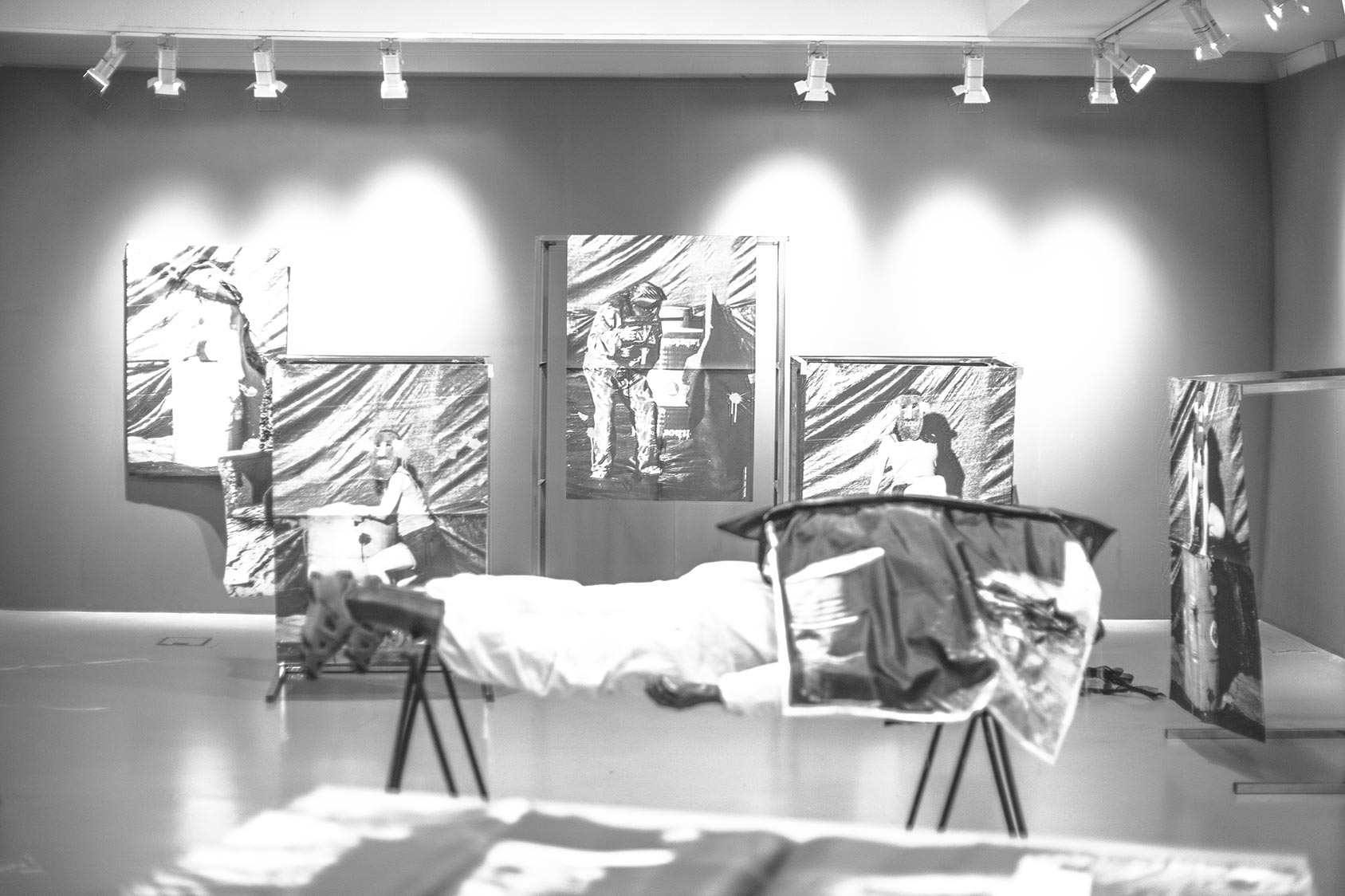
- PAINTBALL FIELD Monochrome xerox prints on paper and fabric shot (two tones) with a paintball gun (GBH collab) with props, installed on metal, foam and and wood structures Installation views of the exhibition PAINTBALL FIELD (3,06 billion cycles per second) Red Gallery at AMAC Barreiro
-
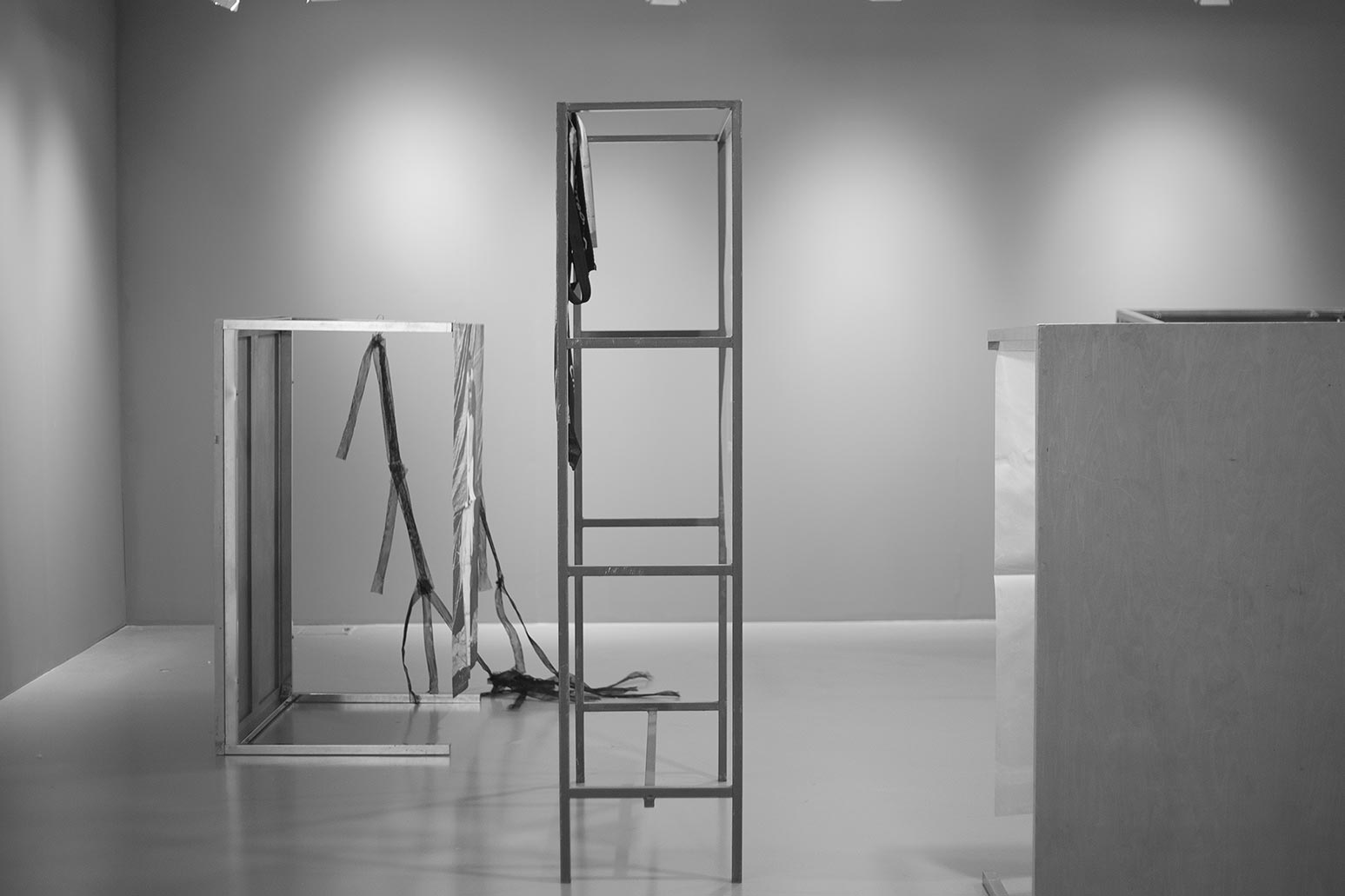
- PAINTBALL FIELD Monochrome xerox prints on paper and fabric shot (two tones) with a paintball gun (GBH collab) with props, installed on metal, foam and and wood structures Installation views of the exhibition PAINTBALL FIELD (3,06 billion cycles per second) Red Gallery at AMAC Barreiro
-
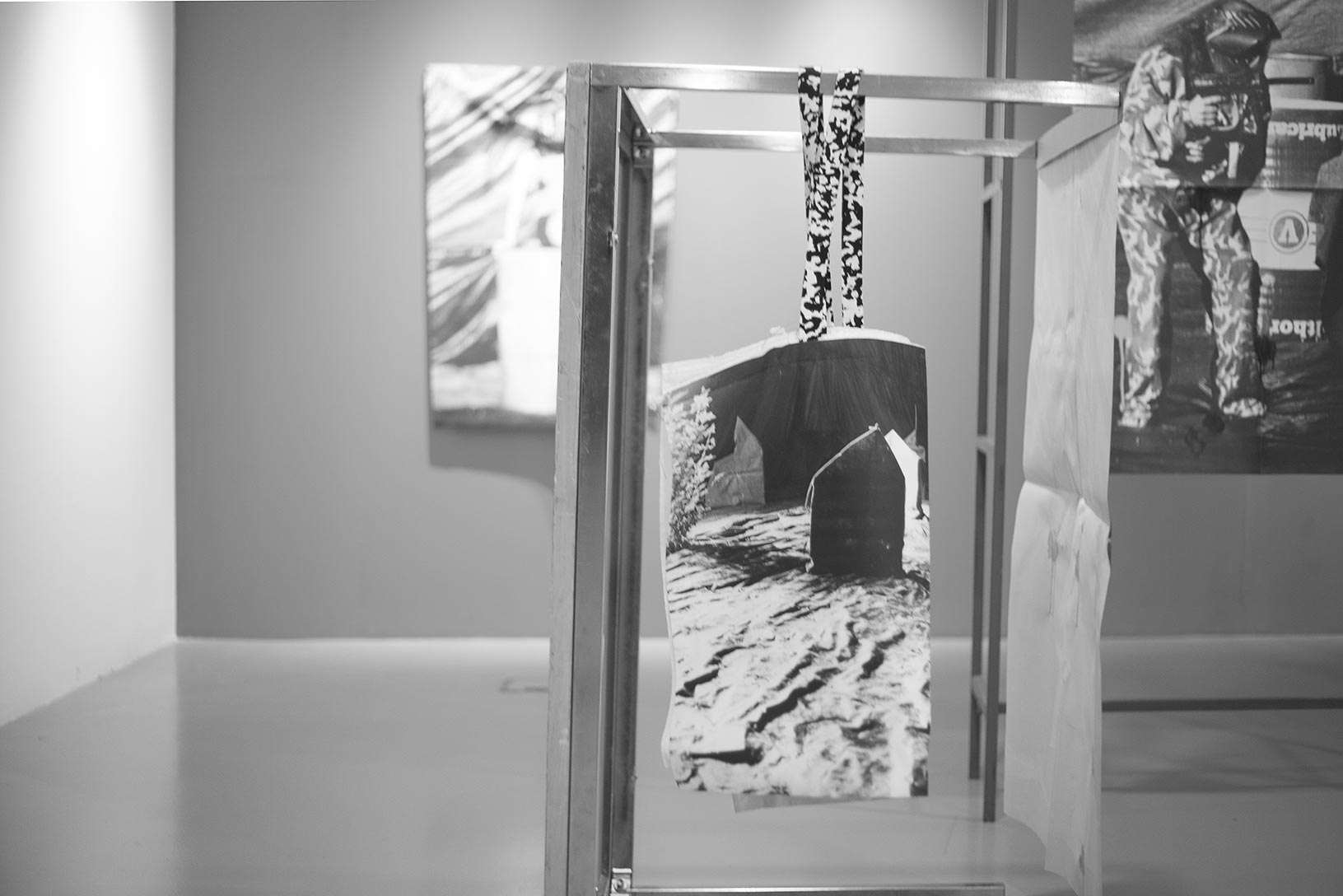
- PAINTBALL FIELD Soft Portfolio bag 60x 85cm White woven polypropylene sack with greyscale linen Paintball photo-print Twin shoulder carrier handles in yellow+black camouflage motif rubber Extra-long interior compartment 120cm 85cm open
-
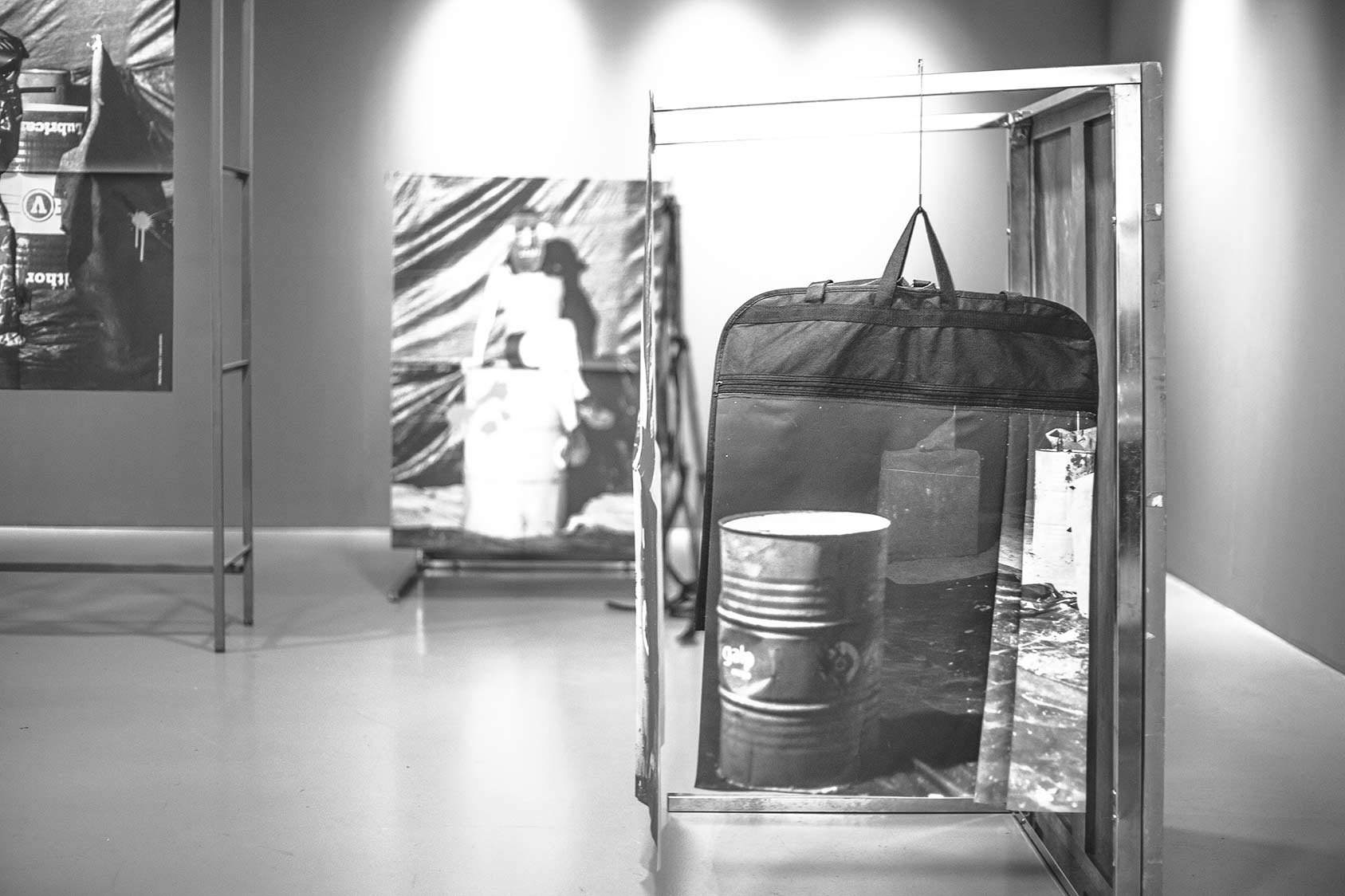
- PAINTBALL FIELD WEA Skirt-bag, Paintball field rubberised linen pleated photo-print 59 x 56 cm On Black non-woven poly garments bag with interior Zipped compartment 98 x 57 cm open Twin hand and shoulder carrier handles Created for the exhibition PAINTBALL FIELD (3,06 billion cycles per second) Red Gallery at AMAC Barreiro
Atelier 3|3 is preparing the 4th edition of ZineFestPt, will have place in 1, 2 and 3 november 2018, at Mira Fórum e livraria Mundo Fantasma. It will happen at Porto, Portugal, but integrates the concept and practices developed in other ZineFest that happen around the world - to show the culture and the accessibility of the creation and acquisition of self and/or independent editions.
Thursday 4/10/2018 - 15.20 - 17.00 K2-VG06
Guest Lecture: Things we do, things we're planning to do
Daniel Alexander/ Adam Brown/ Paula Roush/ Dave Lewis/ Simon Terrill / Katrina Sluis & TBC - Franklyn Rodgers/ Ian Atkinson
we have been busy... over the last year we have been exhibiting in the UK and abroad, curating, making, writing, publishing, planning future exhibitions and much more. This guest lecture slot will introduce you, or update you, to the range of work being produced by the people teaching you at the School of Arts, and outline the things that we are excited about for the future.
Only members of Photography course may attend. If you would like to attend as a guest please contact paula:::: roushp@lsbu.ac.uk
Carpark Magazine #12: an exploration of FEAR
Art Director: Philip Groth-Tsaparilas
Editor: Constantine Tsaparilas
Preview here
Photographic silkscreen prints on Fabriano paper, mono and duotones
wall installation, 24 prints, with 5 film acetates, 242 cm x 340 cm
shelf installation, 16 busts with folios, 22cm x 458 cm x 20 cm
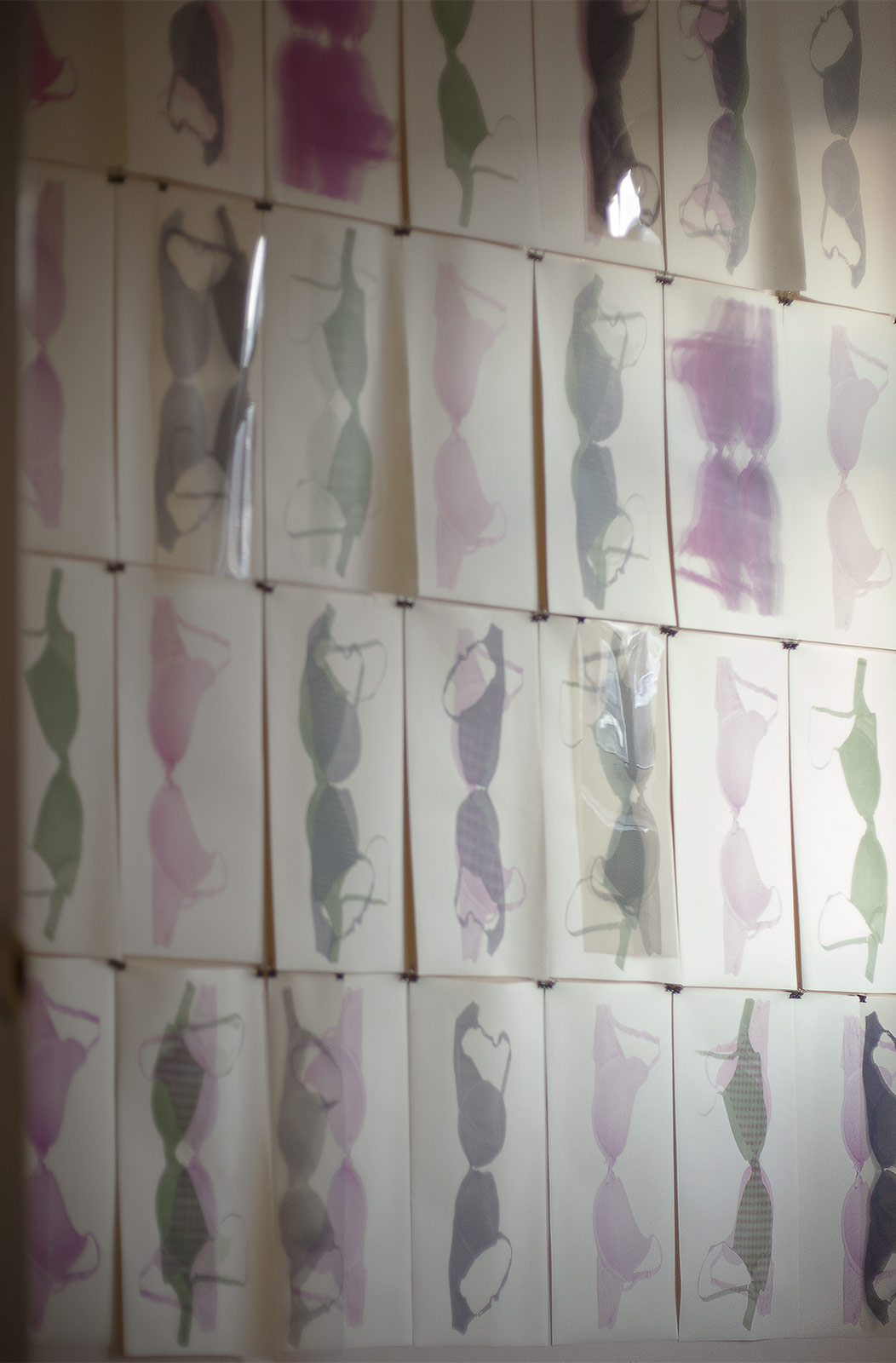
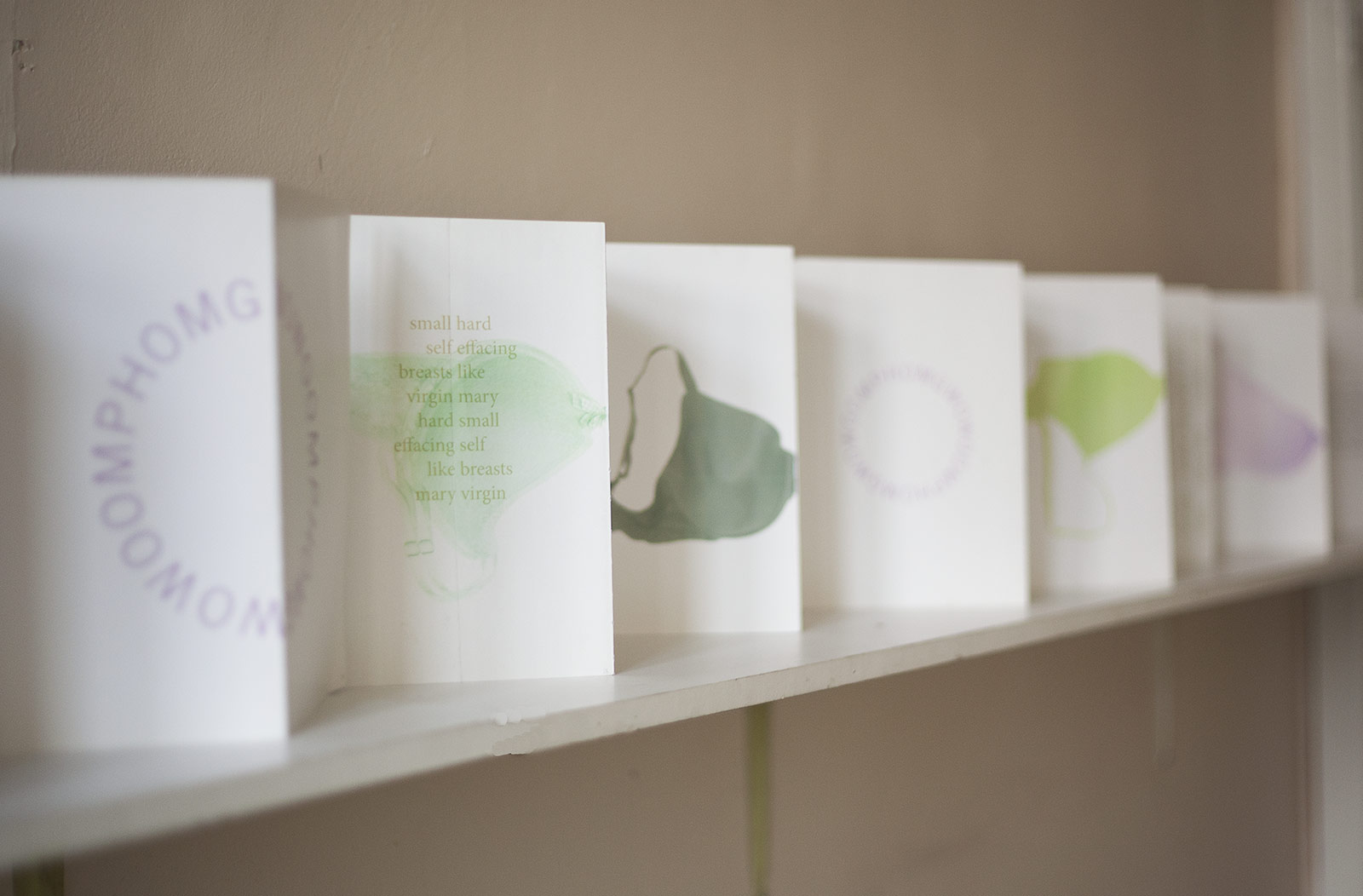
Photobookwork
Tender Cups (10 found bras with 10 poems about absent breasts)
54 pages, 16,75 x 24cm (folded)
Book block: Colour laser print, monotone process on157gsm matt paper, unbound
Loose folios: 10 photographs and 10 visual poems in 20 folds + assorted inserts
Cover: silkscreen print wrap on 200 gsm fabriano paper
Edition of 1
Tender Cups contains two collections: "Found Bras" and "Absent Breasts". Whilst the photographs of bras are presented as mono and duotone prints, the textual elements are visually composed as breasts-sentences that supplement the absence of bodies from the printed pages.
TENDER CUPS, installation, msdm studio, Whitechapel 2017
Sources:
-visual: 10 bras found on the street and individually photographed in the genre of studio portrait. Processed in photoshop and printed in different sizes and substrates using xerographic and silkscreen printing
-textual: 10 poems on absent breasts, with words sampled from a range of discourses from autobiography, testimony, art history, medical case studies, lingerie advertising, feminist and queer gender studies and social media.
-title: hommage to Gertrude Stein, 1914 Tender Buttons
As a visual object that adopts the form of the book, TENDER CUPS doesn’t fit into neat book categories (as a photobook or a literary book) the same way ‘breasts’ destabilise binary definitions of genre/sexuality, and fit/healthy bodies. Format and binding invoke the chest in a non-binary way, both symmetric and assymetric, flat and three-dimensional.
Post-digital Publishing and Story-telling in the Photobook
ARTS LLIBRE WORKSHOP
Contemporary print culture: the post-digital practice specifically applied to publishing
'Medium as practice' approach:
Narrative procedures for story-telling focused on the medium-specific elements of the book
(1) design
(2) physical interaction and
(3) engagement with vernacular publishing practices
Nave Arts del Llibre ESDA LLotja, seu de Sant Andreu Barcelona
20/04/18 18:30 h.
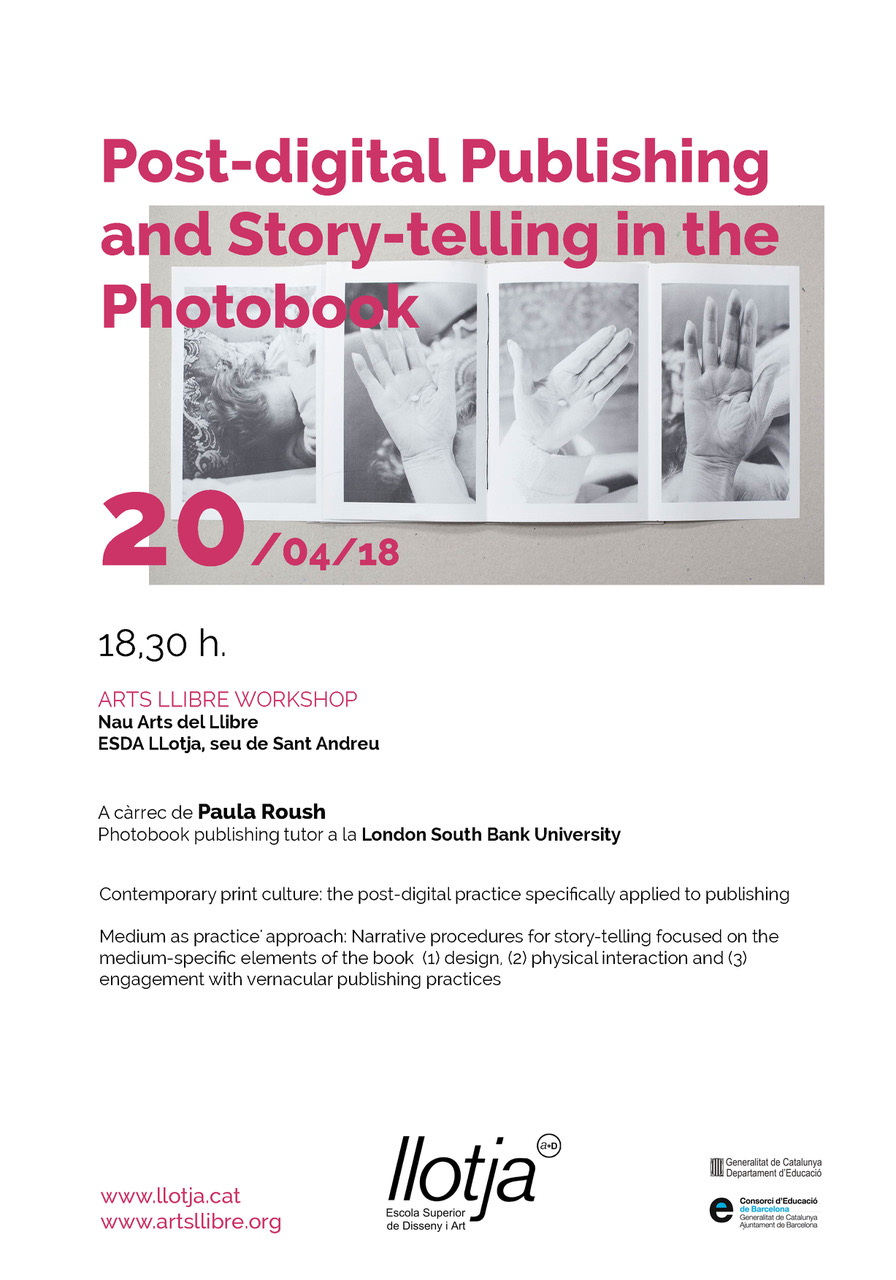
The exhibition comprises works of four artists who work within the boundaries of the Artist Book, outlining the diverse nature of the book format, from sequential narrative to mapping and code to installation and interactive pieces. The common thread of the book is also expressed in the artist’s production methods through various print methods and sequencing within their work.
Bookwork
The Beauties of DECOMPOSITION
Vitrine installation
Unbound exhibition views, Herbert Read Gallery, Canterbury
By the gallery entrance, a museological display case contains The Beauties of Decomposition, collaboration with Michael Hampton. Concept-specific paper is a refined substrate in the world of the artists’ book. The logic of the work is materially inscribed in the fibres of handmade paper. In the case of The Beauties of Decomposition, the paper’s meaning is derived from ‘The Book Dispersed’ project. This special edition contains a paper specimen composed of pulp from the abortive funding application for ‘The Book Dispersed’ an exhibition devised by the collective Media Instaveis/Unstable Media I am part of, blended with pulp from Michael Hampton’s magnum opus Unshelfmarked: Reconceiving the artist’s book (author’s copy), together with extra pulp from Samuel Smiles’s Self-Help (a print on demand copy purchased on eBay). The book, dedicated to the late Auto-Destructive artist and activist Gustav Metzger, is a work about dispersion in the form of a conversation between scattering and collecting/organising.
At the centre of the exhibition are four new editions of Flora McCallica. These works- two hanging installations and two books on display tables- have historical and biographical references, mixing orphan photographs dated 1958 found in the Lisbon flea market, and botanical specimens from an herbarium dated 1920s discarded by London Kew Gardens. Like pieces of evidence altered by the passage of time, the silkscreen and stone lithography prints have stains and patterns that are unique to each print.
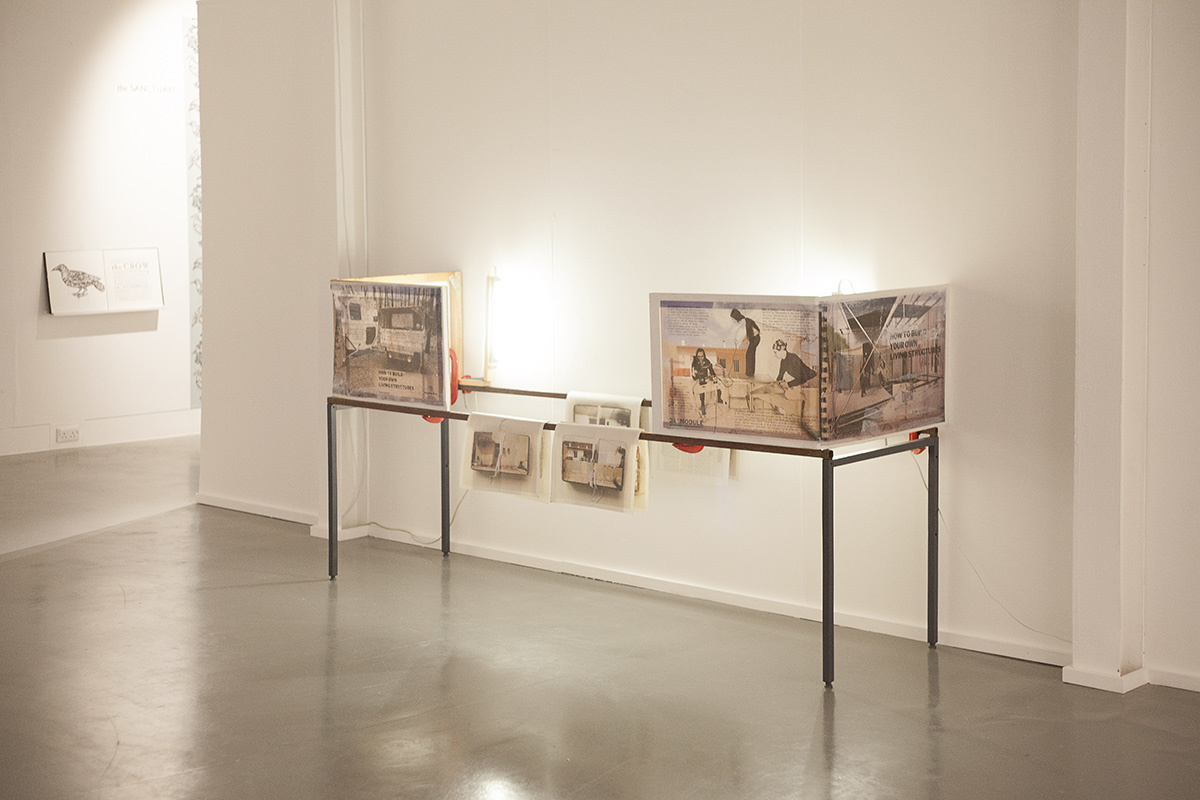
Participatory architectures (how to build your own living structures) 240 x 120 x 70 cm sculpture made of two oversize book covers (photographic digital print on canvas, wood binding), newspaper Participatory architectures, 12 pages, colour, photography on newsprint, 29cm ×38 cm, metal structure base, two linear lights with fluorescent tubes, wiring. 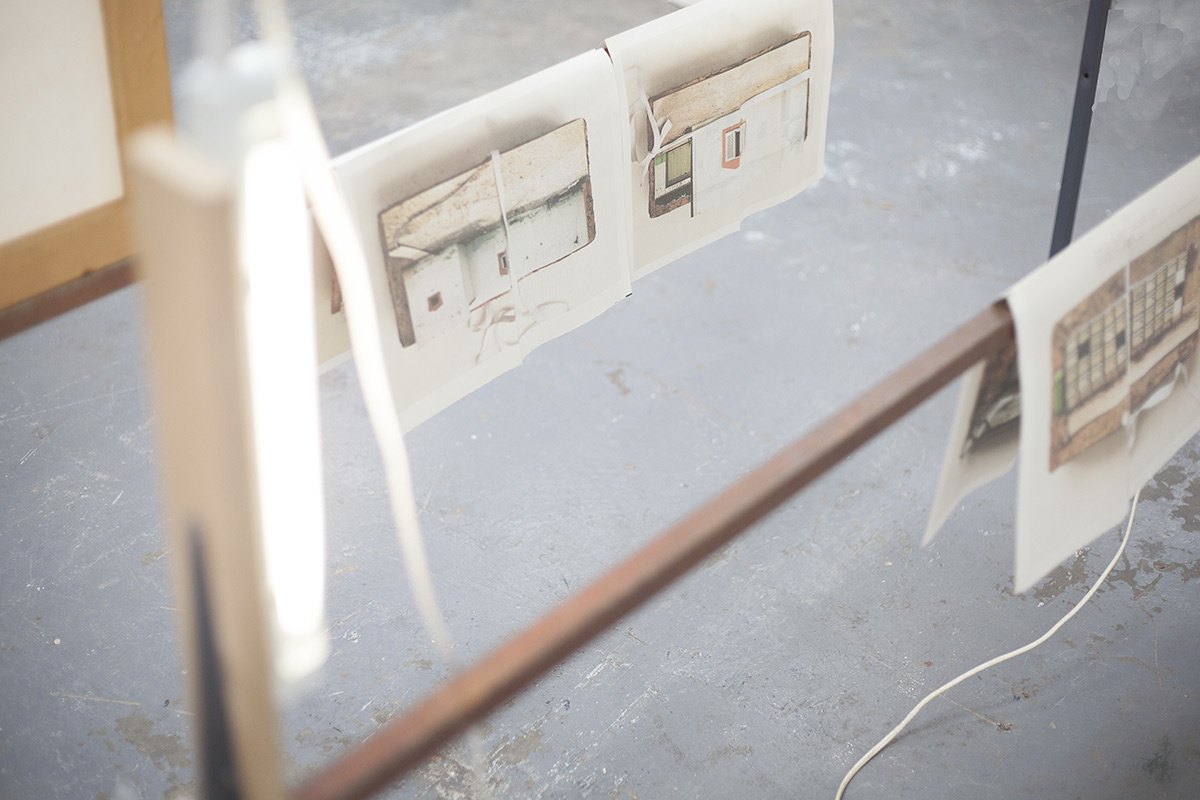
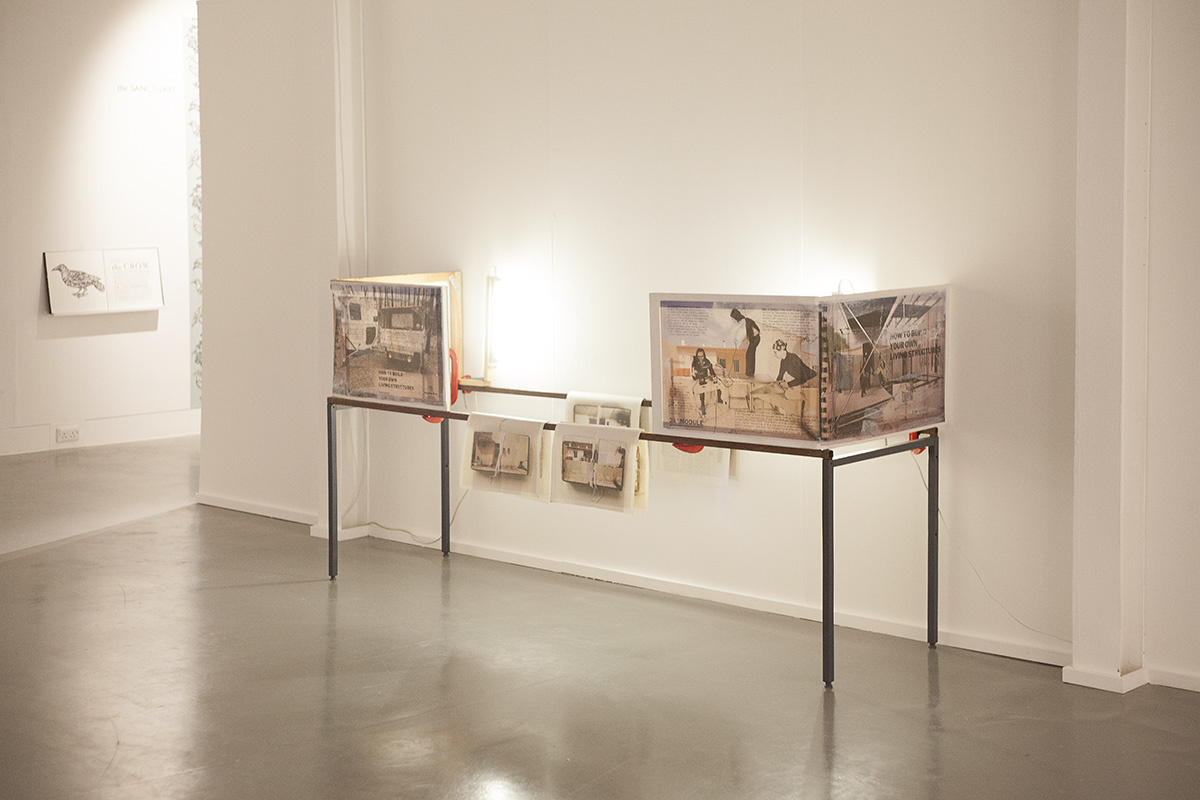

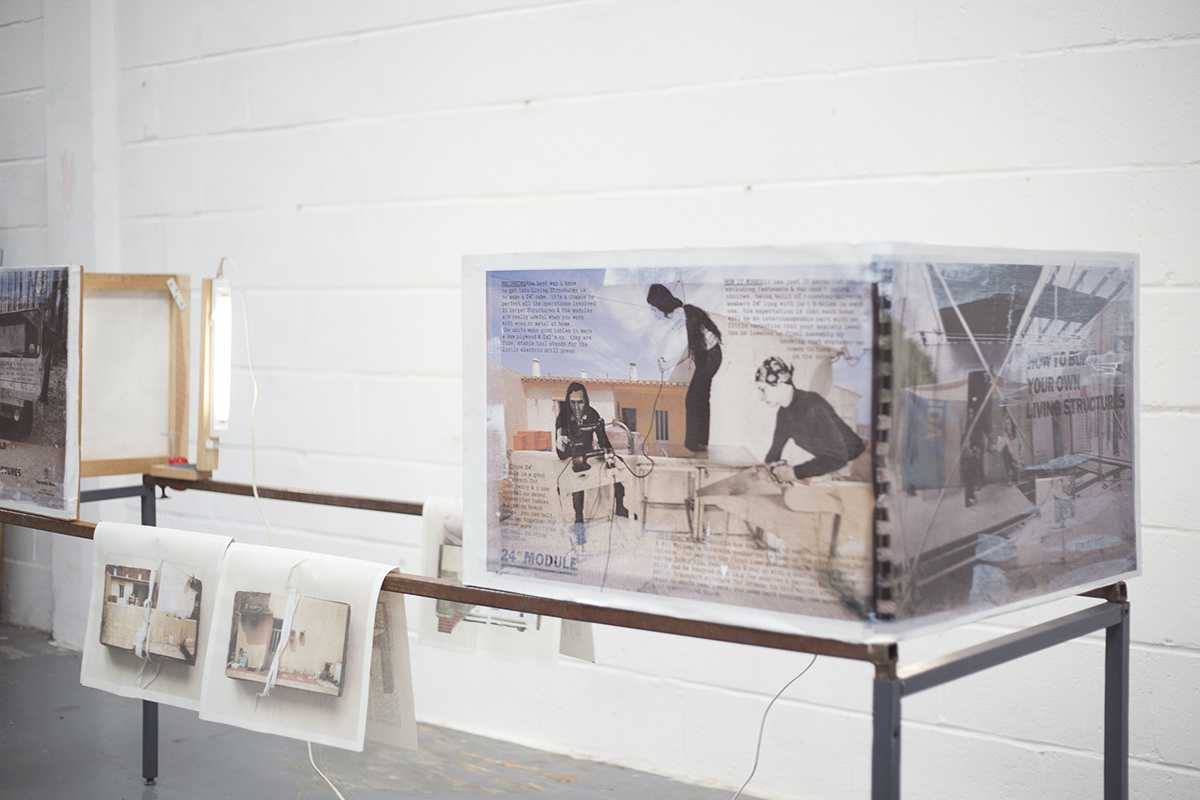
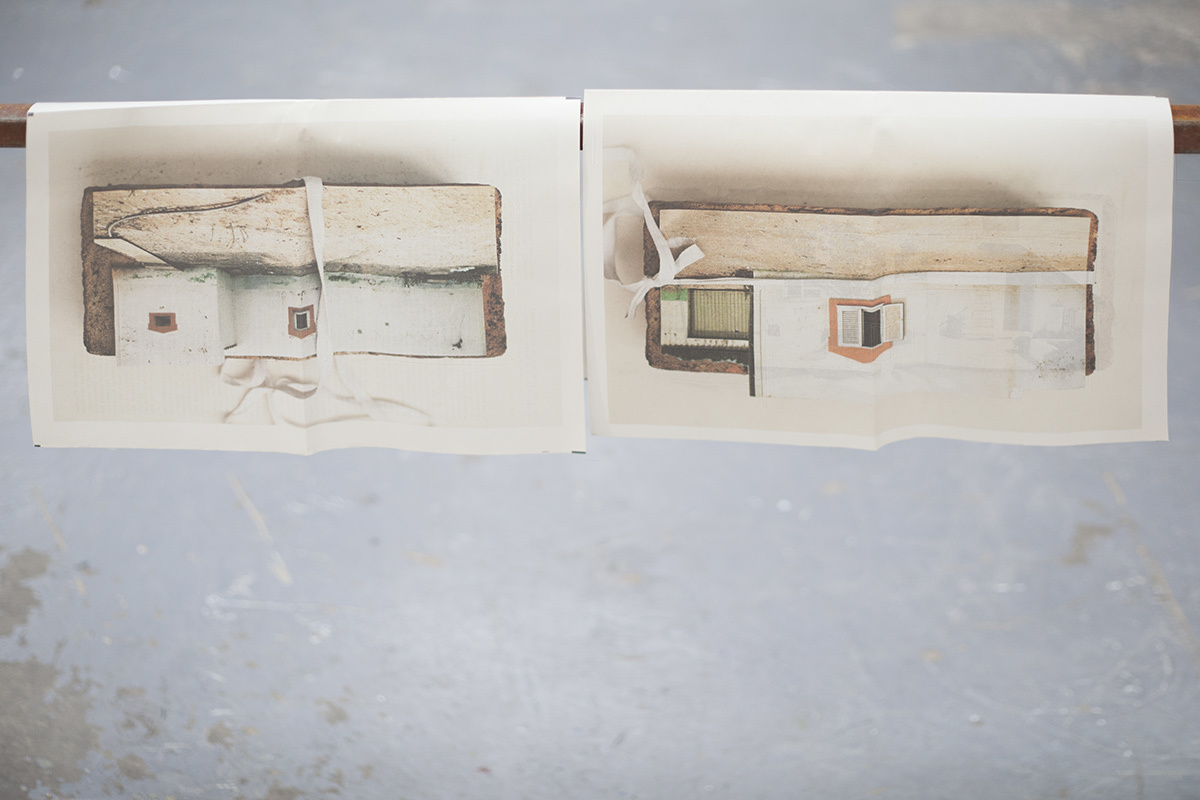
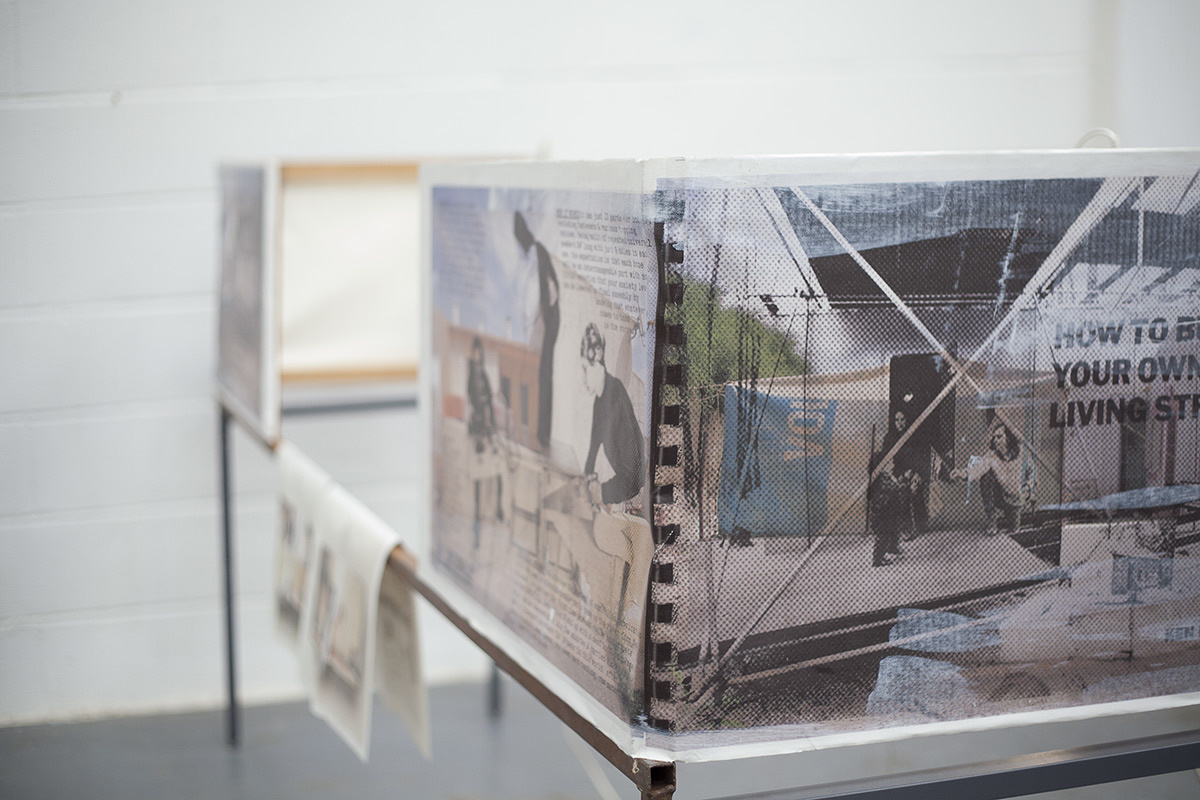
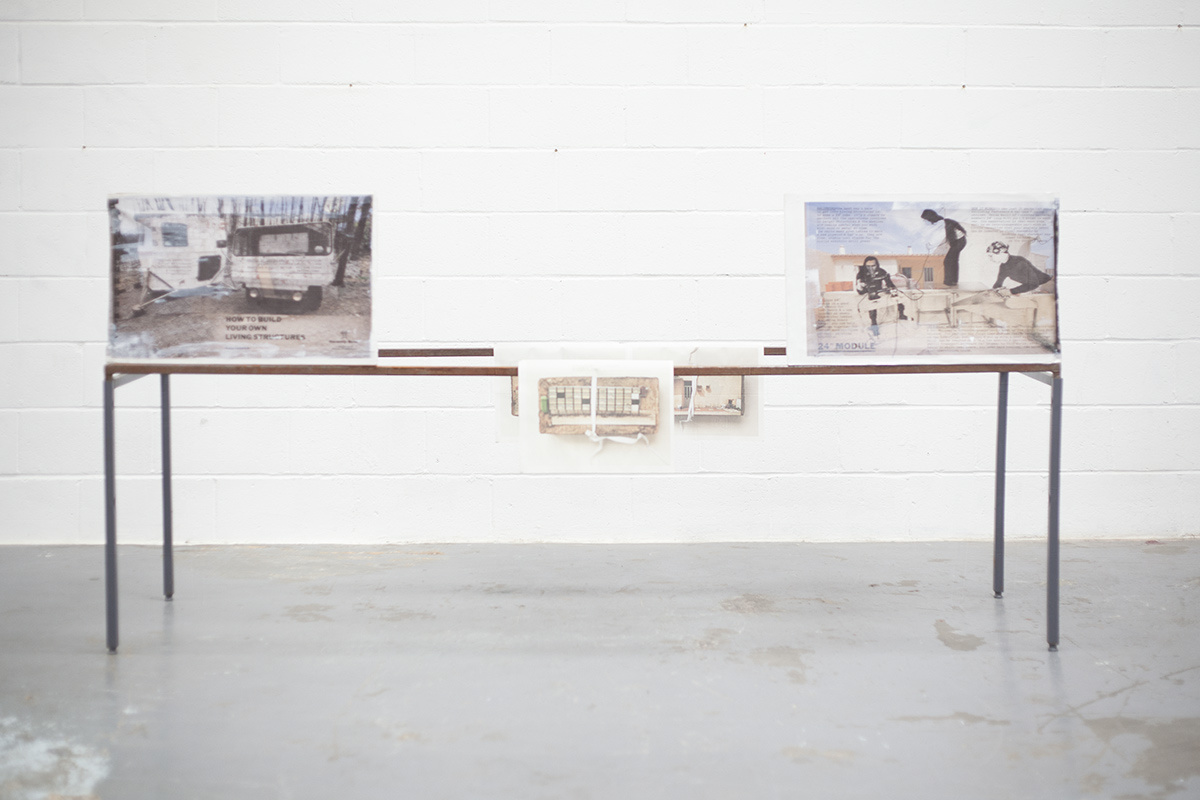
Another work recreated for this exhibition is Participatory architectures (how to build your own living structures), a work inspired by the outdated remains of a 20th century architectural utopia, a village developed as part of national housing project code-named SAAL, the experimental programme of peoples’ right to place emerged in the short experience of participatory democracy during the Portuguese revolution. The sculpture includes two oversize book covers referring to the Self-build movement in Portugal and the USA, and the newspaper The past persists in the present in the form of a dream (participatory architectures, archive and revolution) documenting a SAAL village facing extinction.
Areopagitica (Milton’s Nose) is a table assemblage with self-published newspaper and clay noses created by students at St. Paul’s School ceramic studios. Through collage, studio portraiture and found material, the work references two earlier self-published pamphlets: John Milton’s 1644 Areopagitica and David Bomberg’s 1919 Russian Ballet.
Unbound: David Faithful, Jo Milne, paula roush & Print City
October 20 – November 9, 2017
curated by Rob McDonald
Herbert Read Gallery, University for the Creative Arts Canterbury
[artists' statements] [ All Inked Up programme newspaper] [gallery website]
[supsystic-gallery id='2']
msdm publications – now based at UNit8 in a warehouse that used to be a print workshop by the Bow Locks/ River lea- joins neighbouring Contemporary Lynx Magazine and BFLMPSVZ publishing at the Hive Studio–a performance and project space located in a Victorian factory, where we present our publishing projects with punctual performances and talks. The programme is part of Hackney WickED Festival, the Hackney Wick & Fish Island Open Studio DIY in London.
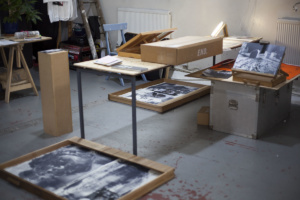
Installation view, msdm publications, Summer of Love, Hive Studio, 2017
SATURDAY, 29 July
12:00 pm – 2:00 pm meet Contemporary Lynx Magazine team
2:00 pm – 3:00 pm Agnieszka Szczotka: performance
3:00 pm – 4:00 pm Unizin Release by Bflmpsvz publishing and presentation
5:00 pm – 6:00 pm Eliska Kyselková, talk and presentation her work
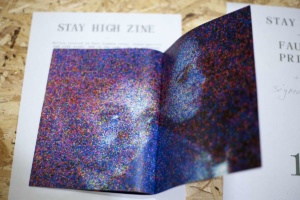
Installation view, BFLMPSVZ publishing, Summer of Love, Hive Studio, 2017
SUNDAY, 30 July
12:00 pm – 1:00 pm Stanislav Briza´s Stay High and Stay Hackney Wick project presentation
1:00 pm – 2:00 pm msdm and paula roush presentation
2:00 pm – 3:30 pm Coffee tasting with Bartosz Ciepaj
3:30 pm – 5:00 pm Magda Buczek talk on her project Surplus and video presentation of her works
5:00 pm – 6:00 pm Experimental music with Polanski (Urbanum, B L A N C) using CORE SOUND SYSTEM
More info: press release
Collage and collision An artistic collaboration around the dances and counterdances of gender, retrieves collage as a mode of associating images
Celso Martins, Expresso Atual Magazine 2013
One of the most interesting aspects of the artistic production of Maria Lusitano (1971) over at least the last ten years has to do with the fact that, in most cases, we do not have a name to define exactly what it is she presents. None of this has to do with sacramental question "Is this art?" or any doubts related to the type of support that she uses- typically the video. With Lusitano, we have a genre problem. Her constructions are too fictional to fit simply in the documentary field, whilst too informative to have that arty condition that rests the usual observers with the routine expectations typical of contemporary art .
"Queer Paper Gardens'' a collaboration with paula roush, Portuguese artist based in London, is no exception. In fact, it is an intricate installation that combines and intertwines countless ingredients (drawing, collage, photography, furniture, objects , video , etc. ) but, in effect, what makes it complex is not so much the profusion of materials used but the logic overseeeing it.
In the centre of this tension we find two works: "Une Semaine de Bonté," a book in seven chapters edited by surrealist Max Ernst in 1934, and "Dons des Féminines," composed in 1951 by surrealist poet Valentine Boué Penrose in response, through the same means of collage, to Ernst’s book. But if Ernst associated a set of images where the feminine element was consecutively subjected to violent abuse by men or monstrous beings that were clearly male, Penrose’s implicit answer generates a pattern of the feminine placed outside the domestic space, open to travel and the unknown, and that is, on the contrary, an image of power and emancipation.
Without ever getting entangled in the ease of an obvious feminist rhetoric, "Queer Paper Gardens'' is organized around this tension that infects each of the seven steps of installation (an allusion to the seven days of the week used by Ernst). The result is not just a revisitation of collage’s creative device associated with Dada and Surrealism as an experiment dated and historically situated, but a reflection on the survival of that mechanism in the contemporary. Firstly, we need to say that the installation itself works like a huge collage, if we think that it associates different nuclei that in this association never lose its integrity. Additionally because, as in collage, the creative process herein tends to converge references that appear to come out of watertight worlds but which are able to meet and generate sense.
Let’s consider the drawing of large dimensions in which female homoerotic scenes intertwine with in images of architecture or fashion of different historical times, or the collages that use nineteenth century illustrated magazines manipulated in a way that gives them a behavioral and cultural meaning well beyond the one they had in their epoch. Or, in a central position to all this, the film takes the title of the exhibition, which is both a documentary about Valentine Penrose and her world and a bold stream of cultural signs contaminated by the question of the genre, stretching back to Victorian epoch or travel until the "Snow White" of Disney, or the cult film " the Hunger" by Tony Scott.
If, as Max Ernst himself once suggested, it is not the glue that defines collage, then what survives of it today is a certain idea of the visual thinking in network, where the images are associated in infinite combinations. Maria Lusitano and paula roush use this mechanism to illuminate ghosts, find affinities or detect collisions between things
Hala Tawil report to the Arab mage Foundation, Beirut 2015
paula roush residency with the Arab Image Foundation
Artist and lecturer paula roush was born in Lisbon and lives and works in London. roush teaches both art theory and practice at the London South Bank University and the University of Westminster. She operates in the fields of installation and publishing, where her work is positioned in relation to ongoing developments in photography, particularly the dialogue between analog and digital. These concerns emerge in the interplay among photo collections combining found, orphan and DSLR-produced photographs, where they constitute a critical, socio-political and aesthetic investigation of memory. She aims to bridge the gap between biography, the everyday and the archive.
Between June 22nd and July 3rd 2015, roush was welcomed as an artist-in-residence at the Arab Image Foundation. She was granted access to all the Foundation’s facilities with the intention of creating works informed by her readings of the photographic collections and her practice as an artist working with found photographs in both print and installations. roush’s residency in Beirut was made possible by The Centre for Media and Culture Research, London South Bank University.
Using materials present at the Foundation, roush’s method enforced limits and guided her process. It is ultimately reflected in her work’s aesthetics, layout, materiality, format and the juxtaposition of text and image. She describes her methodology as working through fragments collected in a limited time-frame. Stepping back and distancing herself from her projects, roush ultimately returns for further investigation and reflection after an allocated time has passed. The works roush produced fed off conversations, chance encounters and coincidences occurring within the space of the Foundation. She allowed her presence to guide the production process as it further structured and shaped the resulting works.
Points of interest:
Portuguese presence
- roush approached the Foundation with what she described as a safety net: an ongoing interest in traces of the Portuguese presence in the collections of the Arab Image Foundation. This dovetails with her previous works and ongoing research on the subject.
- She was able to identify 10 relevant images on the in-house database and requested to view them in their physical format.
The Database
- roush re-visited the AIF in-house database in light of the content of the binder: images evoking sexuality, relationships, and the female figure, as well as a text by Dore Bowen: The Bridge Called Imagination: On reading the Arab Image Foundation and Its Collection.
- Intrigued by the format and the interface of the database itself, paula even noted its malfunctioning “glitches and crashes”.
- roush also collaborated with a Collection Management volunteer whose duty was inputting keywords.
- The volunteer attributed keywords to the otherwise unprocessed images in the EPS binder as roush recorded the suggestions. The process began systematically, although it developed into free-association as the volunteer “began drifting into the images and thinking out loud”.
“Questionable” content: EPS Collection
- Another point of interest for roush was “questionable” photographic content, what could be described as “sleazy, sexy, seedy and inappropriate”.
- She was directed to the contact prints of the EPS collection, assembled in two binders for consultation in the AIF public space.
- Due to the depiction of various intimate scenes and the inclusion of nude photographs in the collection, concerns arose regarding privacy of the photographer, and the subjects in the photographs.
- It should be noted that the collection has not been scanned, and the identities of those appearing the photographs remain undocumented.
- paula roush managed to meet EPS, interviewing him about the context of production of the images.
The Photograph as sculpture/object/image
- Upon viewing the initial images with keywords linking them to Portugal, roush became intrigued by the process of setting up and staging images for photographic documentation.
- roush then delved into the Al-Yom, collection of the personal research of the editor in chief of the national newspaper, influenced by the year 1975 (on 25 April 1974 which overthrew the regime of the Estado Novo.
- roush paired 85 photographs she had taken of objects from the Al Yom collection to sections of text from a book given to her by Sabbag on Beirut - A L'Ombre d'Une Ville (1993)
- roush also photographed the unprocessed collection of Bayroumi, a Studio Photographer from Saida, Lebanon who worked in the seventies.
- Not removed from their plastic encasings paralleled themes of privacy.
Talk
Overview on her practice as an artist working with photographic collections, most specifically the Found Photo Foundation
Discussing the method of accessing material at the Foundation: the EPS binder.
Displaying photobook “dummies”
Through roush’s work we understand the process of researching a photographic collection as a subtle negotiation of understandings. It is seen as the practice of acquiring and documenting photographs, the dialogue between digital and analog formats, the controlled environment of preservation, as well as conversations, accidents, and mere chance encounters within the space housing the collection.
To leave is a bit like dying
Maria Caudia Bada, comments on nothing to undo 2015
To leave is a bit like dying. And to be reborn again -I would suggest- as I experienced many times under my skin. We have this ancient saying in Italy, a country that -like Portugal- historically experienced a large hemorrhage of souls going abroad, tired of their own country for too many different reasons. All these new aliens were plunged into totally different emotional and cultural shores, which started to mirror back, almost instantly, broken images of their once almost established selves. As the reflections on a multiple, shining surface, this photobook by paula roush reverberates of meaningful fragments aiming to pair into coupling doppelgängers, following the farewell journey from Sweden of her friend, Maria Lusitano, stretching along the past (Portugal), the present (Sweden) and the future (UK).
What comes out of it are quite humorous, original and scary pieces of contemporary Swedish reality, intermingled with personal and political memories. Ghosts from the past and the present macro and microcosms seem to populate this trip between Malmö and Stockholm. The migrant and/or trespassing identities present in the images separate alchemically into halves to be found and reconstructed as in an exciting treasure hunt of meanings, involving intimacy, current Sweden affairs and social policy, eerie landscapes. You can certainly recombine freely the photos and create your own personal path within the book, like skilled and imaginative hands playing Tarot. Or just sailing linearly through the pages and let the fragments speak their language to you.
I let myself merge and separate, again build, again overlap and stratify and decompose the images and the coupling doubles I kept on finding in the book and...I had to start again. And again. And again. What have I found? Nothing to undo. Each time a sense of wonder and discovery. Each time, irreversibly, a new piece of my alien self, attaching emotionally to paula and Maria’s double and fragmented journey. Have a good voyage into it, then. I am sure you will enjoy the whole trip(s).
download the (12 pages A5 zine) pdf here
BLAME YOUR PARENTS: DOING IT YOURSELF WITH VINTAGE FILM CAMERAS AND GOOD OLD PAPER ZINES a presentation by Amy Warwick is out now, part of ə-books #3 zine
Presentation by Amy Warwick at the Photobook Pop-Up, London Road, May 2016; Recorded with iphone 6 and transcribed from .mp4 into a word.doc
I got into film photography just before starting my photography degree. I like messing around with cheap film cameras I find on EBay. I met a friend of a friend one day just pottering around in Shoreditch, he was using an Olympus mju ii, which I now use a lot. I got talking to him and looked at his work, he concentrated a lot on street and documentary photography. I really like it and used him as inspiration to get into this style of photography.
I follow a lot of other film photographers who use point and shoot cameras on Instagram and they all seem to be making zines. A lot of photographers seem to be getting their work onto print. I looked closely at their zines and their work and decided to create my own zine filled with 35mm film documentary and street photography. I think it suits a zine really well, analogue photos onto print instead of digital photos on a screen.
I had four months to shoot and I didn’t really know where to start. I decided to take a completely different approach to this than my other projects, I’d usually try to think of a bunch of ideas and go with the one that I think is the best. For this project I just started shooting anything I saw that I thought was interesting when I was out and about with my friends. It sort of turned into taking photos of drunk people, I liked the look of it so I went with it.
I shot the whole thing on an Olympus mju ii. One of the reasons I chose it was because it’s so concealable and easy to get into places where flash photography is banned. On the street I’ve found that people get a bit intimidated when you ask for a photo and you’ve got a big DSLR set up, with an mju ii they don’t always even noticed I’ve taken a photo of them because the camera is so small.
The zine is kind of like an archive of my life at that time. My parents used to use point and shoot film cameras in the late 90s to document my sister and I growing up. It’s cool to look back on, to scan the negative and see all the grain in the photo. For me I can pick my zine up in the future and it would be a funny thing to look back on, mostly photos of my friends messing about, out and about in different clubs.
The zine just developed into the last four month of my life I guess. At the same time, it’s a documentation of this whole party life thing, documenting this group of people who are young adults but not quite mature, they’re still into the whole teenage lifestyle of drinking, partying.
I think this fits well with the punk aspect of the zine. Kind of doing what you want the photozine to be because it’s yours, anyone can make a zine. Making zines is definitely something I want to go into some more, maybe make a series.
I like the idea of the analogue photos and the kind of analogue presentation. It’s not on a computer screen, it’s physical, in your hands. Same as when you get the negatives back from the lab, they give you the prints and you can feel them. A lot of my favourite photographers do stuff like this, shoot on film and make zines - Cheryl Dunn, Ed Templeton, Deanna Templeton. They still shoot analogue and get their photos onto print.
I love the aspect of the photobook, especially zines. They’re so cheap to make, I used cheap film from a poundshop, cheap paper. It’s a really cheap way of getting your photos out there.
Almost all of the photos in the zine were shot in Brentwood, Essex. It’s different to how Essex is portrayed and it’s different to the stereotype that Essex has. I didn’t specifically have the location in mind while shooting though, more youth culture. You can look at the zine and it could be any British town. The content is something that most young people can relate to, everyone kind of does the same thing when they’re young, no matter where they are from.
I really struggled with the sequencing of the book, so I just put it together with the photos in chronological order. The photos were in order of the times they were shot and I tried to stick to that as much as I could, and then rearranged it in a way that I thought looked more pleasing. I wanted to have it in order so that I could look through it and the photos were in the order that the events happened. I rearranged it in a way that it wouldn’t seem too repetitive.
In terms of self-publishing, I’ve just advertised the zine mostly on social media. I follow a lot of people who make zines and do this sort of thing, so there’s already an audience there. I want to get in touch with bookshops and try my luck there. I definitely want to try and get it out there.
A lot of the zines I looked into for research were black and white, mine is colour. I used colour film so I had the option to make the zine full colour or black and white. I was quite adamant at first to go with black and white to fit in with the stereotype of the zine and the original zine before colour was about, but when I tried both black and white and full colour, I preferred colour. Some of the colours came out quite nicely, I think it would have ruined it a bit if I put it in black and white.
That’s one thing I really like about film, the photos don’t always come out exactly how you want it. You get light leaks and the photos don’t always turn out how you think they will. When you get the negatives back, it could be completely different to what you saw. I like that about film, you have to work with what you’ve got.
I named the zine ‘Blame Your Parents’ because of the first photo inside. I took a trip to Brighton one weekend, I wasn’t planning on shooting for the zine but I shot on my mju ii with the zine still in mind anyway. I was walking though The Lanes and saw ‘Blame Your Parents’ spray-painted on the wall. I stood there for about 10 minutes waiting for all of the people there to move out of the way so I could get a quite shot, it was a busy weekend and there were a lot of people around. I got a photo of it and it fit in well with the zine and the youth culture aspect of it, so I put it in and name the zine Blame Your Parents.
Amy Warwick: Blame Your Parents
Photography and design: Amy Warwick
Laser printed on Fabriano paper 120gsm
Edition of 50
Amy Warwick is a student in the Photography (BA Hons) course at the London South Ban University. Blame Your parents is her second zine, created during the 2nd year photobook module and presented in the Photobook Pop-Up Shop, London Road, May 2016. It features in Foyles selection of photozines available at the Charing Cross branch.
Marwan El Tibi
paula roush fait revivre les archives du journal Al-Yom
Alayam Magazine
Beirut October 2015
It is a work of precision, the artist photographer paula roush accomplished with Antoine Sfeir of Plan BEY and the Arab Image Foundation to present us "Torn, Folded, Curled", the exhibition which was held from September 23 to 26, 2015 at Makan in Beirut.
A short history of unrecoverable photos ...
"Torn, Folded, Curled" is the status given to unrecoverable pictures. Those which can neither restore or scan. The only way to keep them is to photograph, explains paula roush, photographer artist, researcher and teacher at the London South Bank University.
It was by pure chance that Paula had the opportunity to work on a small part of the photo archives of the Journal Al-Yom, abandoned after a long journey through the history of the civil war in Lebanon. For these photos, from archives impeccably kept by Al-Yom house founded in 1937 by Afif El Tibi, there was no indication the first trauma when the site of the Al-Yom newspaper was dynamited in 1975. Those who were saved found themselves stored in a West Beirut apartment, who also had its share of misery when in 1989 during the war of "liberation", an incendiary shell came violently to disperse their ranks.
At each stroke of fate, their number decreased, and the losses ceased being counted... Torn, Folded, Curled ... personal archives and those of the newspaper were mixed, other family albums were joined to the batch. In the end, it's a pile of yellowed old photos and judged to no good but to throw in the garbage, left behind after yet another move, which attracted the attention of the then Director of the Arab Image Foundation, which collaborated with paula roush. This time fate was on the good side, it gave them the opportunity to reveal themselves, to attract curiosity again and show off in daylight. They now belong to the Heritage ... what an honor!
Antoine Sfeir Plan Bey and paula roush released a selection of these photos coupled with phrases from Elie Pierre Sabbag's book "The shadow of a city", printed on paper Favini Le Cirque 80g. A lovely memory book to keep. Once again put to the shelter in the premises of Al-Ayam magazine, other photos are waiting, full of hope for better days that they also allow them to tell their story ... again. Another story, now linked to the archives of the newspaper Al-Yom, was also revealed by the exhibition at Makan through undeveloped photographs which belonged to banker RS. The images that come out of the never before developed films, amongst which naked women appear very comfortable on camera, show the Beirut of the years 50-60. They amaze, amuse or shock, depending. They especially do their work, that of preserving forever a proof that Lebanese society knew, some time ago, how to be happy.
[original french version]
C’est un travail de précision, que l’artiste photographe paula roush a accompli avec Antoine Sfeir de Plan Bey et la Fondation Arabe pour l’Image afin de nous présenter “Torn, Folded, Curled”, l’exposition qui s’est déroulée du 23 au 26 Septembre 2015 au Makan à Beyrouth.
Petite histoire de photos irrécupérables…
«Torn, Folded, Curled» est le statut donné aux photos irrécupérables. Celles que l’on ne peut ni restaurer ni scanner. Le seul moyen de les conserver est de les photographier, comme l’explique Paula Roush, artiste photographe, chercheuse et enseignante à la London South Bank University.
C’est par un véritable hasard que paula a eu l’occasion de travailler sur une infime partie des photos des archives du Journal Al-Yom, abandonnées après un long périple à travers l’histoire de la guerre civile au Liban. Pour ces photos, issues des archives impeccablement tenues par la maison Al-Yom fondée en 1937 par Afif El Tibi, rien ne laissait présager le premier traumatisme subi lorsque les locaux du journal Al-Yom sont dynamités en 1975. Celles qui ont pu être sauvées se retrouvent stockées dans un appartement de Beyrouth Ouest qui aura lui aussi son lot de misères lorsqu’en 1989, au cours de la guerre de « Libération », un obus incendiaire vint violement disperser leurs rangs.
A chaque coup du destin, leur nombre diminuait, on ne comptait plus les pertes…Torn, Folded, Curled… les archives personnelles et celles du journal se mélangeaient, d’autres albums de famille venaient se joindre au lot. Au final, c’est un amas de vielles photos jaunies et jugées bonnes pour la poubelle, laissées pour compte après un énième déménagement, qui attirent l’attention de la Directrice de la Fondation Arabe pour l’Image avec laquelle collabore paula roush. Cette fois le destin était du bon côté, il leur a donné l’occasion de se révéler, d’attirer la curiosité à nouveau et de s’exhiber en plein jour. Elles appartiennent désormais au Patrimoine…quel honneur ! Antoine Sfeir de Plan Bey et paula roush ont publié une sélection de ces photos couplées à des phrases du livre de Elie-Pierre Sabbag « L’ombre d’une ville », imprimées sur papier Favini Le Cirque 80g. Un charmant ouvrage de mémoire à conserver.
Une nouvelle fois mises à l’abri dans les locaux du magazine Al-Ayam, les autres photos attendent, pleines d’espoir, des jours meilleurs qui leur permettront elles aussi de raconter leur histoire…une fois de plus. Une autre histoire, désormais liée à celle des archives du journal Al-Yom, fut également révélée par l’exposition au Makan à travers des photographies non développées ayant appartenu au banquier Elie-Pierre Sabbag. Les images qui en sortent, dont des femmes nues paraissant très à l’aise devant l’objectif, montrent le Beyrouth des années 50-60. Elles étonnent, amusent ou choquent, c’est selon. Elles font surtout leur travail, celui de conserver pour toujours une preuve que la société libanaise a su, autrefois, être heureuse. -
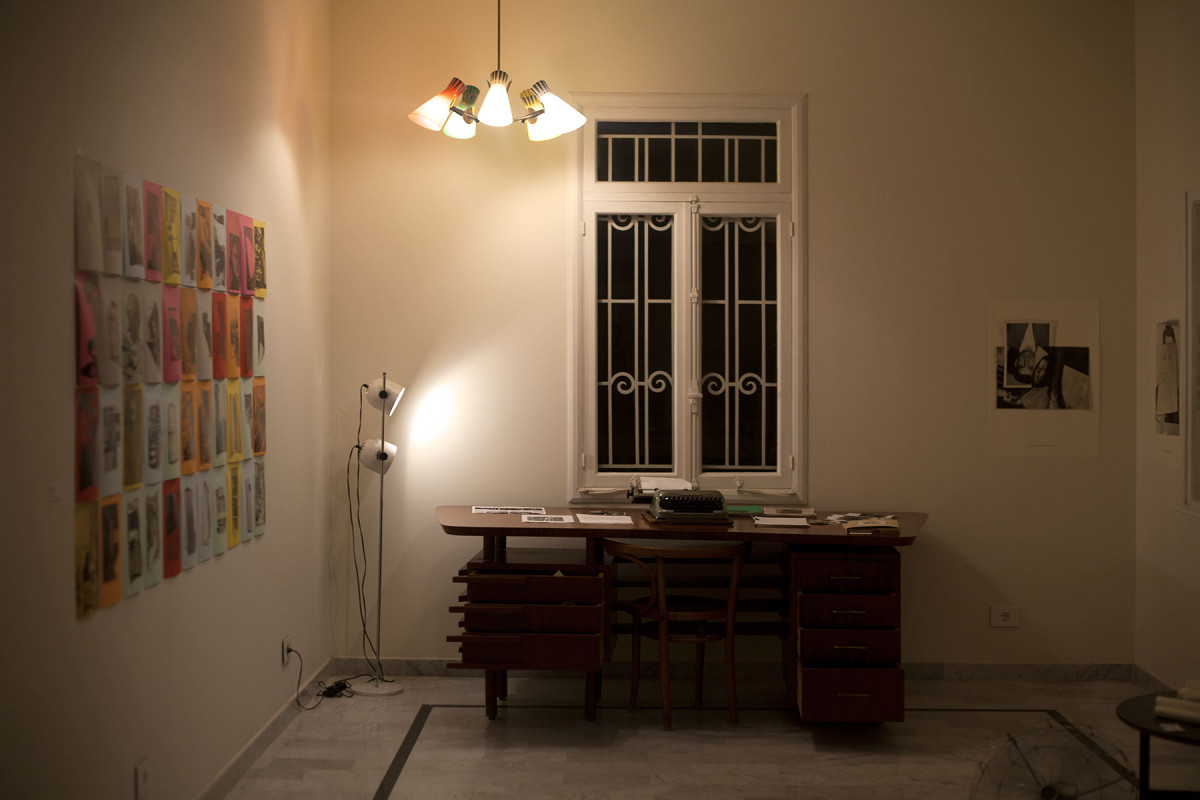
The process of researching a photographic collection is a subtle negotiation of understandings: the practice of acquiring and documenting photographs, the dialogue between digital and analogue format, the controlled environment of preservation, as well as conversation, accidents and mere chance encounters confronted with and within the space housing the collection.
Over the course of two weeks, London-based artist paula roush created work informed by her readings of the photographic collections at the Arab Image Foundation and her practice as an artist working with found photographs in both print and installation.
A talk by paula roush
The Arab Image Foundation
AIF Library: Zoghbi building, 4th floor 337, Gouraud Street Gemmayzeh
Thursday, July 2nd 2015
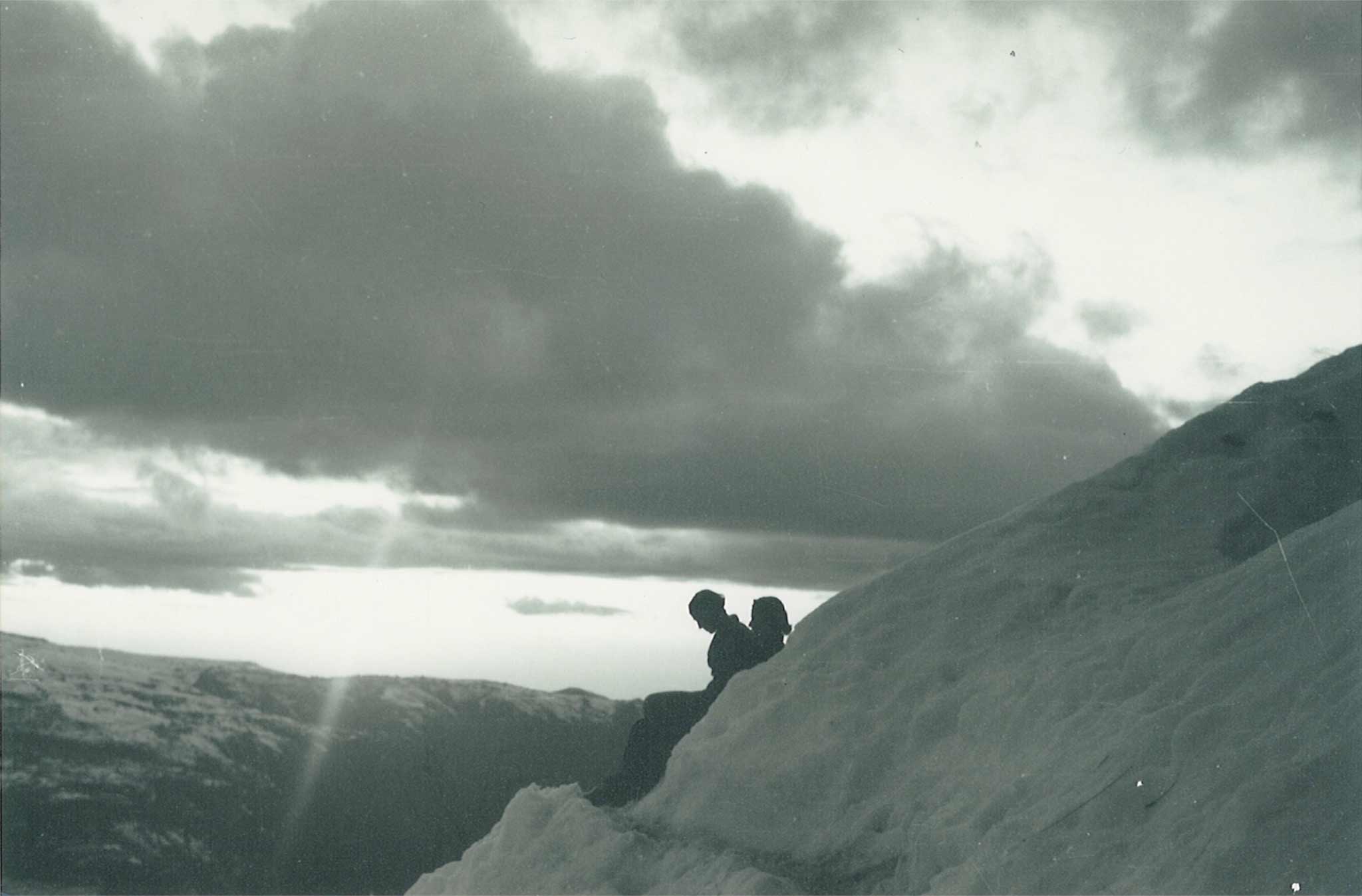
We're opening The Arab Image Foundation for a meeting on Thursday, July 2nd at 6:30 pm.
We titled it “super-private,” in reference to some boundaries that are sometimes felt by those of us dealing with other people's photographs. Over the course of two weeks I have been creating work informed by my readings of the photographic collections at the Arab Image Foundation and my practice as an artist working with found photographs in both print and installation.
The process of researching a photographic collection is a subtle negotiation of understandings: the practice of acquiring and documenting photographs, the dialogue between digital and analogue format, the controlled environment of preservation, as well as conversations, accidents, and mere chance encounters confronted with within the space housing the collection.
The AIF Library is at 337 Gouraud Street, Gemmayze, Beirut, Lebanon
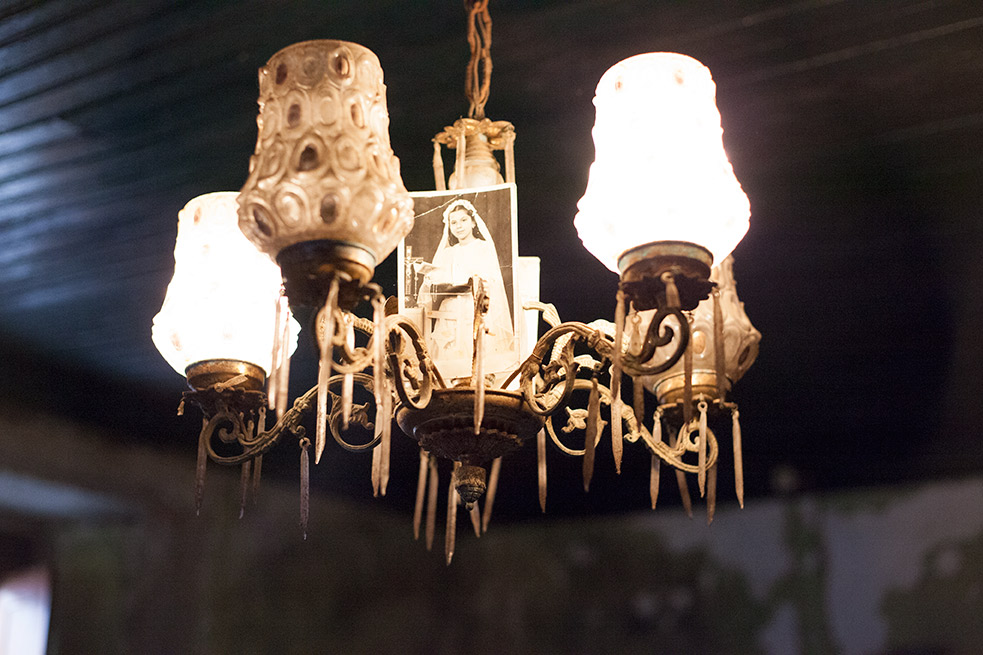
The Lisbon-based Feminist University has just launched the much anticipated ebook Feminist Routes: Challenging The Times [Percursos Feministas: Desafiar Os Tempos].
Walking and photographing we explored the poetics of everyday life, investigated the relationship of place to memory, uncovered fragments of the former hospital’s history, documented processes of urban transformation and essayed personal responses to the space. The final artwork is these photographs that mirror photobooks created in editorial workshops during which we folded and sewed photographs into paper-based constellations. The images have been installed in the centre’s walls and printed as a newspaper photowork
ACAVA commissioned the studio to work with St Charles 6th Form College Art and Photography students and their tutors to create a site-specific photographic project for St Charles Centre for Health and Wellbeing in Ladbroke Grove area, West London.
first workshop: photographic research
In the first workshop we started by looking at photobooks and photozines that engage with sites/ places / spaces and debated what site-specific photographic work can do:
- explore poetics of the everyday in the area- things that are not necessarily noticed but are part of day to day life
- investigate relationship of space to memory
- document urban transformation
- uncover fragments of historical urban landscape
- represent feelings, emotional response to the space
- research a specific site through walking, drifting, getting lost
Photozines are a very tangible way to work in response to a place. Its immediacy allow for a quick representation of a subject or idea; and they can be easily designed and printed with a home printer and photocopier. We looked at: Lucinda Smart's Let me take you by the hand, a photonewspaper work, Adam Murray's Winterthur photozine ,and our photobookzine Paintball Field, examples of photoworks that resulted from spending time photographing a place and sequencing the photographic series into a timeline that captures the lived experience of the place.
We also had our first site visit and used the photo cameras for an initial photo-documentation of the centre. The history of the site can be traced back to 1879 when Saint Marylebone Infirmary was built in Rackham Street, Ladbroke Grove, to support the sick poor serviced by the Saint Marylebone Workhouse. Renamed in 1930 as St. Charles Hospital, some of this background story can be uncovered at Peter Higginbotham's workhouses site.
editorial workshops: book dummies
These are the amazing first photobook dummies produced during the subsequent editorial workshops, experimenting with design, printing and bookbinding.
Views of some of the books created by Chloe, Monet, Amy, Eden, Sundus, Jack, Kavita, Dominika and Zainab.
PDF of the collective newspaper work here
colophon
Project by msdm/ paula roush for the St Charles Centre for Health and Wellbeing in North Kensington, West London. With St Charles College art students (fine arts, textiles and photography) and their tutors. Managed by Isabella Niven- ACAVA [Association for Cultural Advancement through Visual Art] in collaboration with St Charles College. With the support of Lorraine McGuinness, Meena Julien, Craig Wheatley and Melanie Rye. Funded by NHS West London Clinical Commissioning Group. Published by ACAVA.
Photobooks by Kavita Mahabir-Singh, Eden Hawkes, Dominika Ostrowska, Sundus Abubaker, Amy Valance John-Brown, Zainab Jode, Jack Sheppard, Chloé Tomasin,Monet Jean-Charles.
2-3>Kavita Mahabir-Singh | Ever Changing 22 Pages 29 X 20.5
4-5>Eden Hawkes | Between Bricks Of Nature 8 Pages 14.8 X 21 cm
6-7>Dominika Ostrowska | Serenity 16 Pages 21 X 14.5 cm
8-9>Sundus Abubaker | Nature 8 Pages 14.8 X21 cm
10-11>Amy Valance John-Brown | As Nature Unfolds...9 Pages 19 X 13 cm (171cm total)
12-13>Zainab Jode | 16 Pages 14.8 X 21 cm
14-15>Jack Sheppard | Aperture 10 Pages 19.7 X 29.7 cm
16-17>Chloé Tomasin | Sitting Down Brings Back Memories… 8 pages 18.5 x 12.5 cm (148 cm total)
18-19>Monet Jean-Charles | Isolation 16 pages 14.8 X21 cm
1-20> paula roush | where shall we wander 72 pages 21 x 29.7 cm
Permanent installation at St Charles Centre for Health & Wellbeing in North Kensington, West London, 2015
Fatal women and others as such: A visit to the surrealist museum through collage. Luisa Soares de Oliveira, Ipsilon Magazine, 2013
They are two artists who, as now and increasingly common place, living out of bounds, in this case in Great Britain: Maria lusitano and paula roush, who exhibit together since 2009, opted for professional reasons (a PhD for the first, a university lecturing job for the second) to leave the country, which does not mean to abandon the regular presentation of their work in Portuguese institutions. If Lusitano accustomed us to her work in video, always with a strong narrative component and anchored in personal or historical memories, from paula roush we knew her taste for the artist’s book, a practice that in the last two or three years, has come to interest more supporters among the younger generations of artists. In this exhibition, entitled Queer Paper Gardens, we find these two disciplines combined with the educational component that is now so present in the lives of the two artists: the show includes creative workshops for the public, who can experience the process of collage, the same that is at the roots of the work displayed here.
The room Cinzeiro 8 at the Museum of Electricity has the dimensions we usually associate with a gallery rather than a museum. Therefore the works, all on paper, based on images taken from some old illustrated magazine or photo albums of unknown provenance, when not ink drawings ink on paper, can be viewed with care, and even be the subject of an assembly where the parts overlap, pile and exhibit obsessively. Like a dream.
The comparison is not involuntary. Lusitano and roush sought illustrious precedents in the history of collage, namely Max Ernst and Valentine Penrose, two Surrealist artists who practiced collage in the creation of novels, and the association of unusual shapes and motifs to arouse the imagination, as it was dear to Breton followers. Max Ernst, firstly, since 1921 but especially since 1929, when he publishes La Femme 100 Tetes, created pieces where the female figure appears in the ambiguity of the stereotypes associated with the image of women by the bourgeois culture, both Eve and Lilith; this project would later develop in Une Semaine de Bonte, 1934, the work to which the artists refer specifically. As for Penrose, who was married to the British poet and painter of the same name, published (amongst others) Dons des Féminines in 1951, adopting the same kind of collage as Ernst but giving her work a feminist vision that was absent from his and the lives of the Surrealists of the times.
The artists’ collages on paper, as well as the video or the books that they show, emerge from this last work: after all, the film - video or not - comes from a fundamental process of editing that is no more than a collage of disparate sequences to obtain a significant end result. Images of women crystallized by cinema, revealing the double meaning as quoted above between the femme fatale and naive young woman, in a succession of double fast paced sequencing, stress the principle of surrealist collage, which is also enhanced by the presence of a collection of disparate chairs in ruin, where the viewer is implicitly invited to seat. In other situations, it is clearly personal photographs that were worked by artists with a view to obtaining that difficult opening to another world that Surrealism sought.
And not even a note of humor is missing, always present in any surrealist exhibition in the middle of the twentieth century: a fox teddy dressed in pants and jacket is sitting on the top of a table in the exposition. I sense the artists had fun creating these works. It is impossible not to see them with a smile, much more than with the surprise or scandal that their ancestors raised in the epoch in which they worked. As surrealist collage emerges from a specific historical timing. The project does not claim its belongings to a movement that had its epoch and its context, and is today irretrievable. Lusitano and roush know that. Their proposal is a different one: to update the freedom of artistic creation and practiced by Ernst and Penrose, a freedom that passed also by the choice of a technique that did not belong to the illustrious painting or sculpture. Moreover, the book as a means of artistic diffusion was also far from the weight of the museum or the art gallery. Interestingly, in market terms, things have not changed that much in the almost hundred years that separate us from Max Ernst; neither the work on paper, nor the video art or the artist’s book, reach the price values of other techniques. What has really changed, or at least has started to change significantly, is the status of women, and the increasing distance that separates us women from the original images that inspired the artists.
a journal of one’s own, a text dedicated to mary, margaret, valentine, alice, paula, maria and all the other women
by cristina duarte, in Queer paper gardens or The wildlife of symbols Vol. V Fundacao EDP 2013
tuesday, 30th of april 2013
two european capitals, the same exhibition1... i don’t know, it is strange to think through with this distance between them. the closer we get to reality, the more out of focus it gets? lets’s get abstract then. first abstraction: to forget capital letters. second abstraction: to forget the new orthographic agreement:2 i move on, freer, with the dictionary of feminist critique by my side: «being a concept in constant formation (...) queer allows a unique conceptual potential to define a position, necessarily unstable, of contestation of fixed identities.”3
just as the root of the word queer (across, diagonally or transverse), the root of the works inspiring this project - queer paper gardens - is indo-european. a voyage, the discovery of the other, enables one to go far beyond the private sphere and the borders of the national territory. mary delany, that never travelled but indirectly, was the inventor of collage, in a georgian century when artistic practices (and landscape arts), done by women started by being developed in the private space of the house. such as the drawing room, – the so called “room of one’s own” of virginia woolf,4 even though in her case, this is associated to literature and the activity of a writer in the second decade of the twentieth century. let’s then travel in time and space, in order to exchange gifts in the orient...play.
wednesday, 1st of may 2013
today i dive in exchanging gifts in the orient,5 a collage film (video HD, 35’, colour, 2012), that is itself a visual essay about artists – a journey through writing, drawing, and painting from the last 200 years – out of someone else’s fiction, and these, all together, writing an additional chapter in women’s history.
i imagine a new pair in my internal dialogue. mary delany (1700-1788) and mary wollstonecraft6 (1759-1797). maybe they never met, or did they? the latter is the mother of mary w. shelley, the author of frankenstein, which connects us (in)directly to the matter that brings me here: the collage, done by paula roush and maria lusitano, through a visual and interdisciplinary voyage, around the universes of gothic, surrealism, poetry and gender, with the artists searching for a new outlook over the territories and forms of representation, of the (non) normative worlds of women, through the arts.
Over a blue tainted background, a translucent black veil covers the first film’s character to appear on screen; the reality seen inside out, the subject of the one that gazes, is veiled. from the outside, the one who gazes (into the veil) has a vision that more then veiled, is mysterious, as if (under) cover. time to know the first woman in this film, valentine penrose. female hands turn the pages in one of the volumes that contain the visual narrative that encloses the history of women in the nineteenth and twentieth centuries, and that reminds me once more of virginia and orlando,7magnificent masterpiece, where another time journey across genders takes place.
thursday, 2nd of may 2013
travelling was part of valentine penrose’s life, a surrealist poet that transposed her journey to the collage book dons des féminines. the artist published what is also a «queer biographical document, and a visual critique of the fragmented representation of women by male surrealist artists”. 8
maria and paula’s film is in itself a journey about several lives, narrated through a visual history with a lyricism of its own, just as valentine’s own book. The film’s voice-over provided by artist marie josianne agossou, interprets a narration that summons the lives of various women, and the representations of these through the arts in context. valentine and mary delany are evoked as well various other women, exalted in this work of archive, composition and feminist script.
we peek here at a certain cinema paradiso, at the service of the arts, through the chosen excerpts of films such as rebecca, the hunger, jane eyre, and daughters of darkness. this put us in tune with the themes approached by the artists in their video-collage, that refer to the cut-up, as well as to photography and drawing, in a narrative strategy that projects issues of gender, body representation, and the role -play involved in women’s performance throughout history. and it conjures the horror women were (and are) subjected to: the horror is displayed in jane eyre, in the bad girl of sleeping beauty, or in the madness of rebecca’s housekeeper.
lastly, the absence of a gaze (of women upon themselves and their surroundings, transforming the public space in their natural landscape) is compensated through the gothic aesthetic, evoked in the video language chosen by paula and maria, as gleaners of images – that let us delight in the victorian visual style, revisited today by the steam punk aesthetics.
friday, 3rd of May2013
«may i start?»9. how to write about these 21 minutes of quasi-surrealism, that takes us throughout the history of collage, with its starting point in three objects: max ernst’s collage novel a week of goodness, valentine penrose’s collage-poem dons des féminines and mary delany’ biography, the inventor of collage; we cross their universes and those of other women artists, guided by eunice gonçalves duarte performing multiple roles, as valentine did, creator of wide-ranging meanings, such as a woman in a red dress and tribal mask going on a safari, through exotic theatre/sceneries.
the universes available to us are once again of intersection, in double screen, and transport us poetically to the themes underlying delany’s masterpiece, flora delanica (1772-1782), navigating through what is apparently invisible, or absent. in these paper gardens there are no symbols of authority, but of transcendence, says the narrator, at a certain point.
cruising through the botanical garden of coimbra, the female character is immersed in a time machine. it is up to us, spectators, to make the cut, the selection and “reassembly” of what is more important to us, in this process of non-normative memory, that is open to many languages and queer identities. in these not so strange gardens, i review myself with shells in my eyes… feel free to talk.
saturday, 4th of May 2013
feminism must henceforth be viewed as a rapidly developing major critical ideology – by which I mean a comprehensive view of the world – in its own right.10
Undermining the Surrounding World
João Pinharanda, Museum of Electricity Lisbon 2013
This exhibition presents a real and imagined colloquium between the artists and their sources. Let us look at their real protagonists, whom we must immediately join.
Following previous experiences, begun in 1921 and systematised as visual novels from 1929 onwards, Max Ernst, a German established in Paris, connected from the mid-1910s to the avant-garde leading from Dada to Surrealism, edited in 1934 (in 7 chapters distributed in 5 volumes), Une Semaine de Bonté.
Valentine Penrose, a French poet, married from 1925 to Roland Penrose, whom she divorced in 1937, met and frequented the same milieu as Max Ernst, whose husband, the "introducer" of surrealism in Britain, was an intimate friend. In 1936, interested in Hinduism, she left for India where she lived with Alice Rahon Paalen, married to another German surrealist, Wolfgang Paalen. In 1951, again in England, and again living in the house of Roland Penrose and his new companion, the photographer Lee Miller, Valentine composes Dons des Féminines. Following the same meticulous technical solutions of Ernst's collages, she departs from his the surrealist imagination in search of a radical feminist vision.
Maria Lusitano, lives between Portugal, Sweden and Great Britain and develops her work (where video predominates) as narrativity about the modes of relationship of a female Fictional I with the different levels of History. paula roush, has lived in London for two decades, situates her field of work in the field of artist's books recovering the techniques of surrealist and pre-surrealist collage, enriching, with this cross-language, the universe of feminist intervention that guides her. It is they who prolong Penrose's dialogue with Ernst, deepening its languages and themes, reviewing it critically, signaling the political place of contemporary feminist question, including us as a global and not merely an individual entity.
The narrative and seductive fluency of the video (built in the same way as the collage) or the invitation to the formation of the spectators in creative work sessions are essential pieces of continuity and renewal of the initial legacy. Leading us to "the pure working of thought" (André Breton) and the "systematic estrangement" of the Self, but without the illusion that this dream-field, this "alchemy of the visual image" (Max Ernst) is something that exists outside the History, ideology or position of the genres, wish to give a new meaning to Breton's program by presenting the first collages of Ernst in 1921: "to use the surrounding world to undermine the surrounding world."
Minar o mundo circundante
João Pinharanda, Museu da Eletricidade Lisboa 2013
Estabelece-se nesta exposição um colóquio, real e imaginado, entre as artistas e as suas fontes. Vejamos os seus protagonistas reais, aos quais devemos, imediatamente, juntar-nos.
Na sequência de experiências anteriores, iniciadas em 1921 e sistematizadas como romances visuais a partir de 1929, Max Ernst, alemão estabelecido em Paris, ligado desde meados da década de 10 às vanguardas que conduziram do Dada ao Surrealismo, editou em 1934 (em 7 capítulos distribuídos por 5 volumes), Une Semaine de Bonté.
Valentine Penrose, poeta francesa, casada desde 1925 com Roland Penrose, de quem se divorciou en 1937, conheceu e frequentou os mesmos meios de Max Ernst, de quem o marido, “introdutor” do surrealismo na Grã-Bretanha, era amigo intímo. Em 1936, interessada pelo hinduísmo, partiu para a Índia onde viveu com Alice Rahon Paalen, casada com outro surrealista alemão, Wolfgang Paalen. Em 1951, de novo em Inglaterra, e de novo vivendo na casa de Roland Penrose e da sua nova companheira, a fotógrafa Lee Miller, Valentine compõe Dons des Féminines. Seguindo as mesmas minuciosas soluções técnicas das colagens de Ernst, dele se afasta pelo modo como coloca a vertigem da imaginação surrealista ao serviço de uma visão feminista radical.
Maria Lusitano, vive entre Portugal, a Suécia e a Grã-Bretenha e desenvolve a sua obra (onde predomina o vídeo) como narratividade sobre os modos de relacionamento de um Eu ficcional feminino com os diferentes níveis da História. paula roush, vive em Londres desde há duas décadas, situa o seu campo de trabalho no domínio da construção de livros de artista recuperando as técnicas da colagem surrealista e pré-surrealista, enriquecendo, com esse cruzamento de linguagens, o universo da intervenção feminista que a orienta. São elas que prolongam o diálogo de Penrose com Ernst, aprofundando-o no domínio das linguagens e dos temas, revendo-o criticamente, sinalizando o lugar político da questão feminista nos dias de hoje, nele nos incluindo como entidade global e não meramente individual.
A fluência narrativa e sedutora do vídeo (construído sob os mesmos moldes da colagem) ou o convite à formação dos espectadores, em sessões de trabalho criativo, são peças essenciais da continuidade e renovação do legado inicial. Conduzindo-nos “ao funcionamento puro do pensamento” (André Breton) e ao “estranhamento sistemático” do Eu, mas sem a ilusão de que esse campo onírico, essa “alquimia da imagem visual” (Max Ernst) seja algo que exista fora da história, da ideologia ou da (o)posição dos géneros, desejam dar um novo significado ao programa de Breton ao apresentar as primeiras colagens de Ernst, em 1921: “servir-se do mundo circundante para minar o mundo circundante”.
